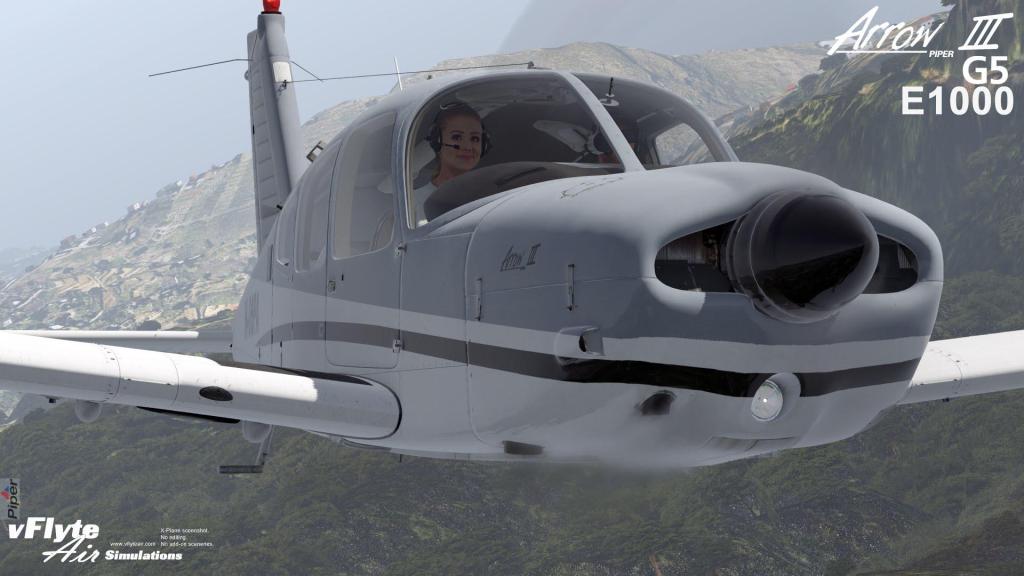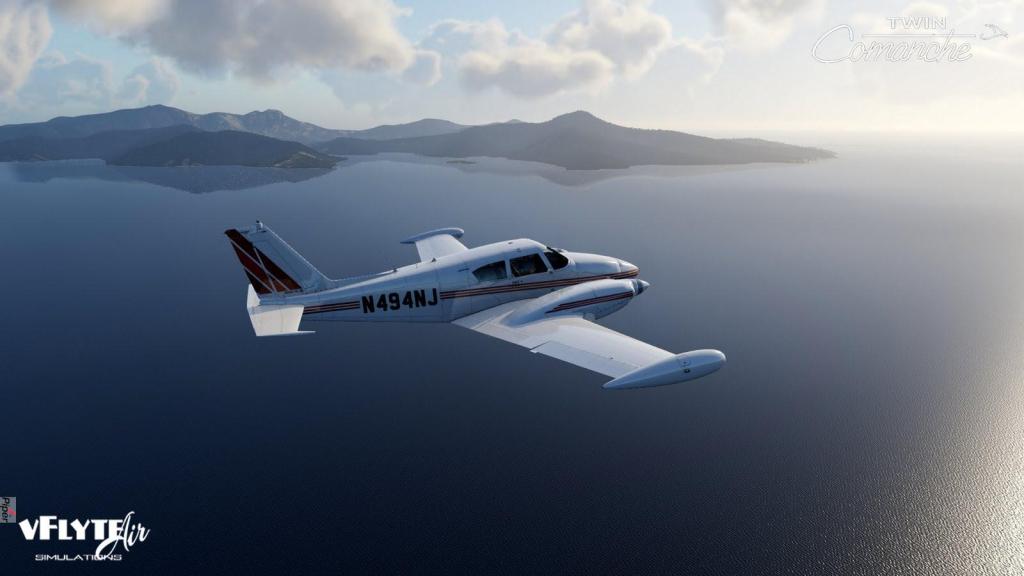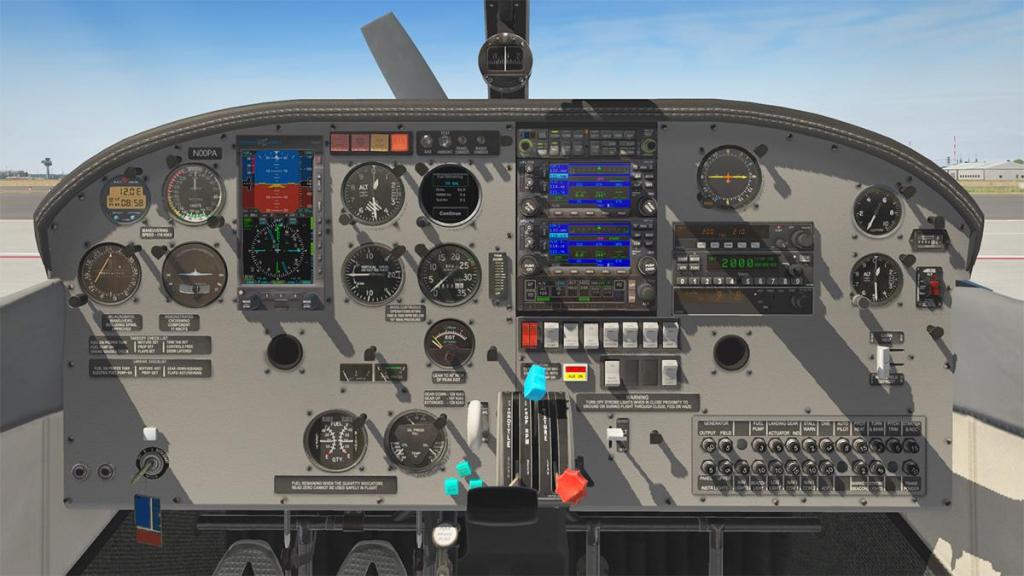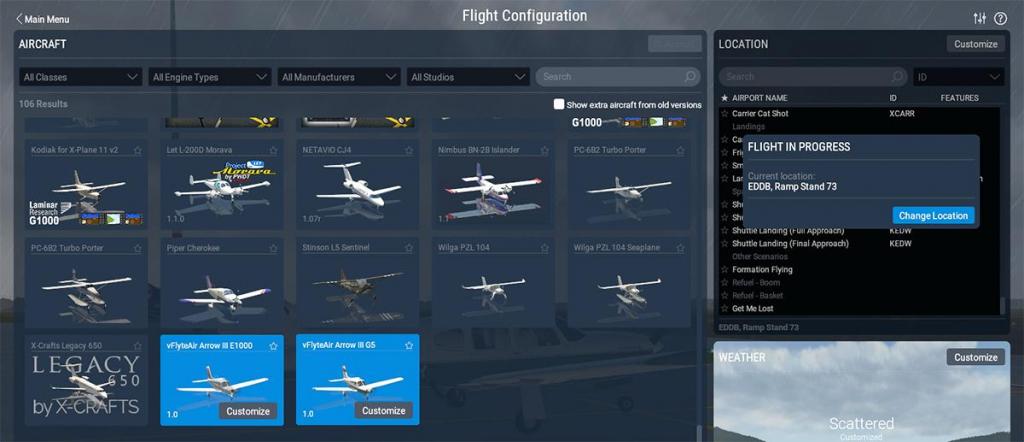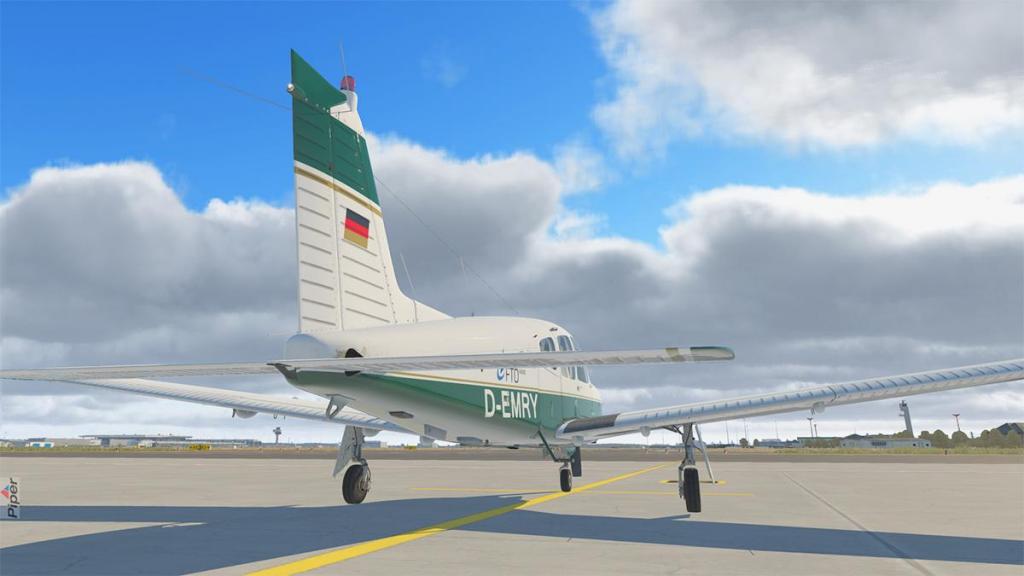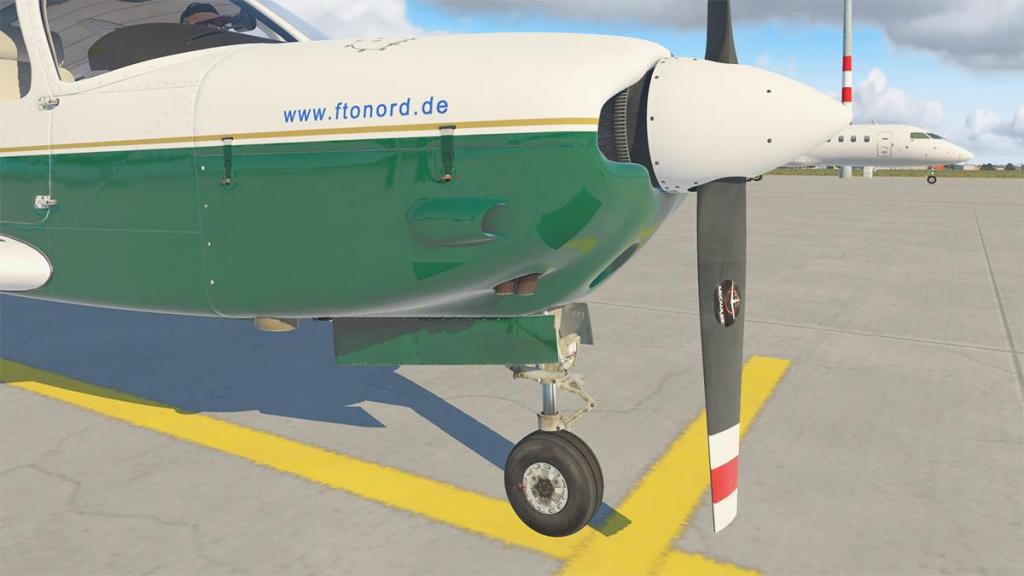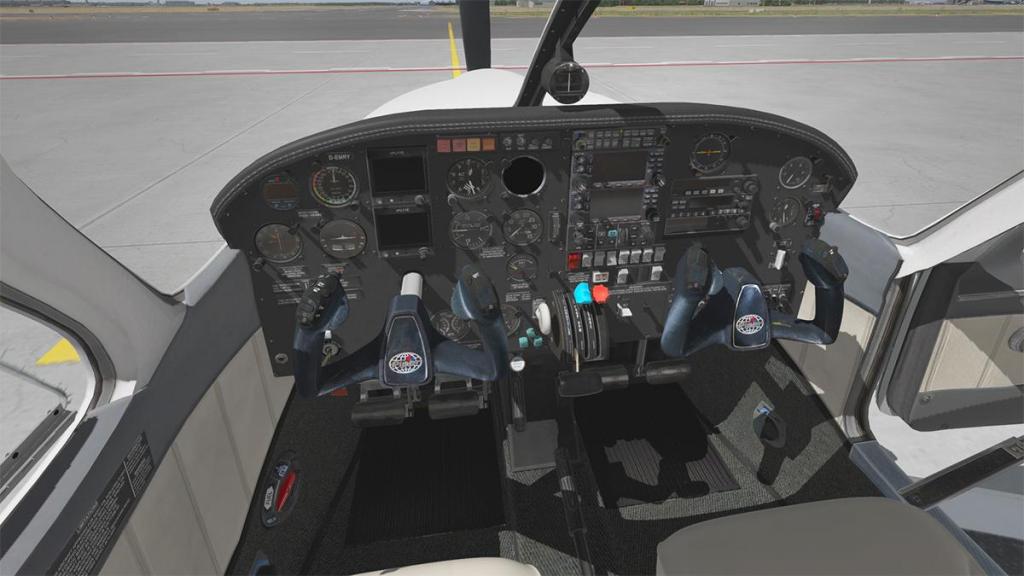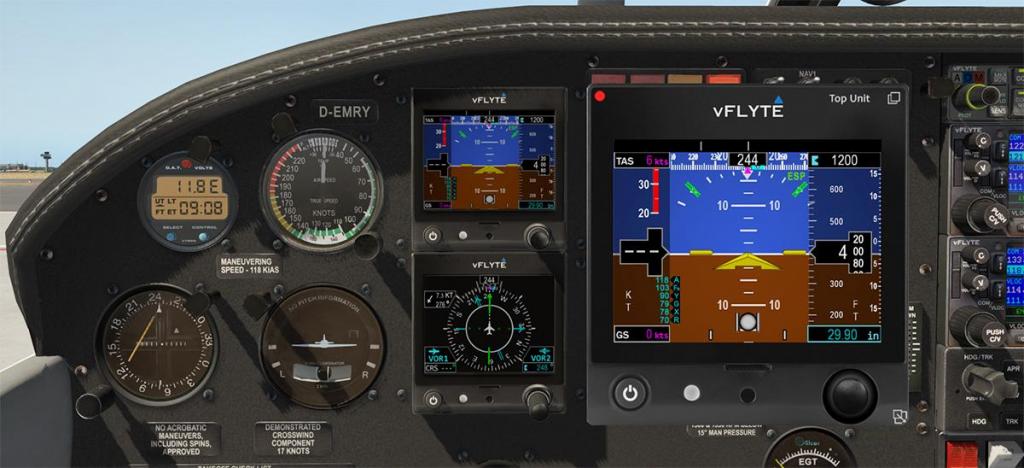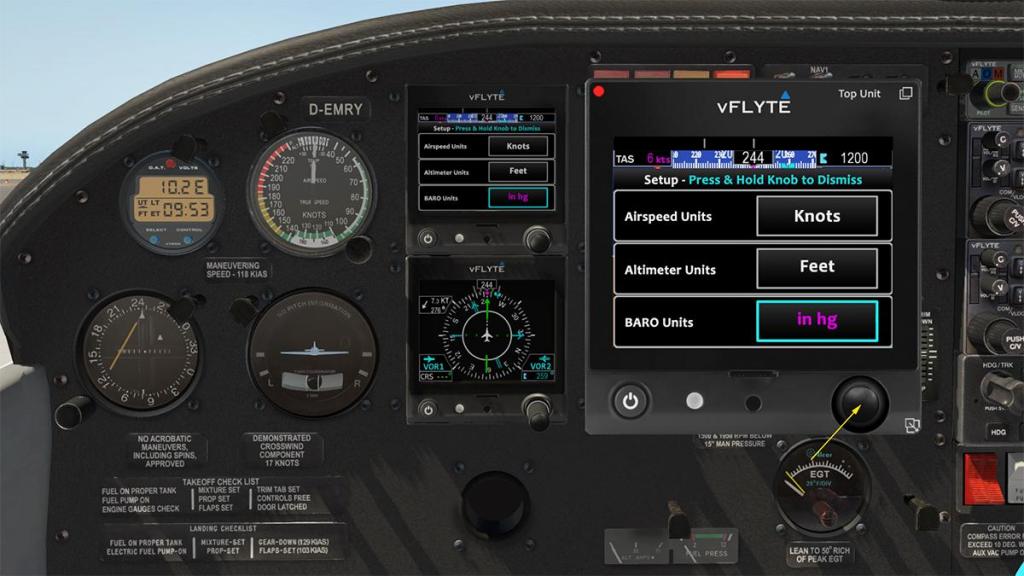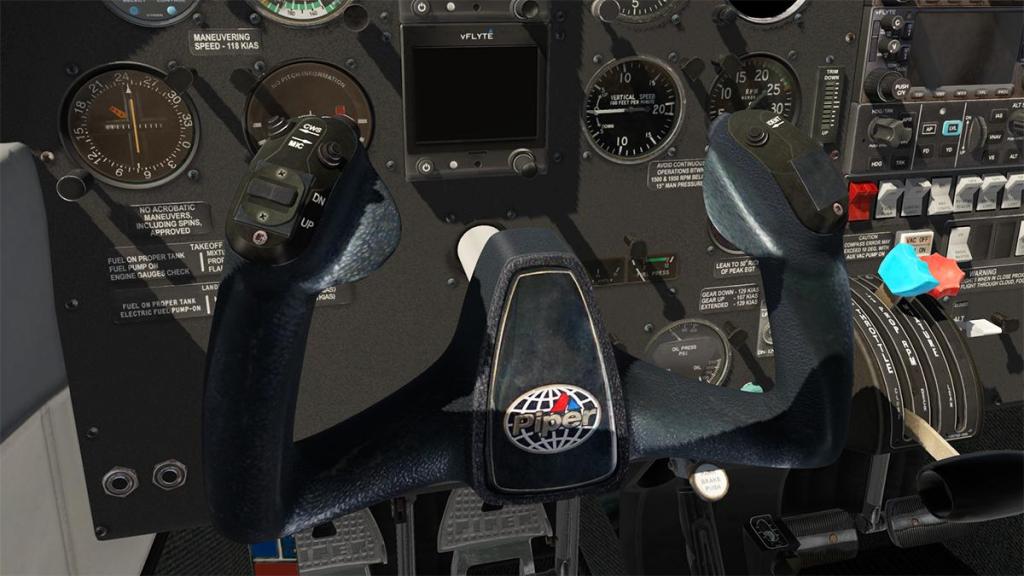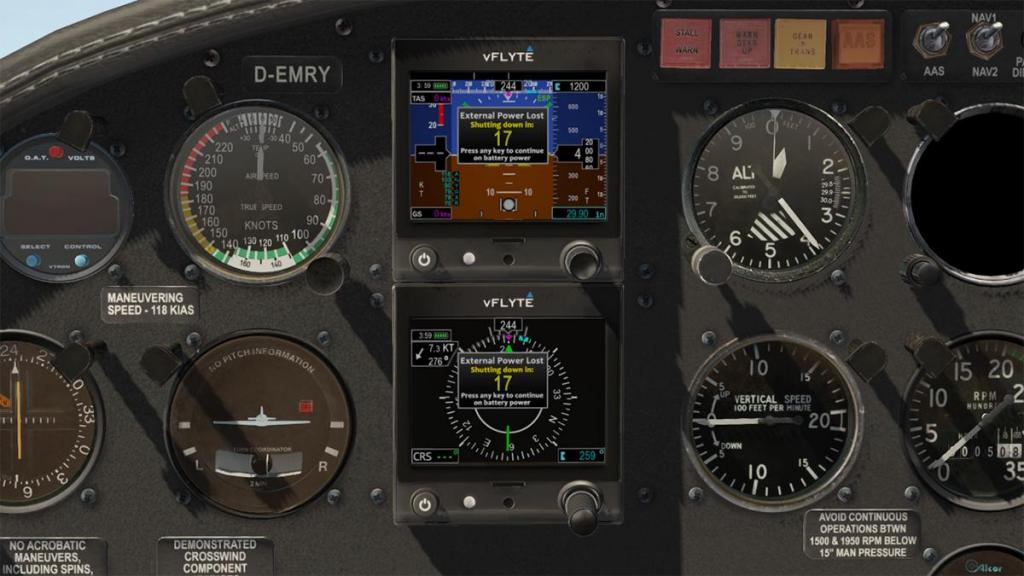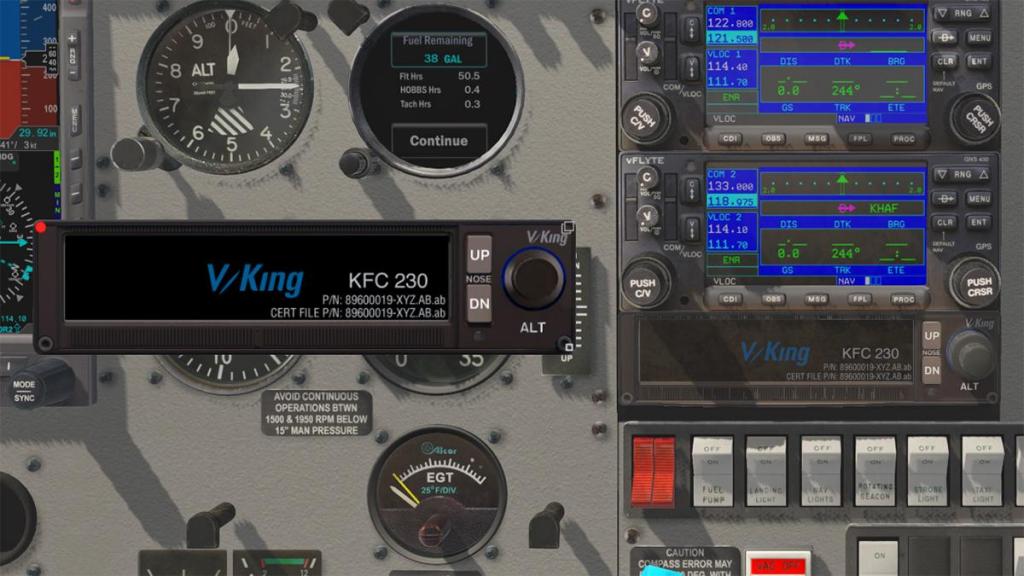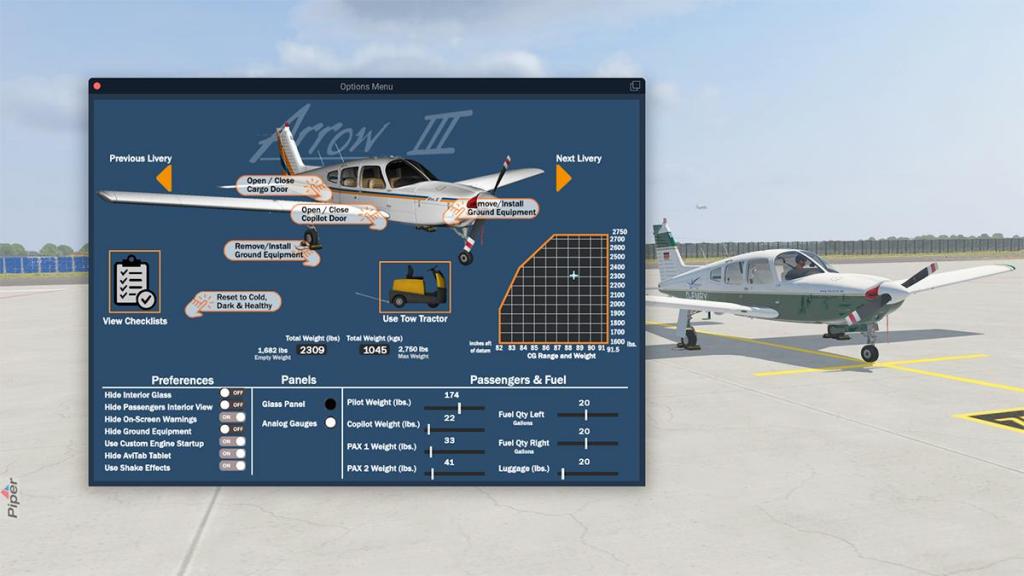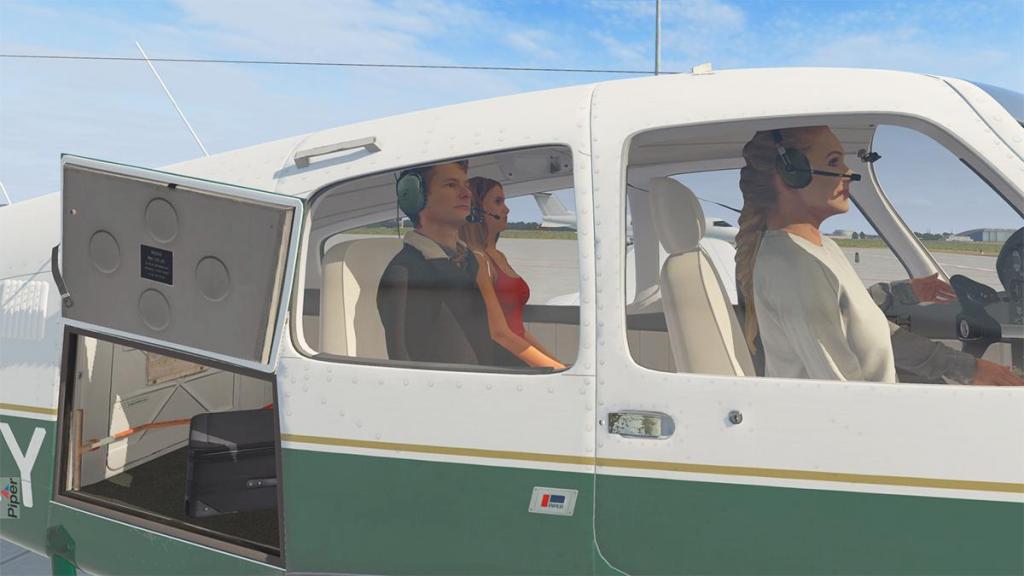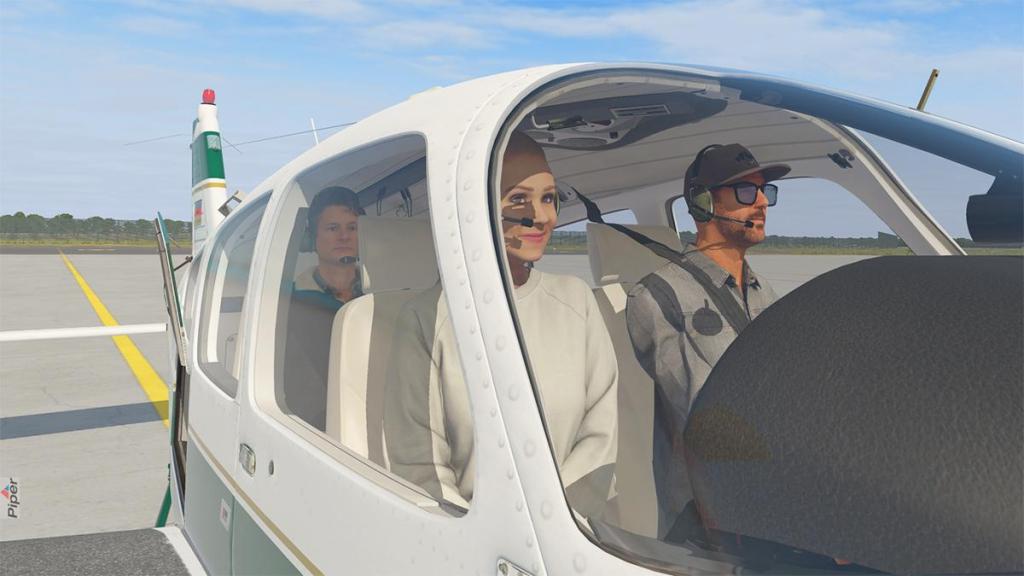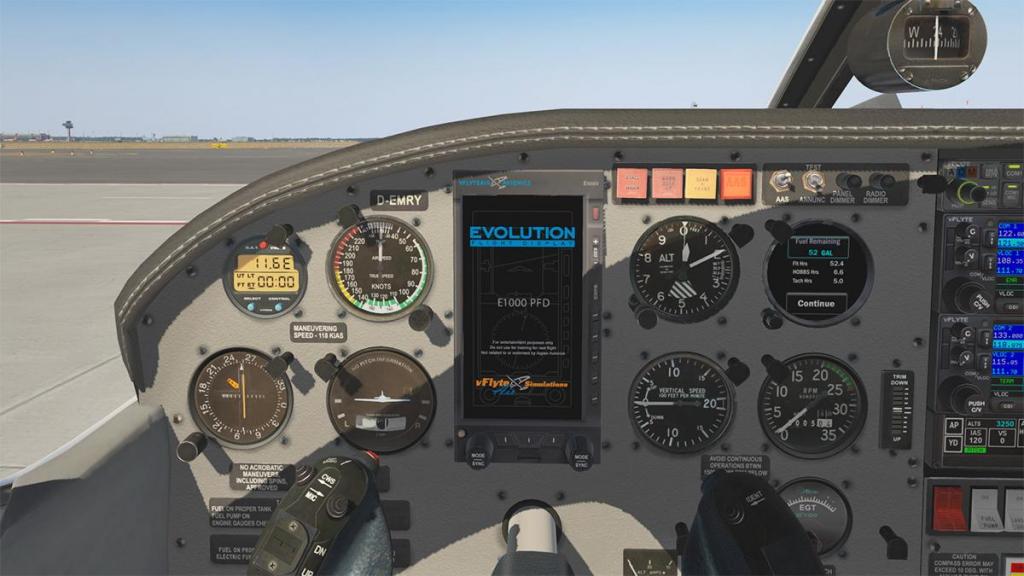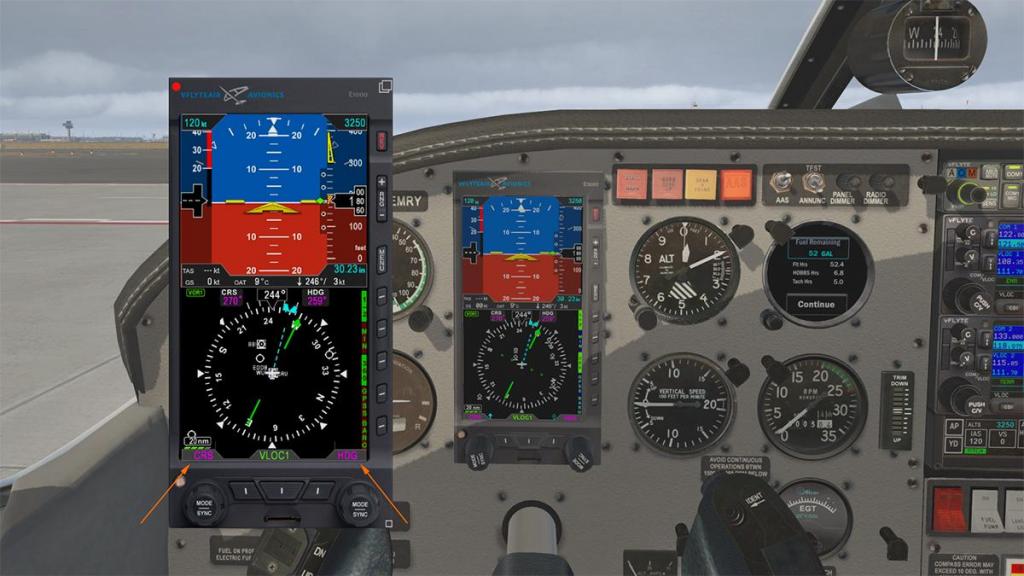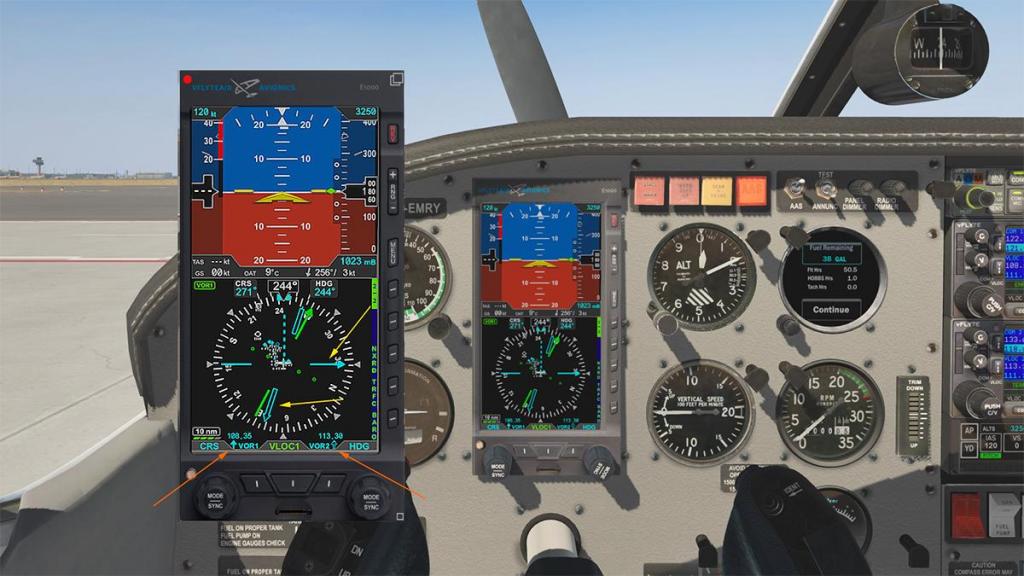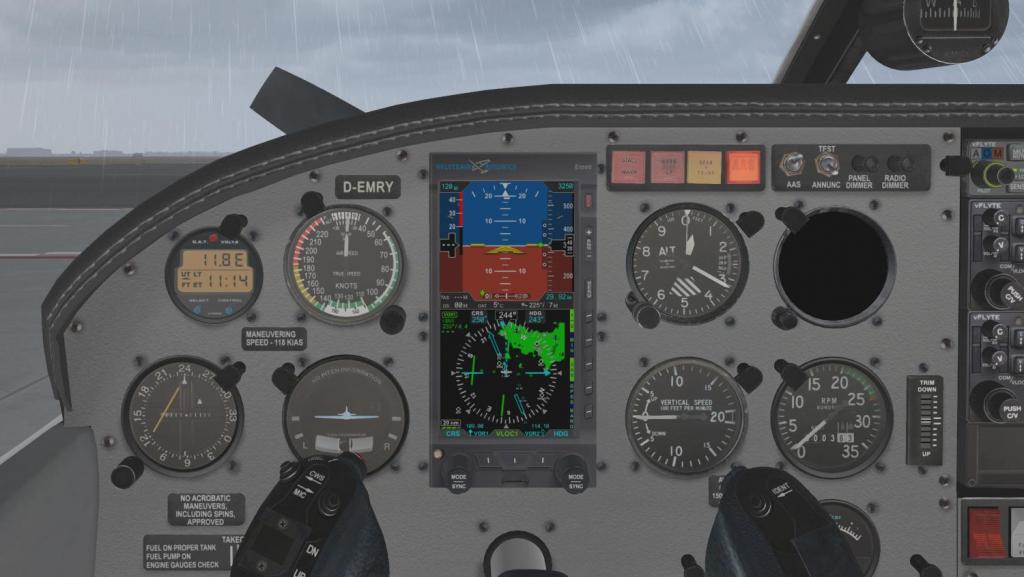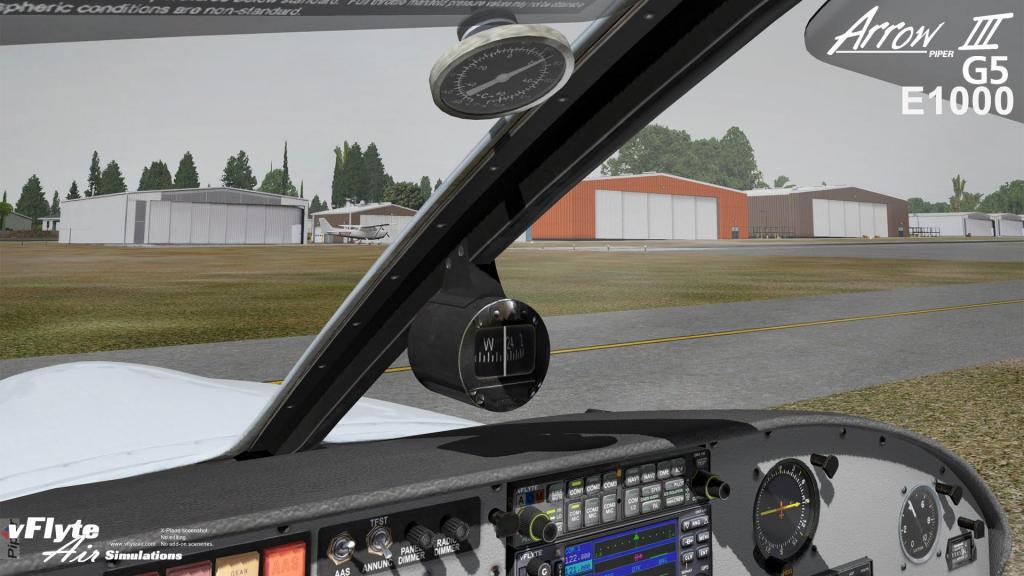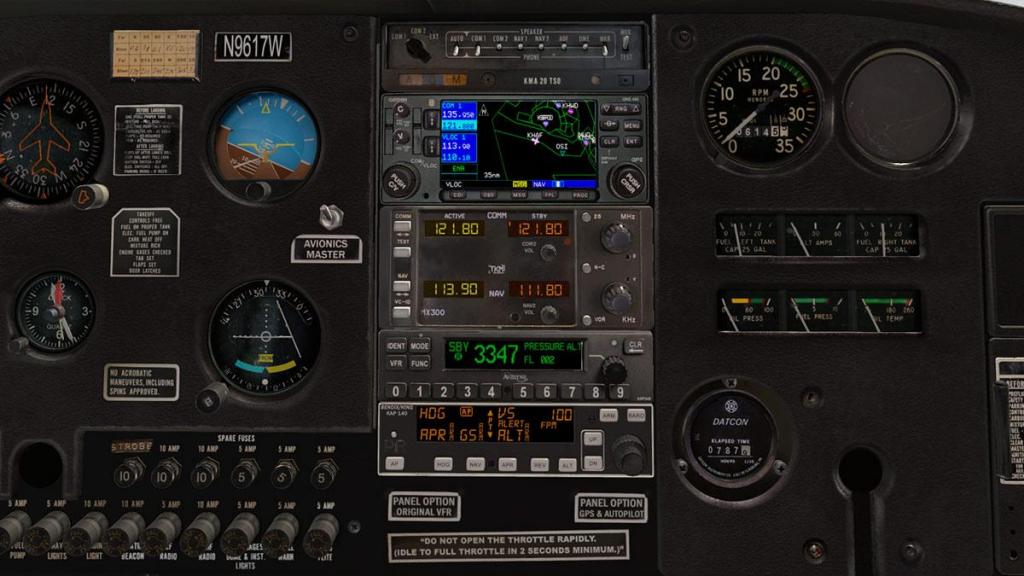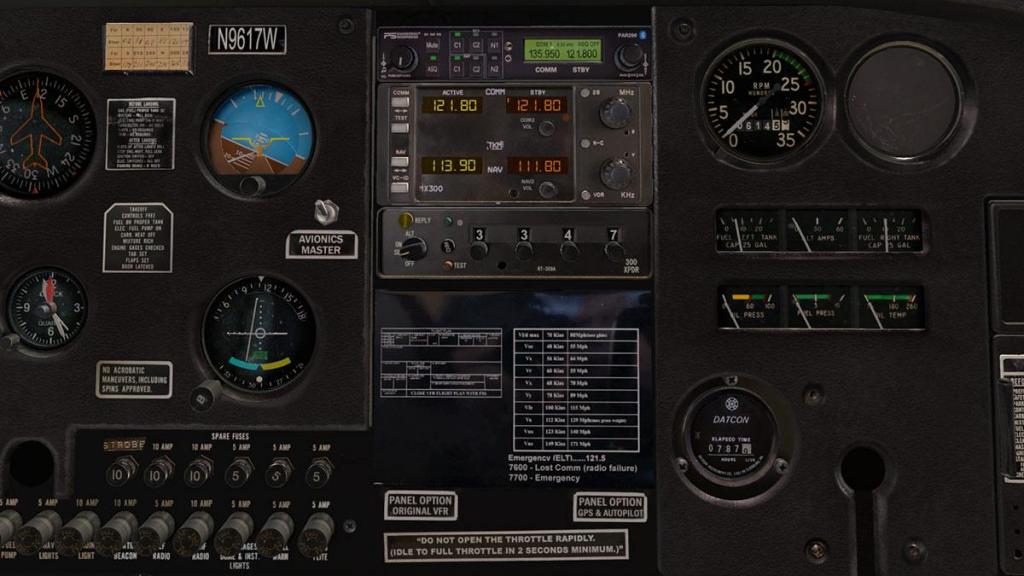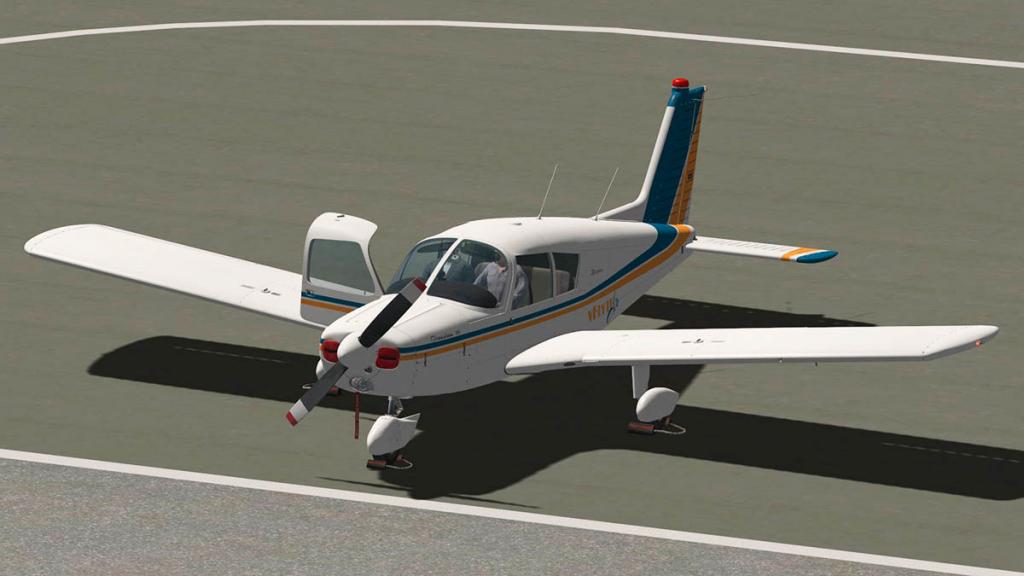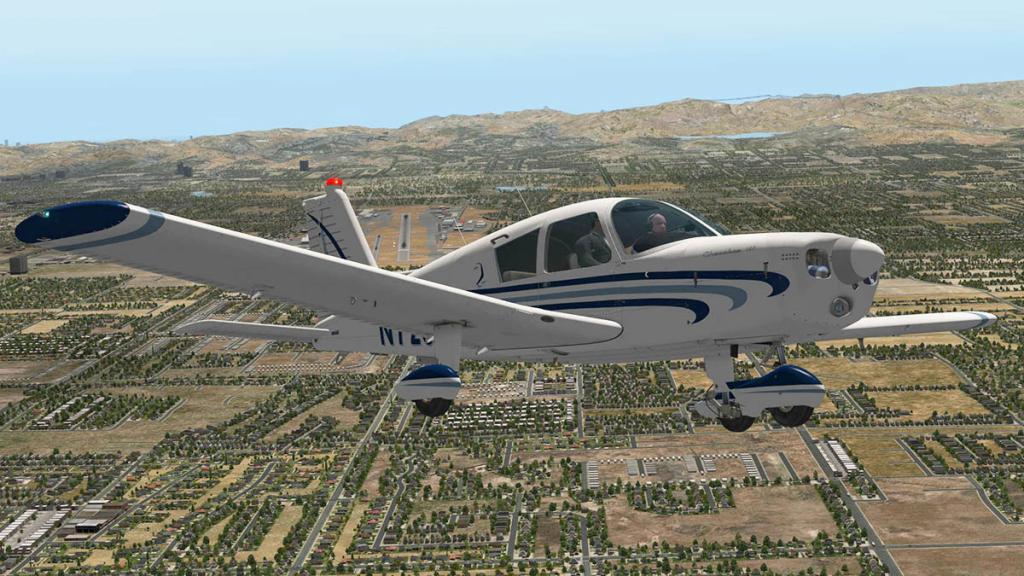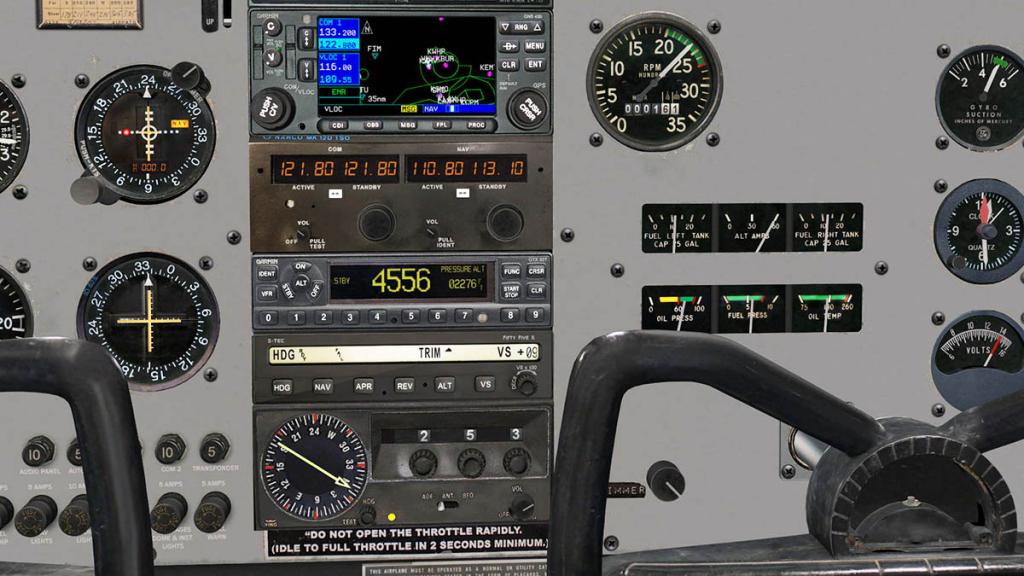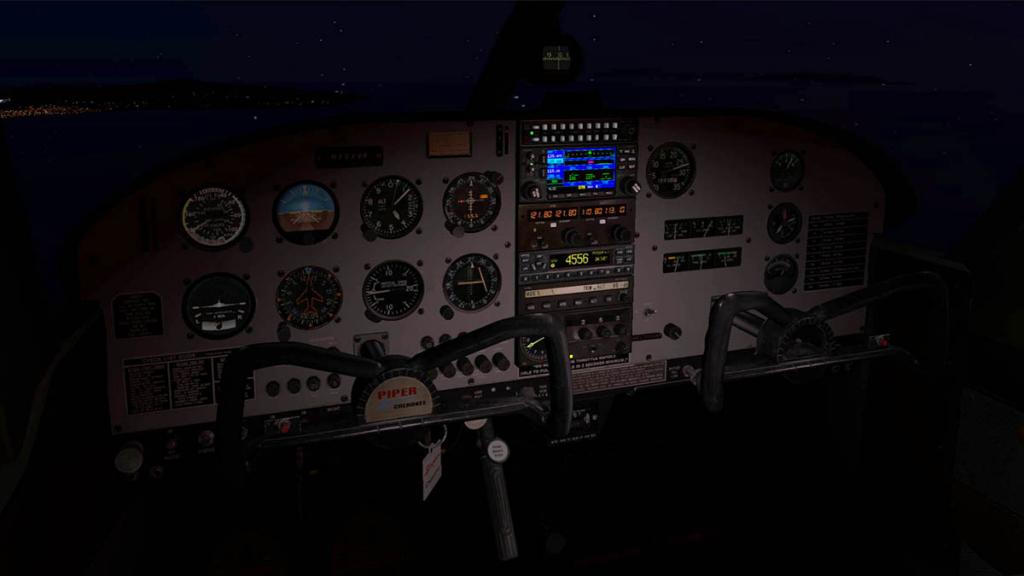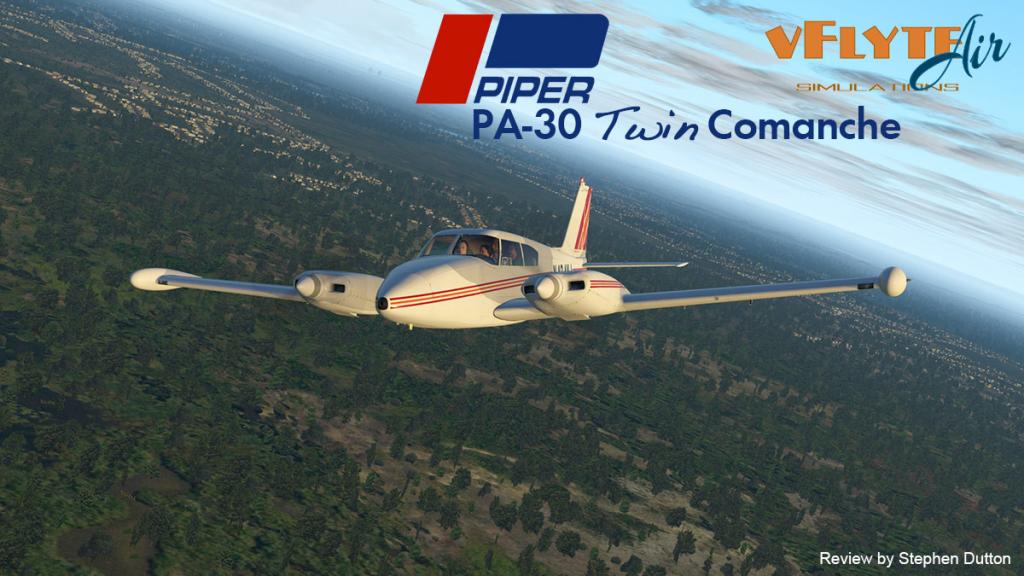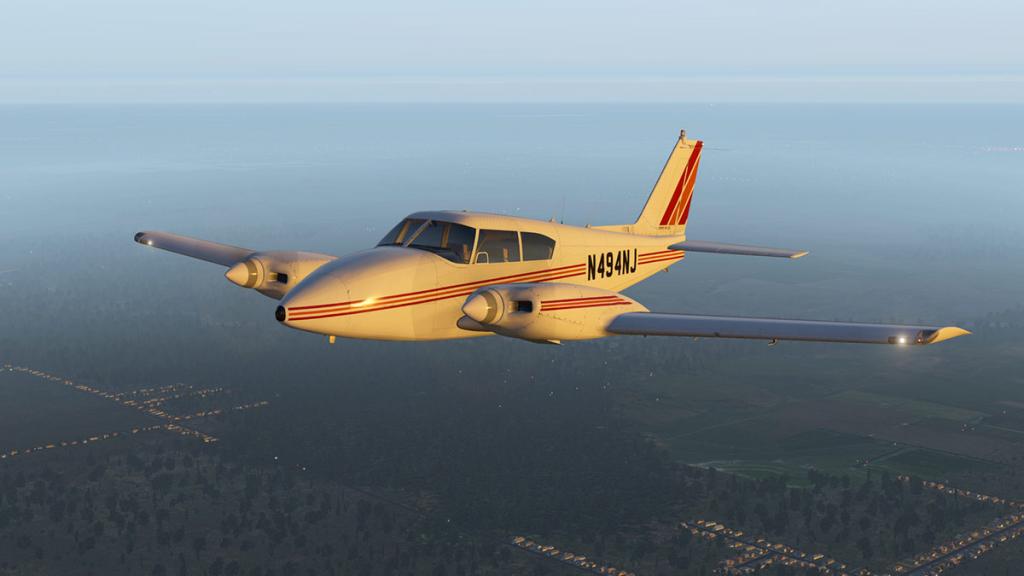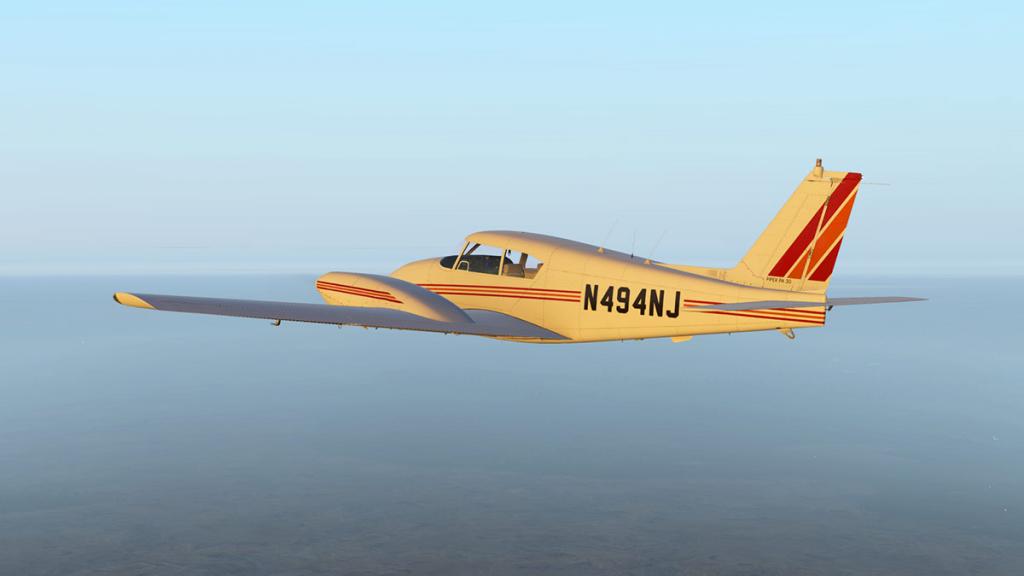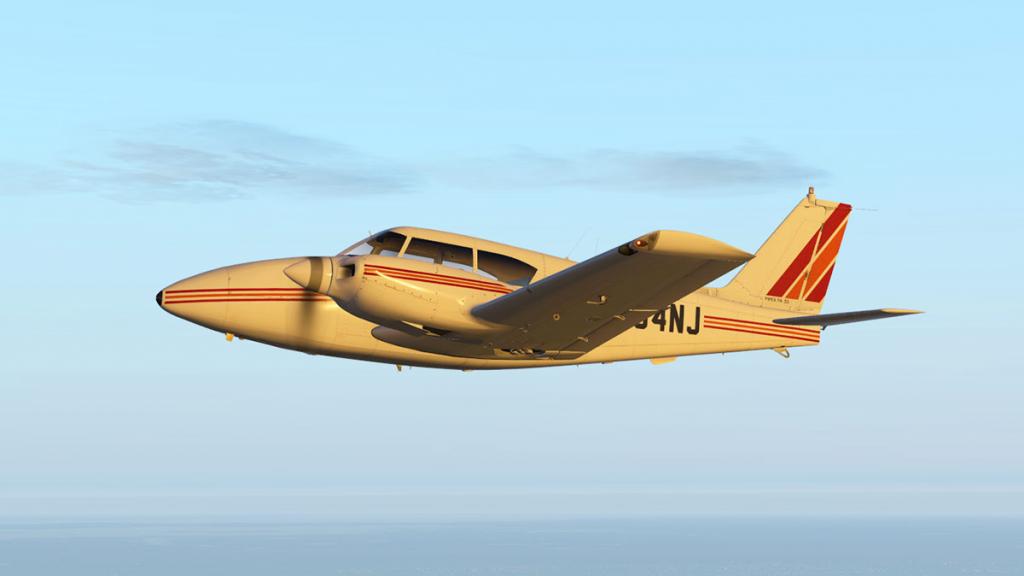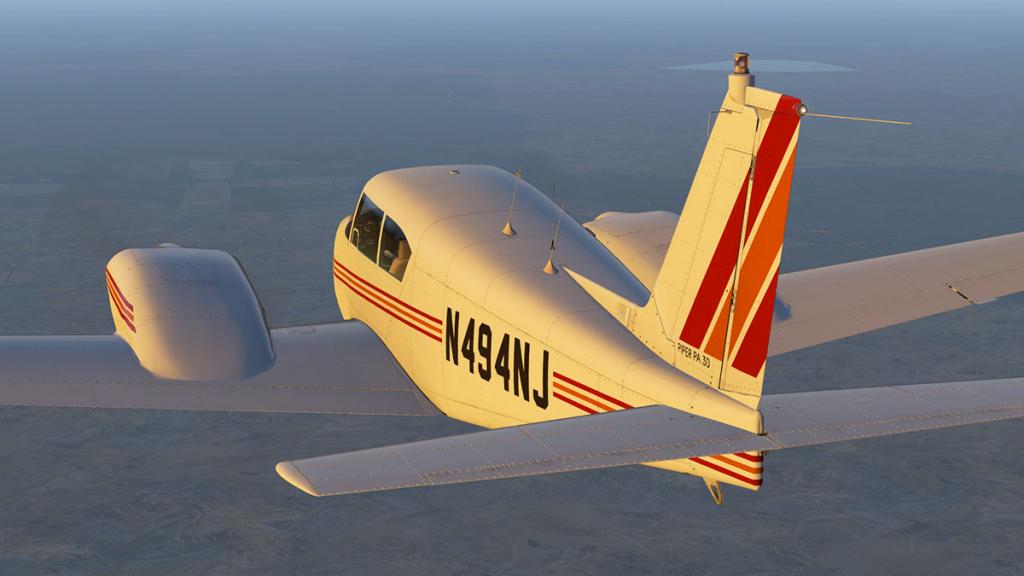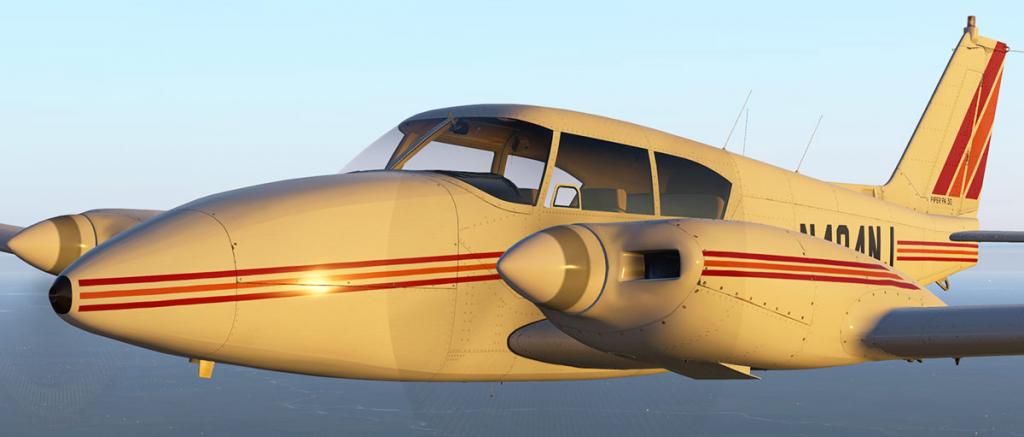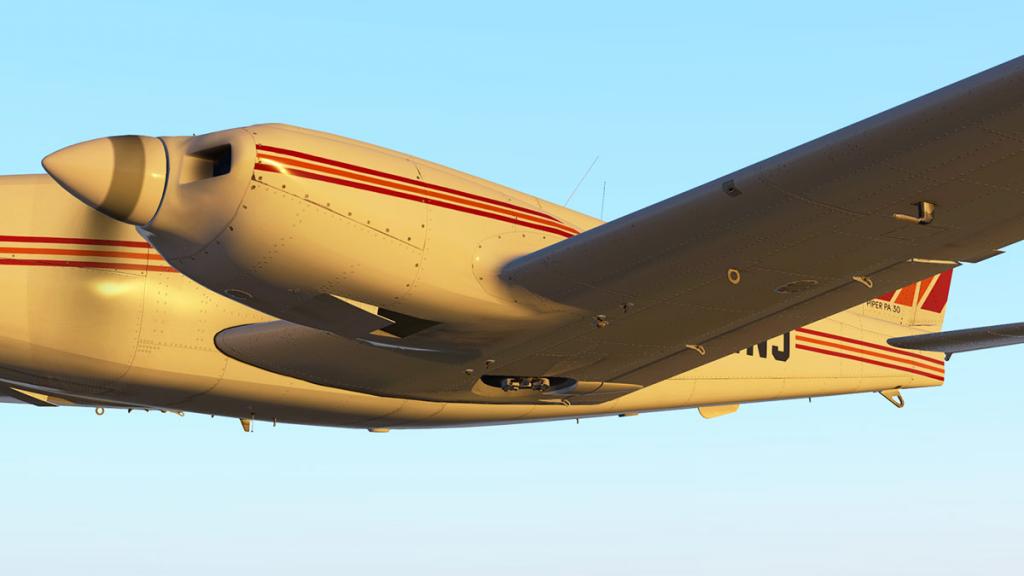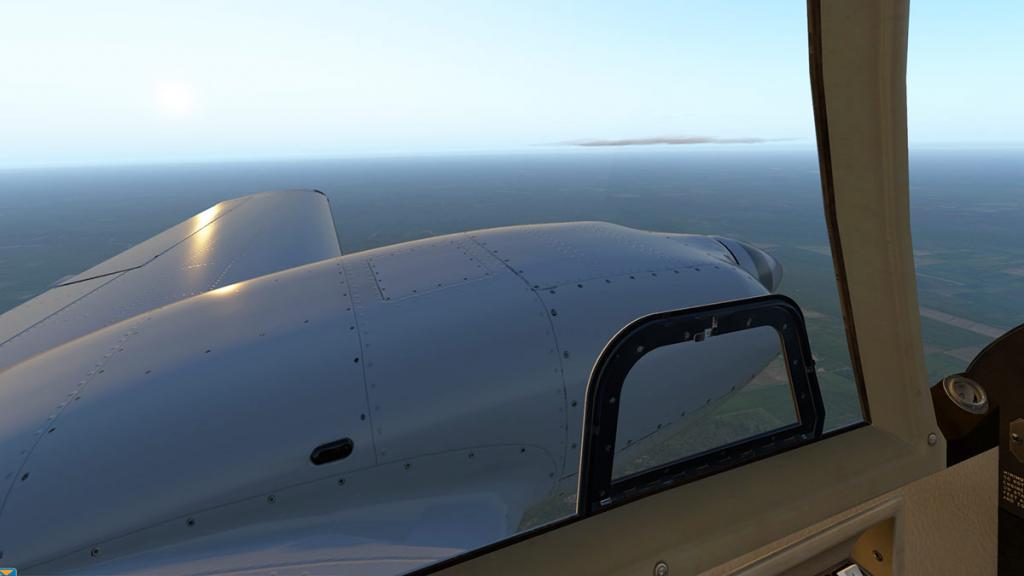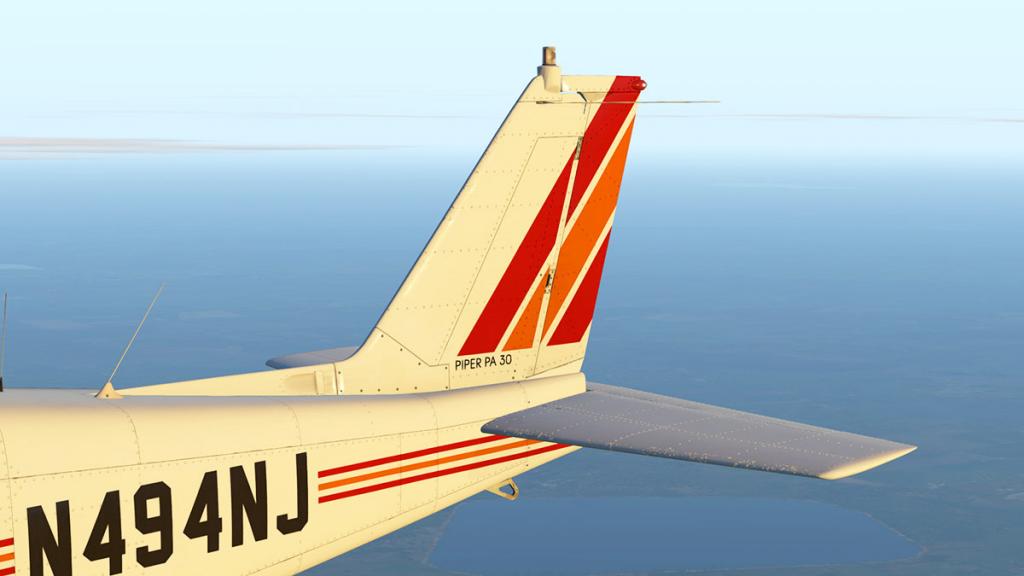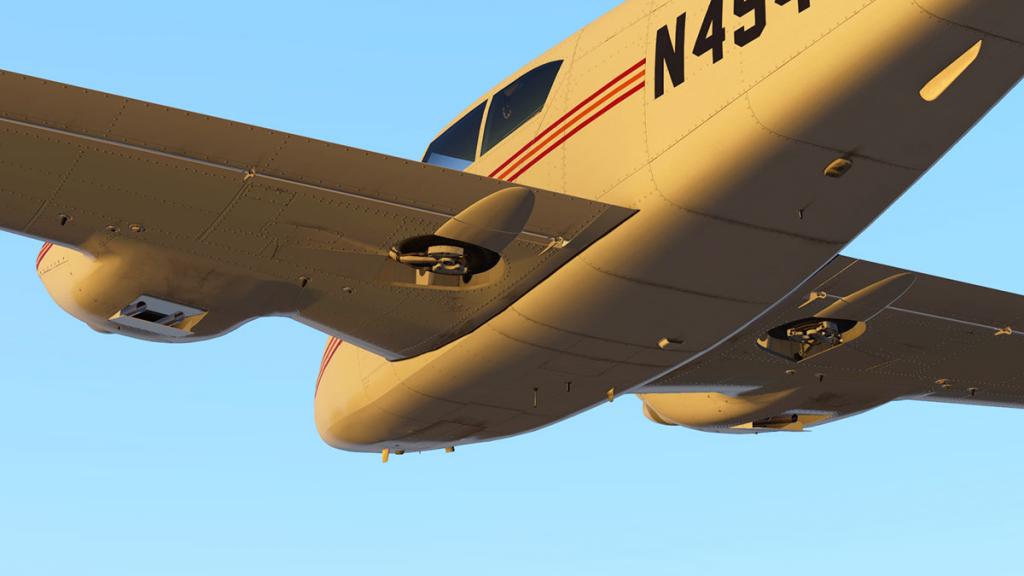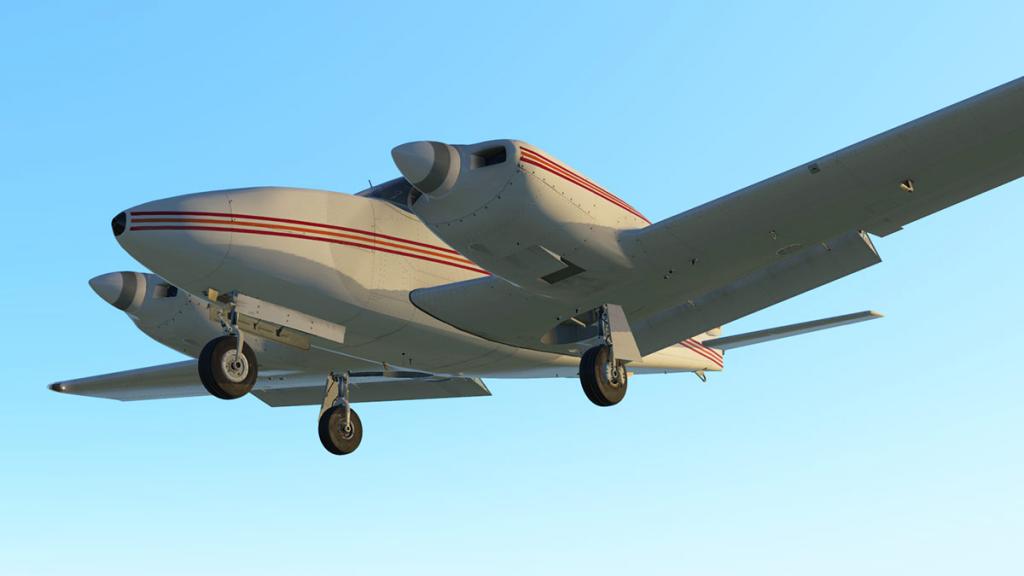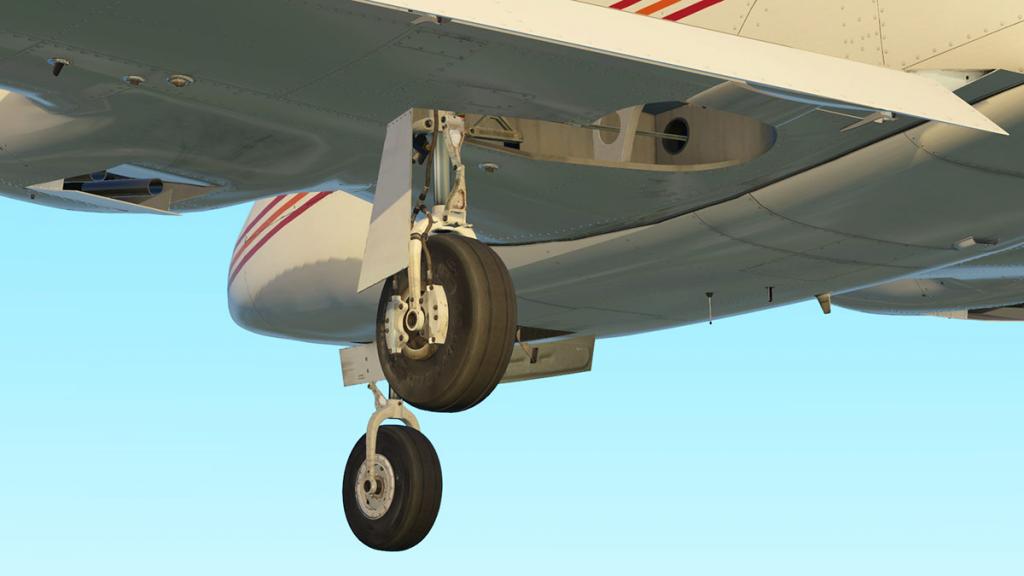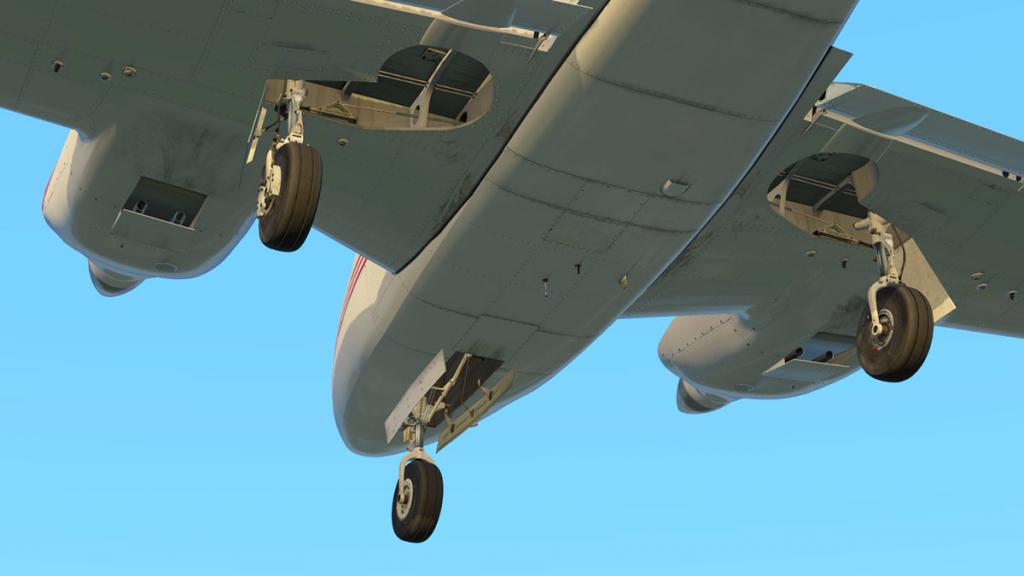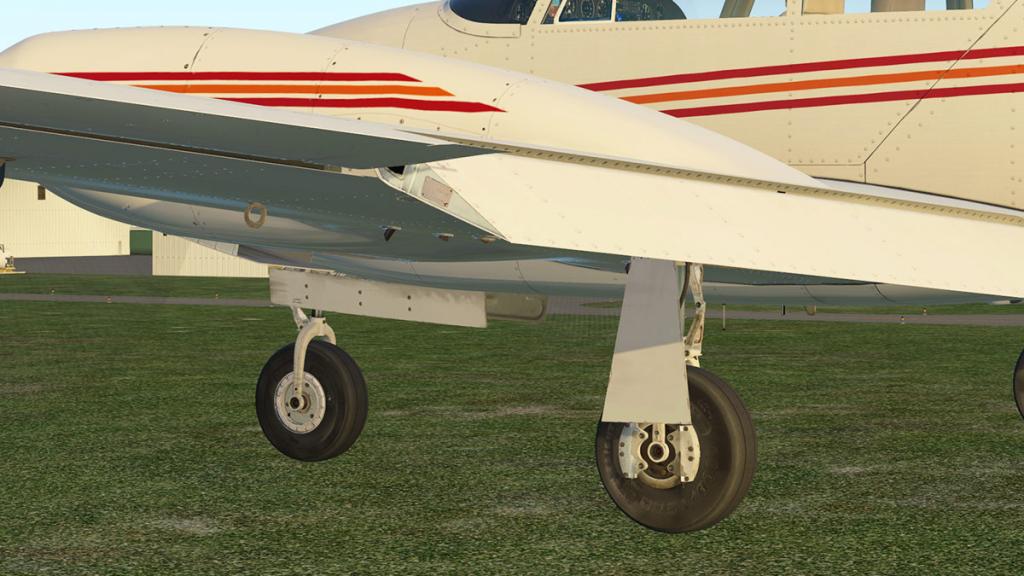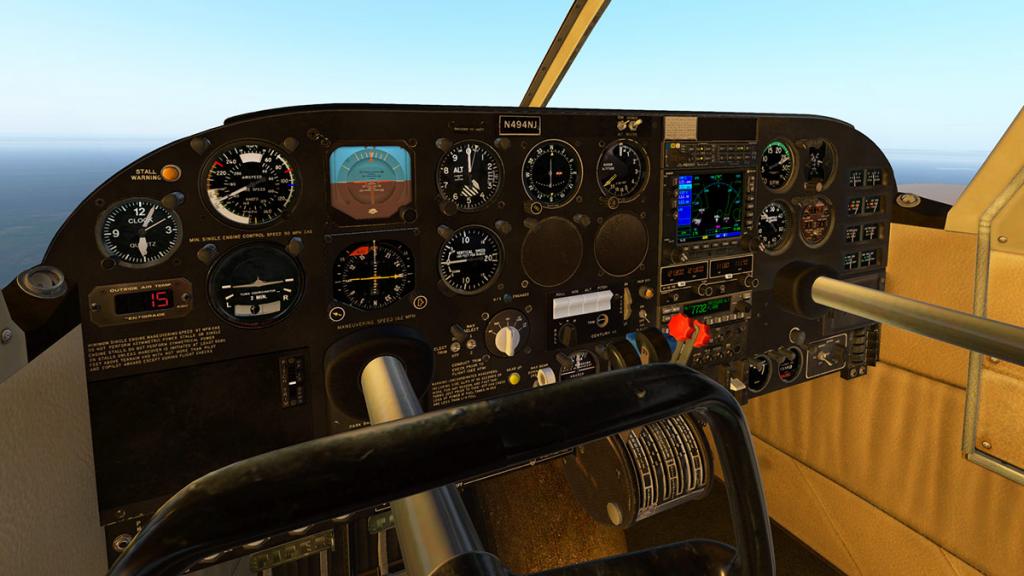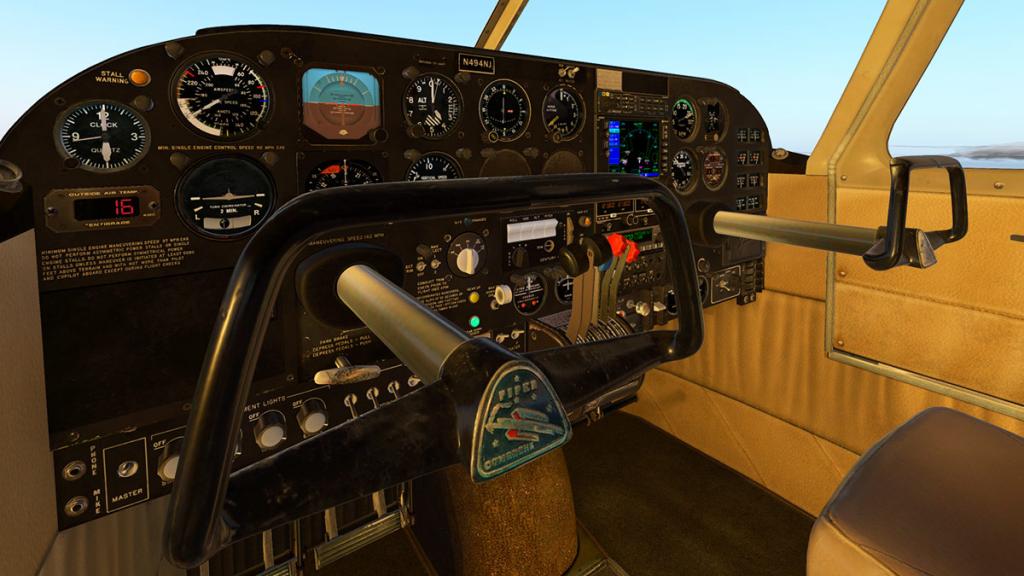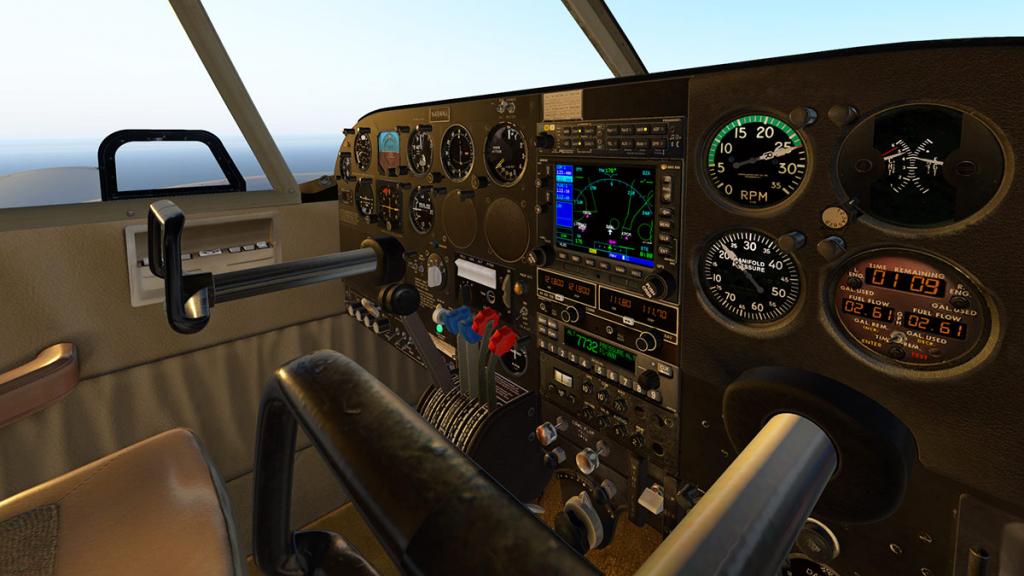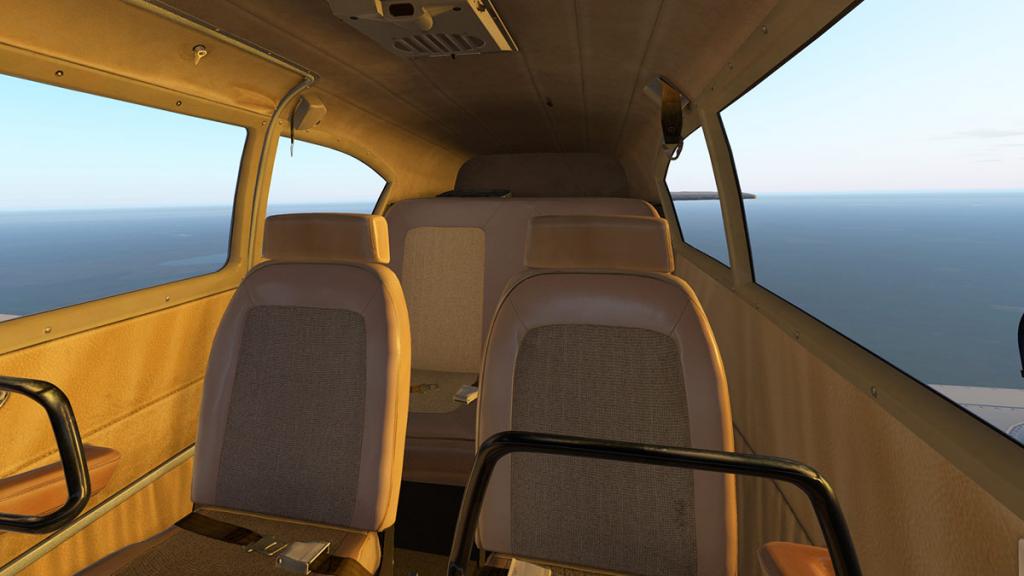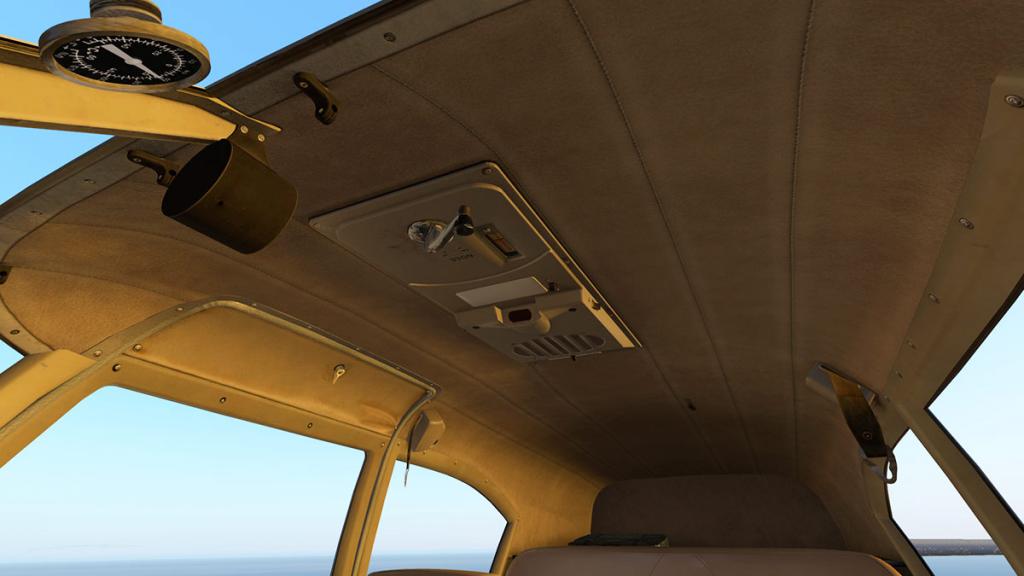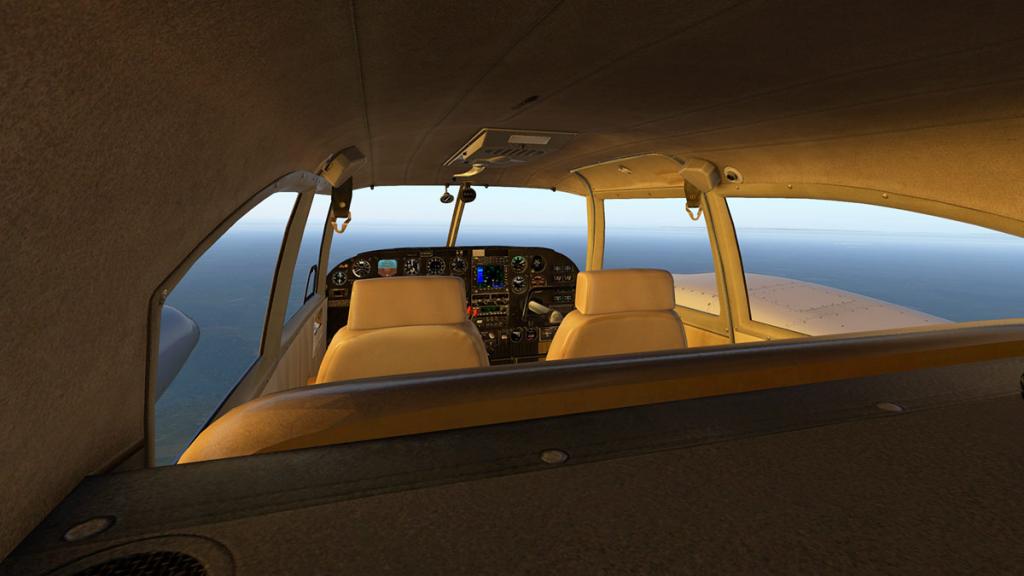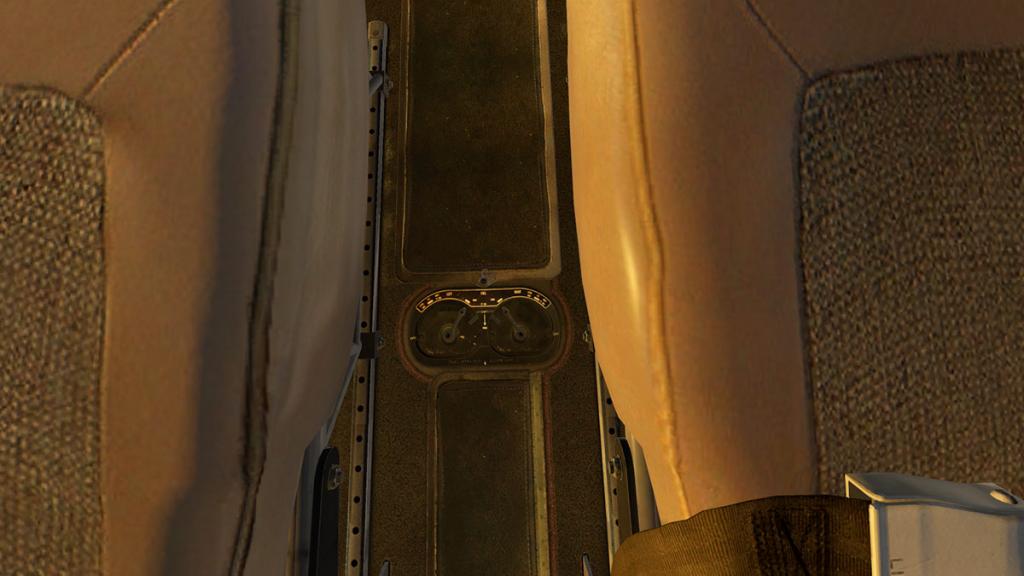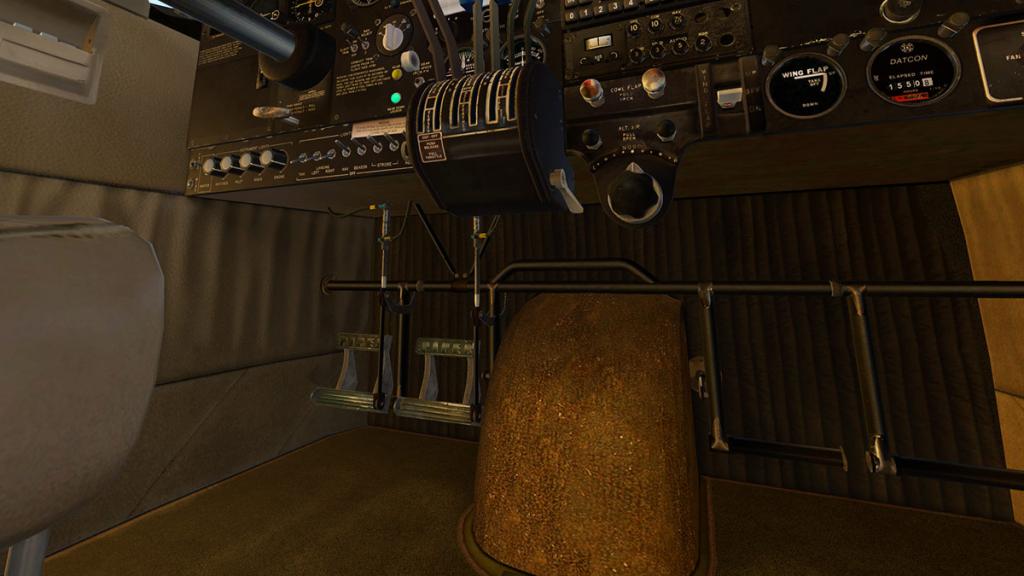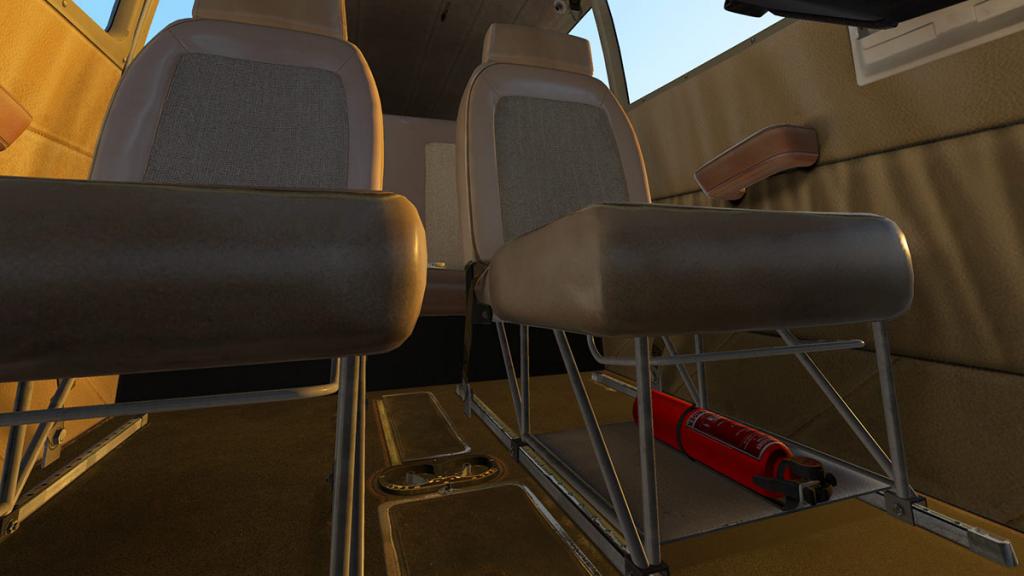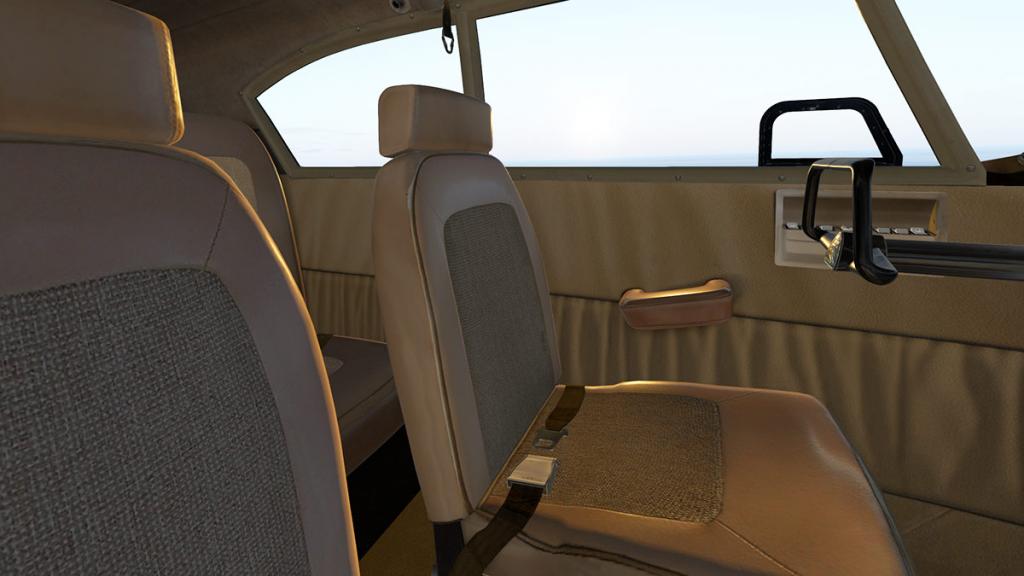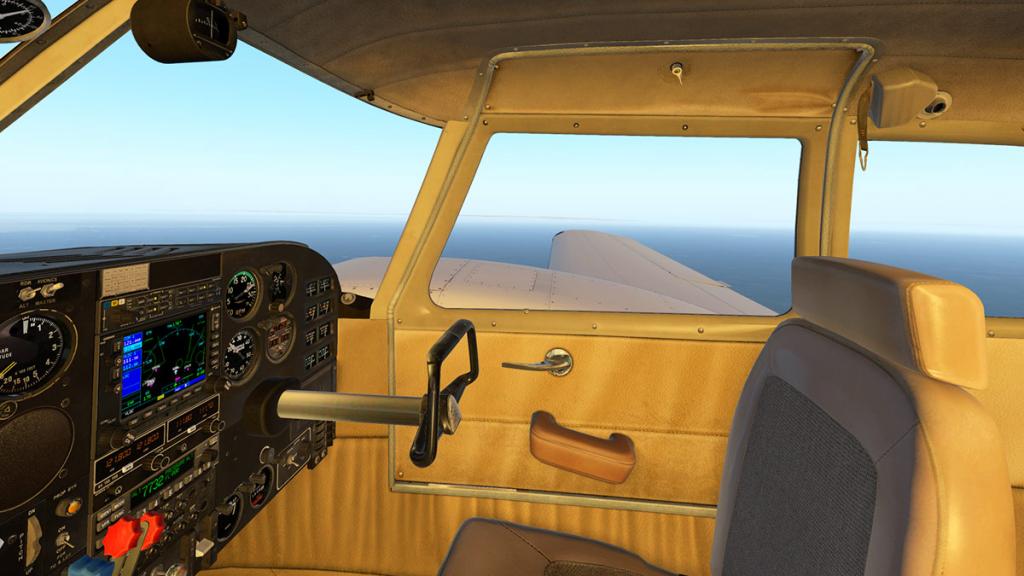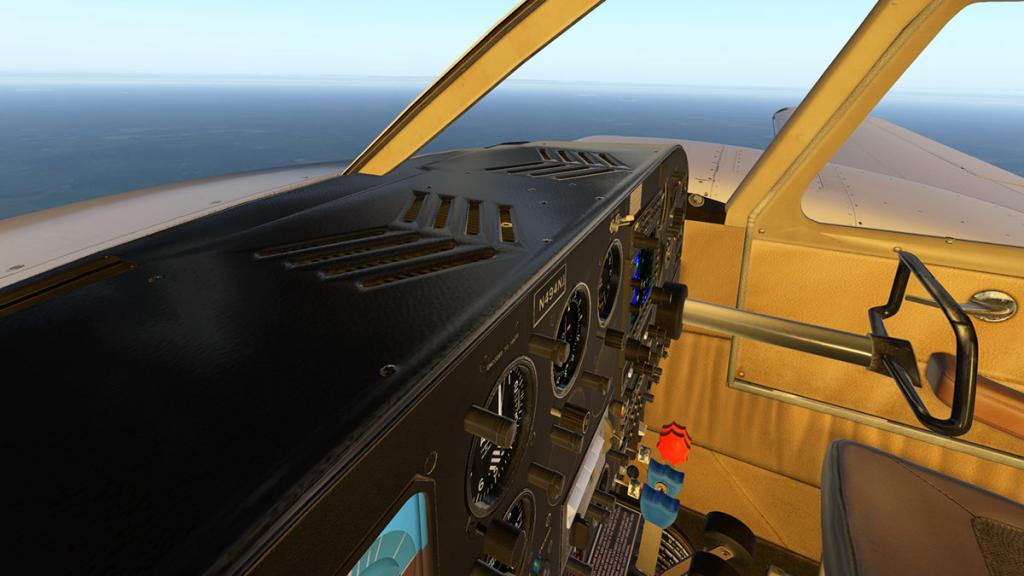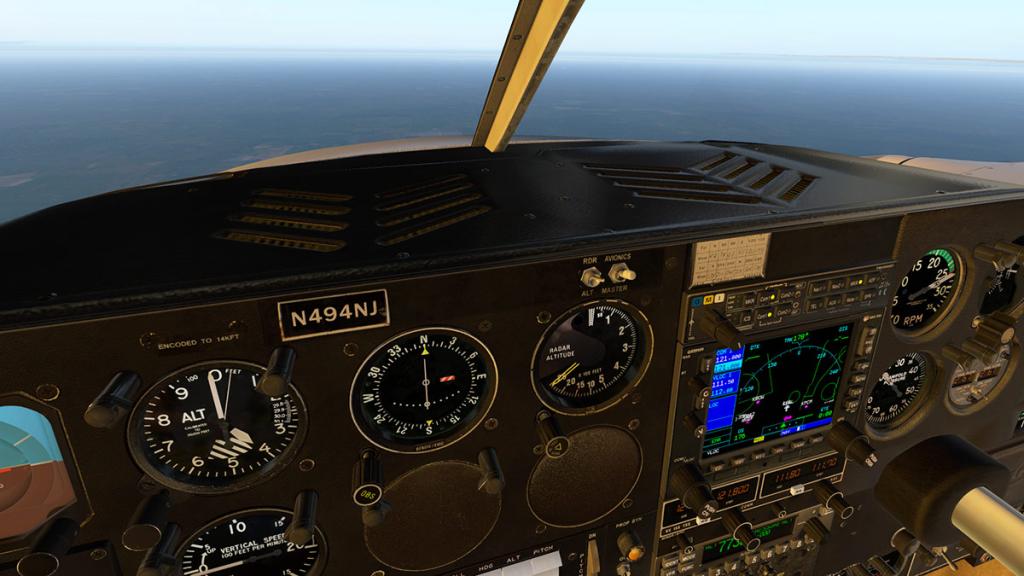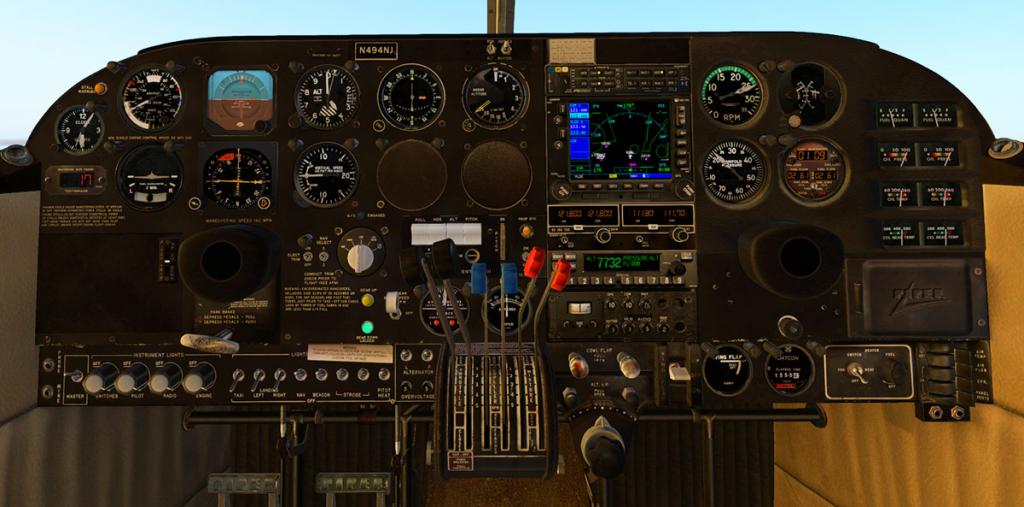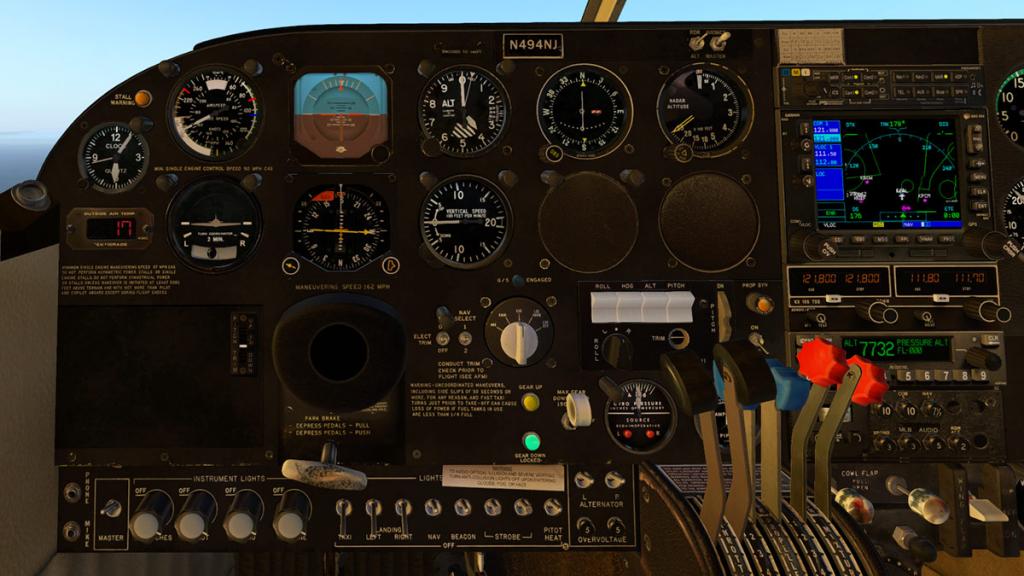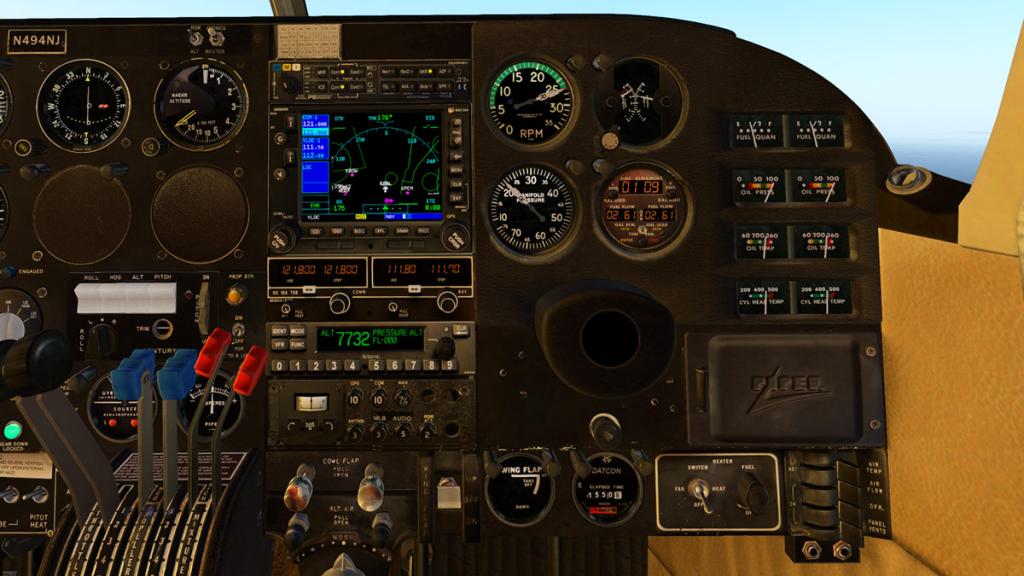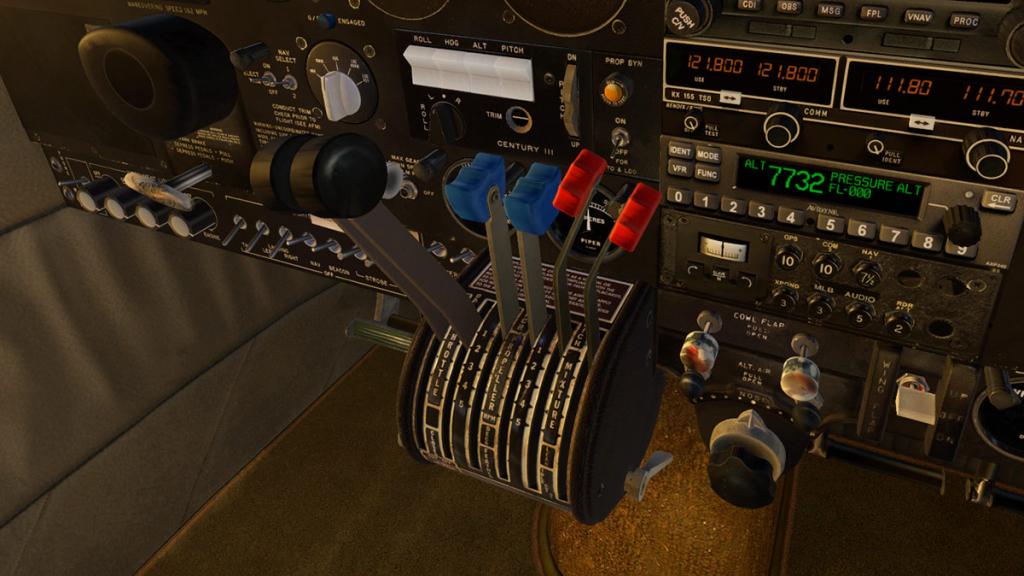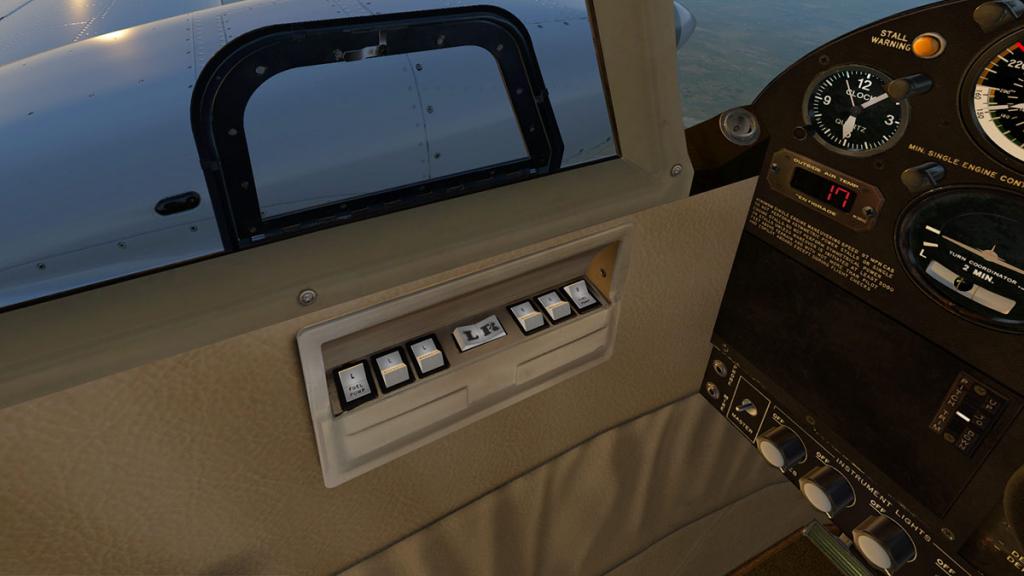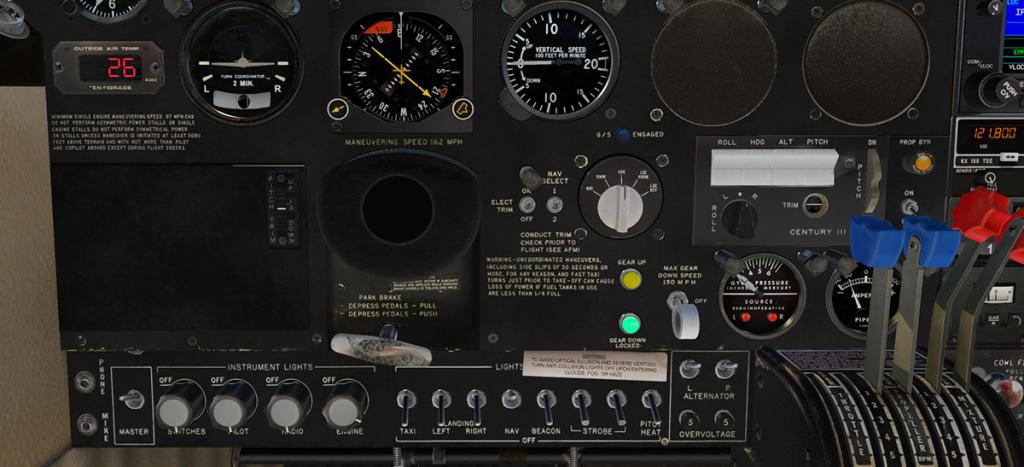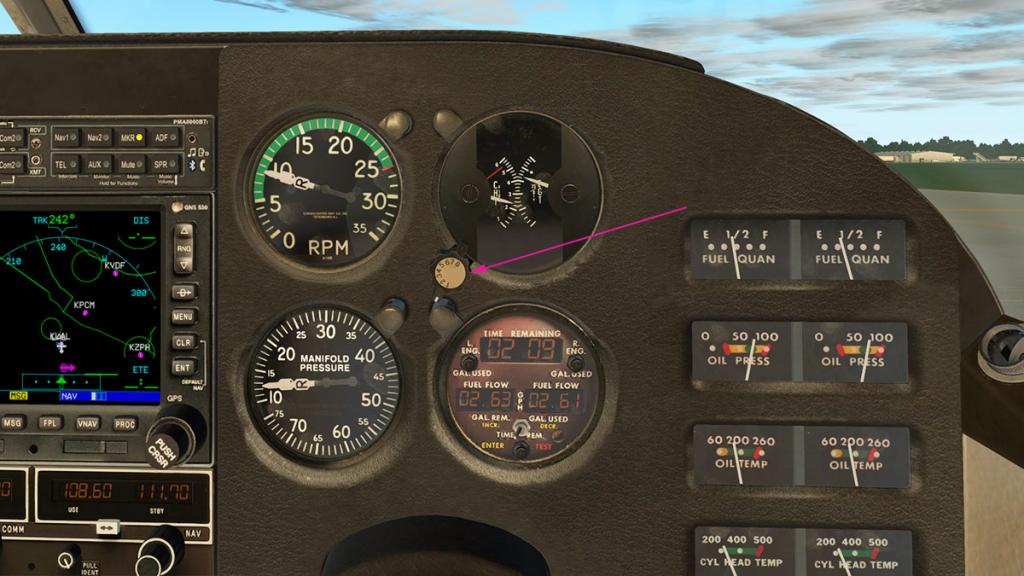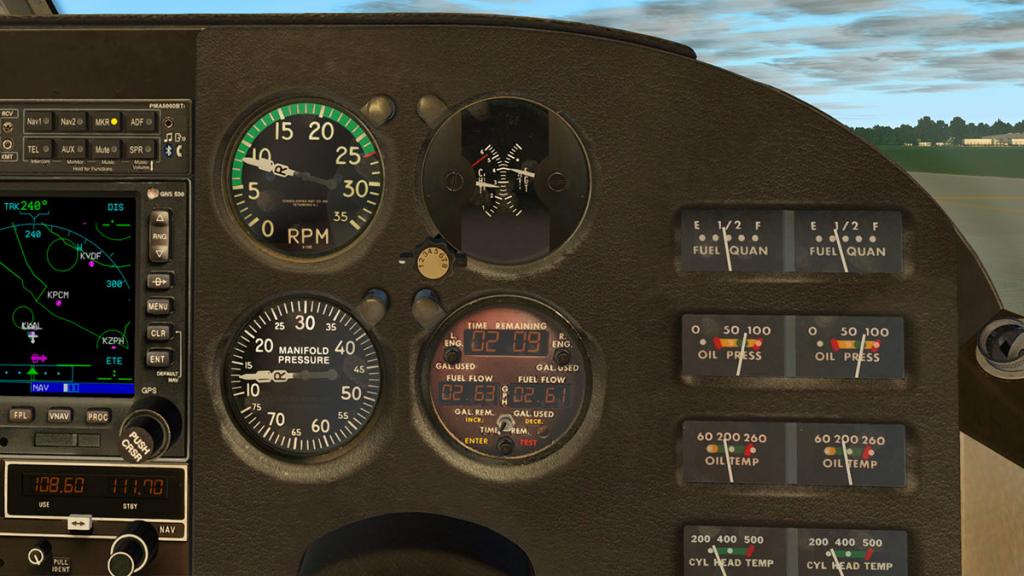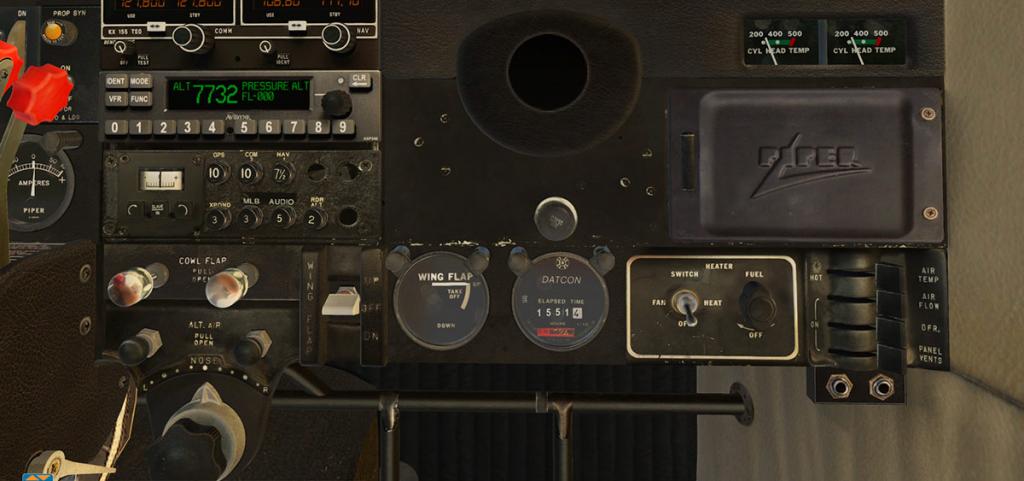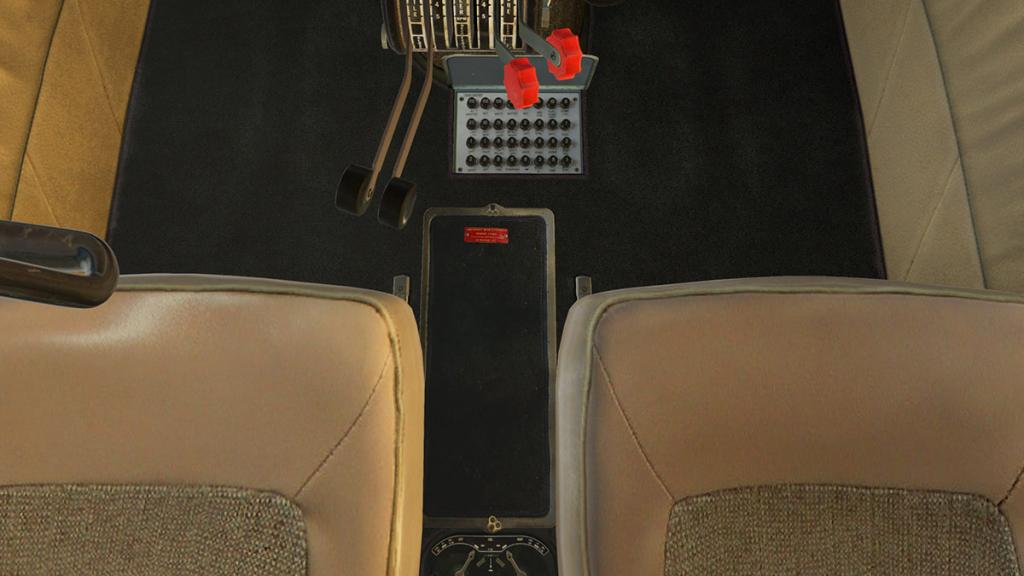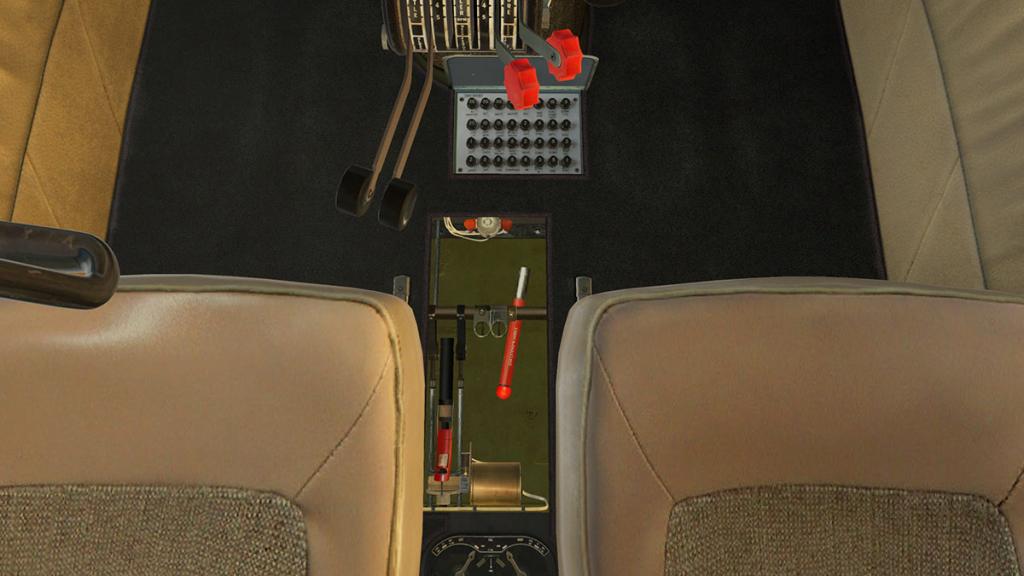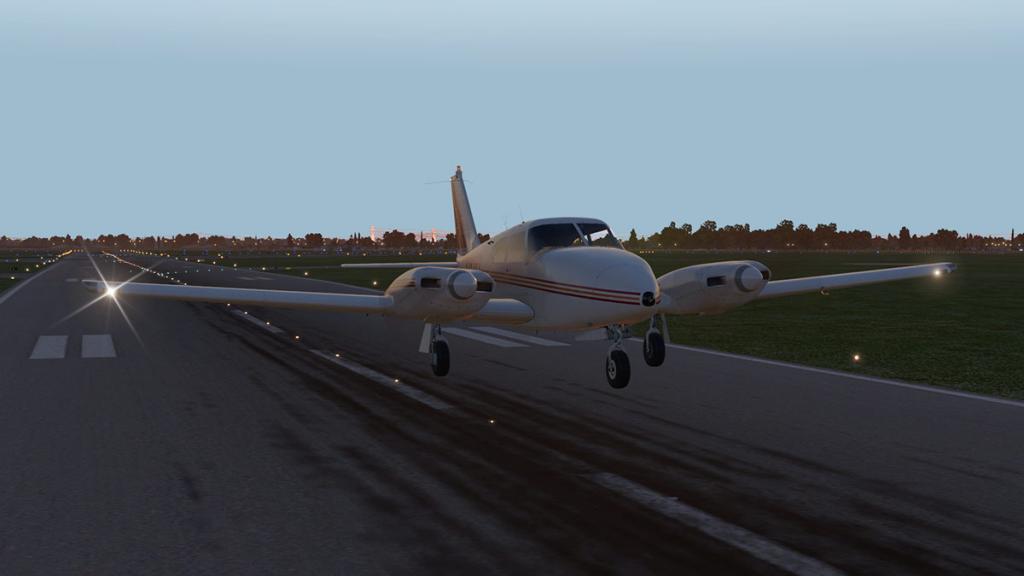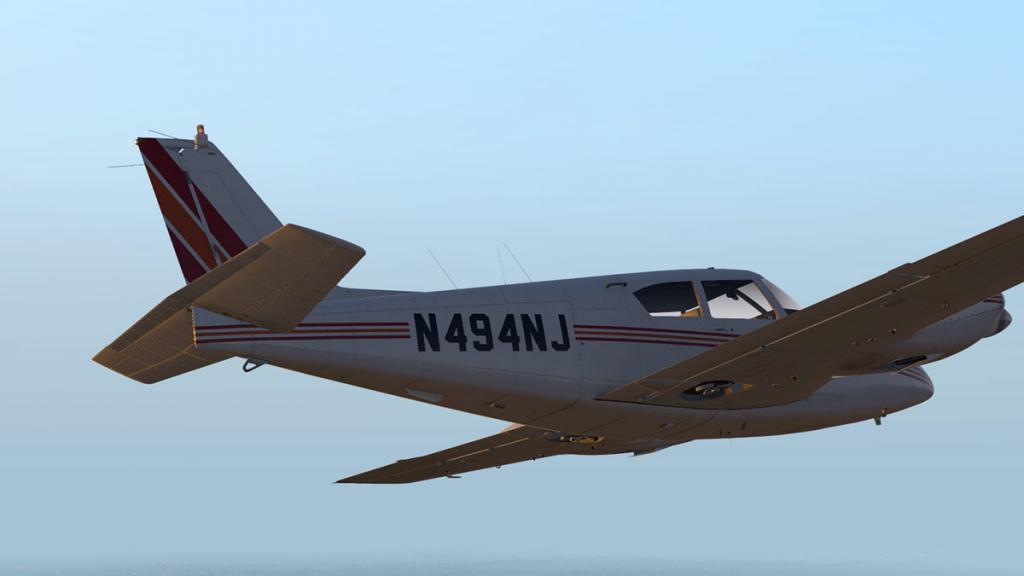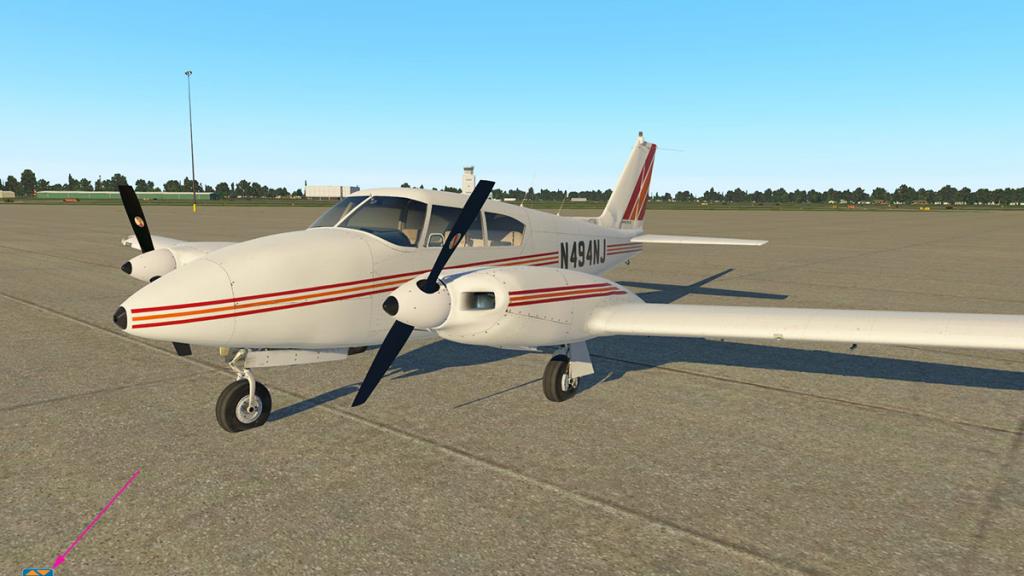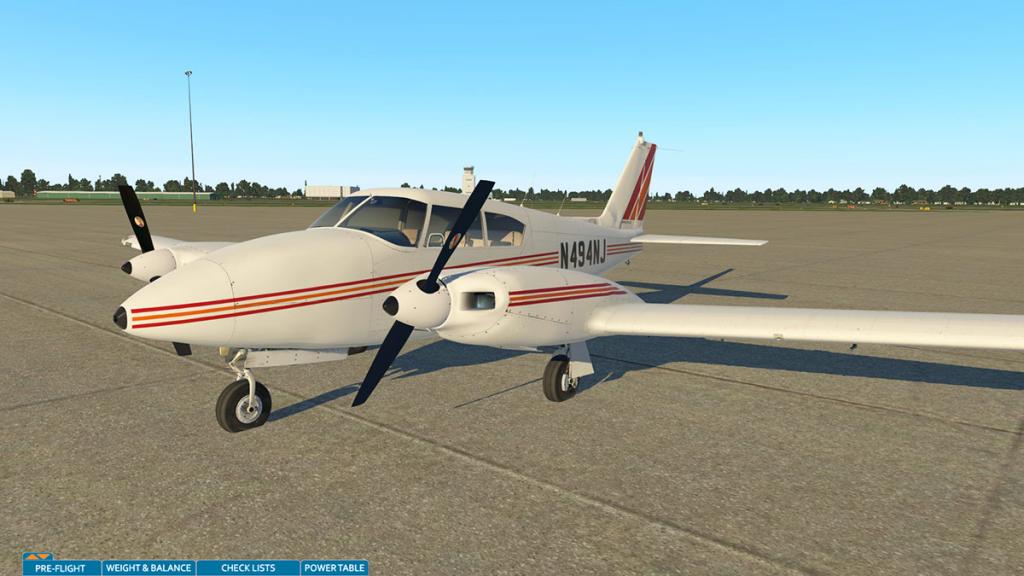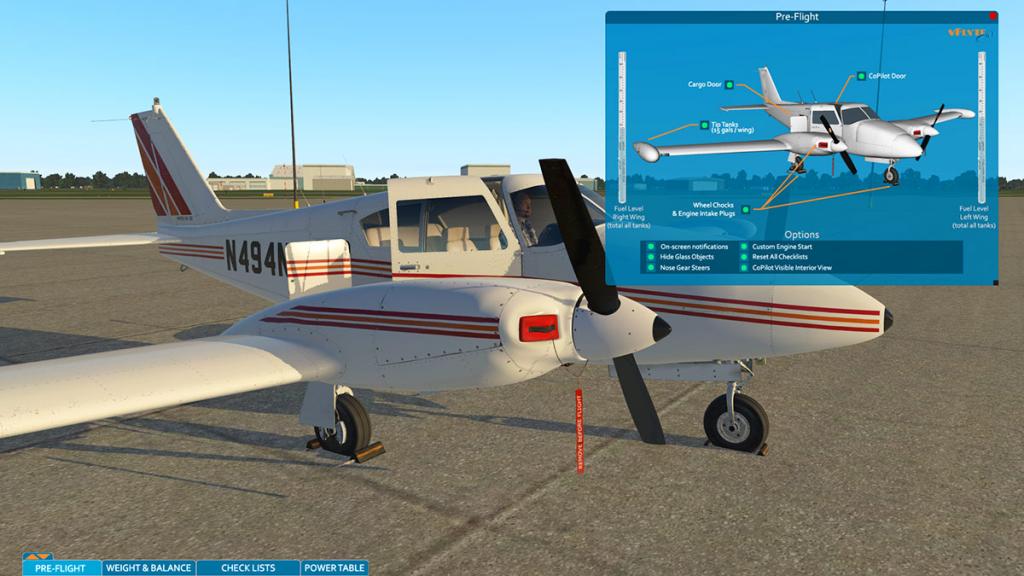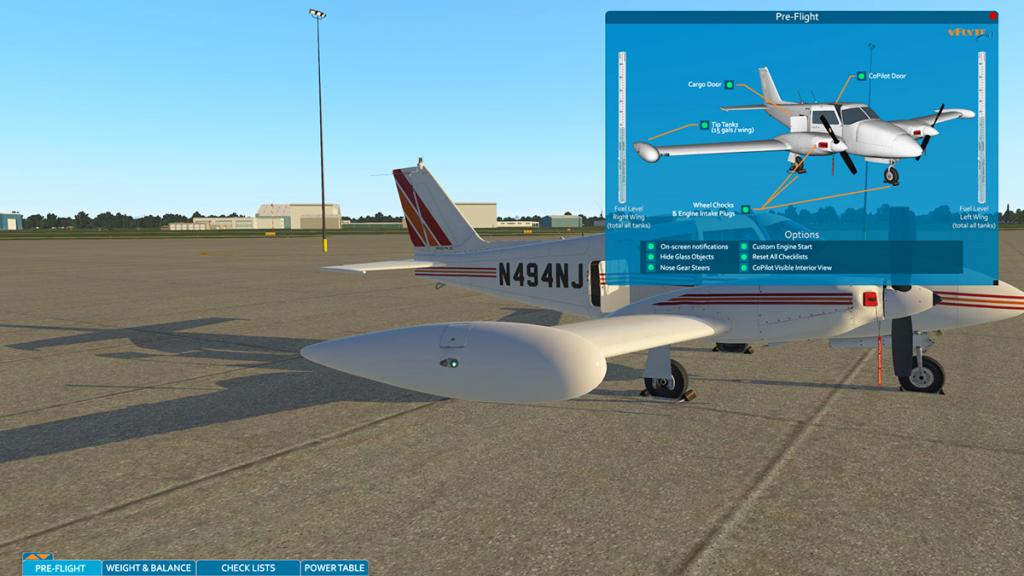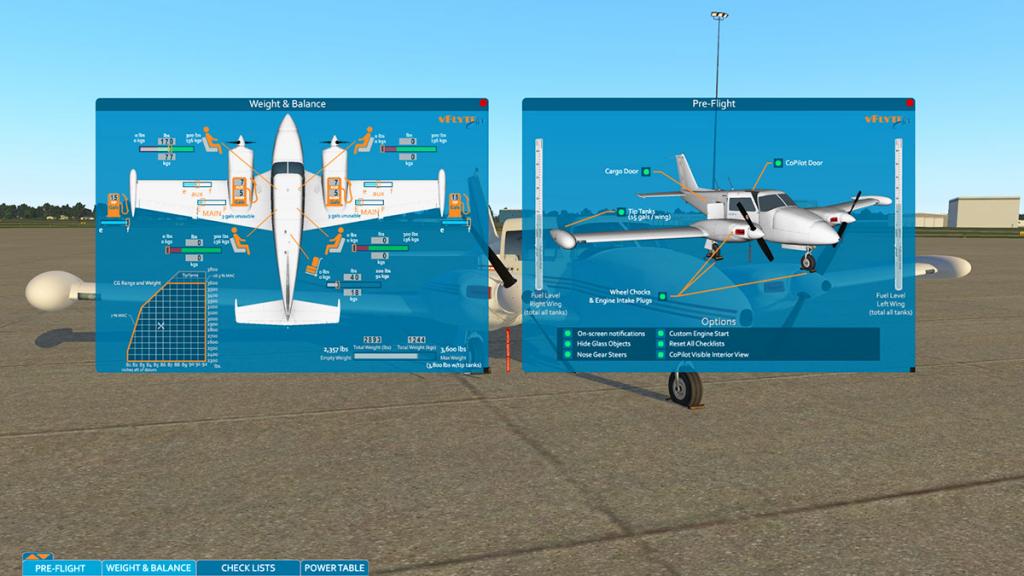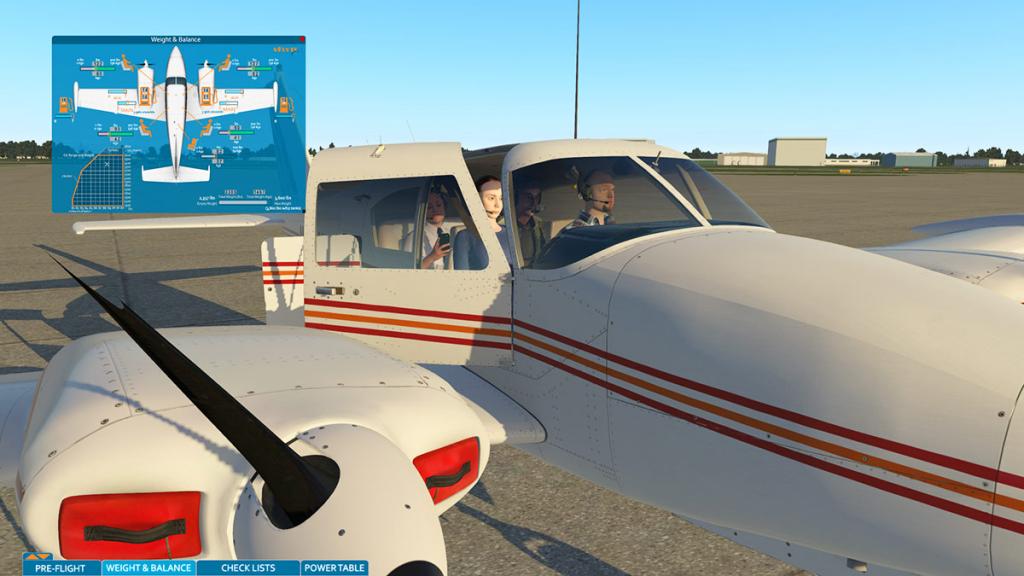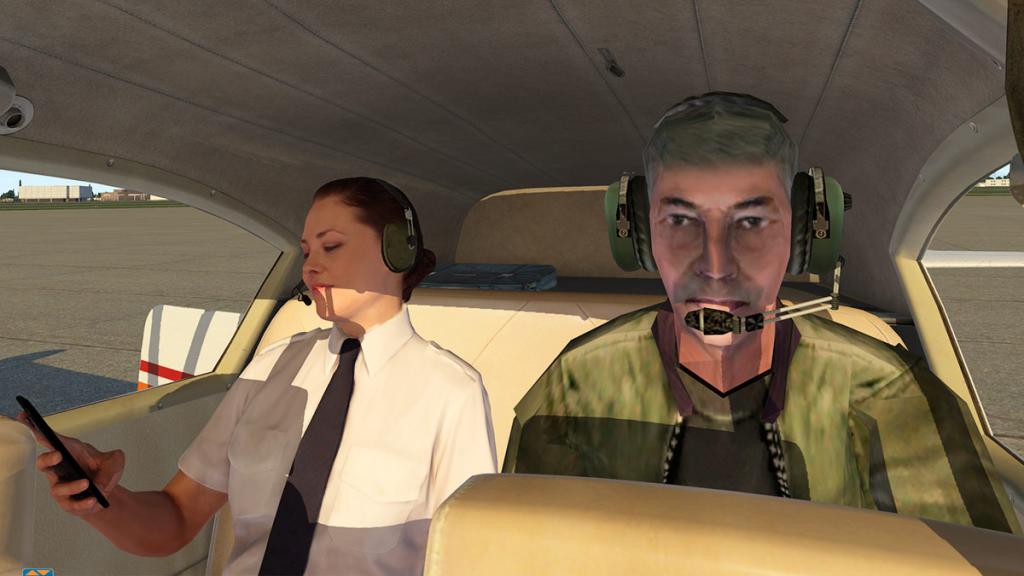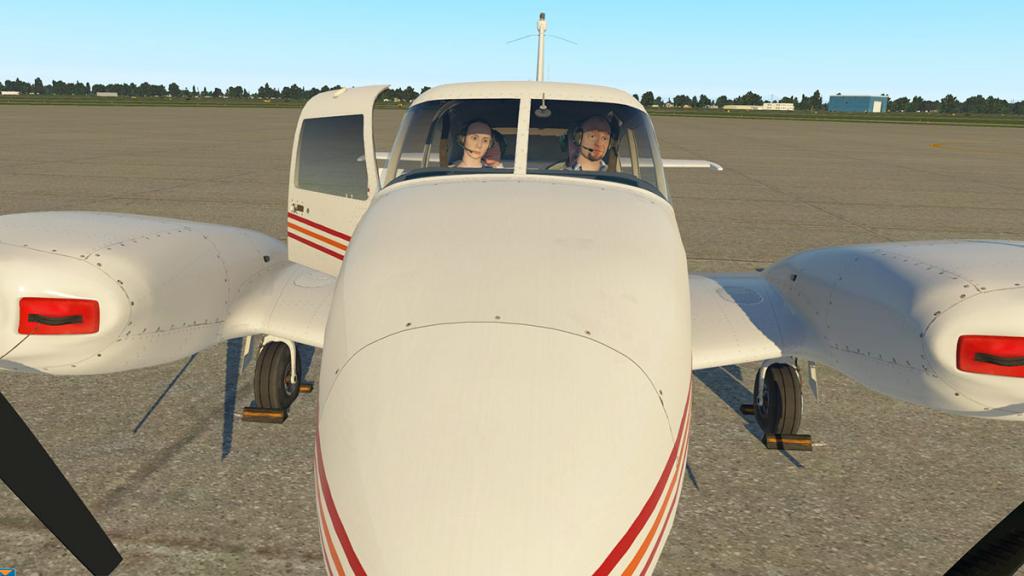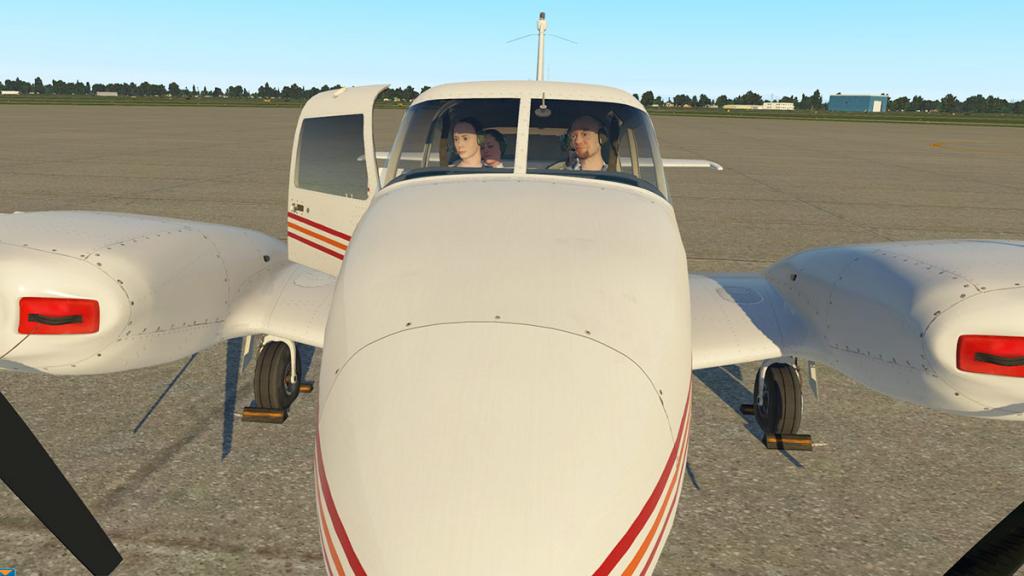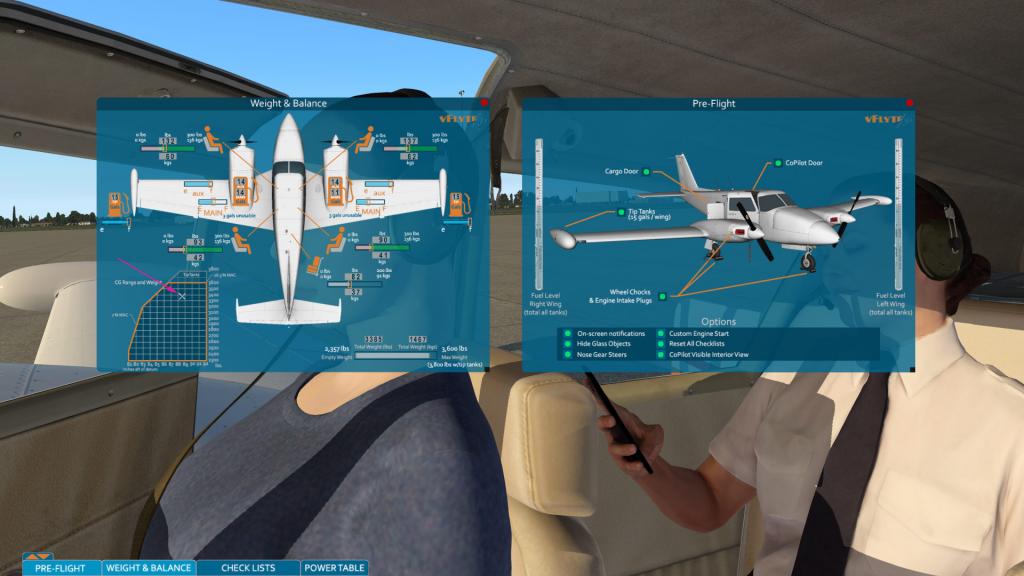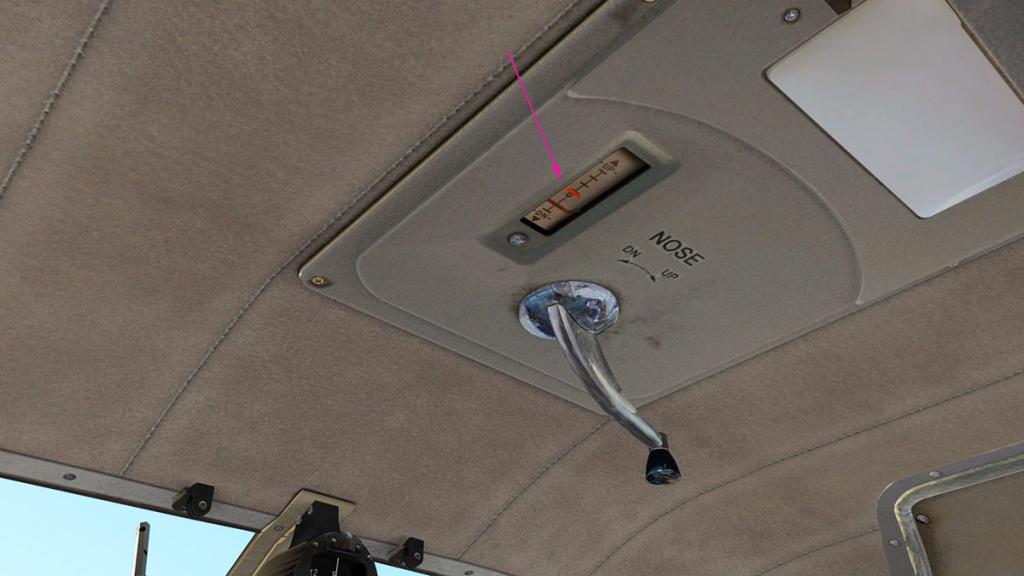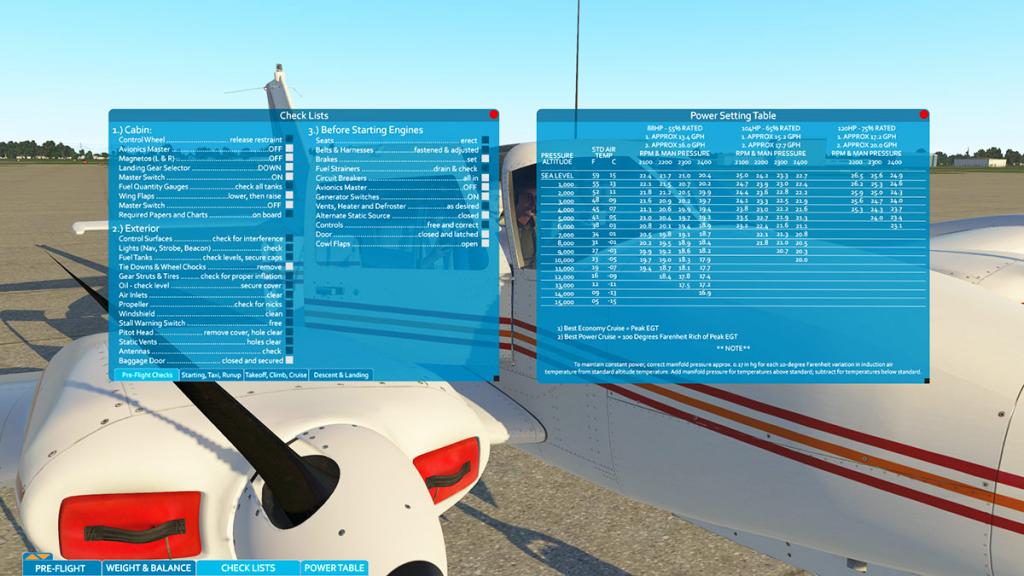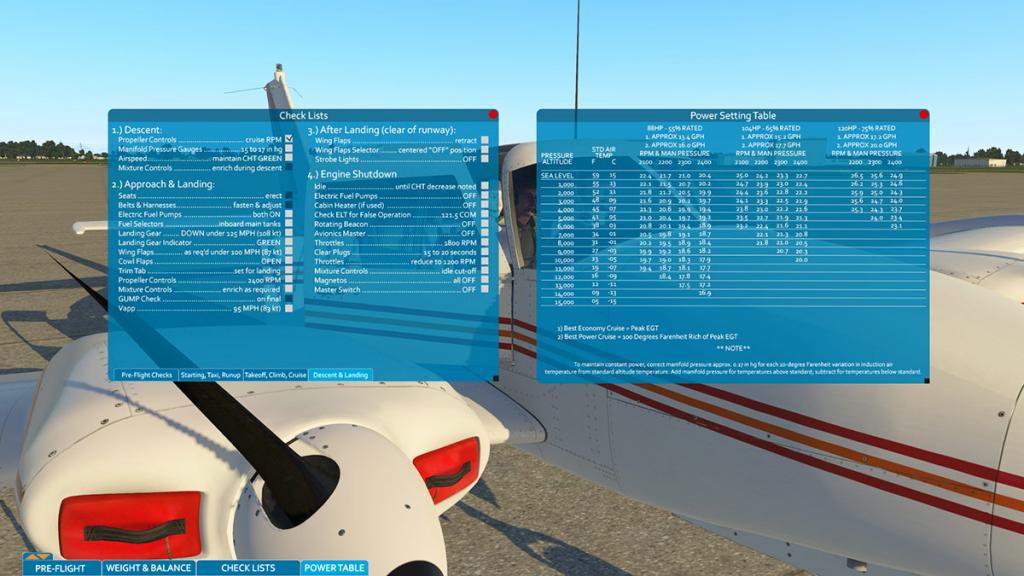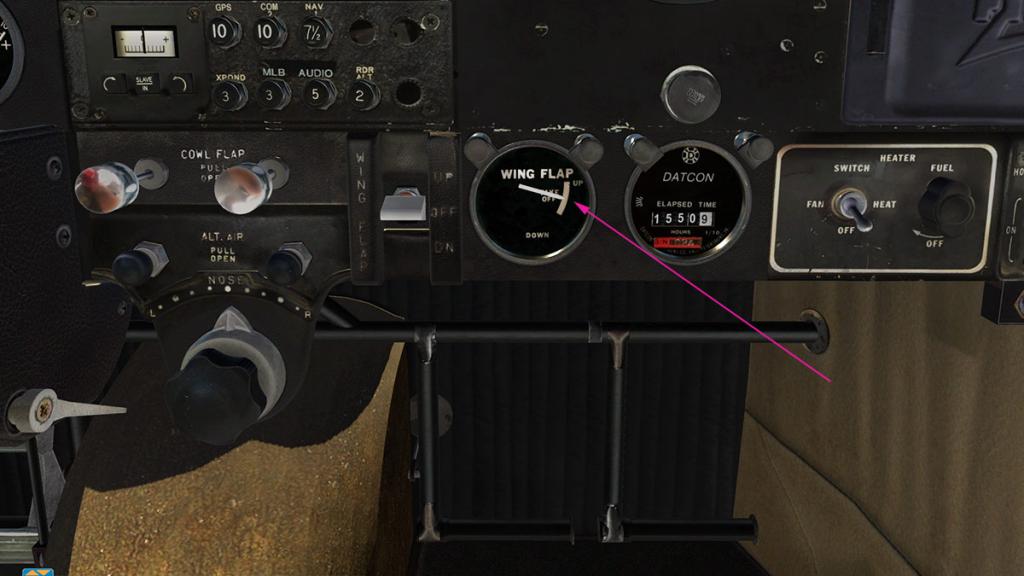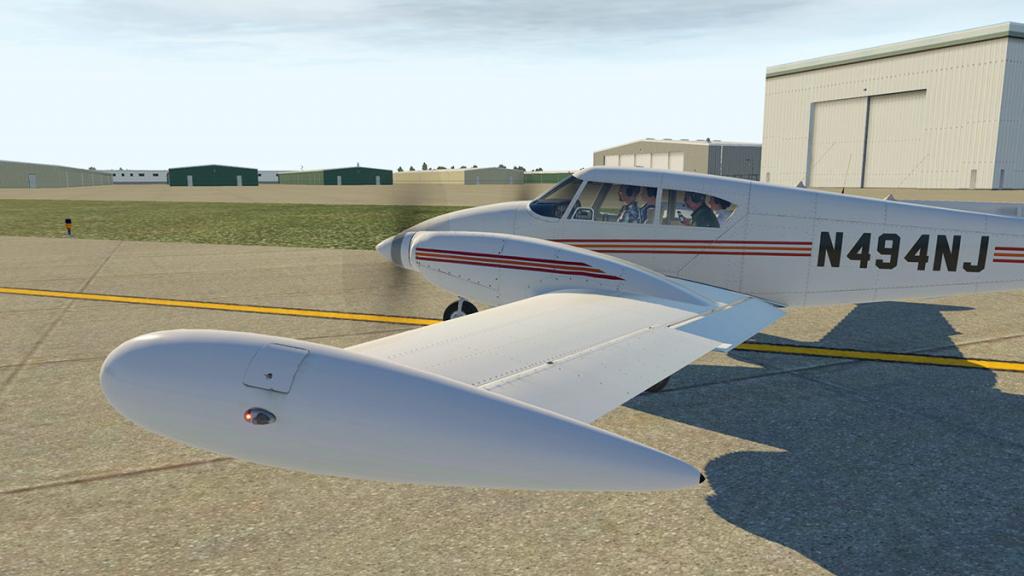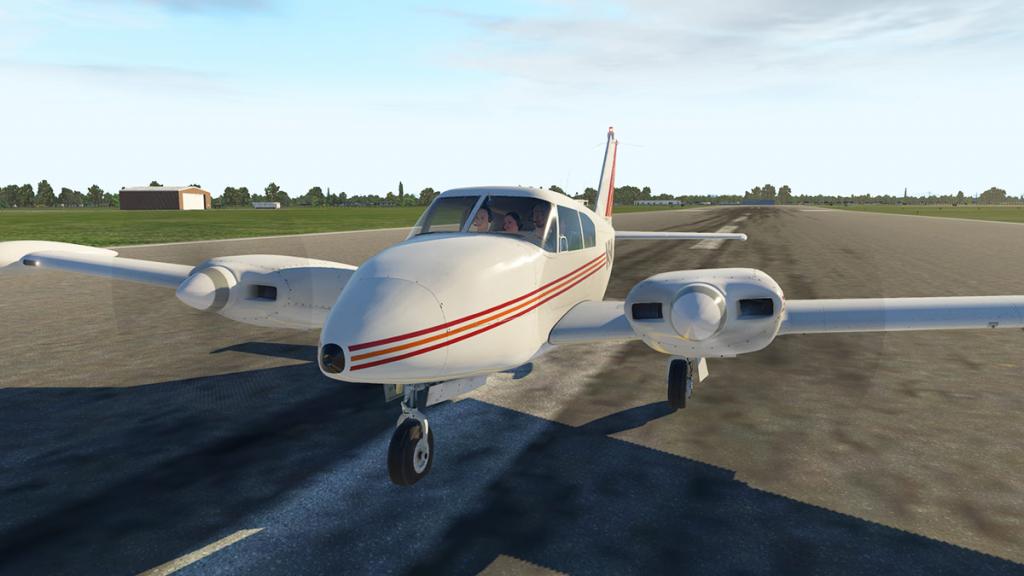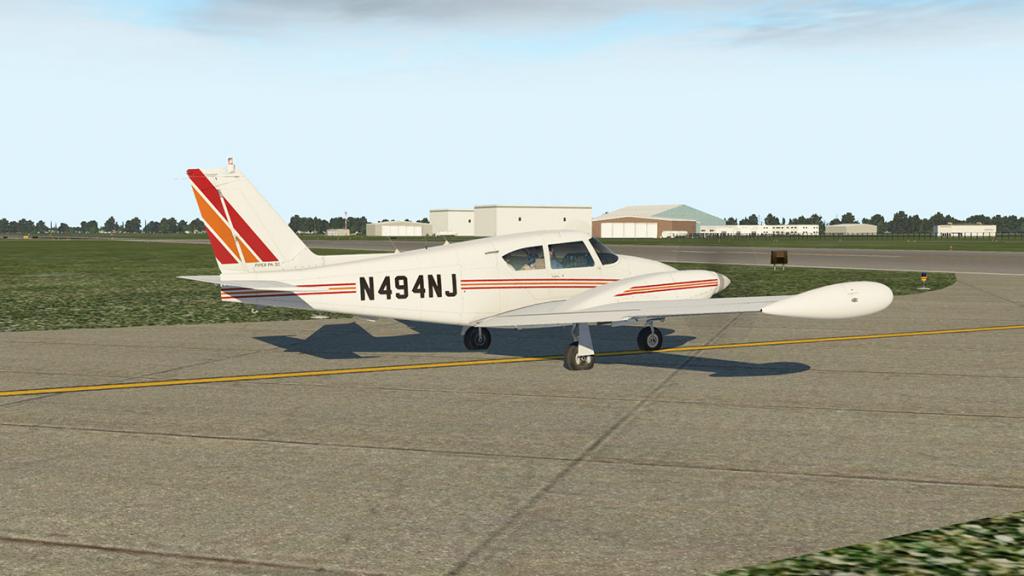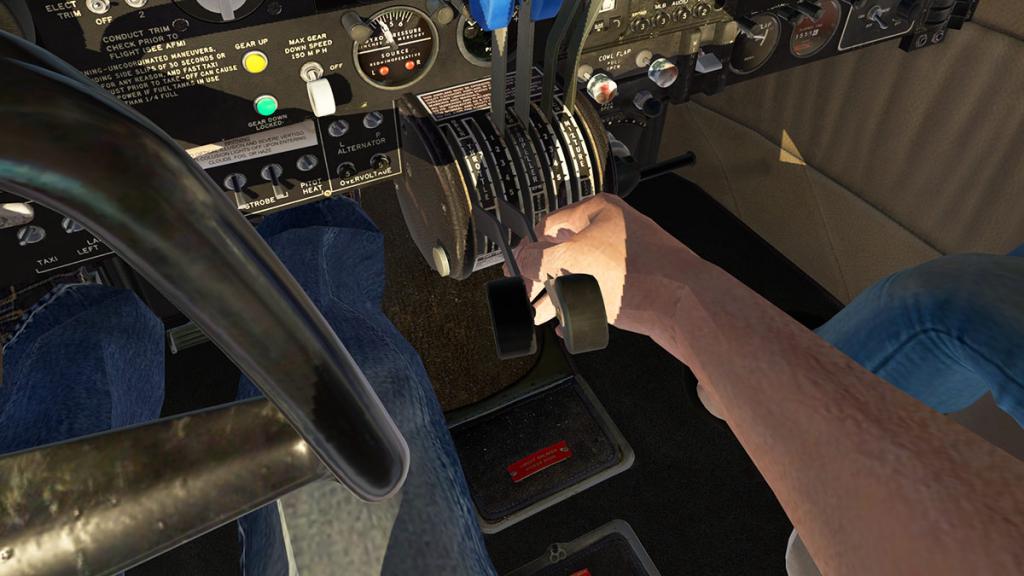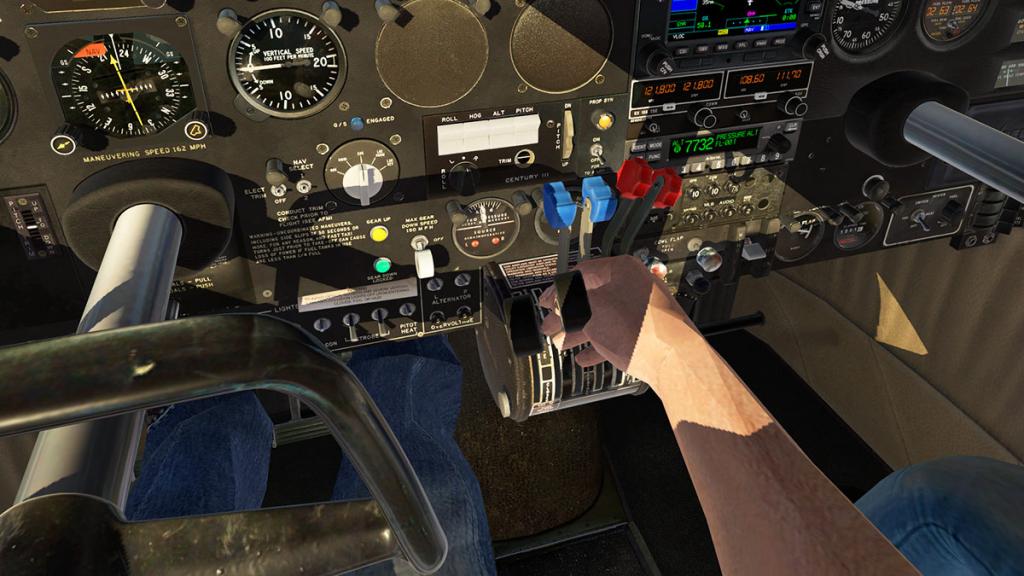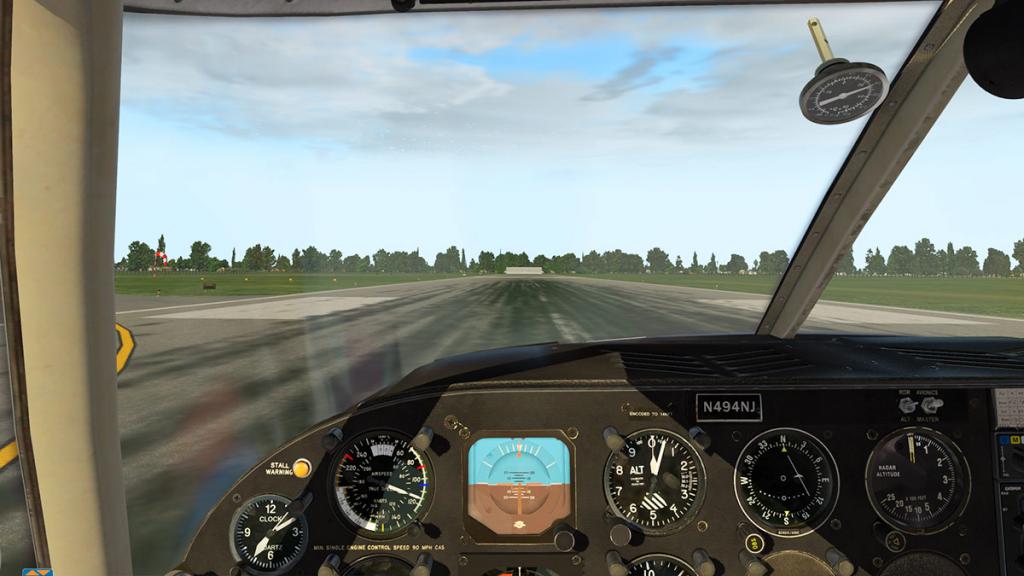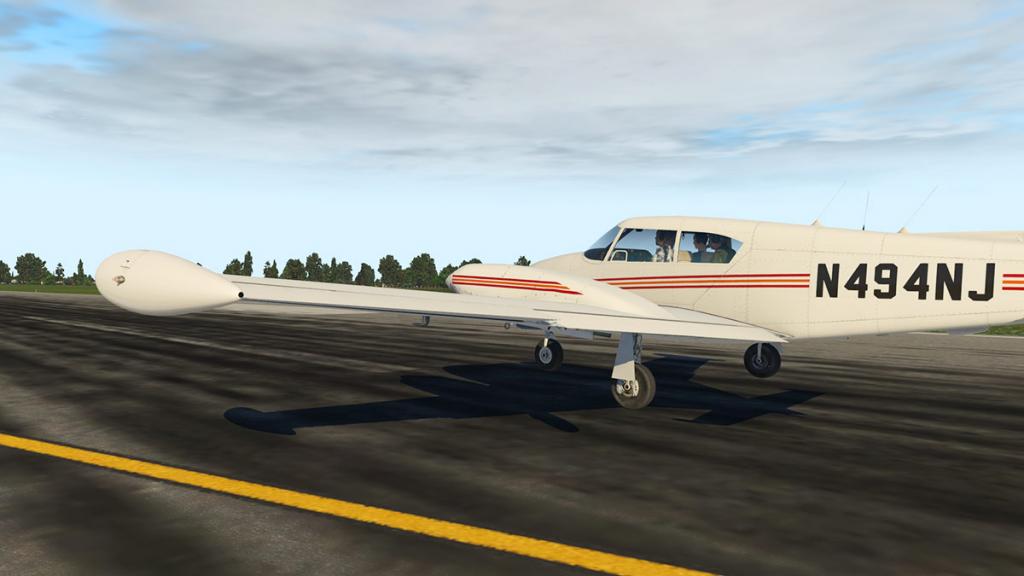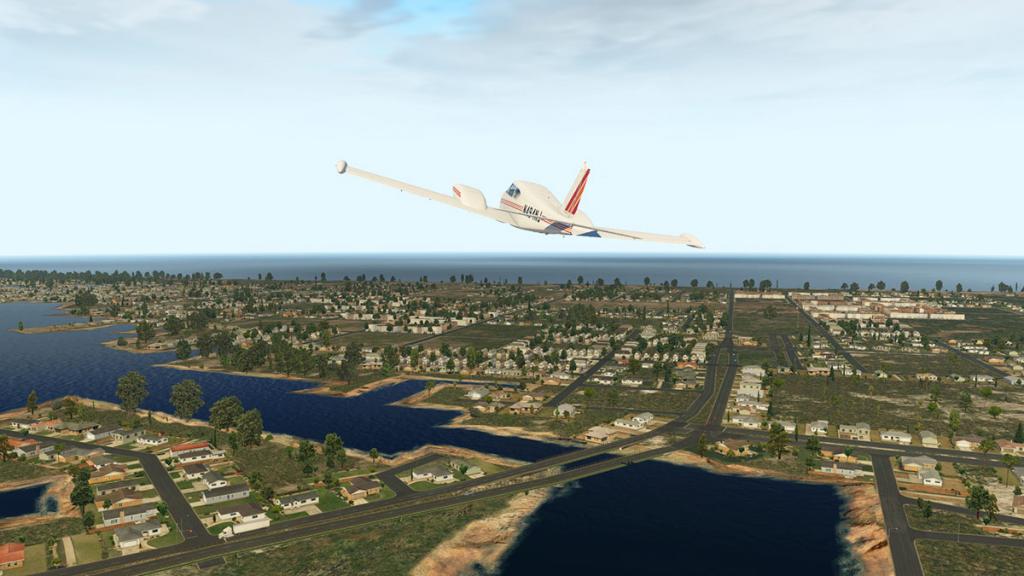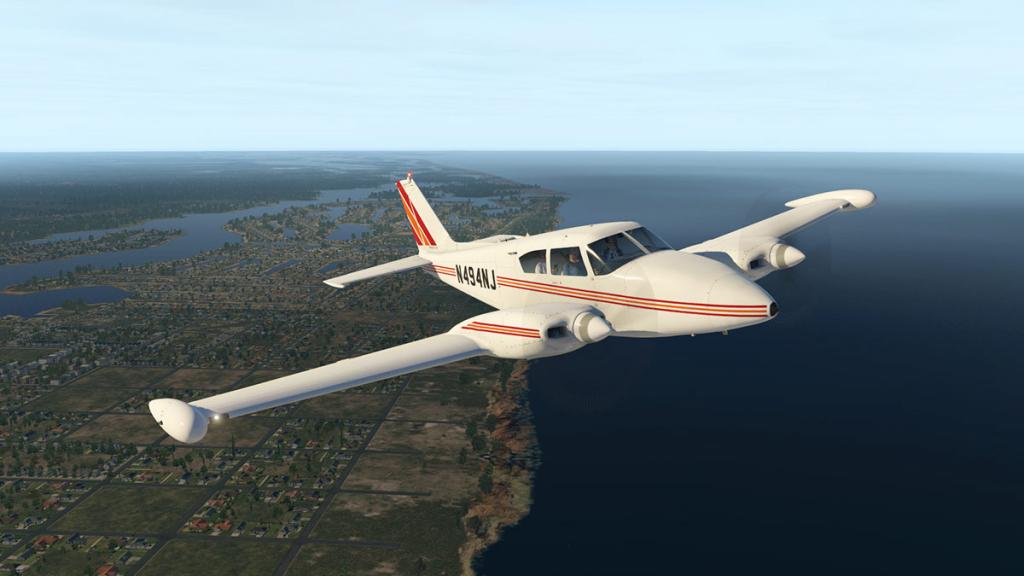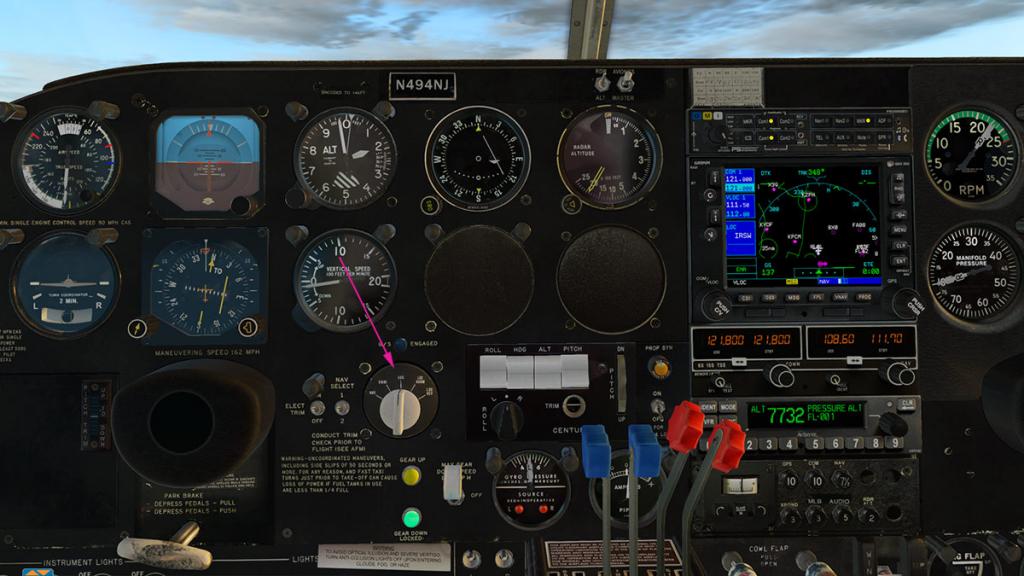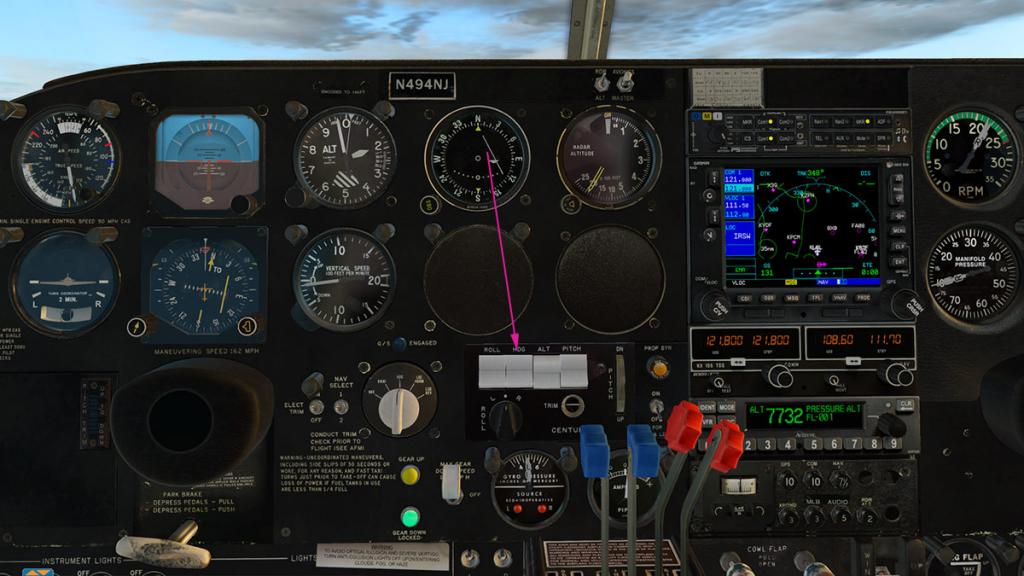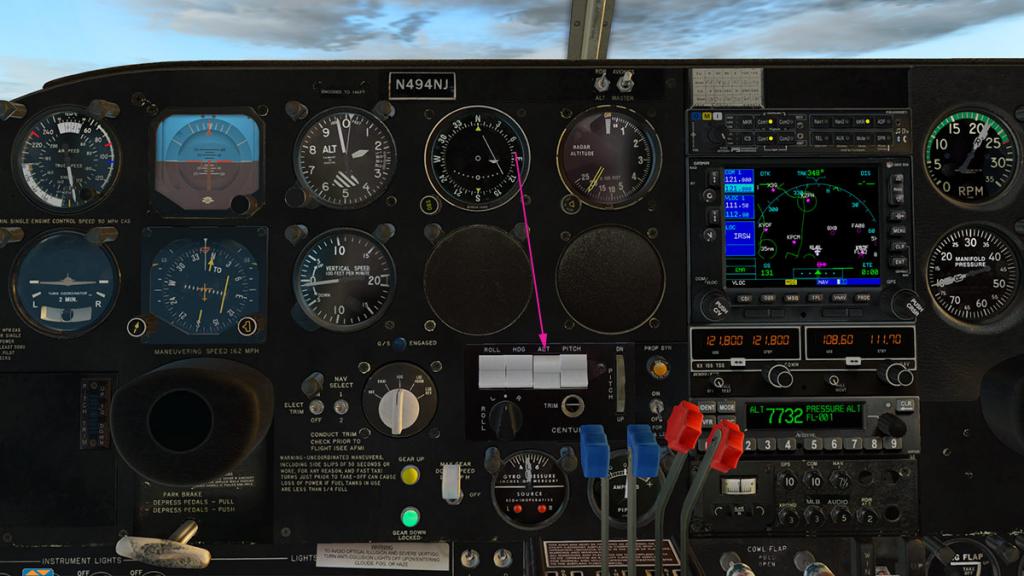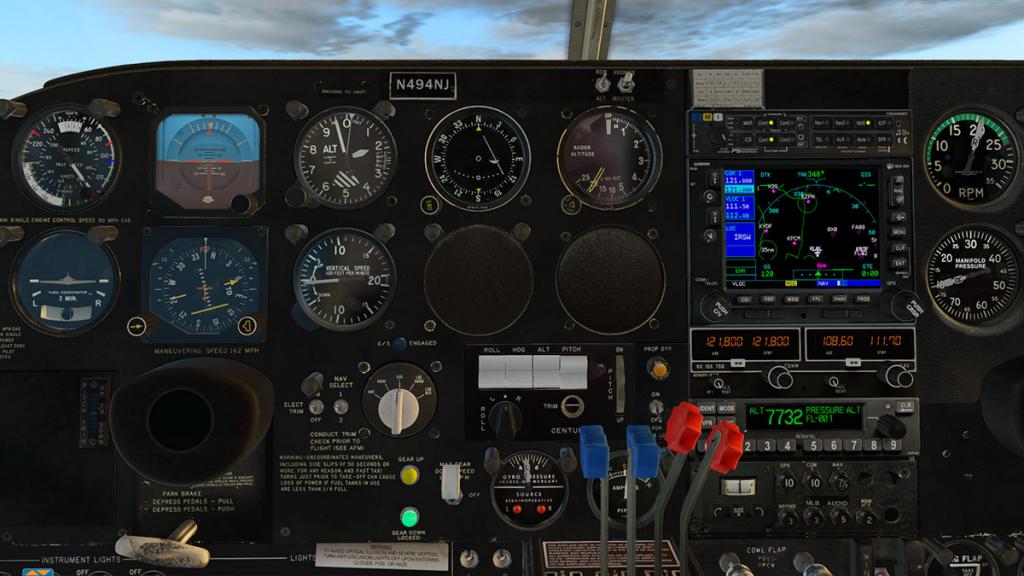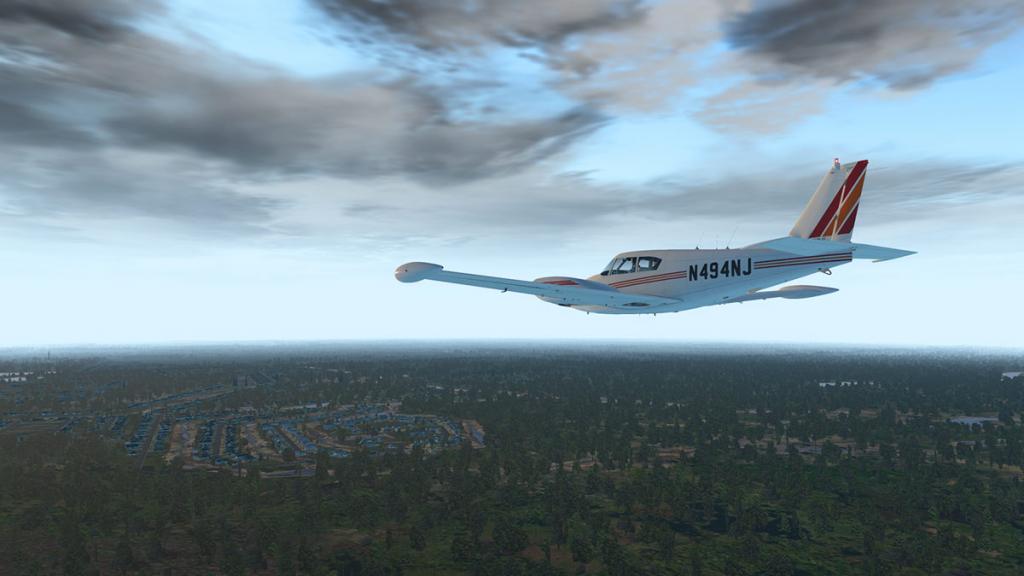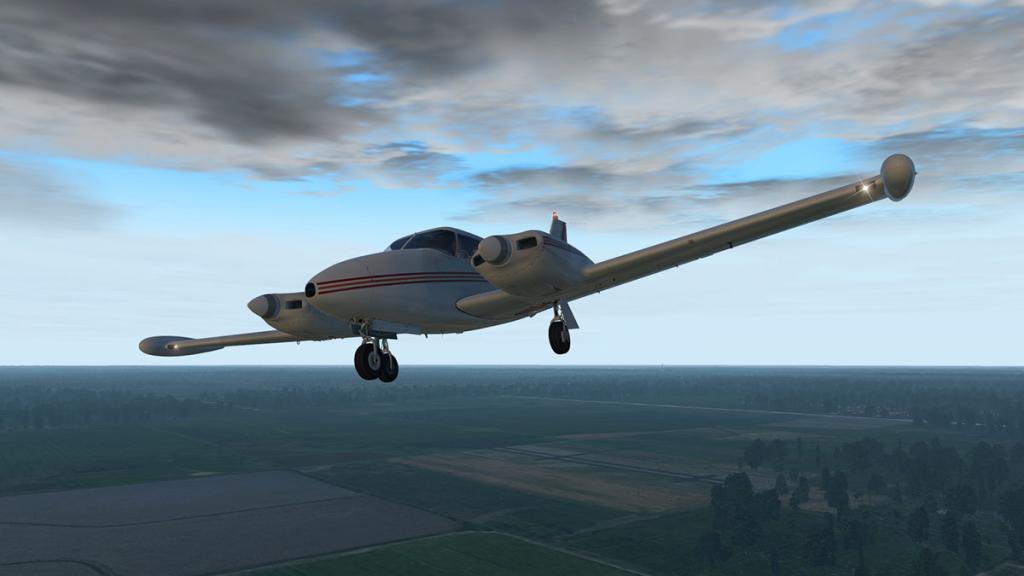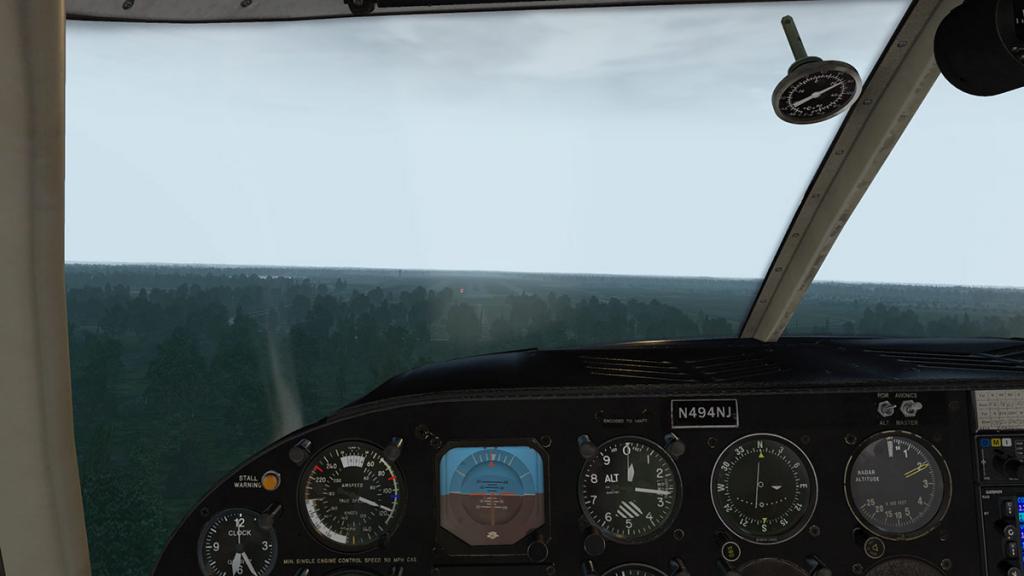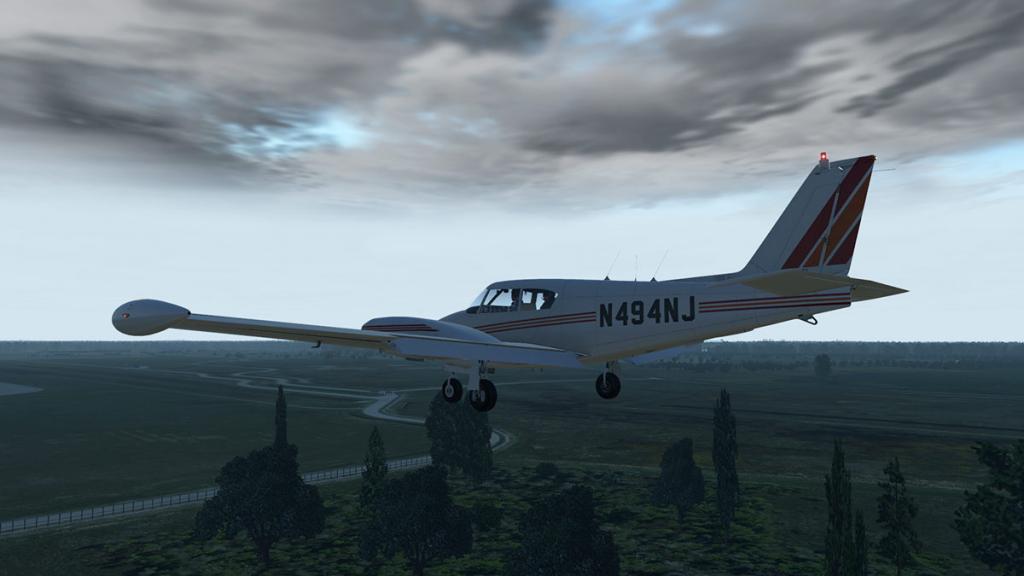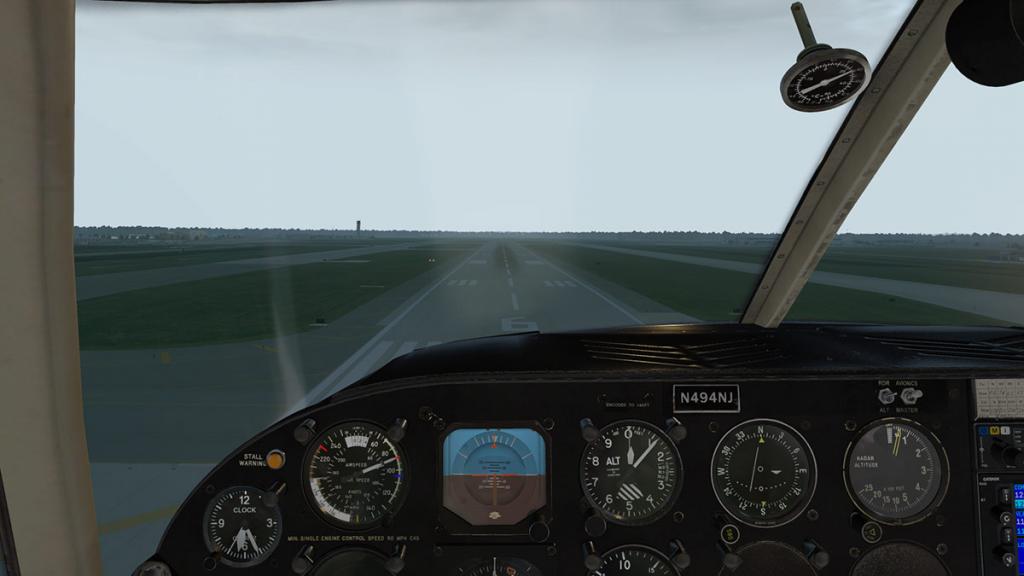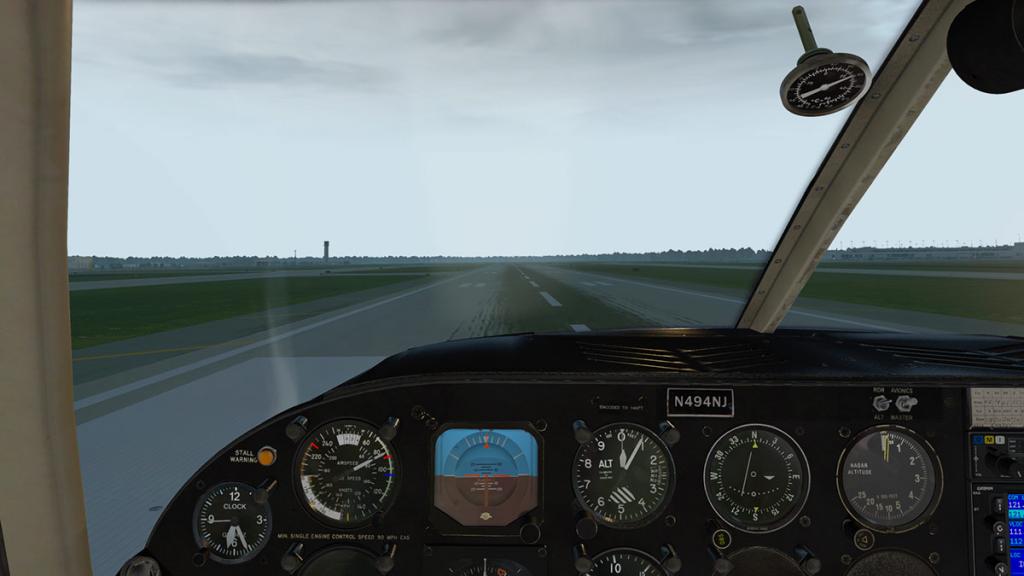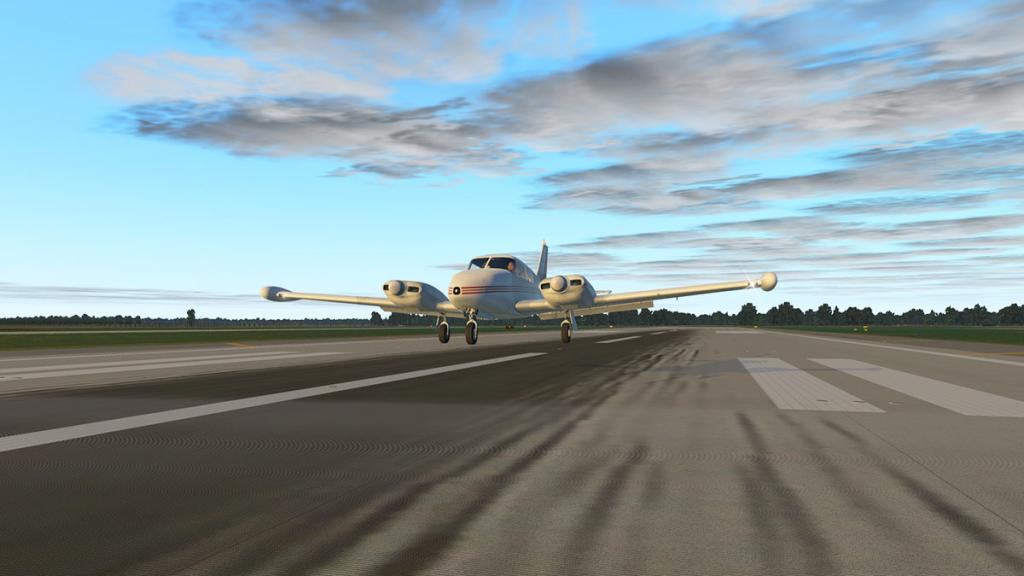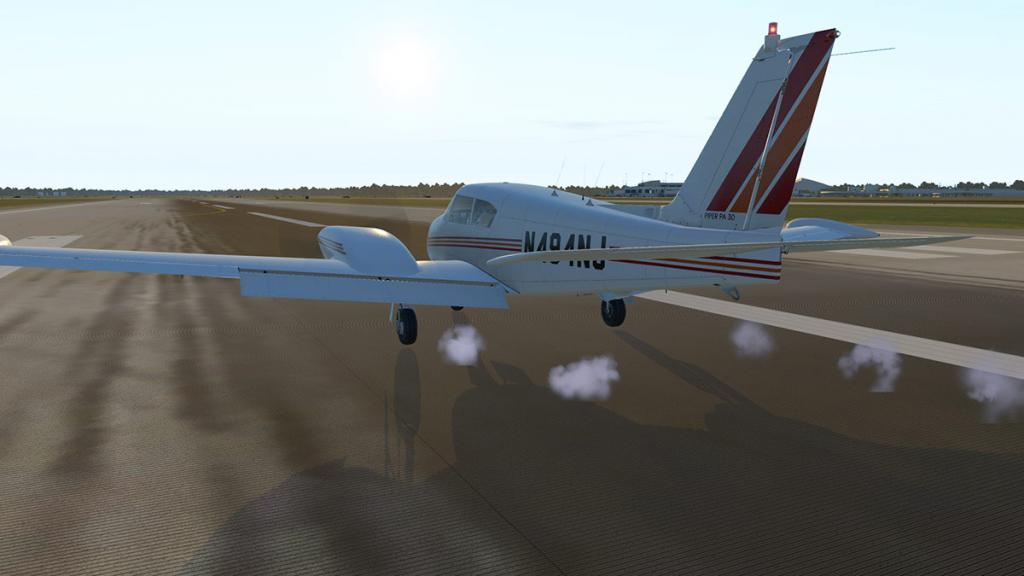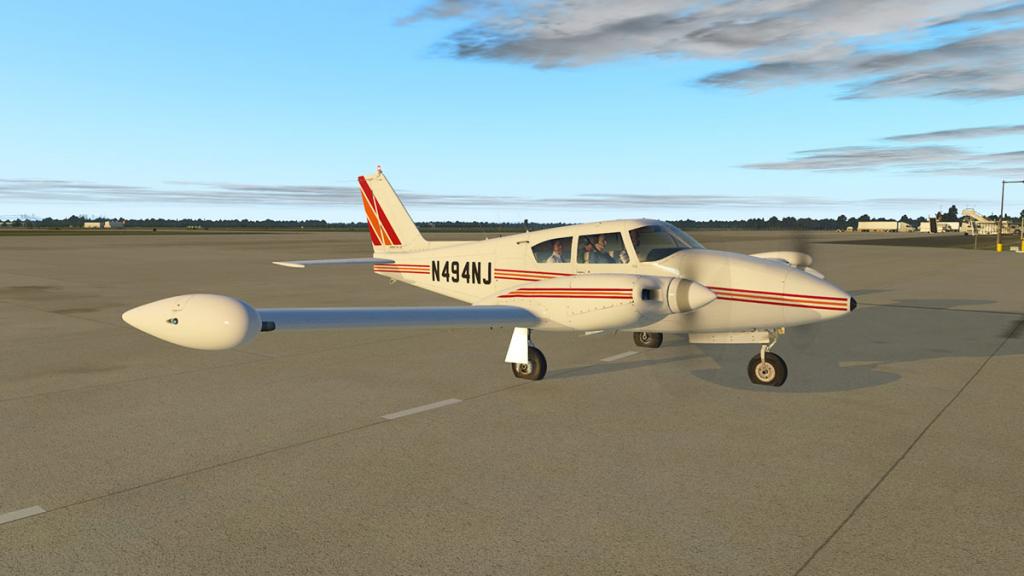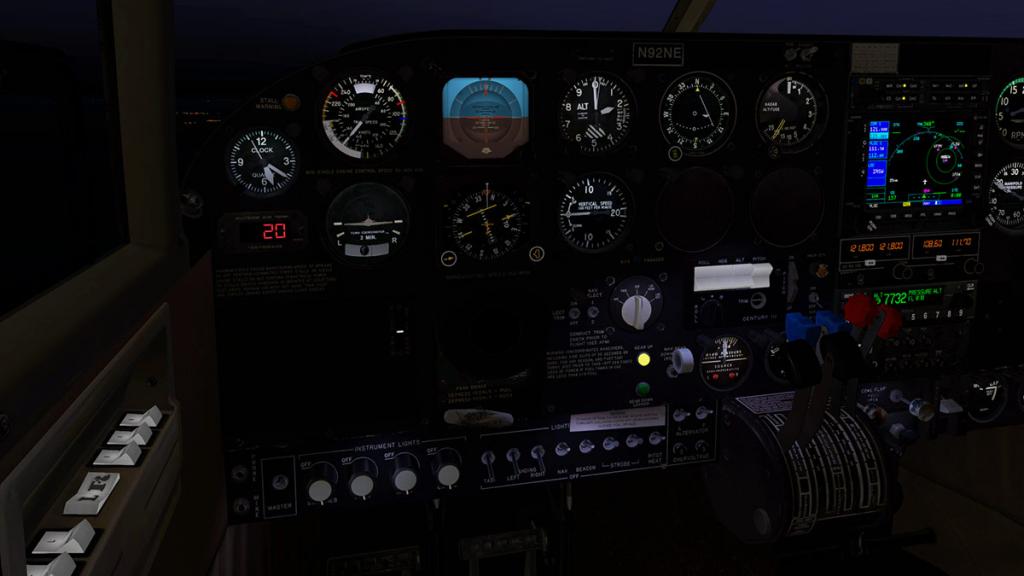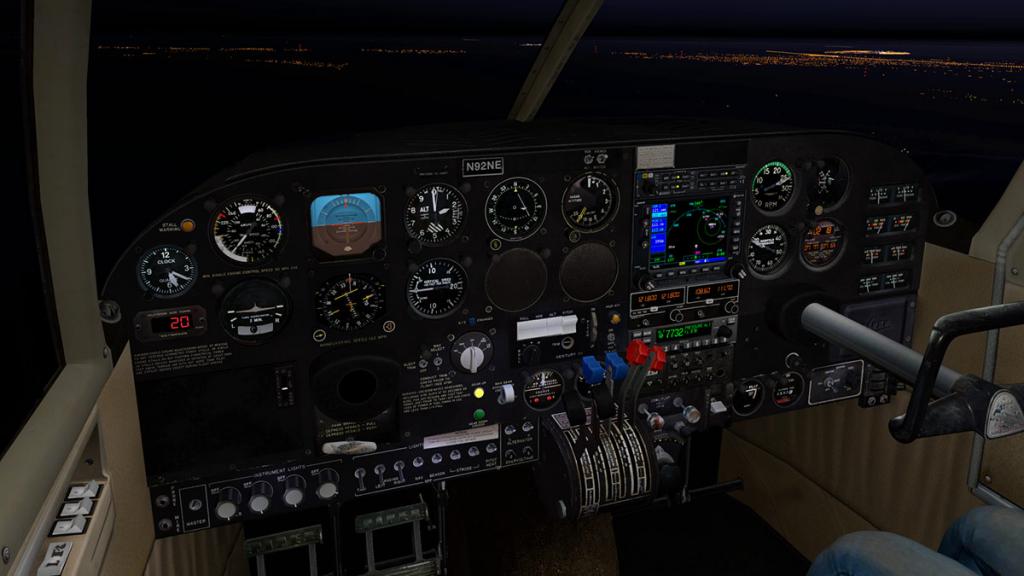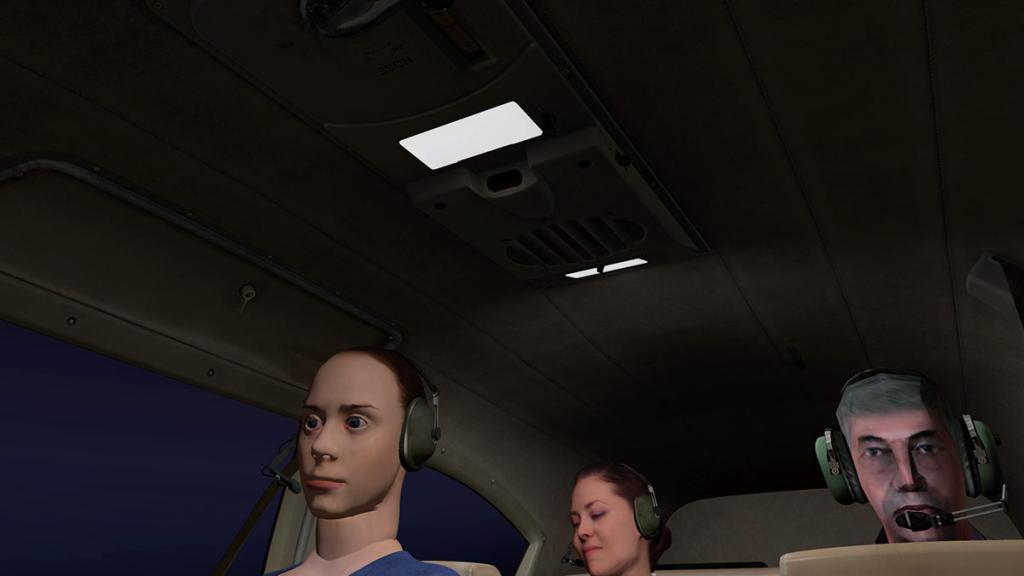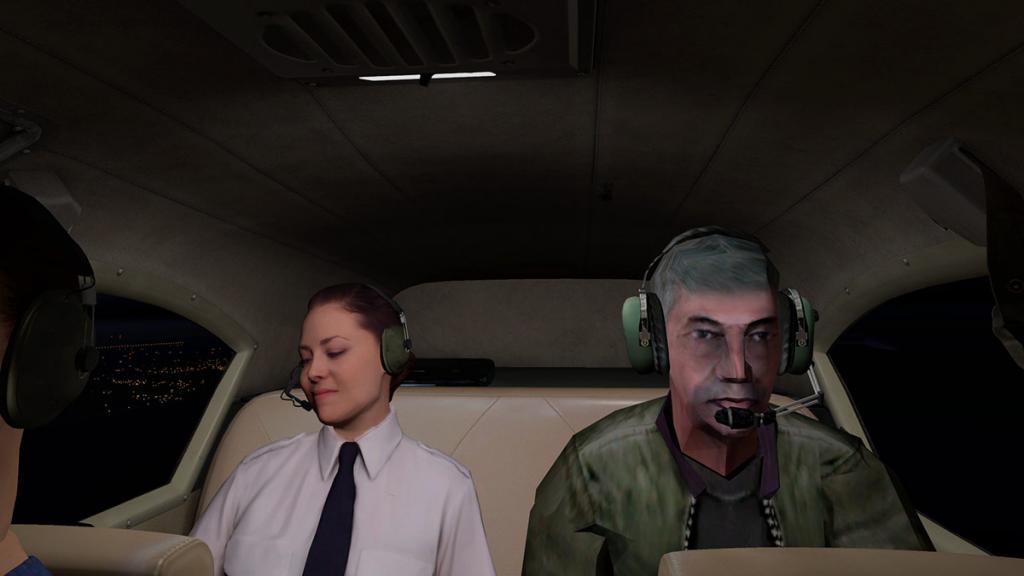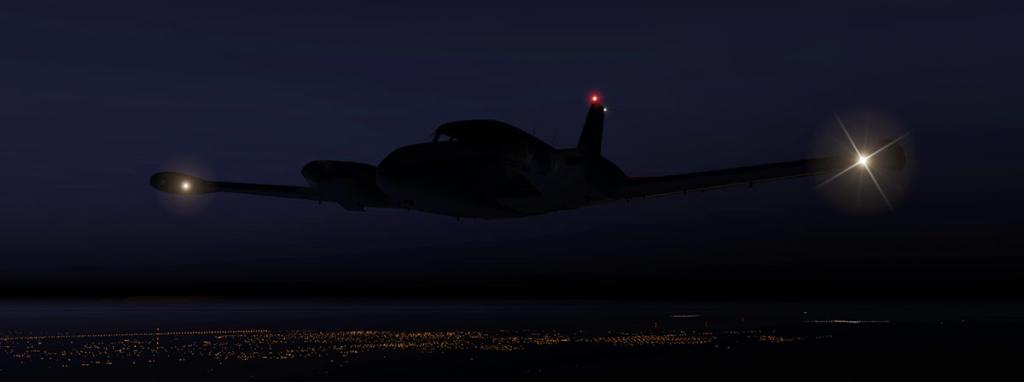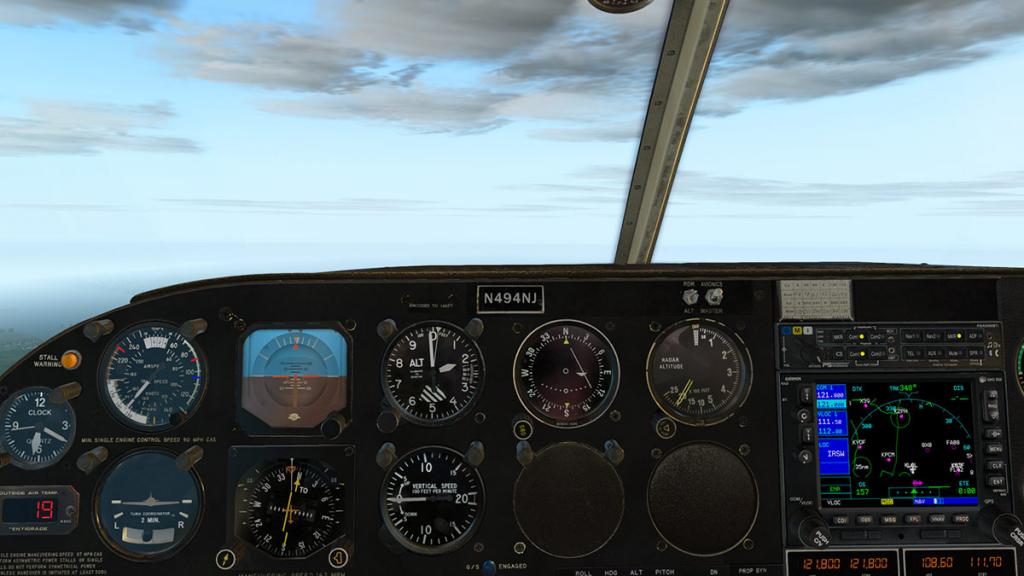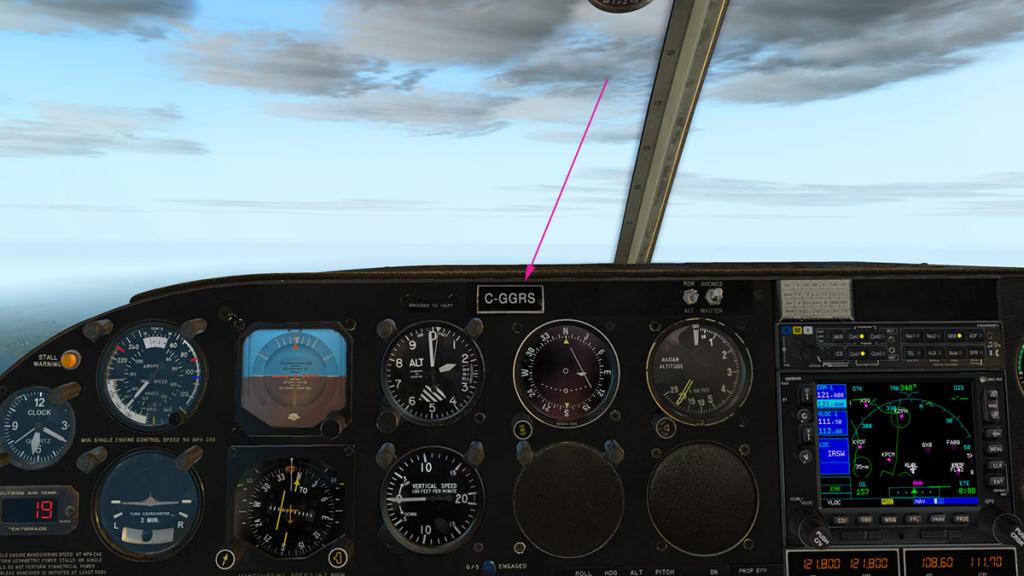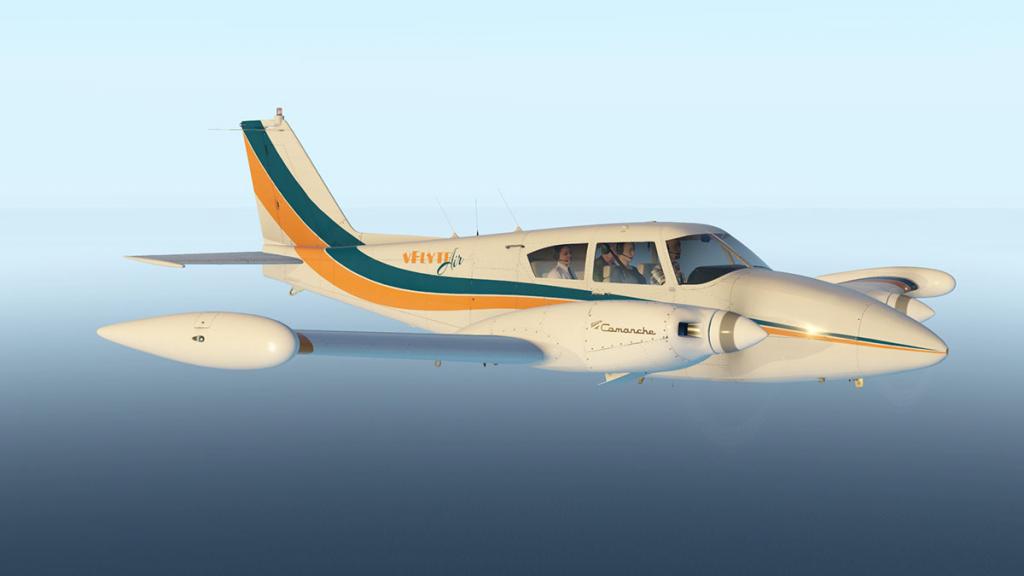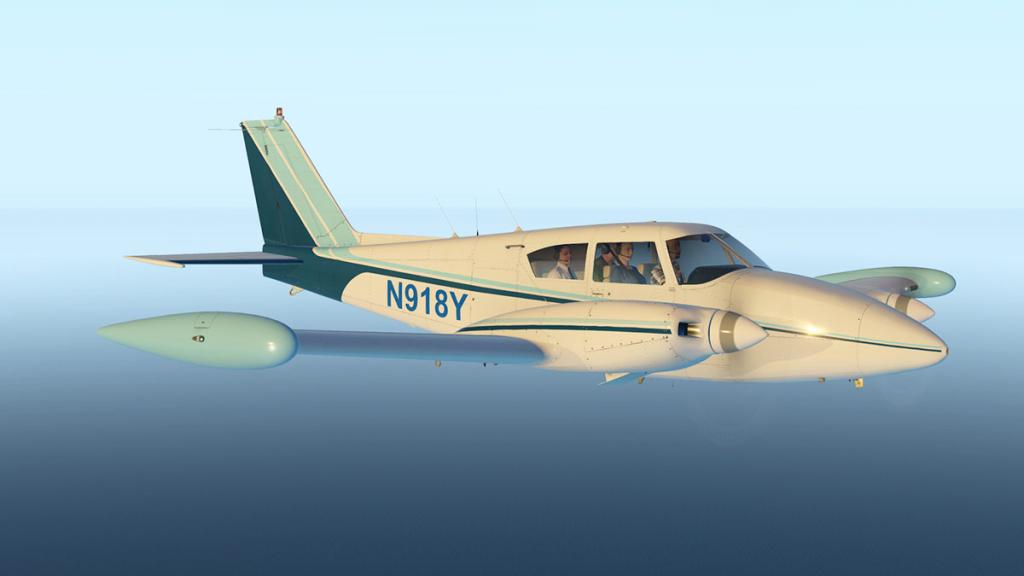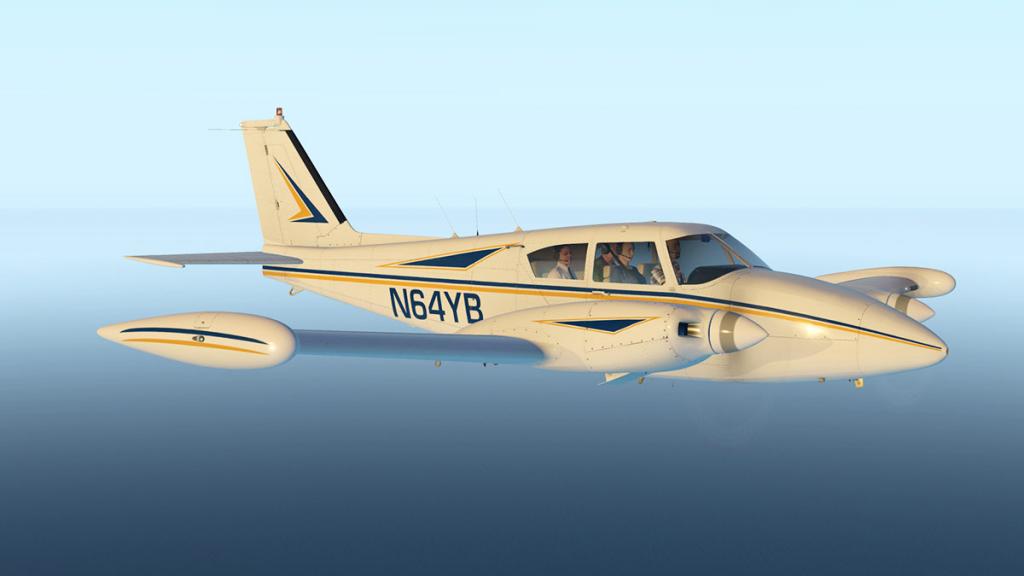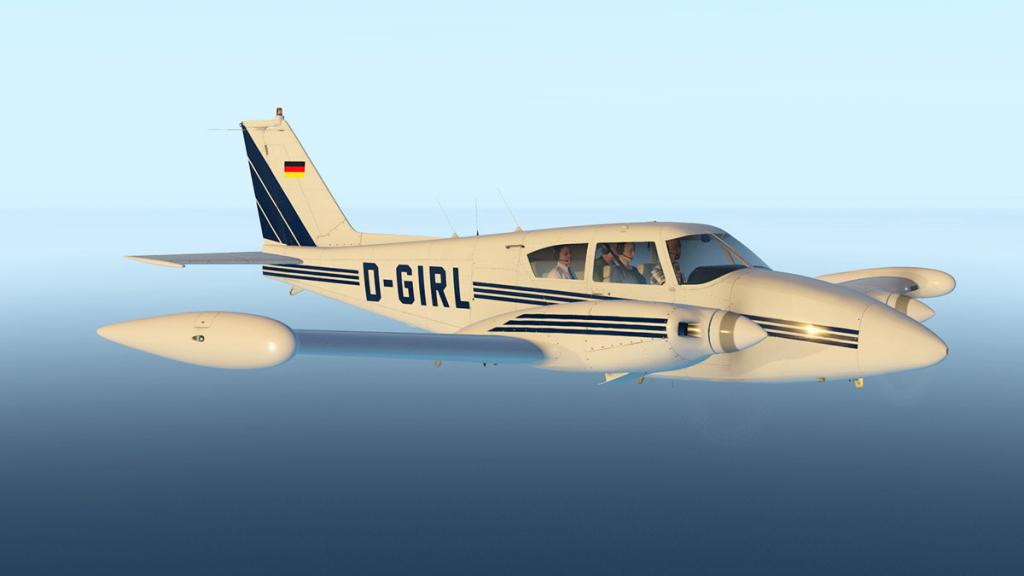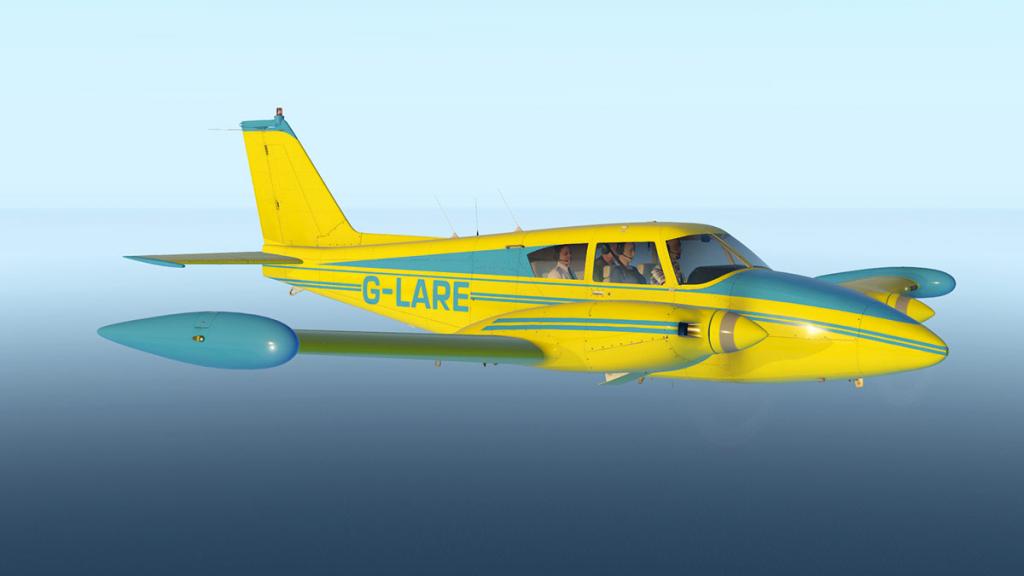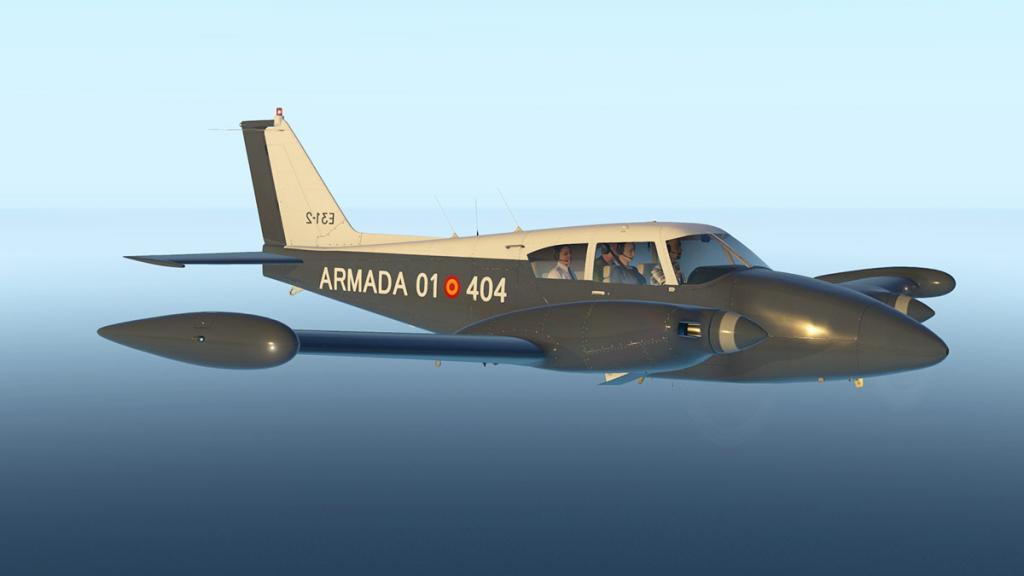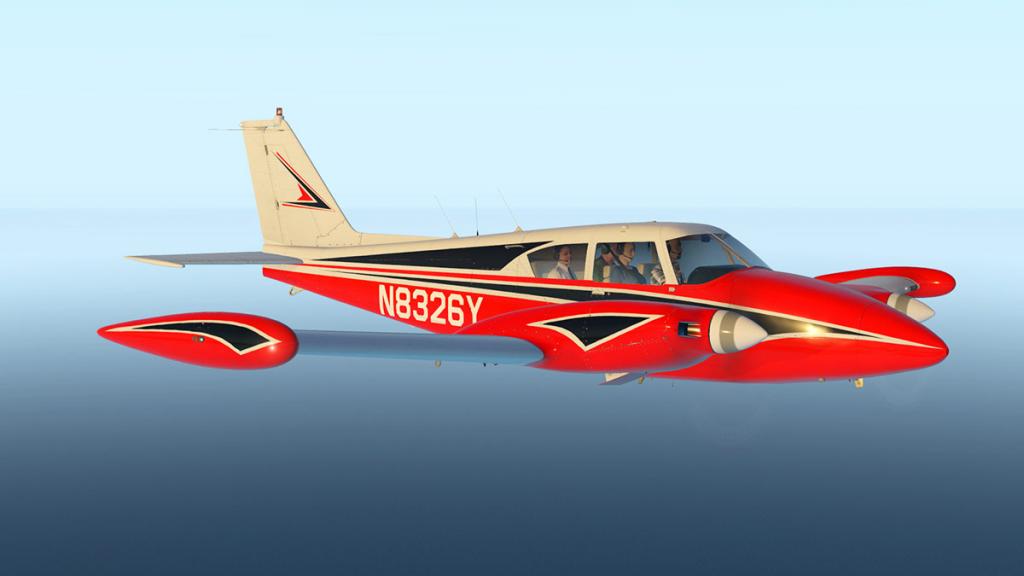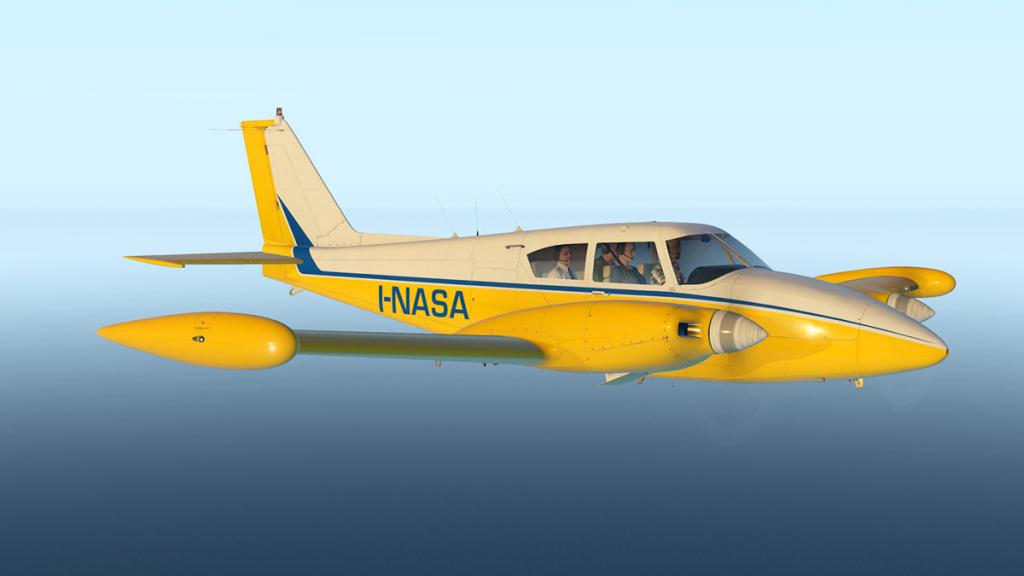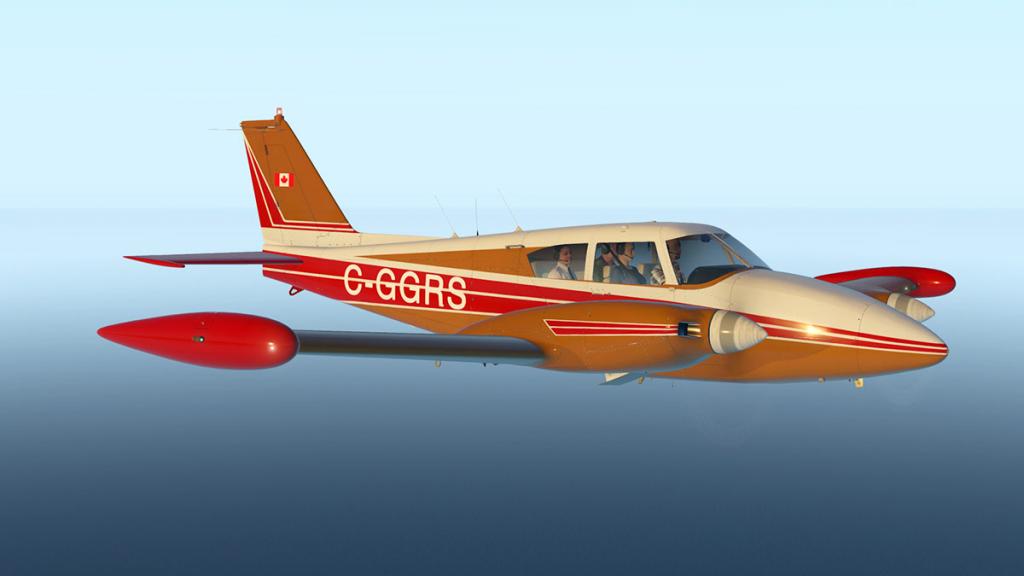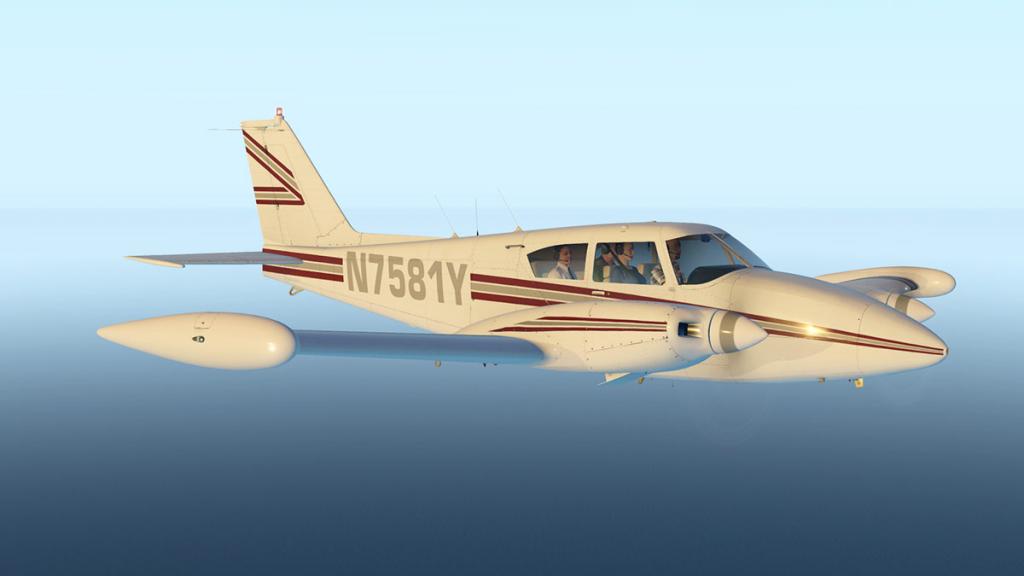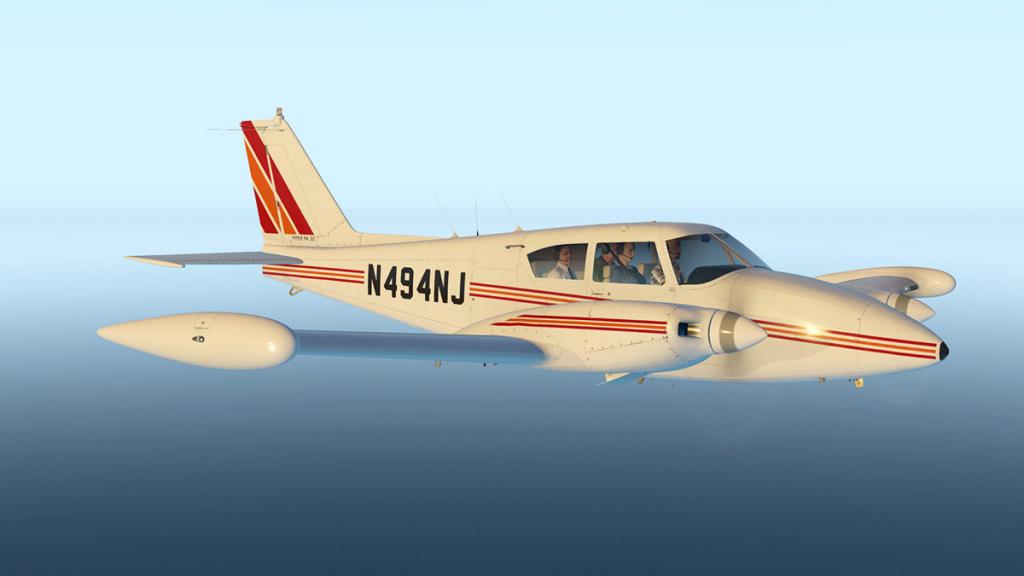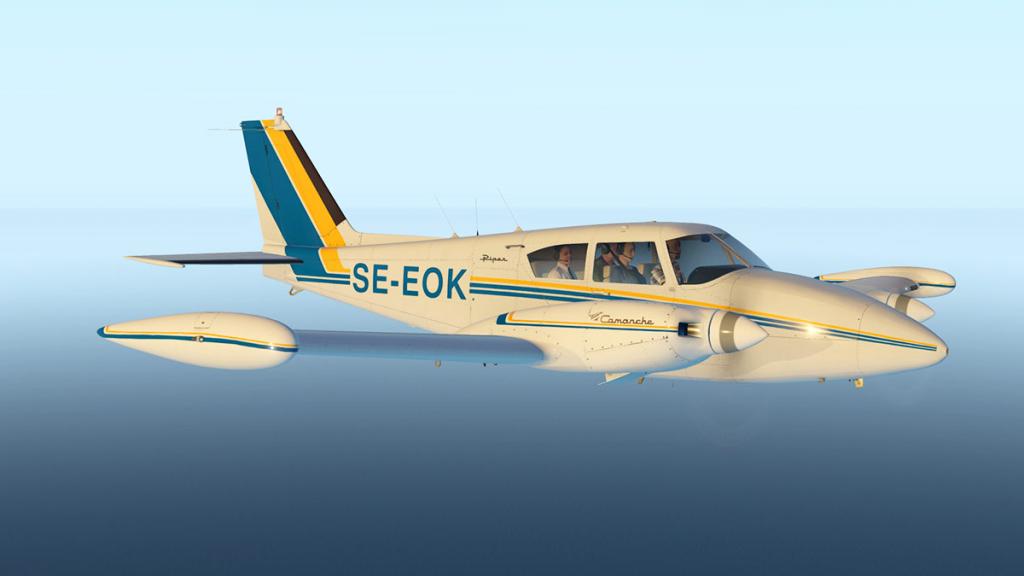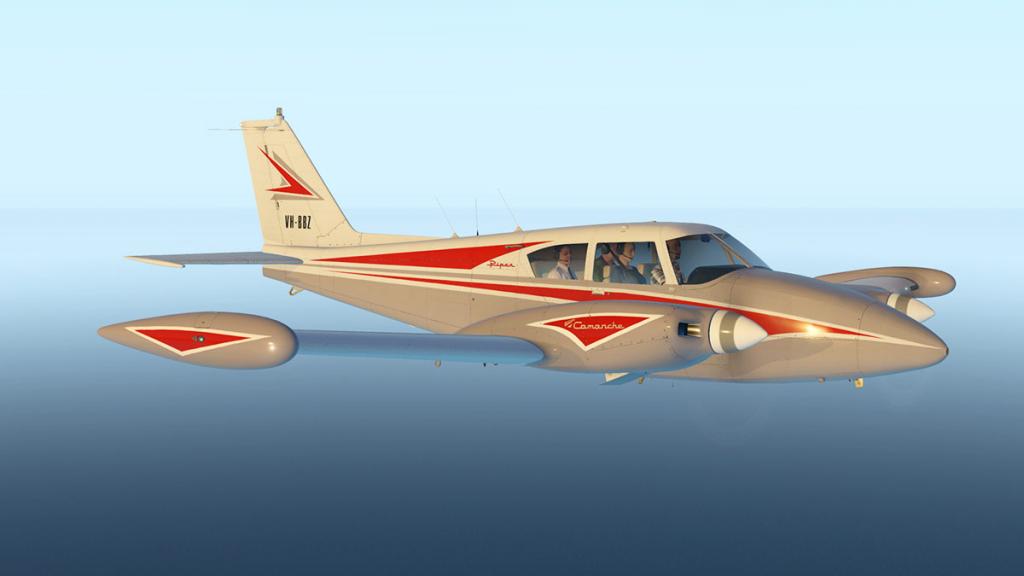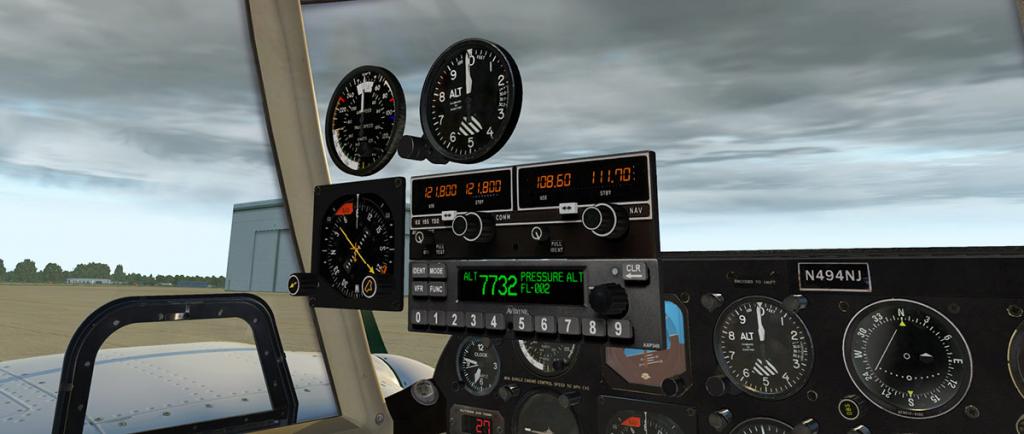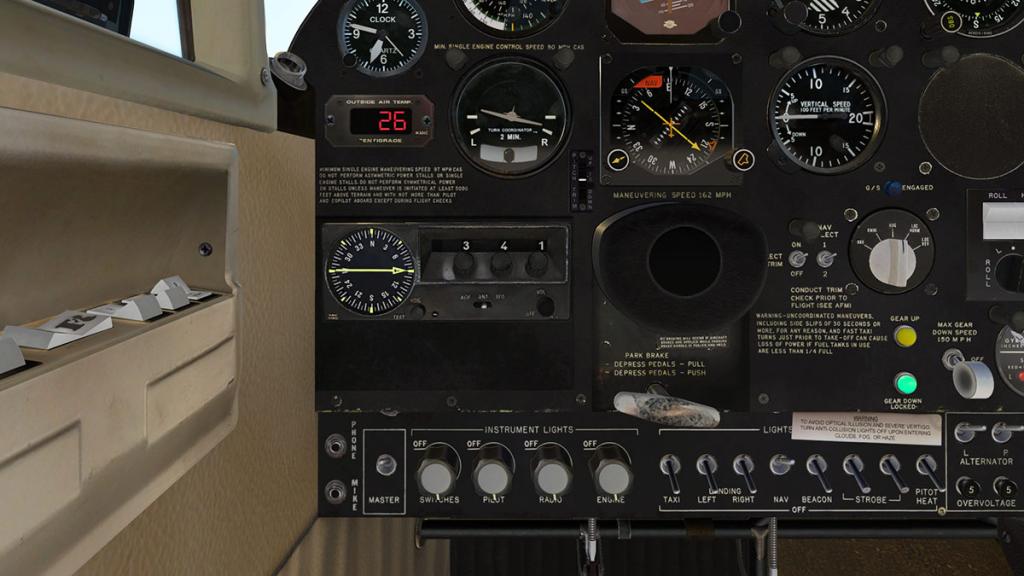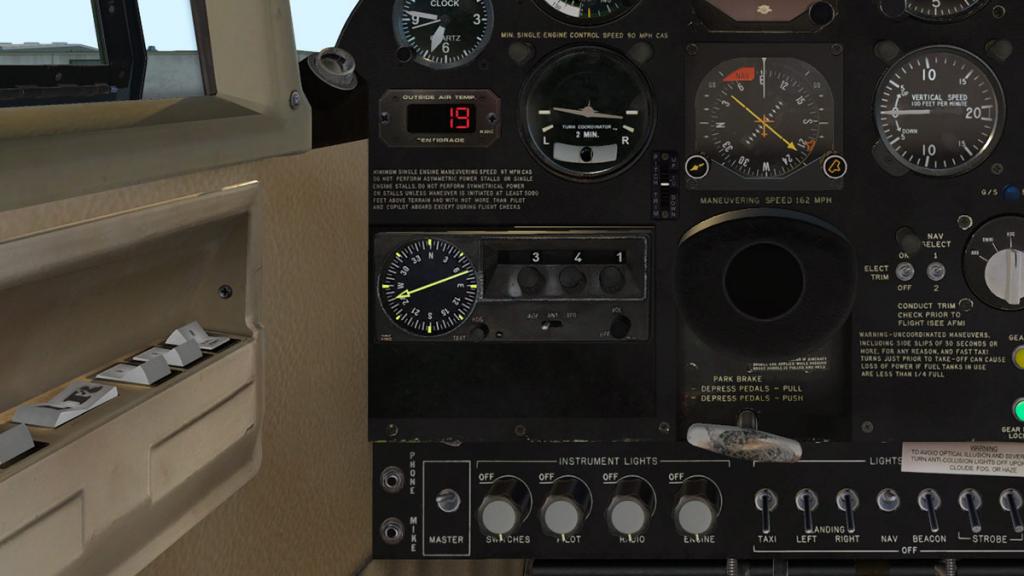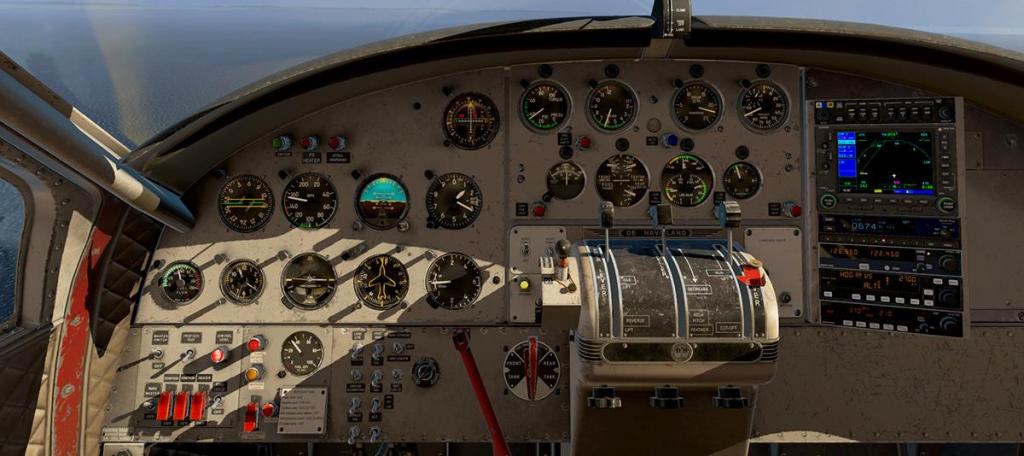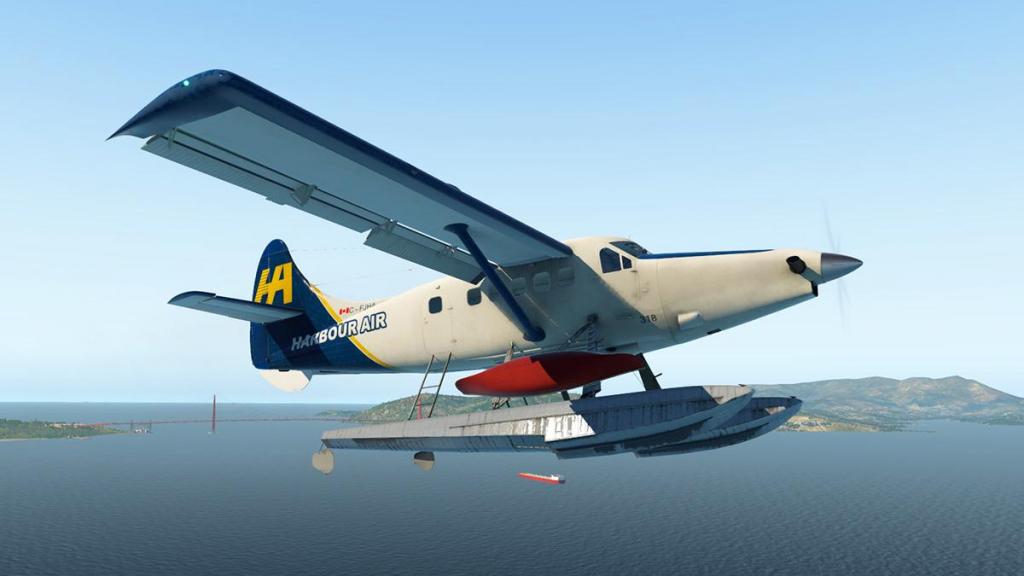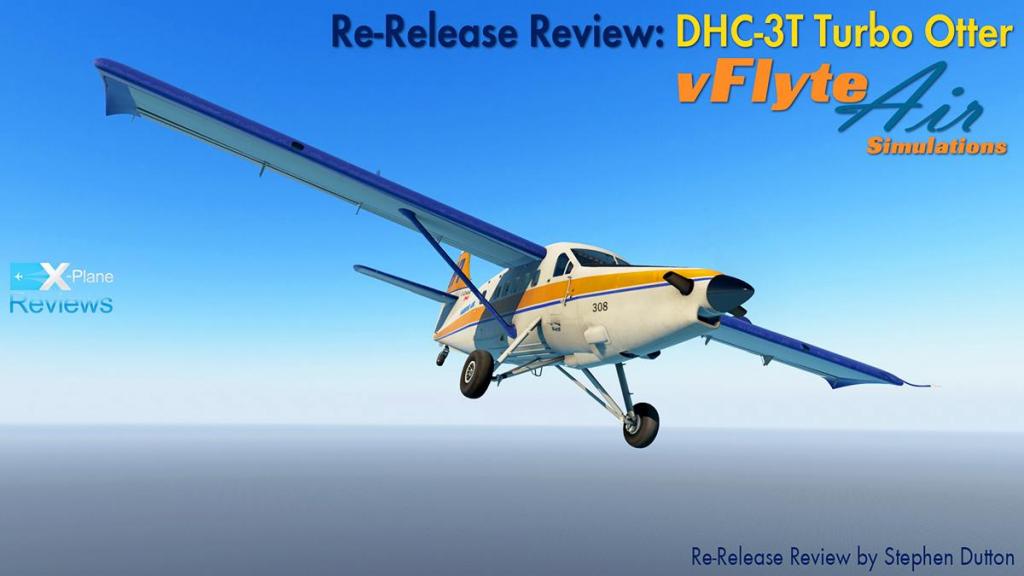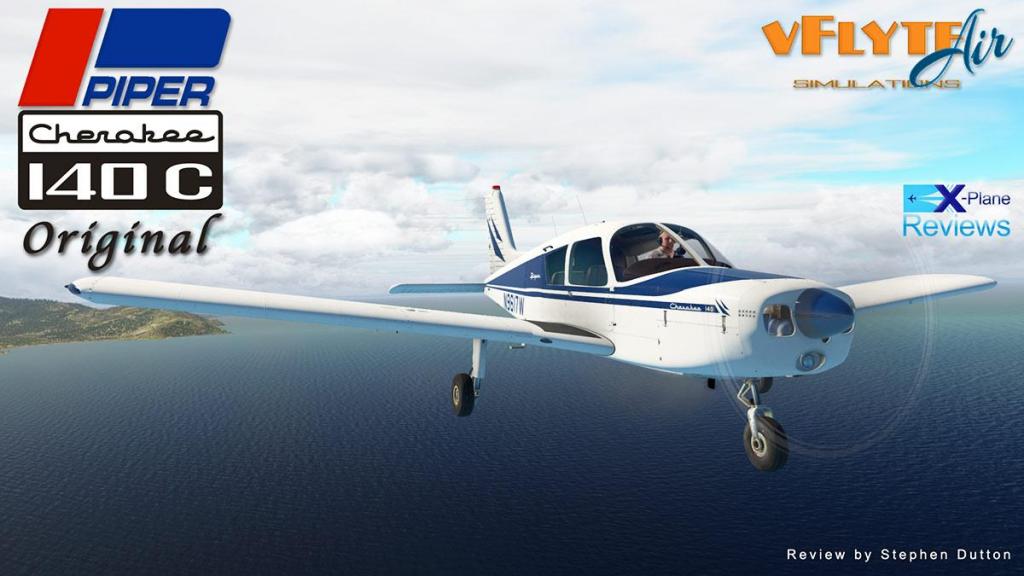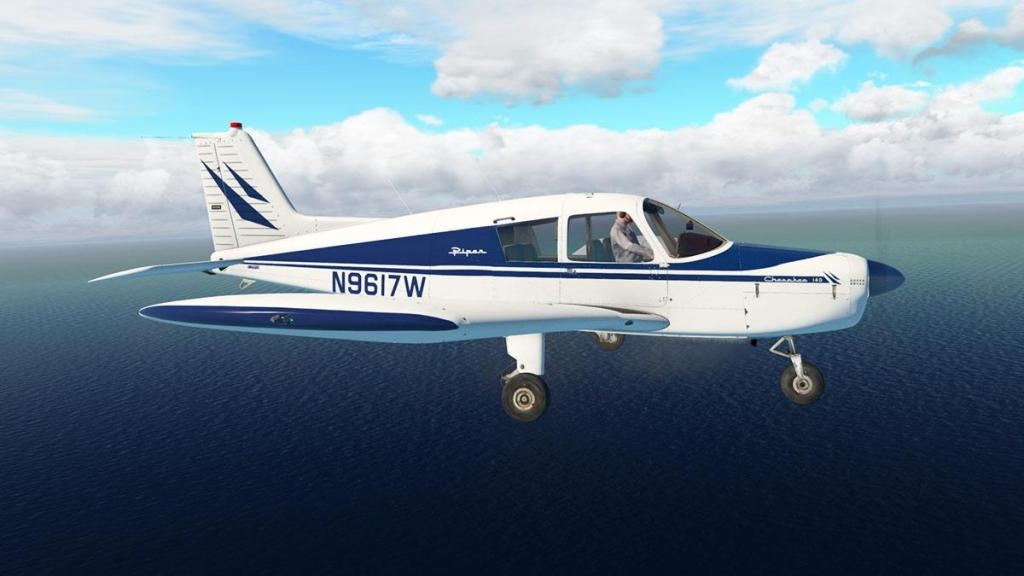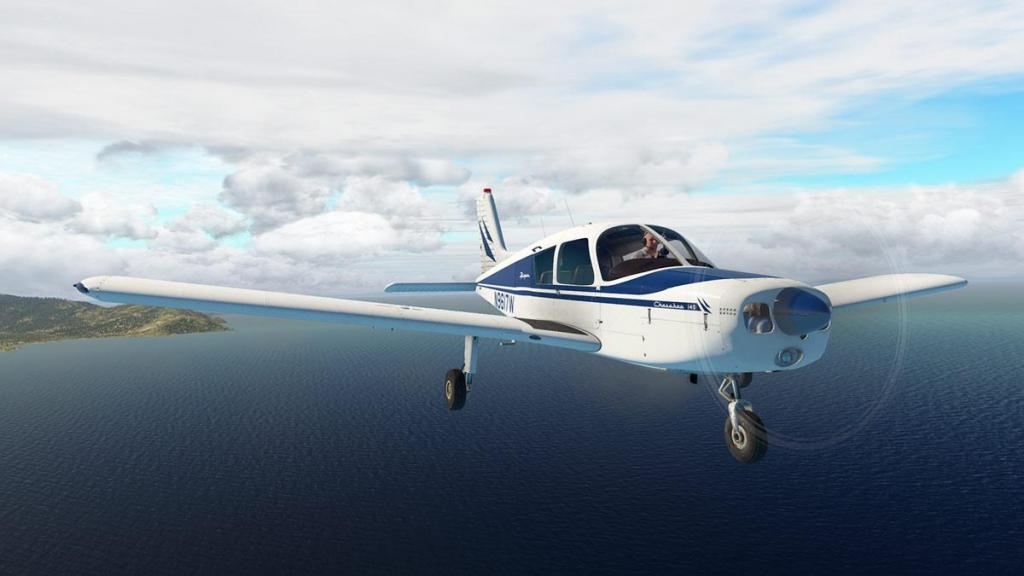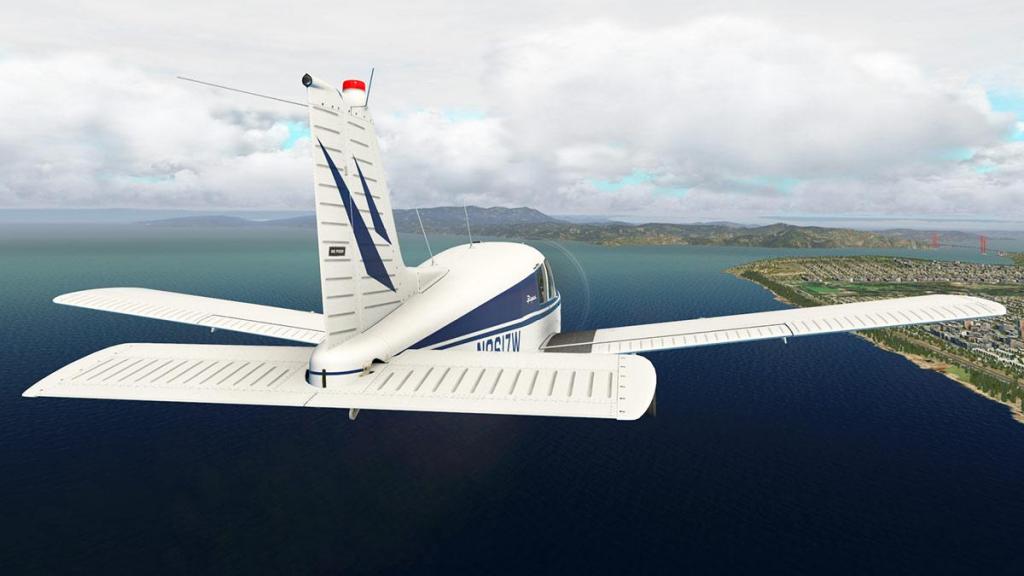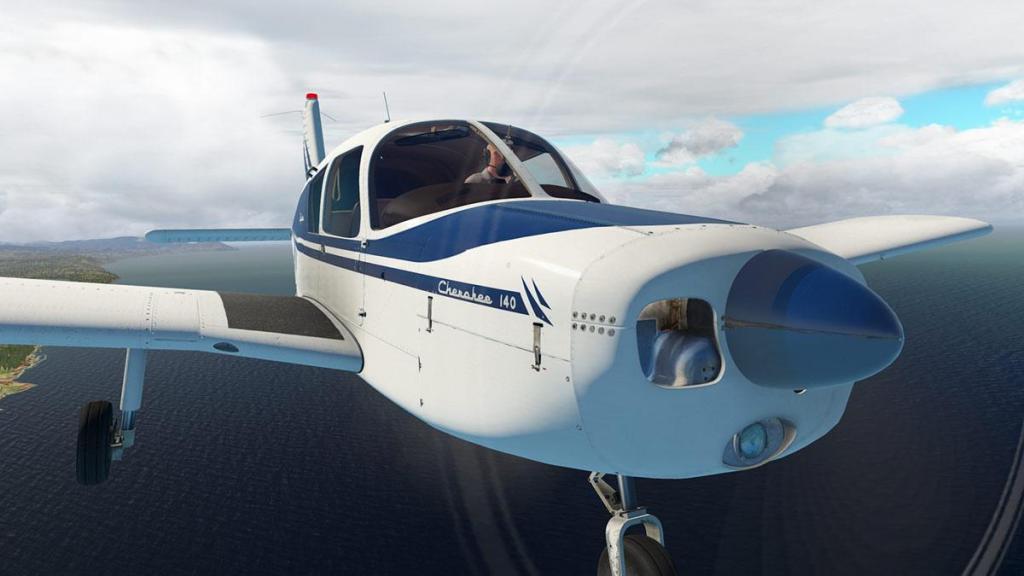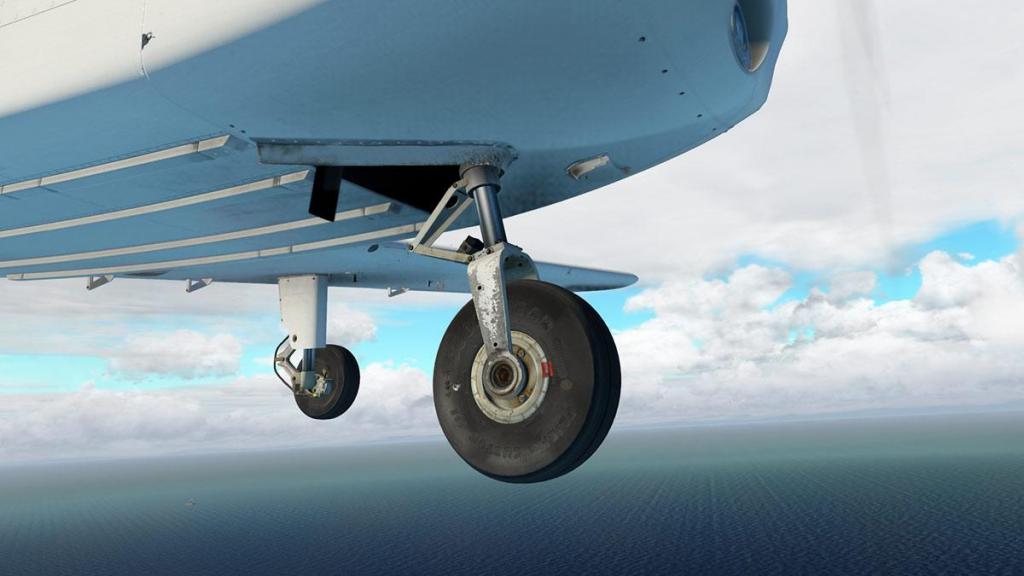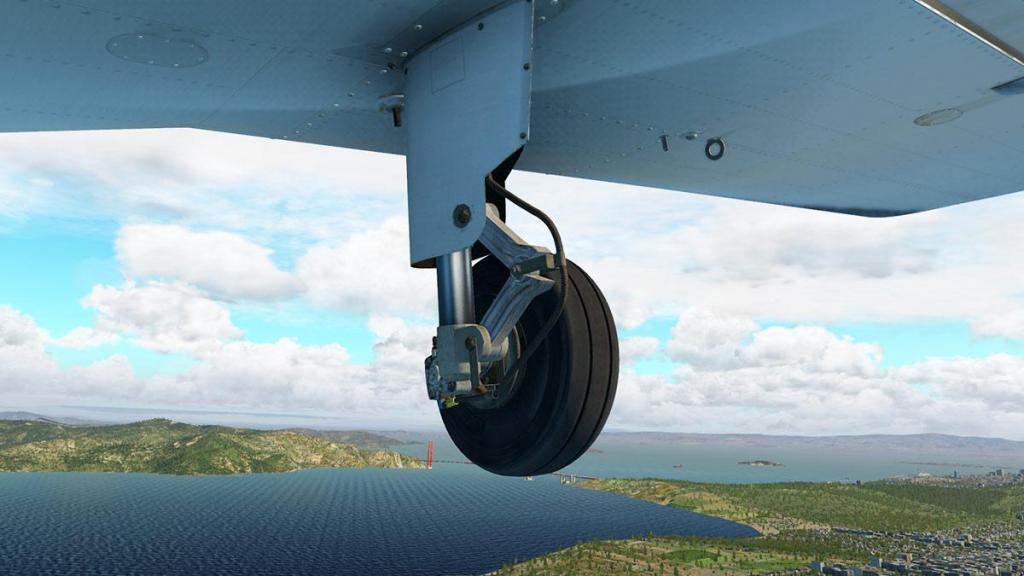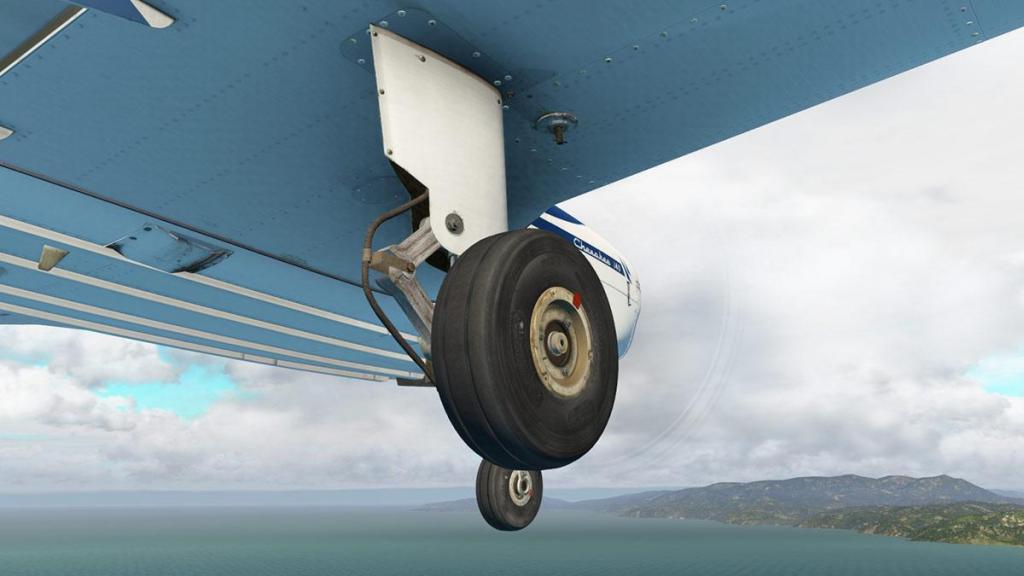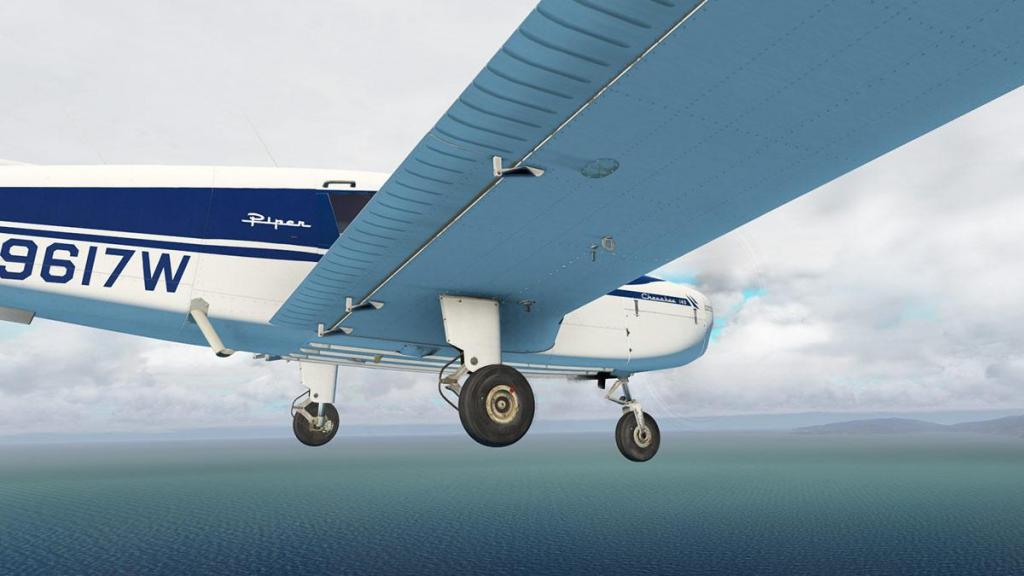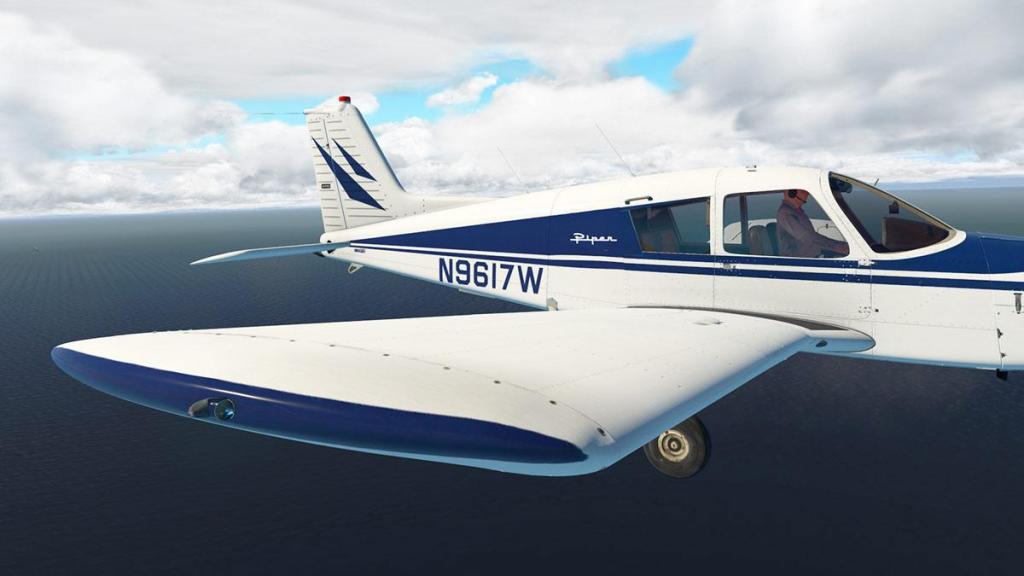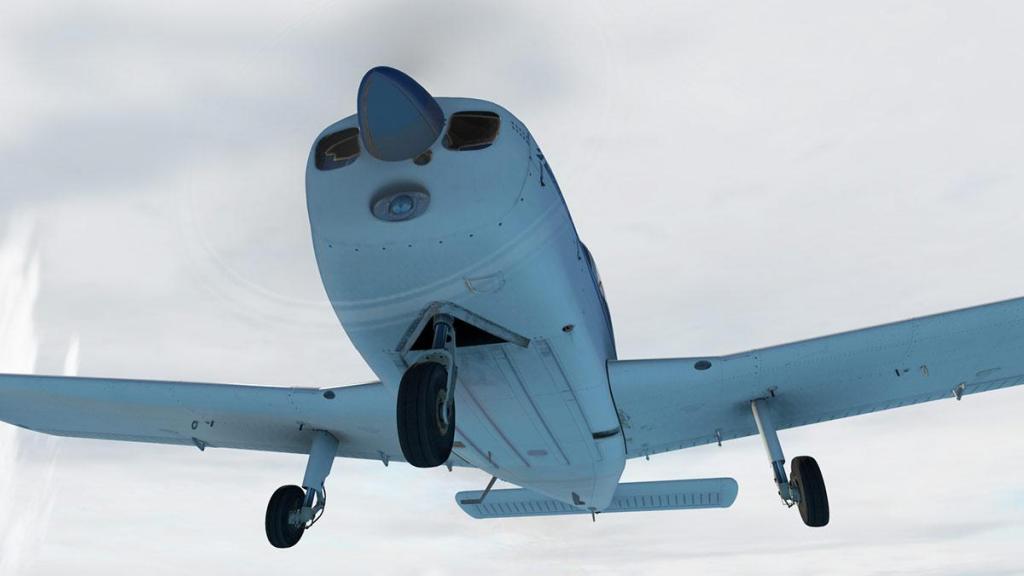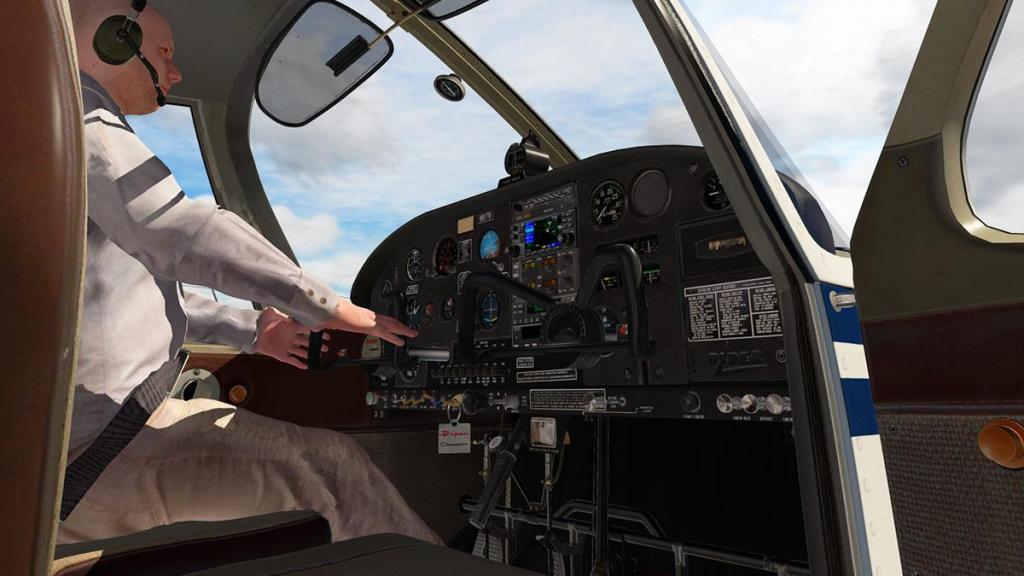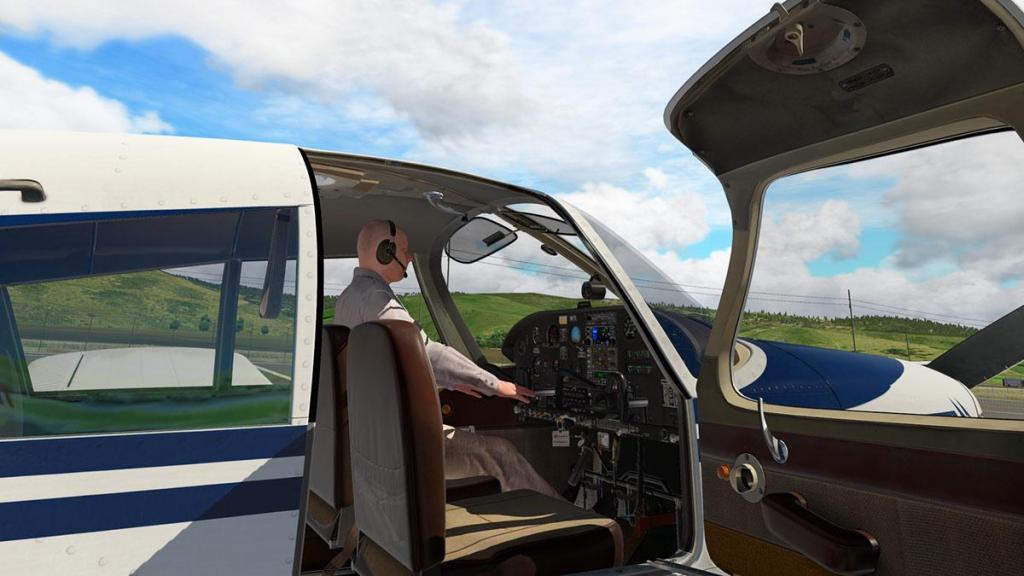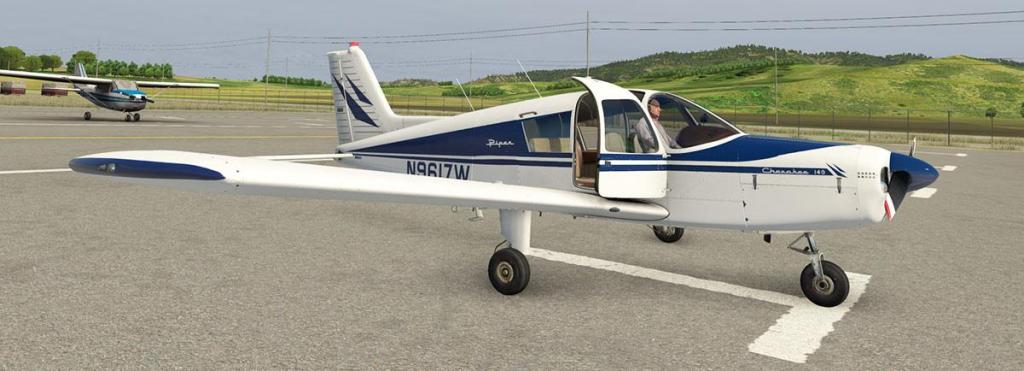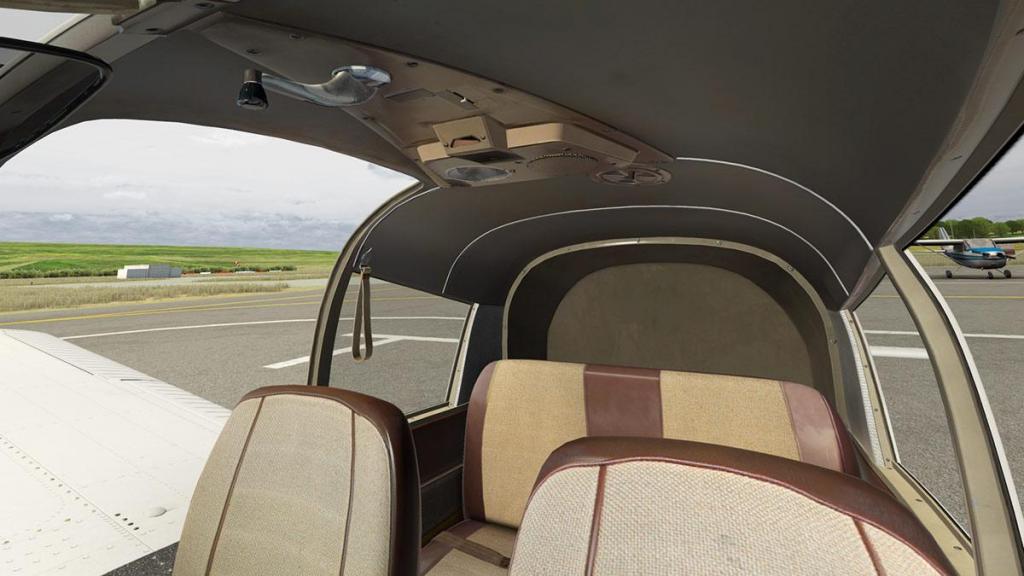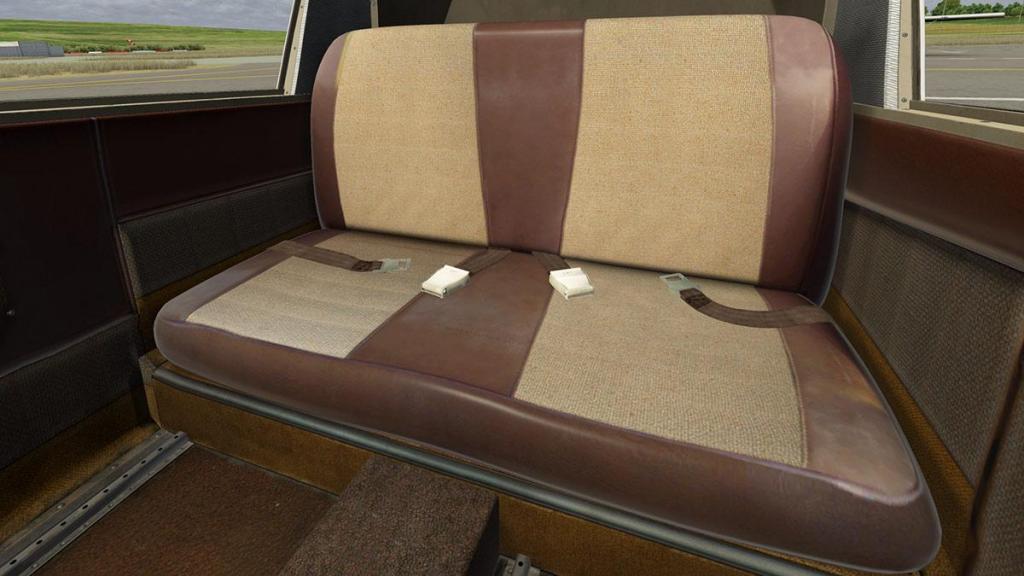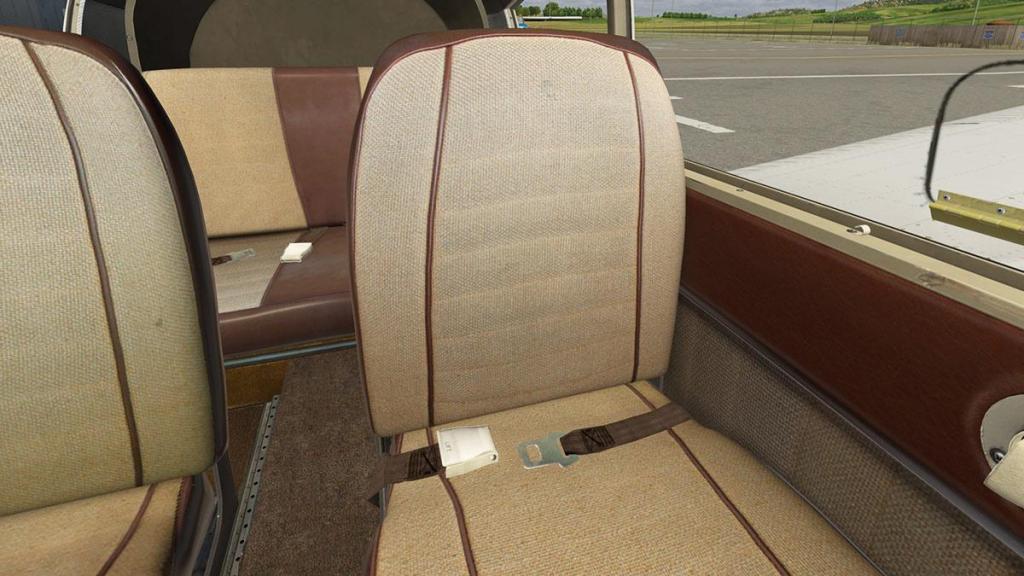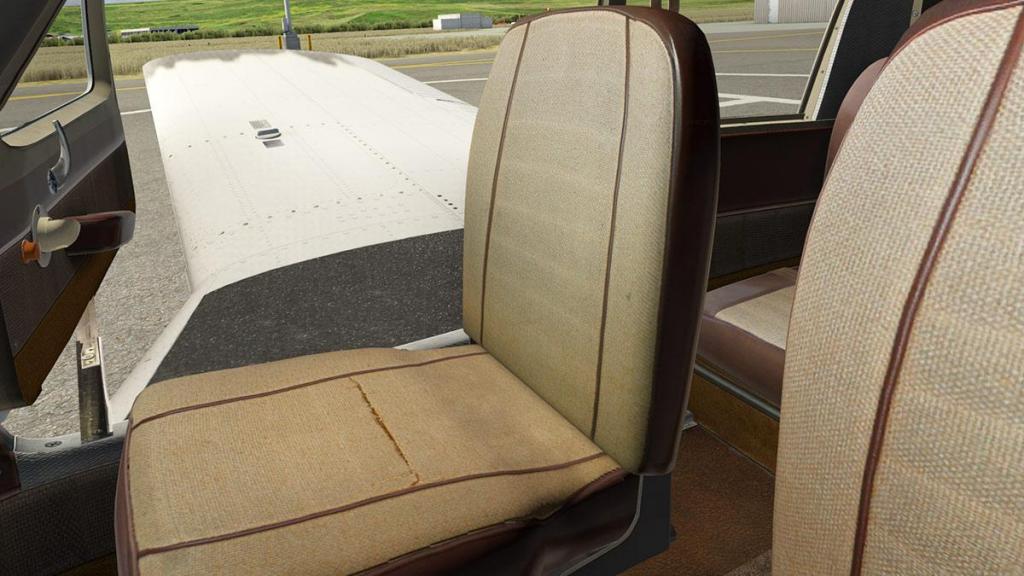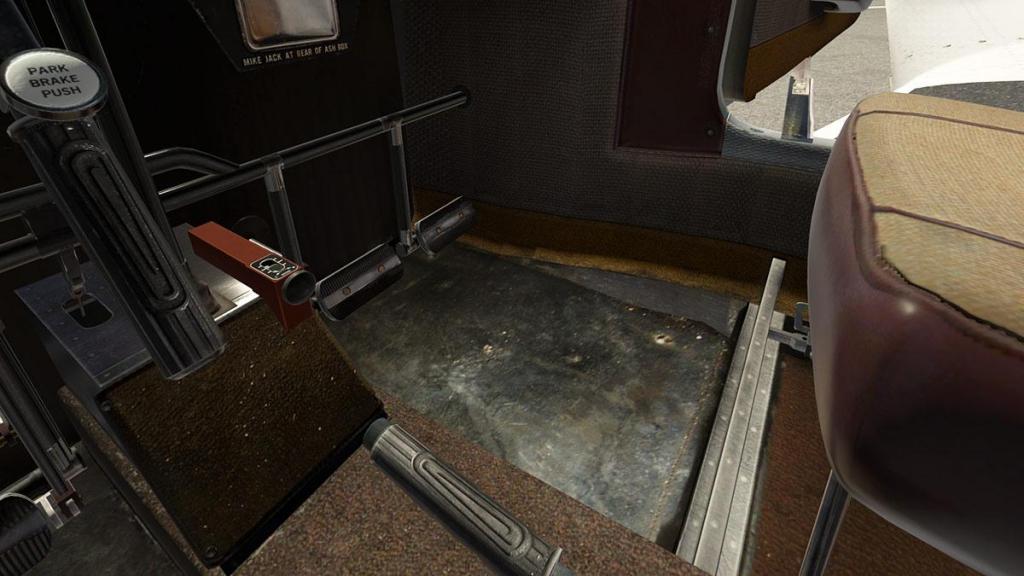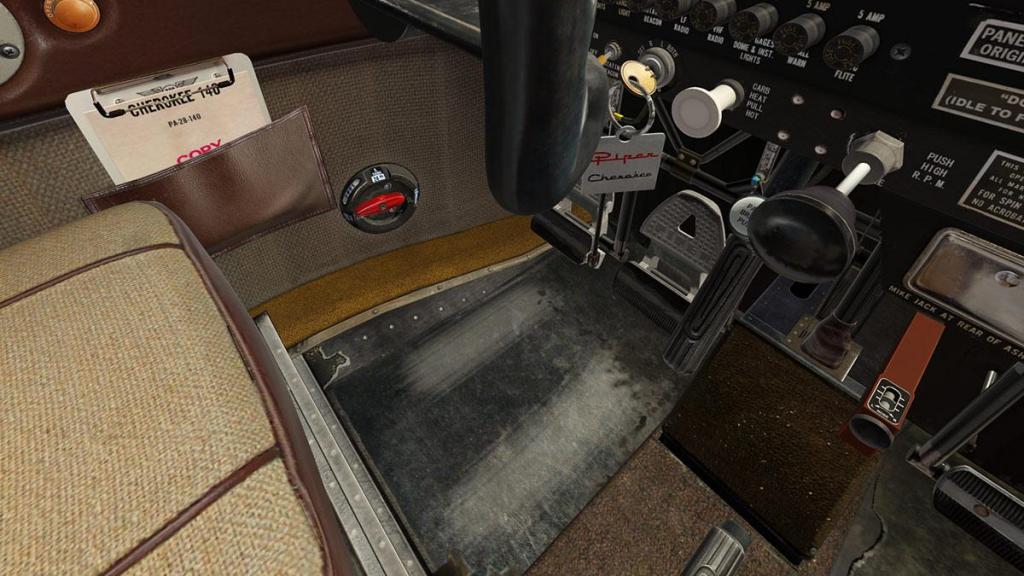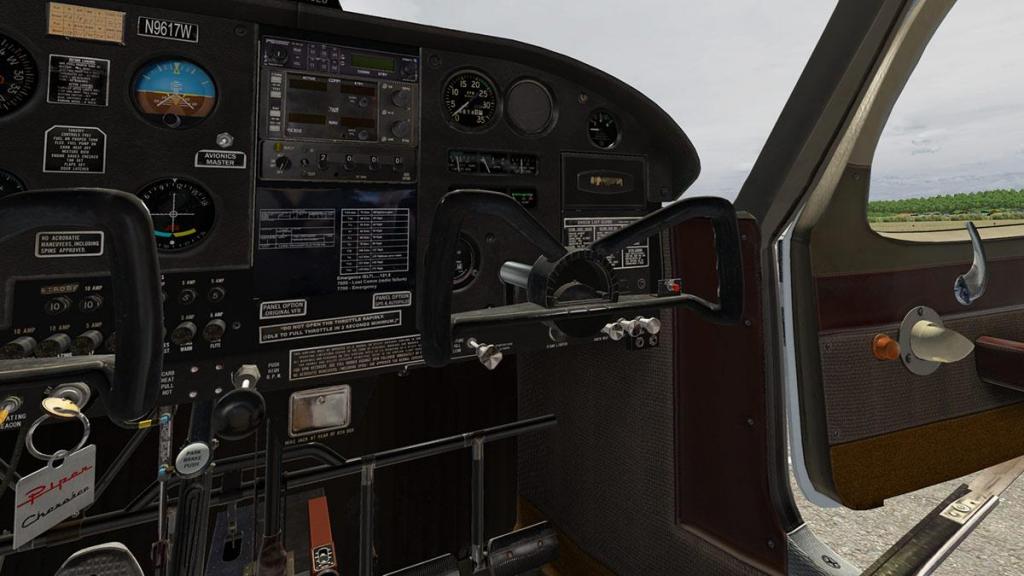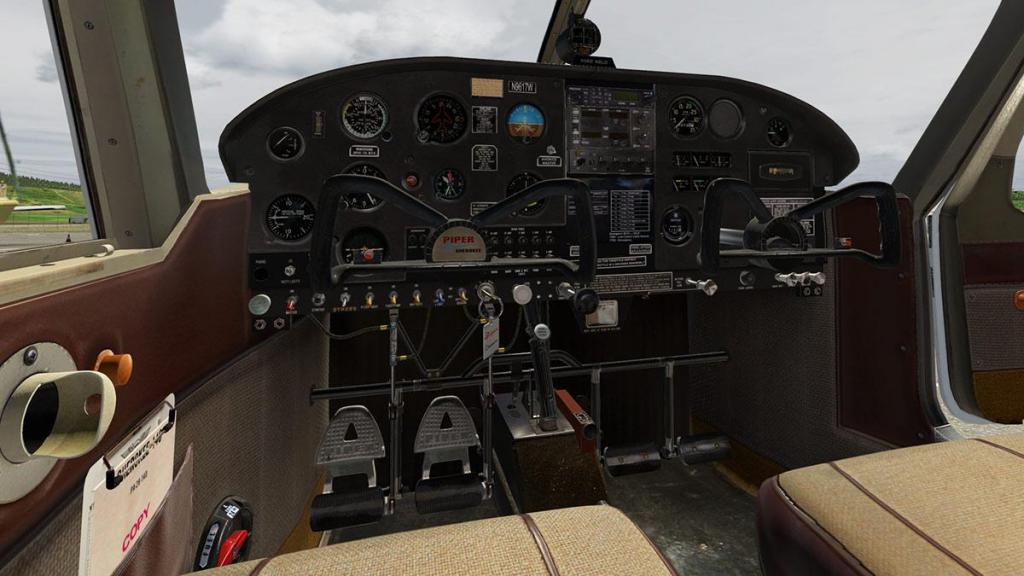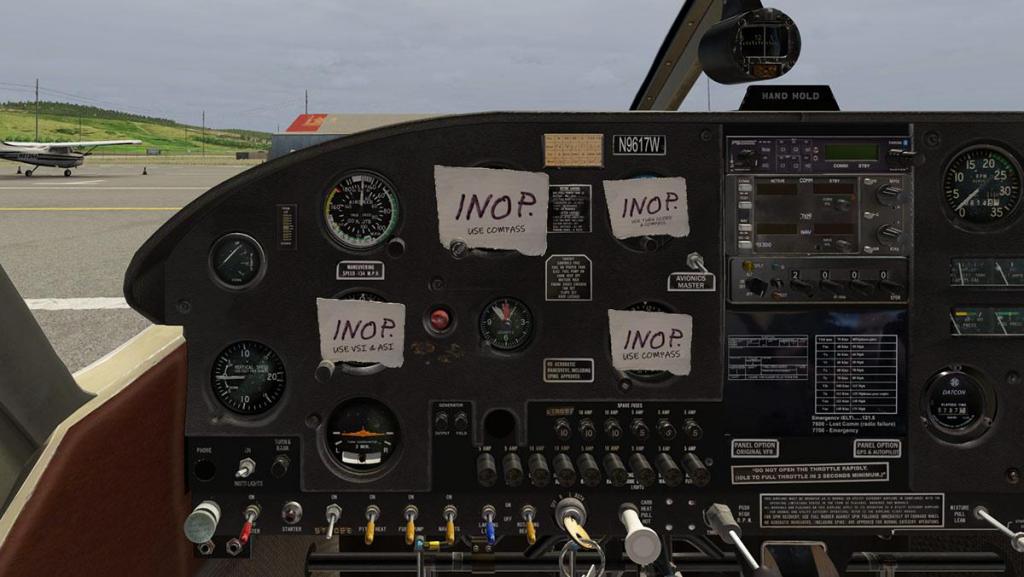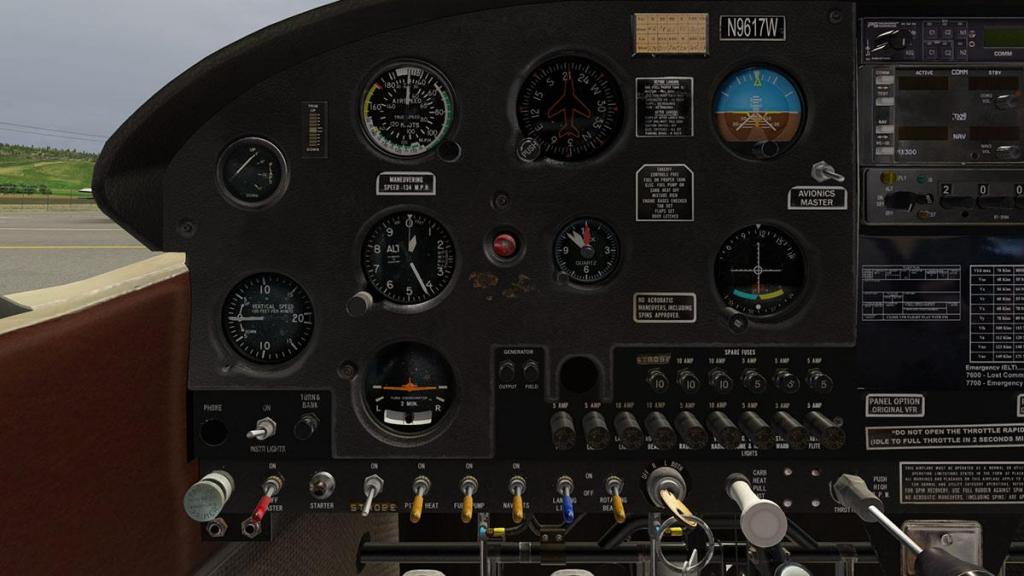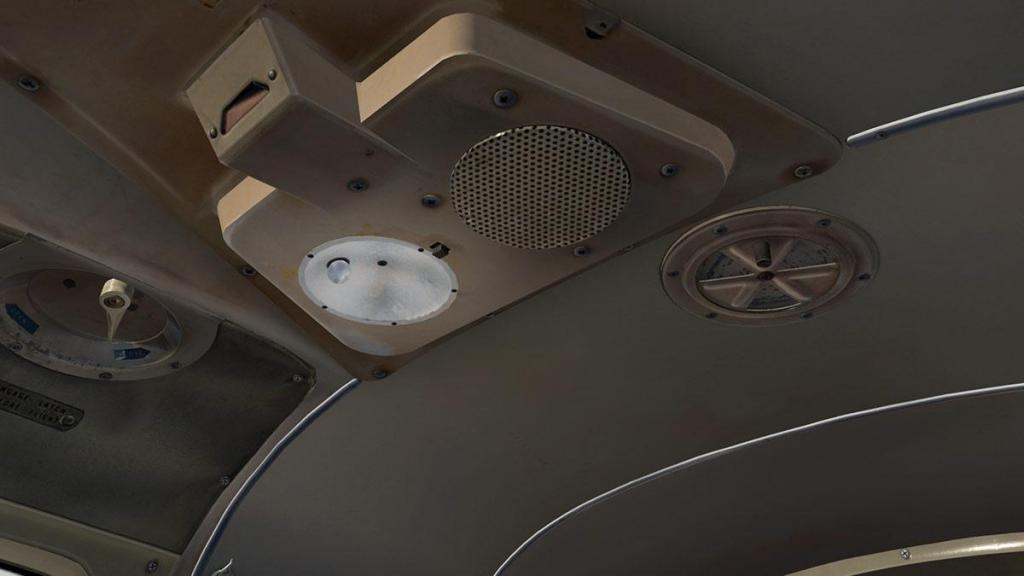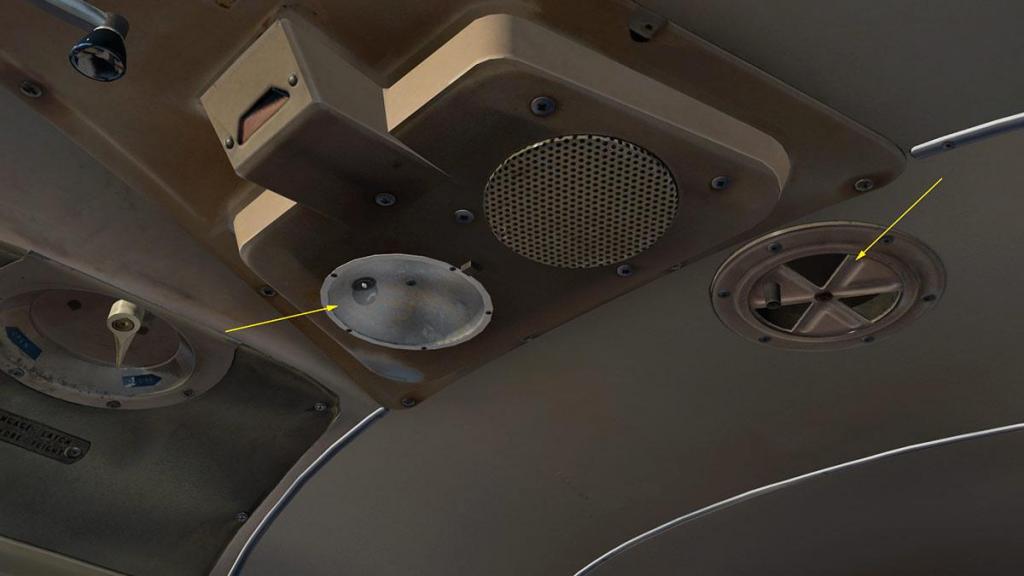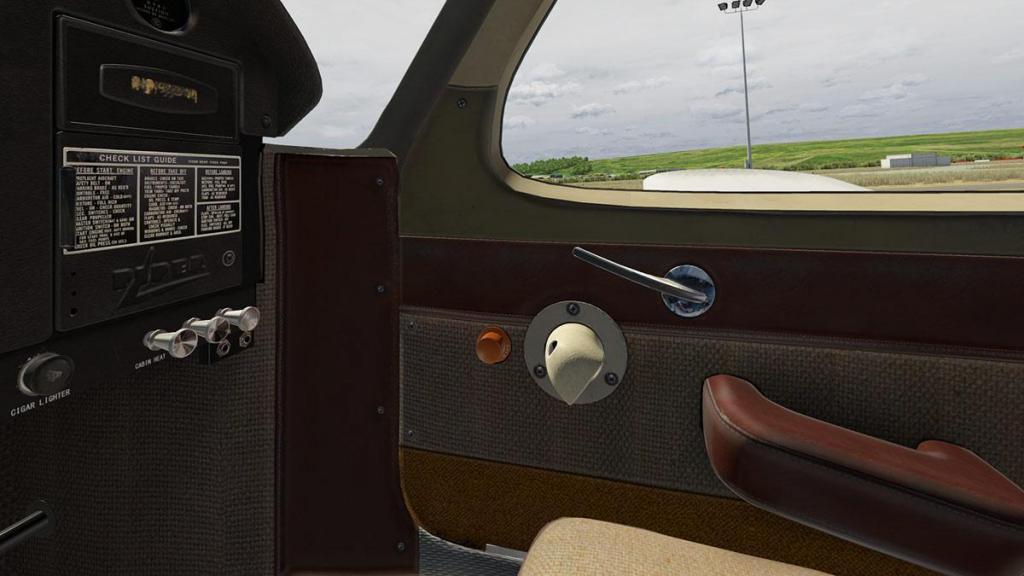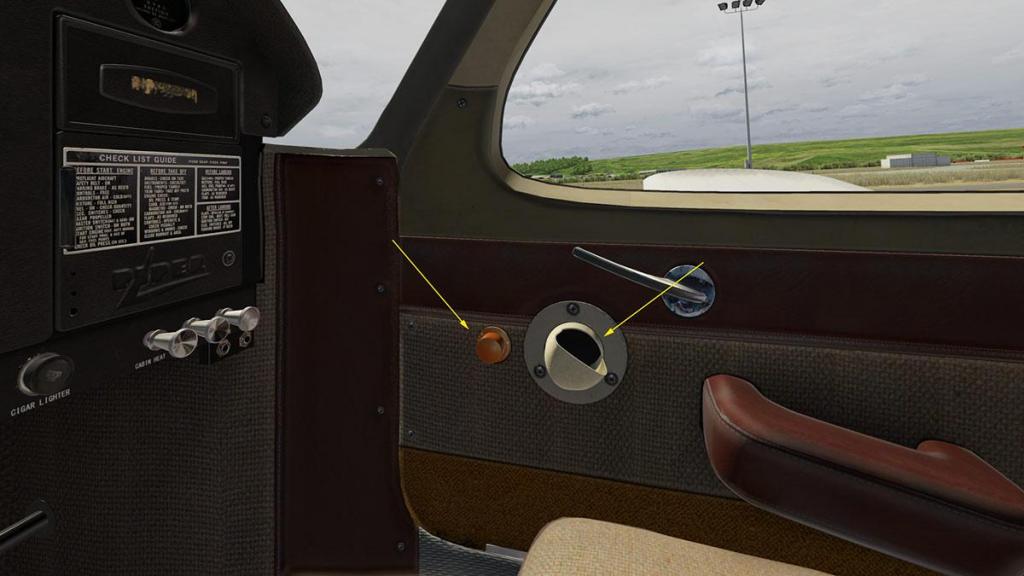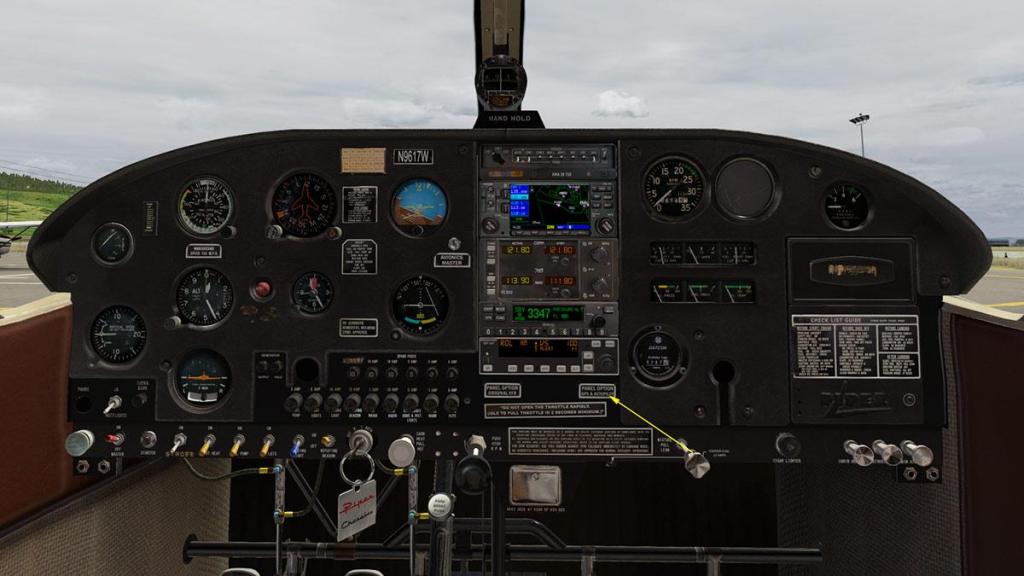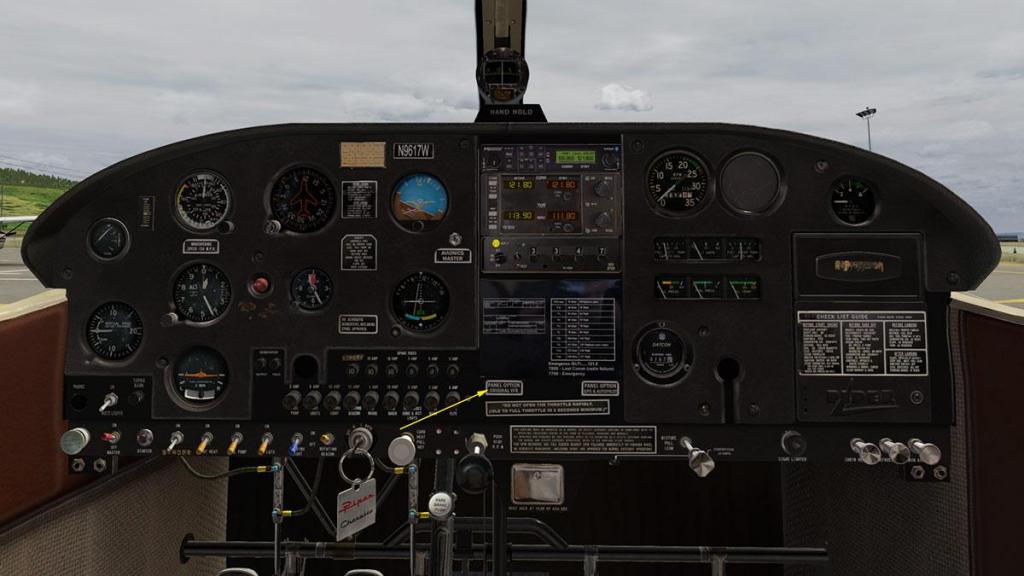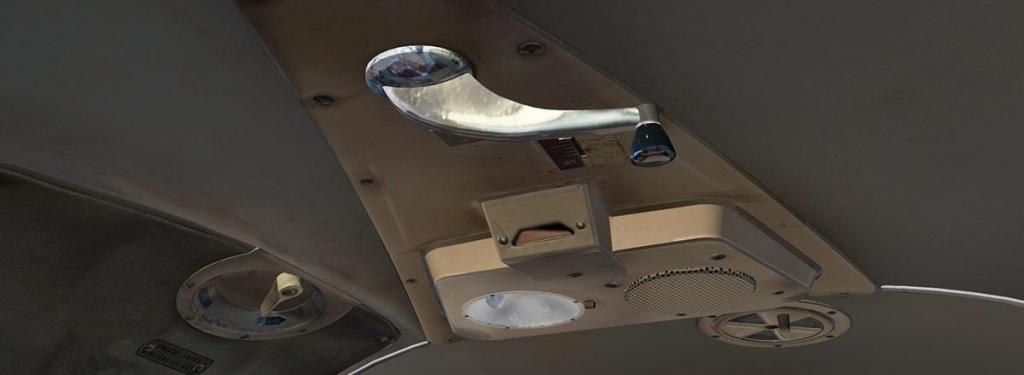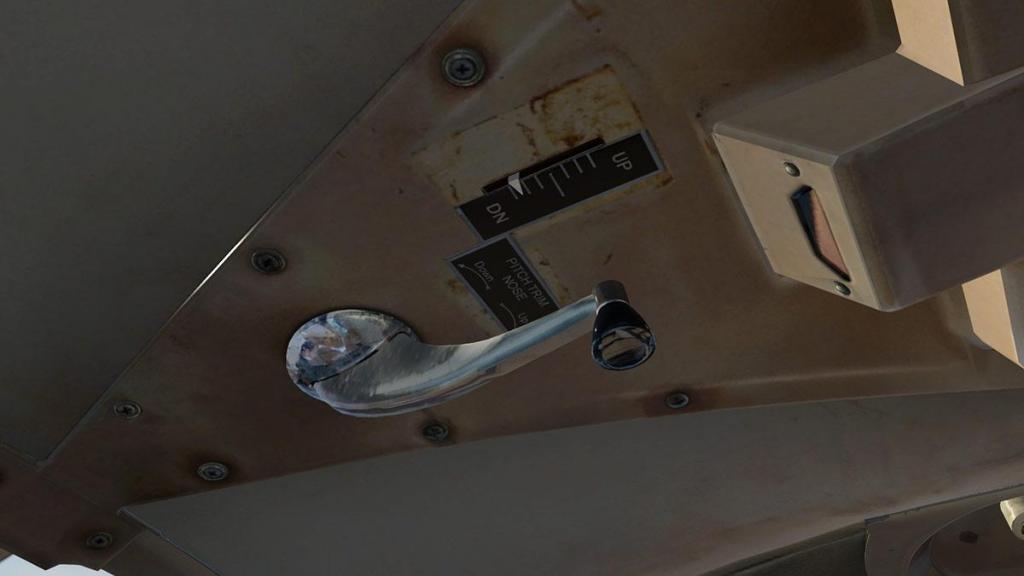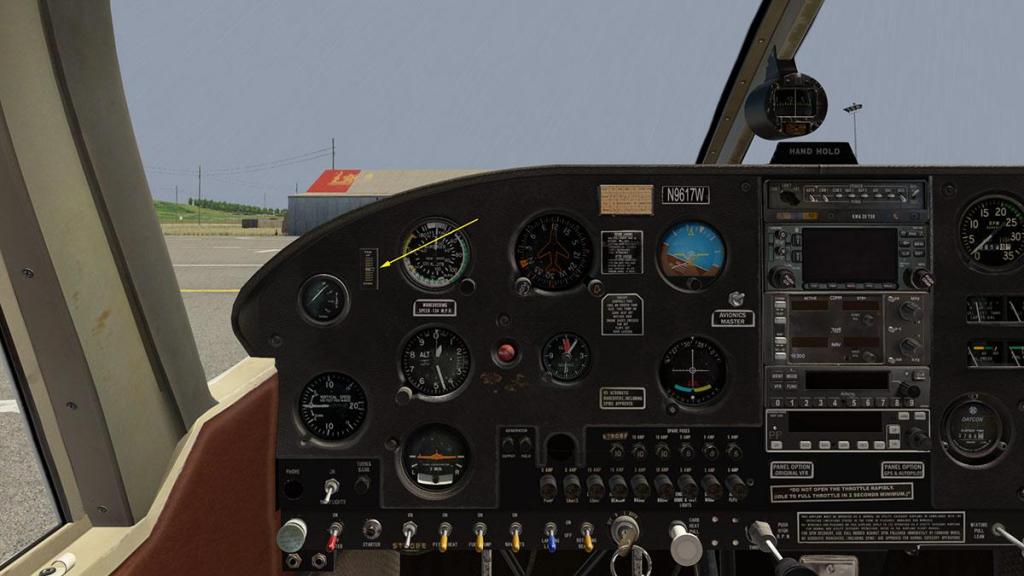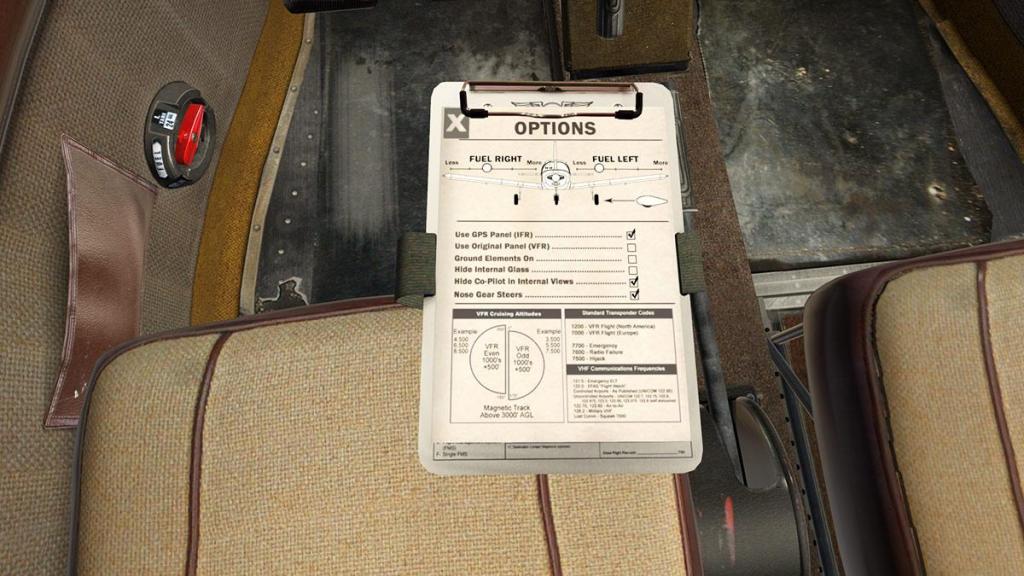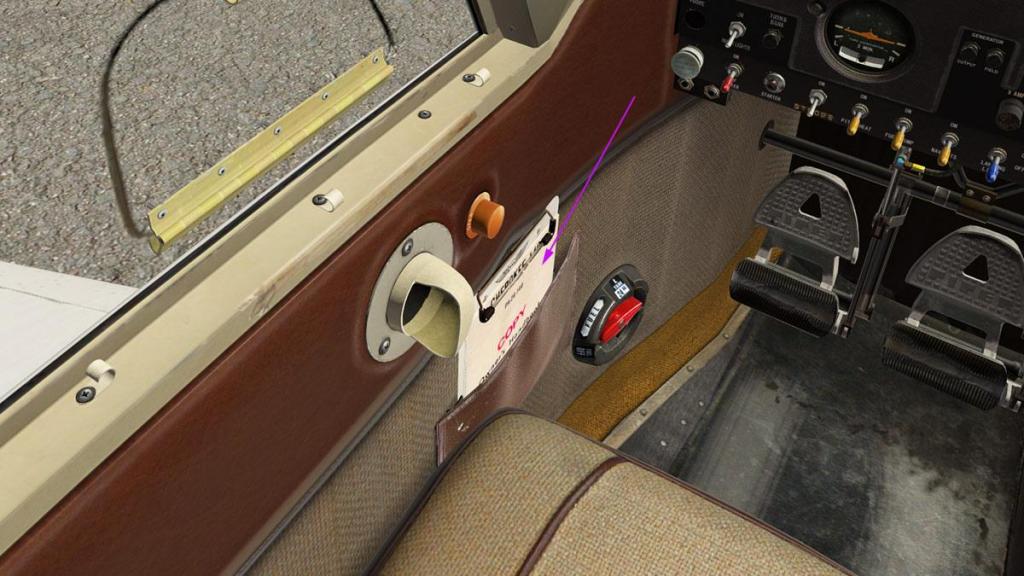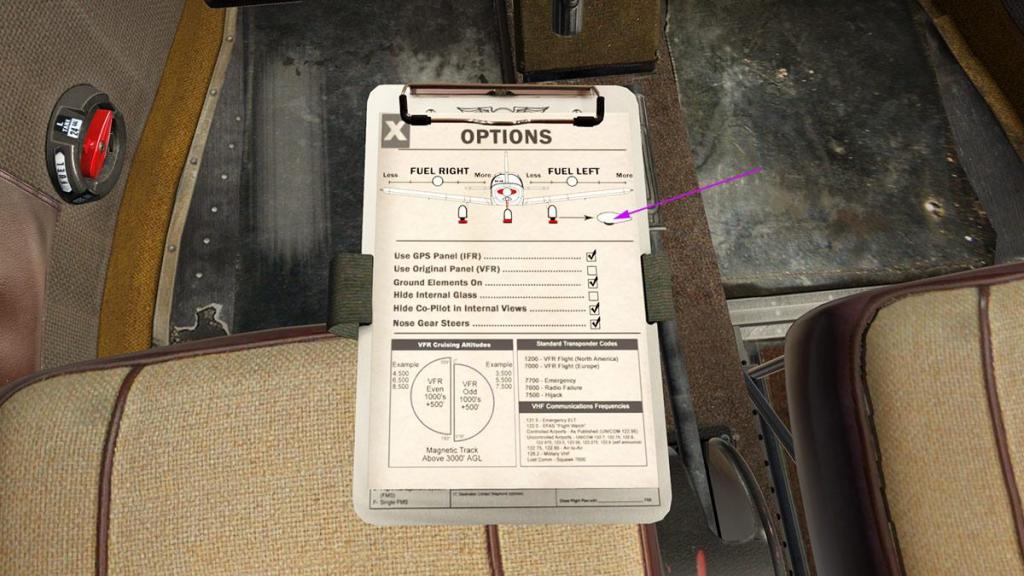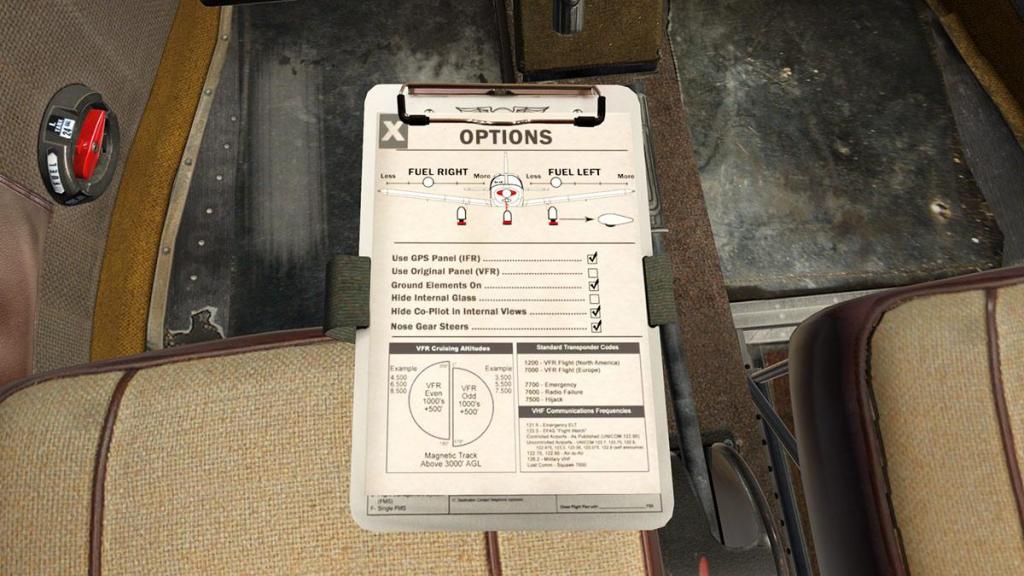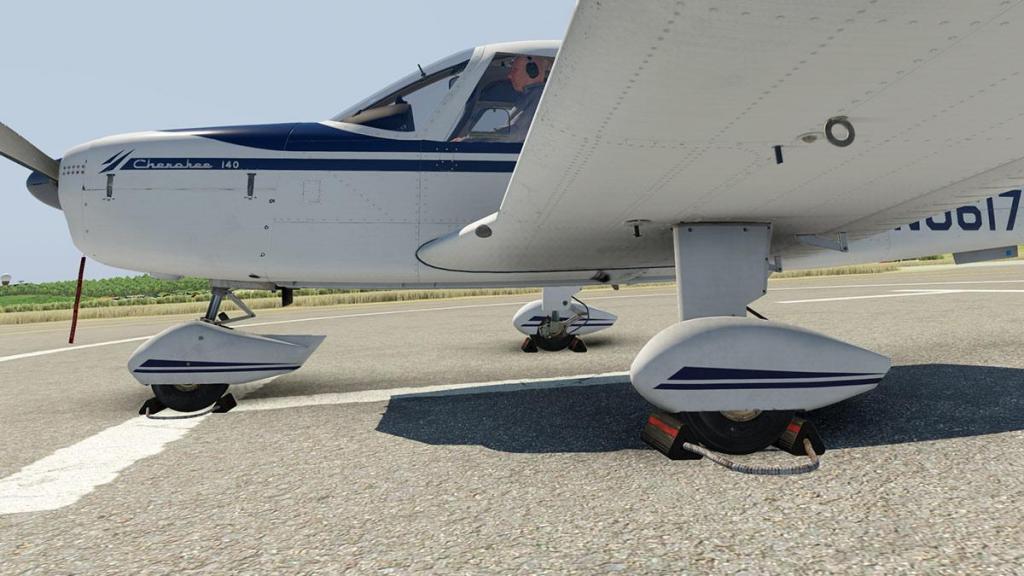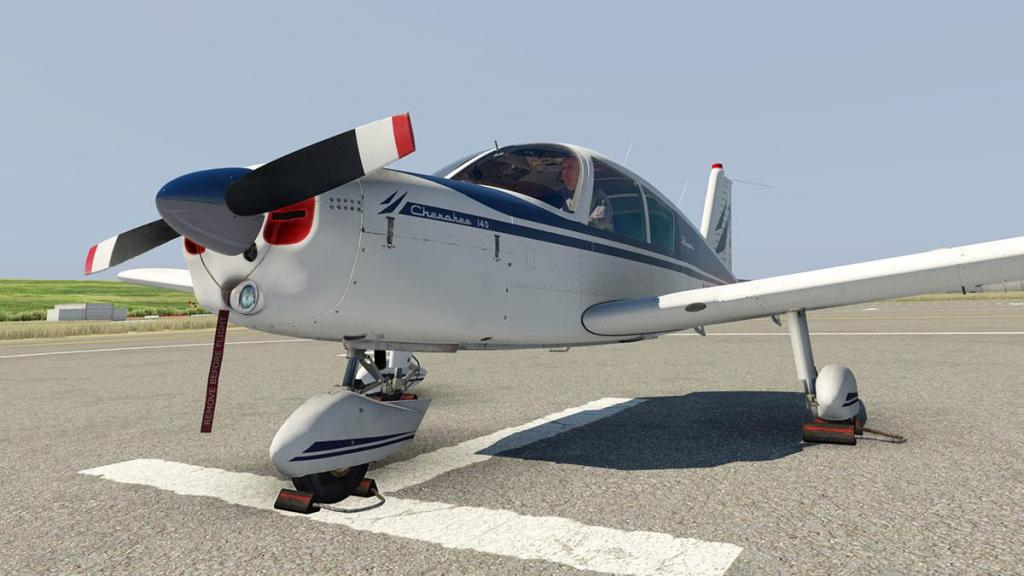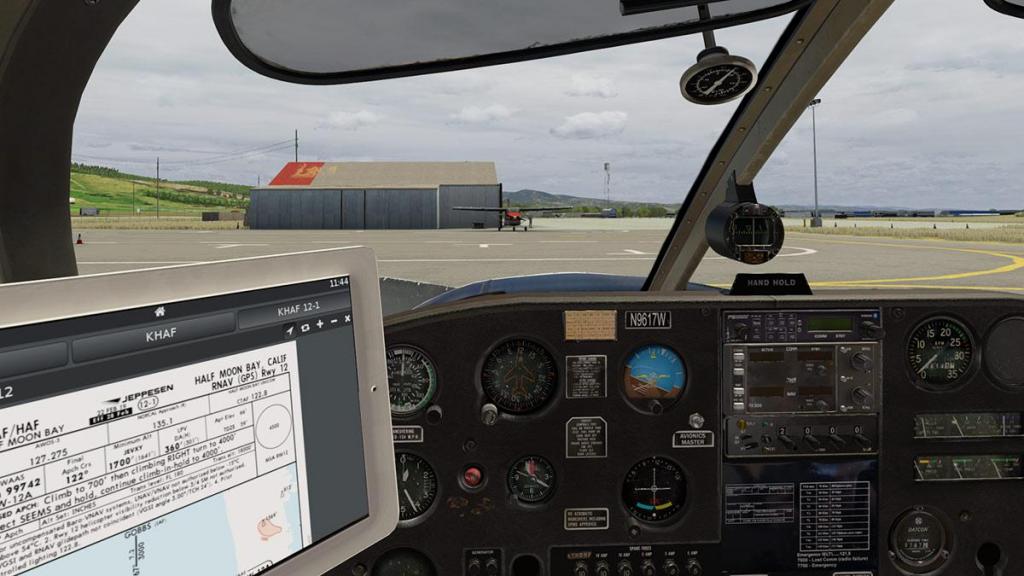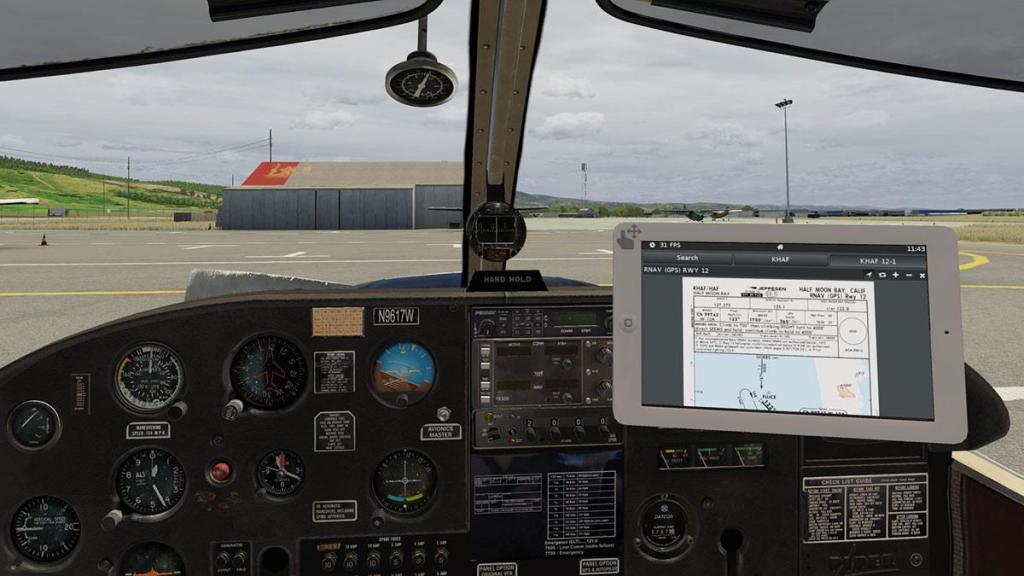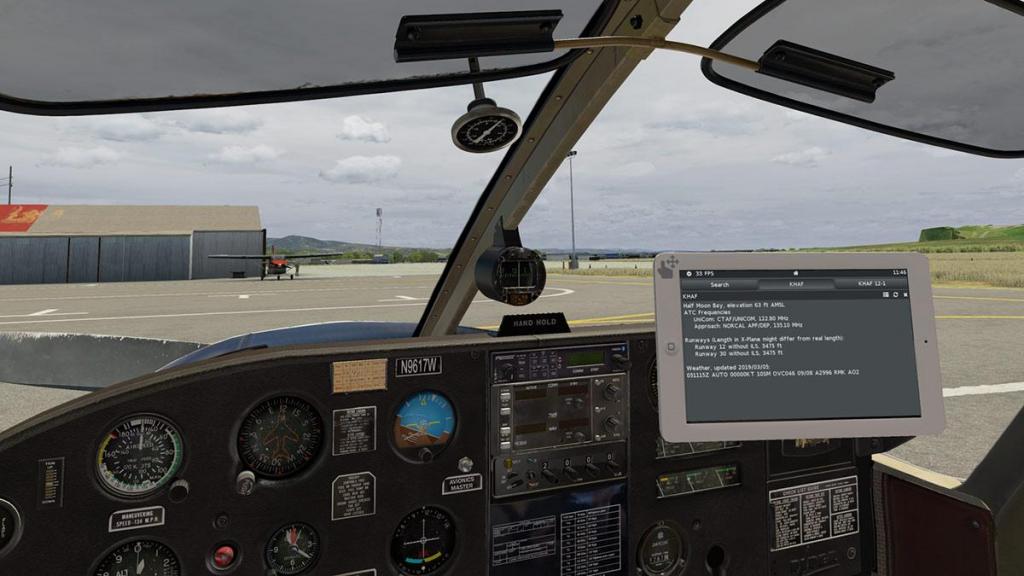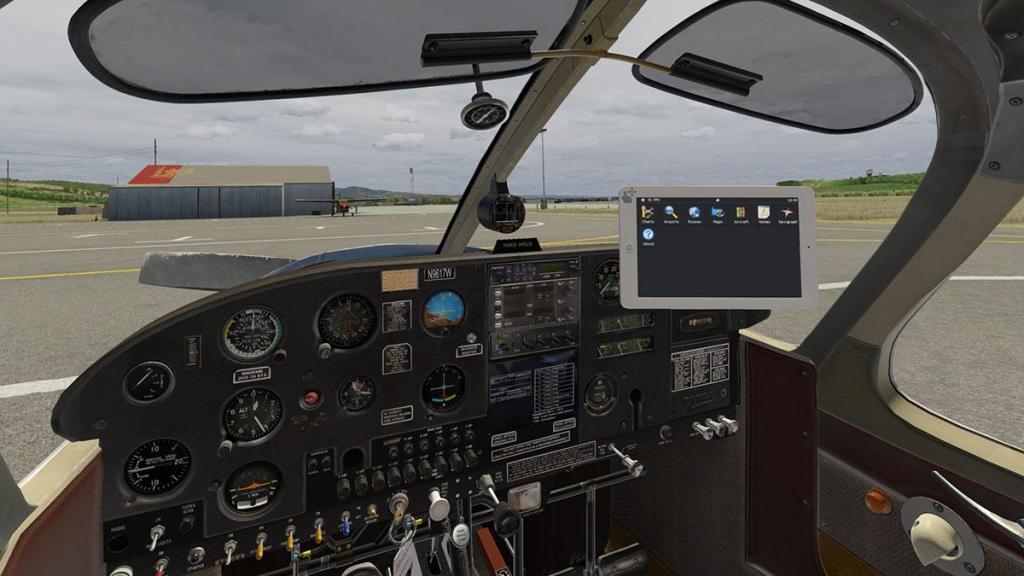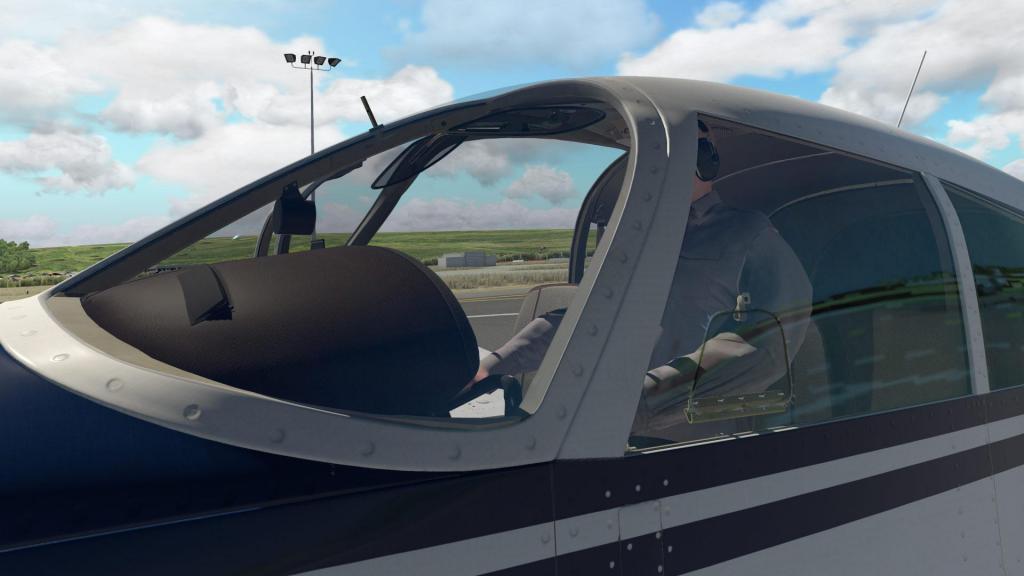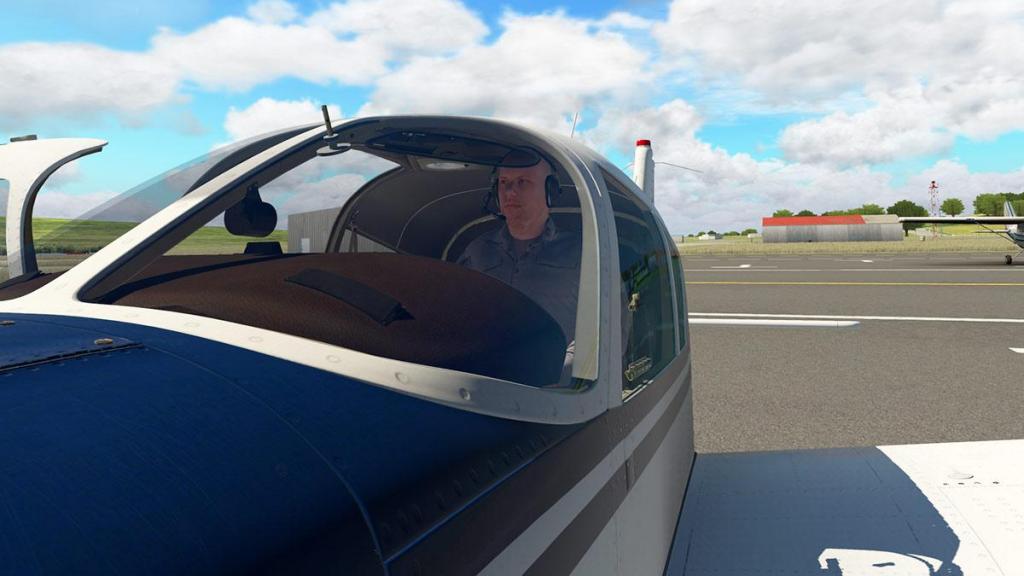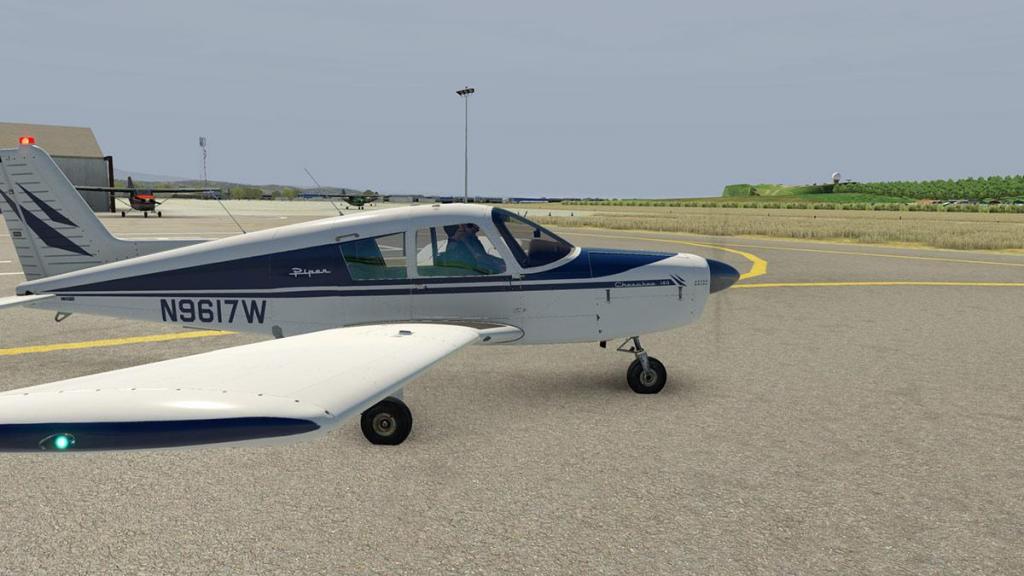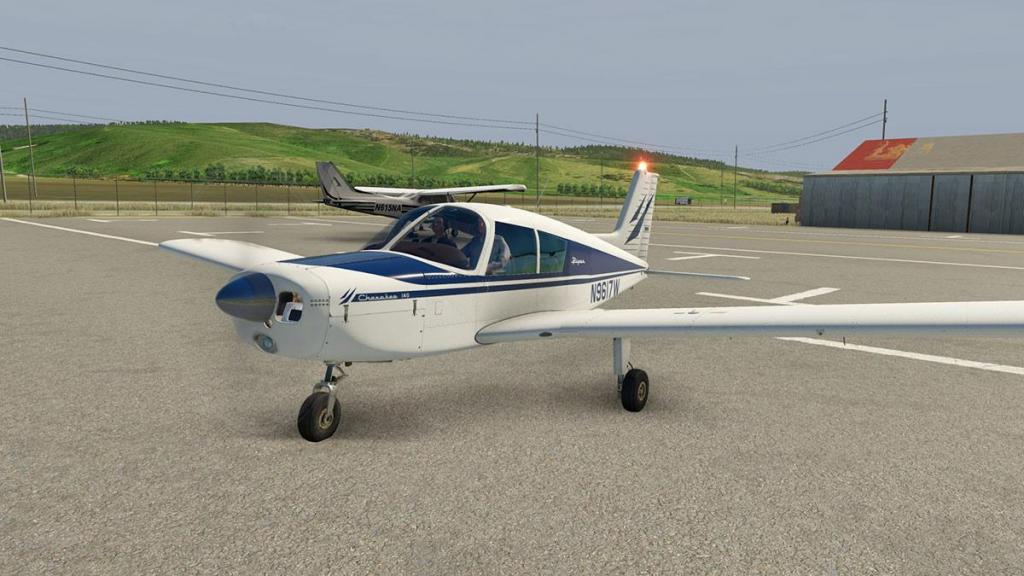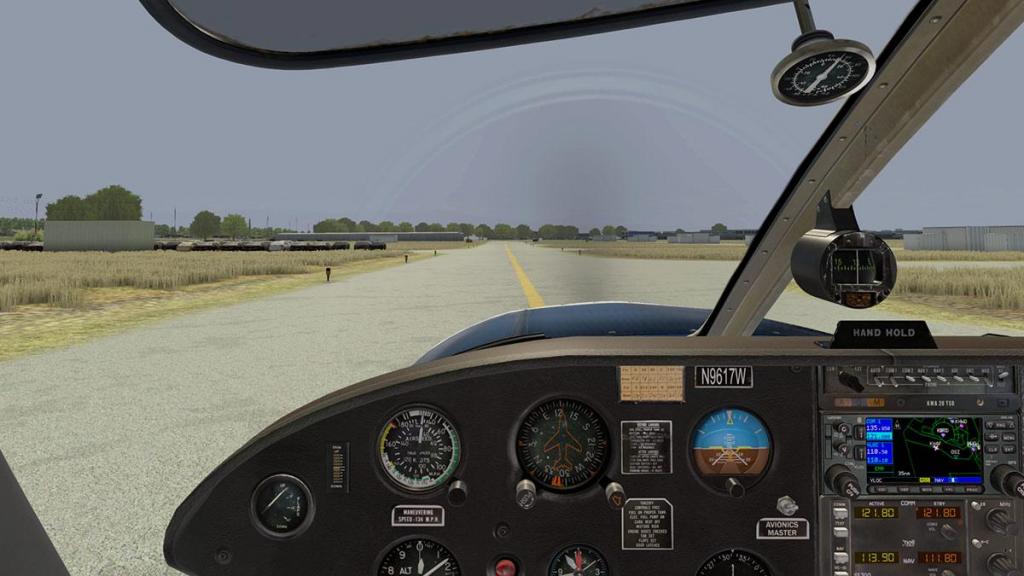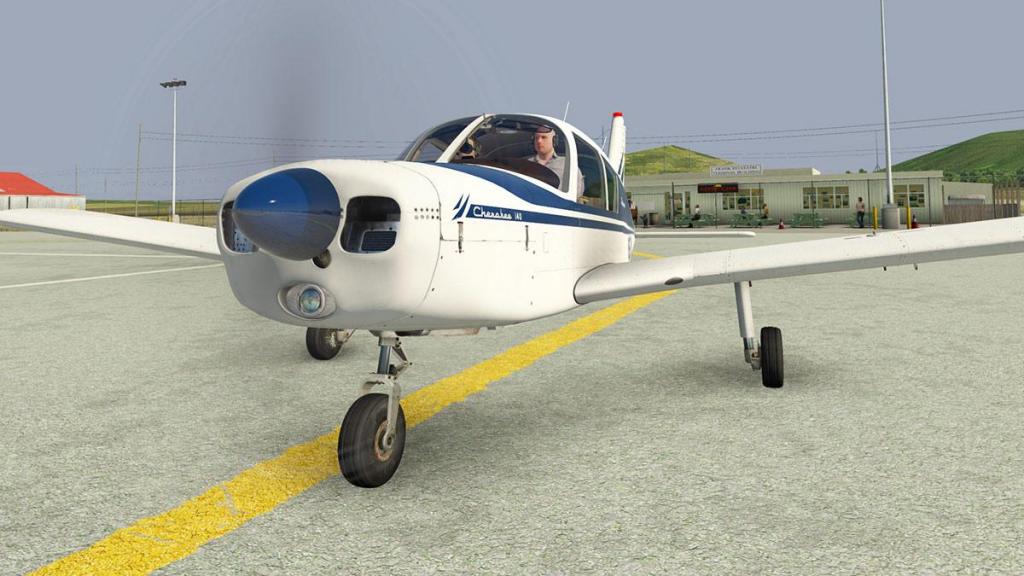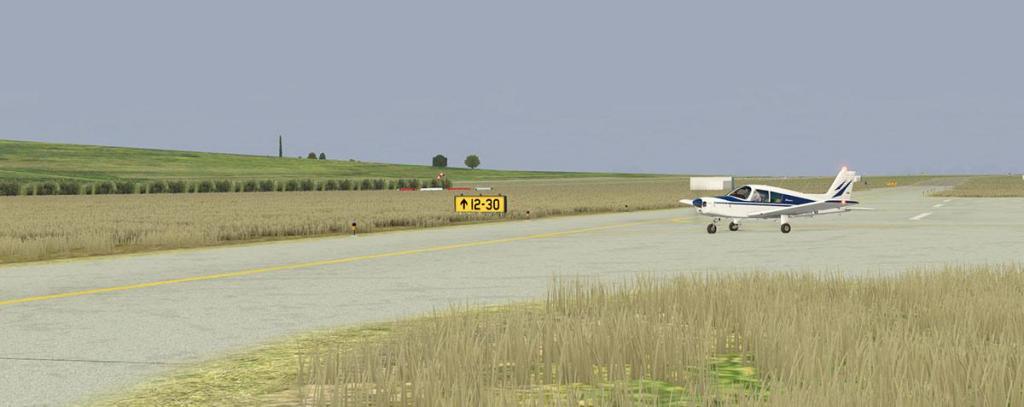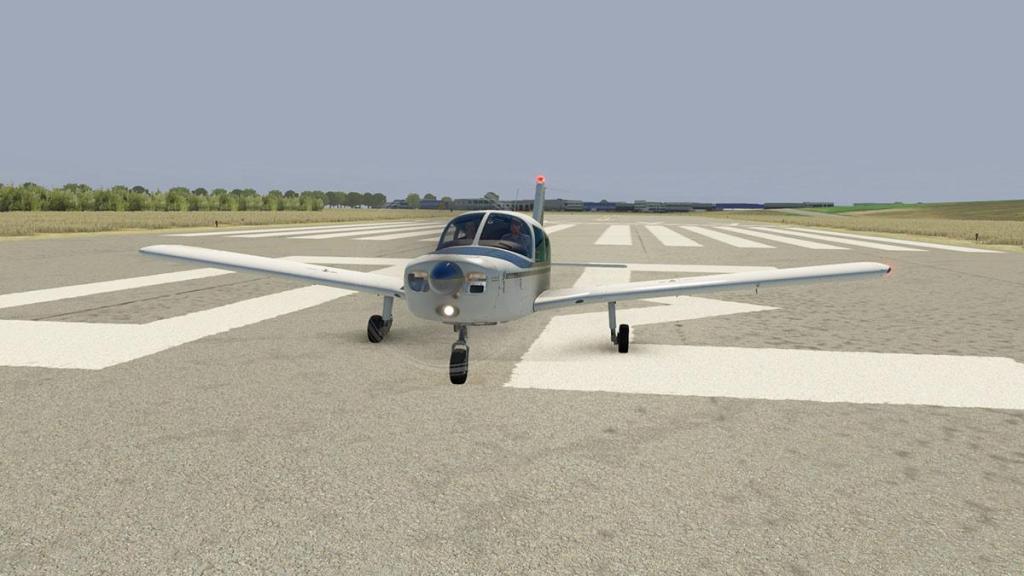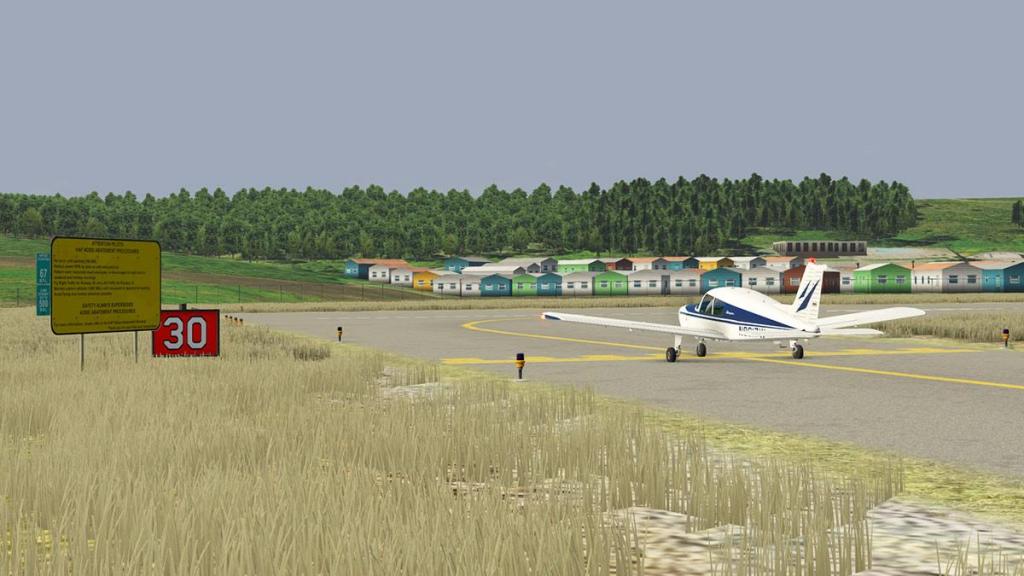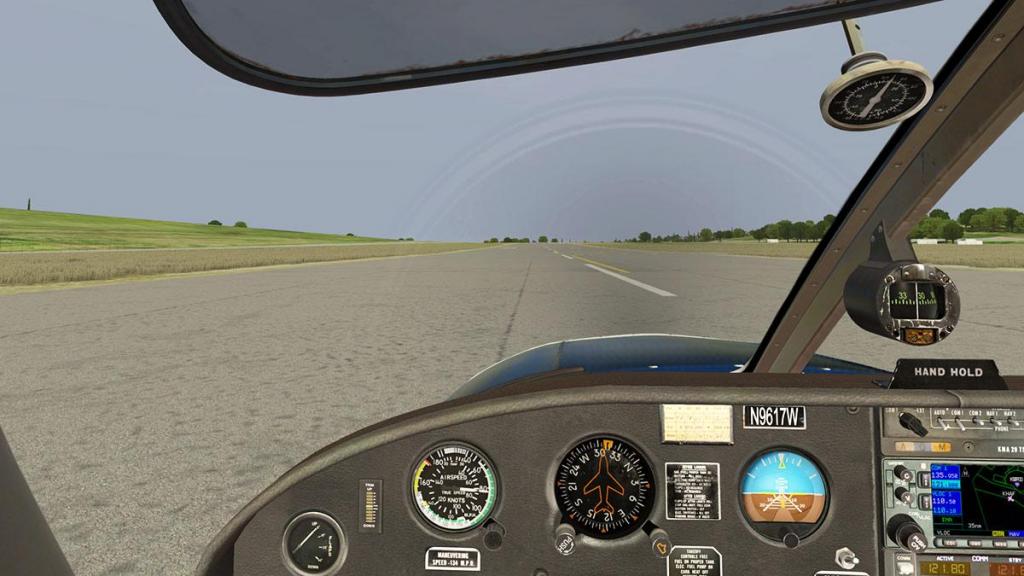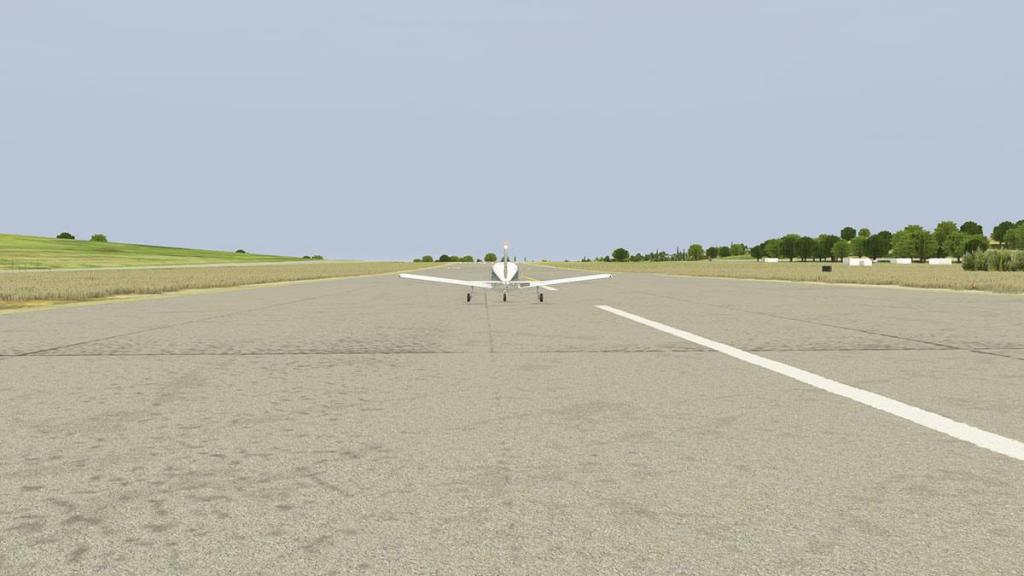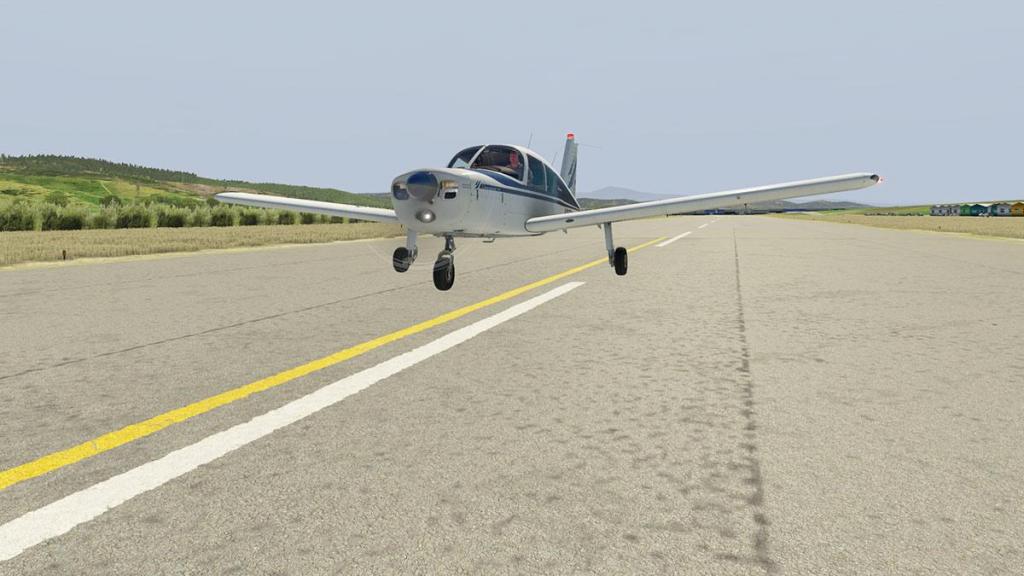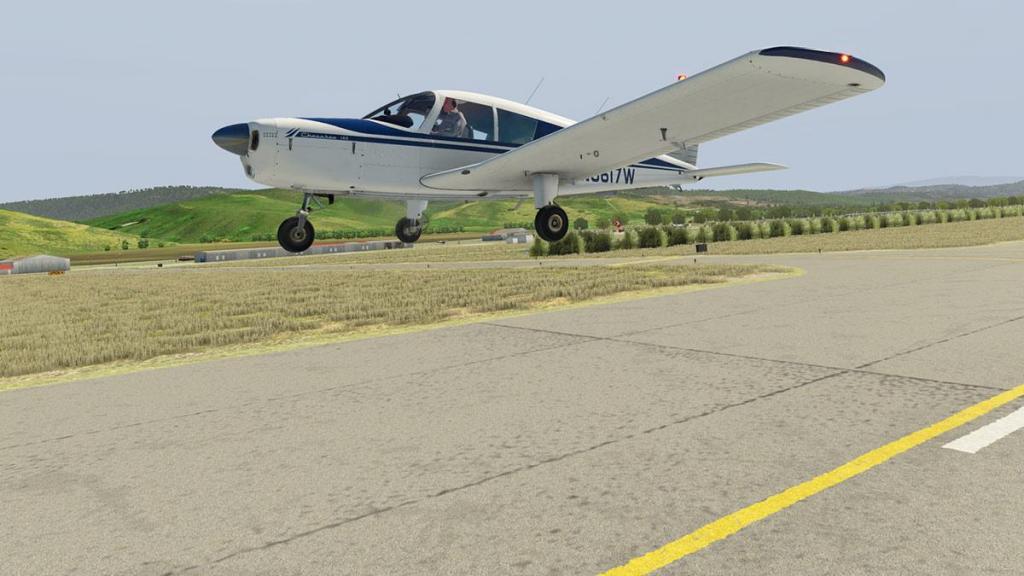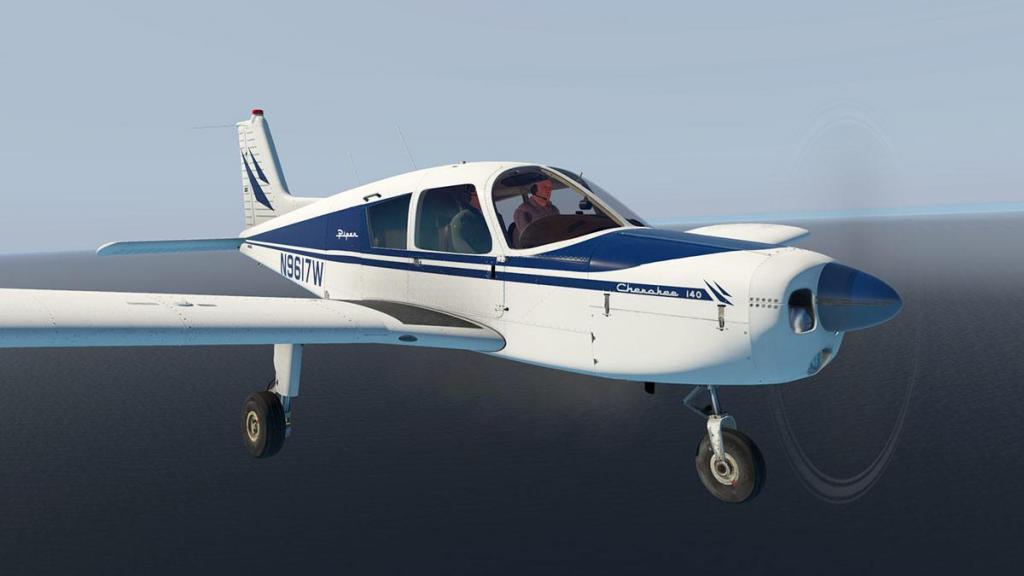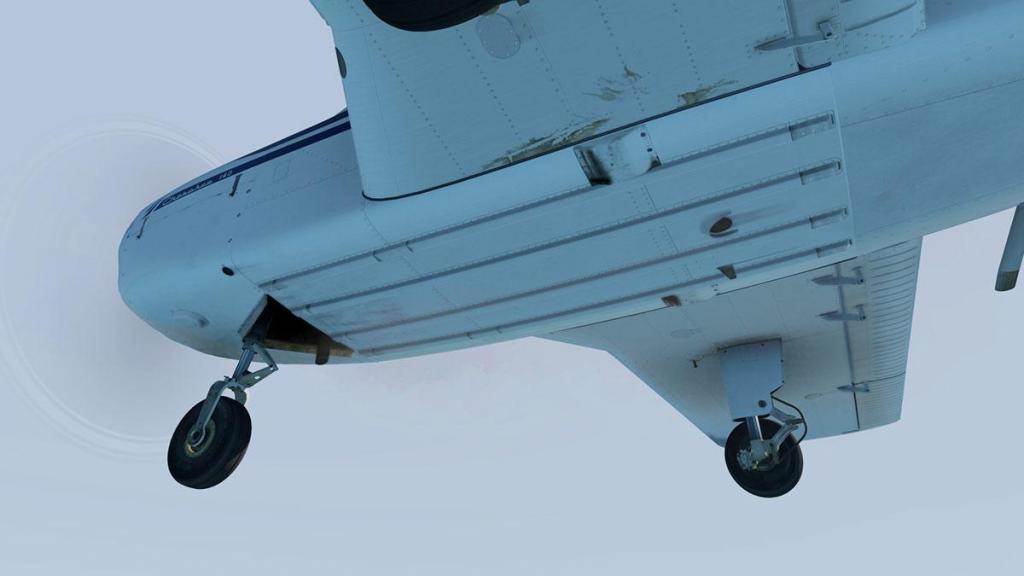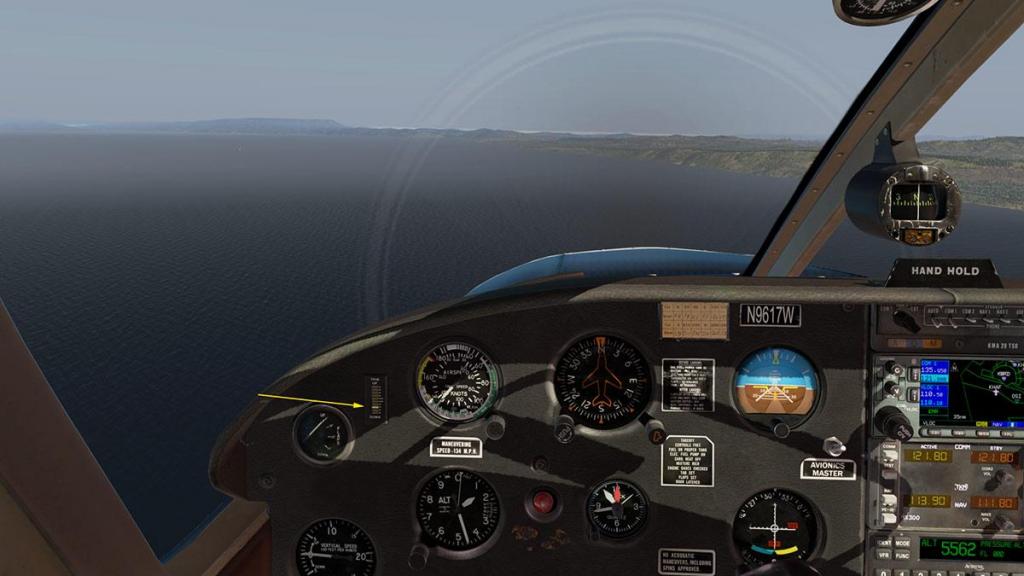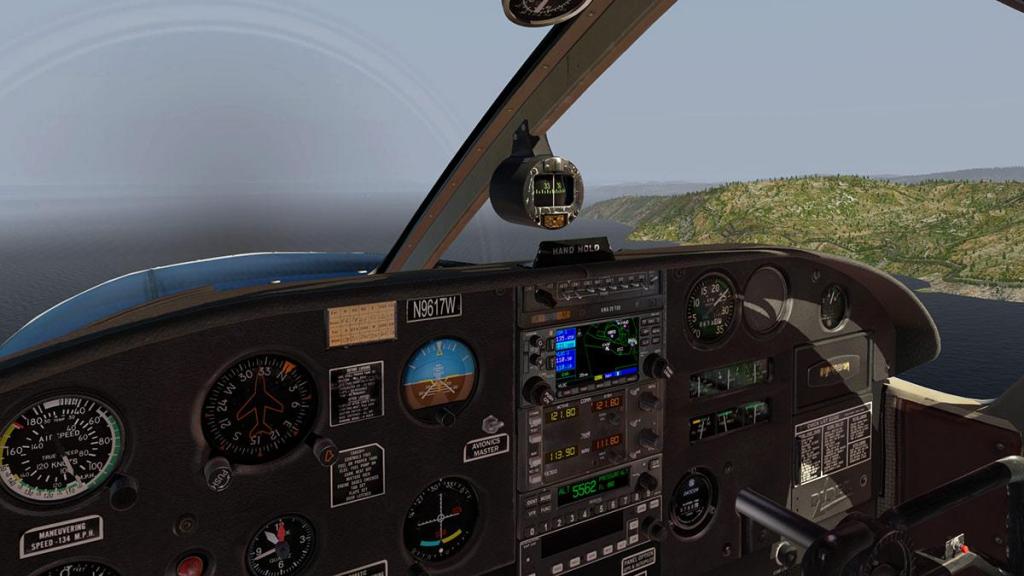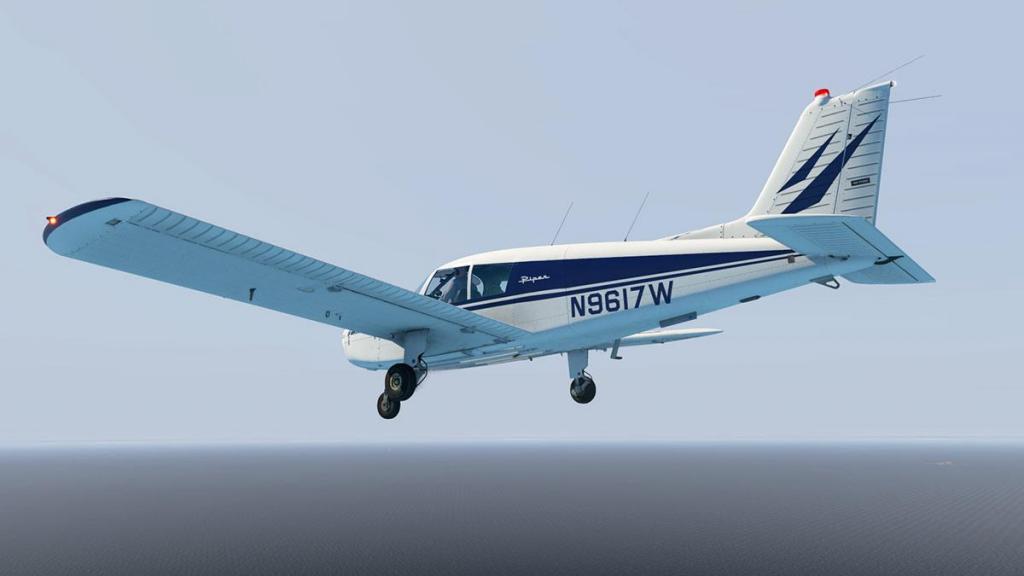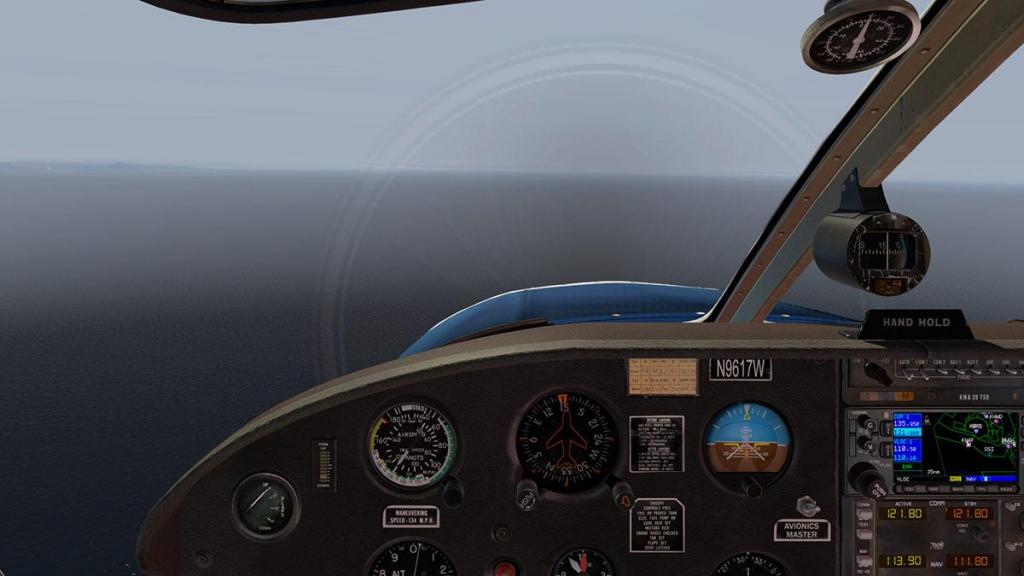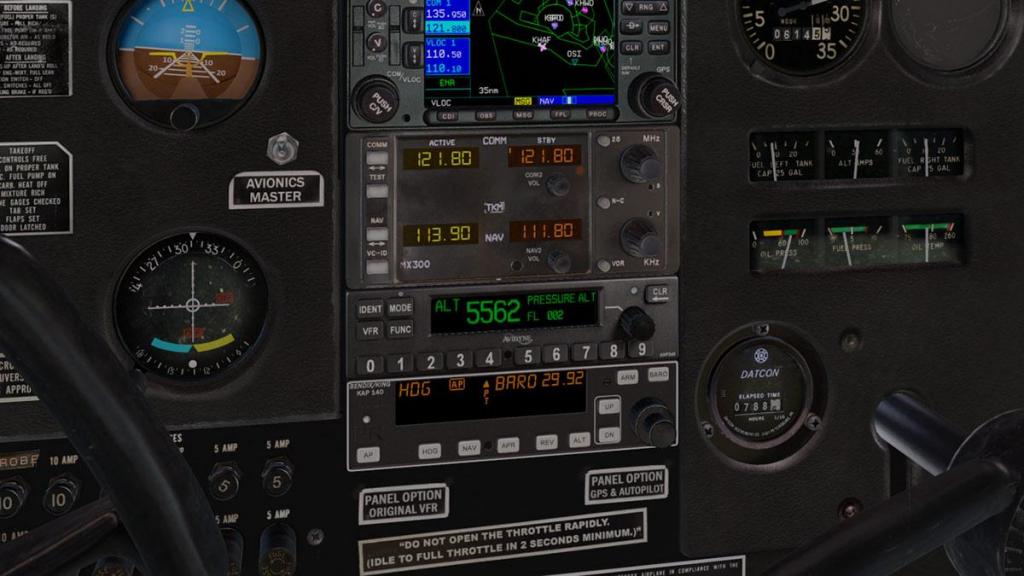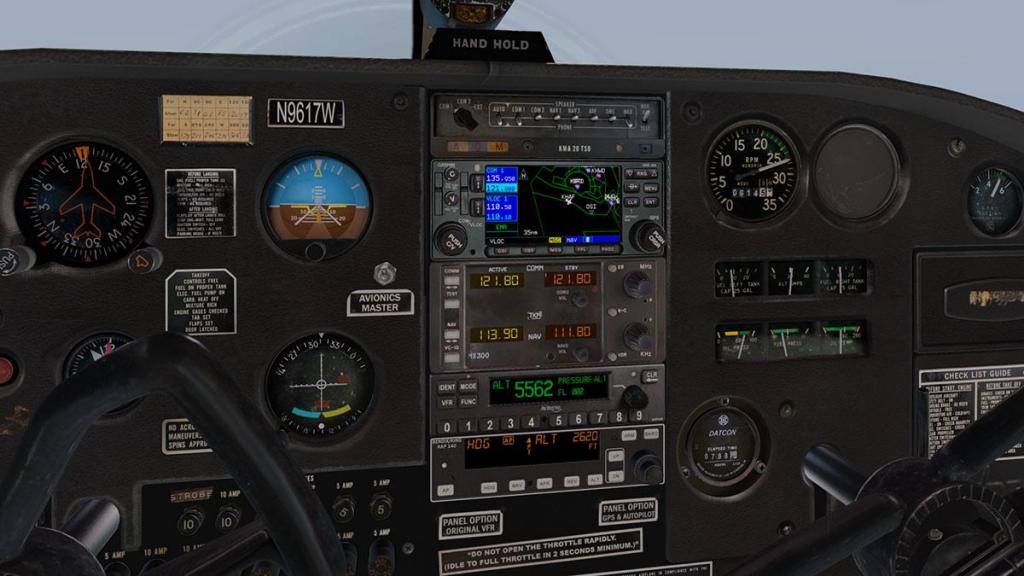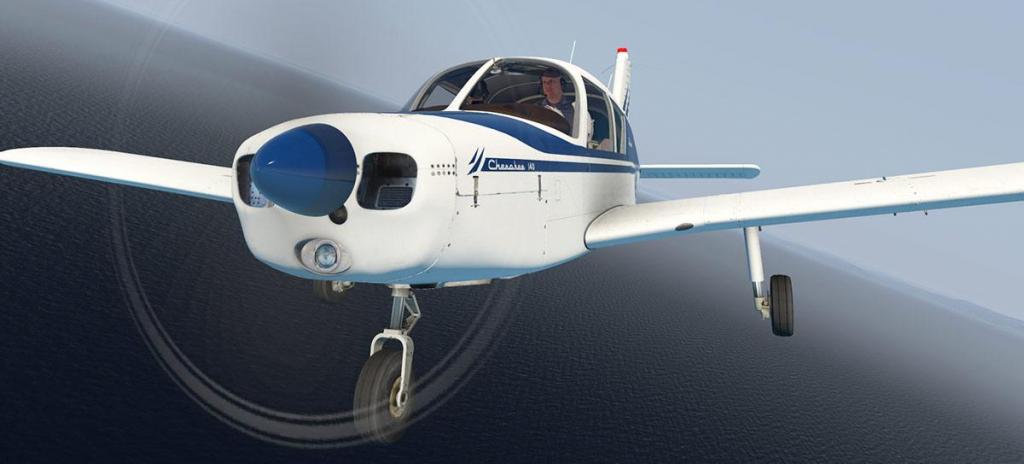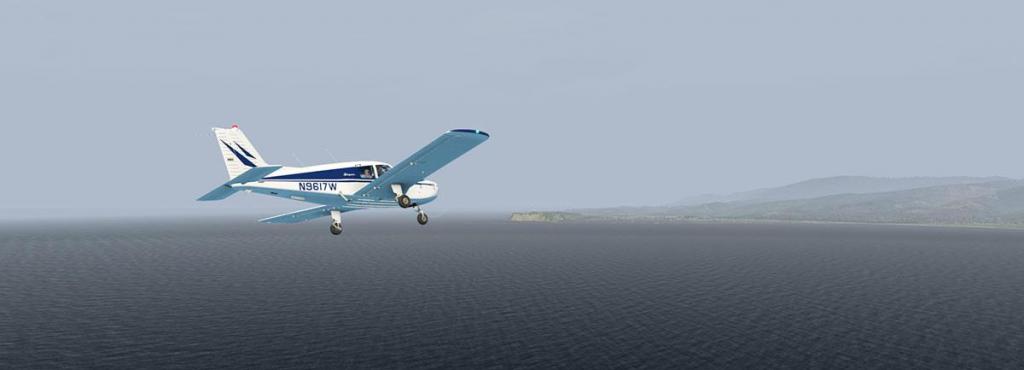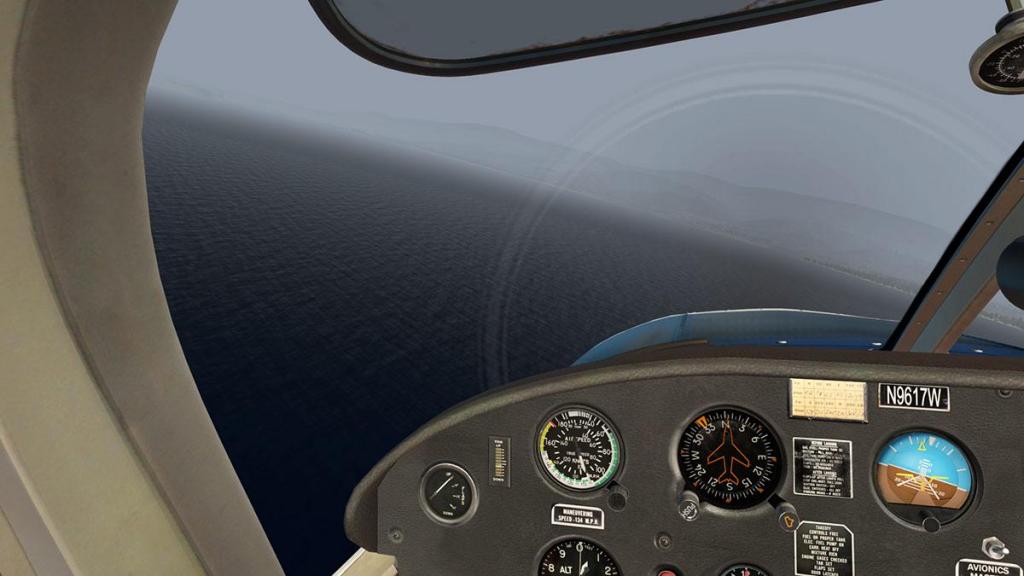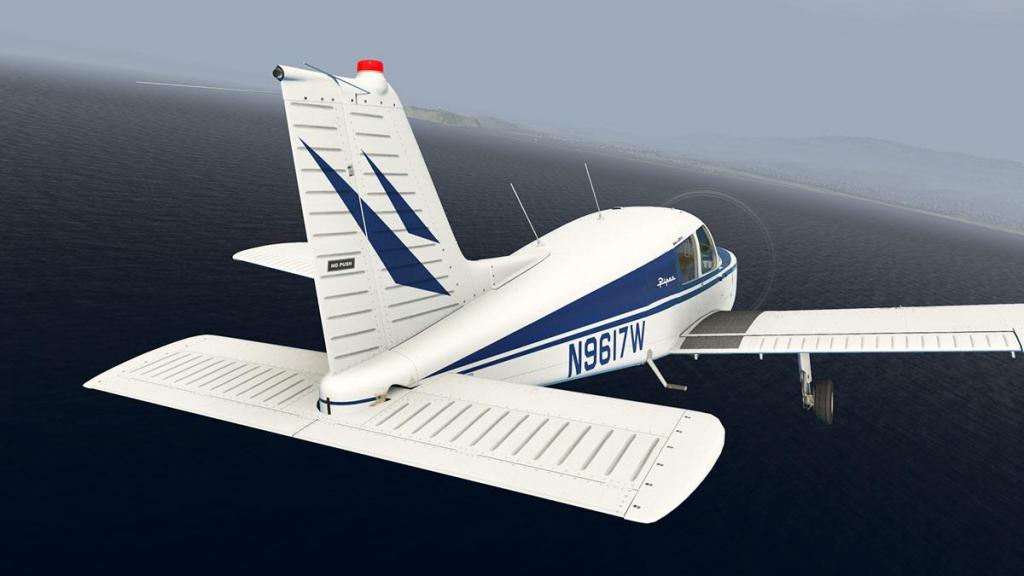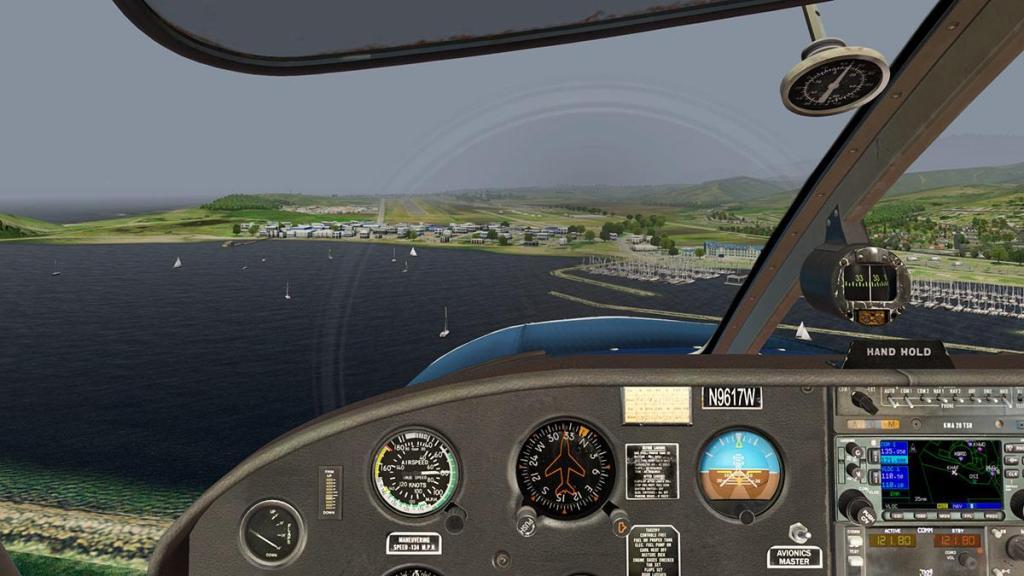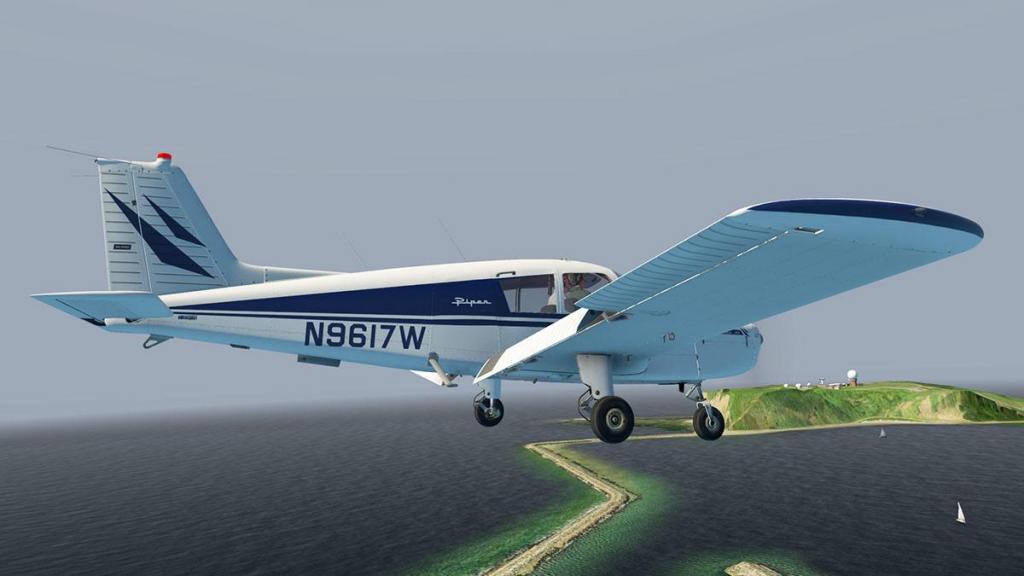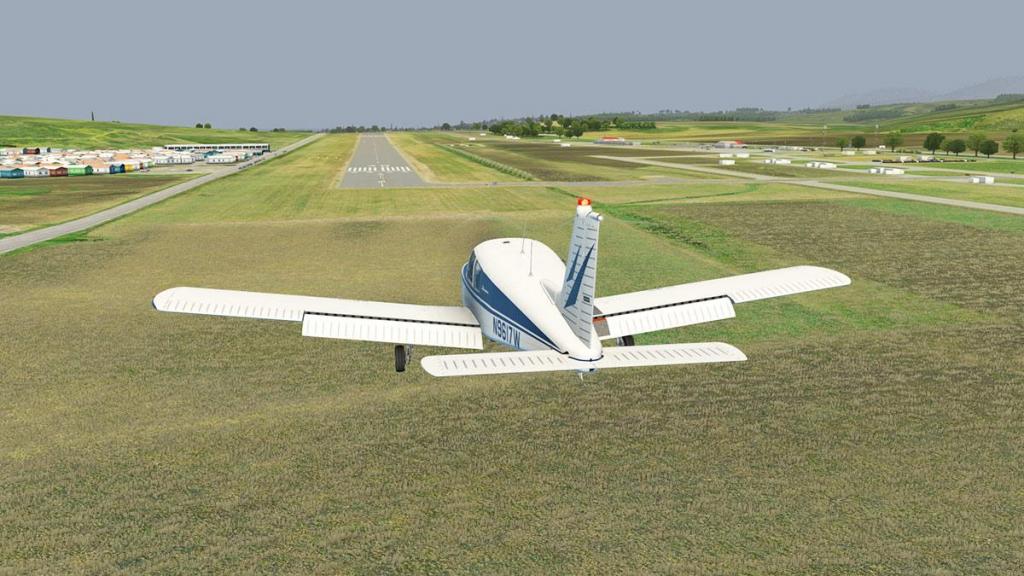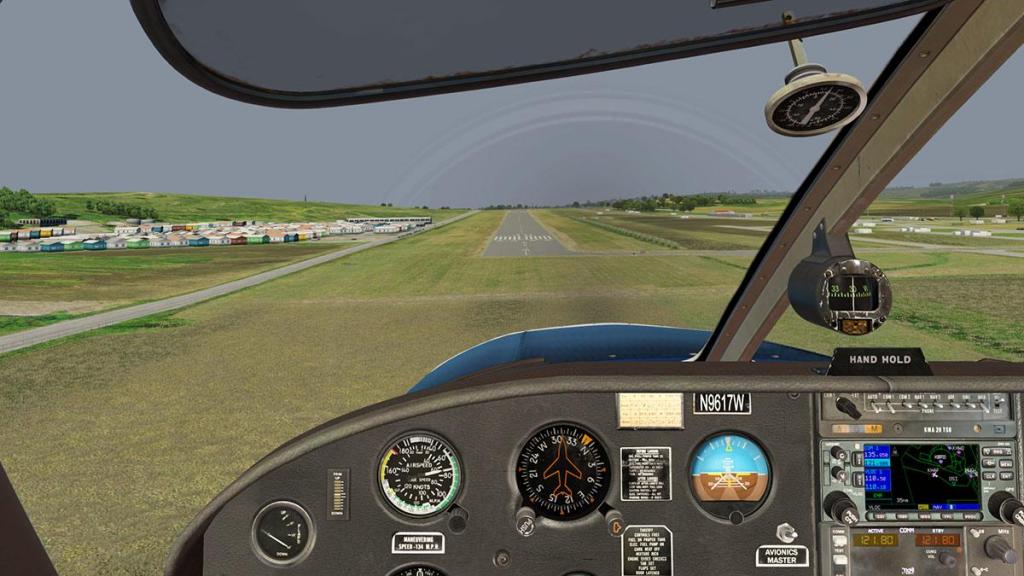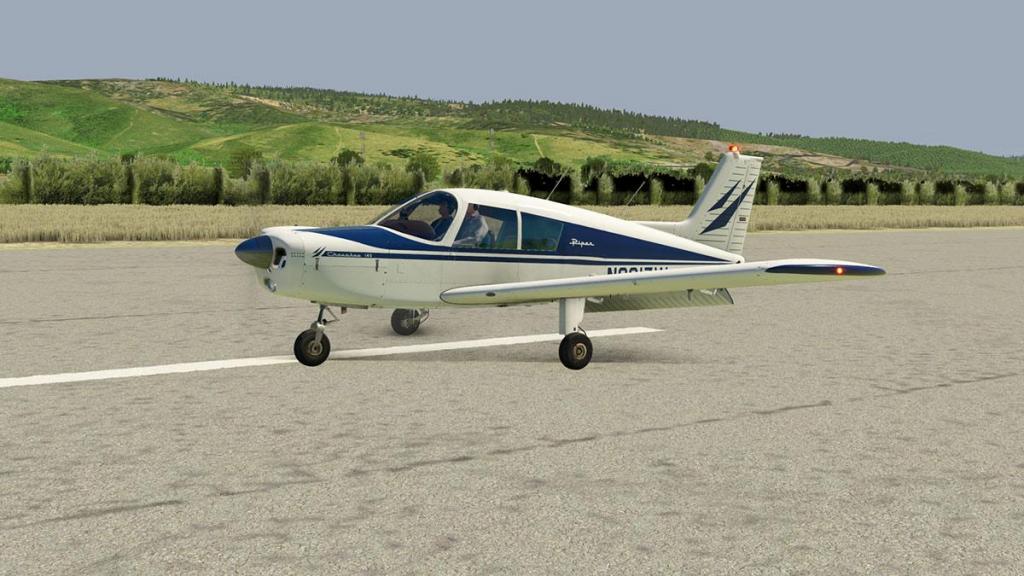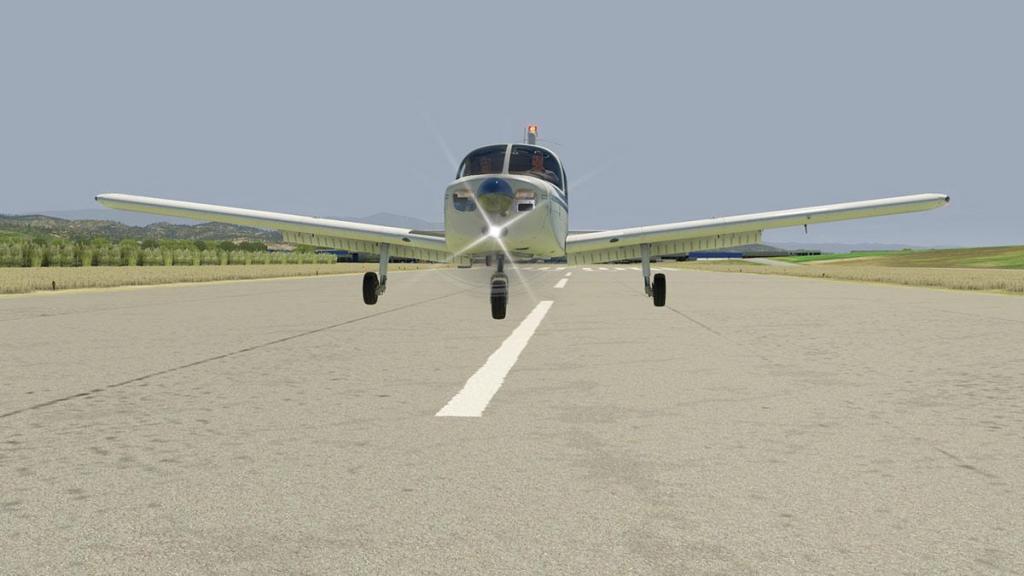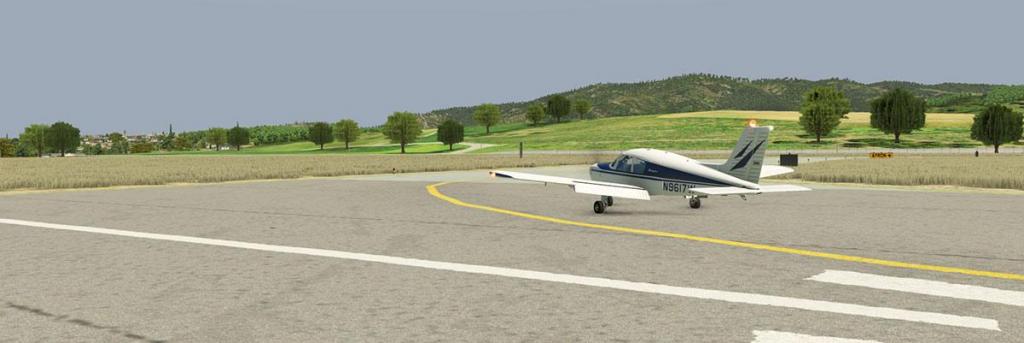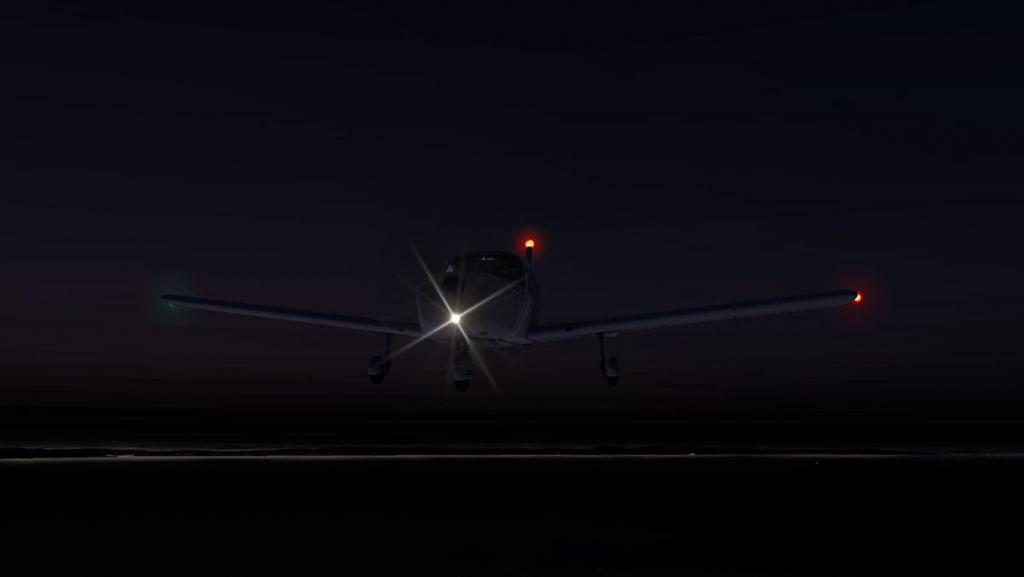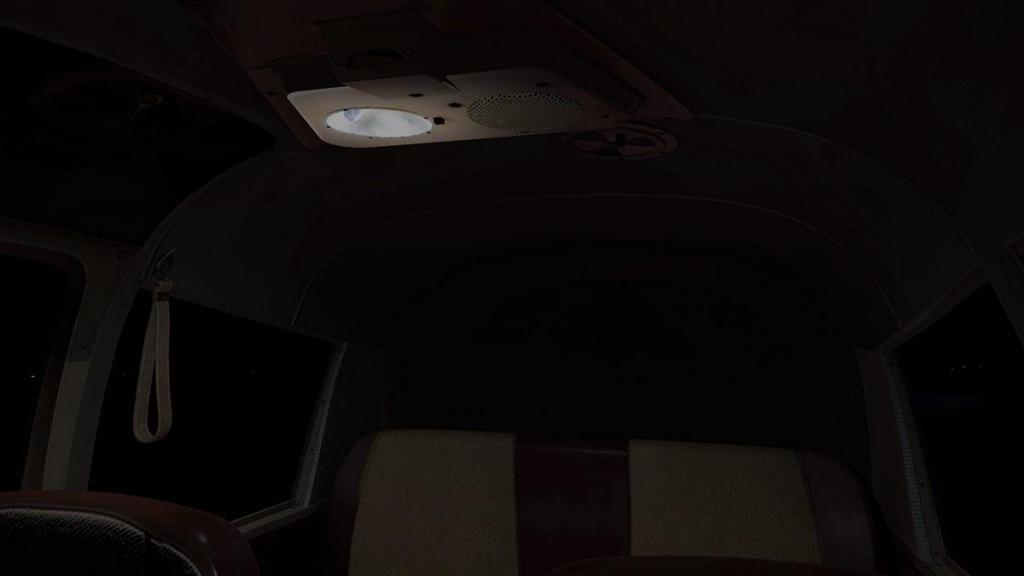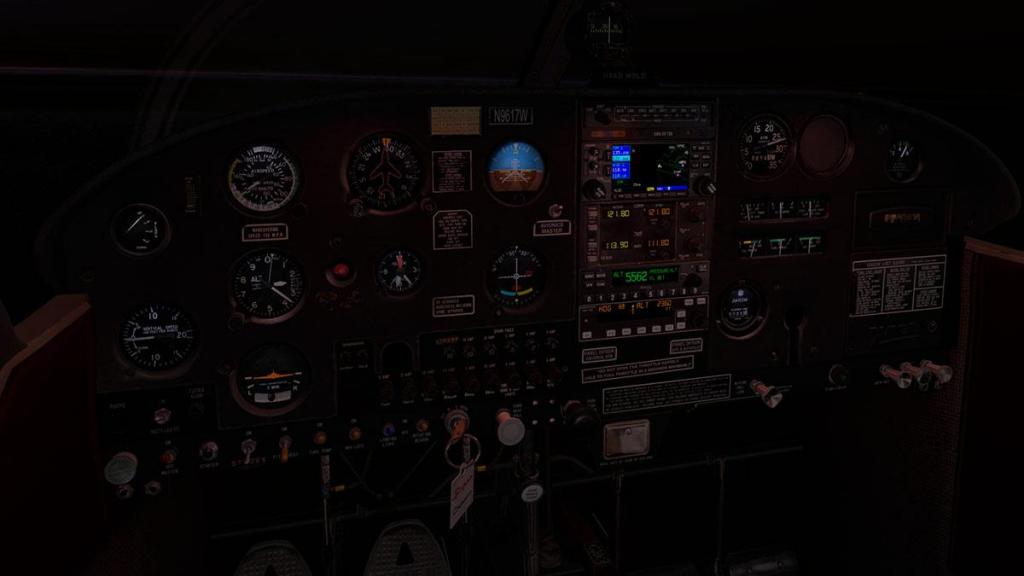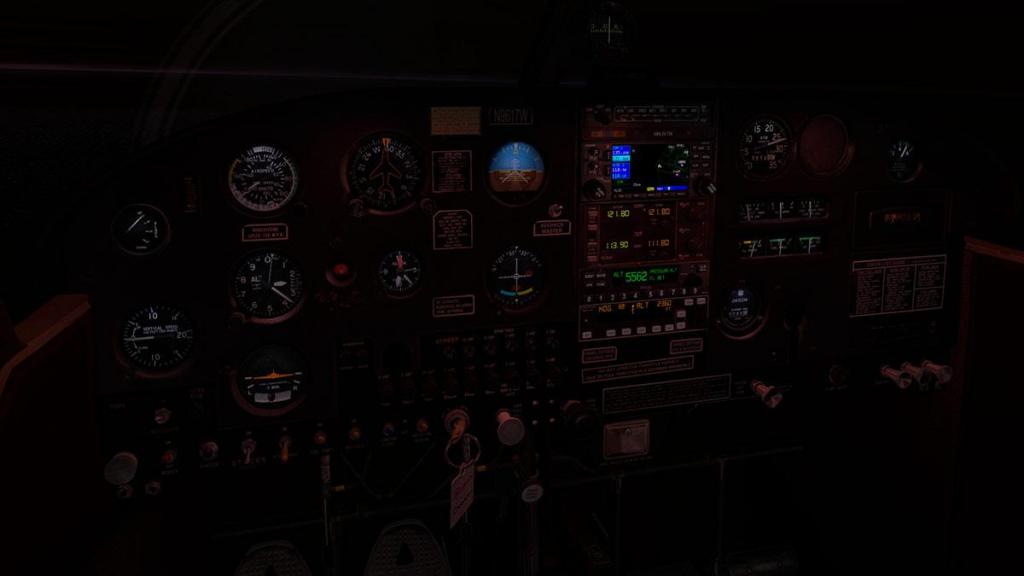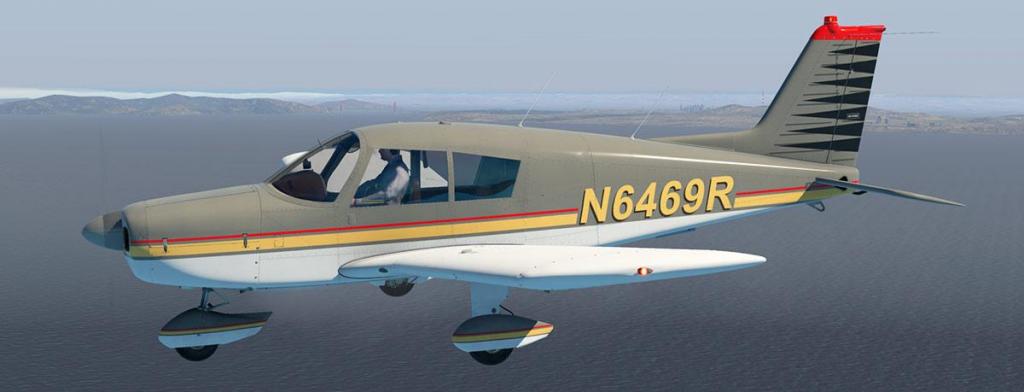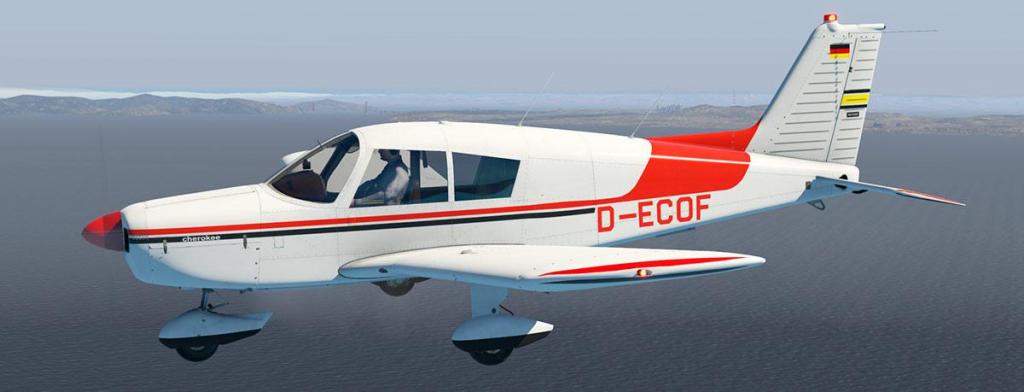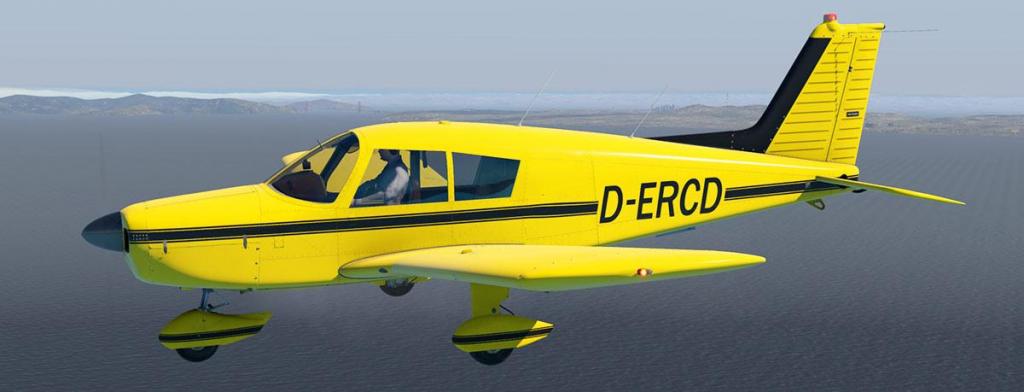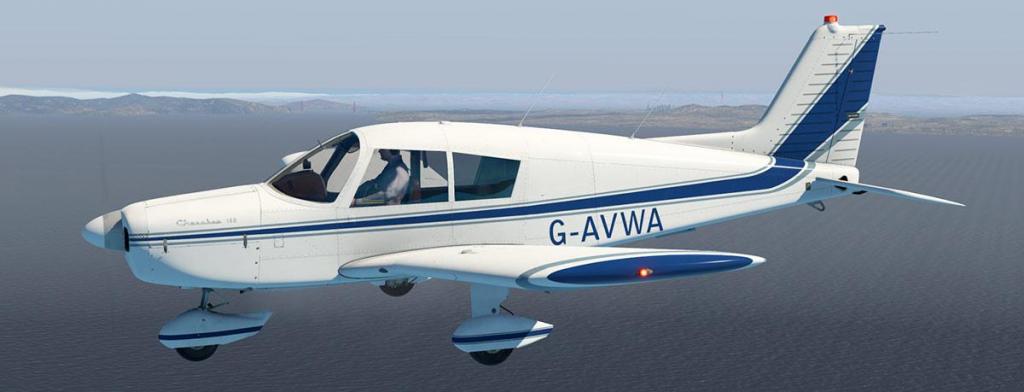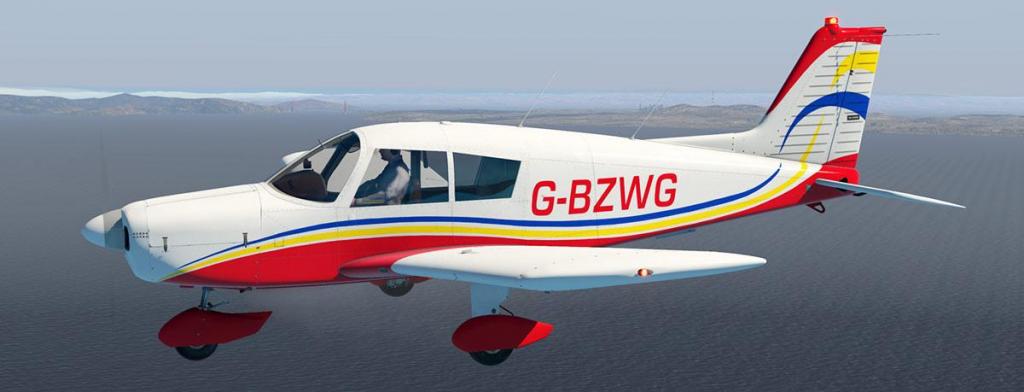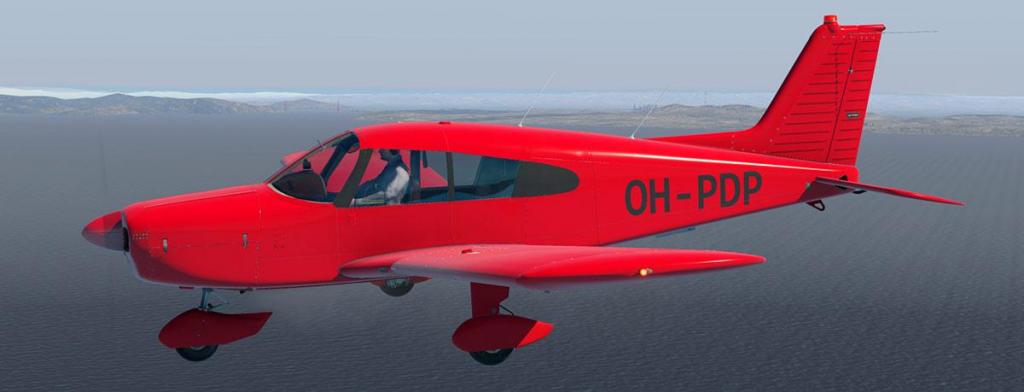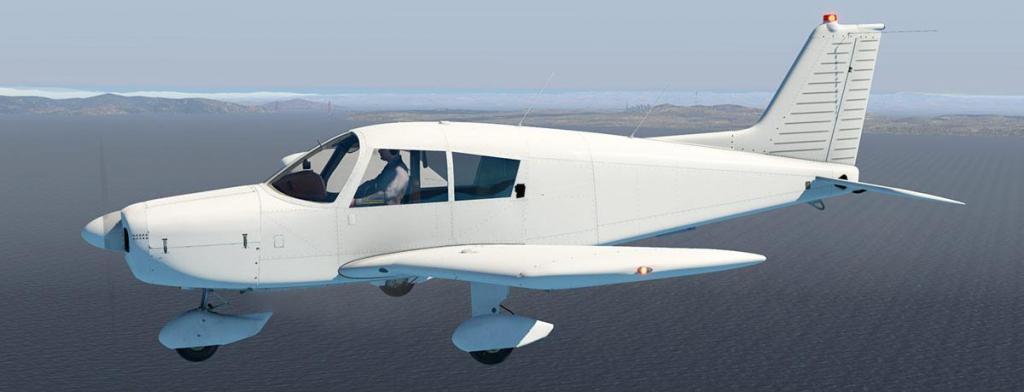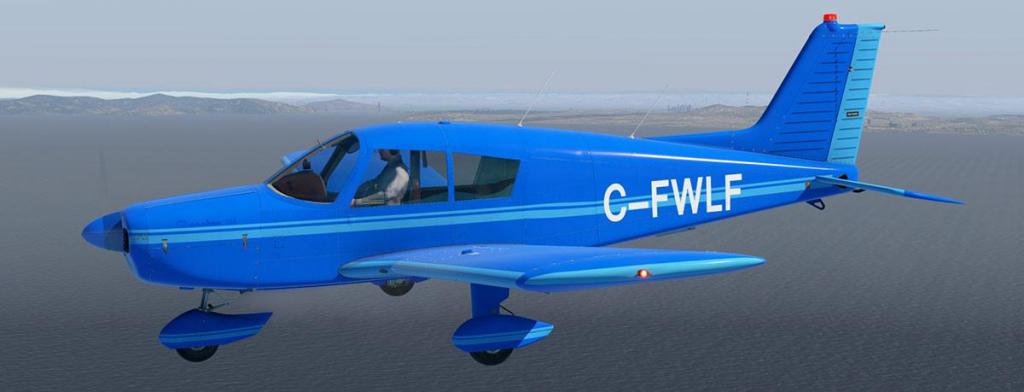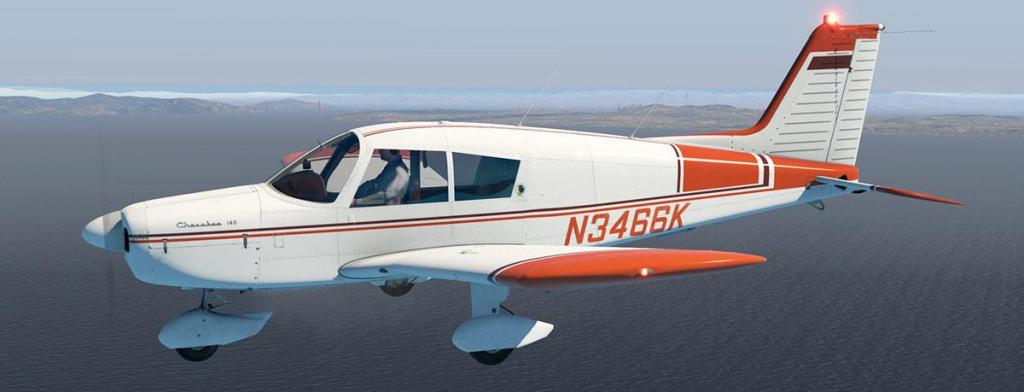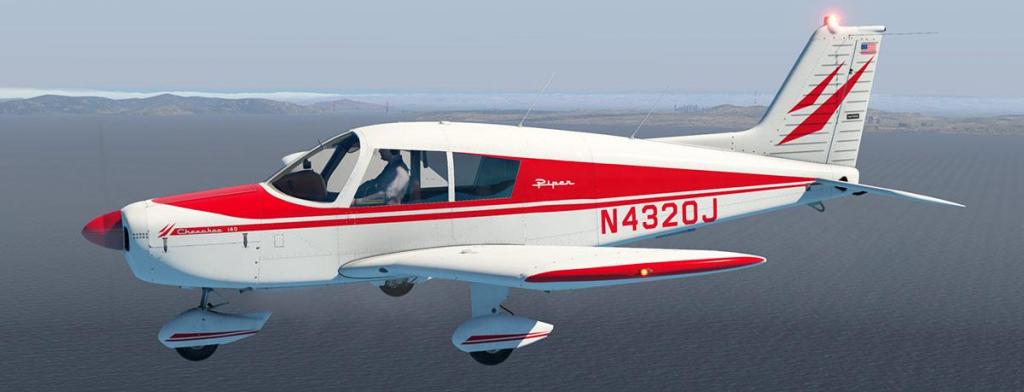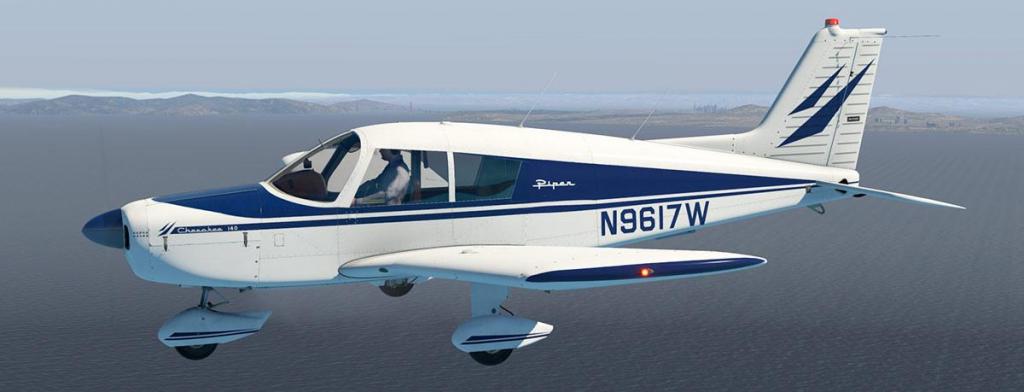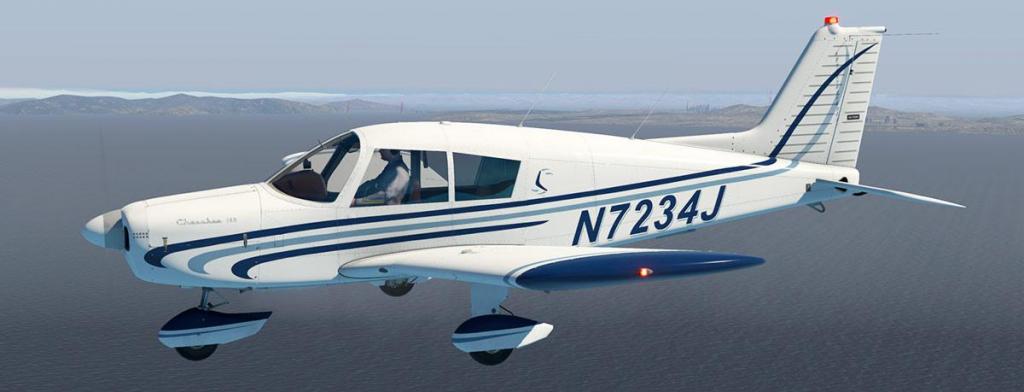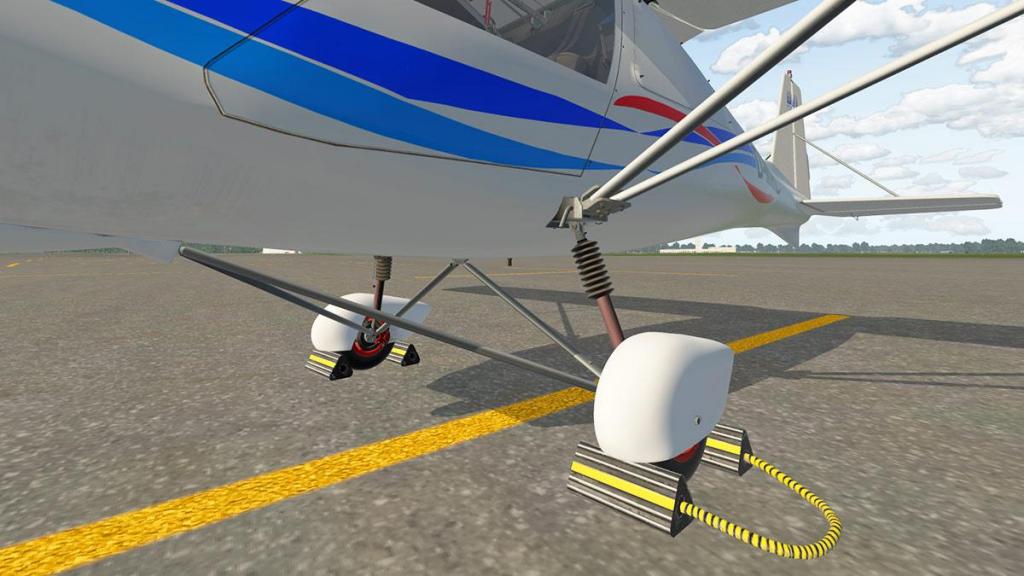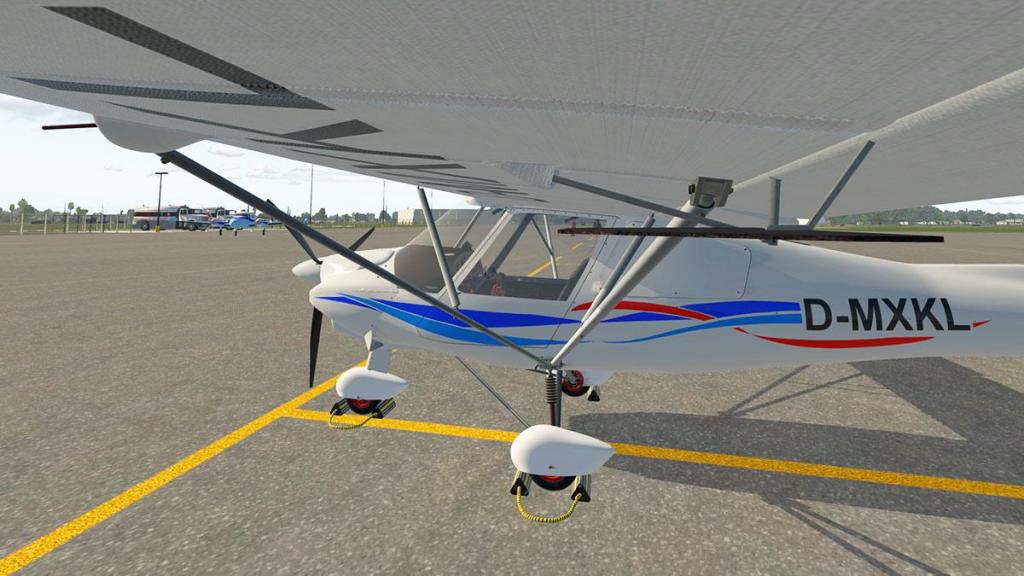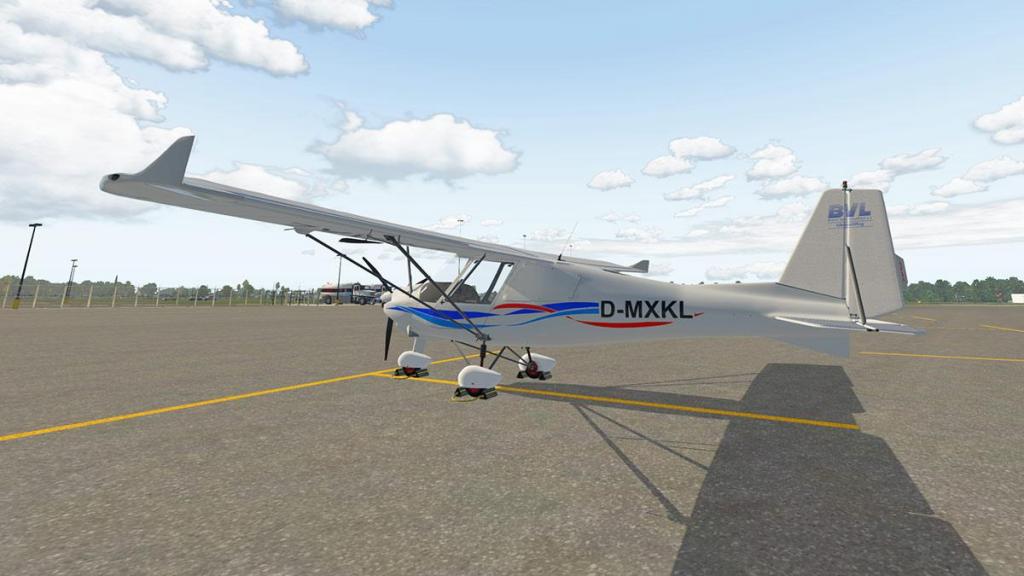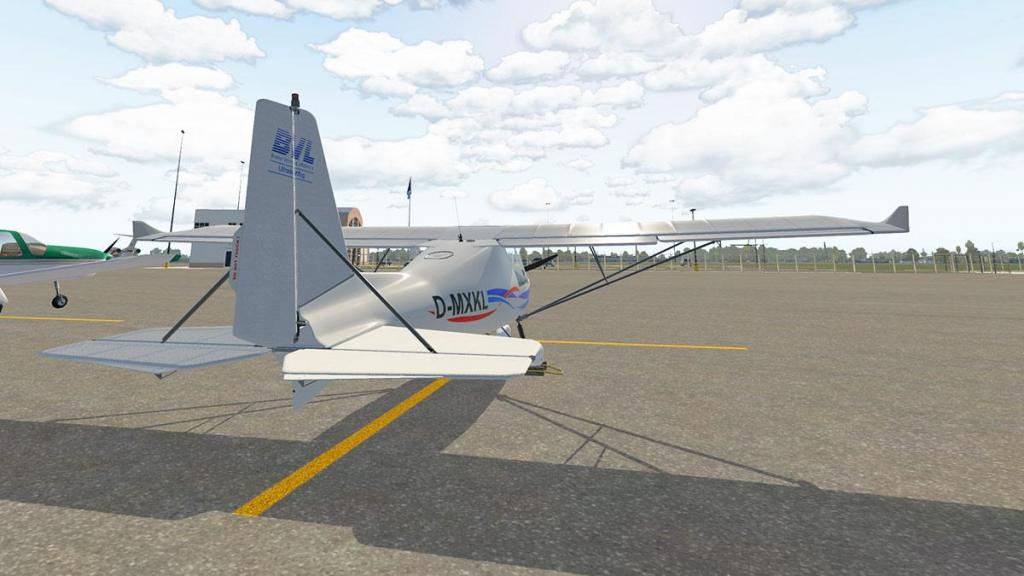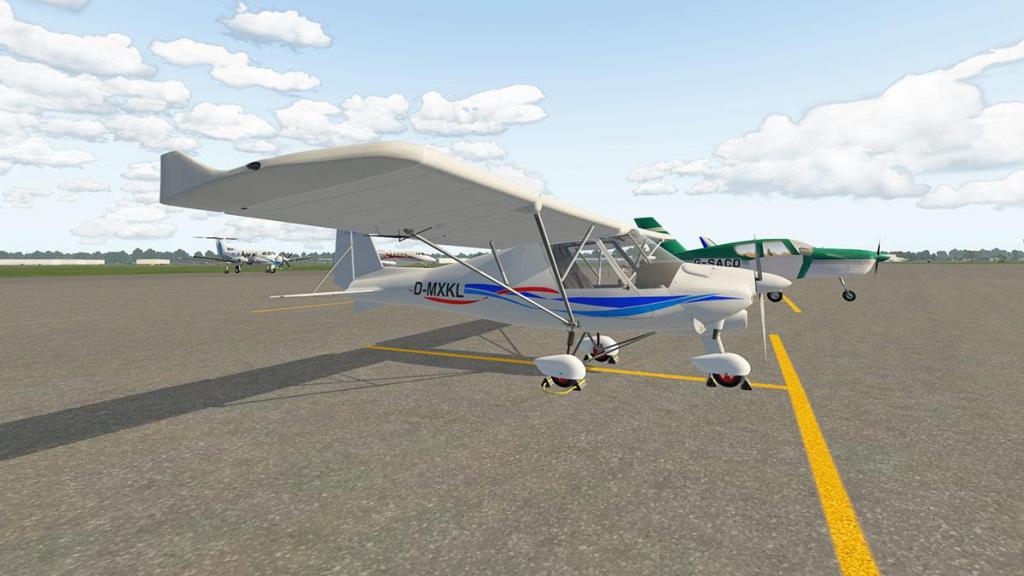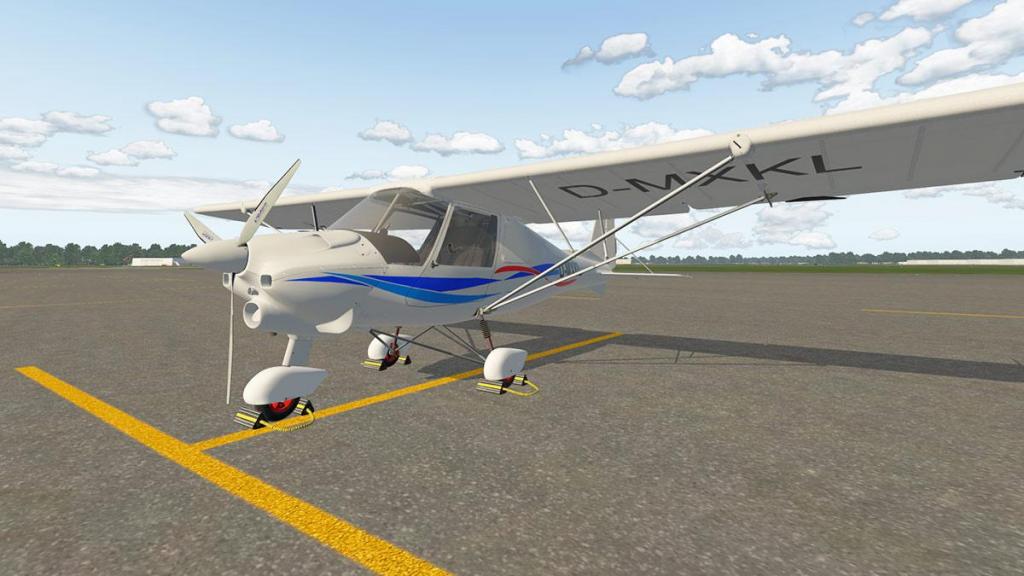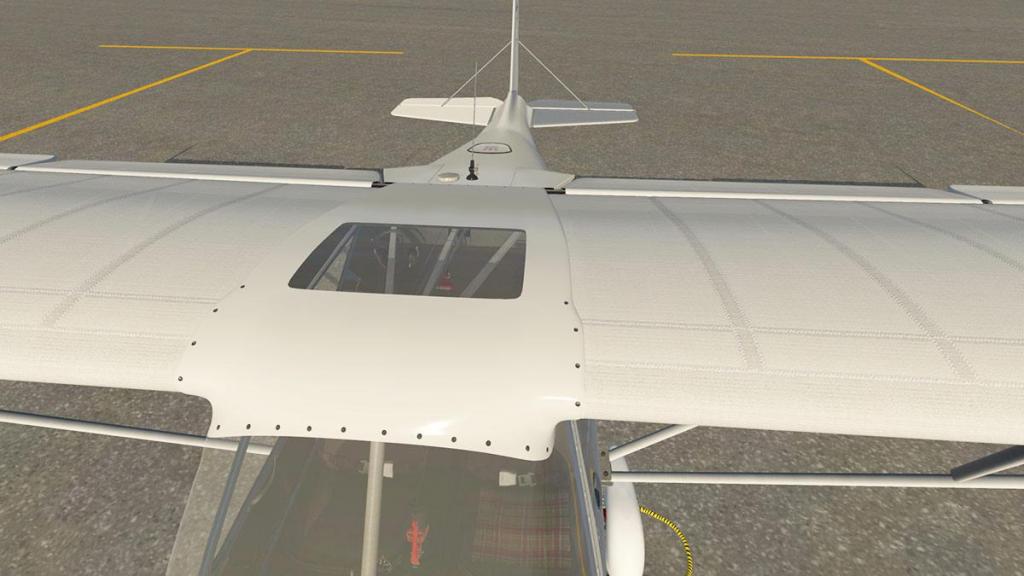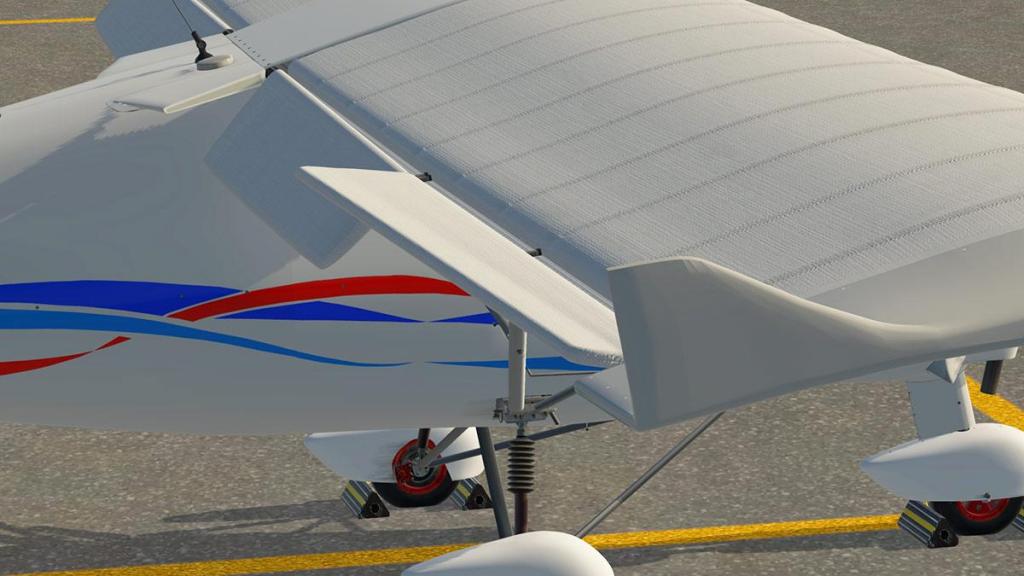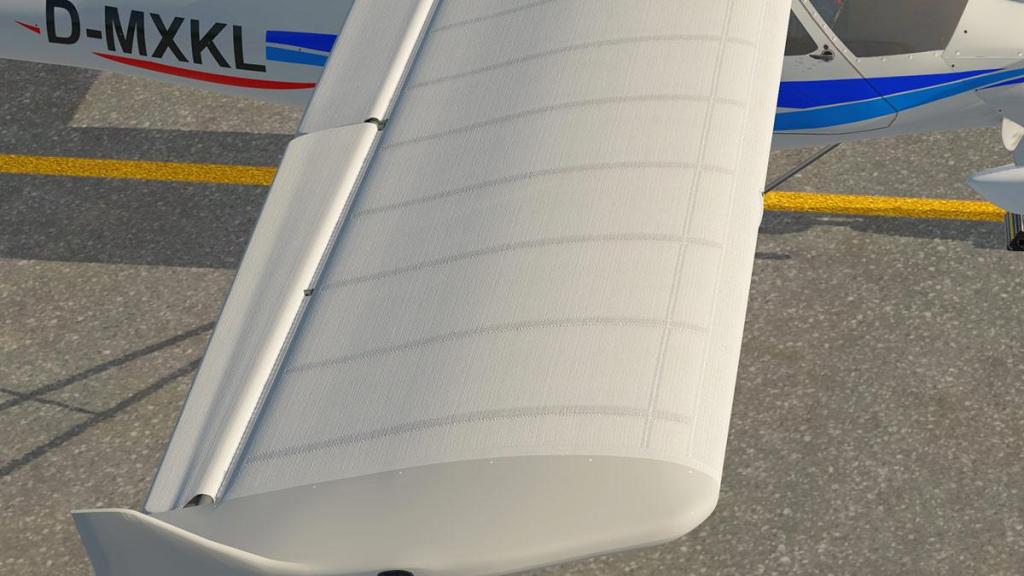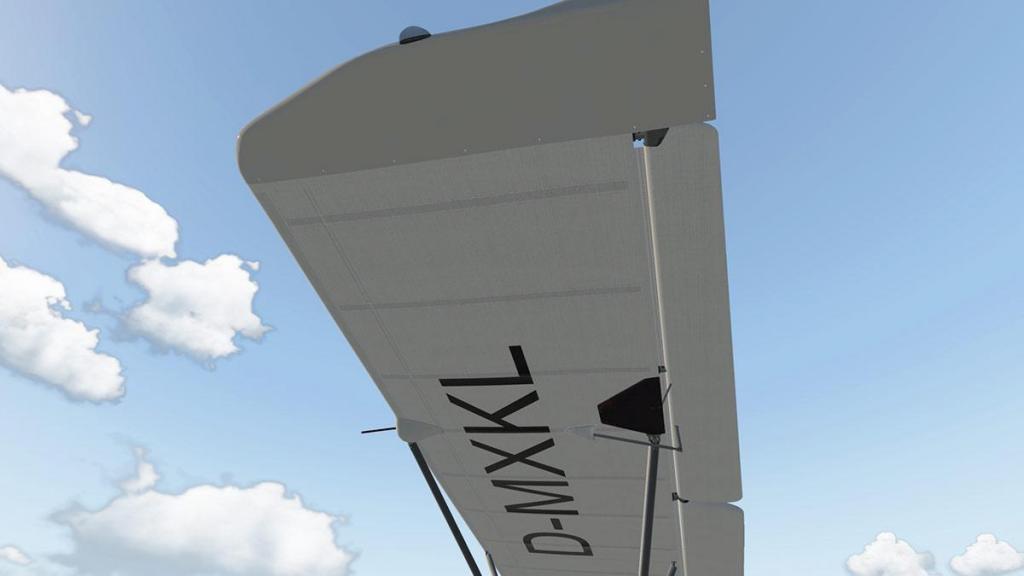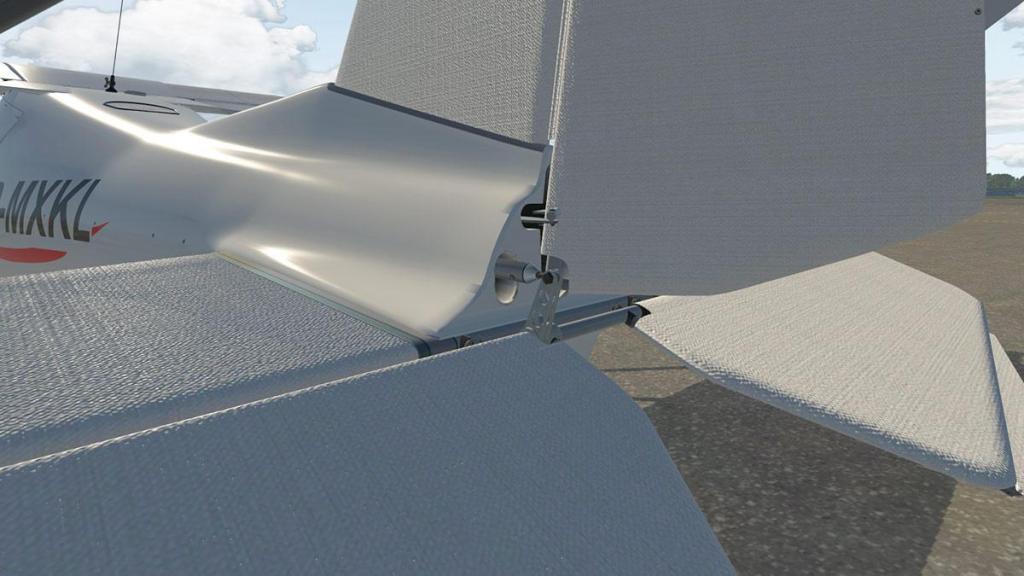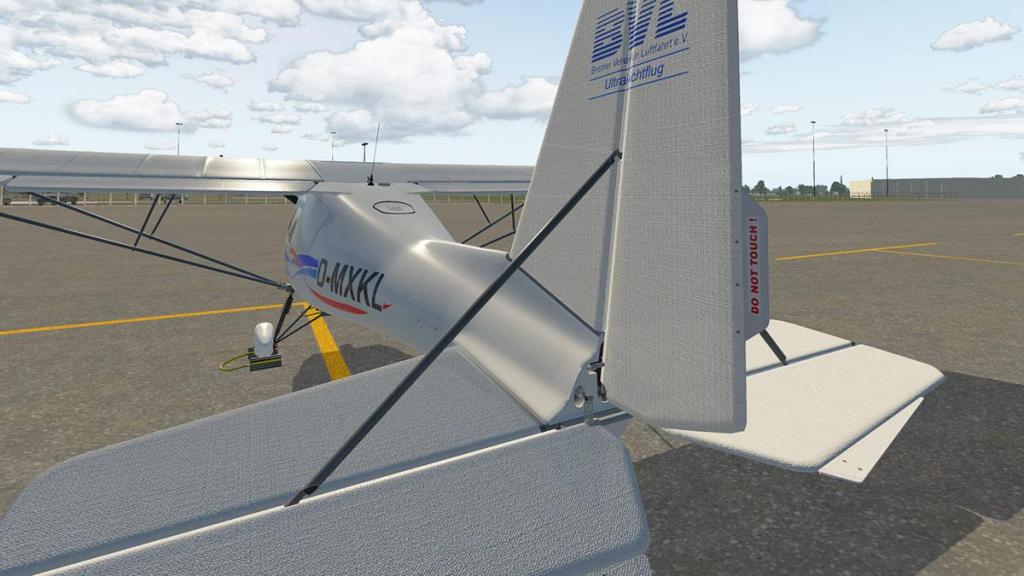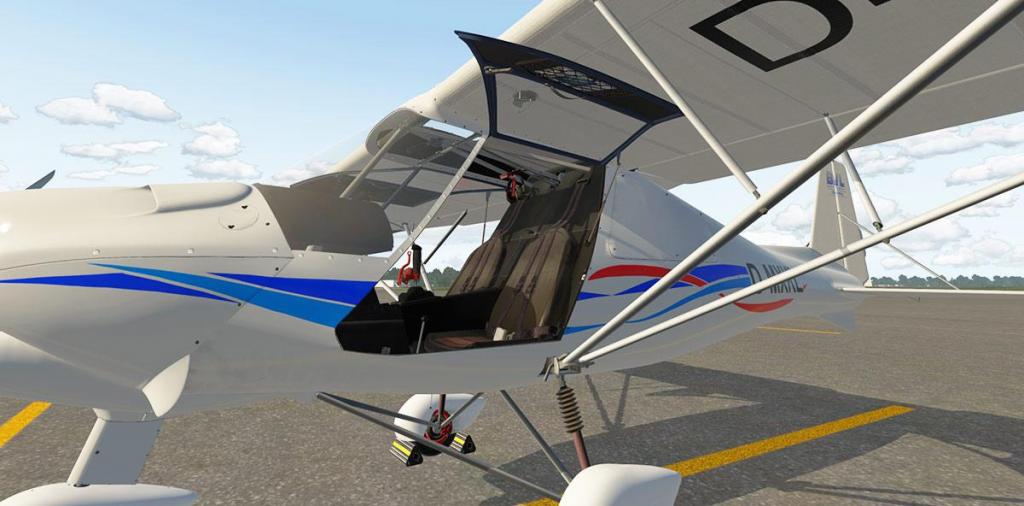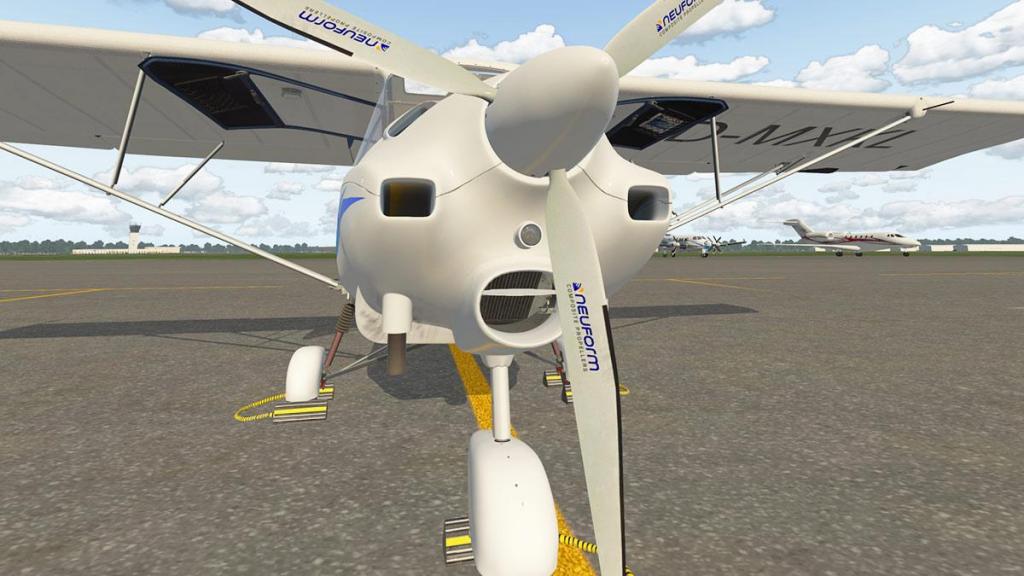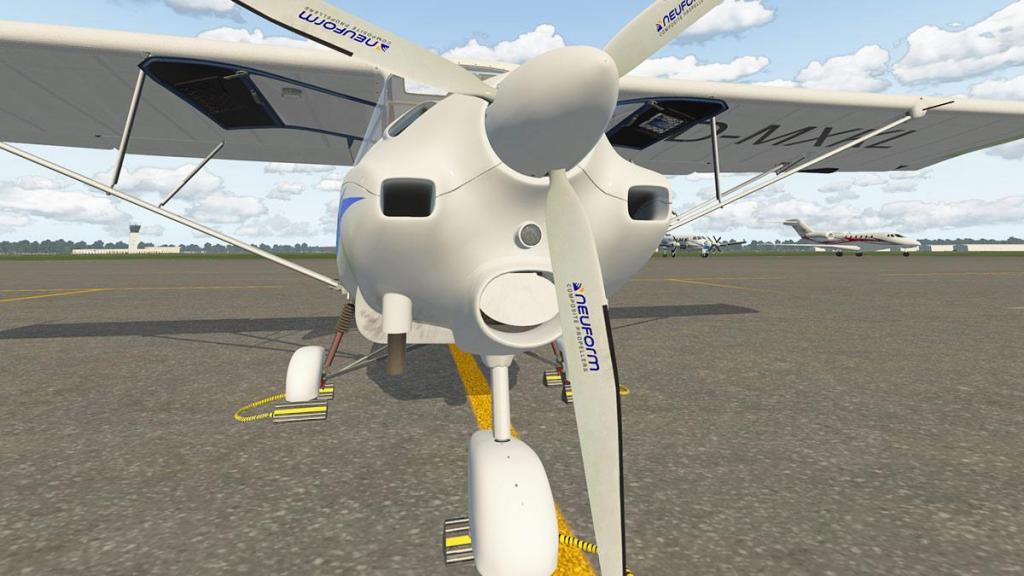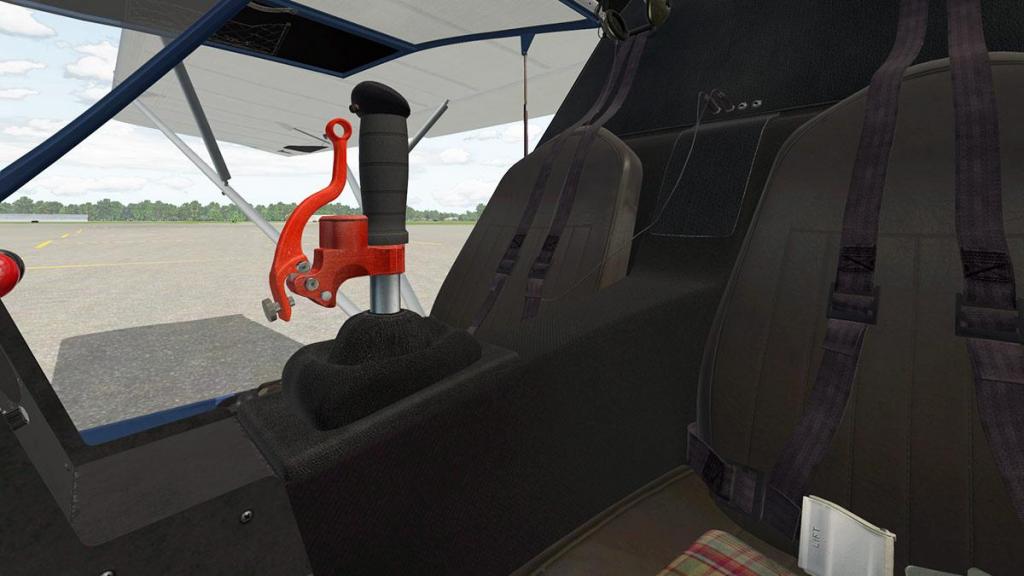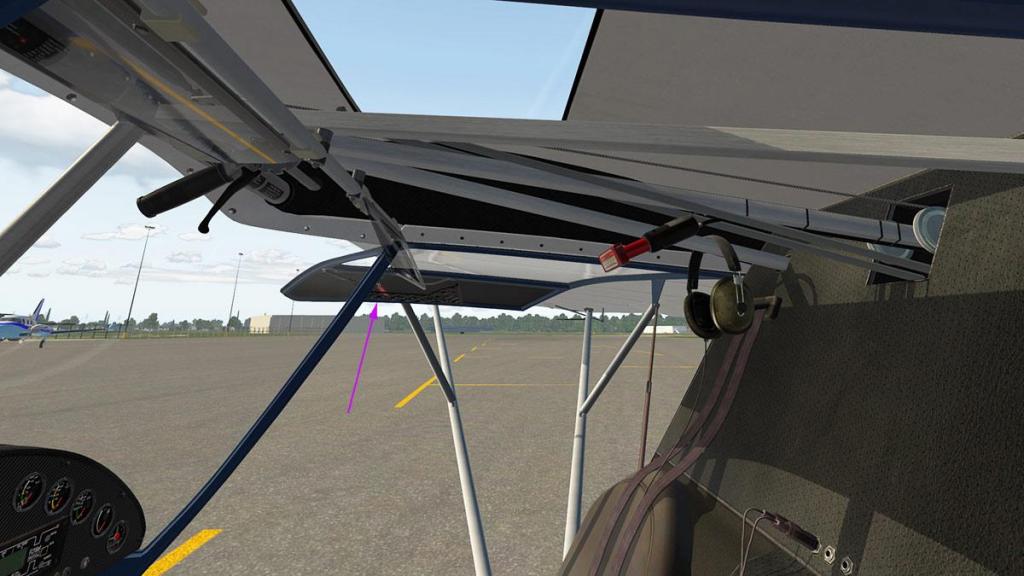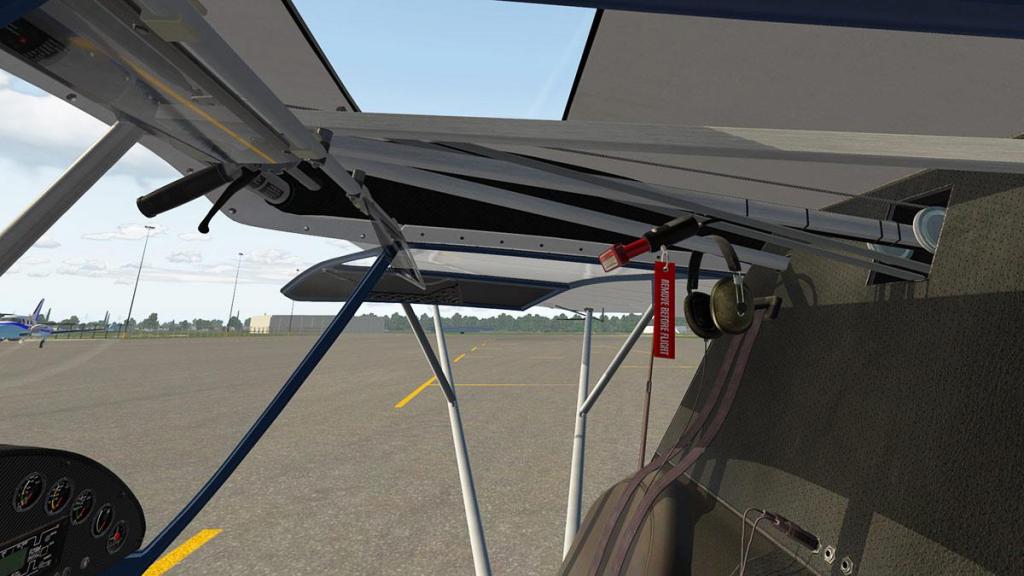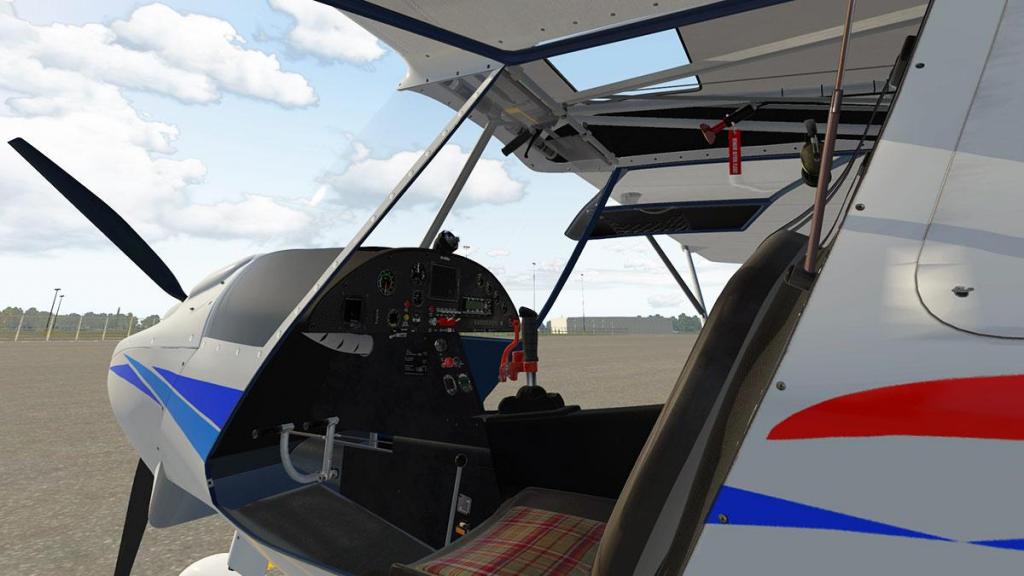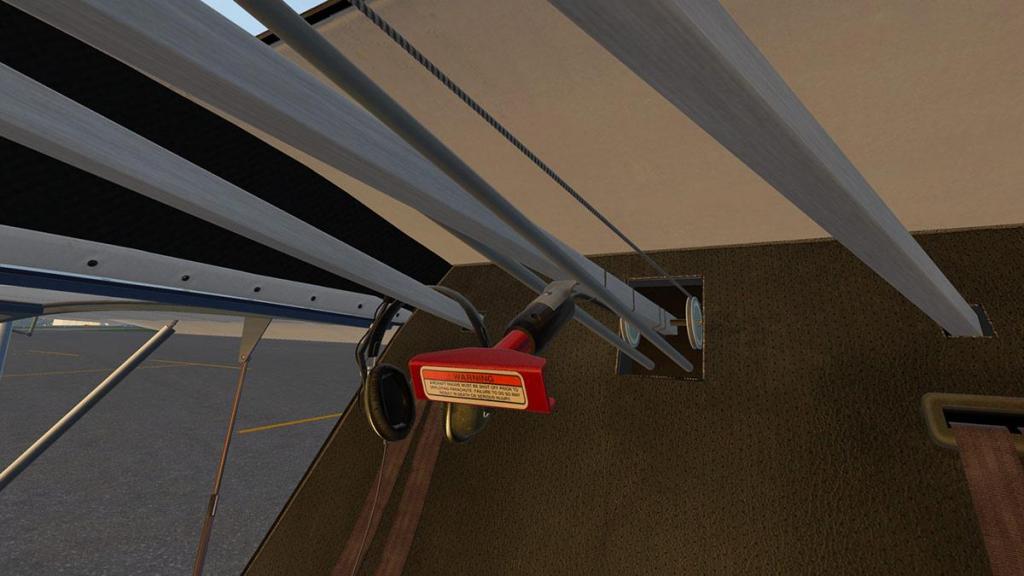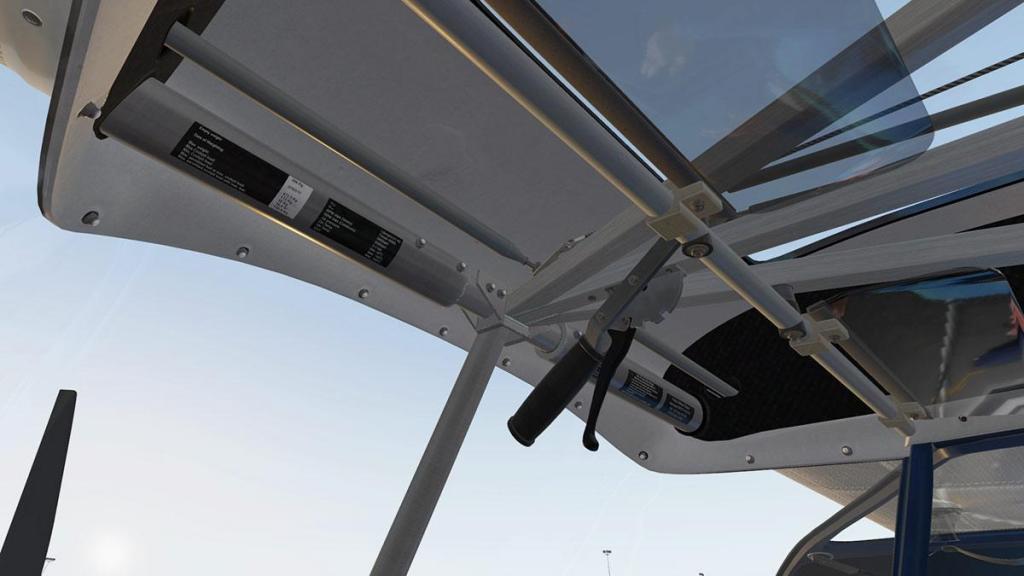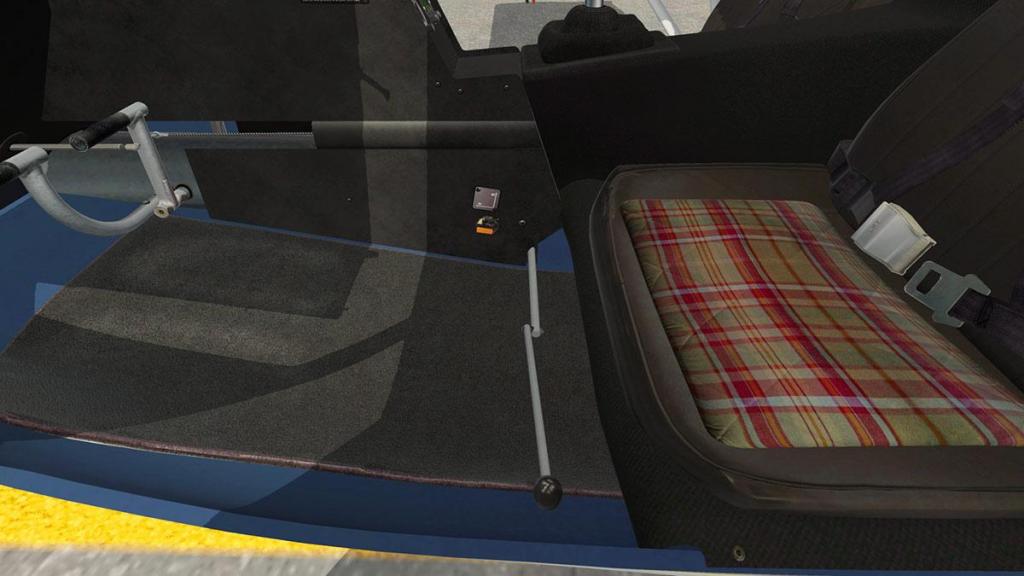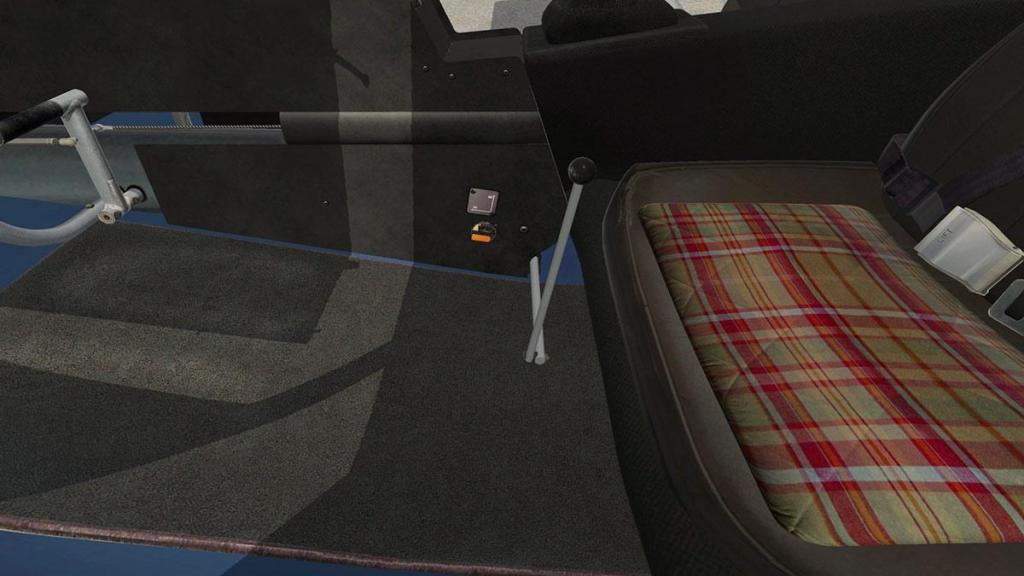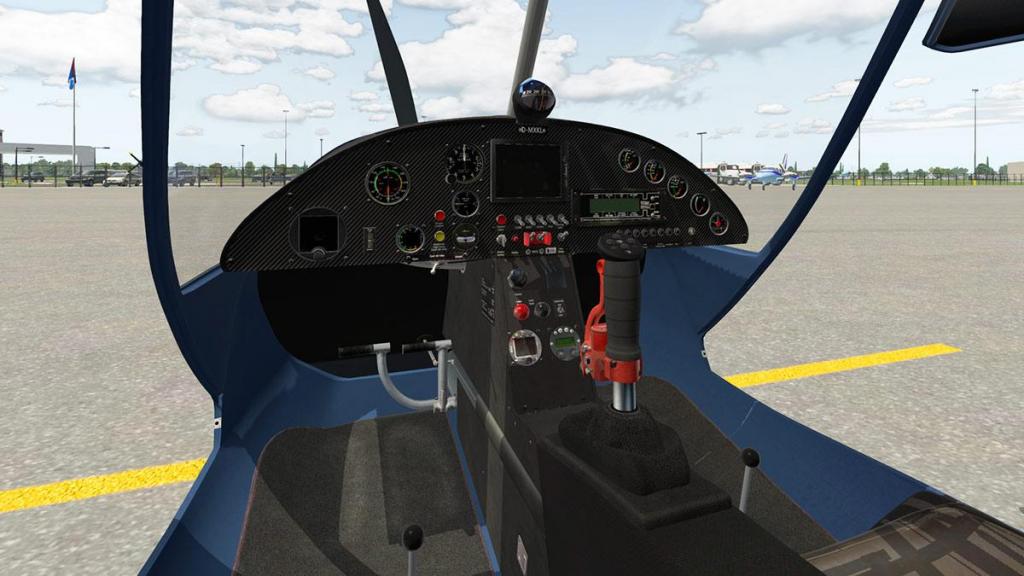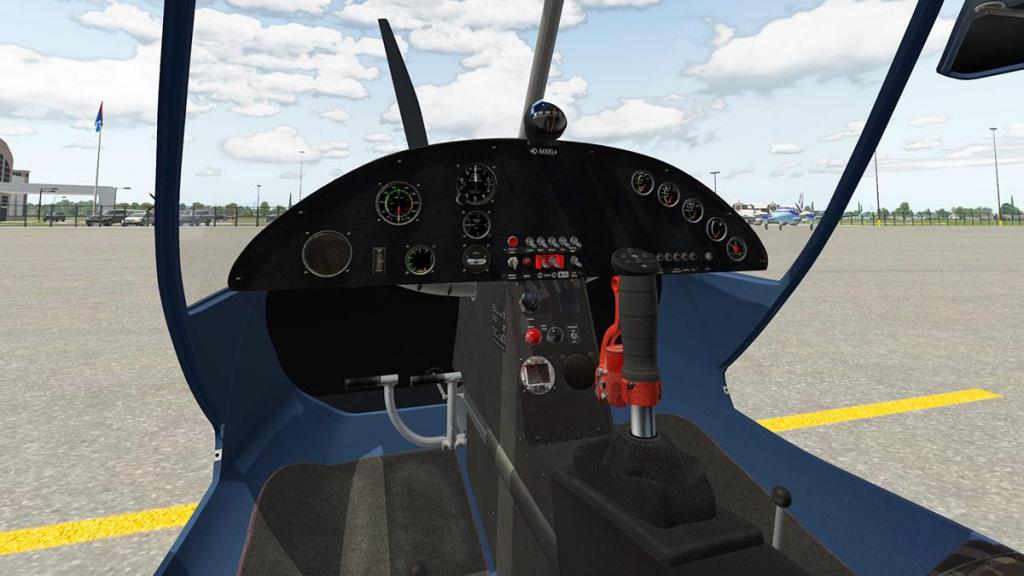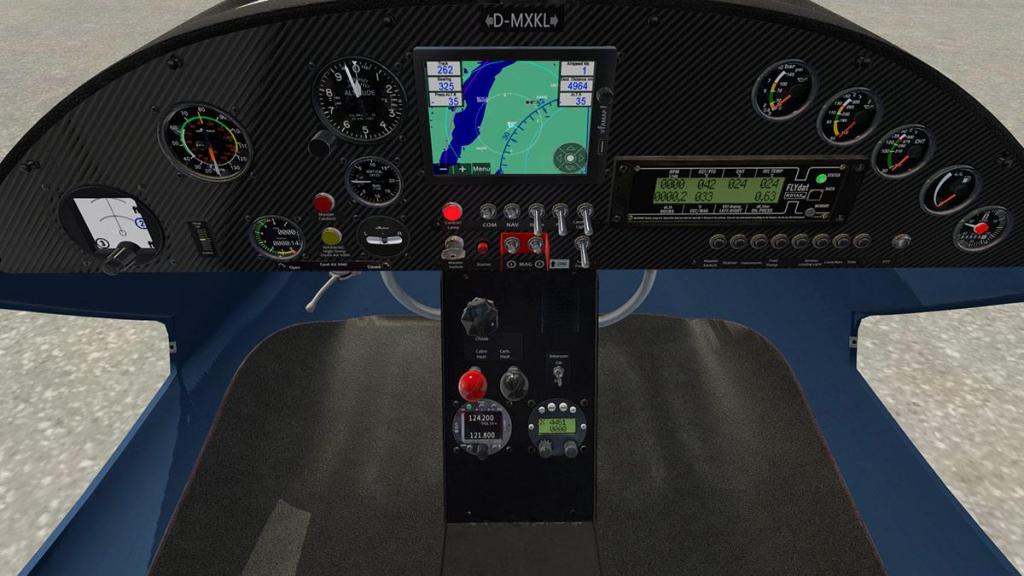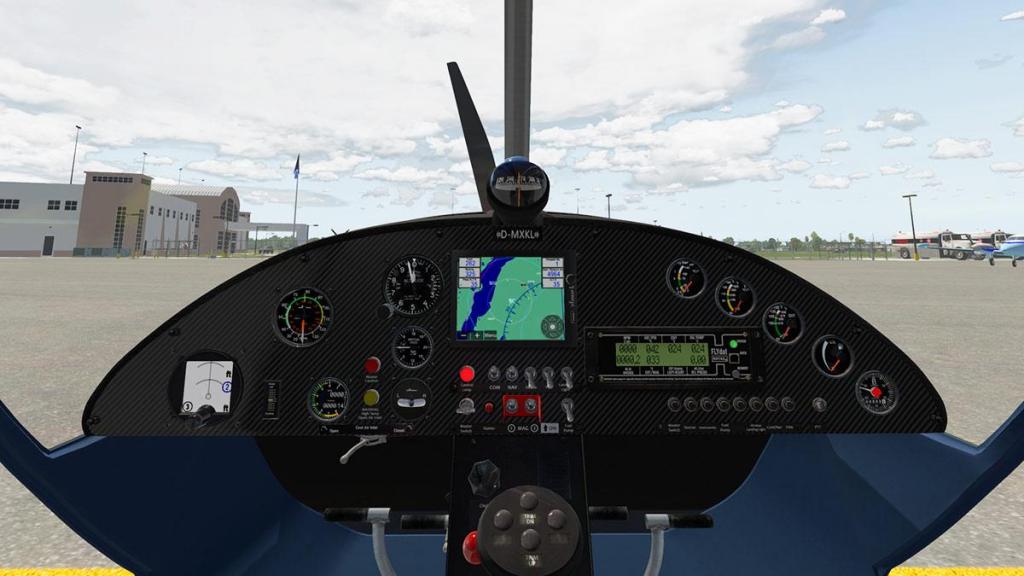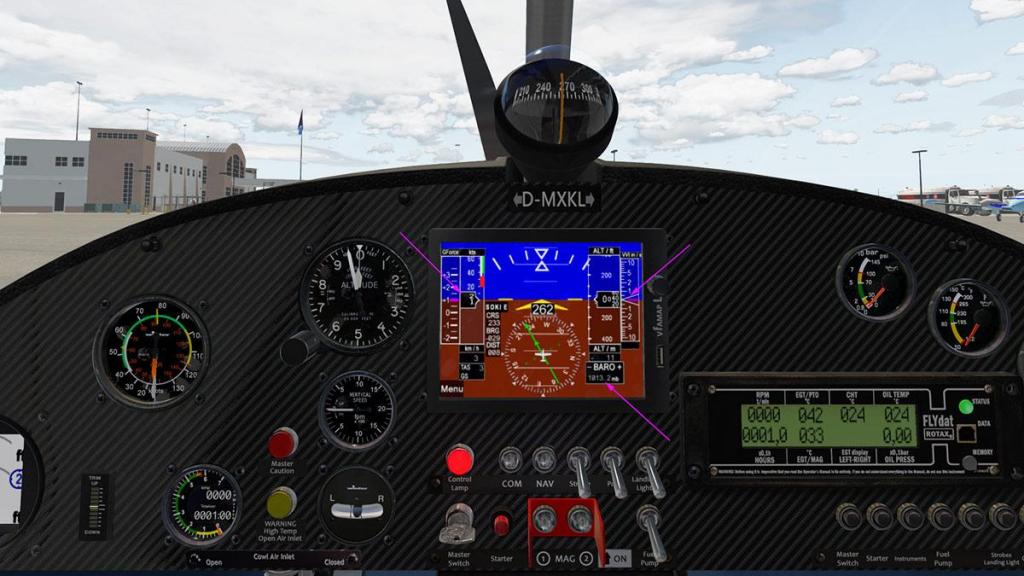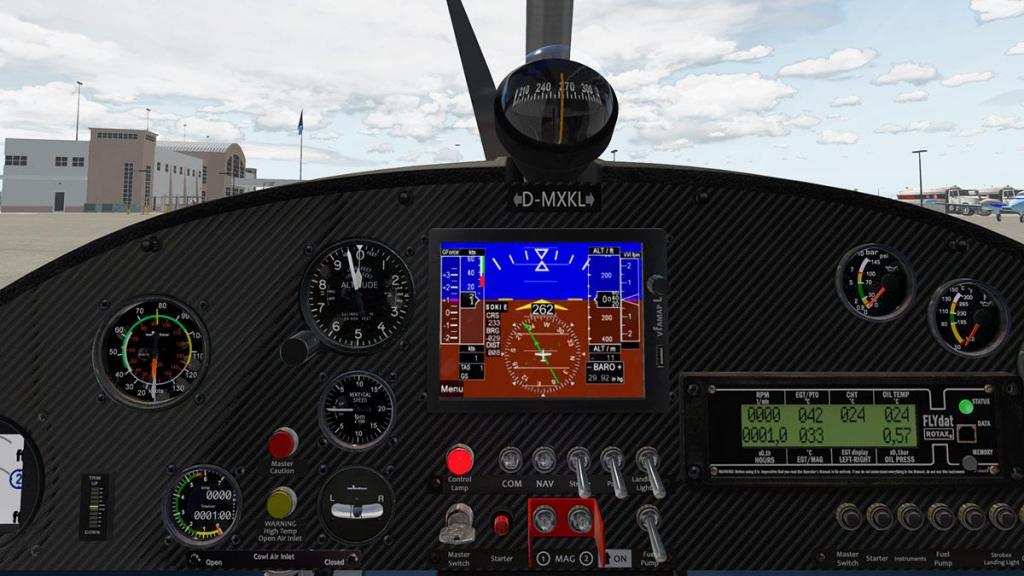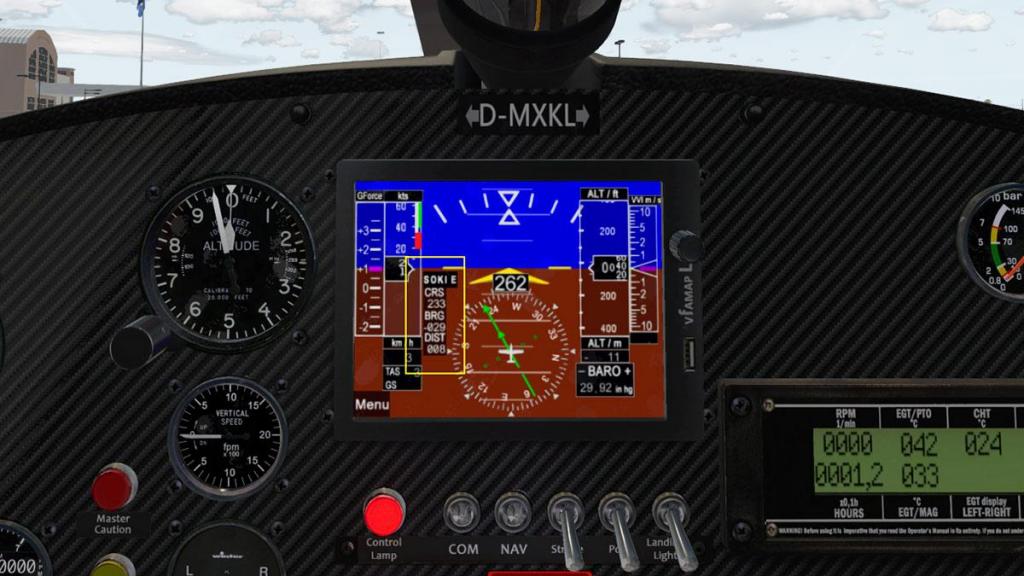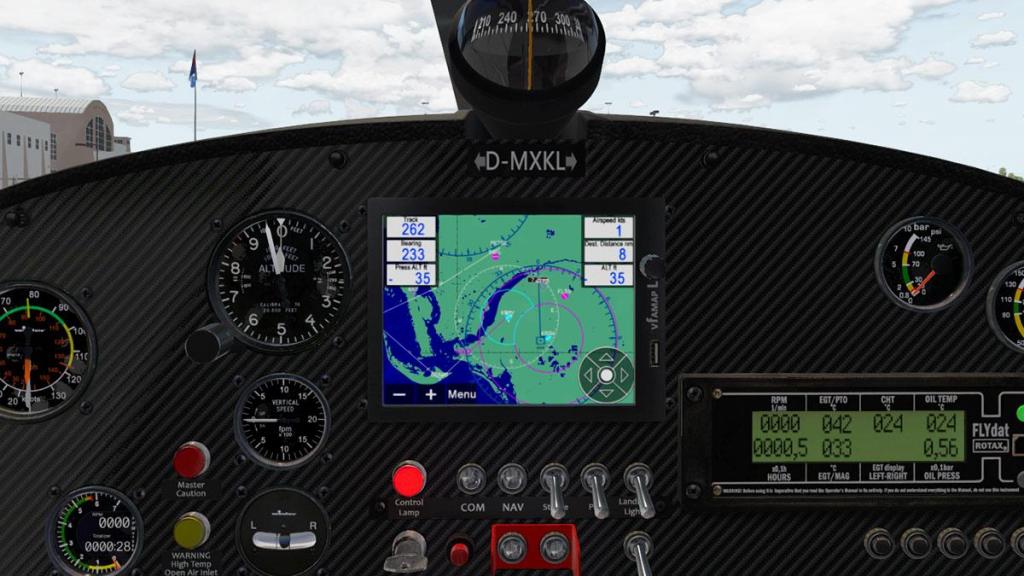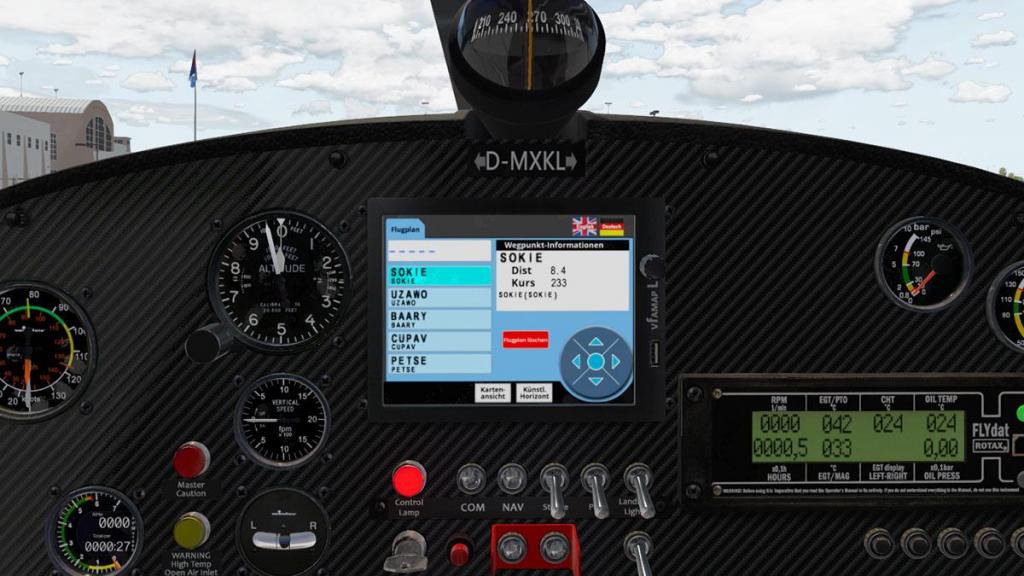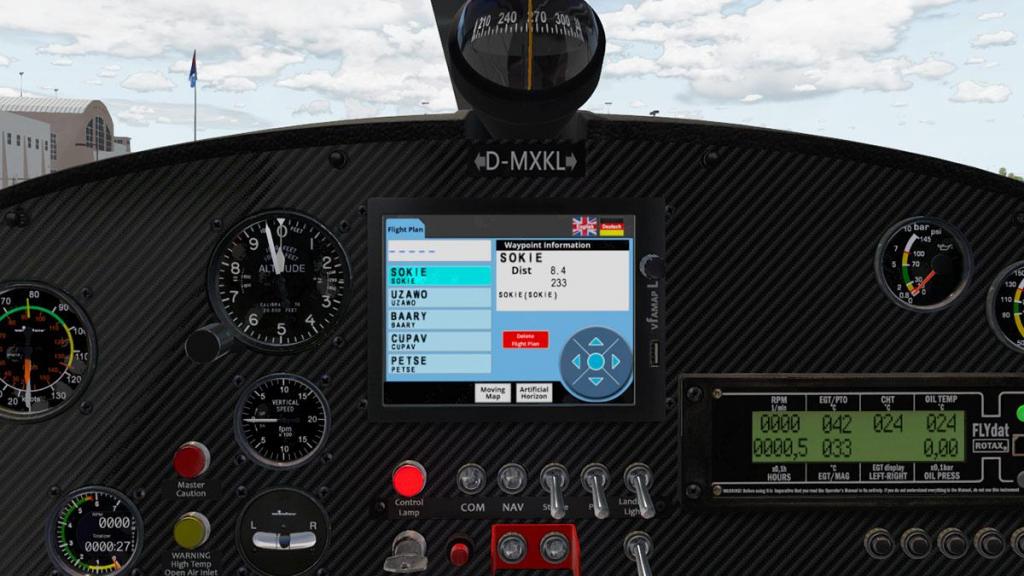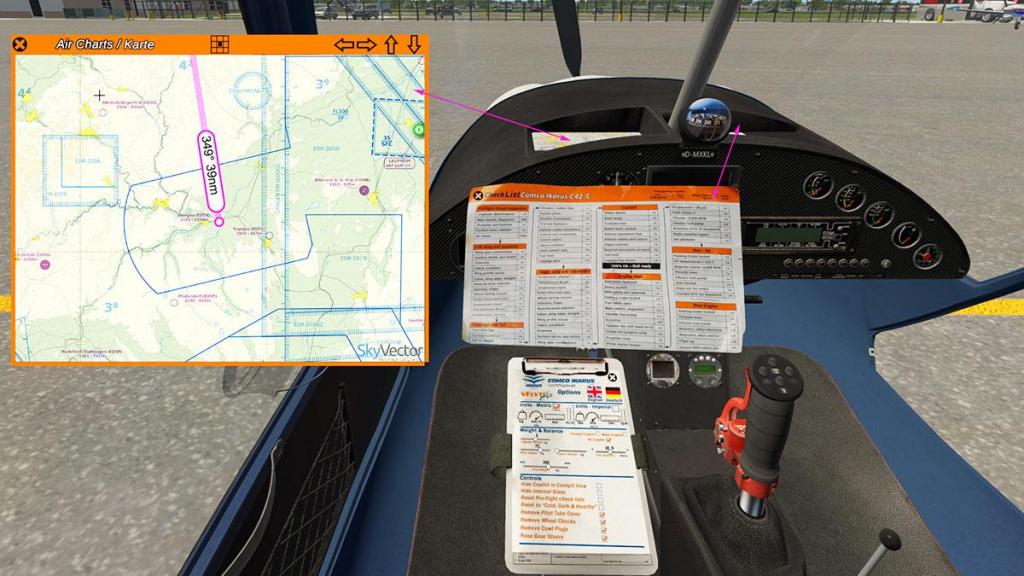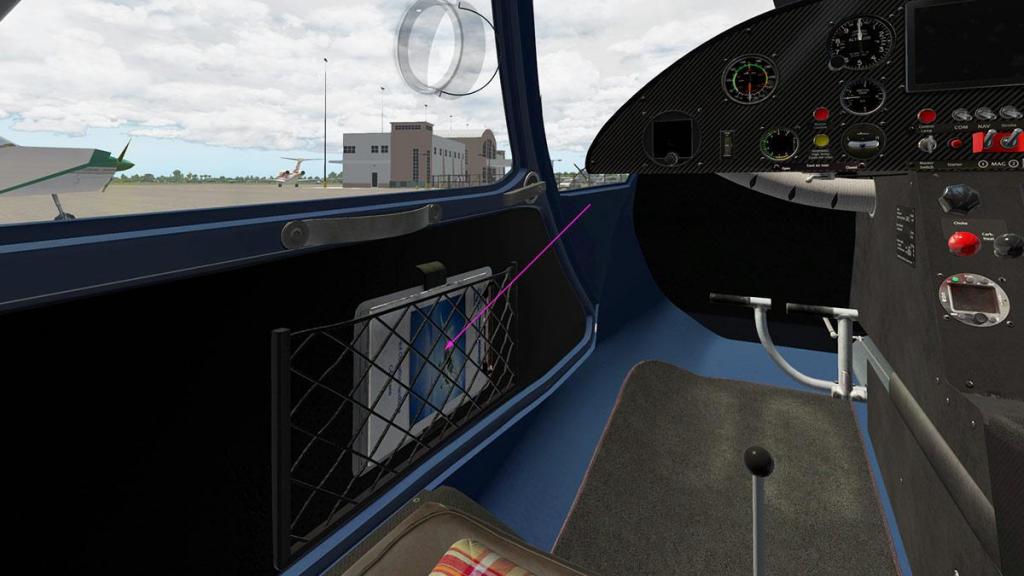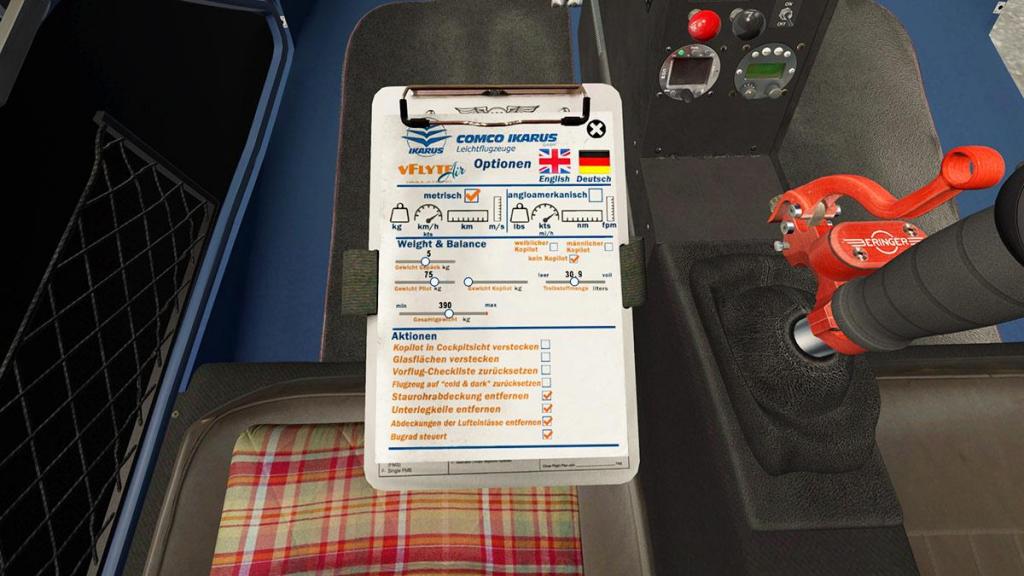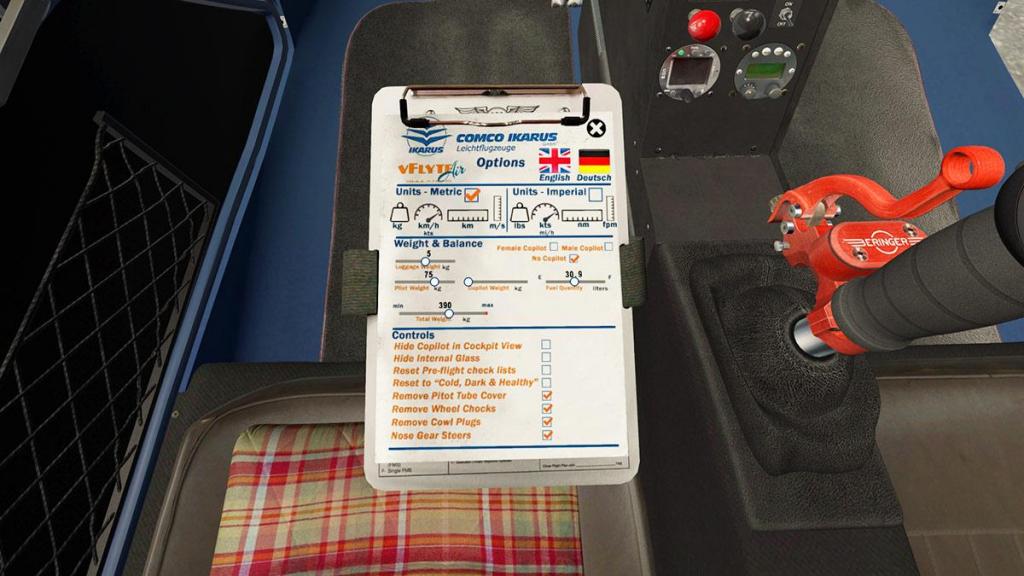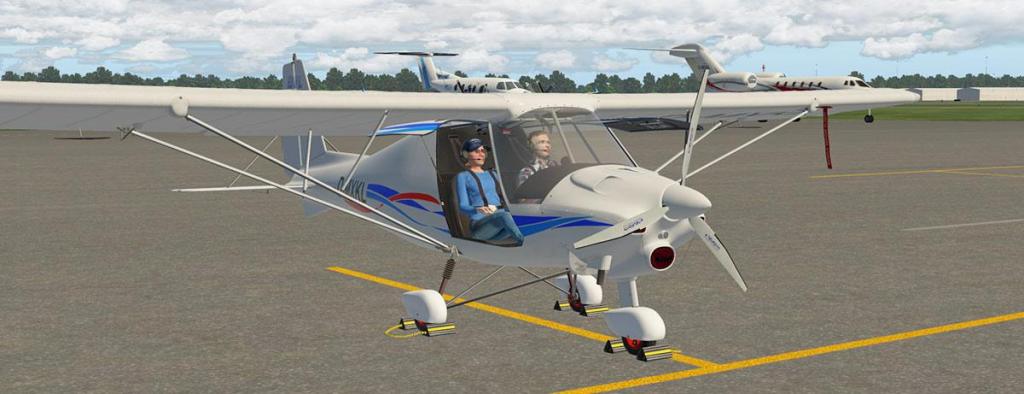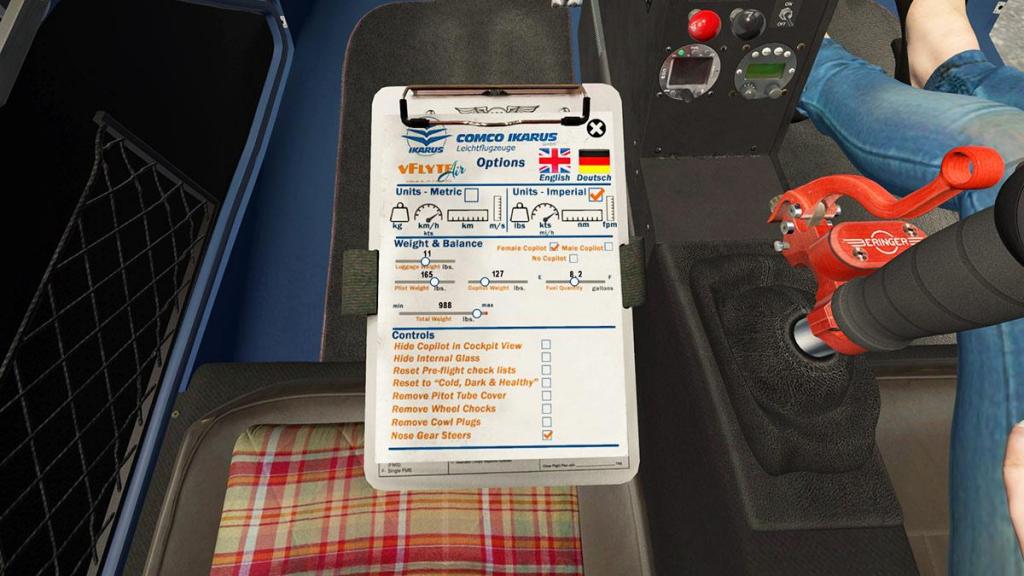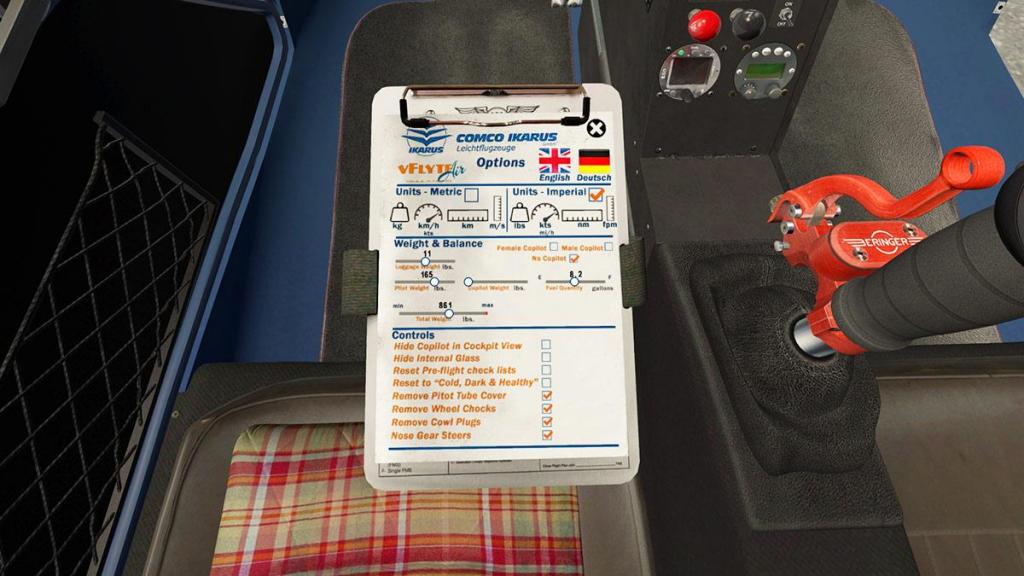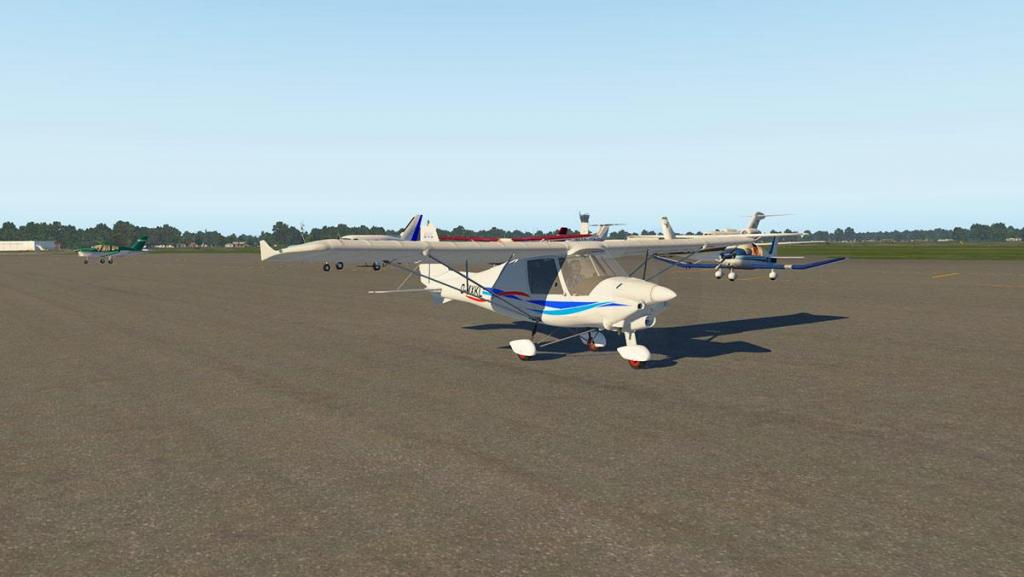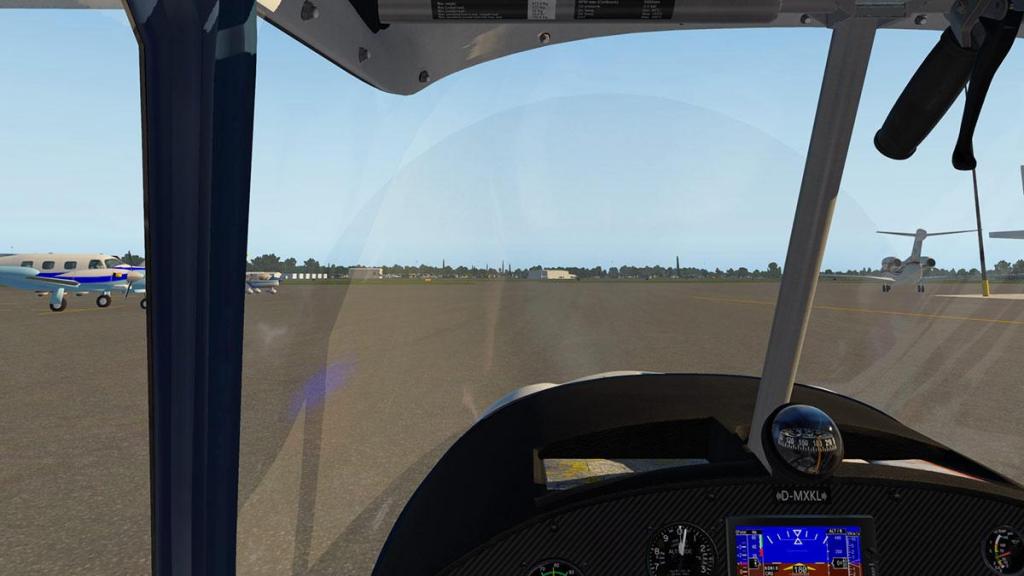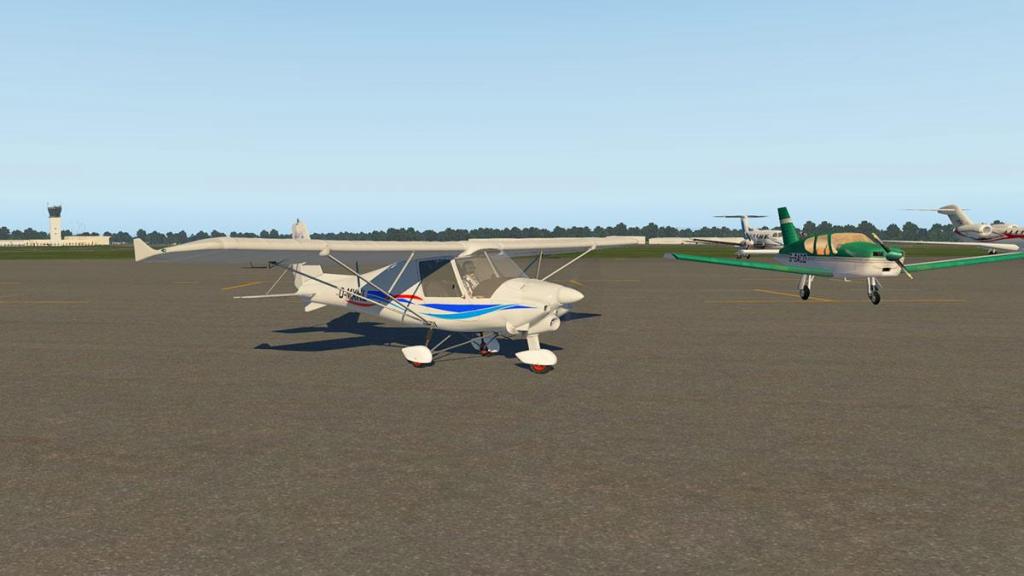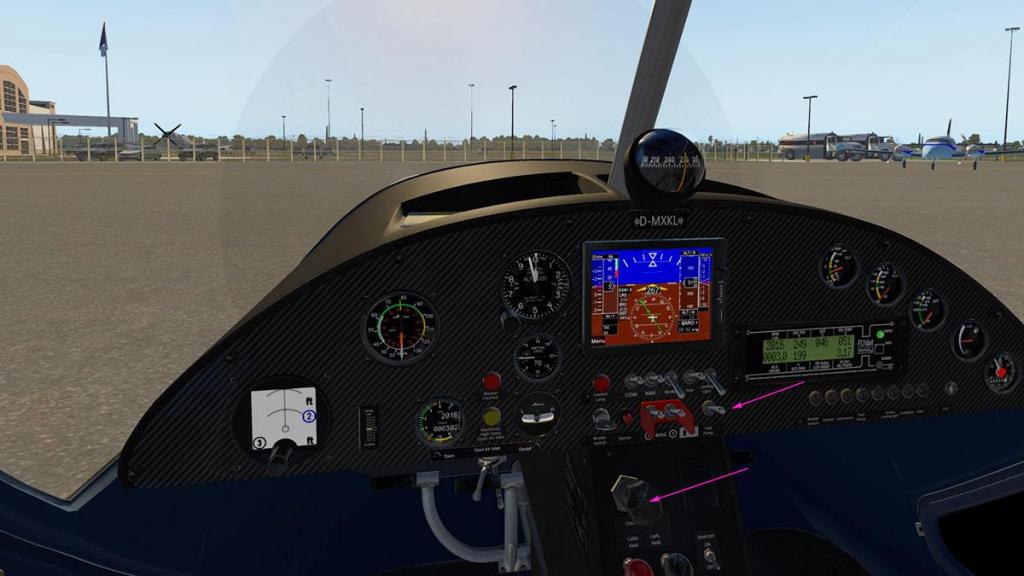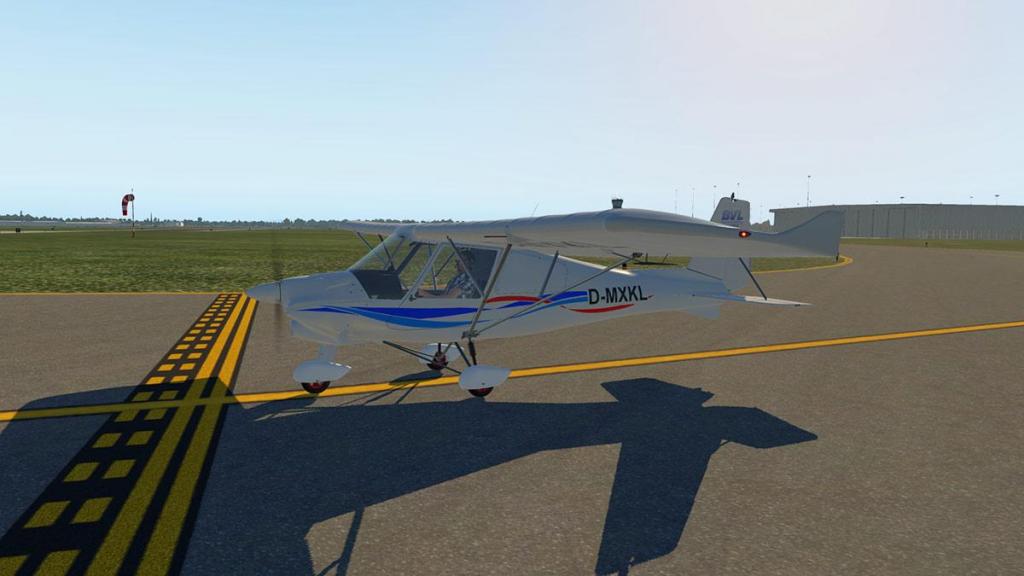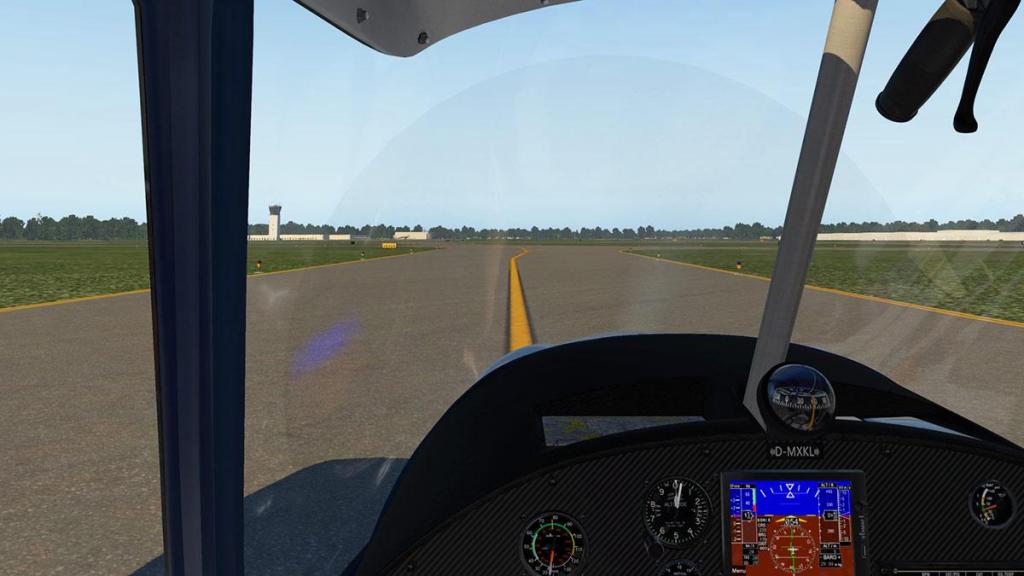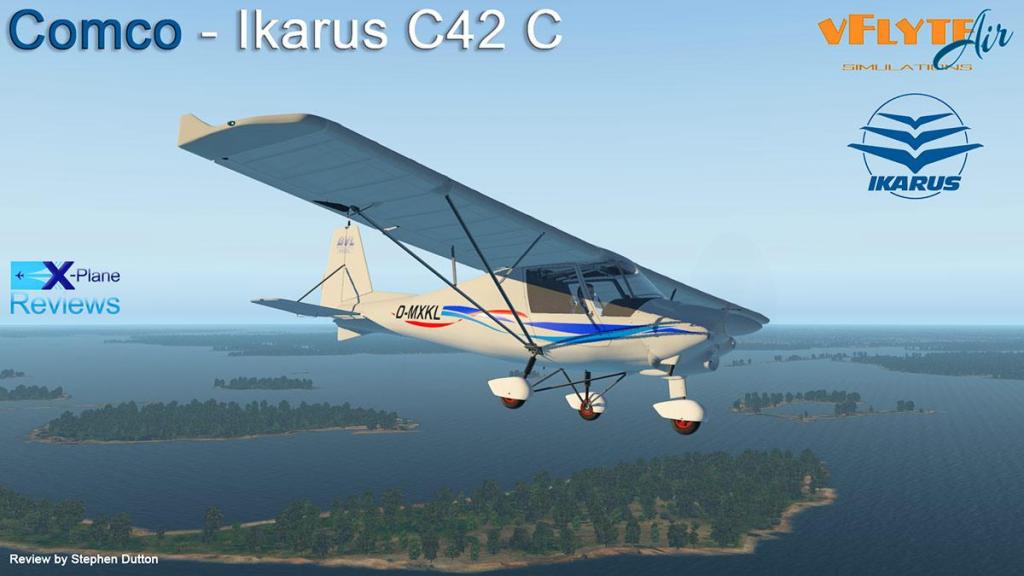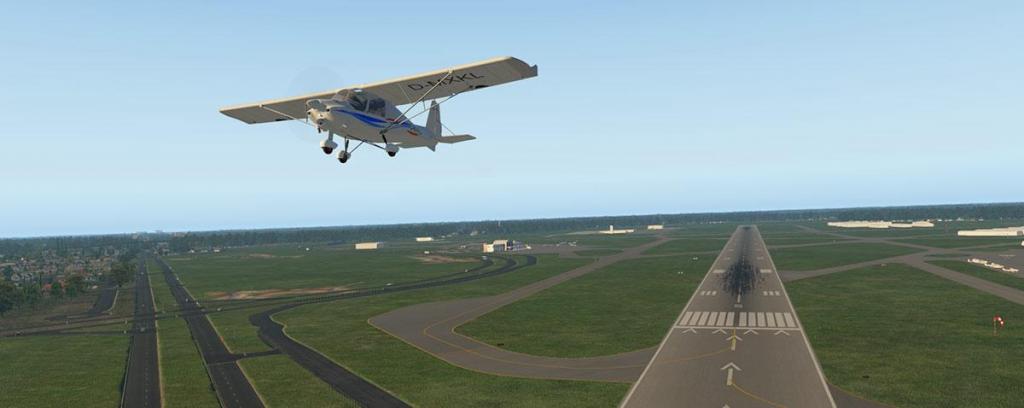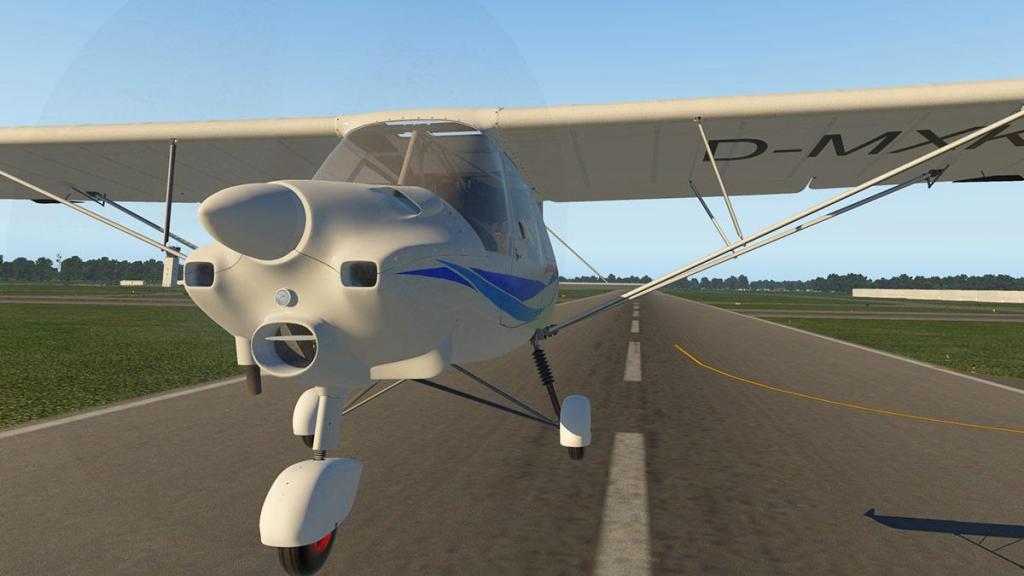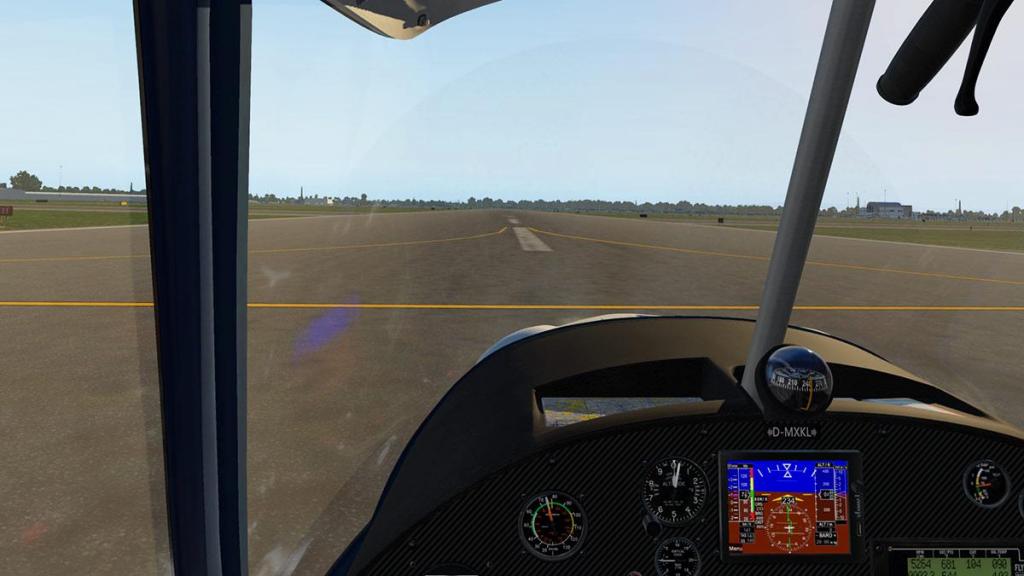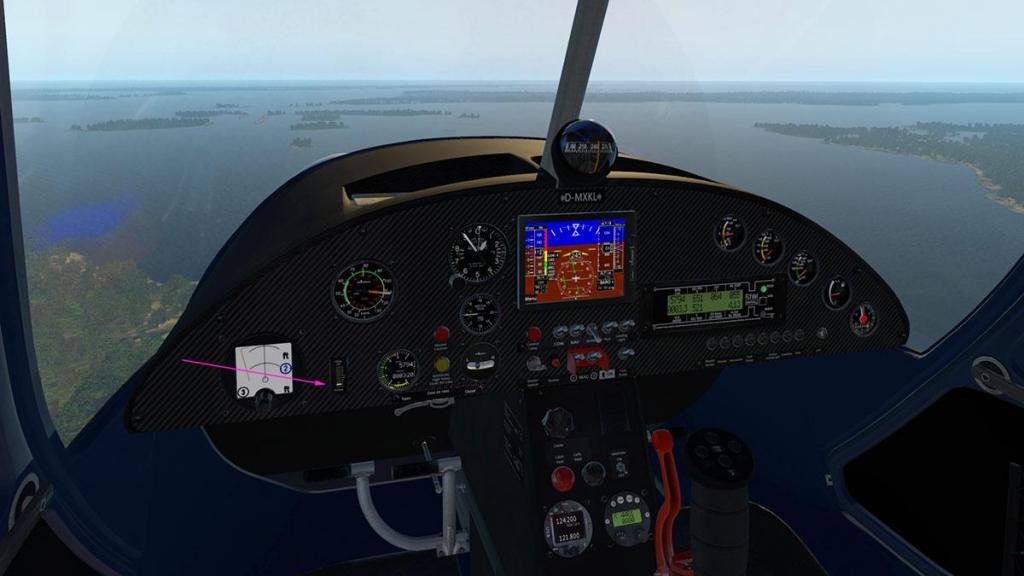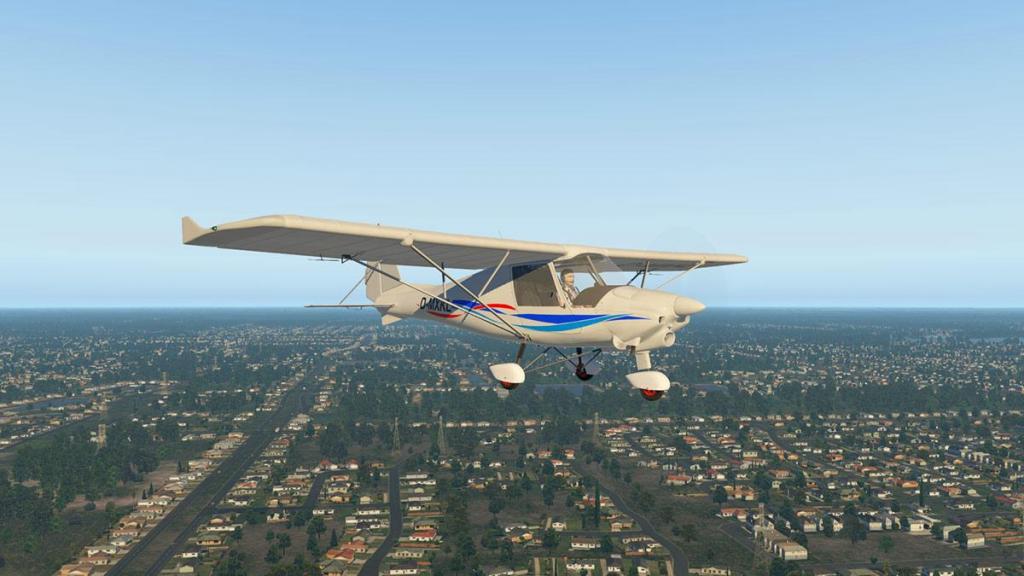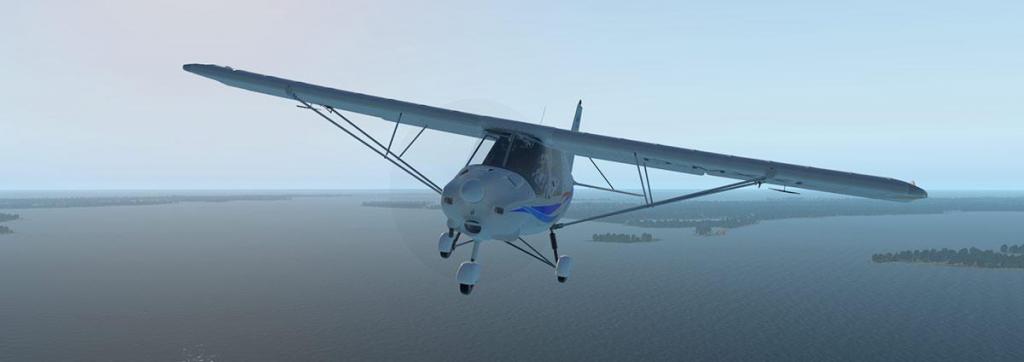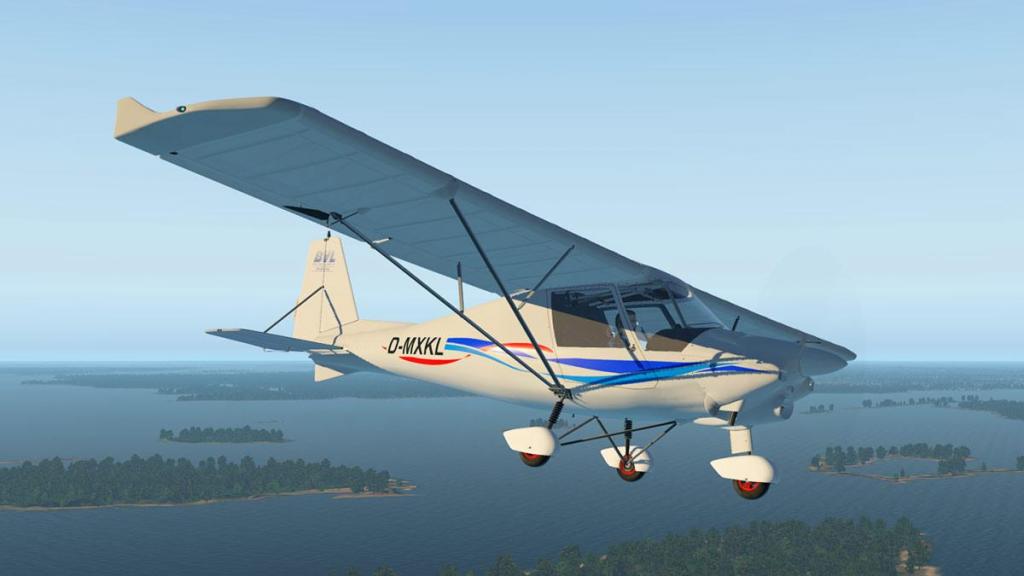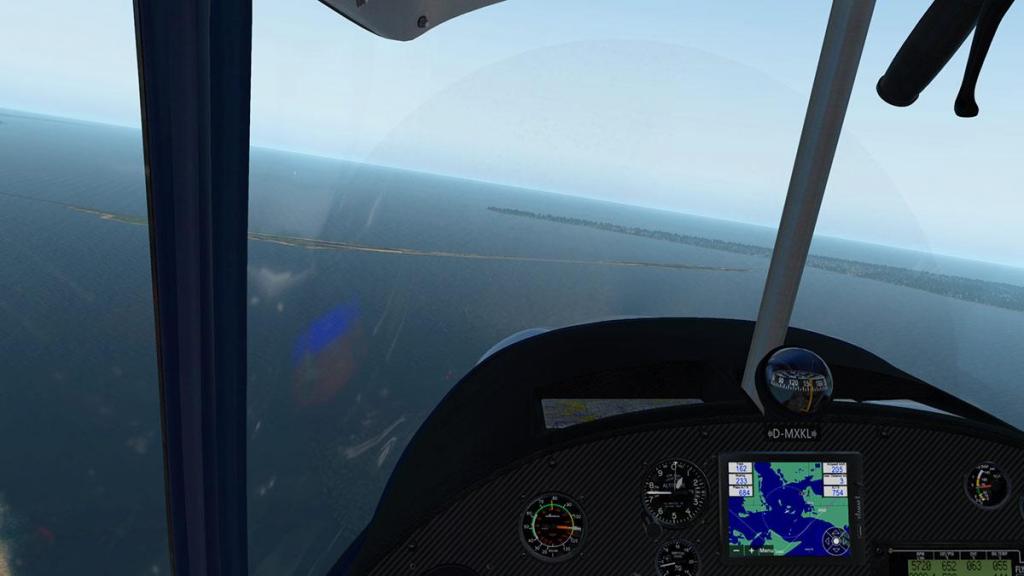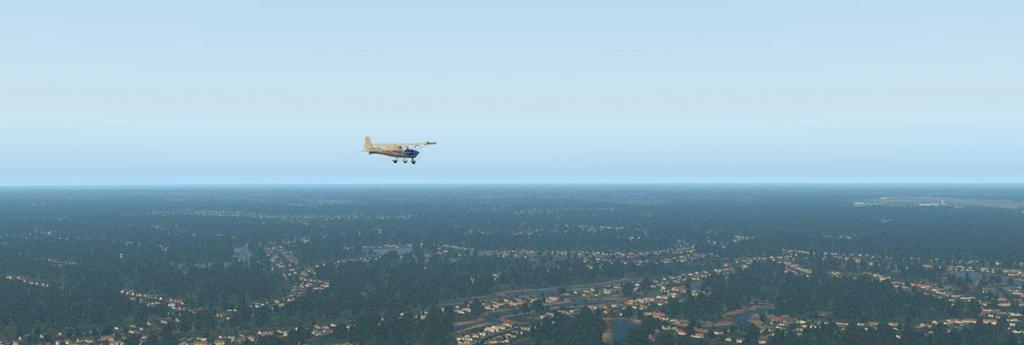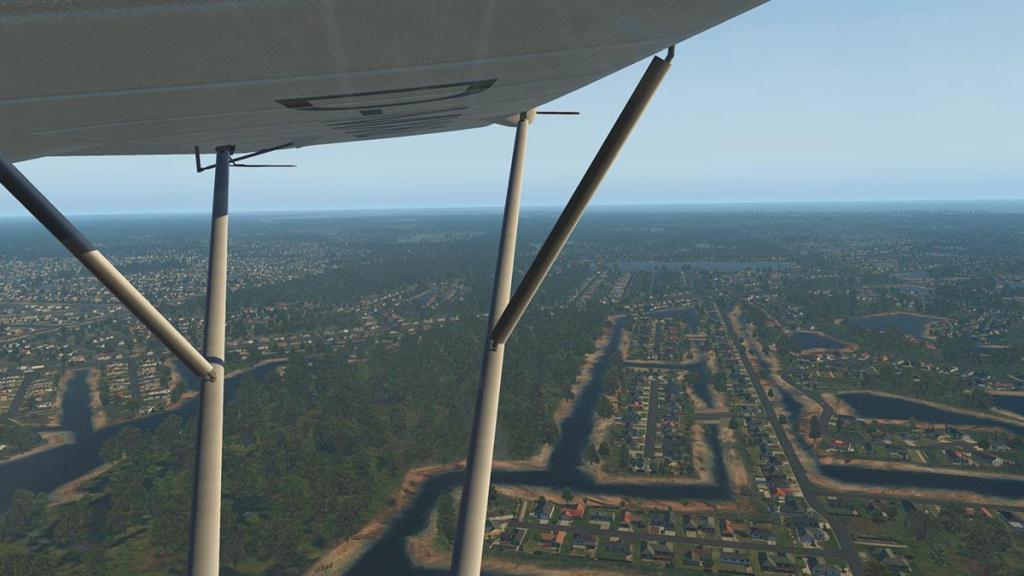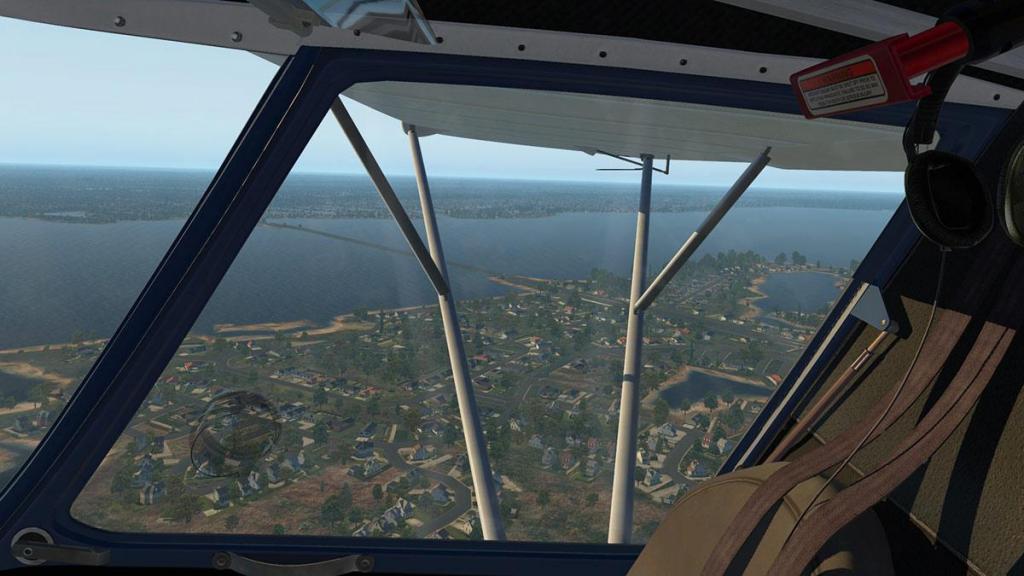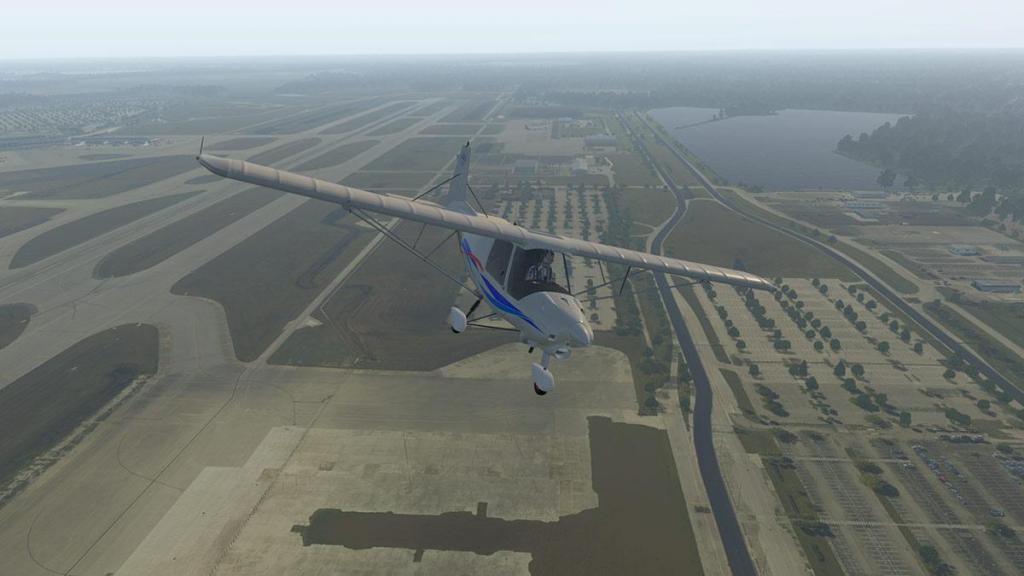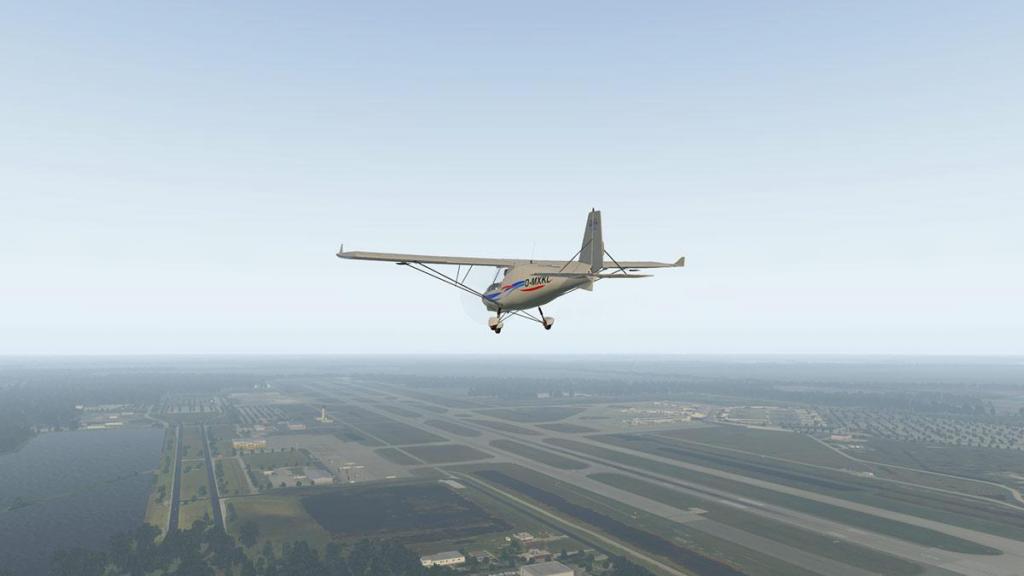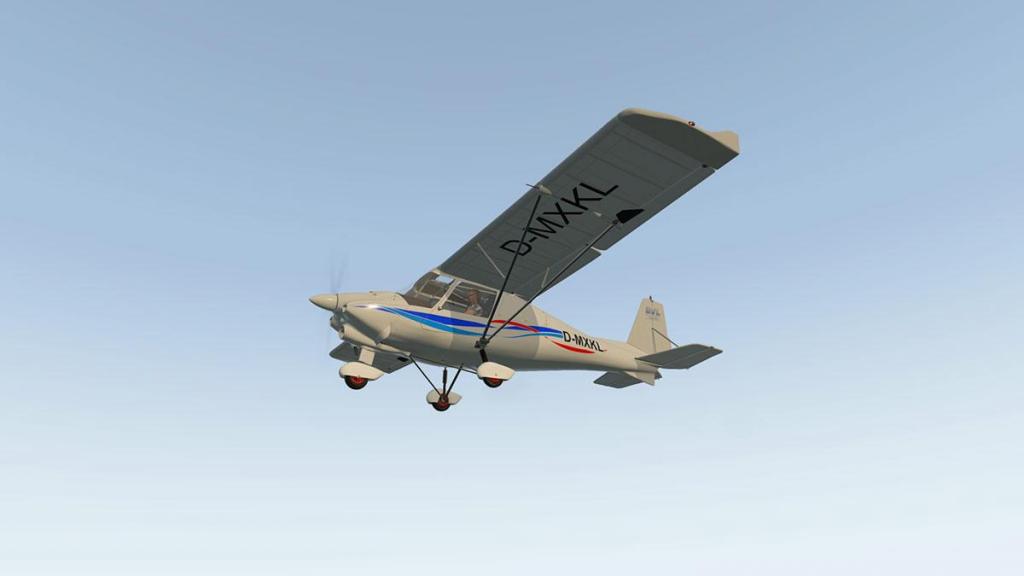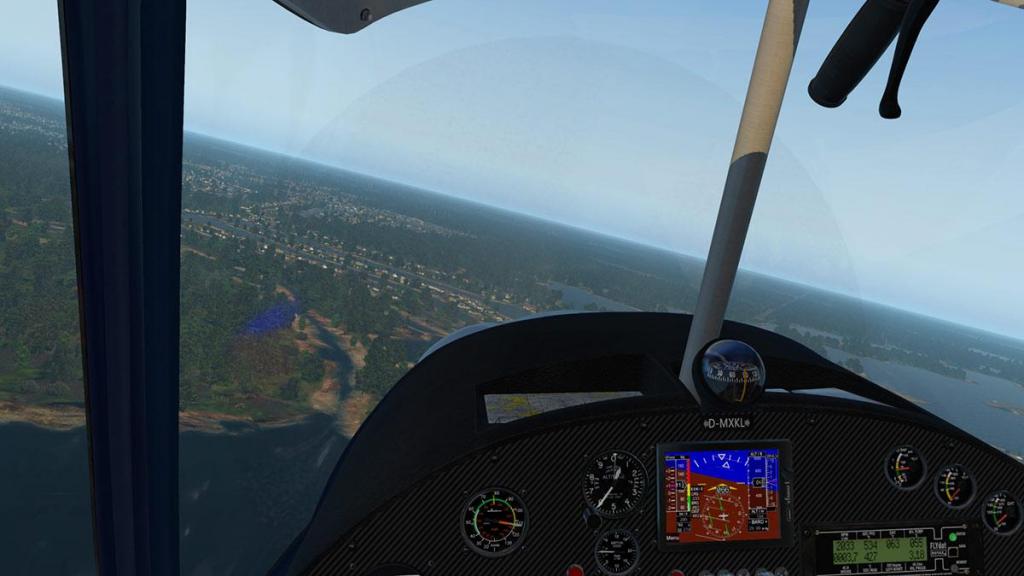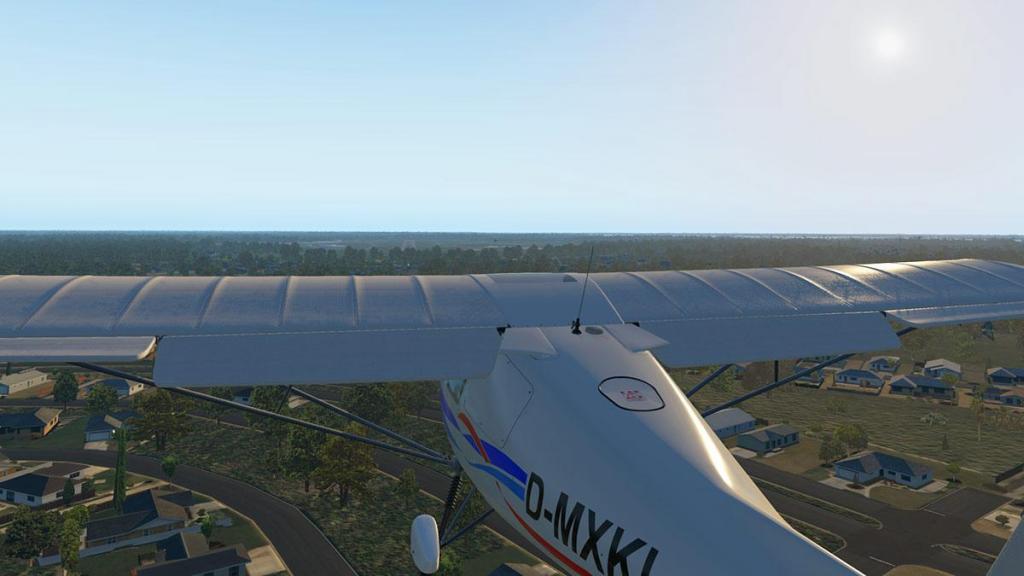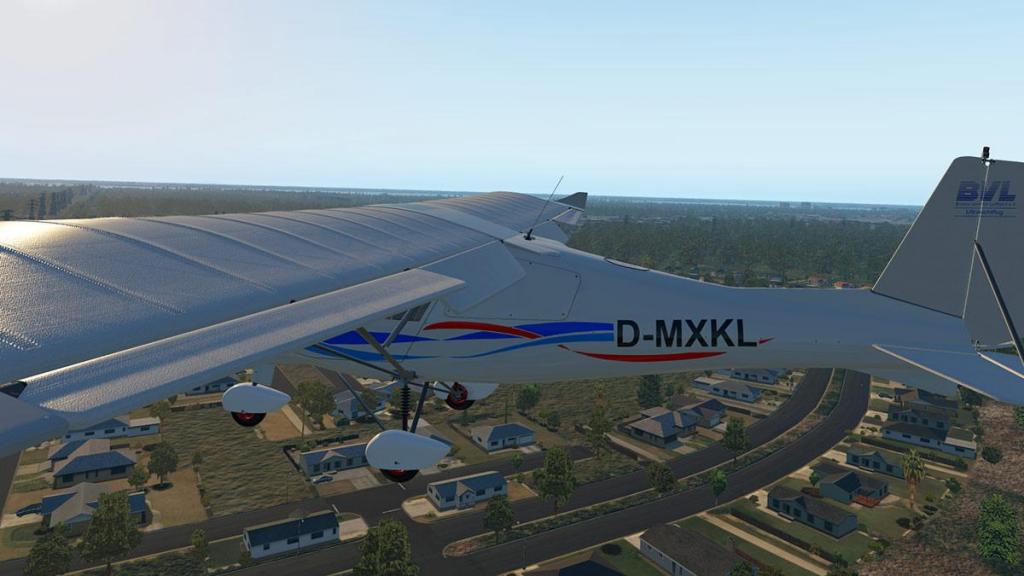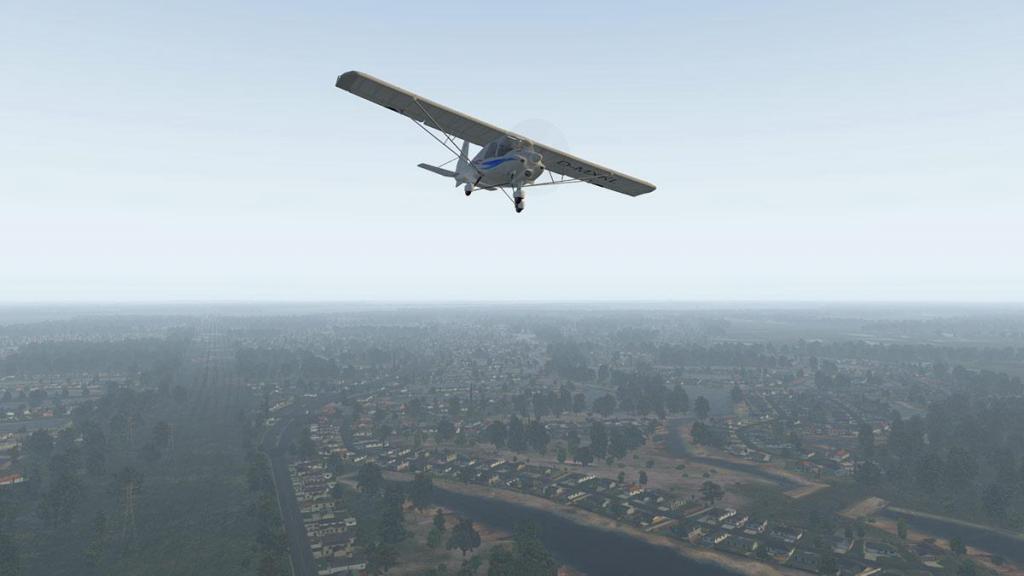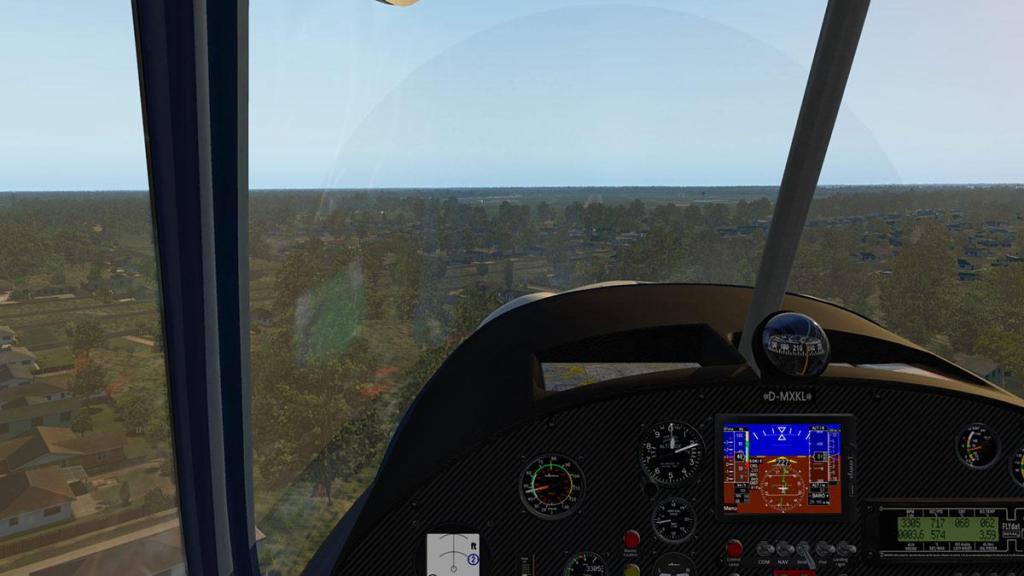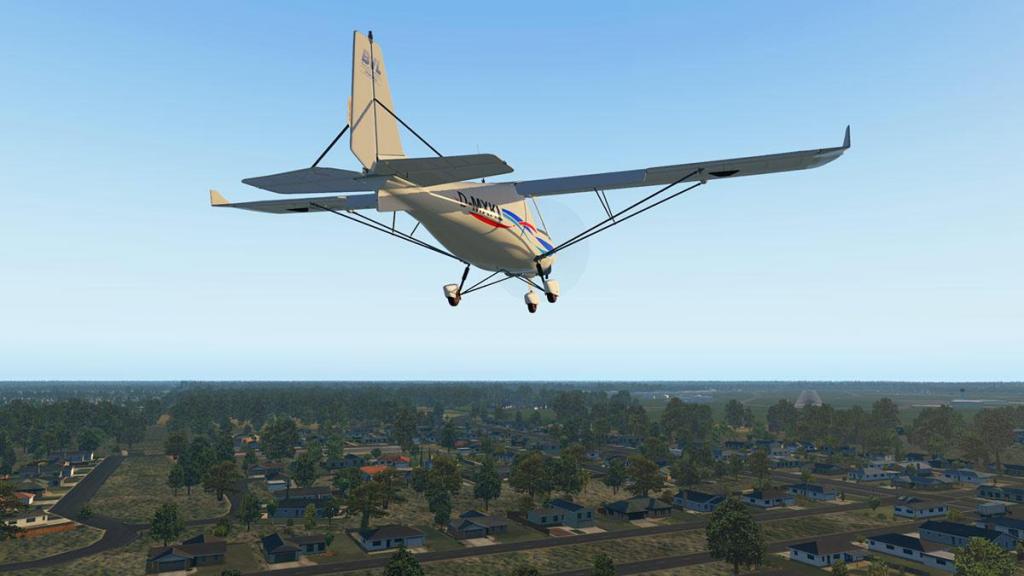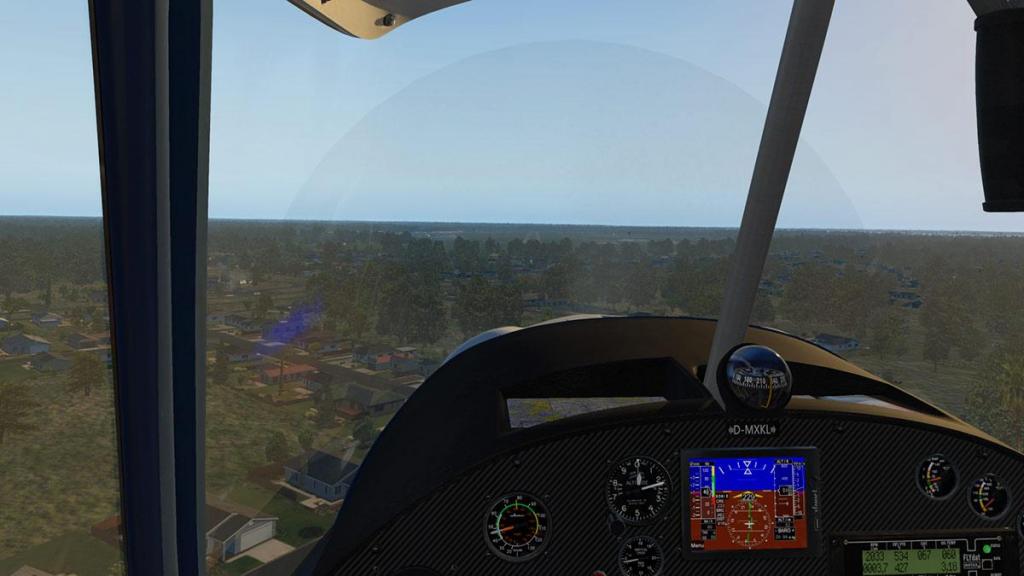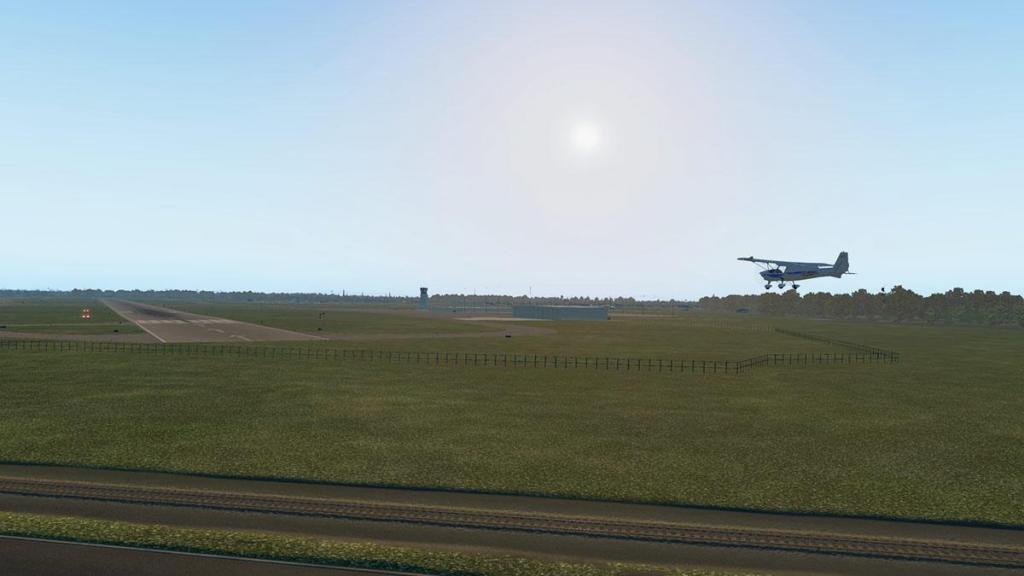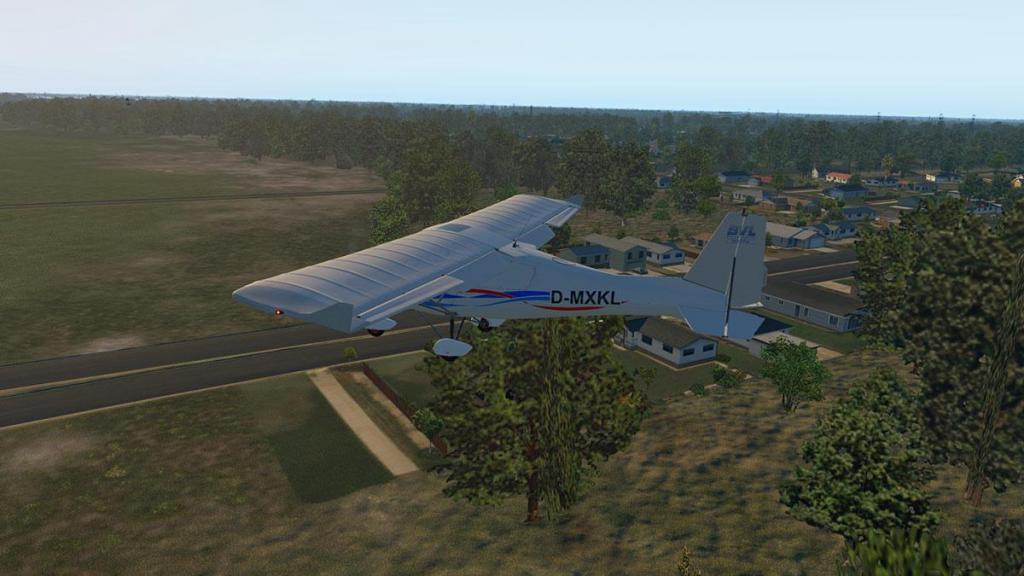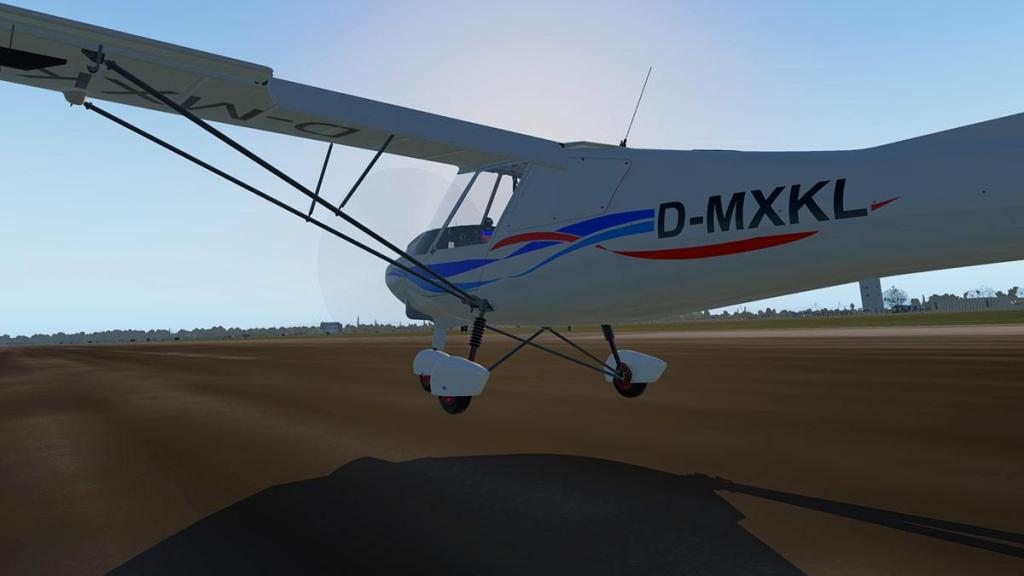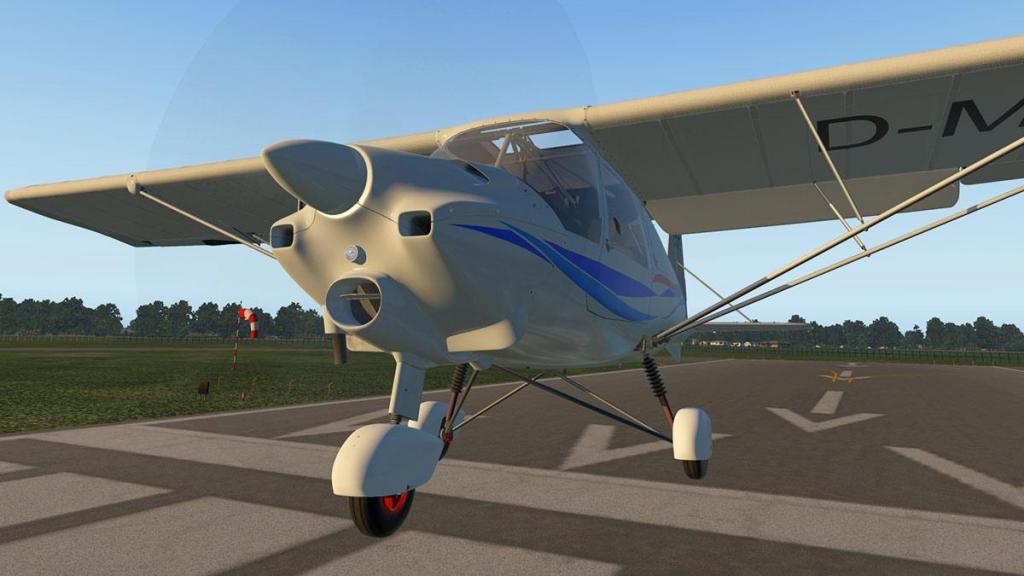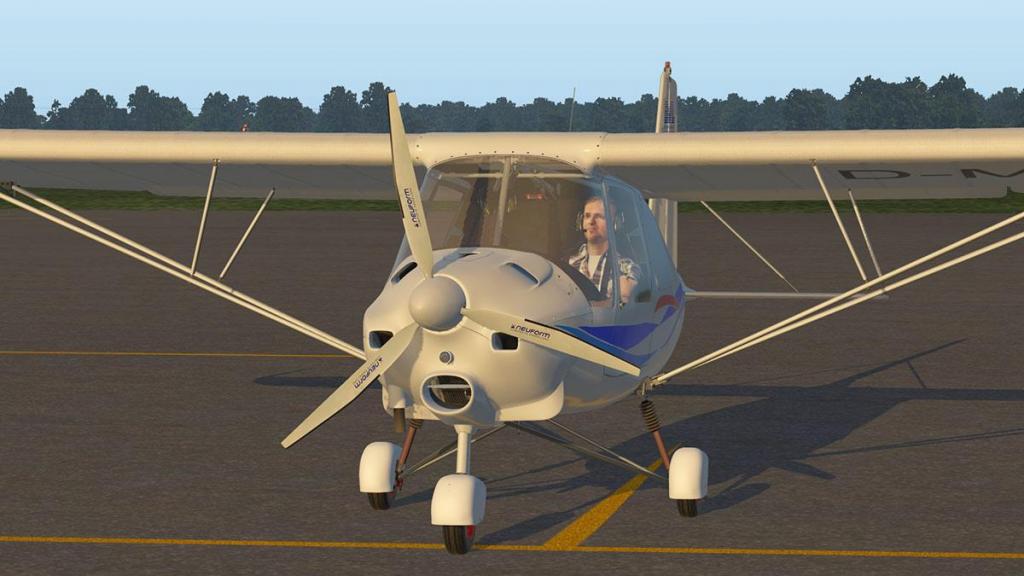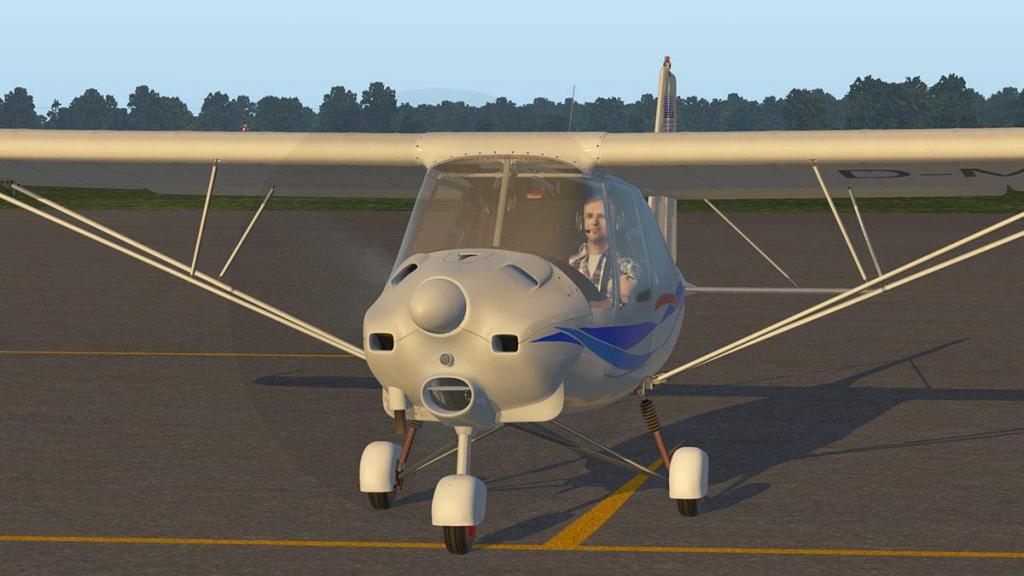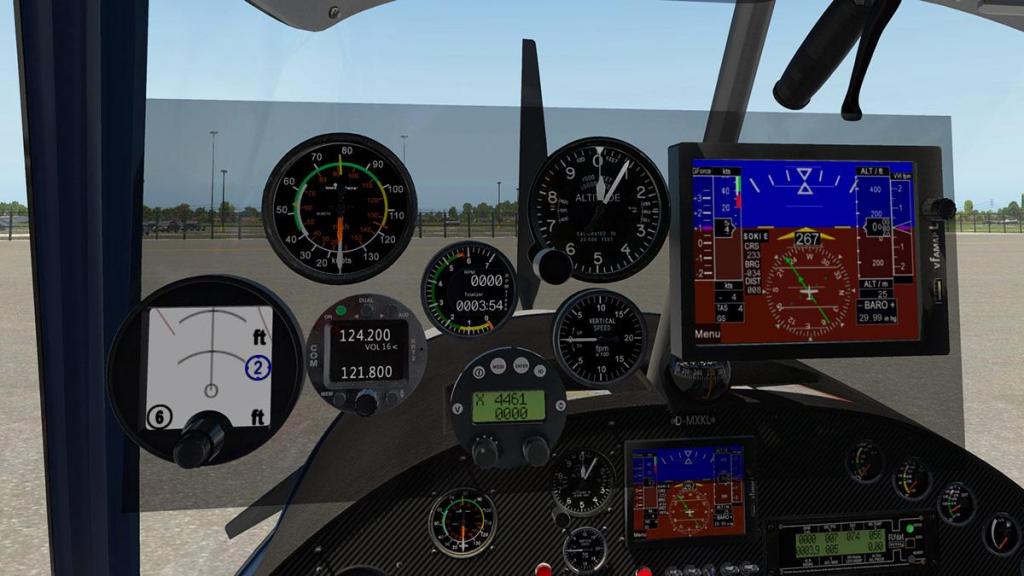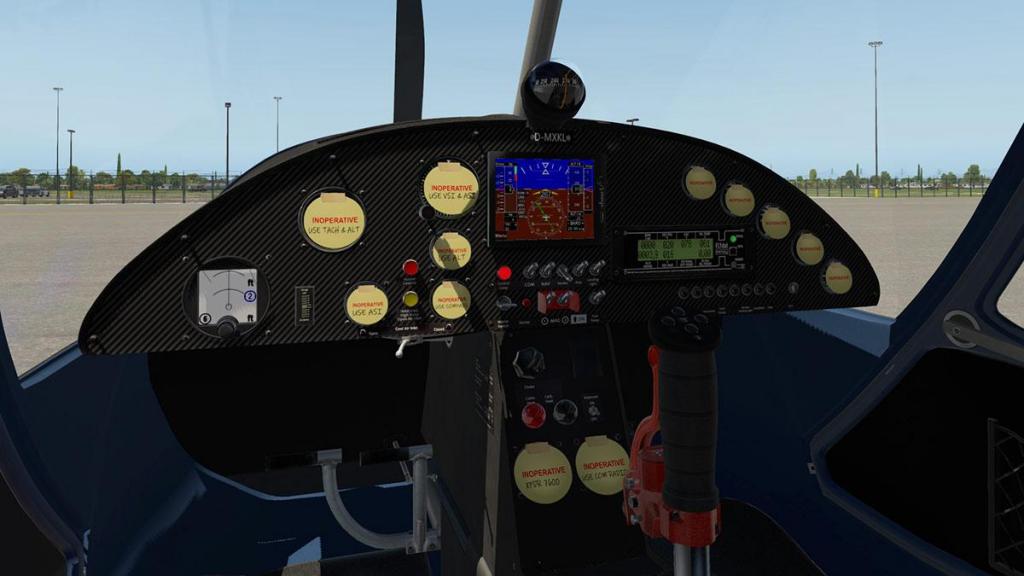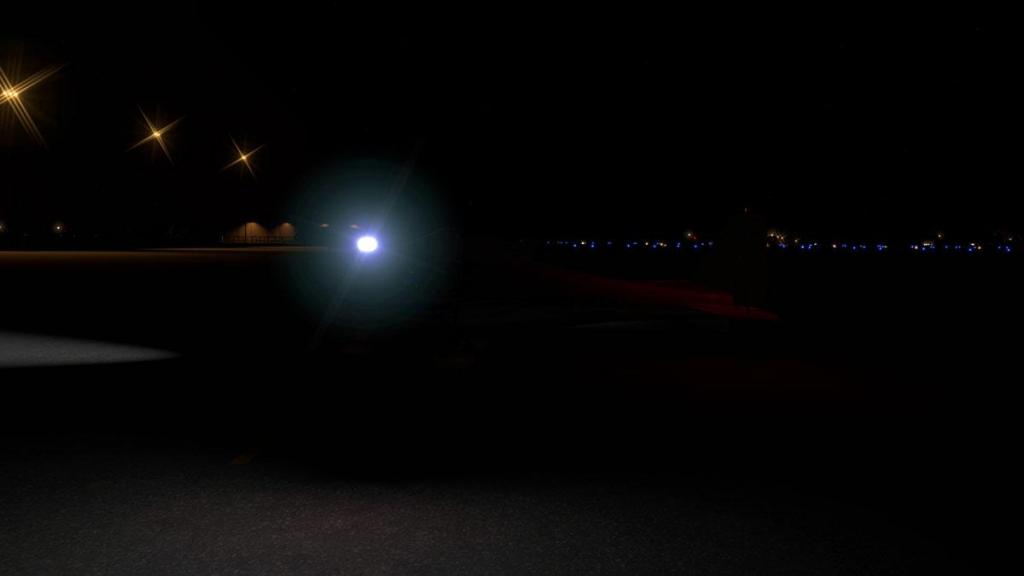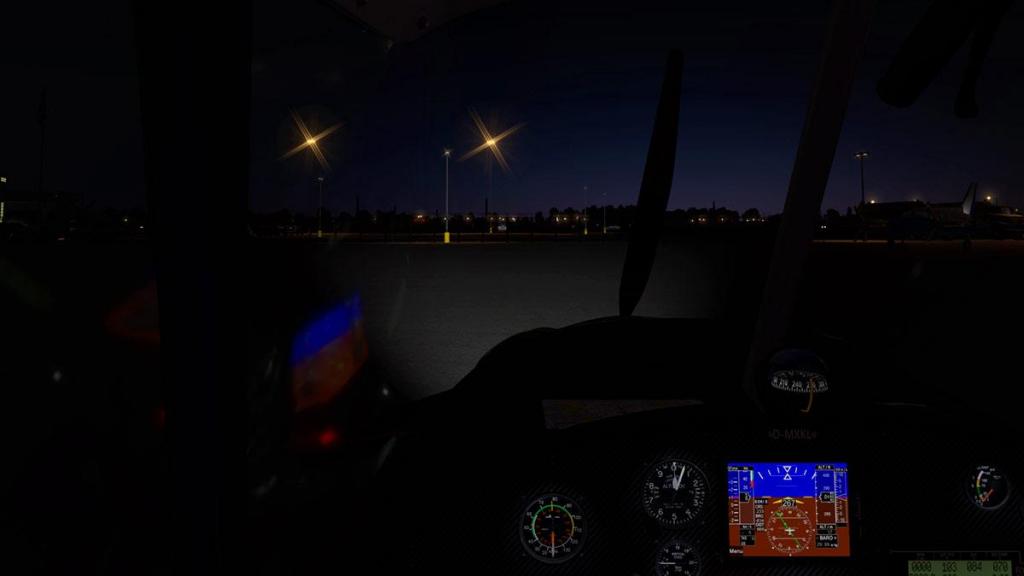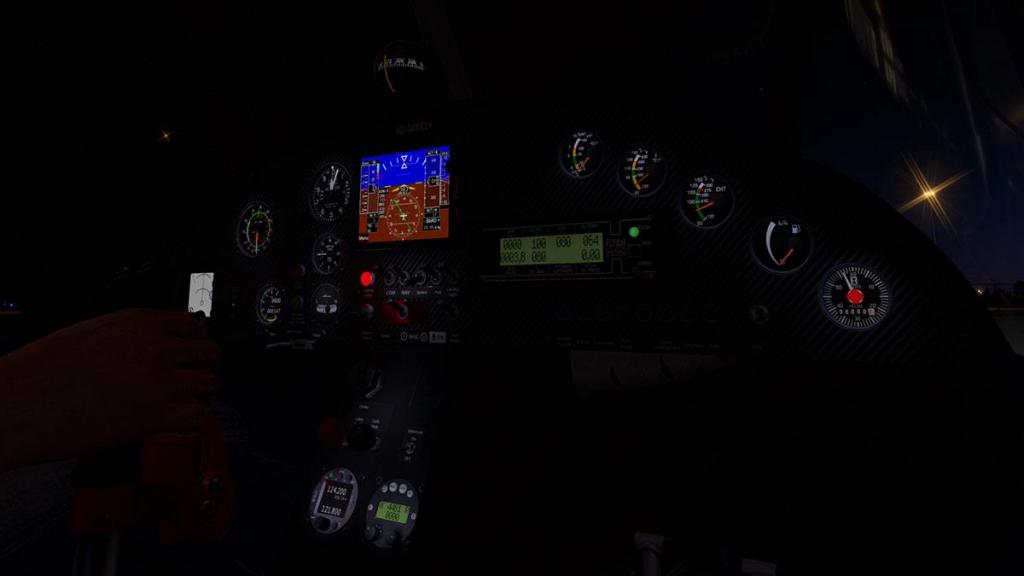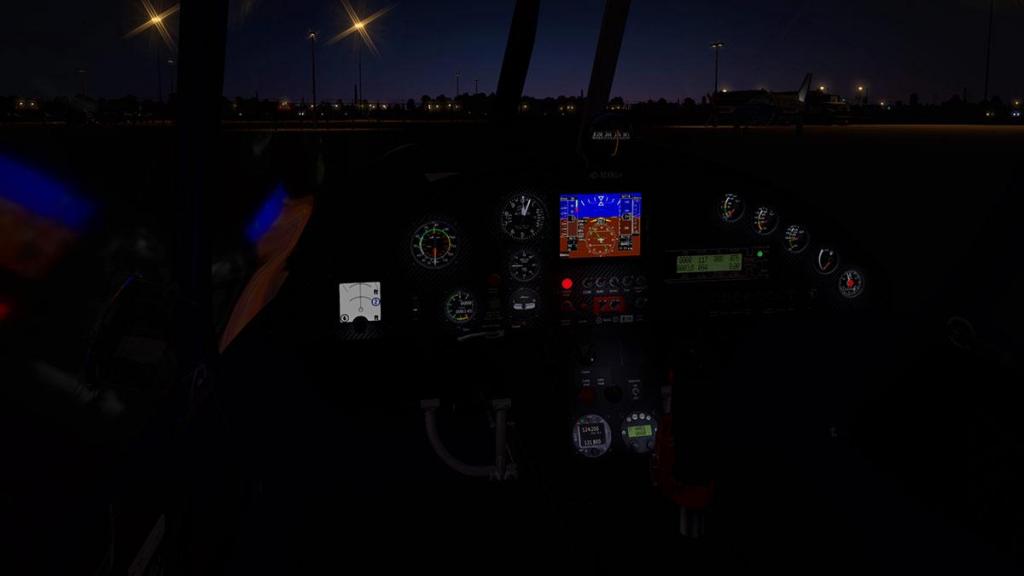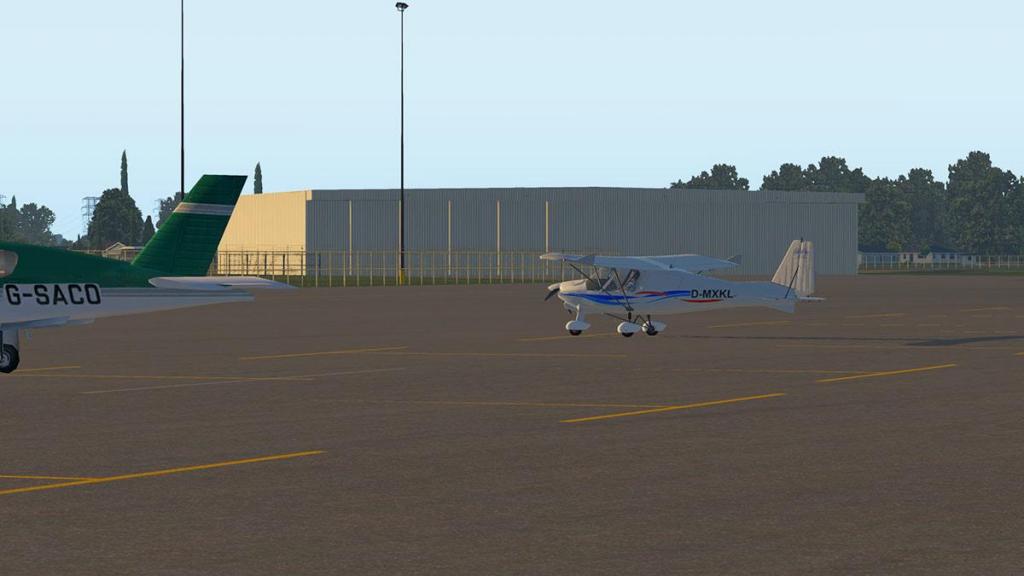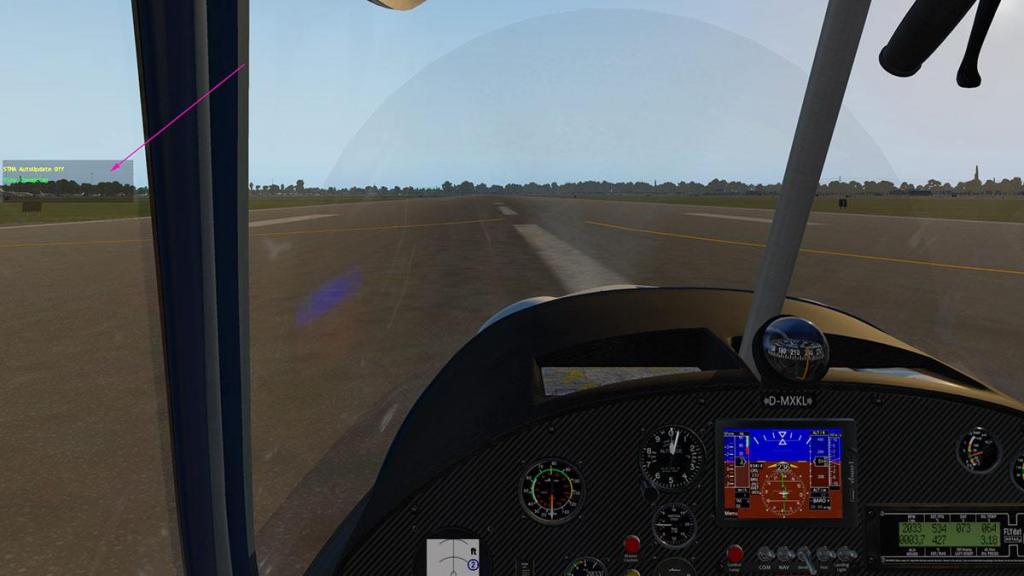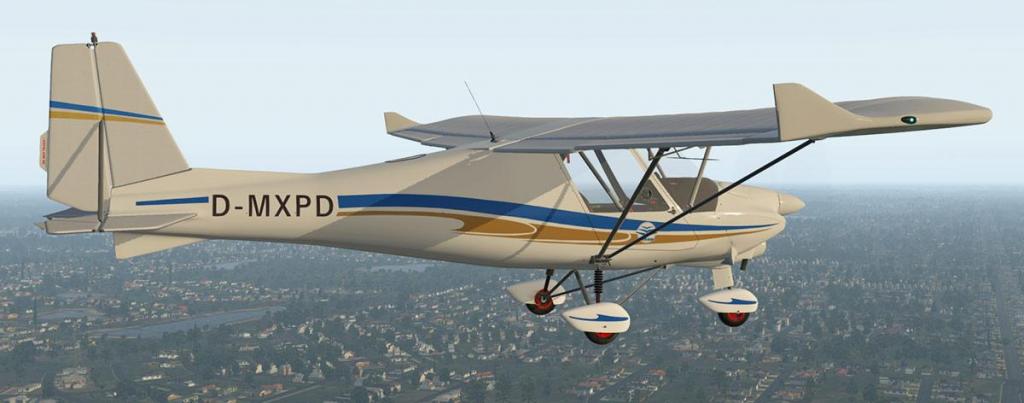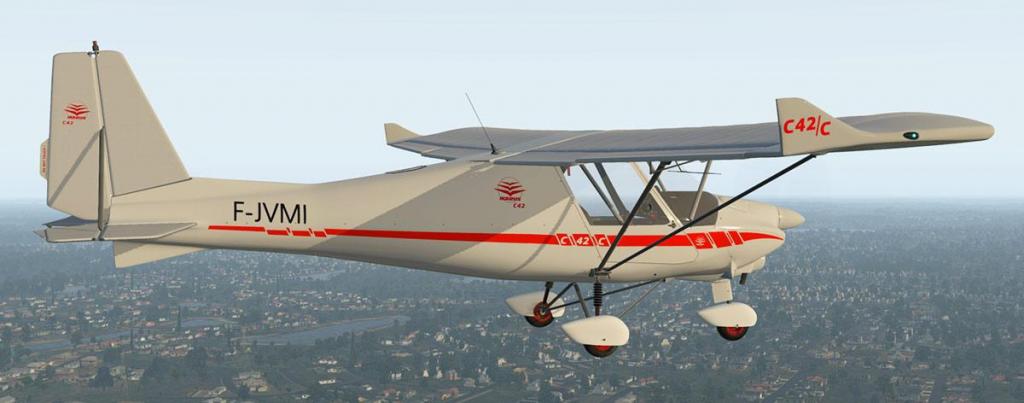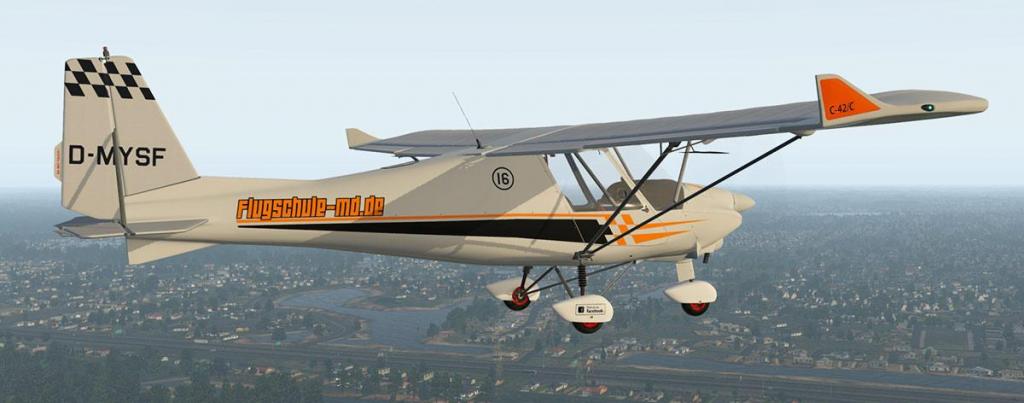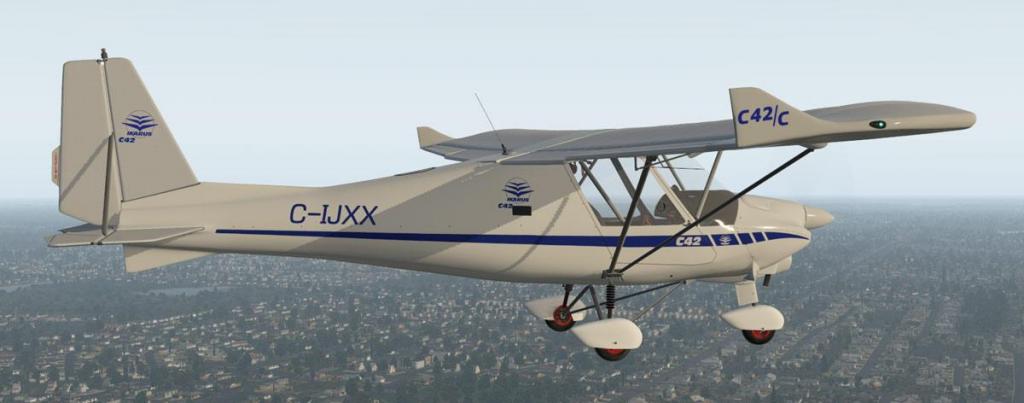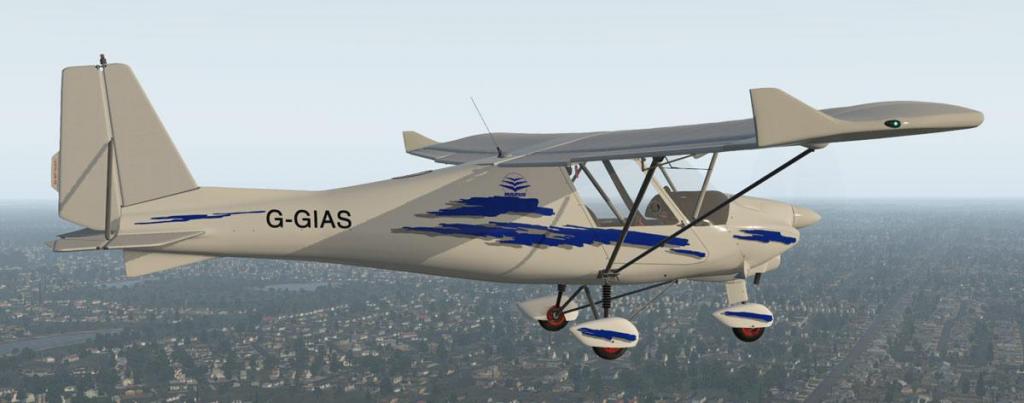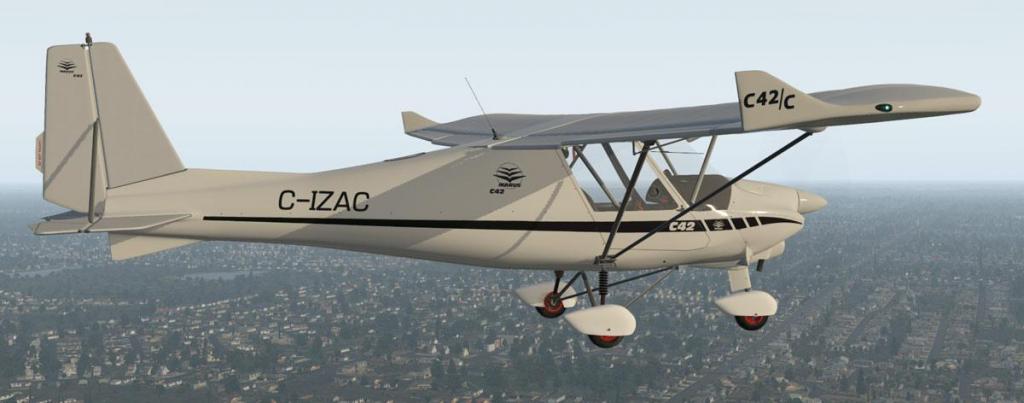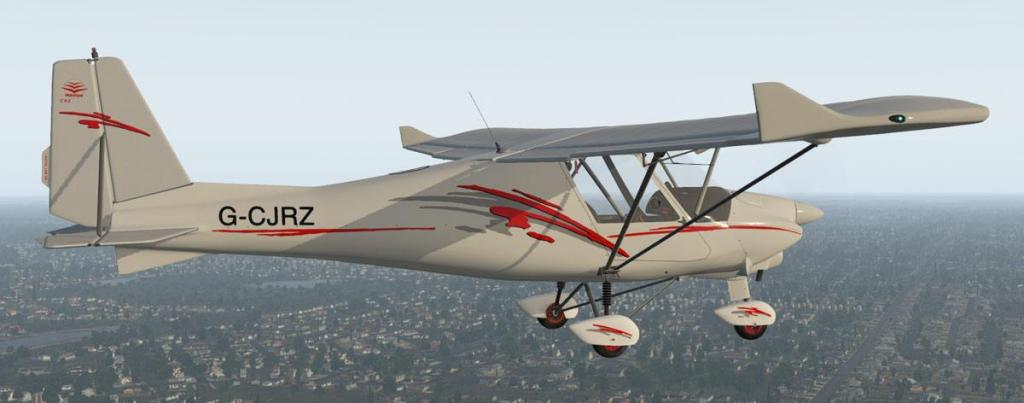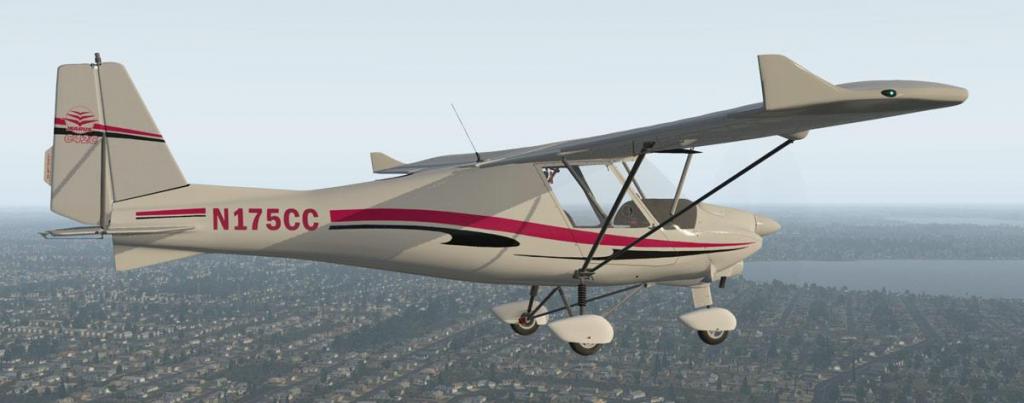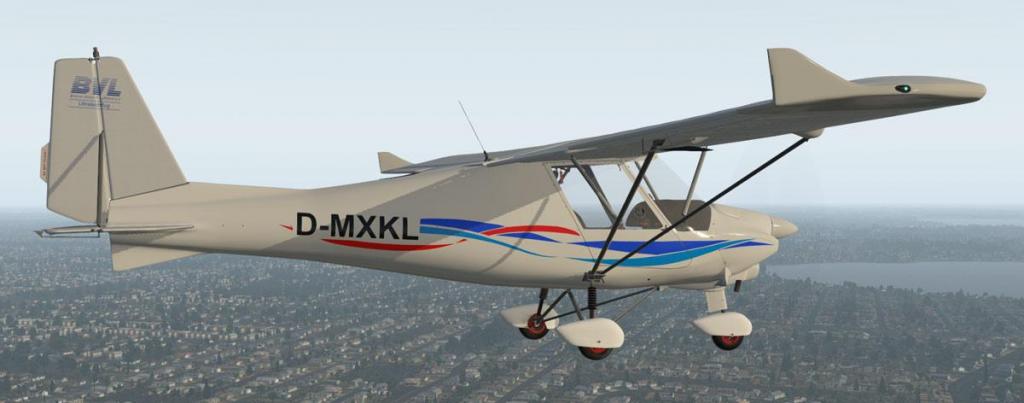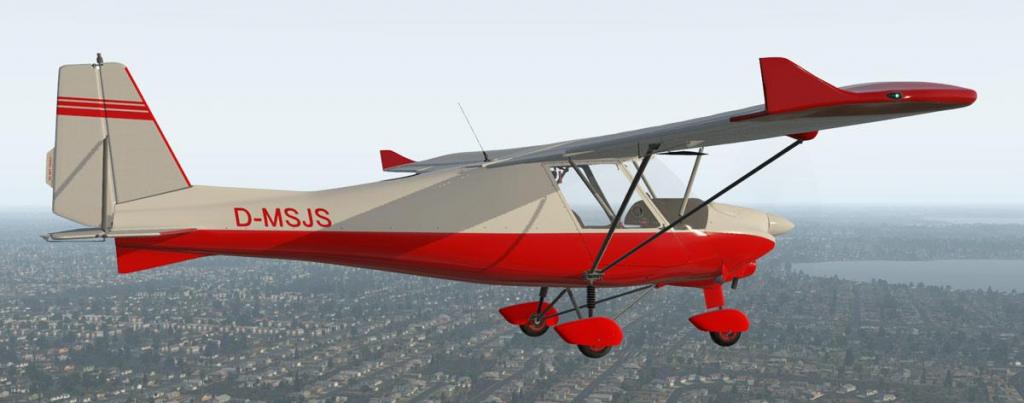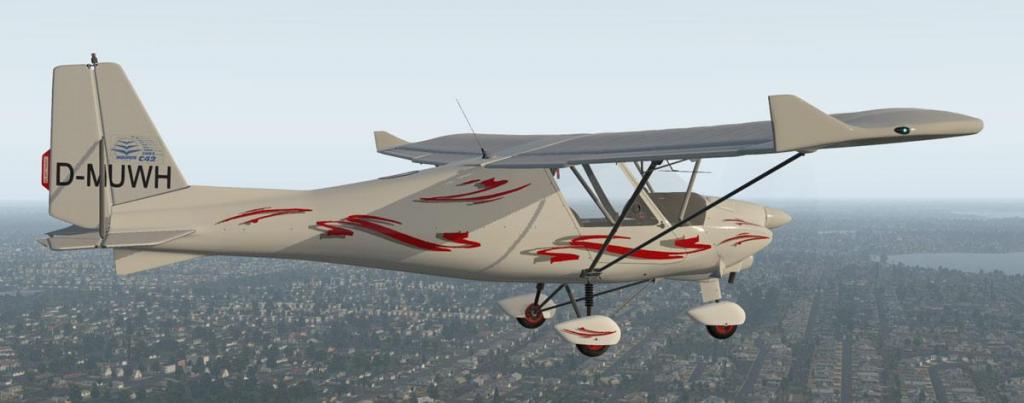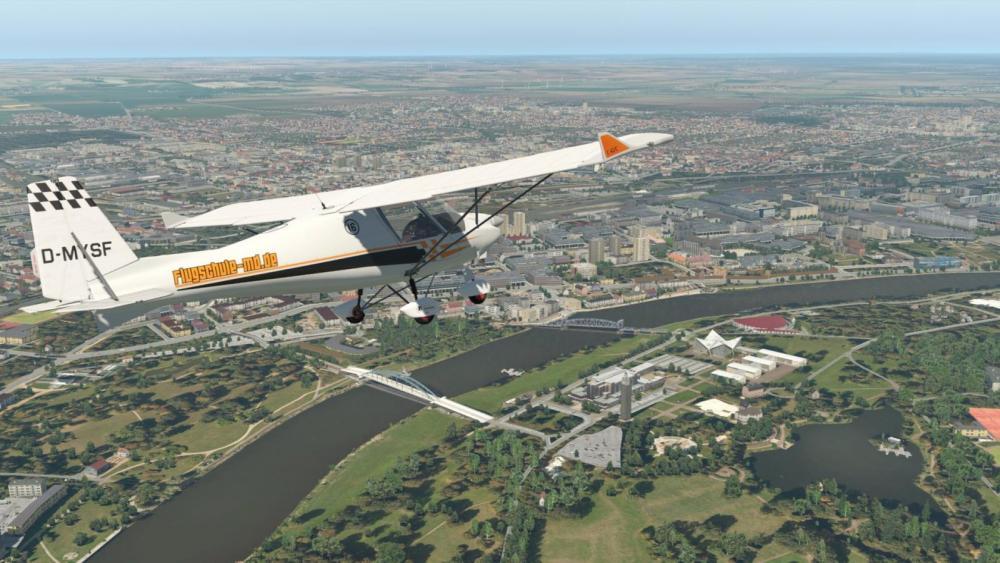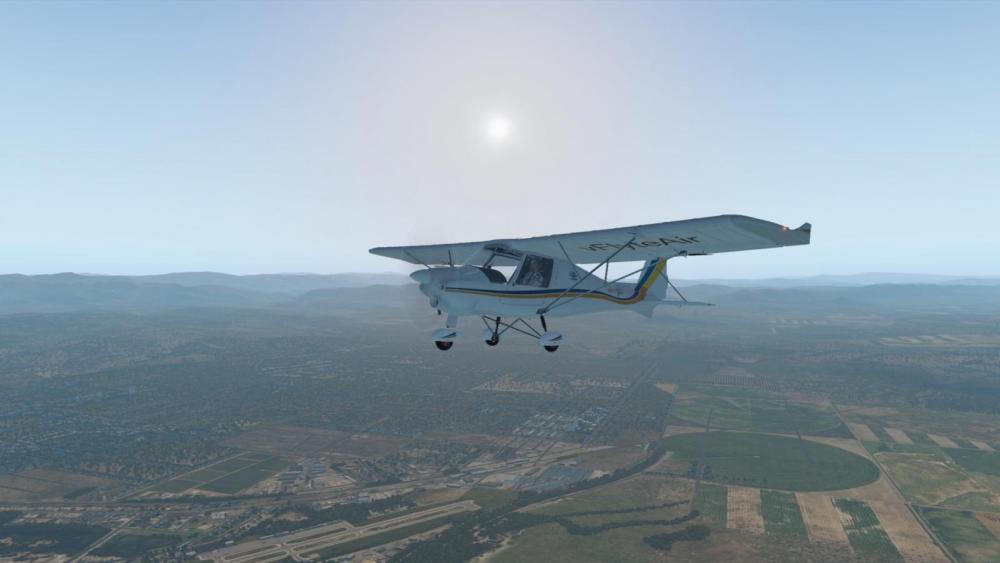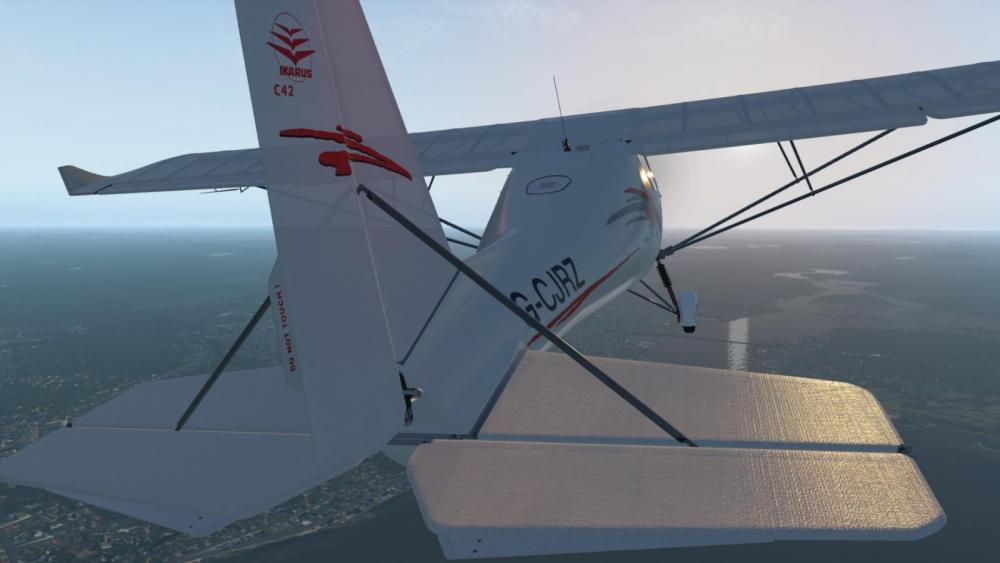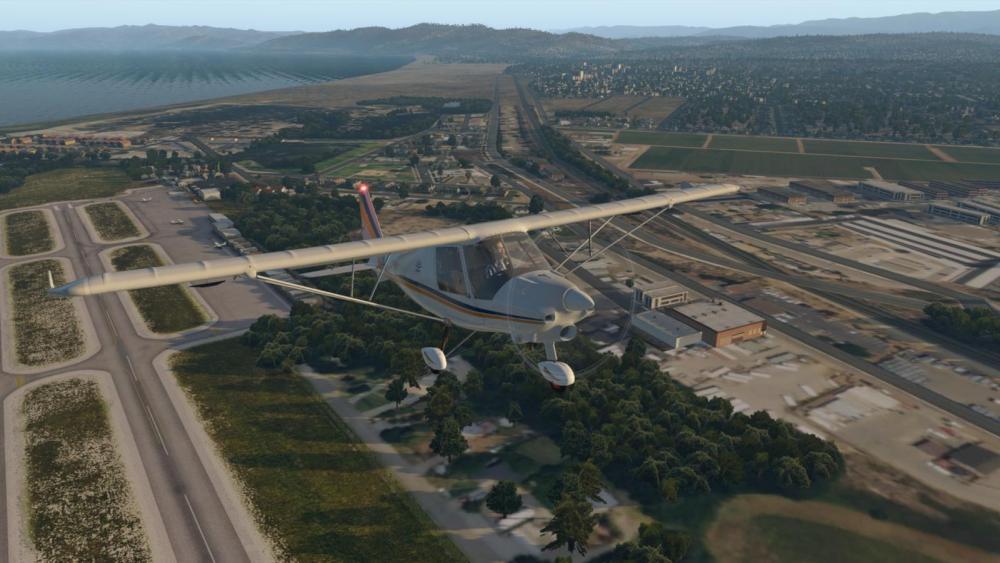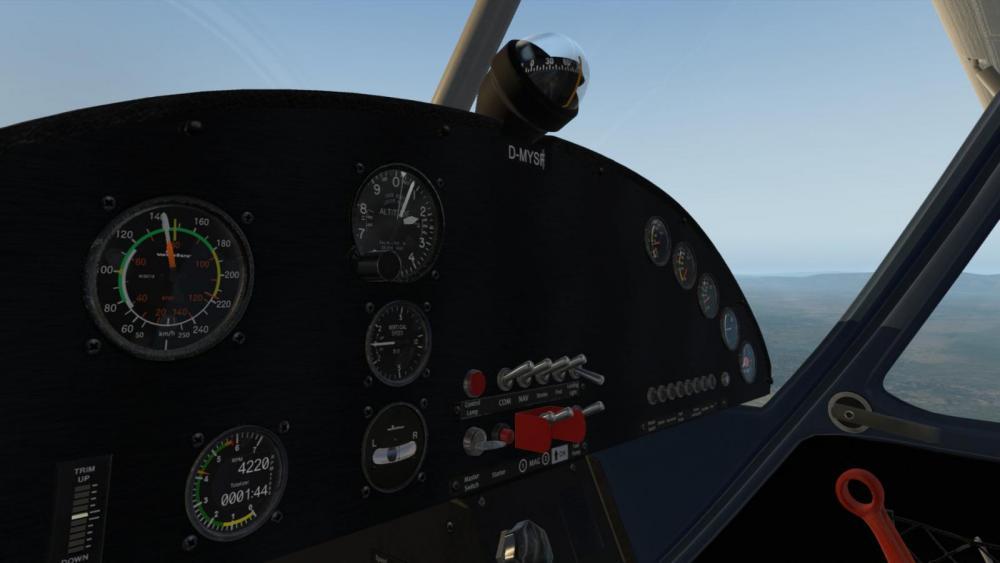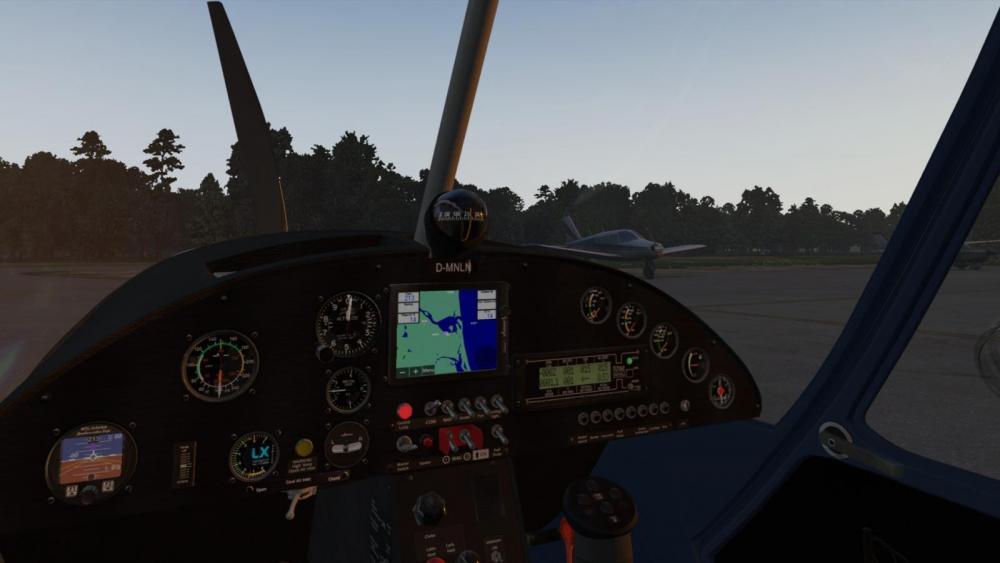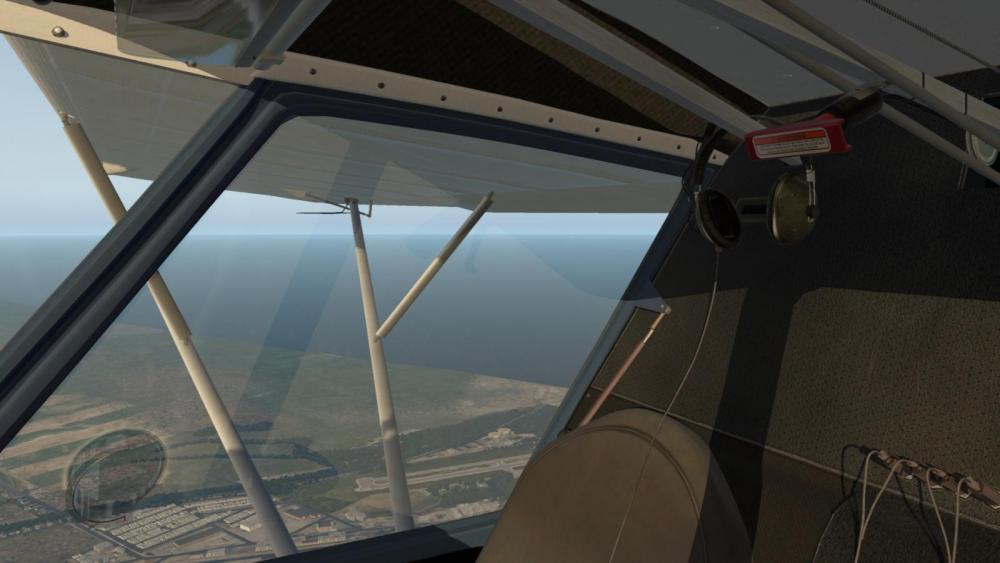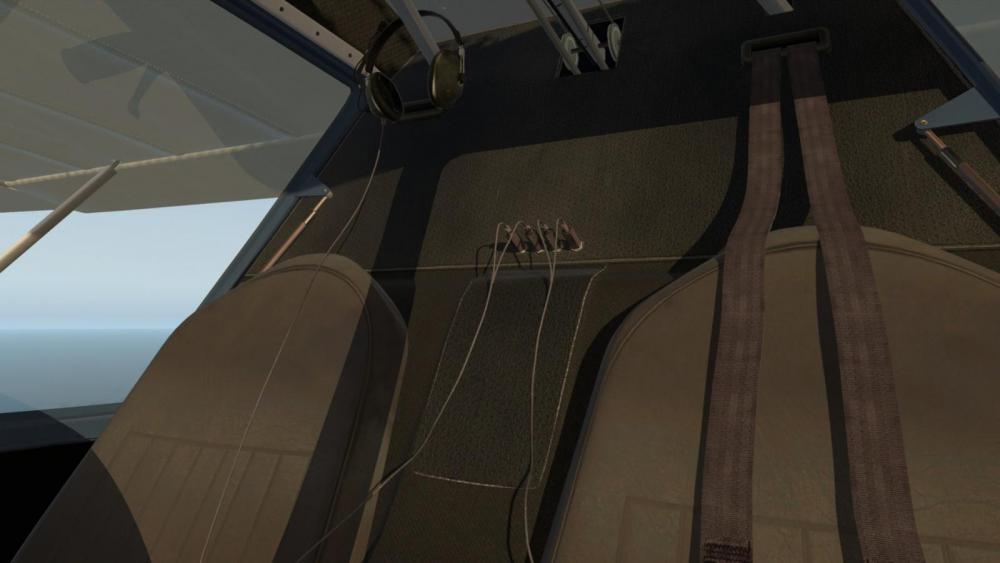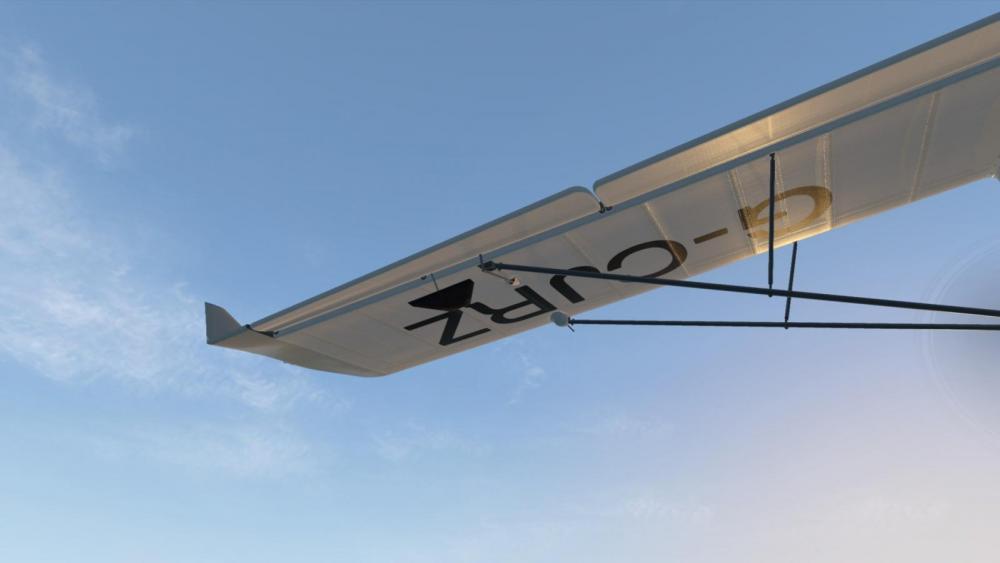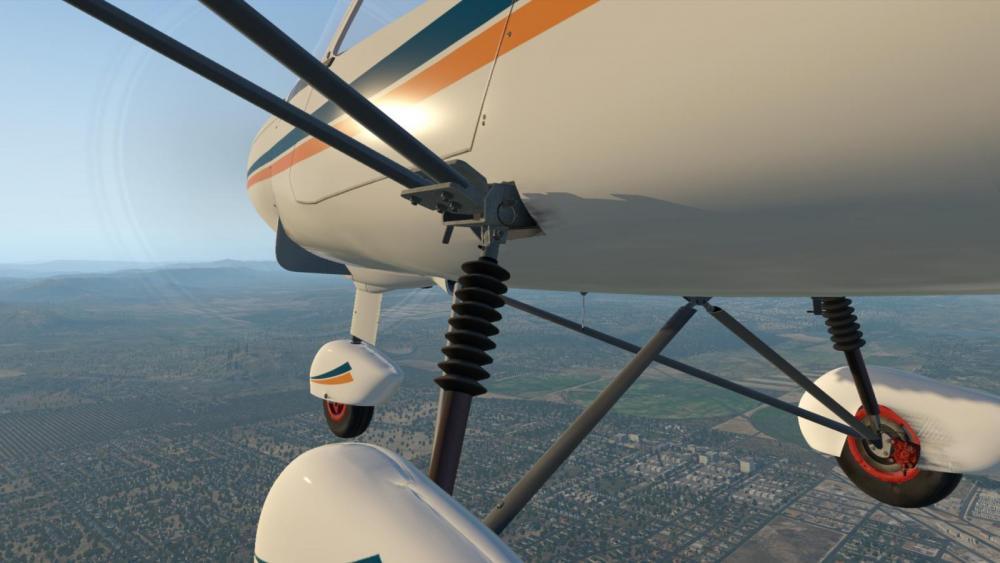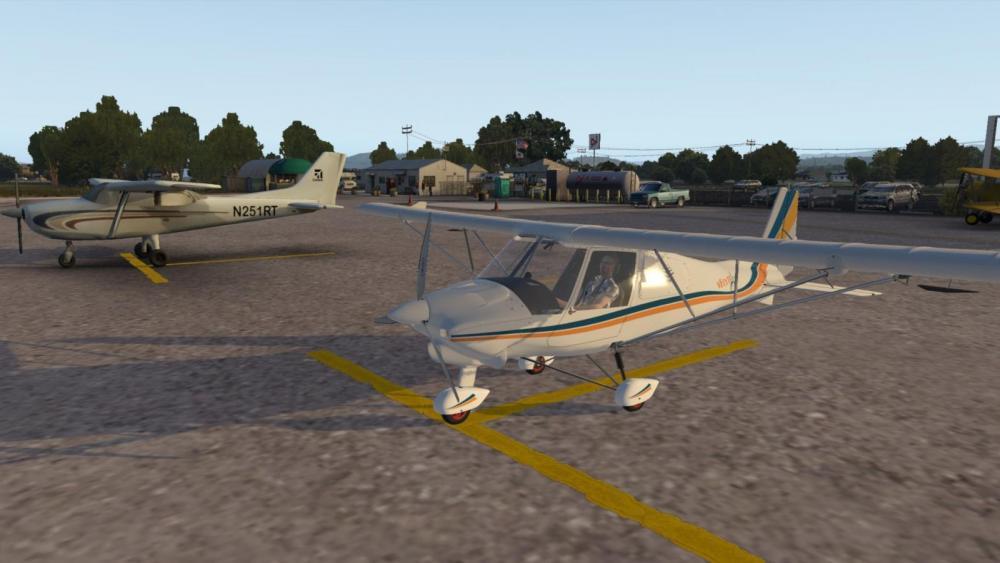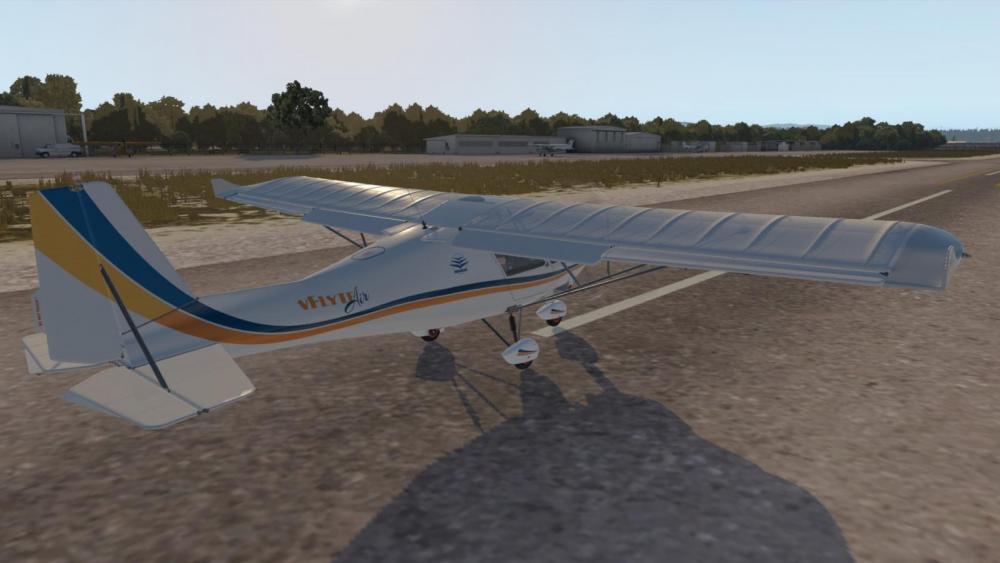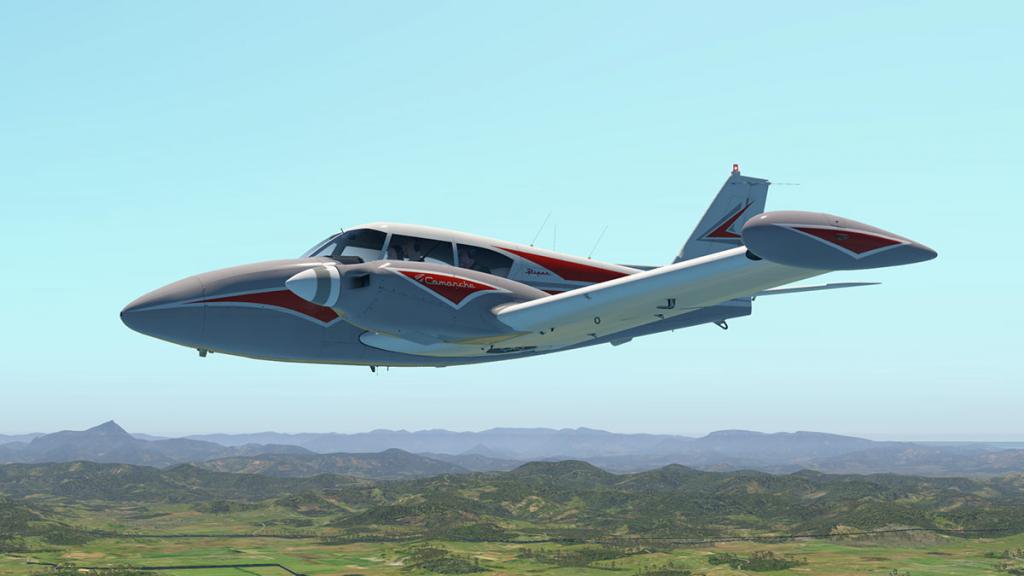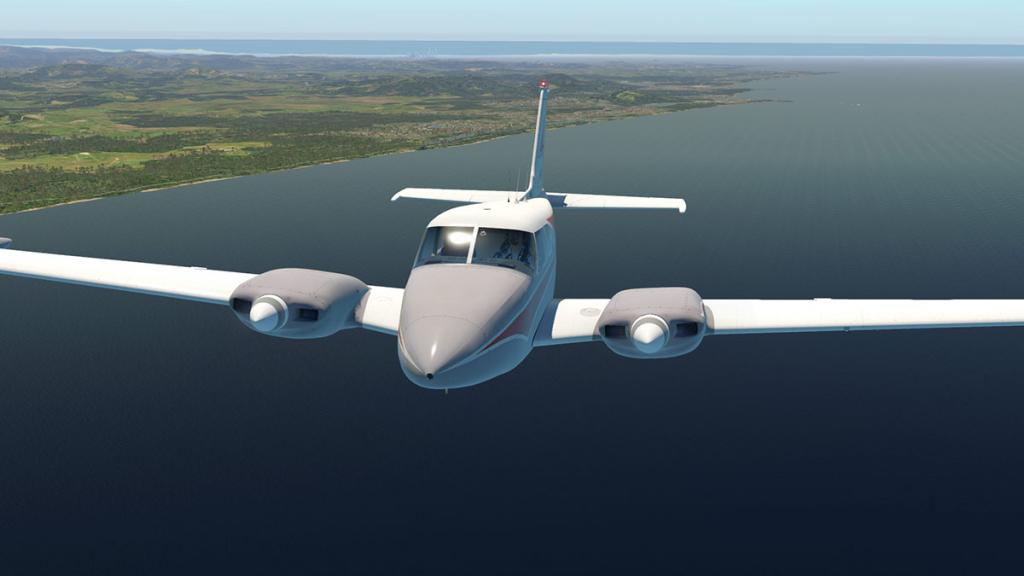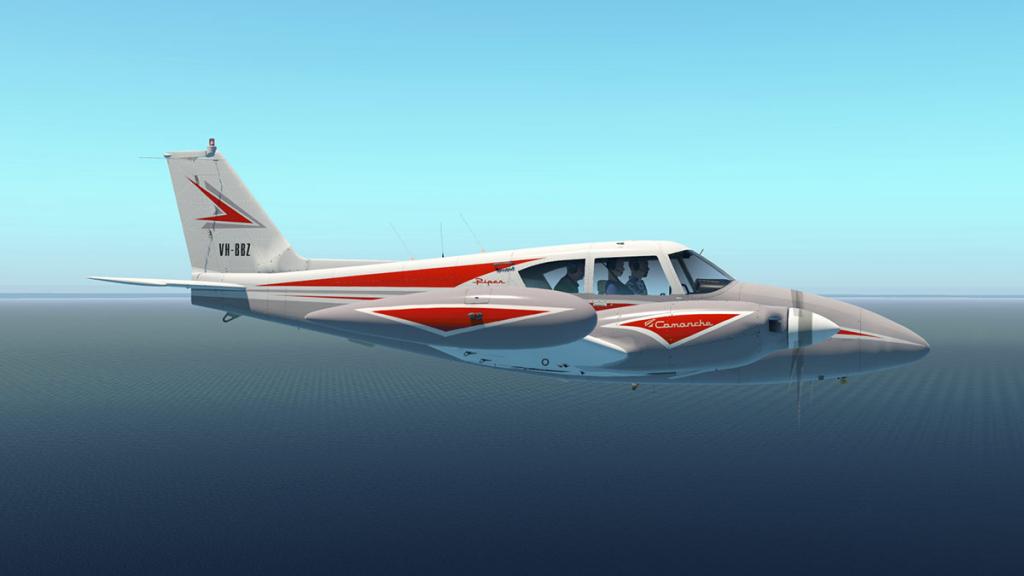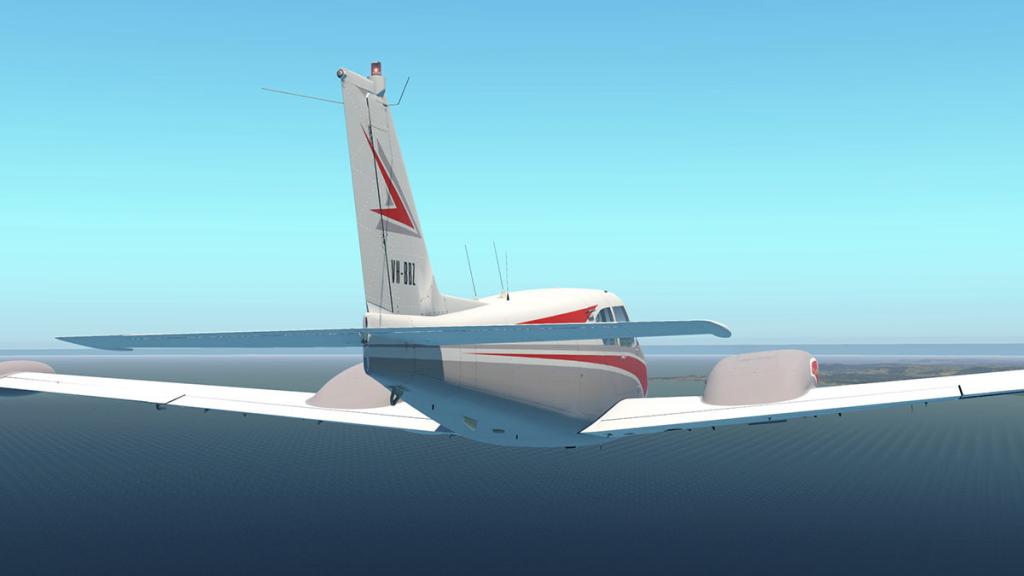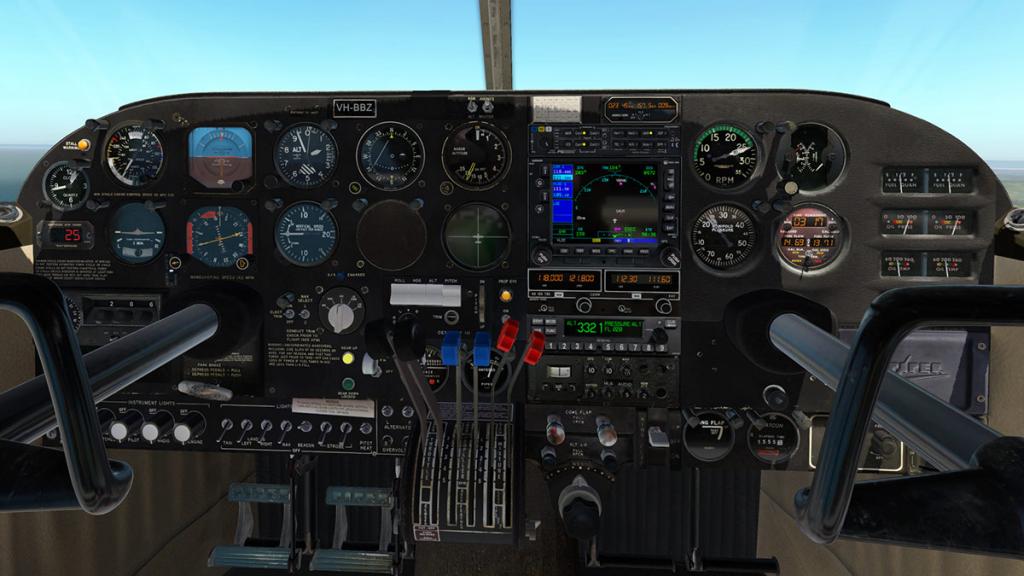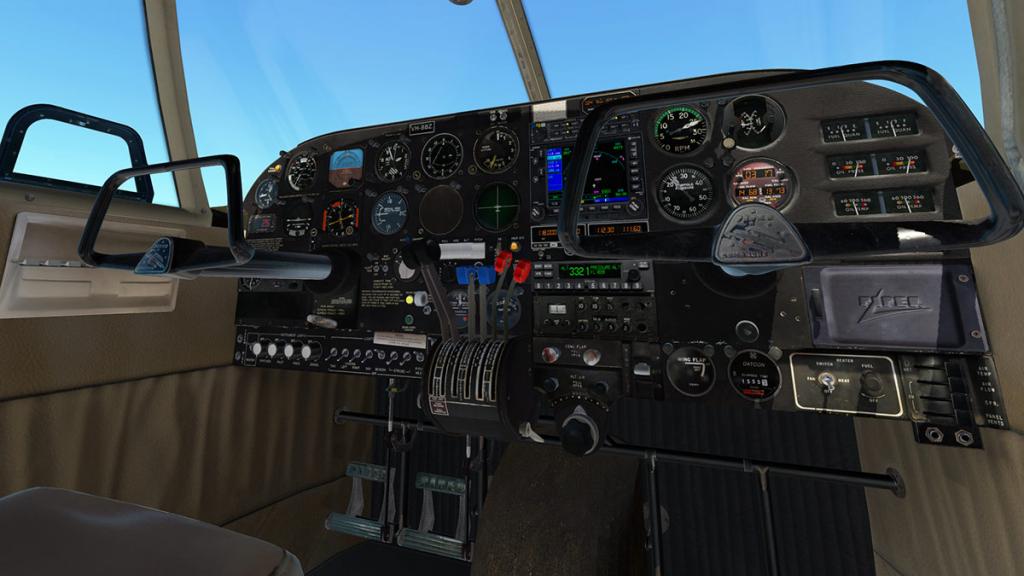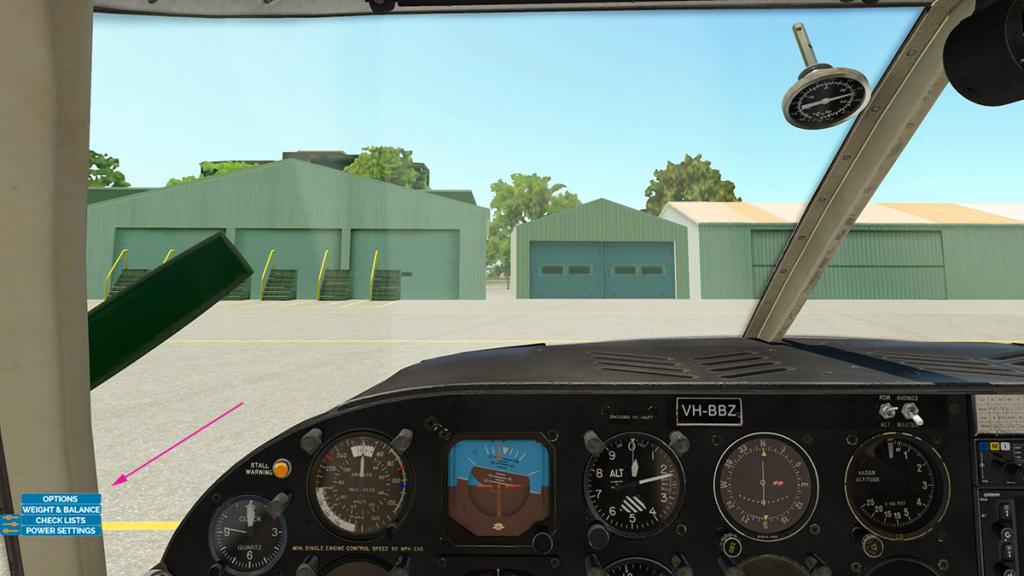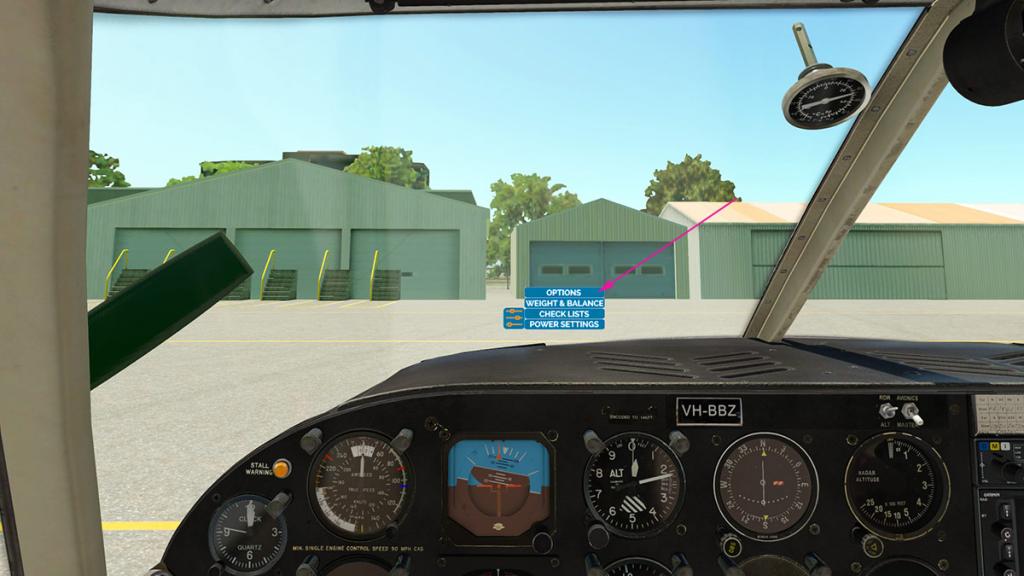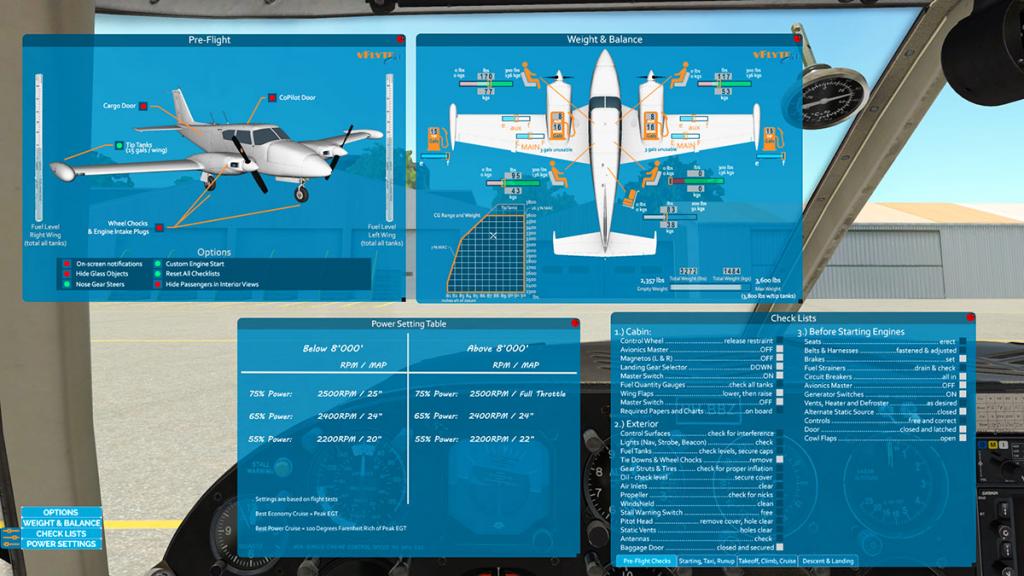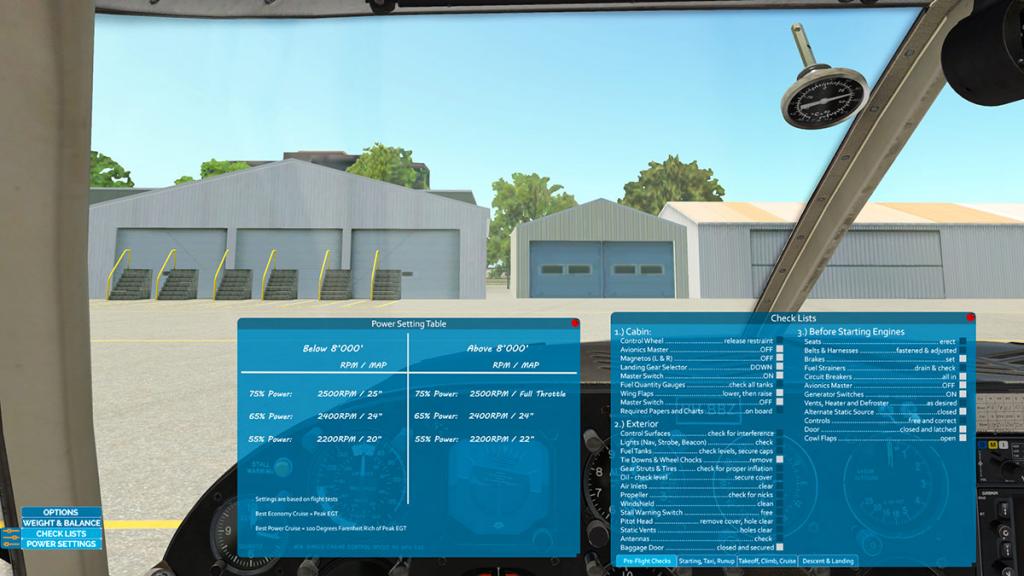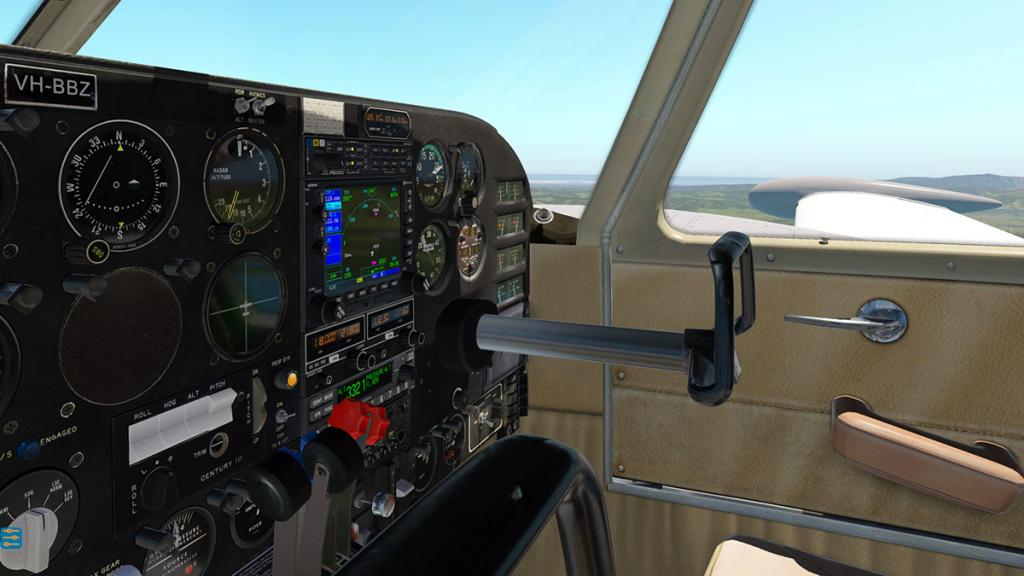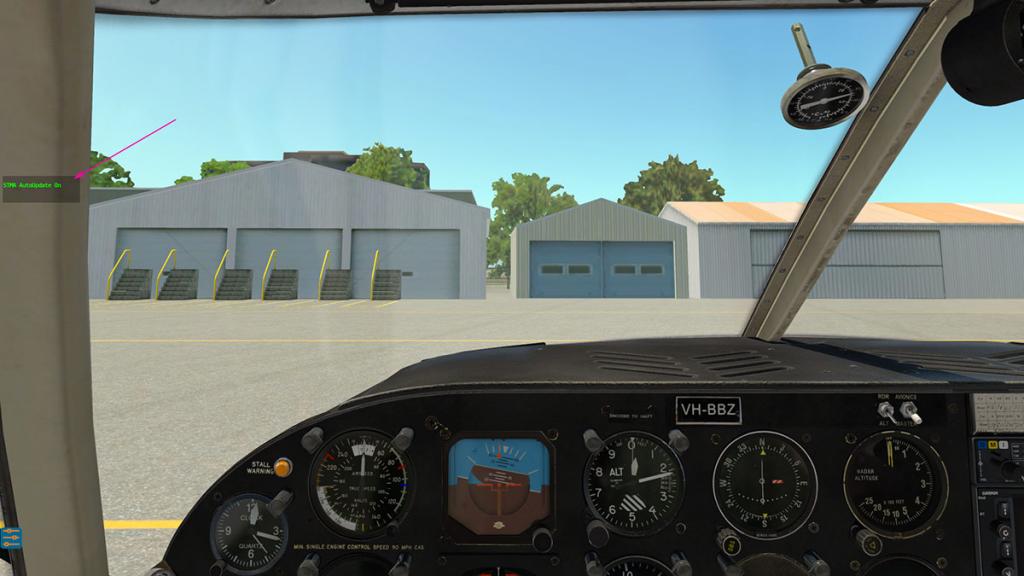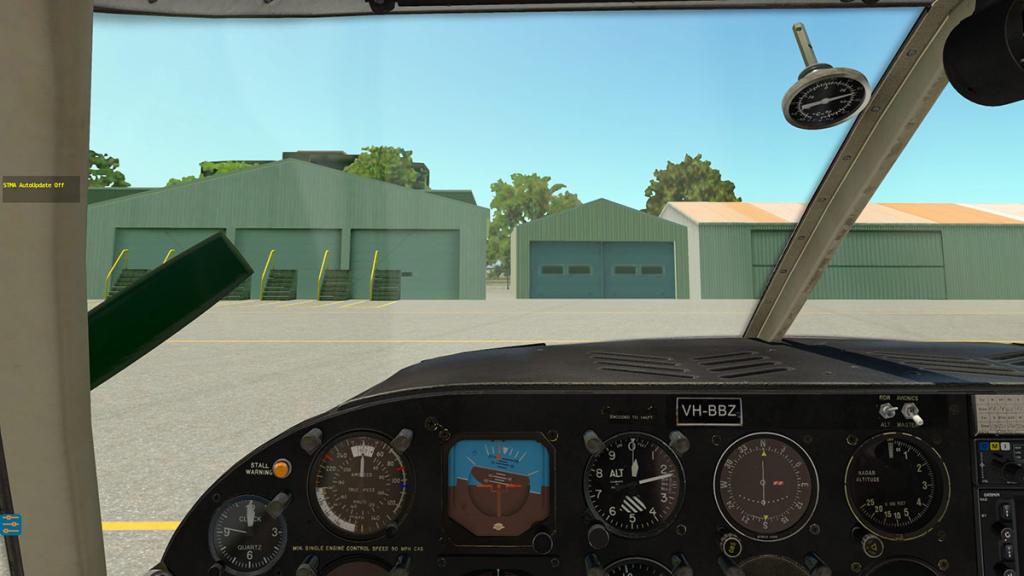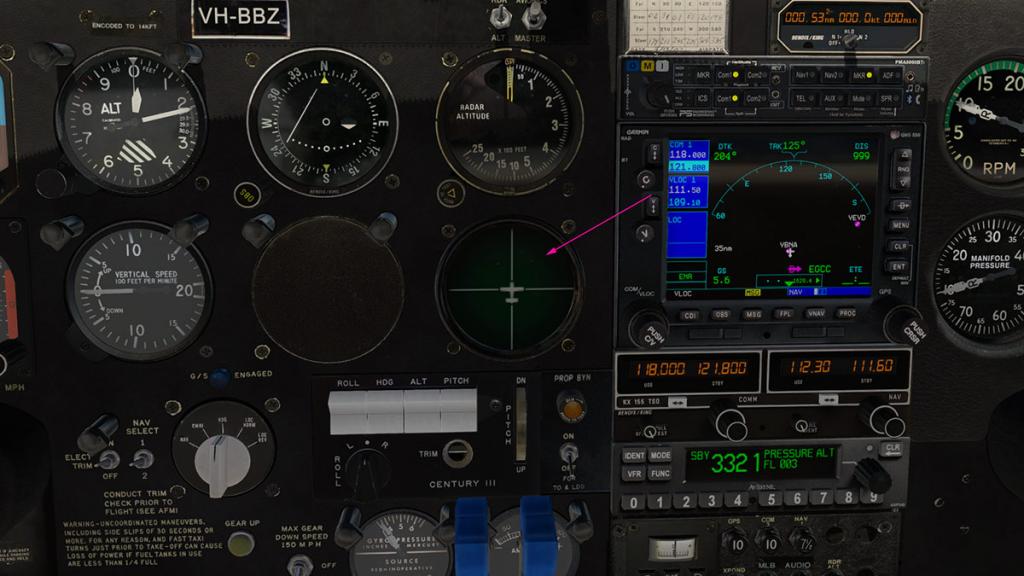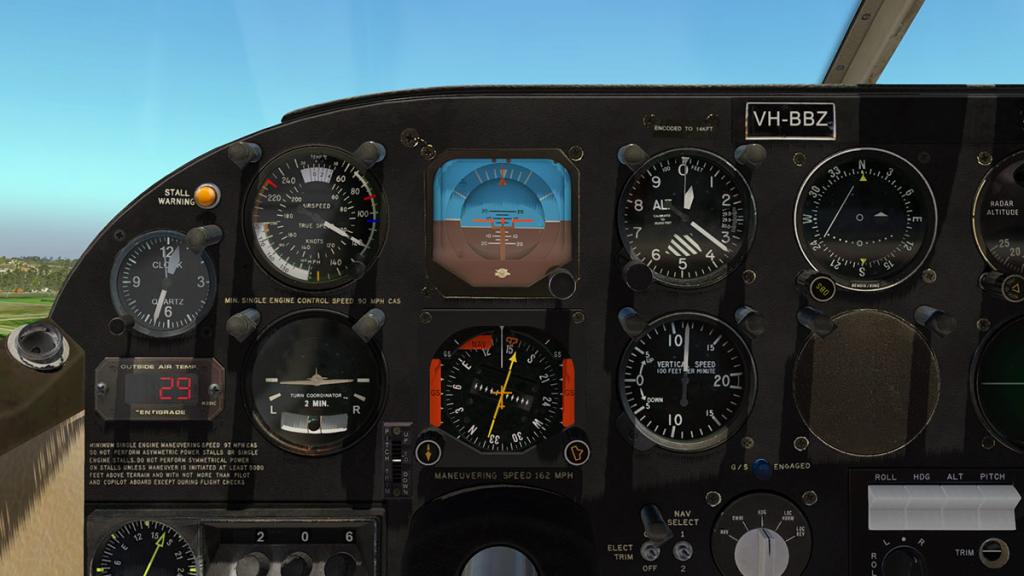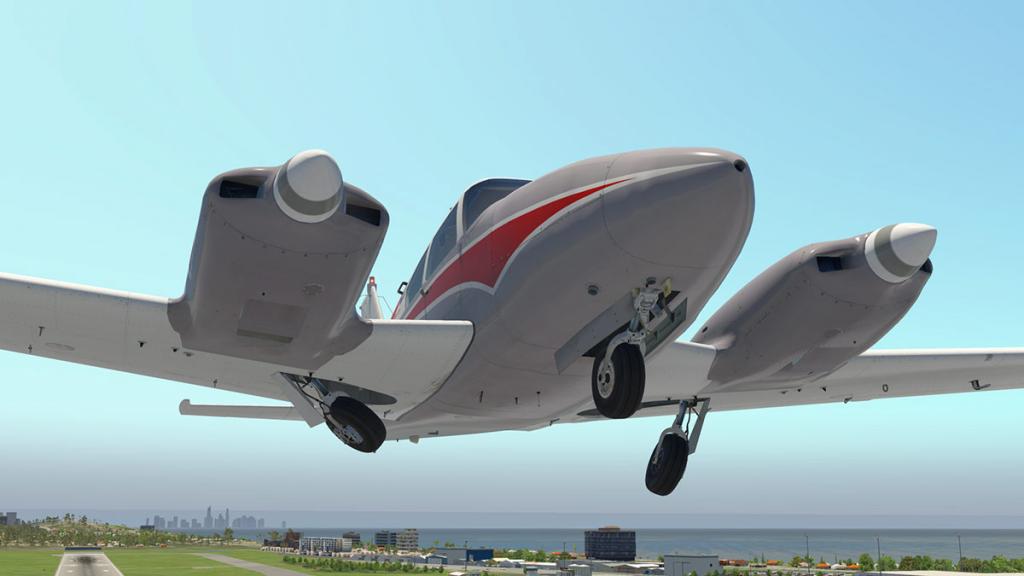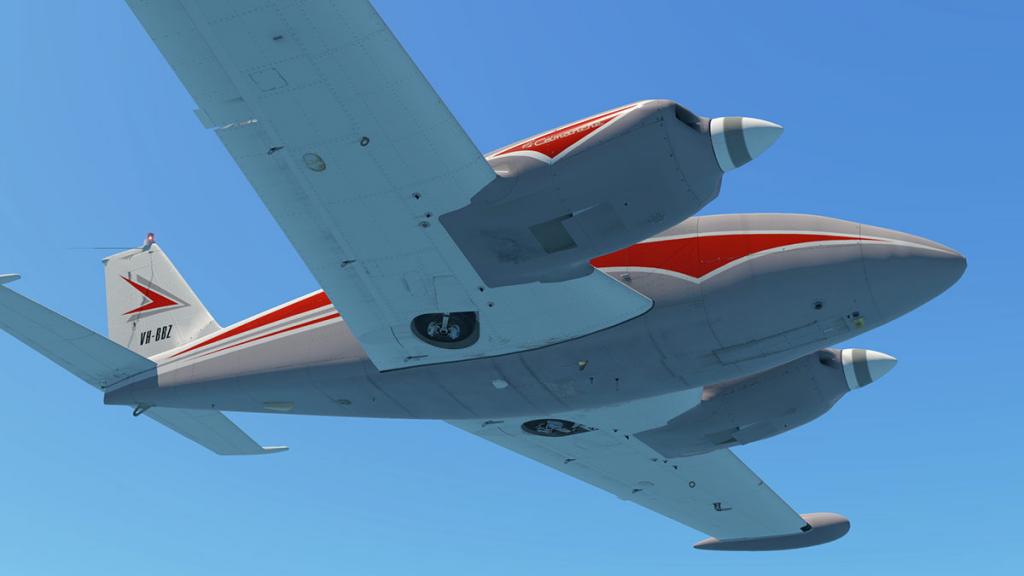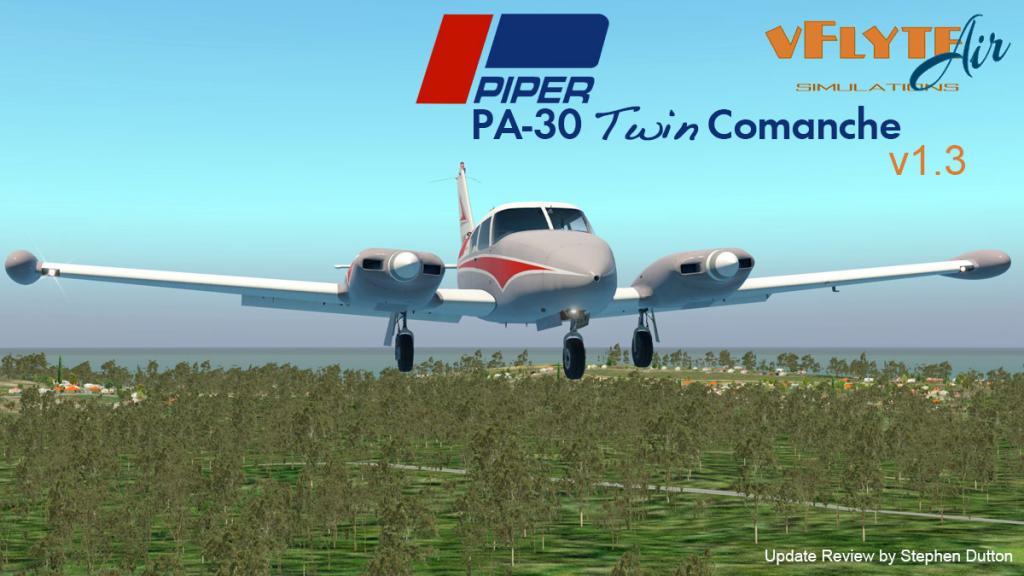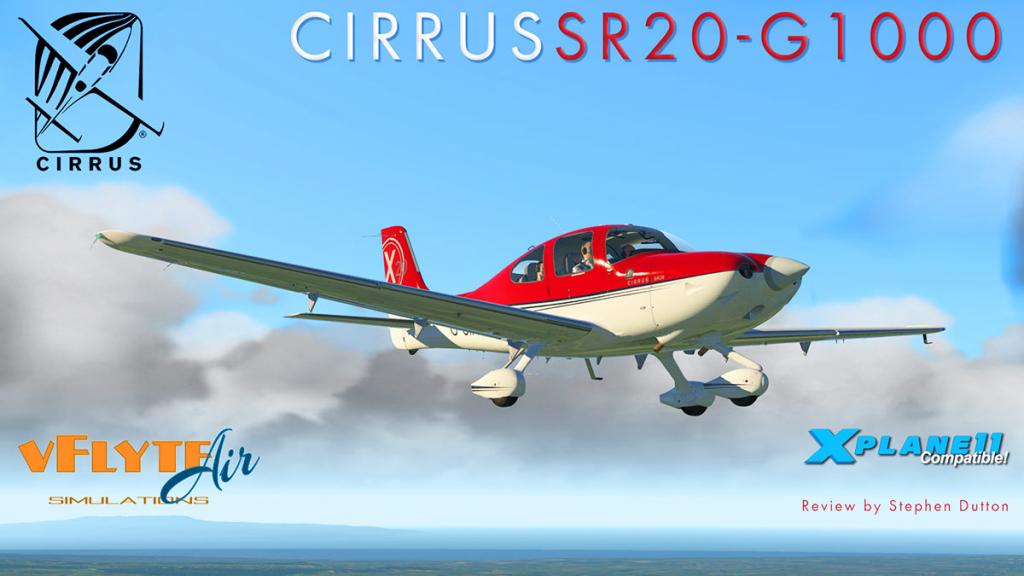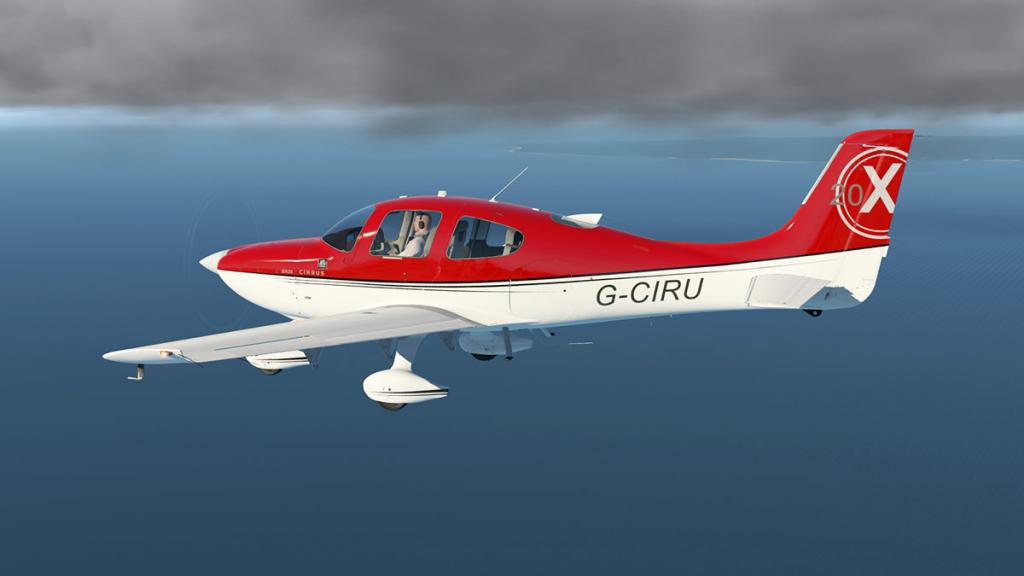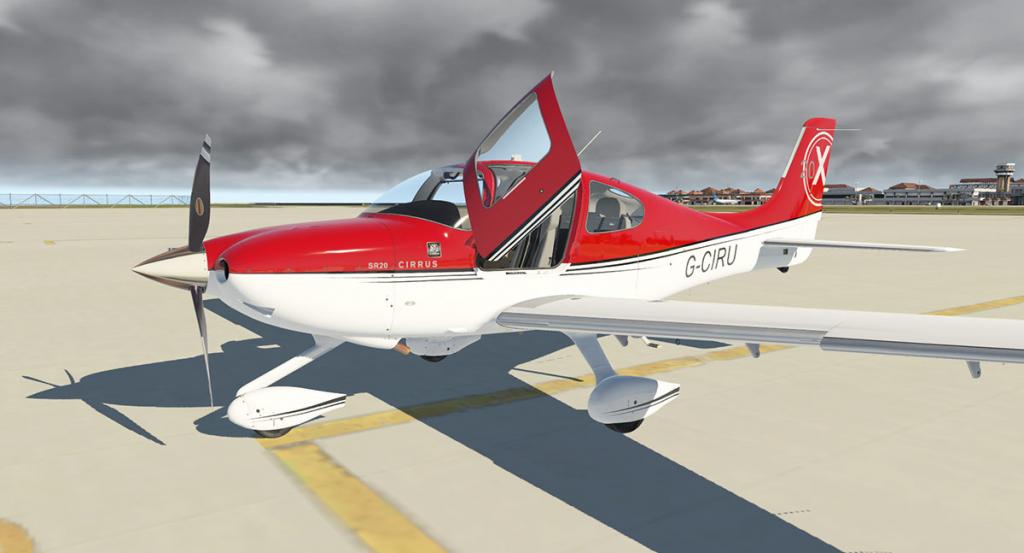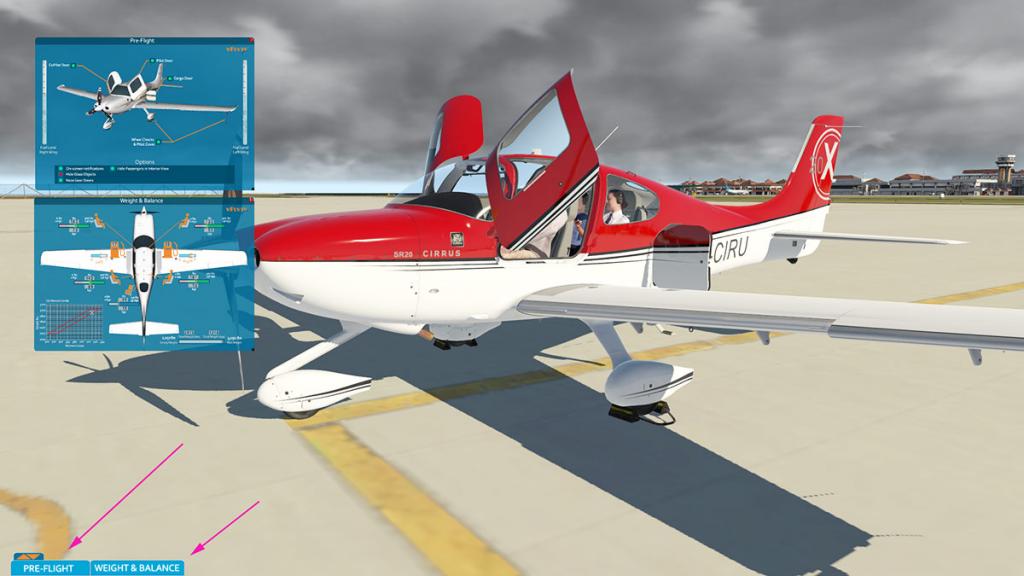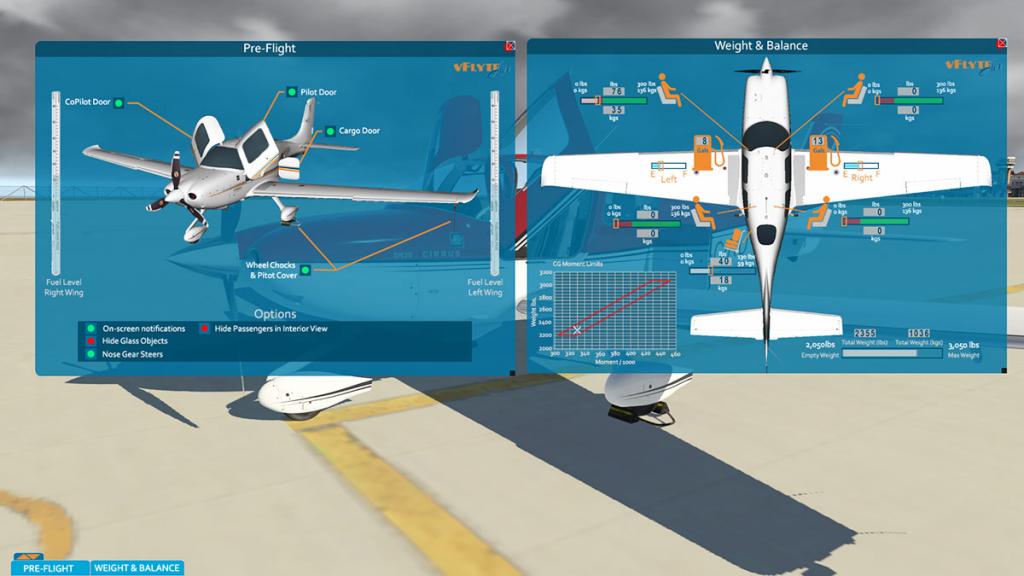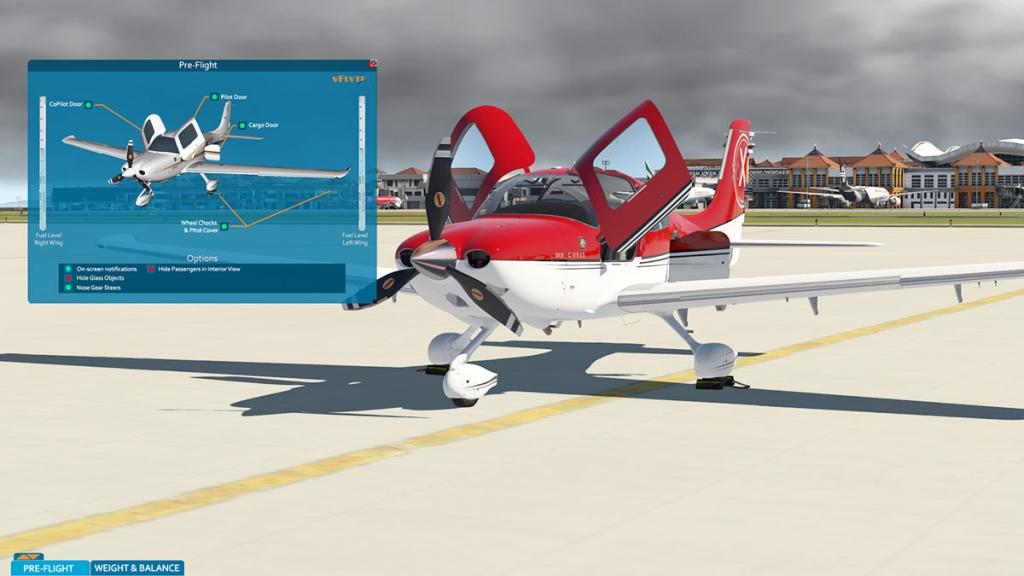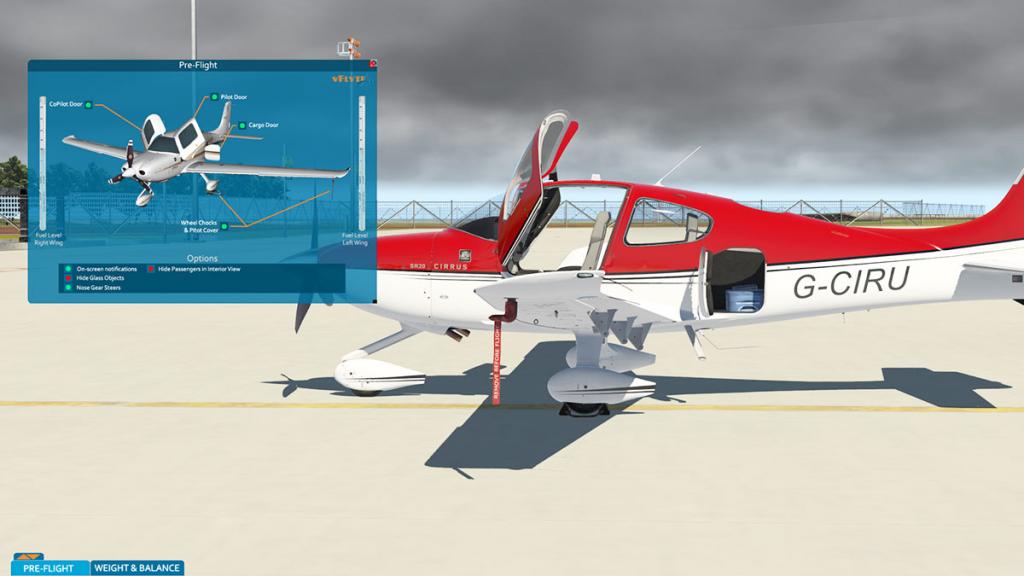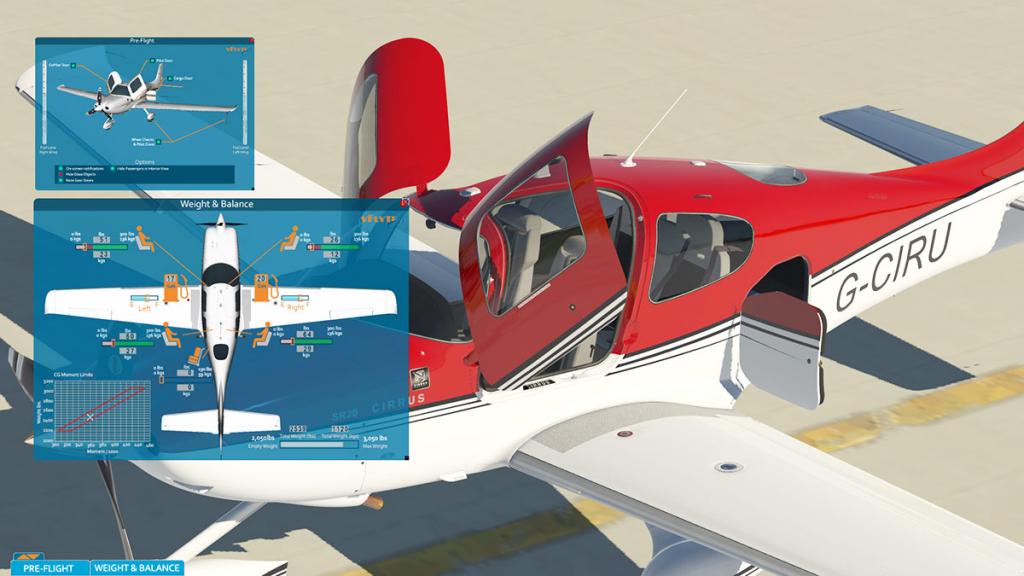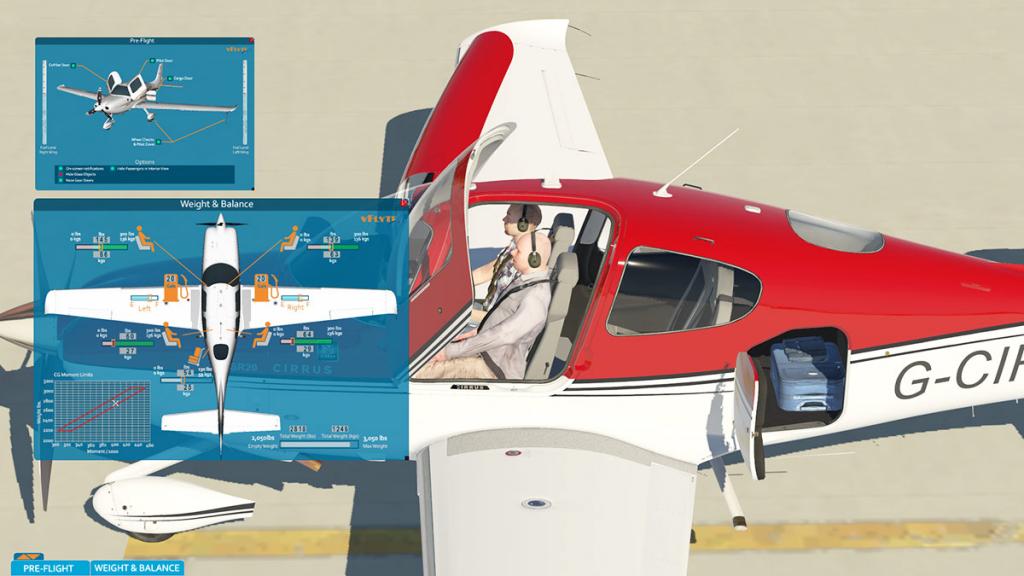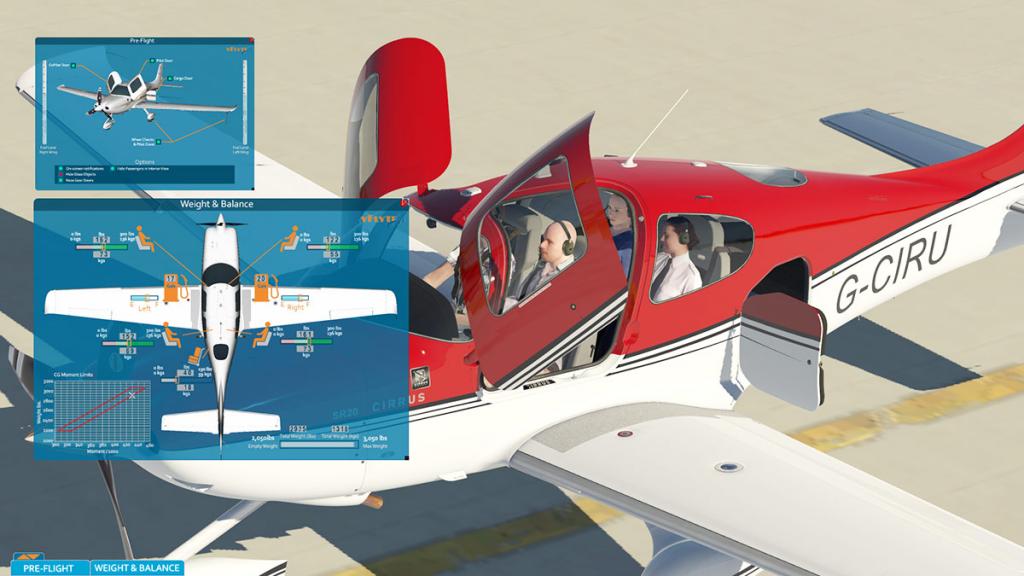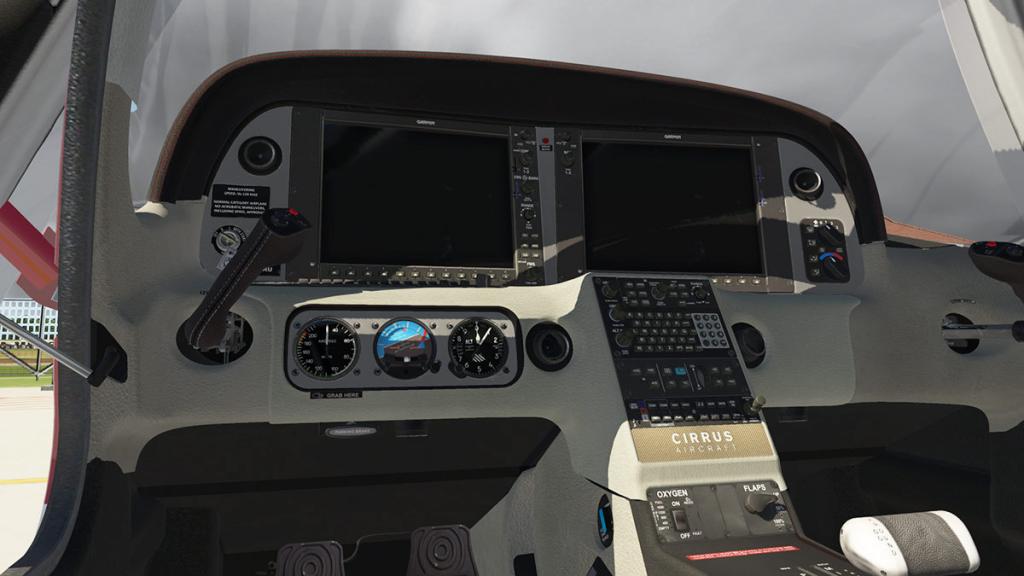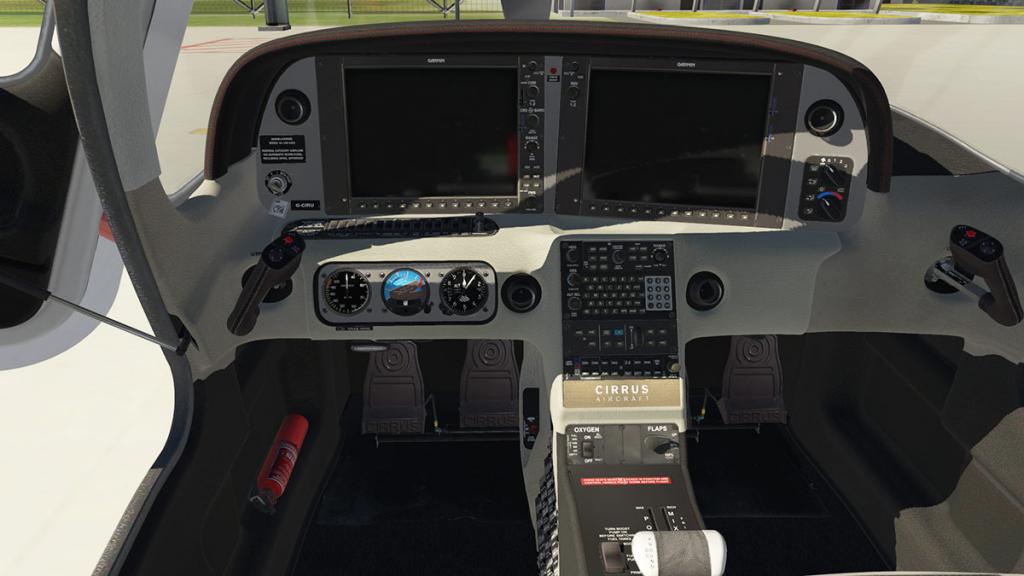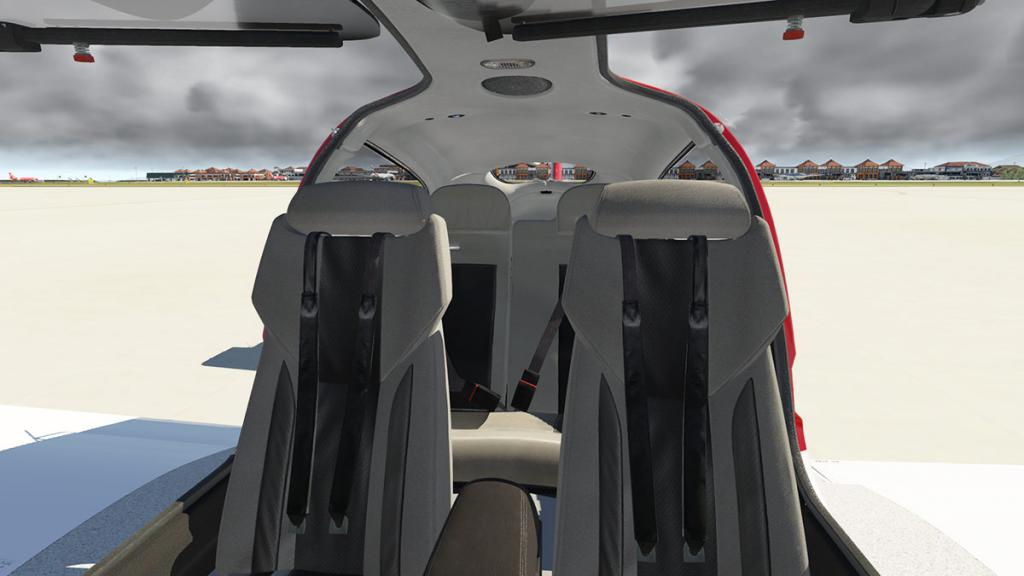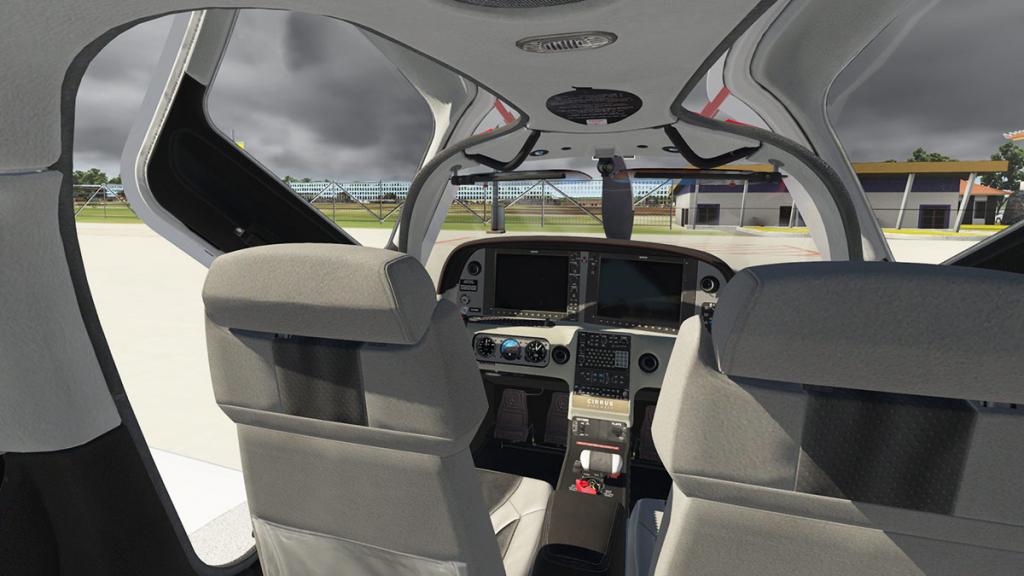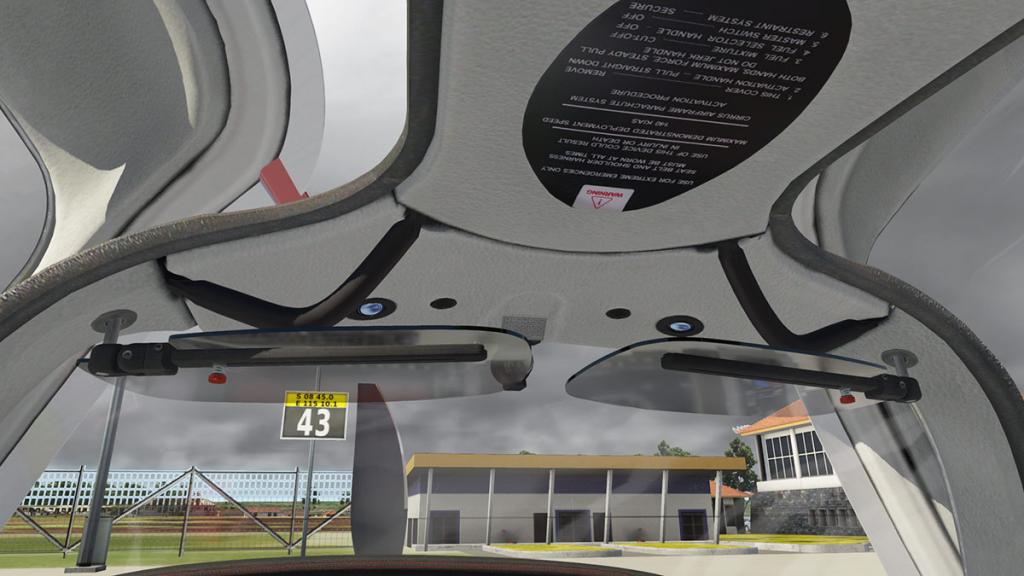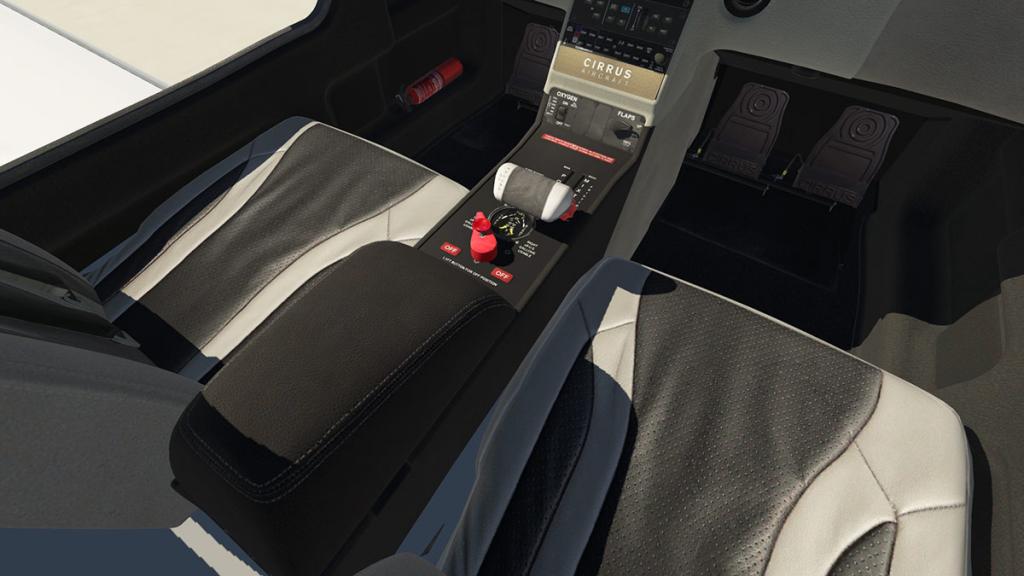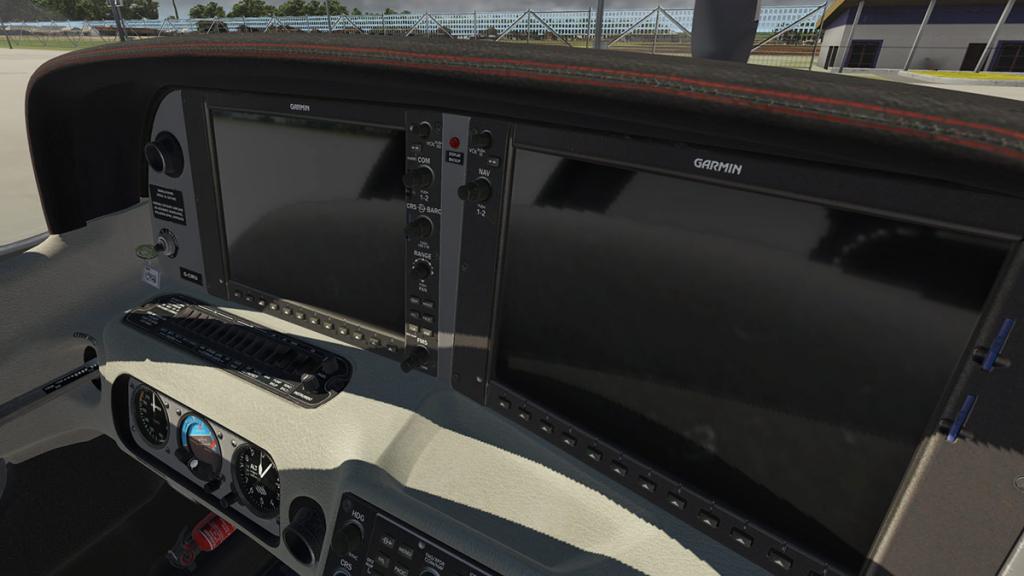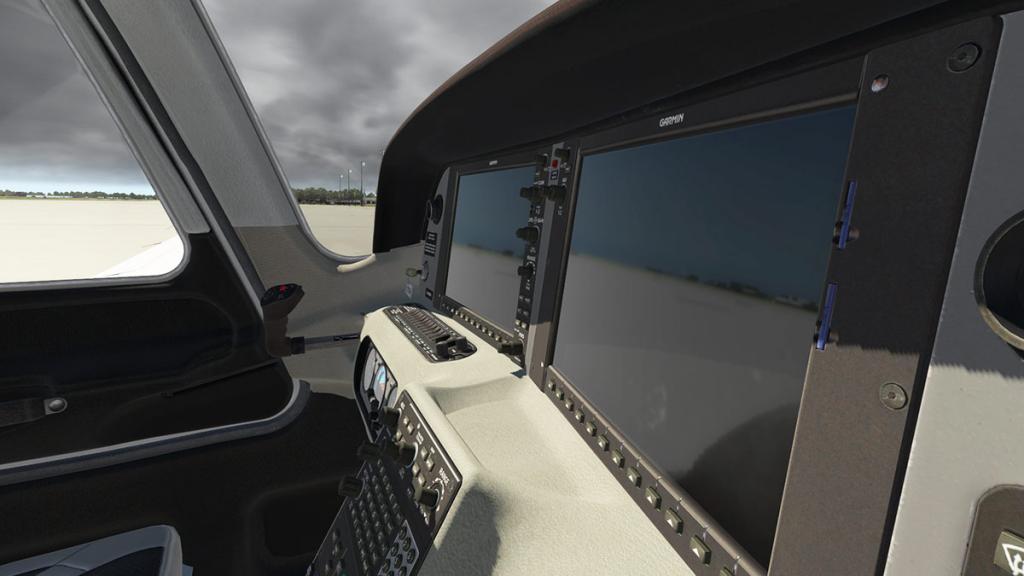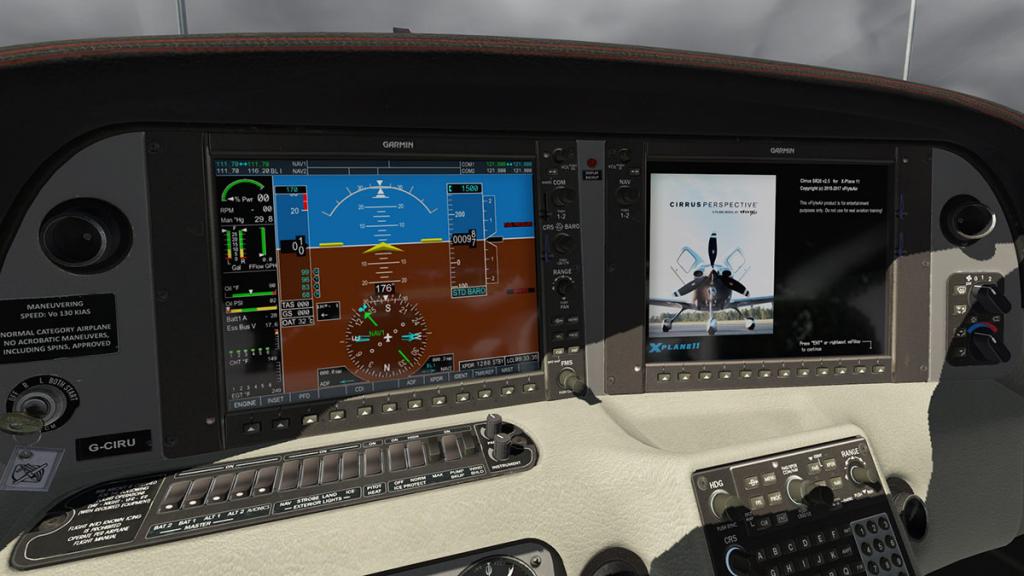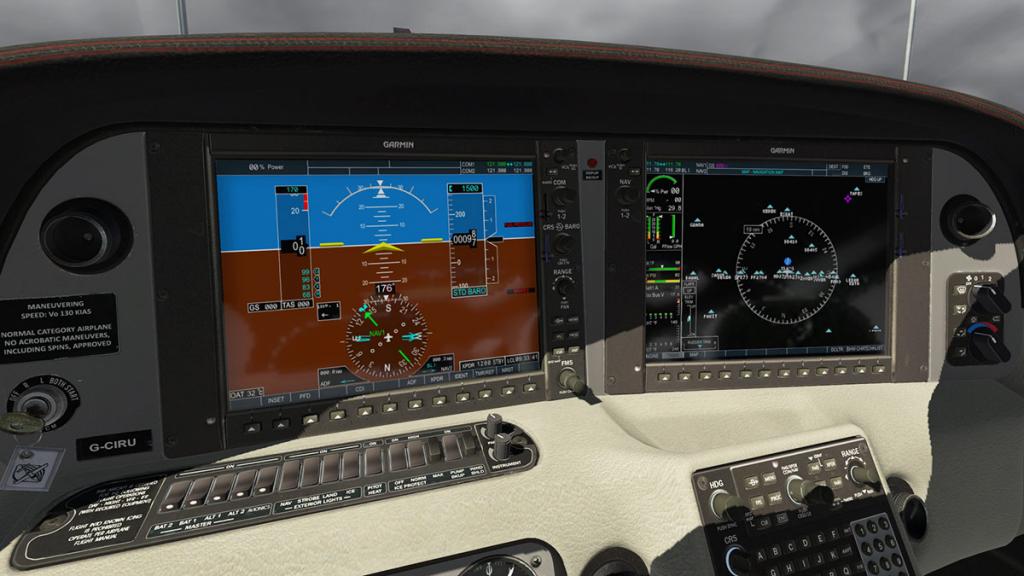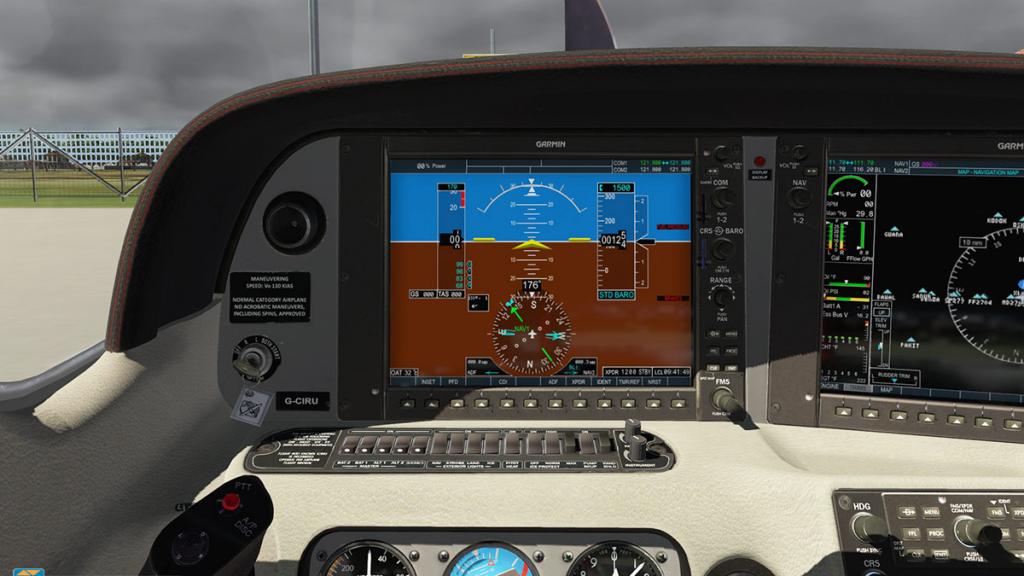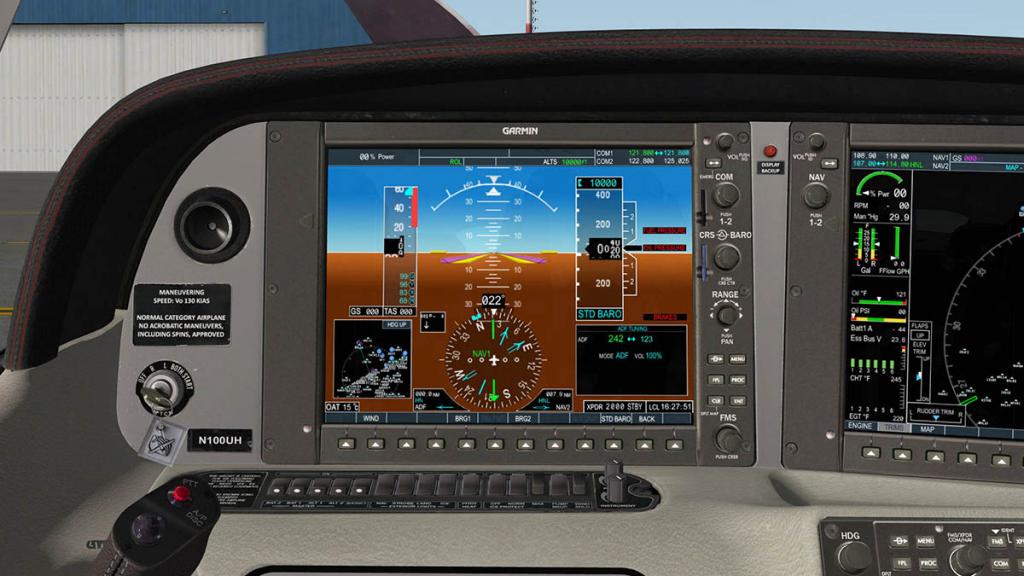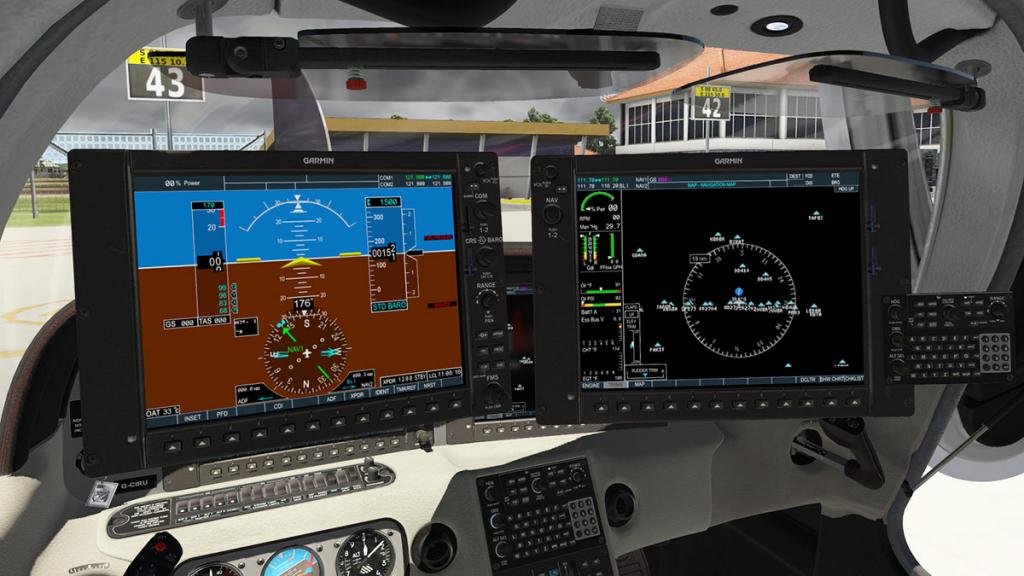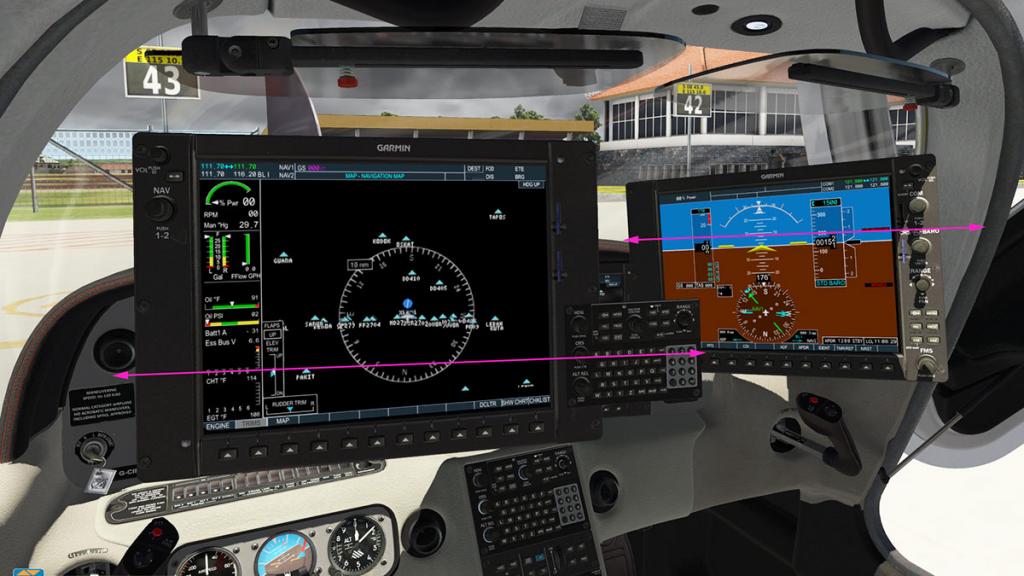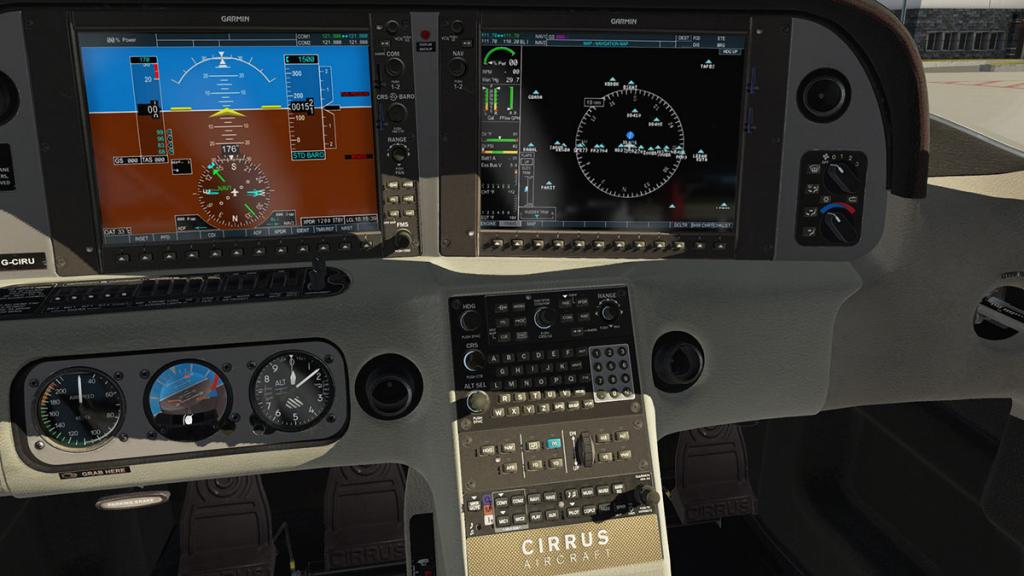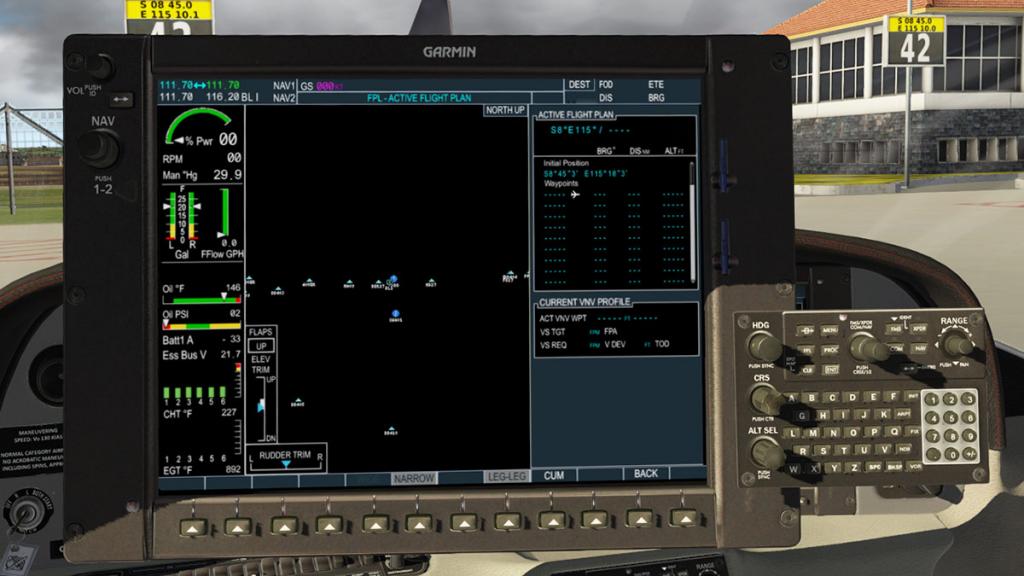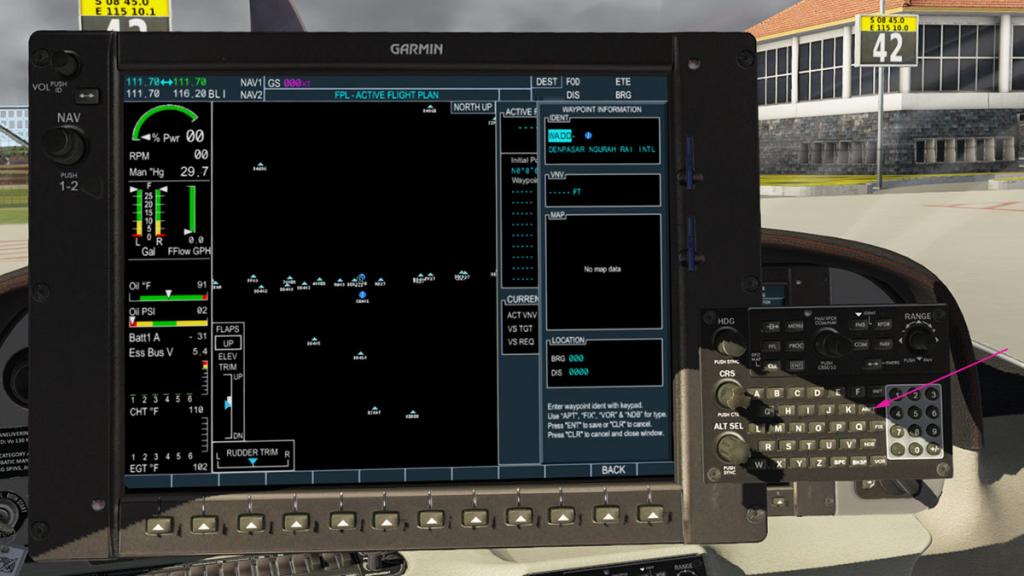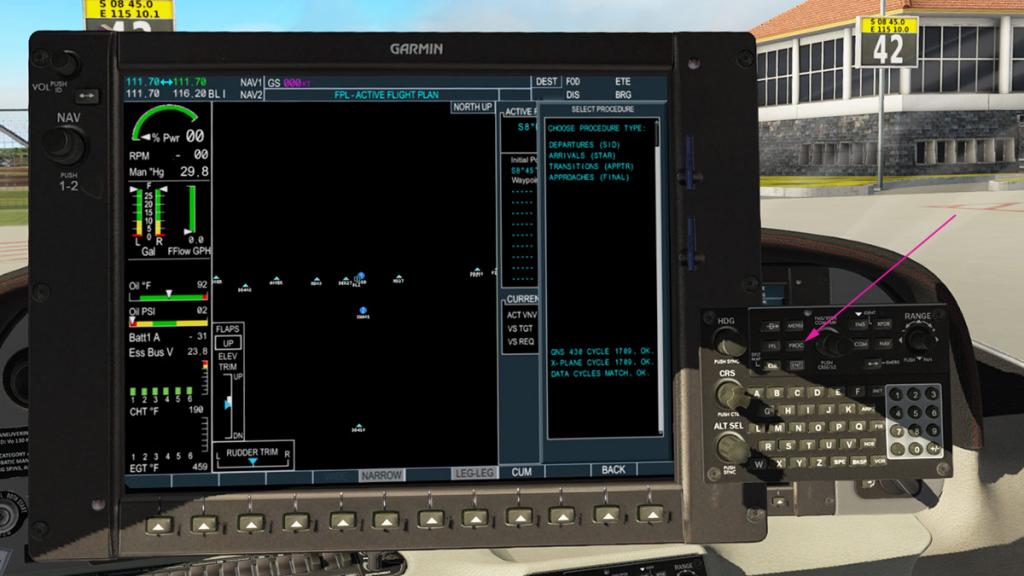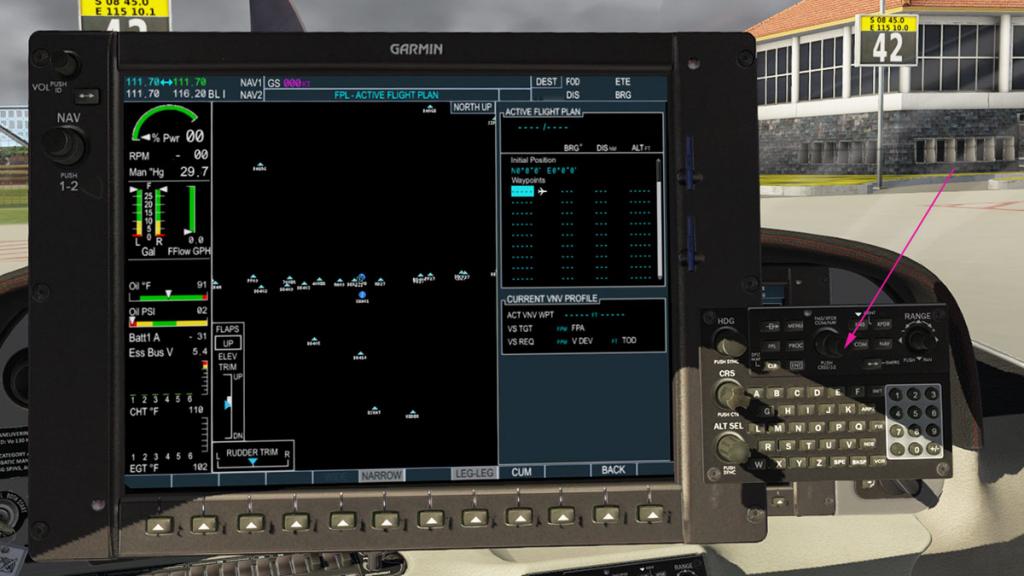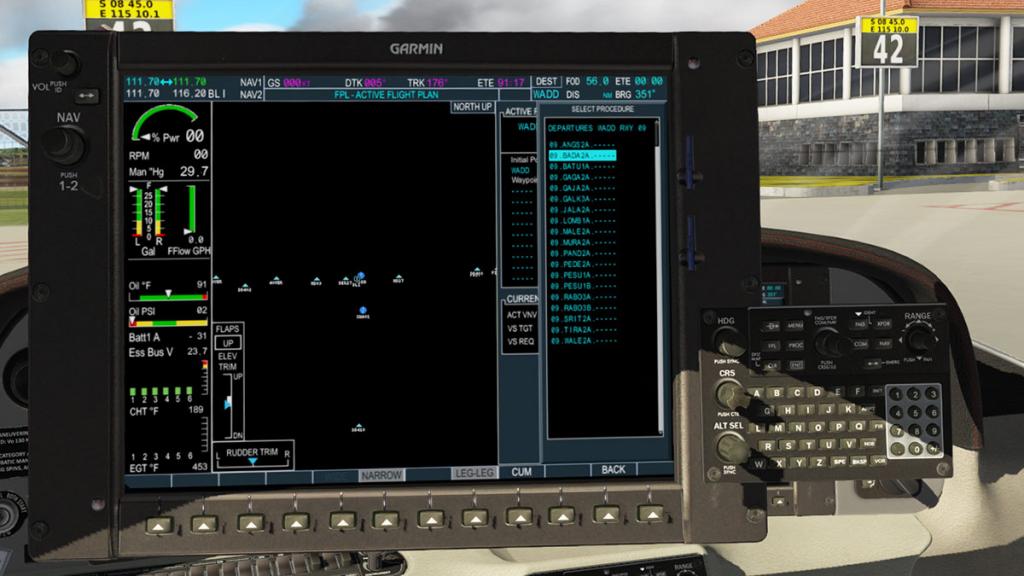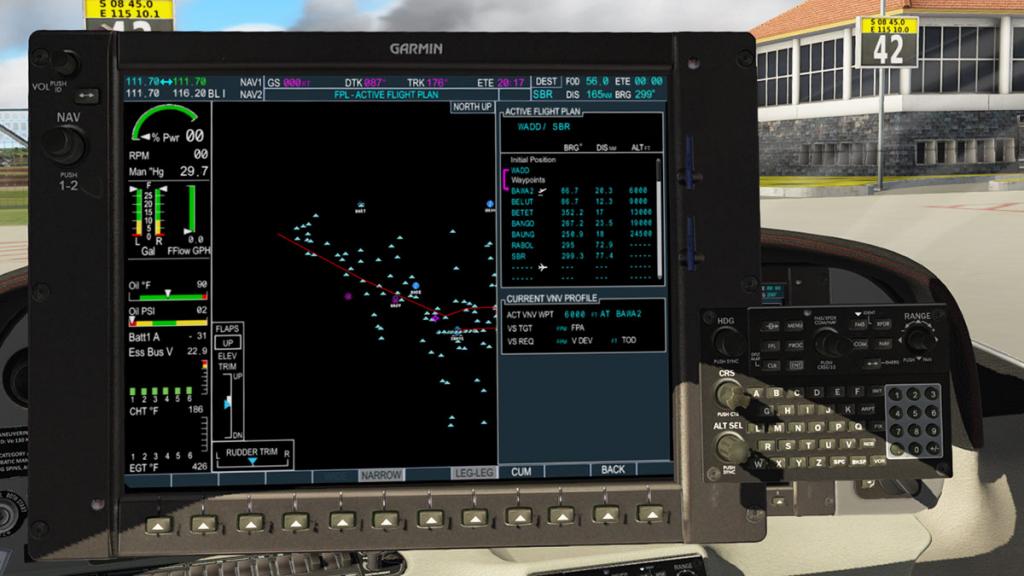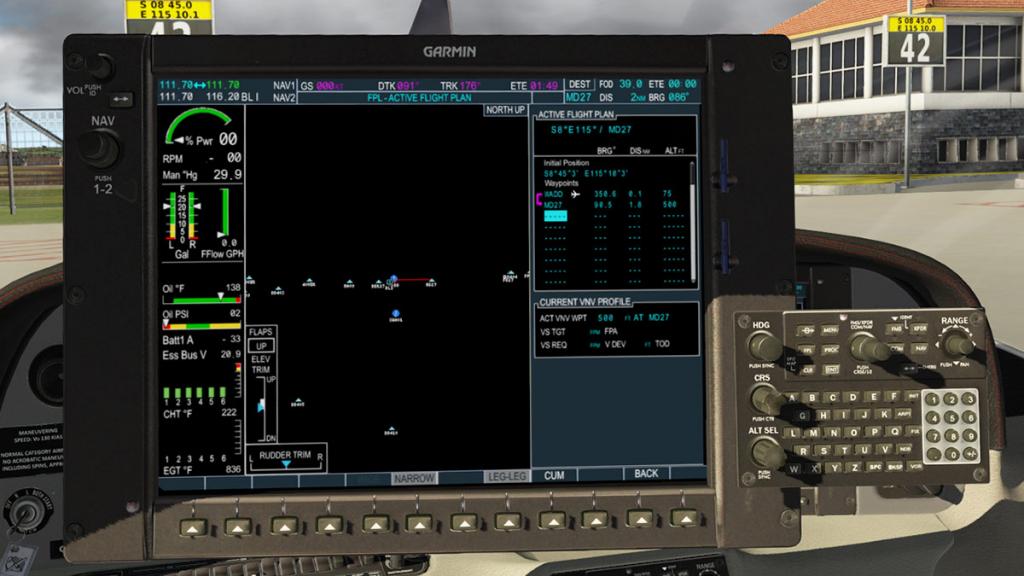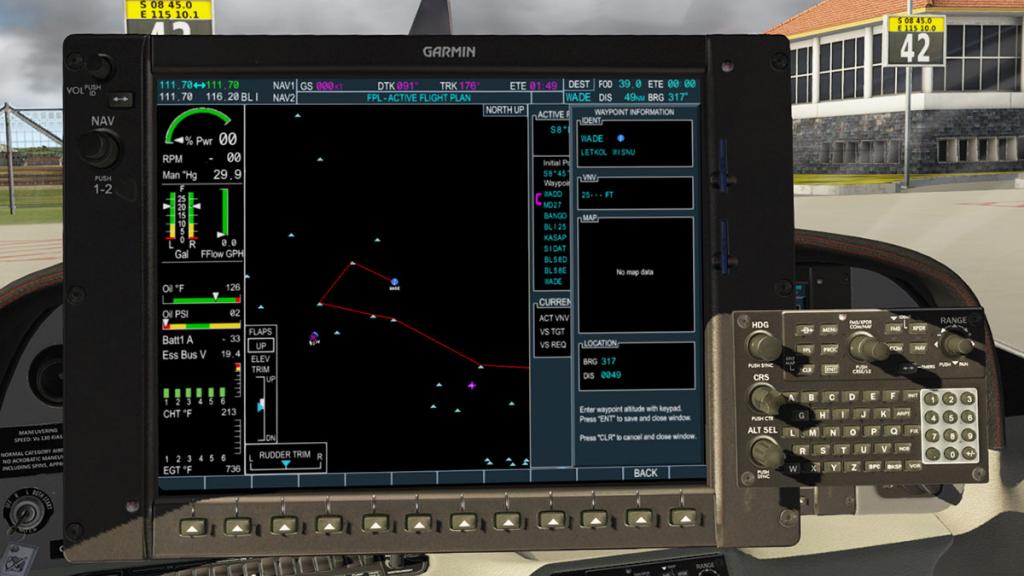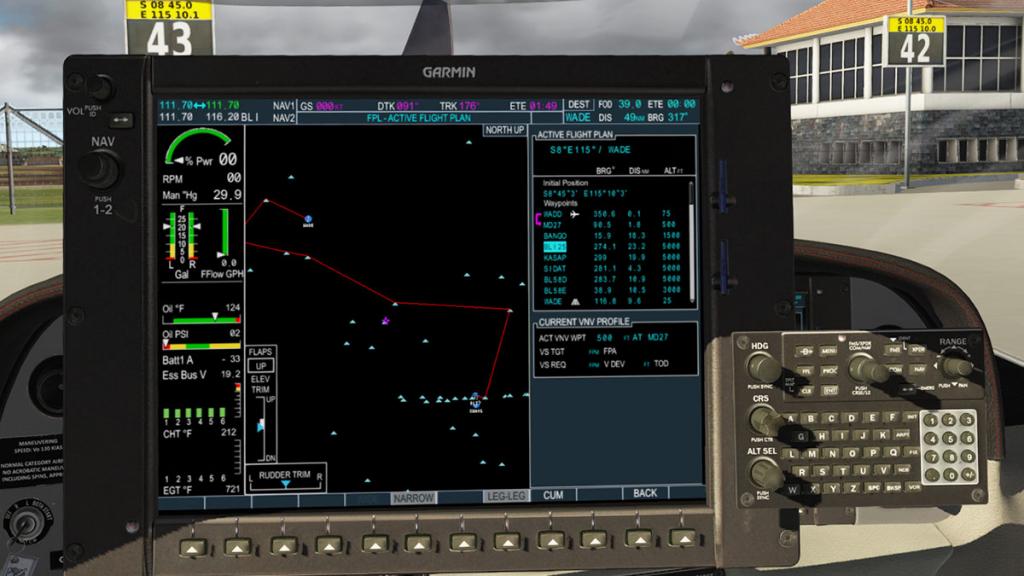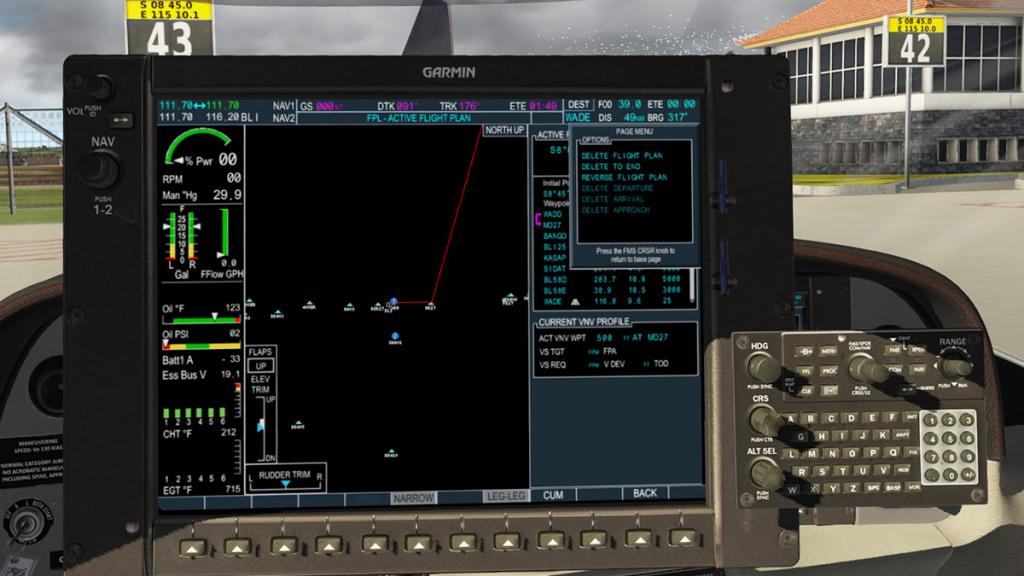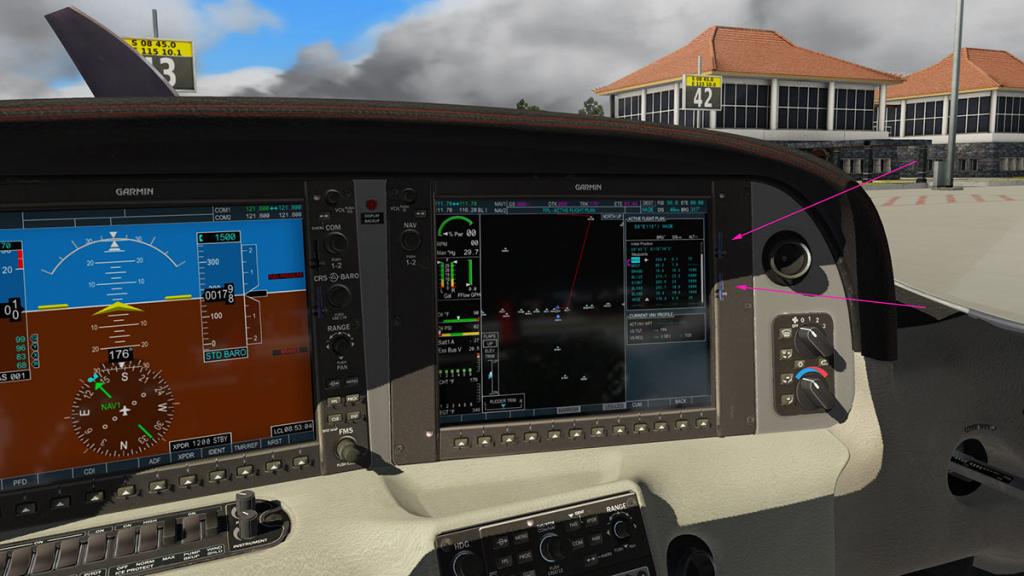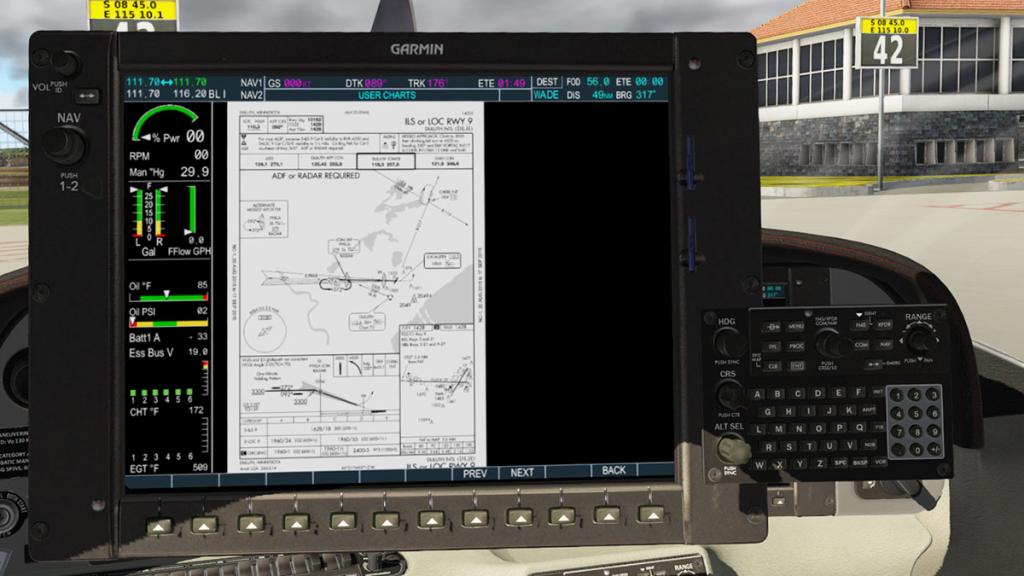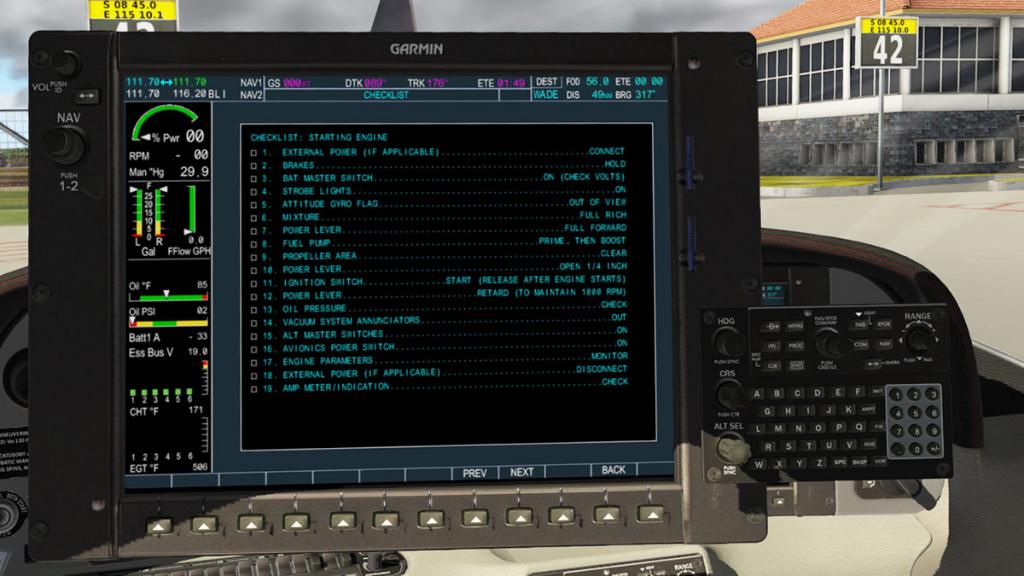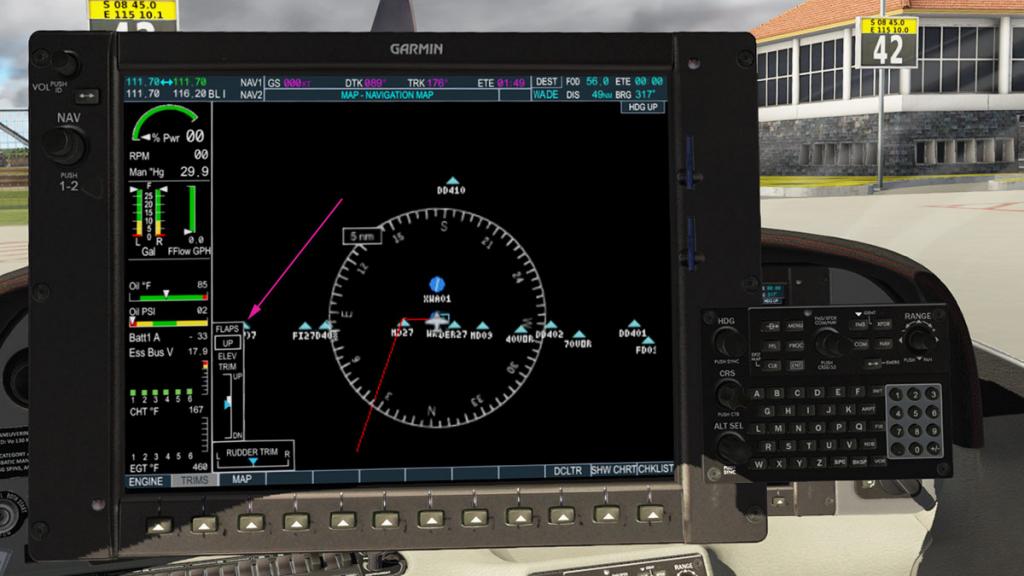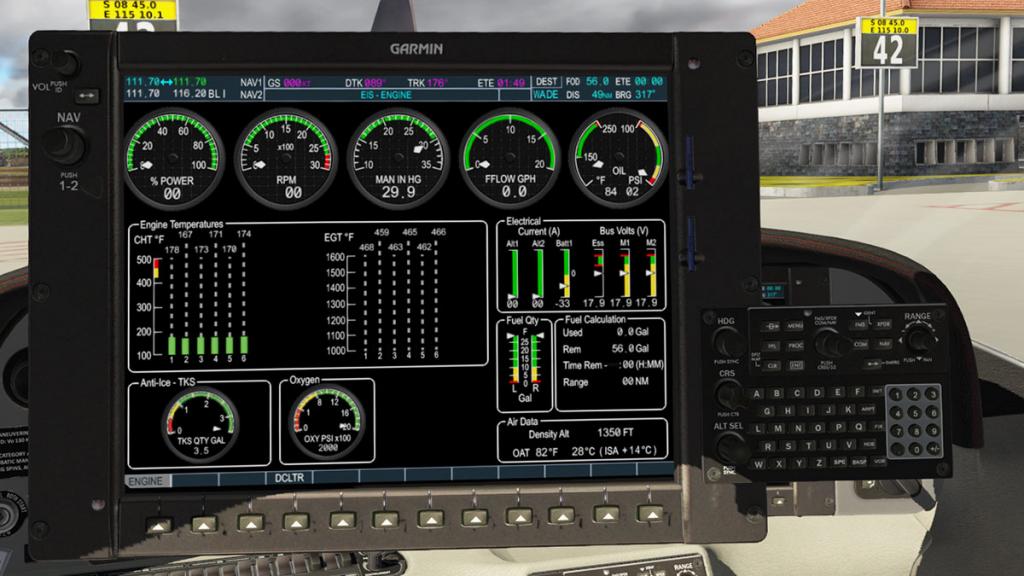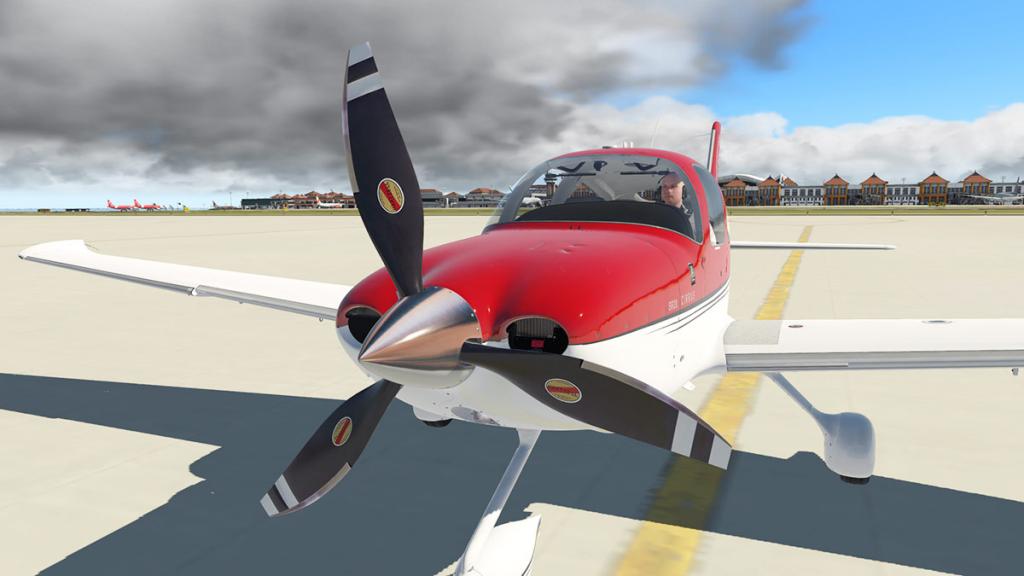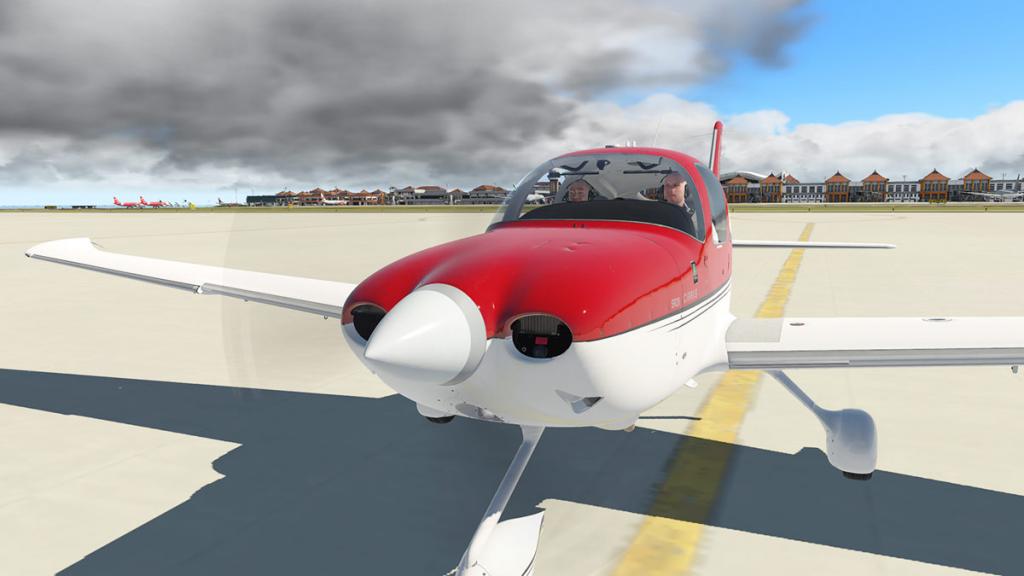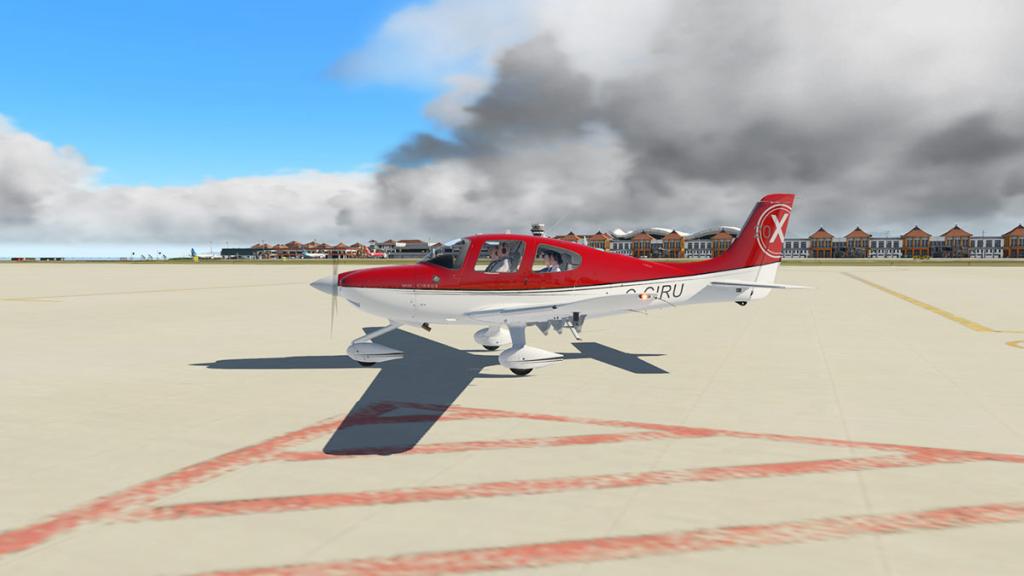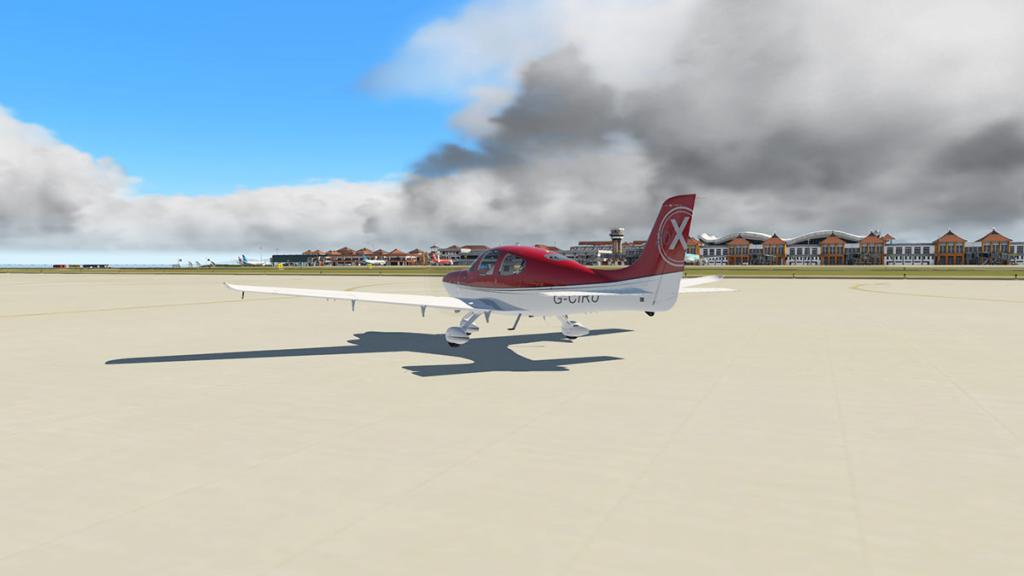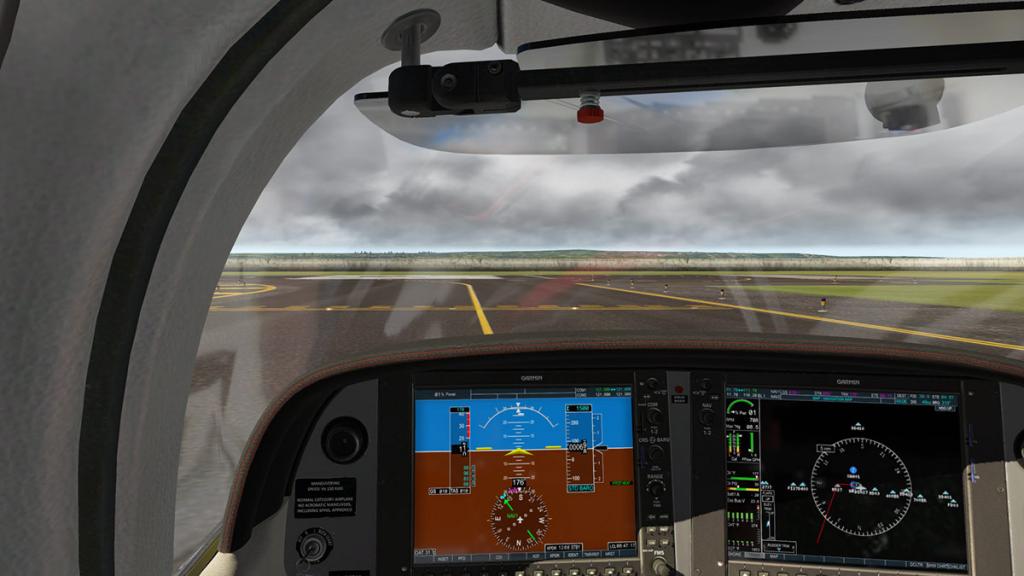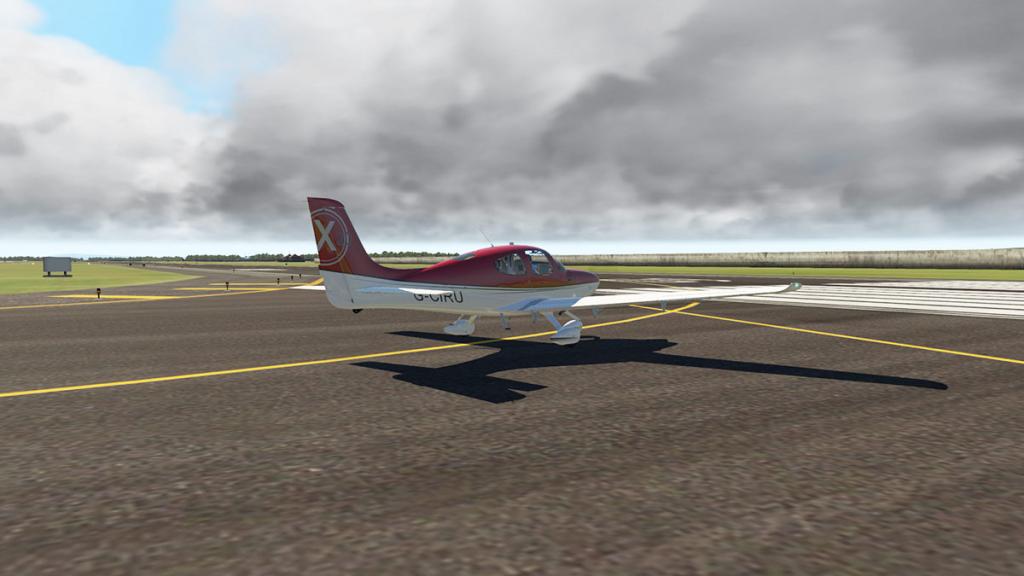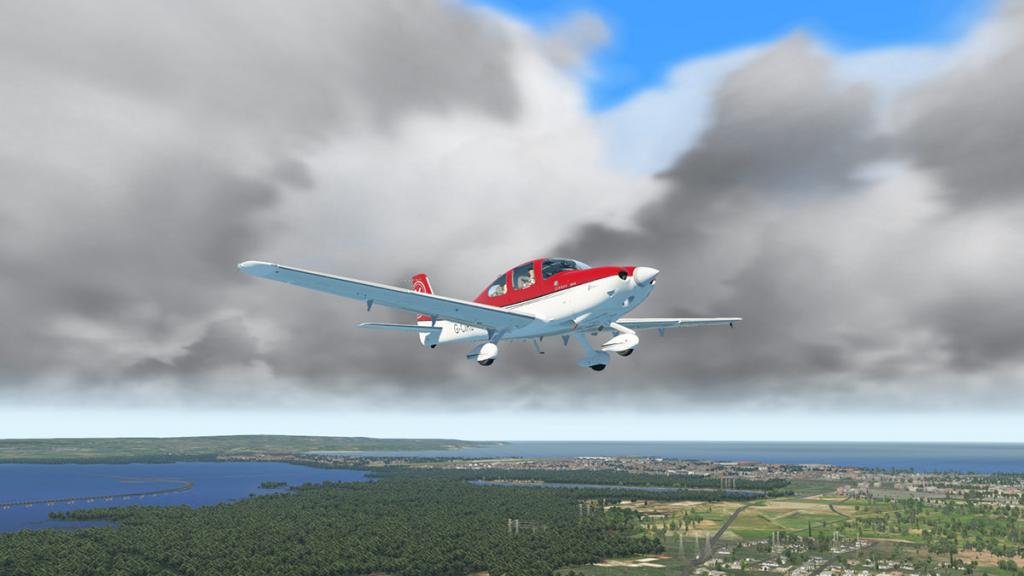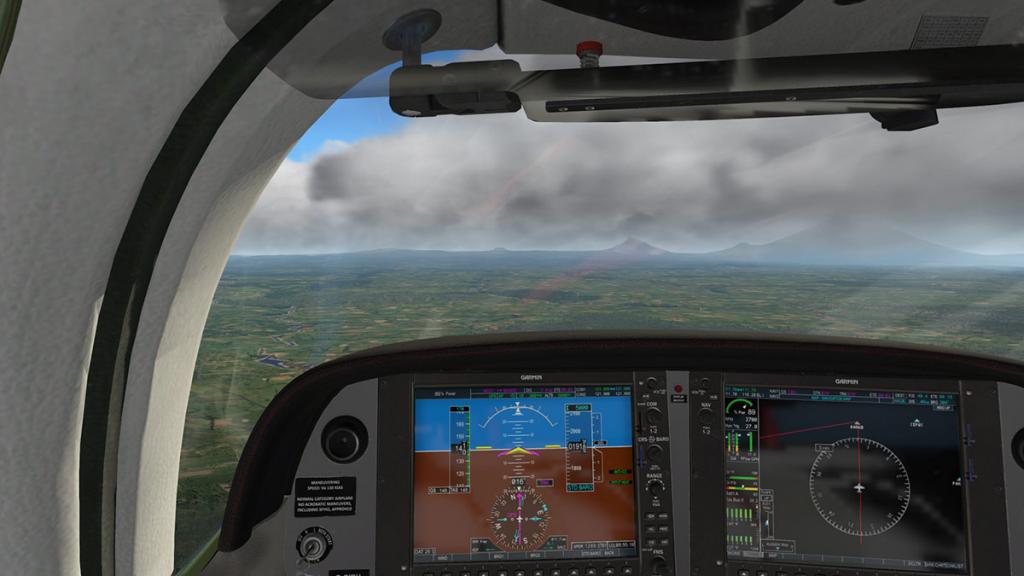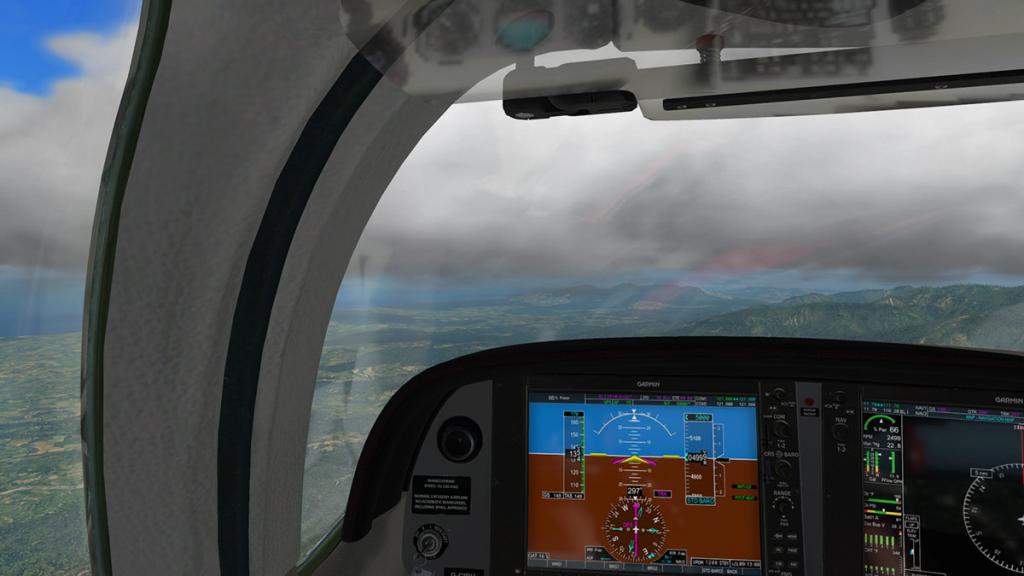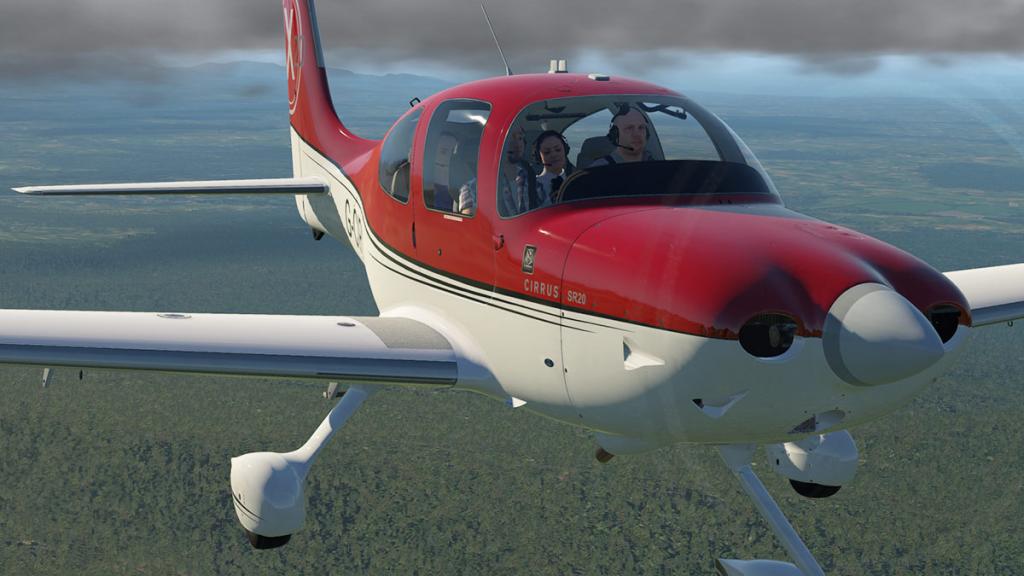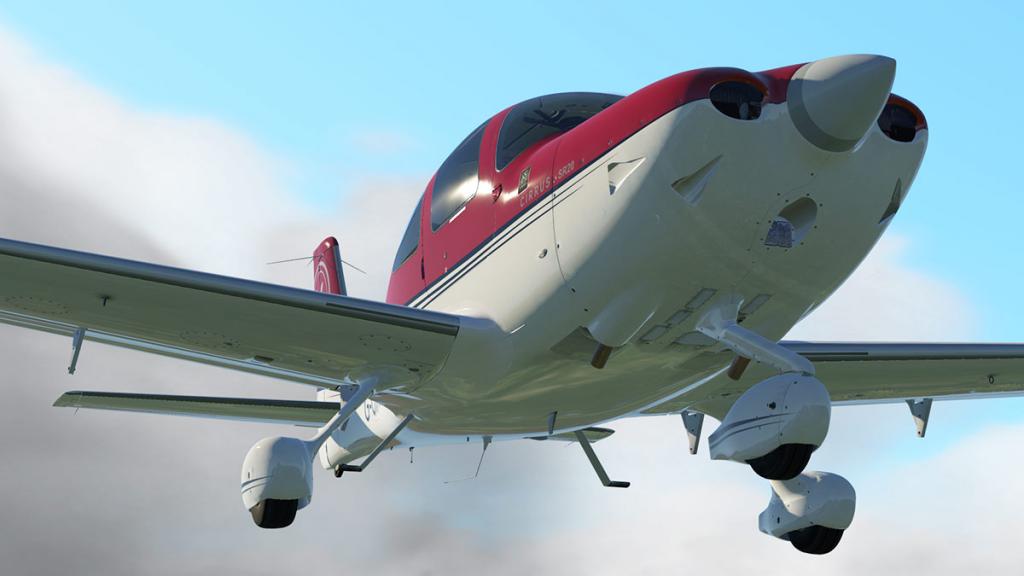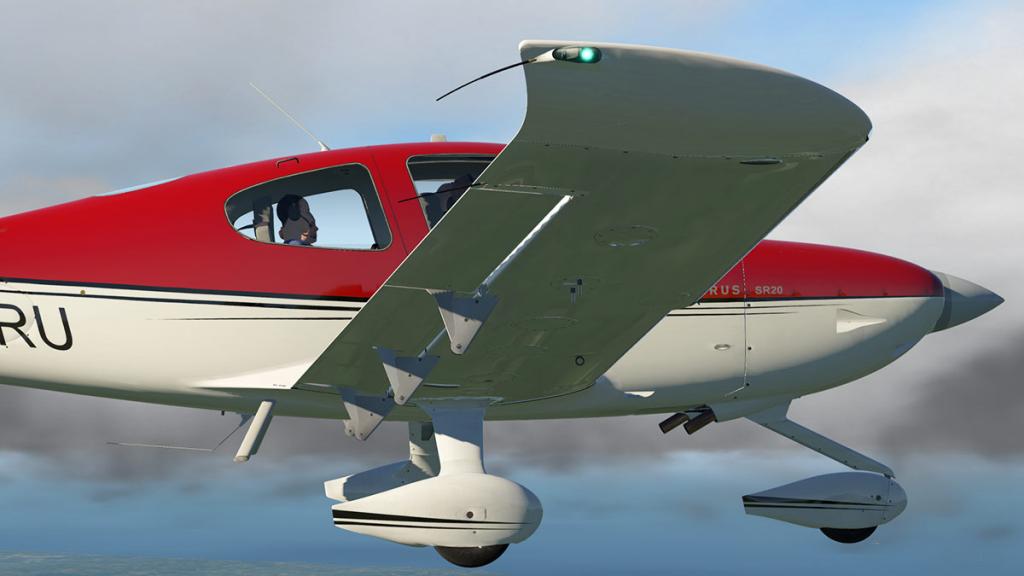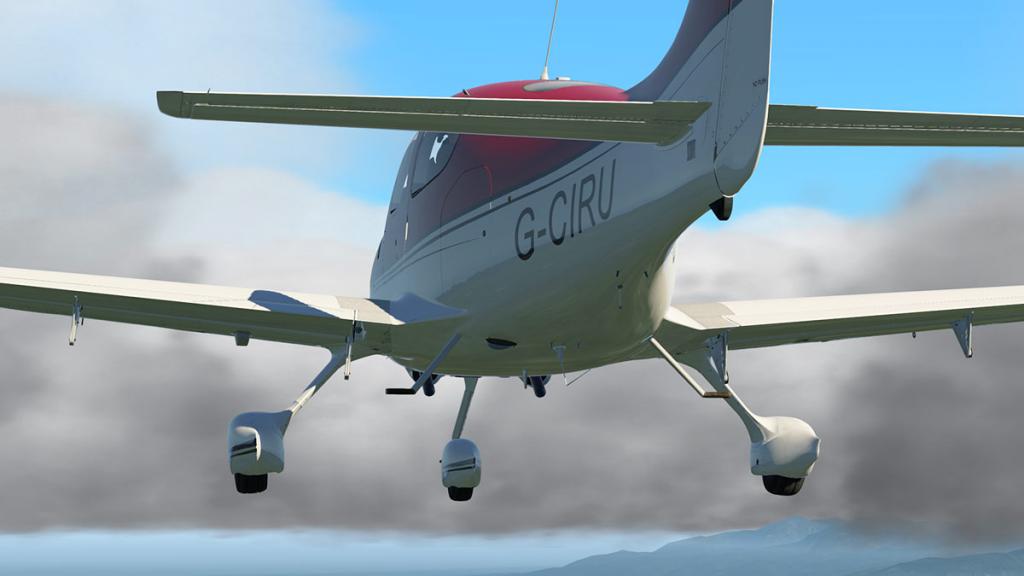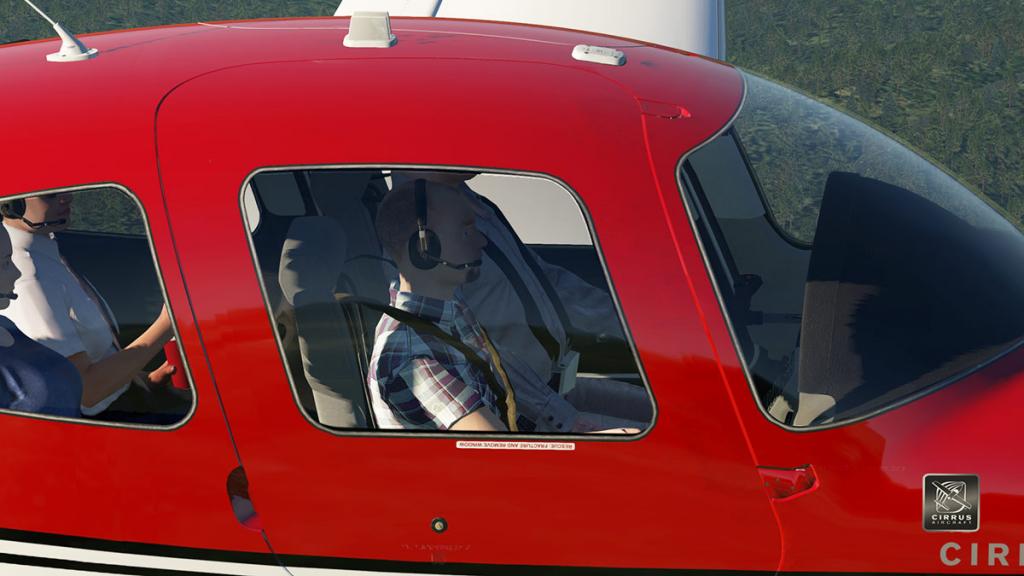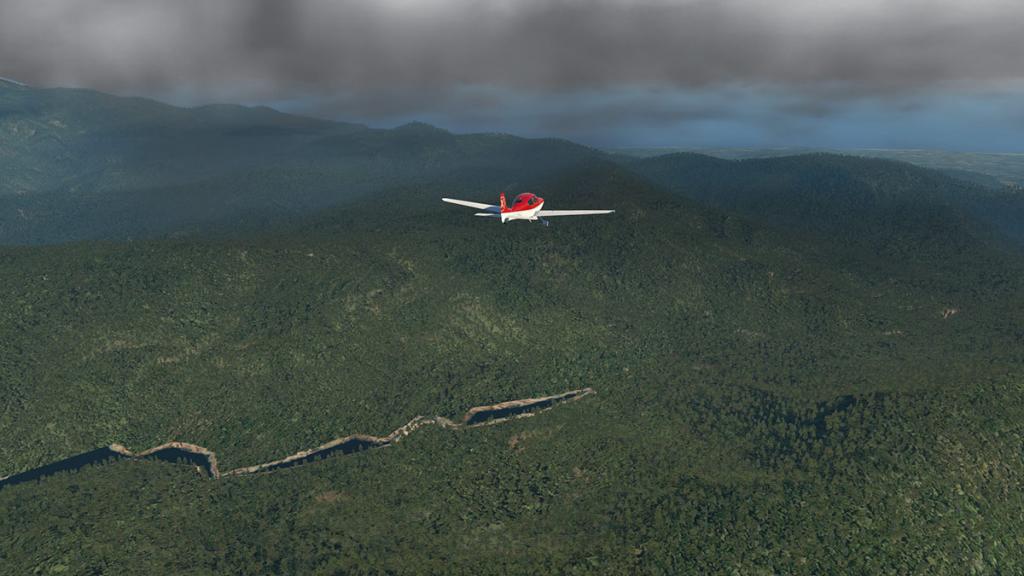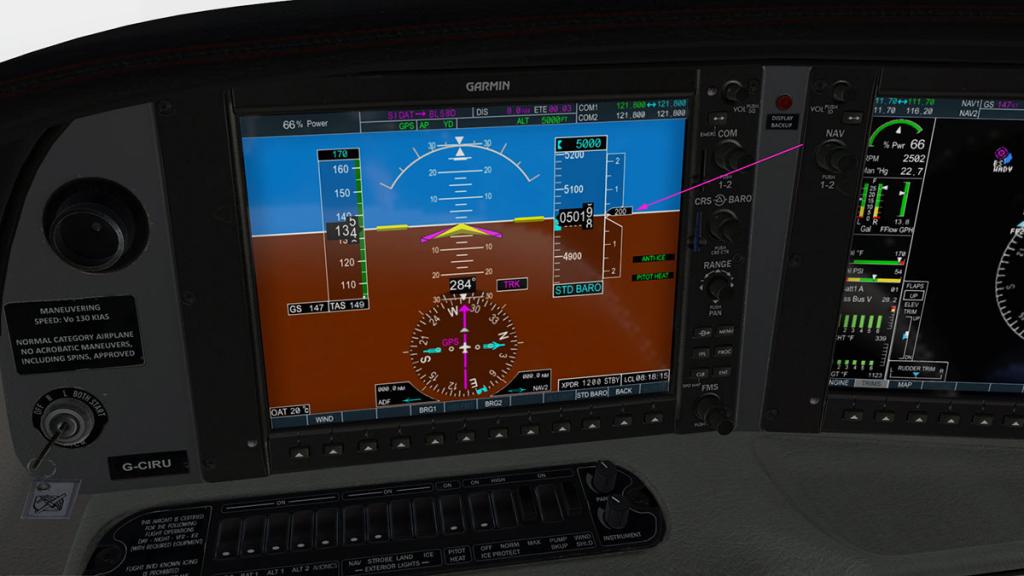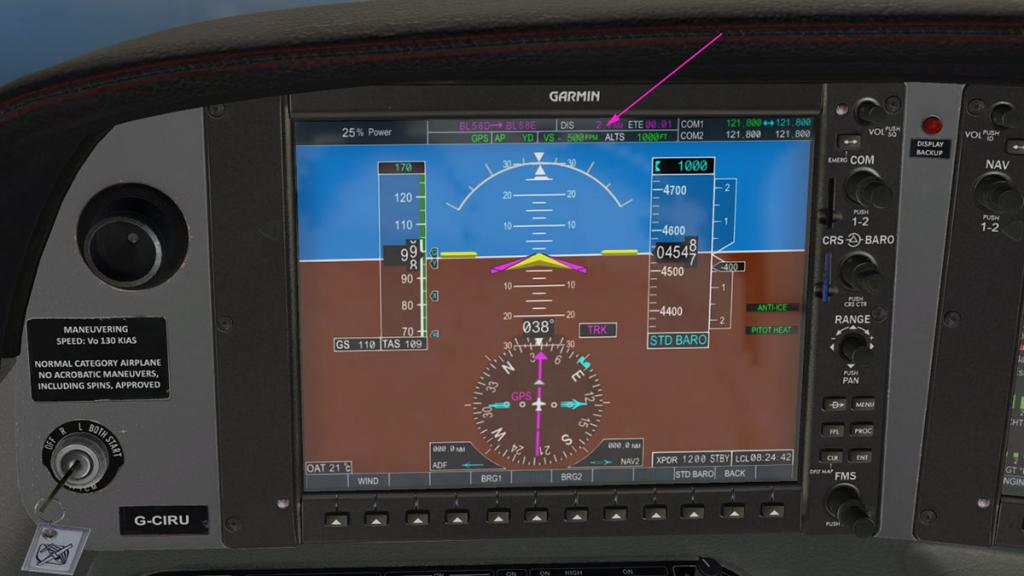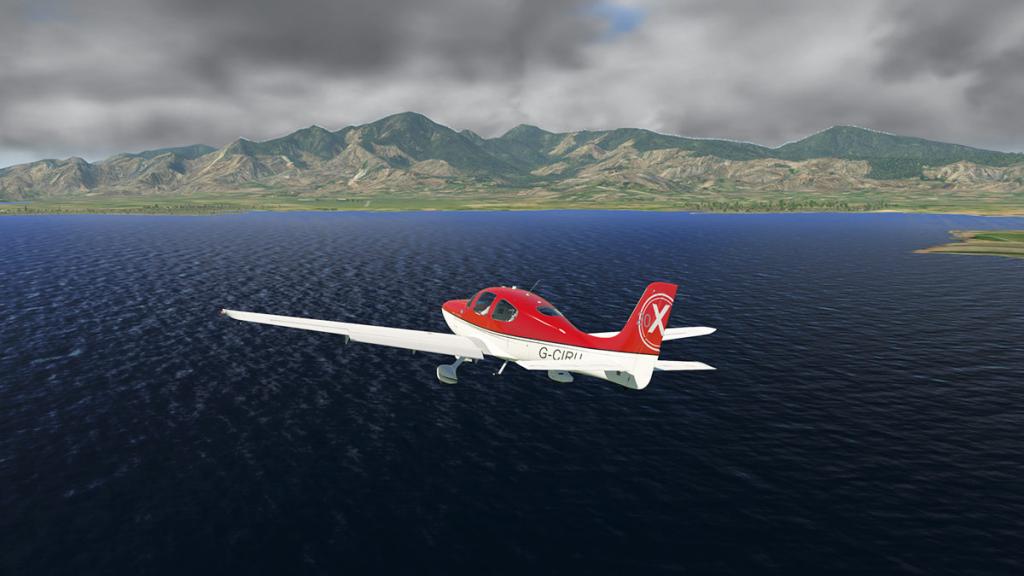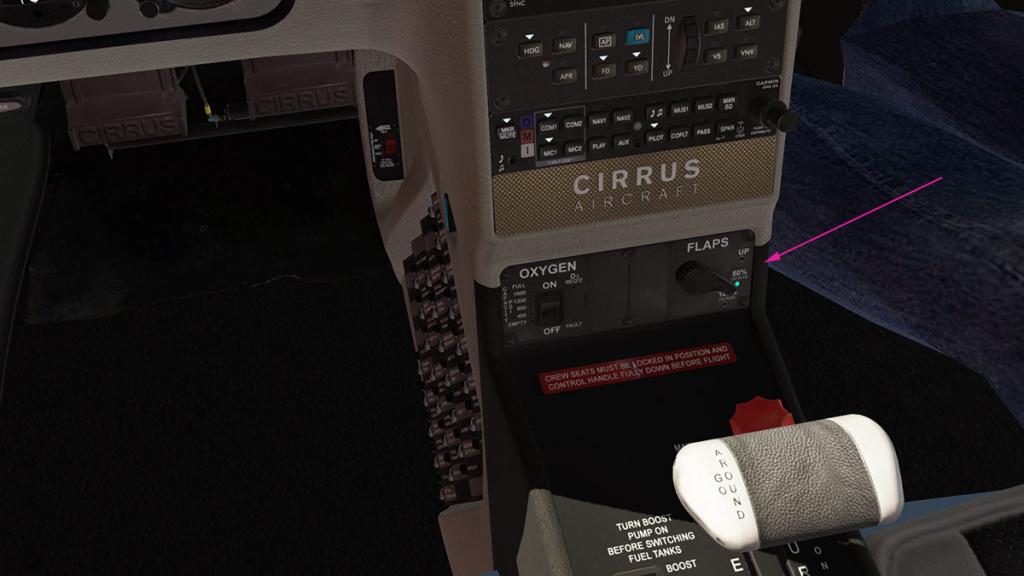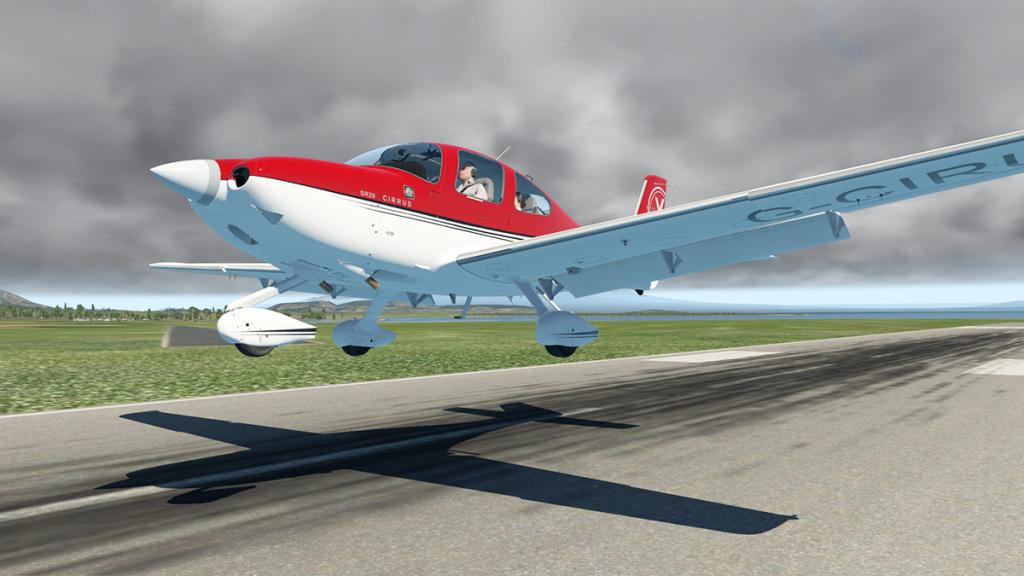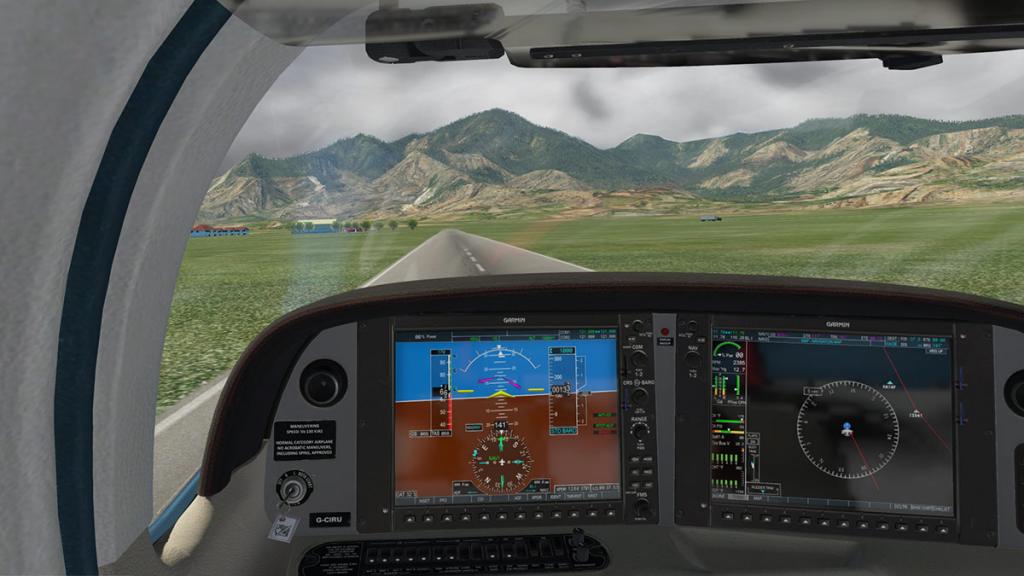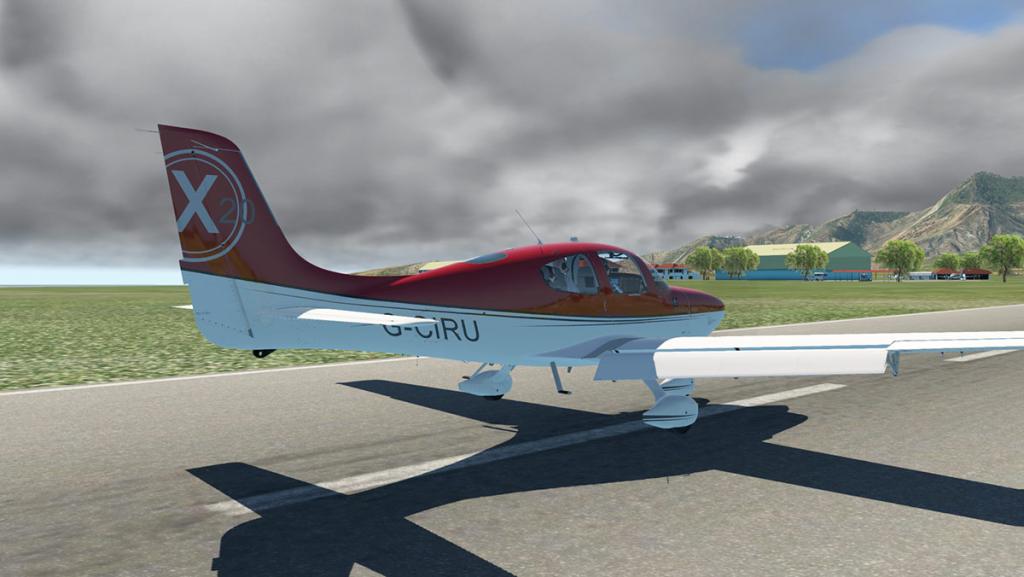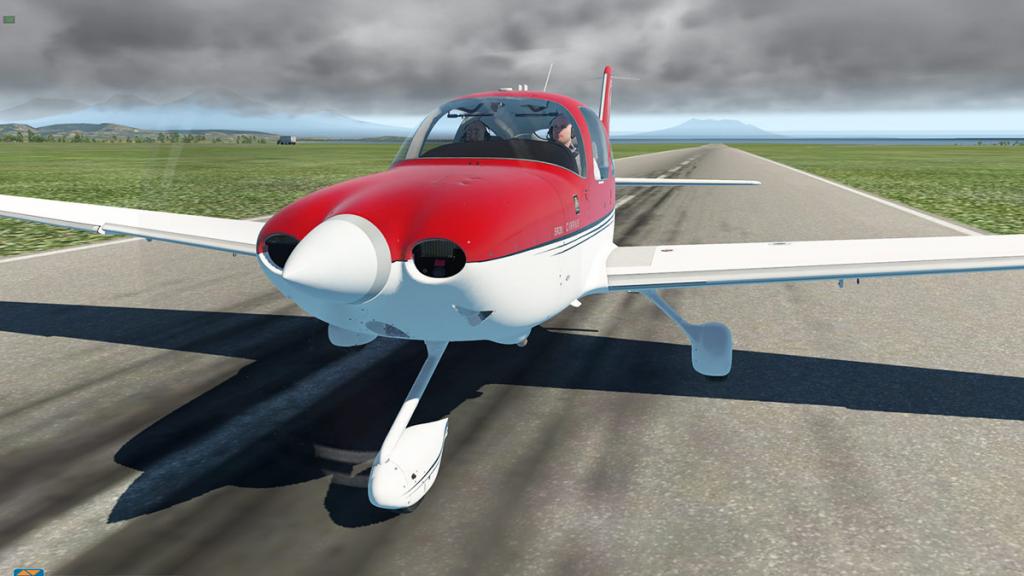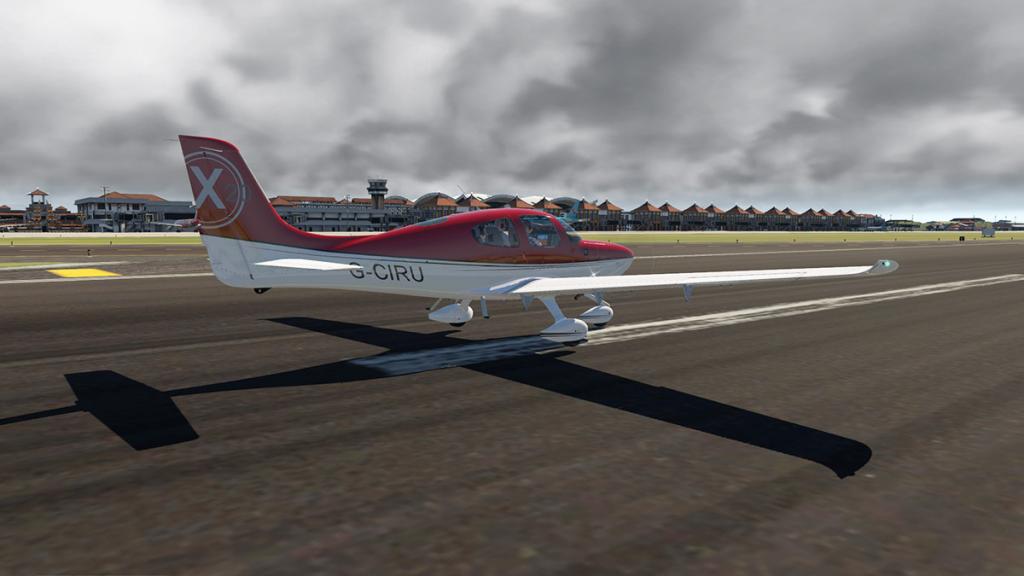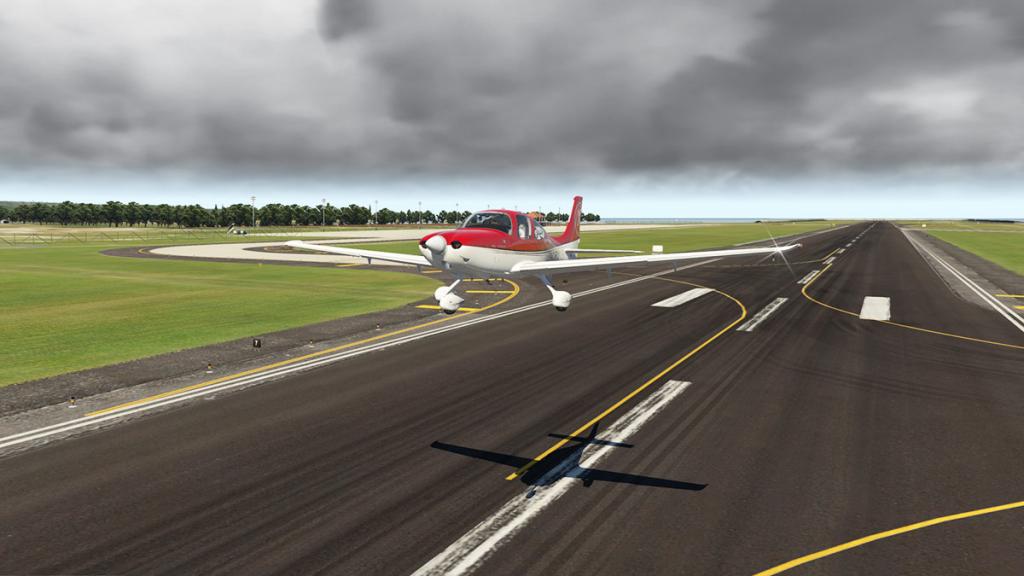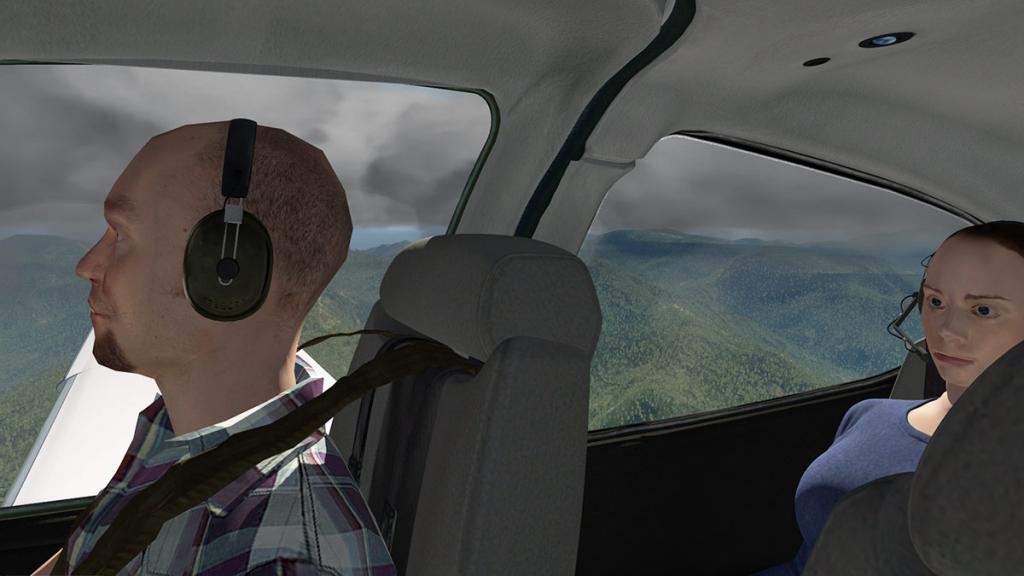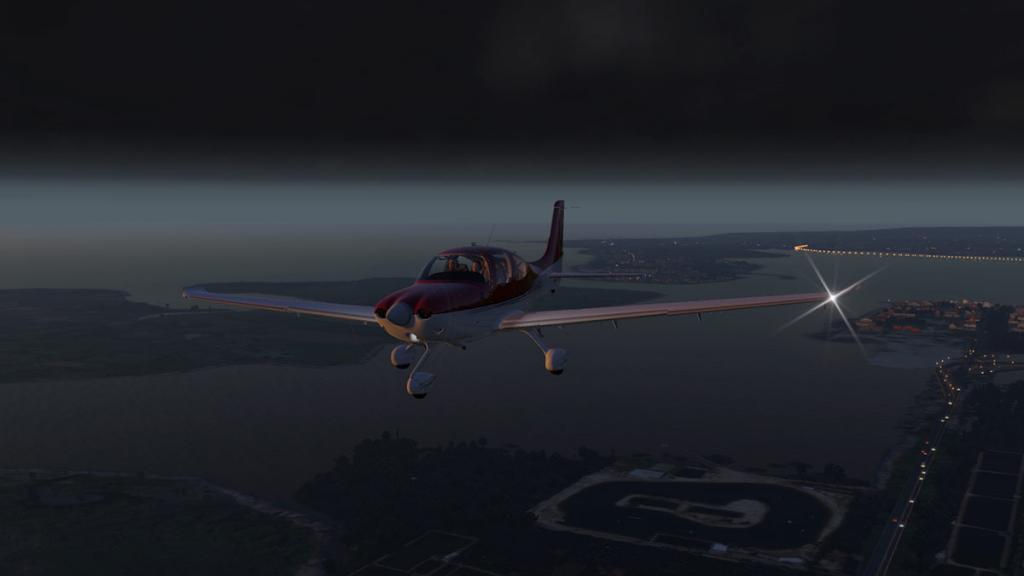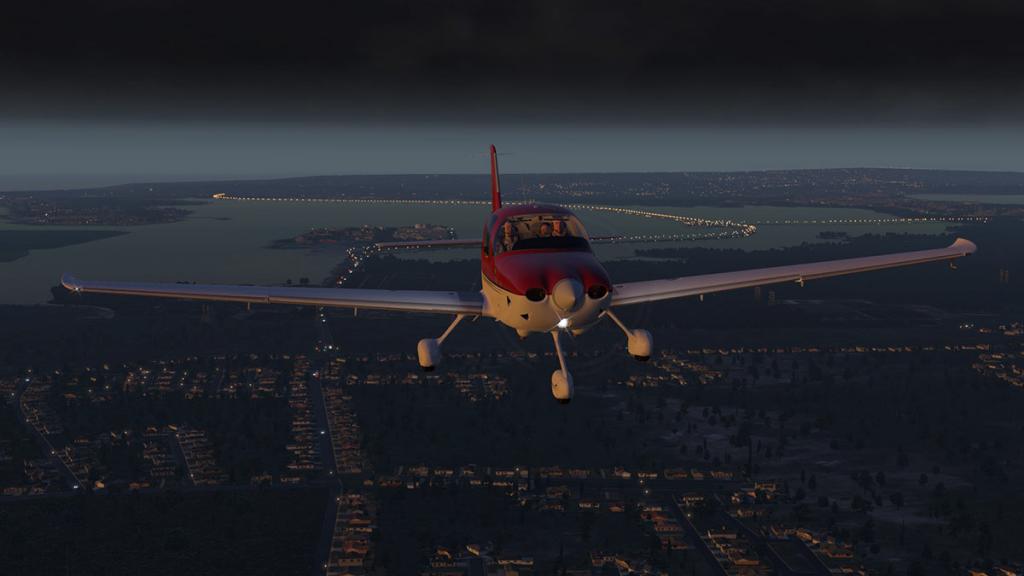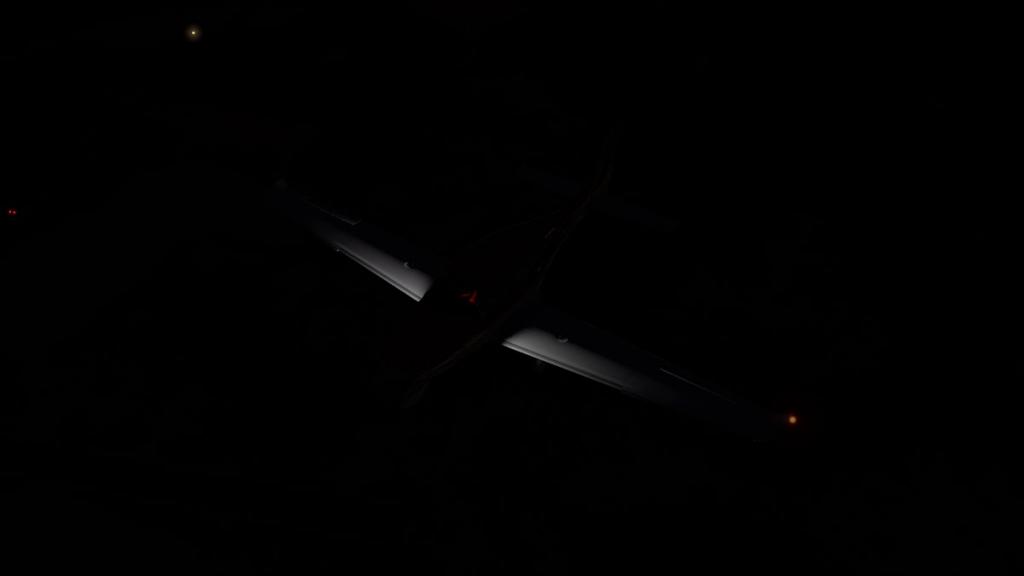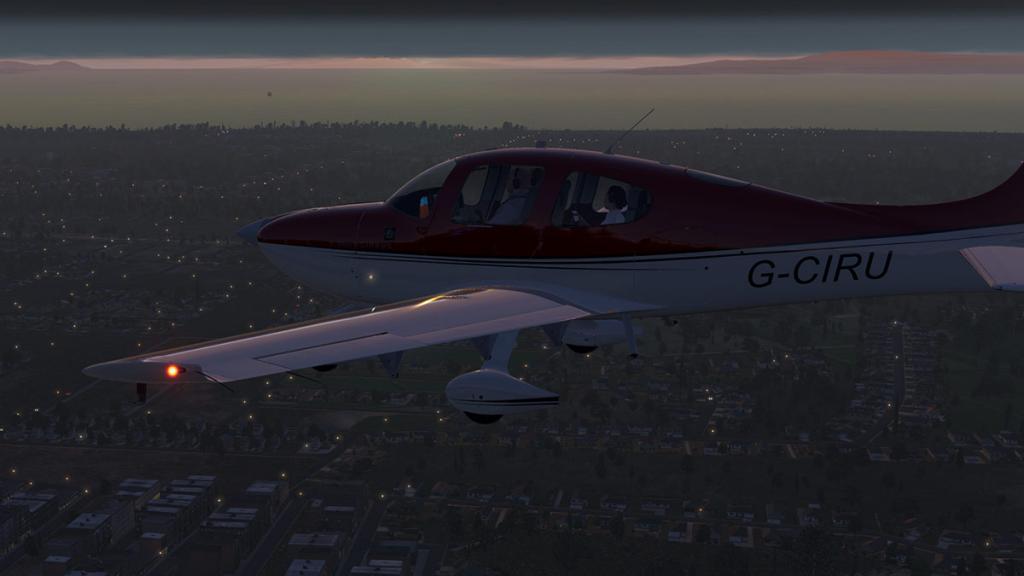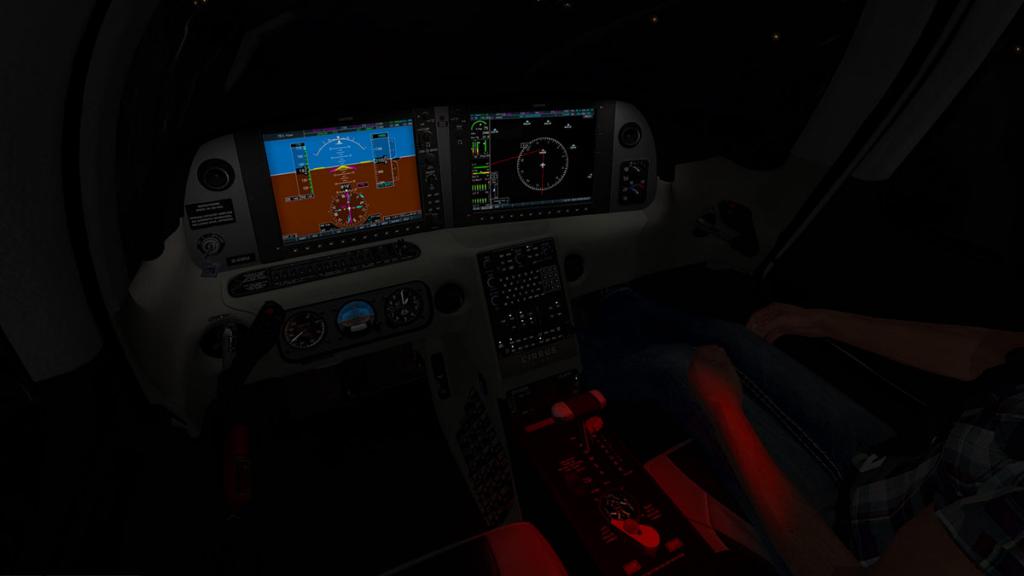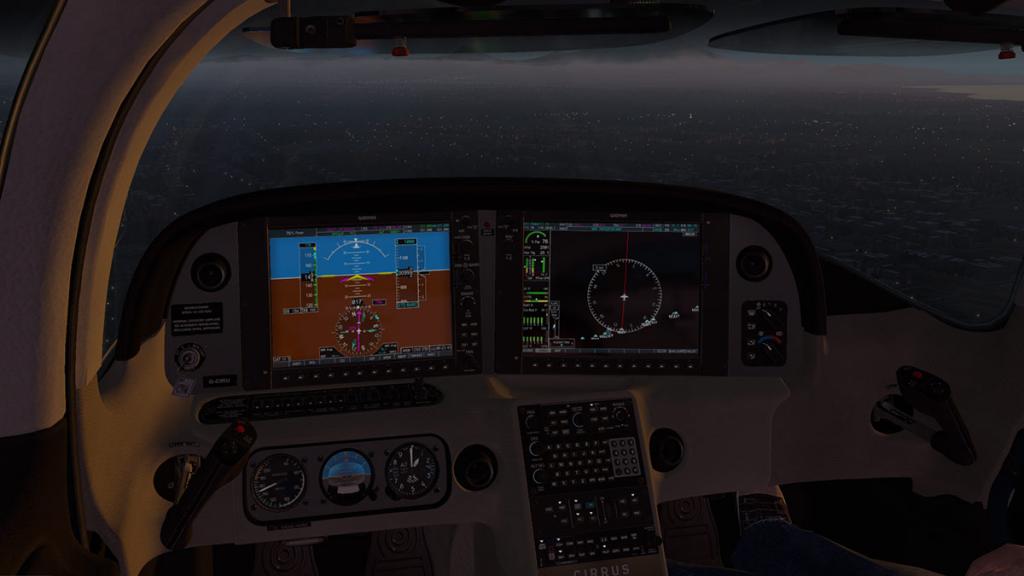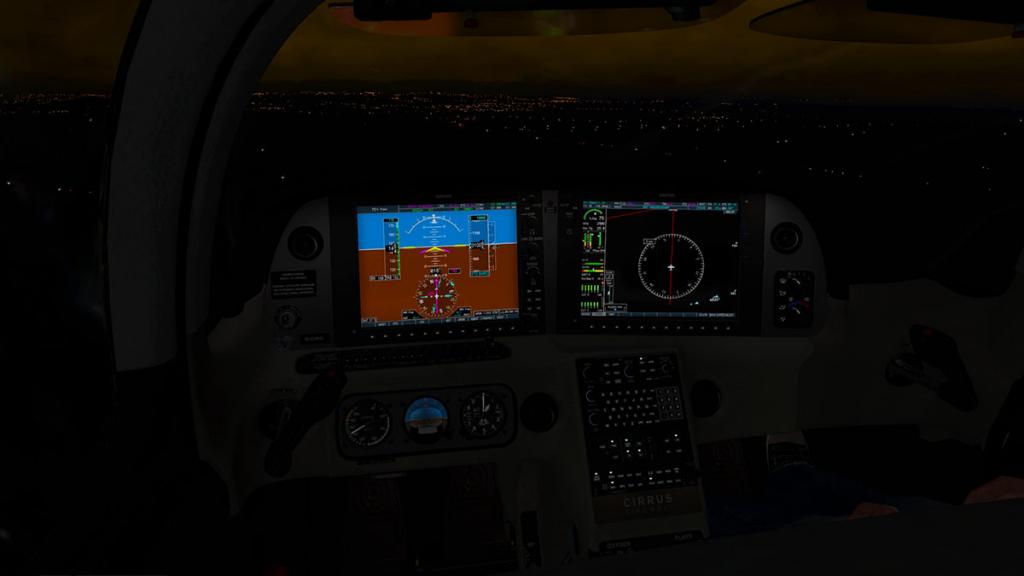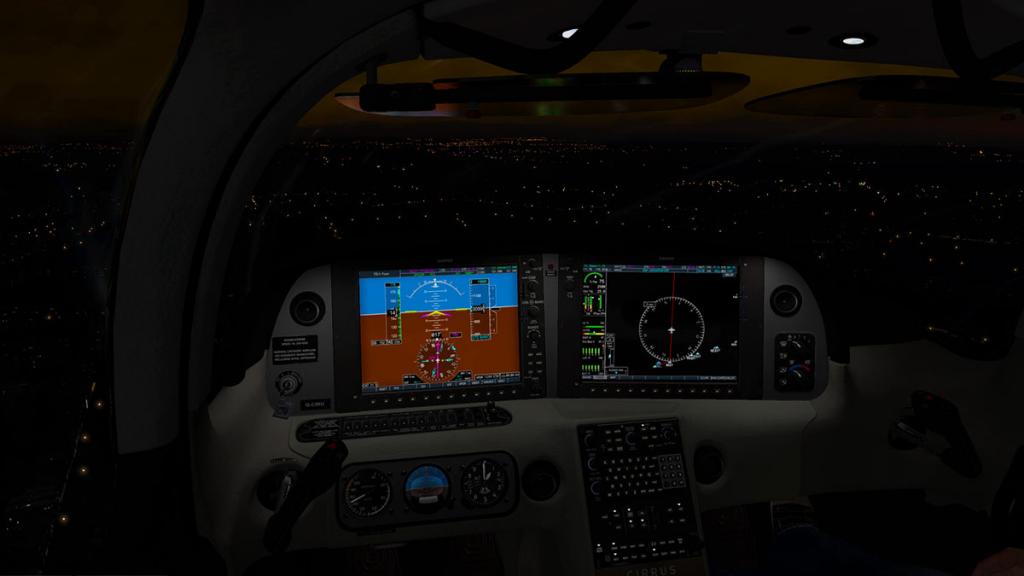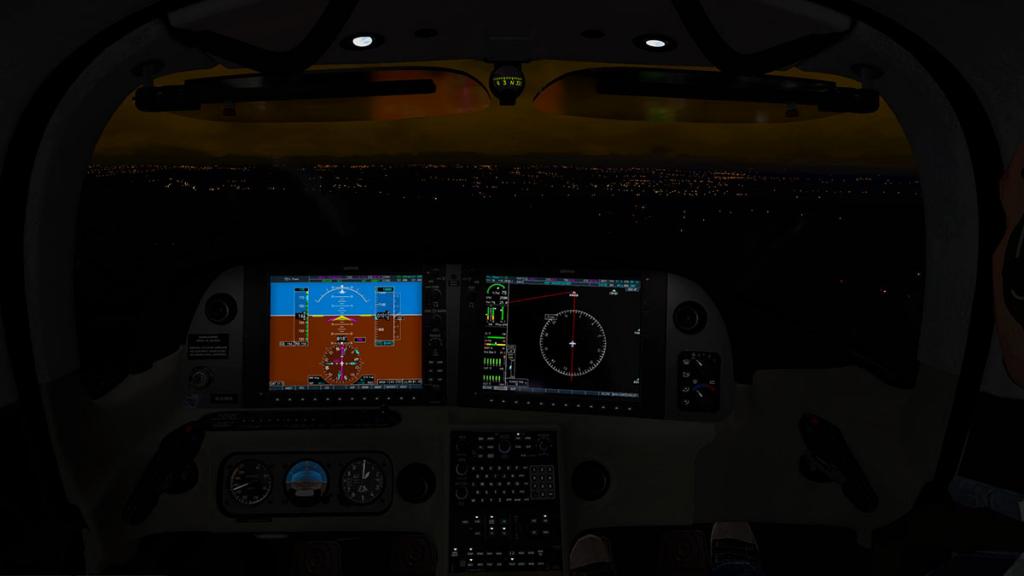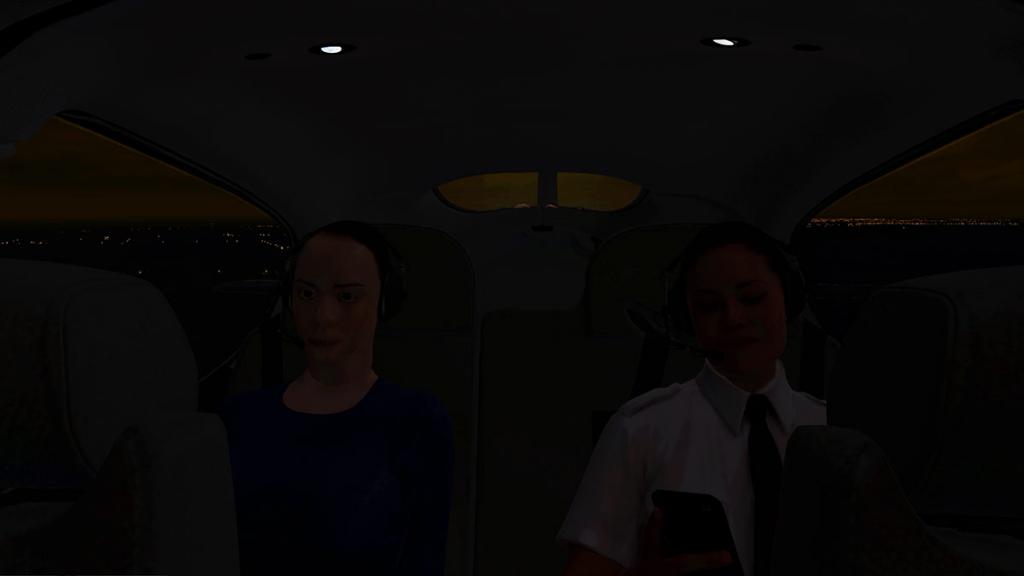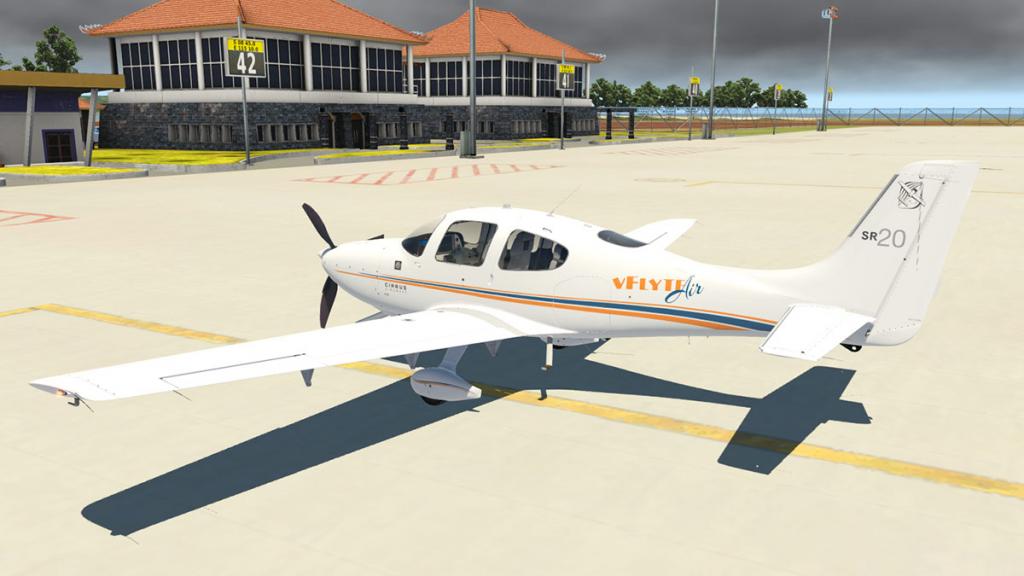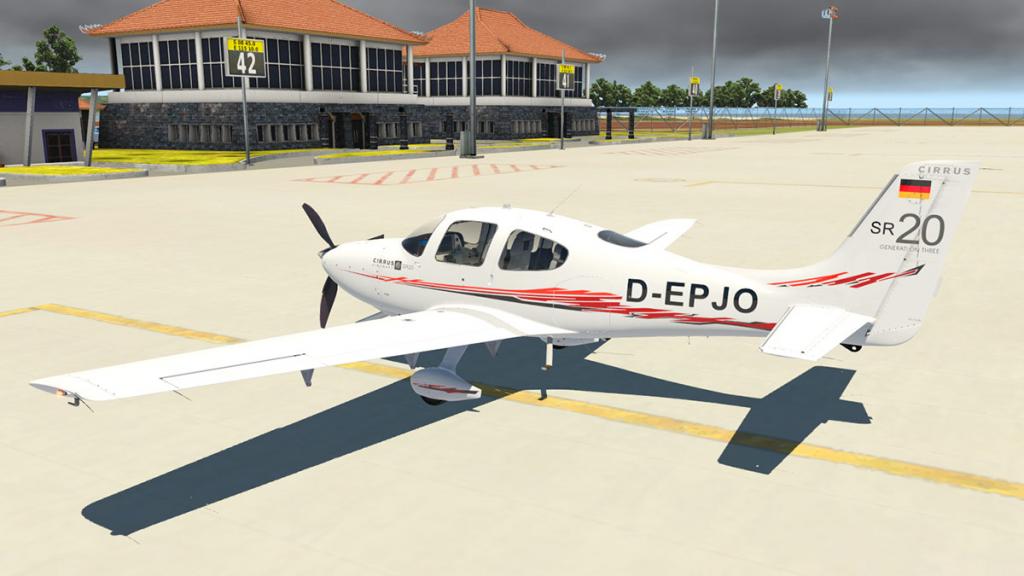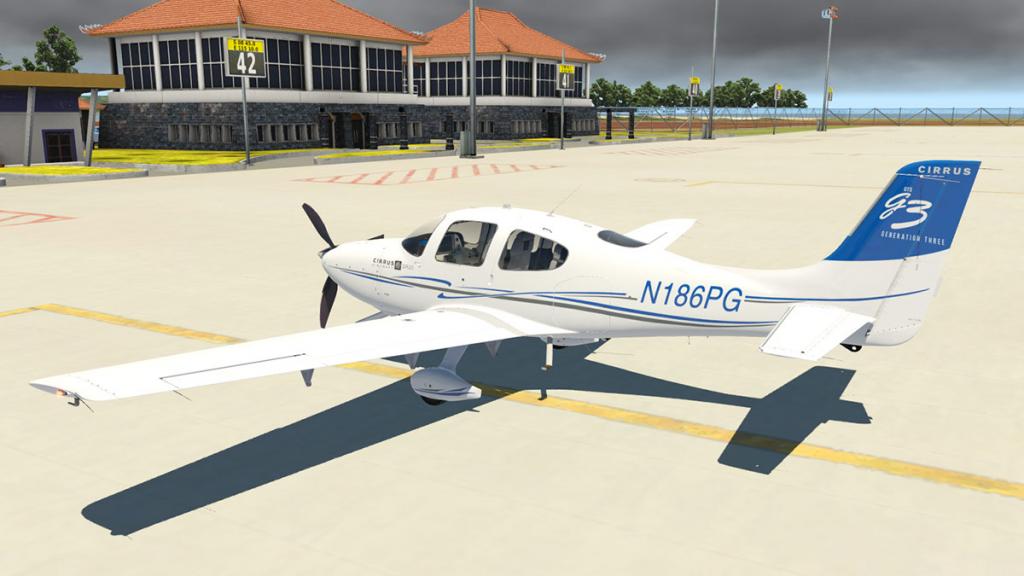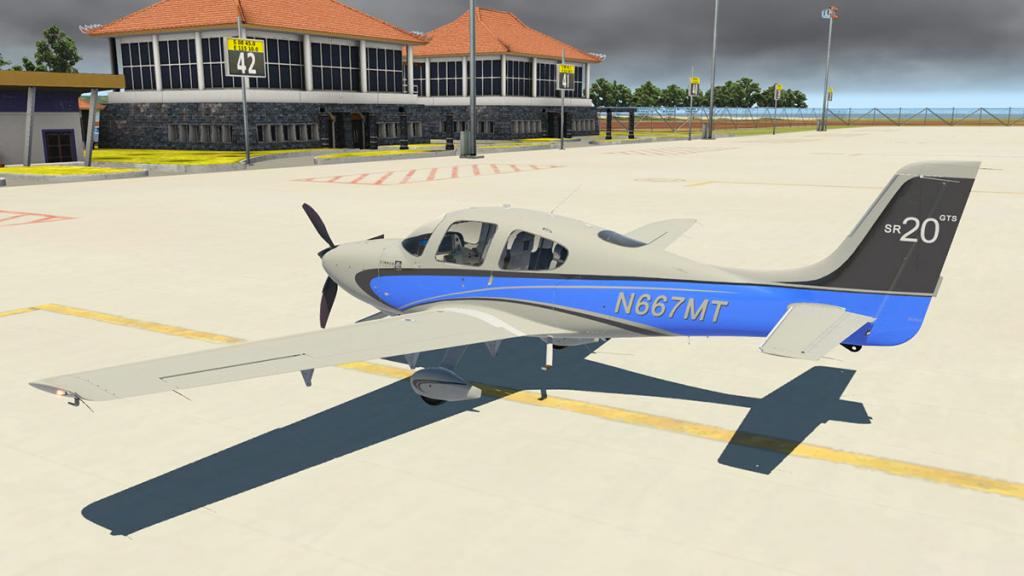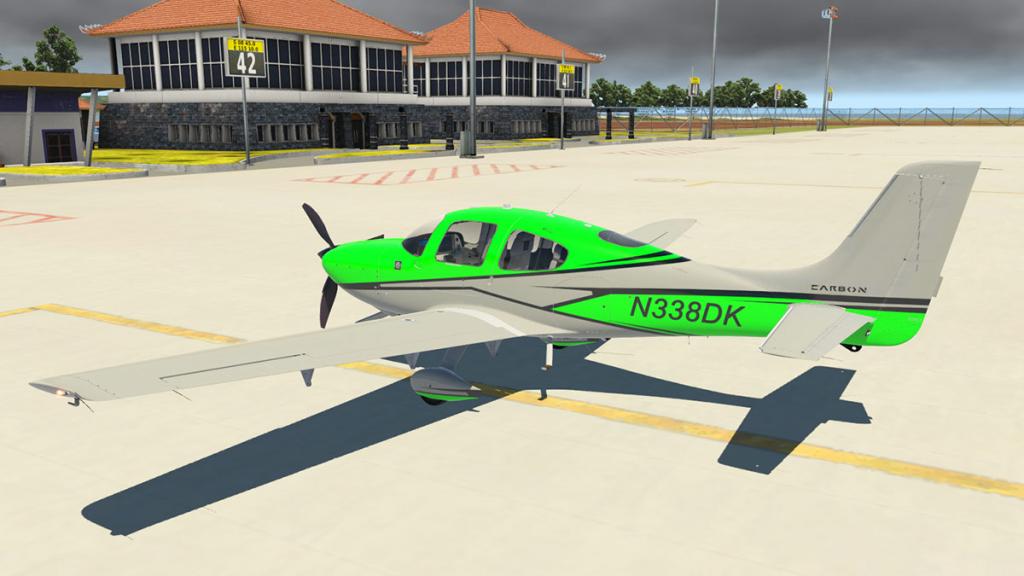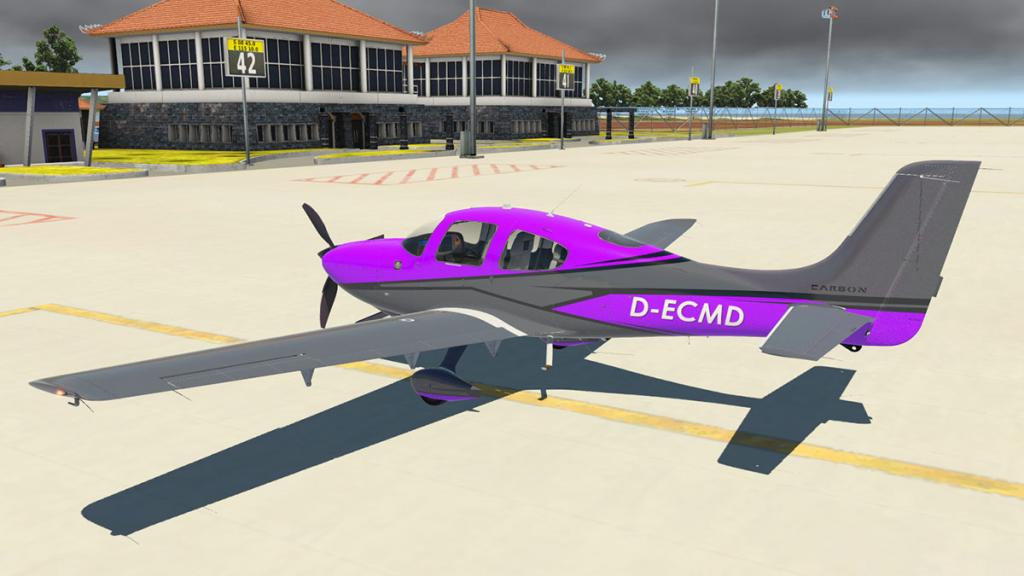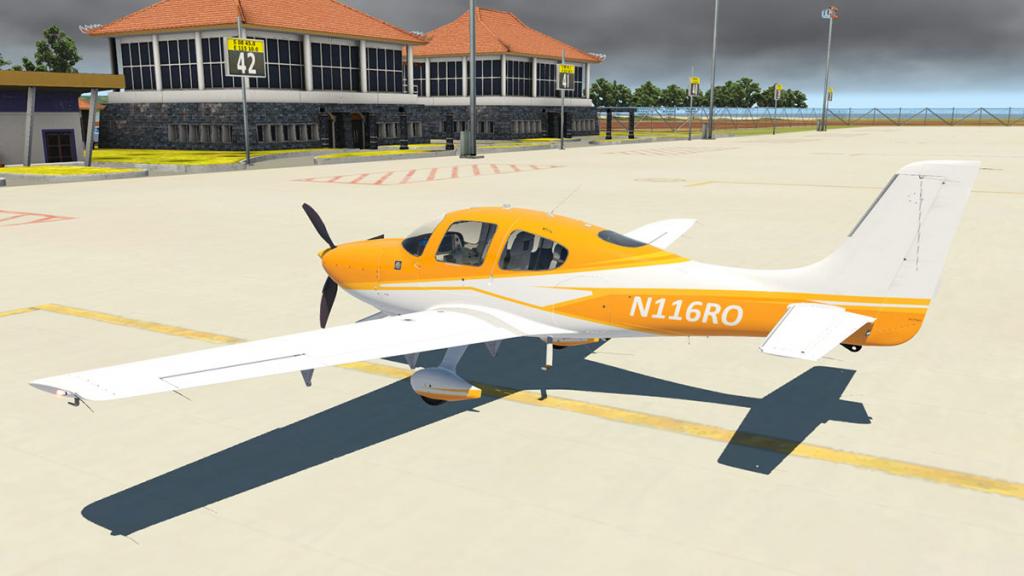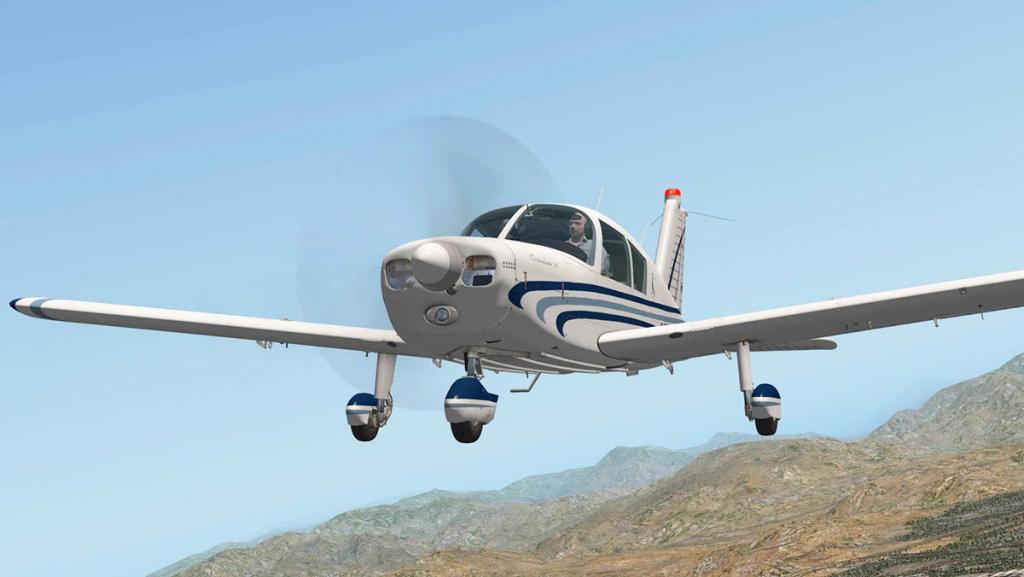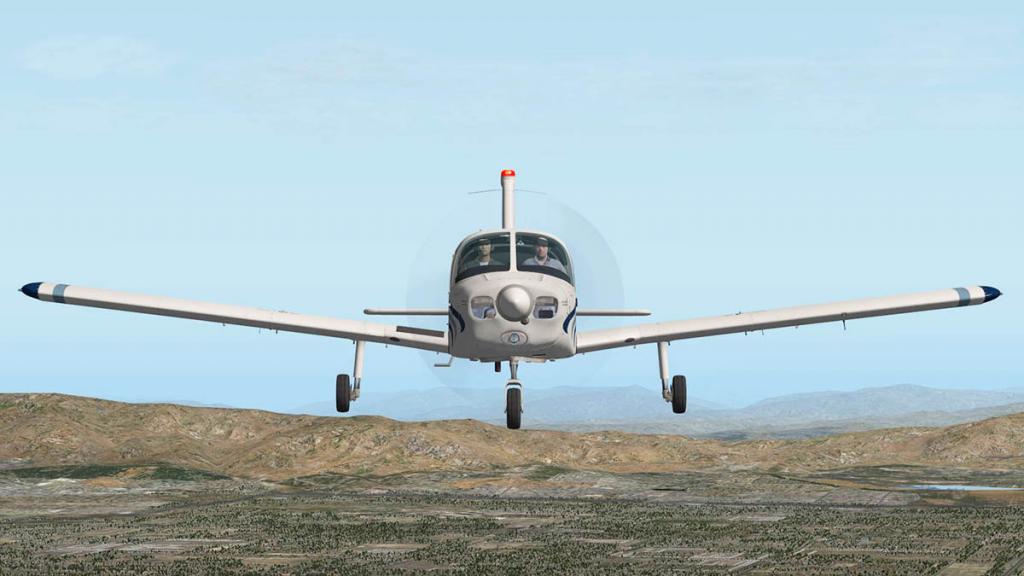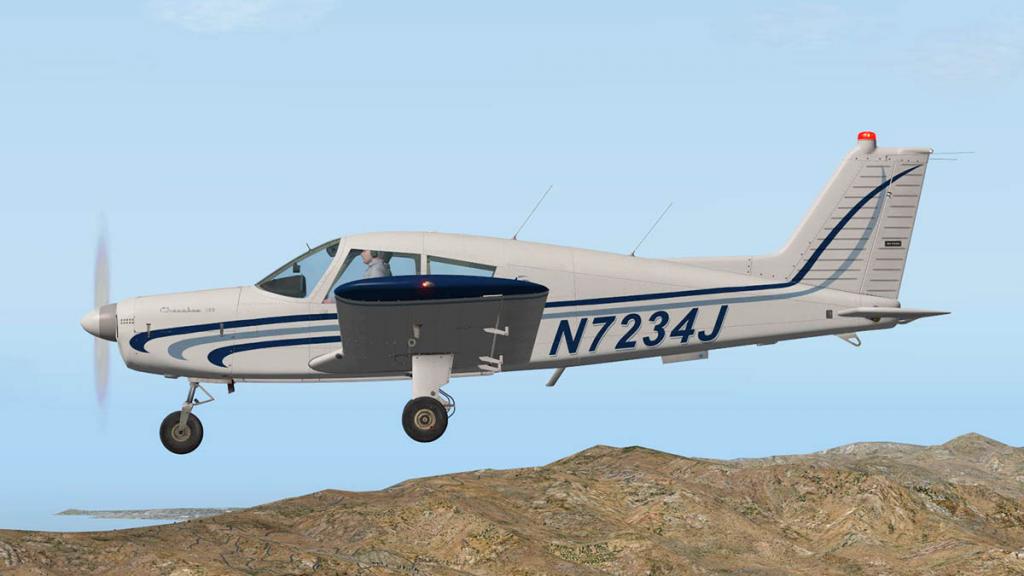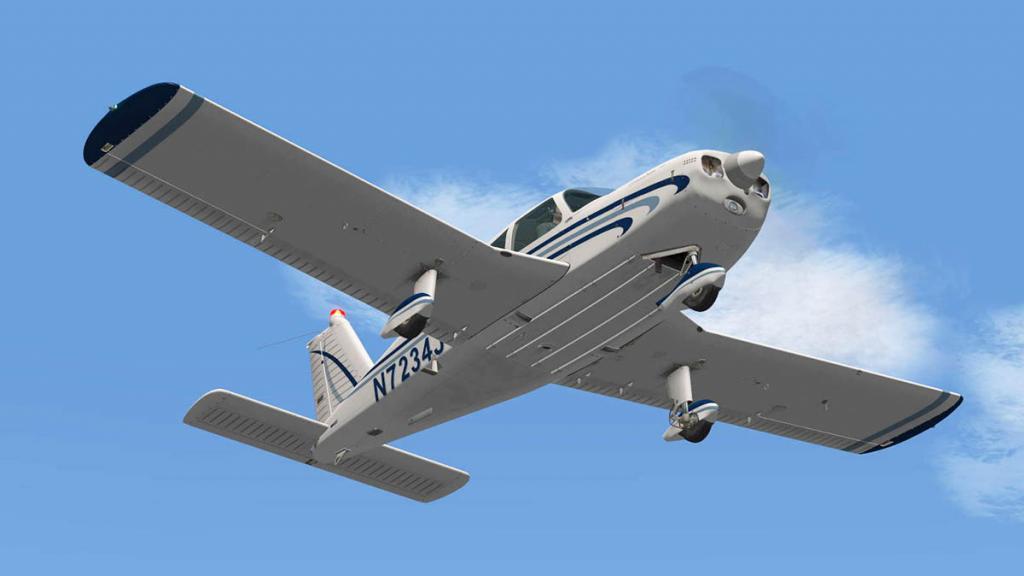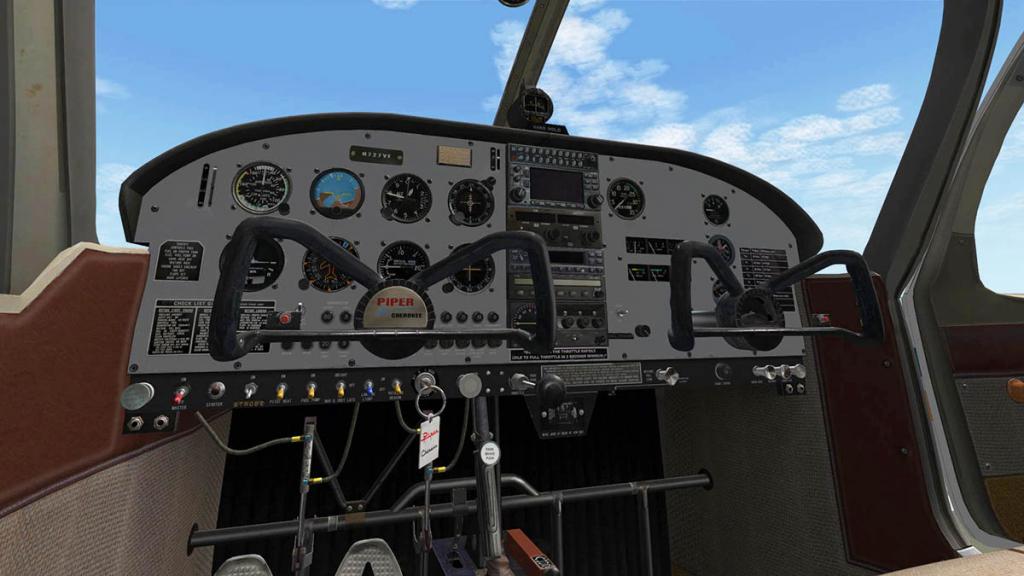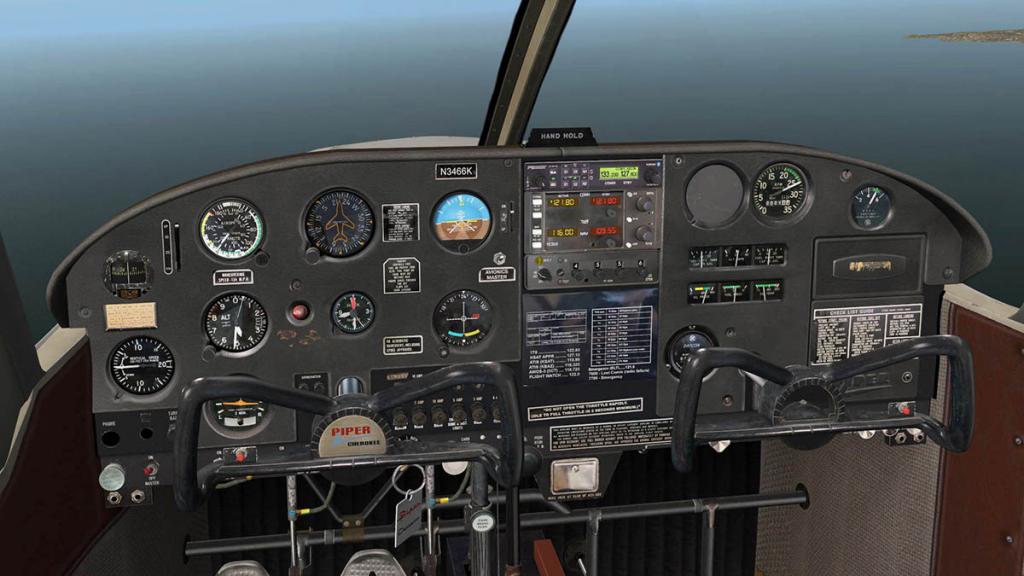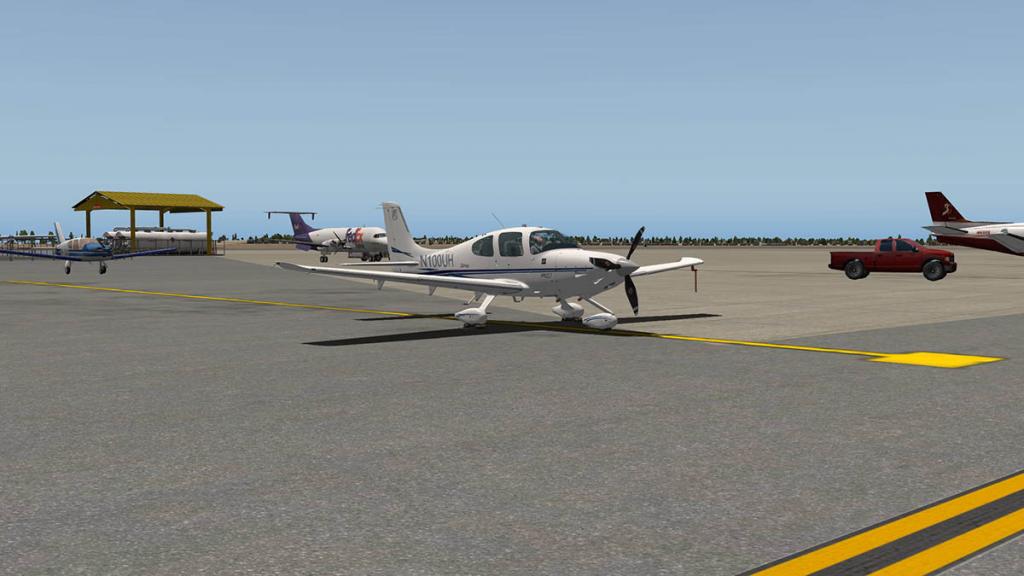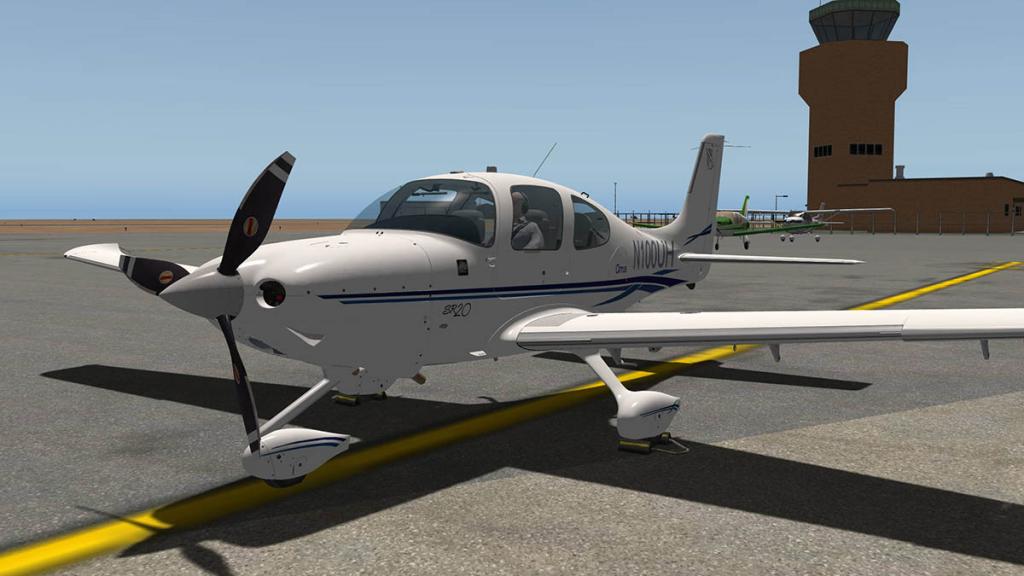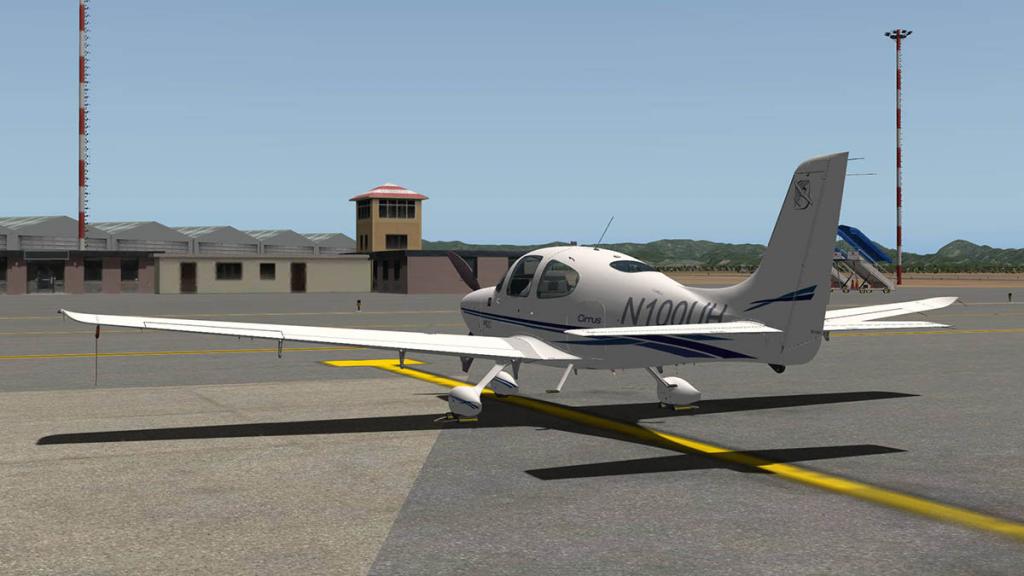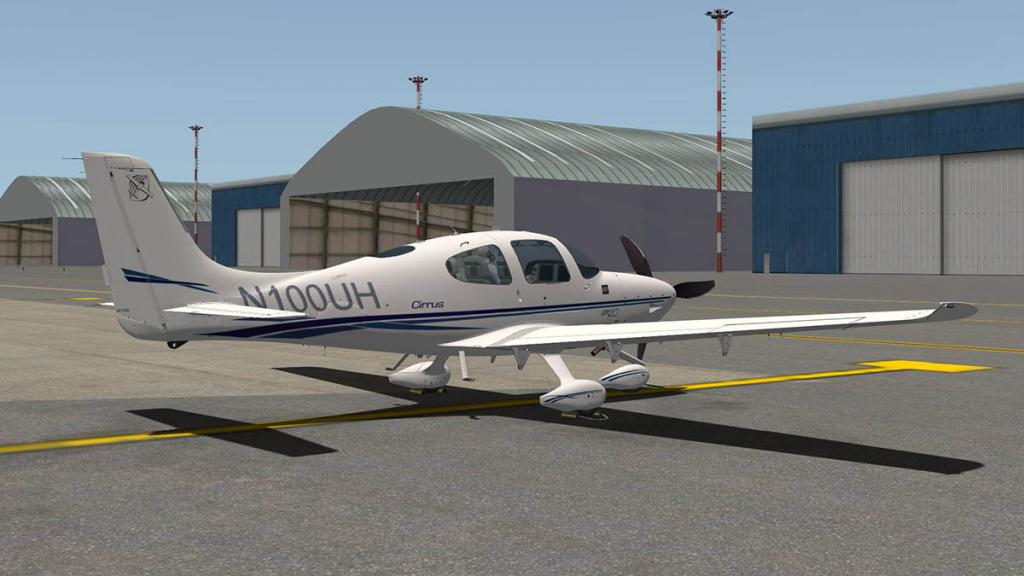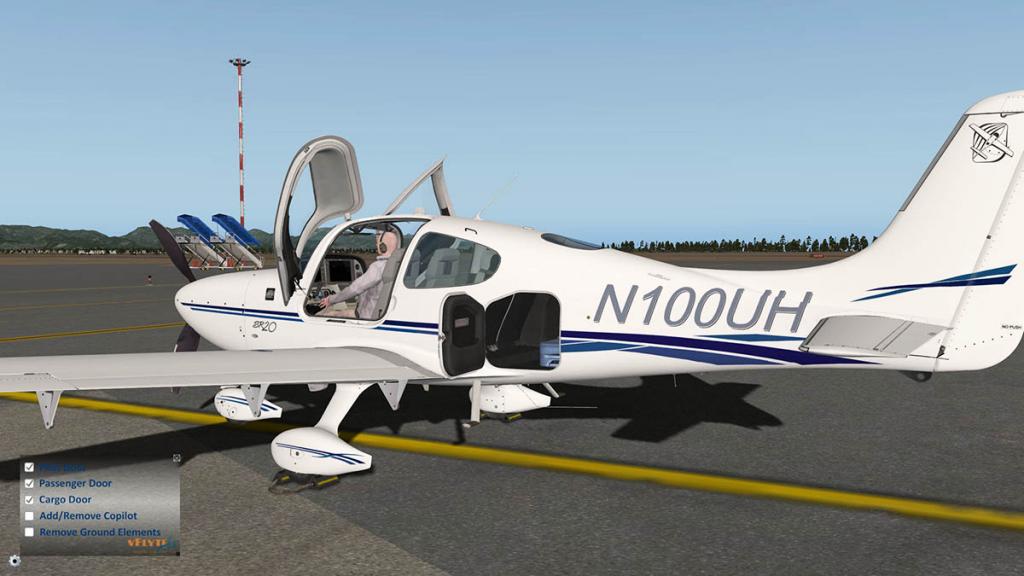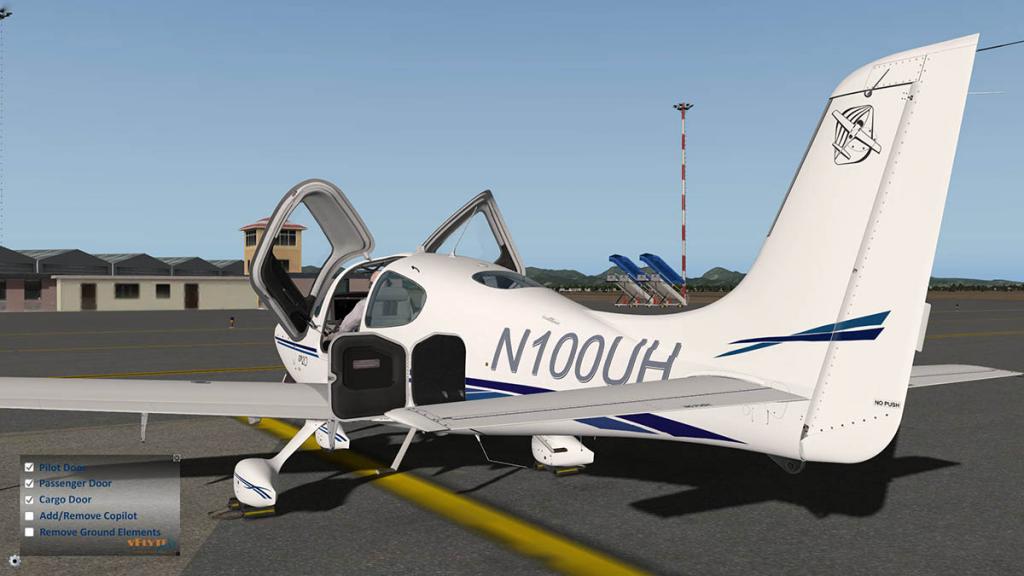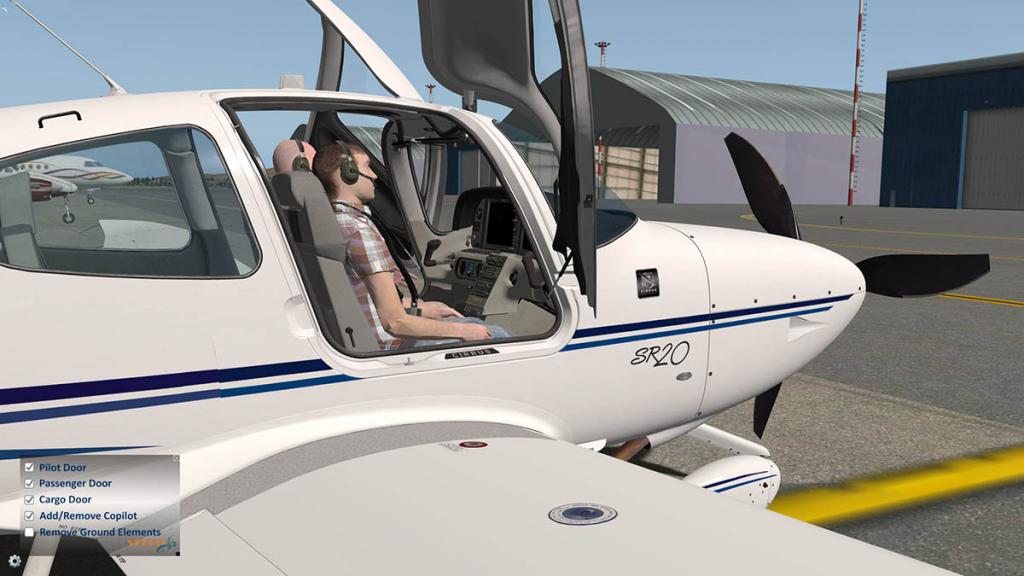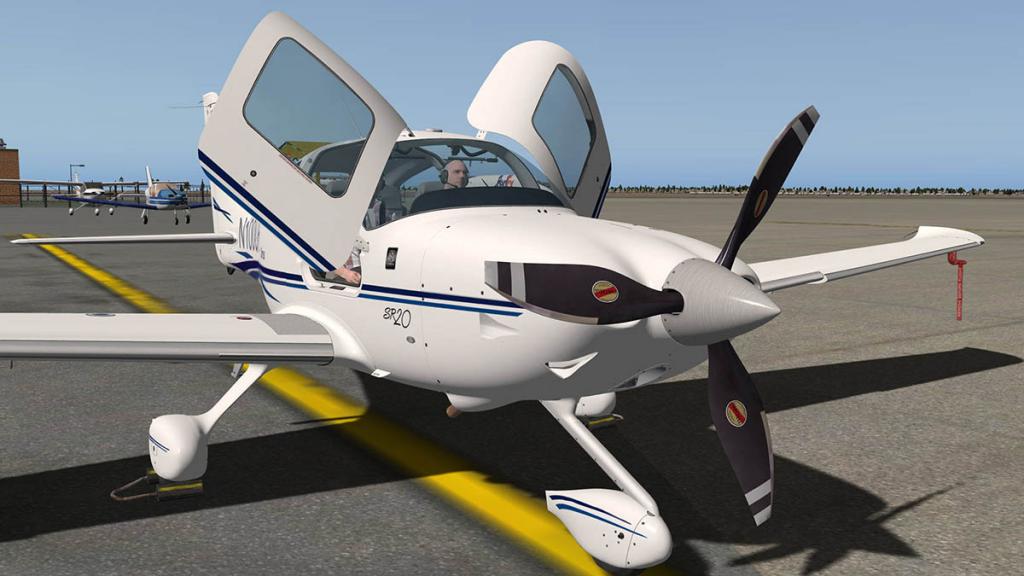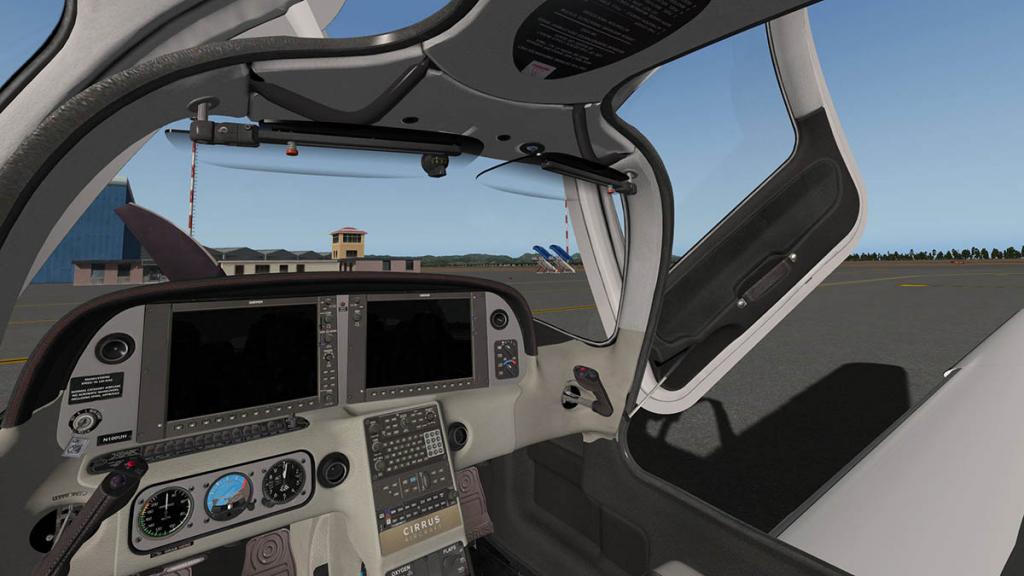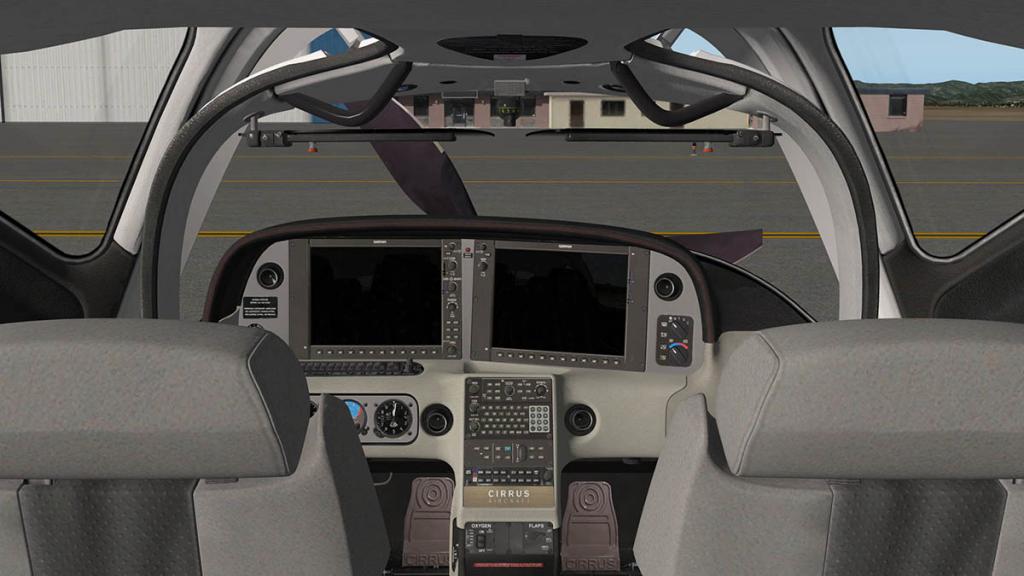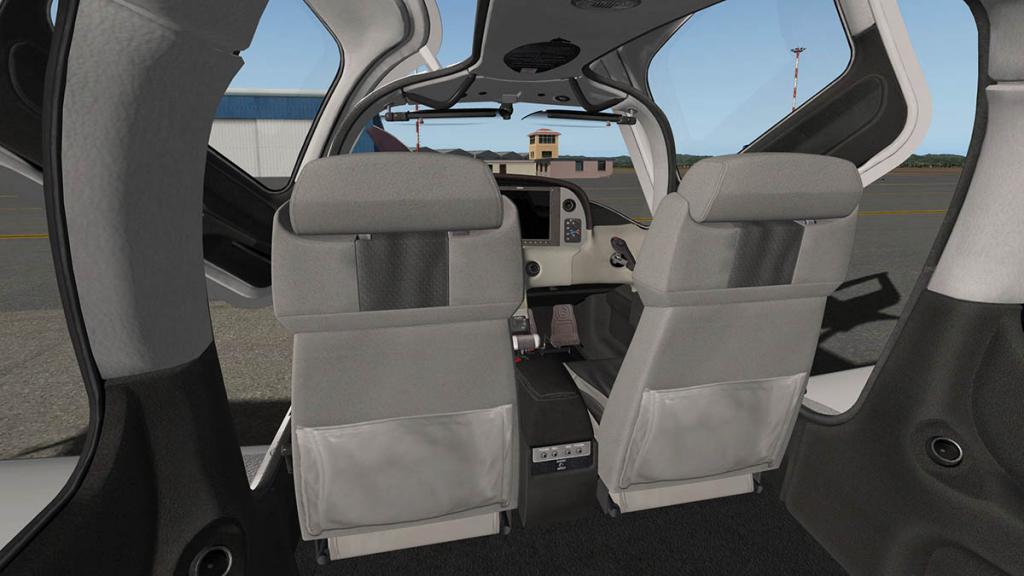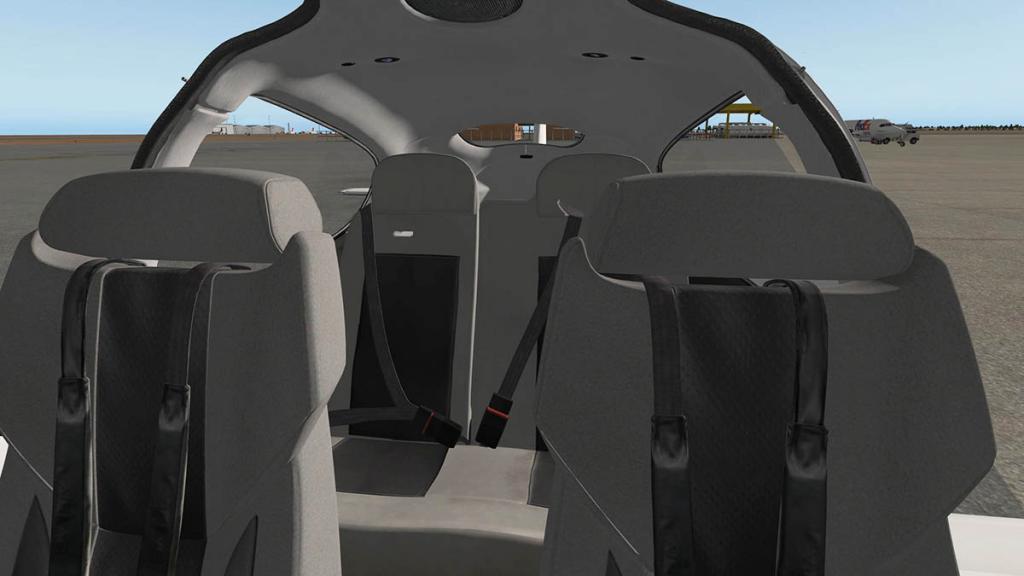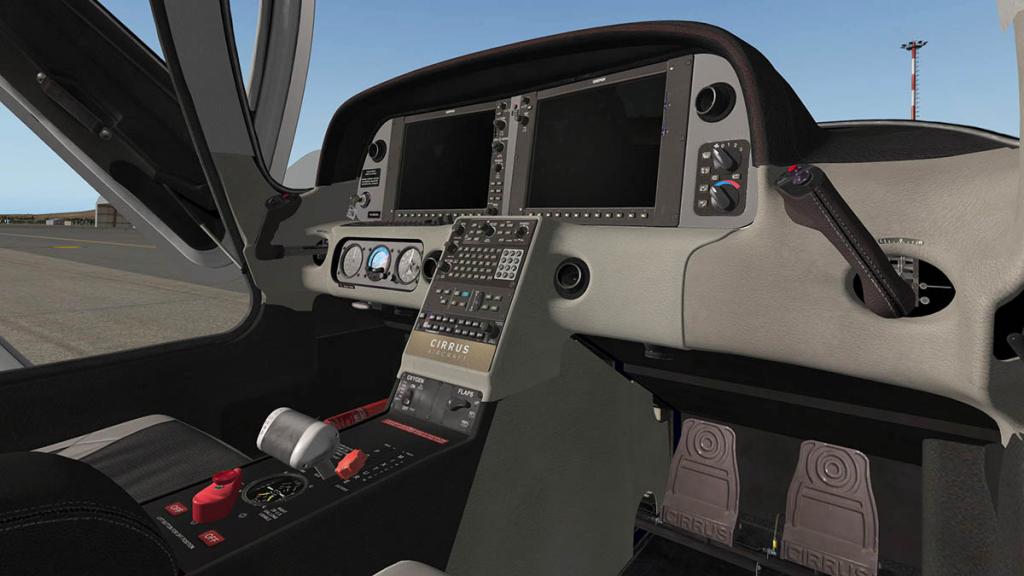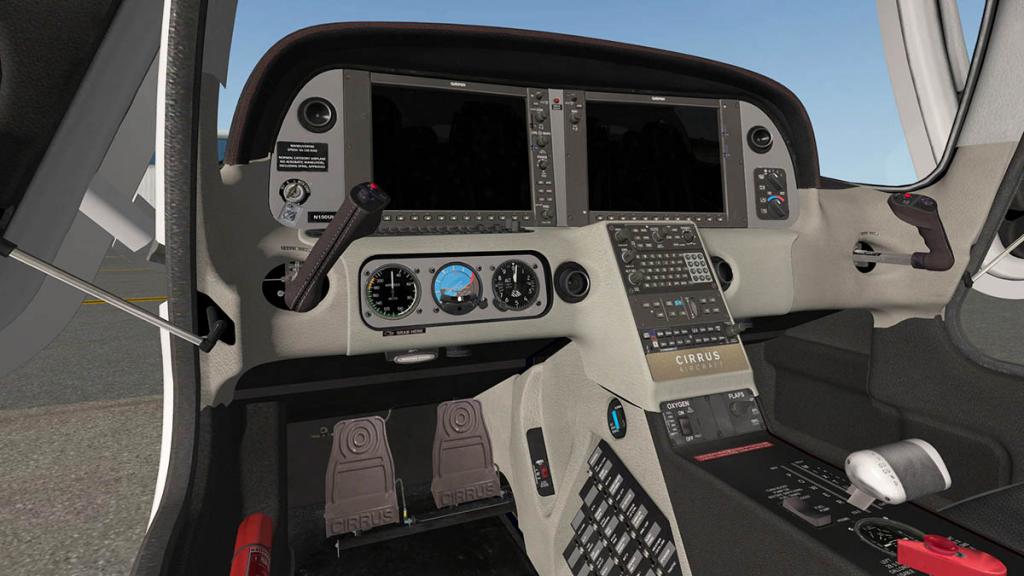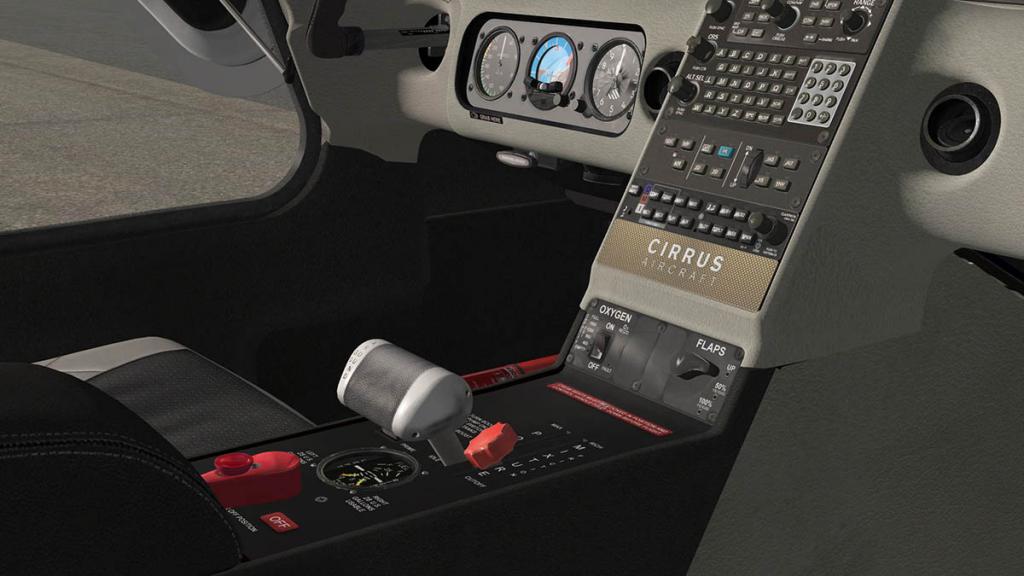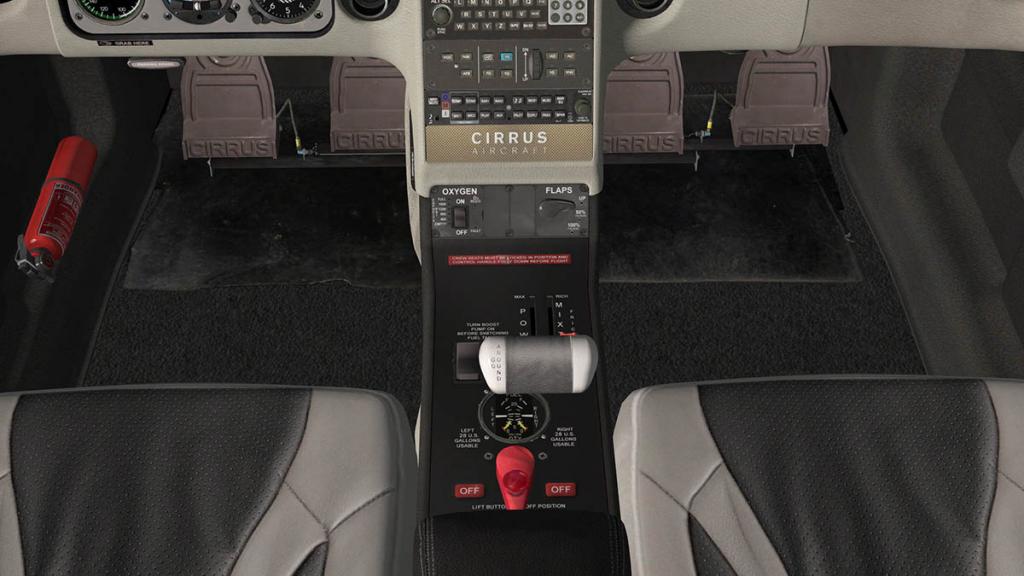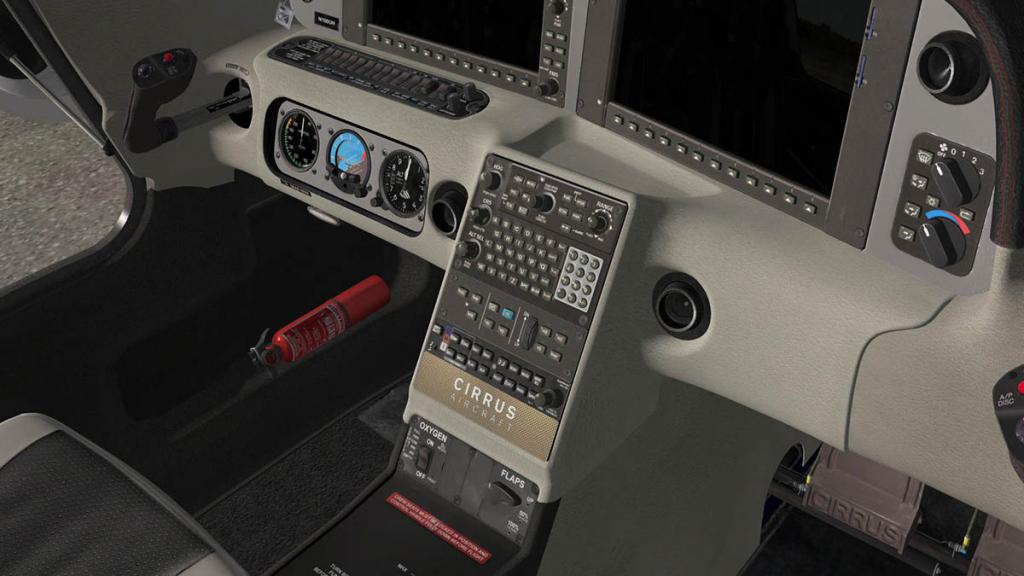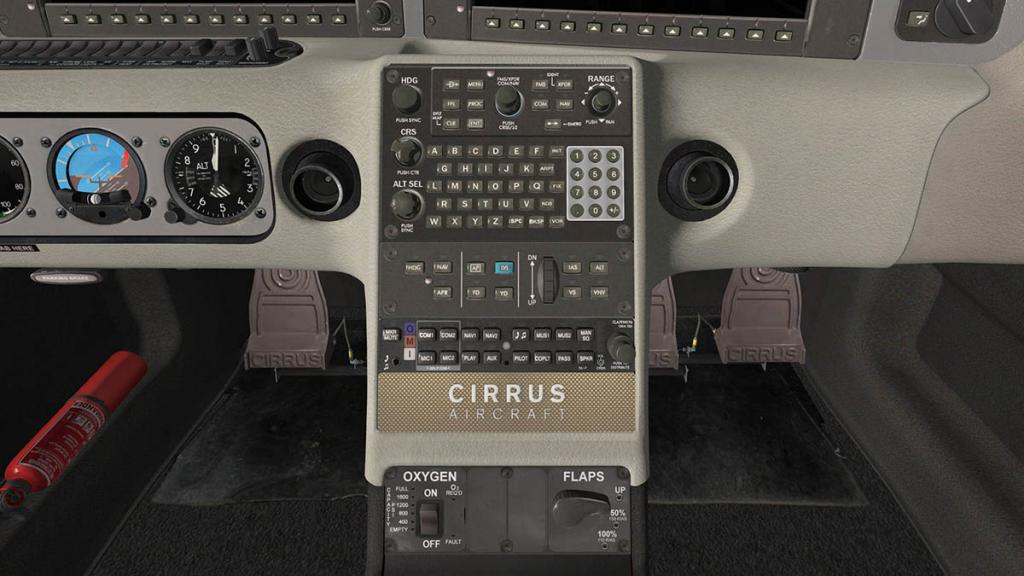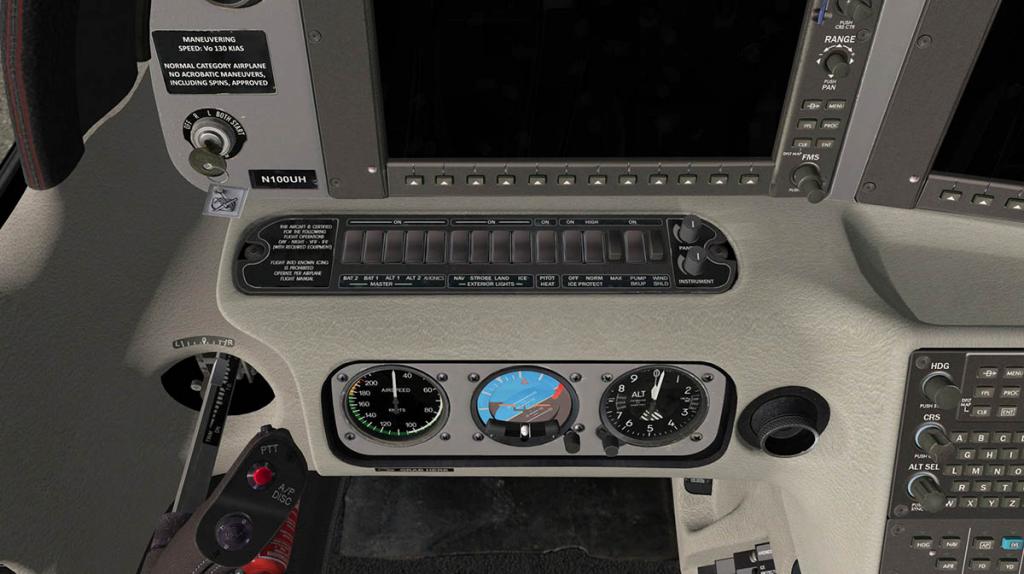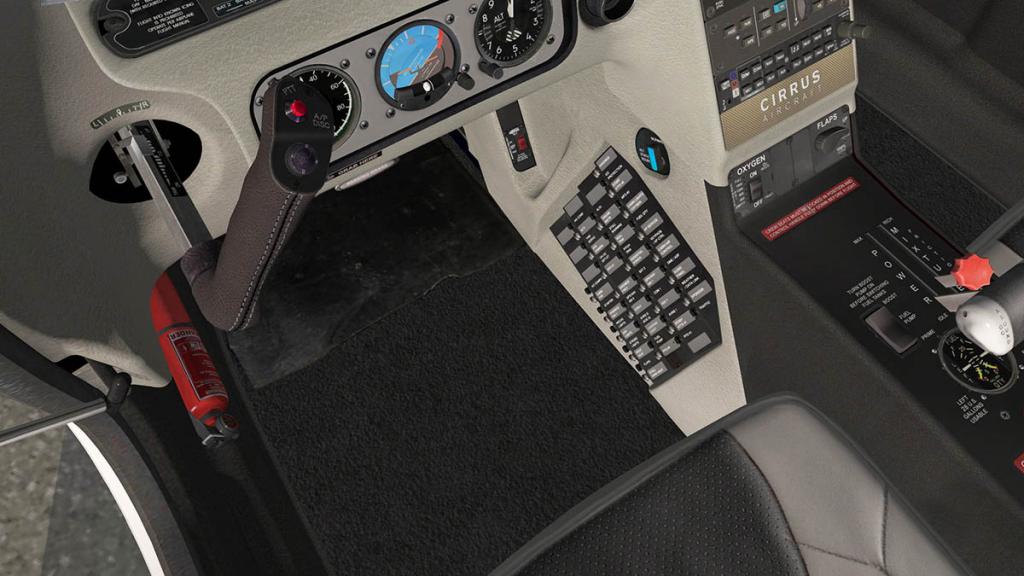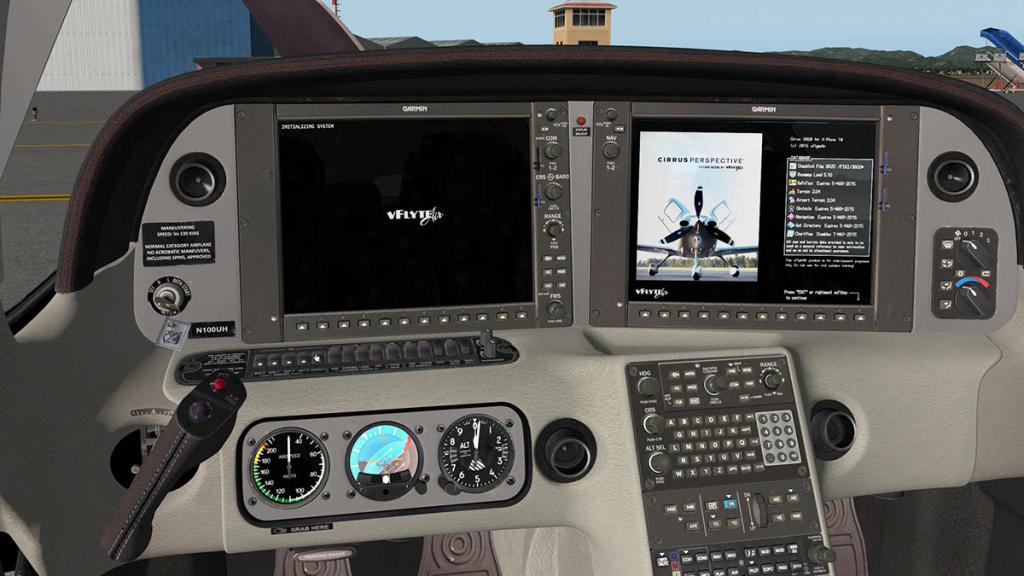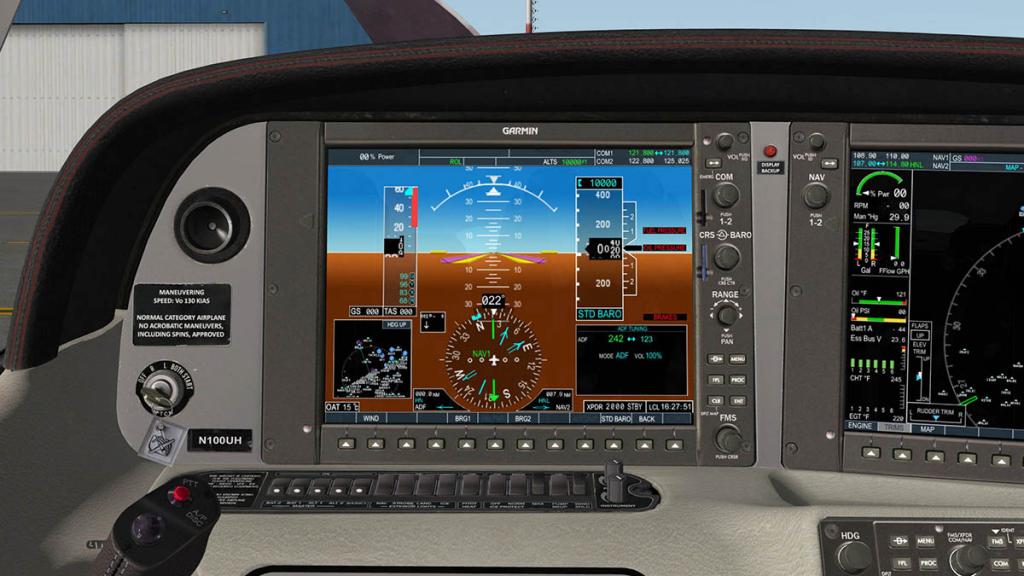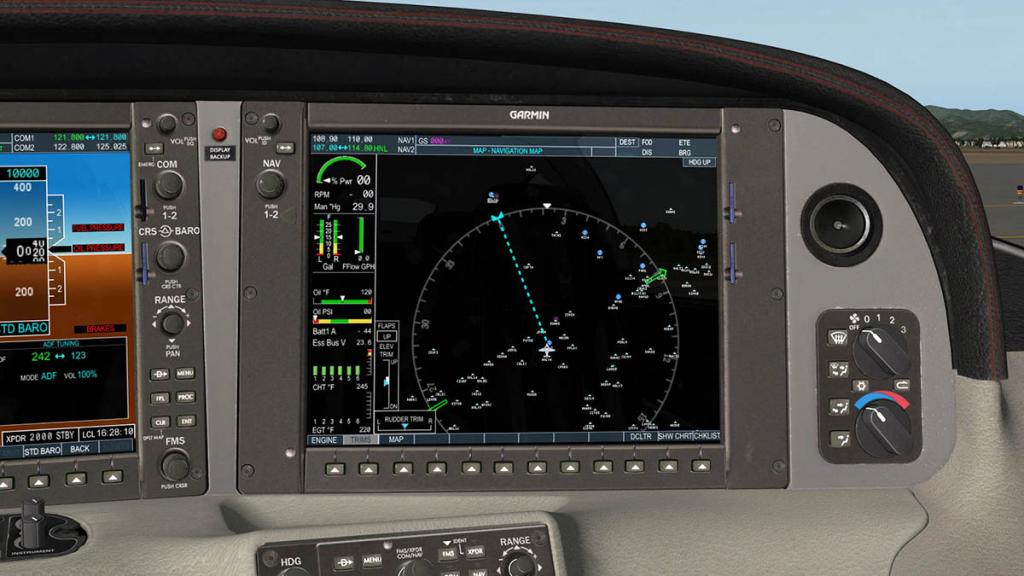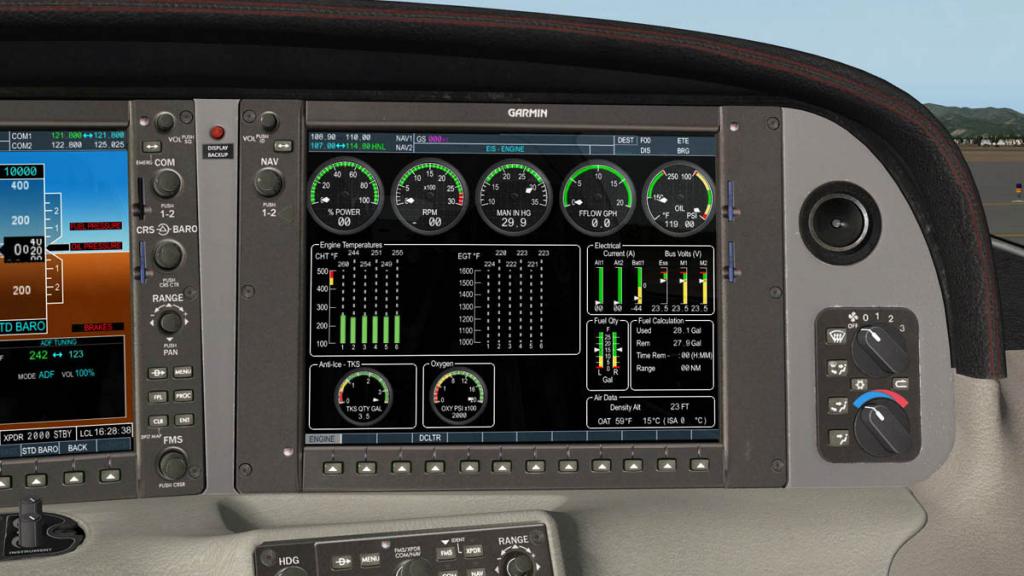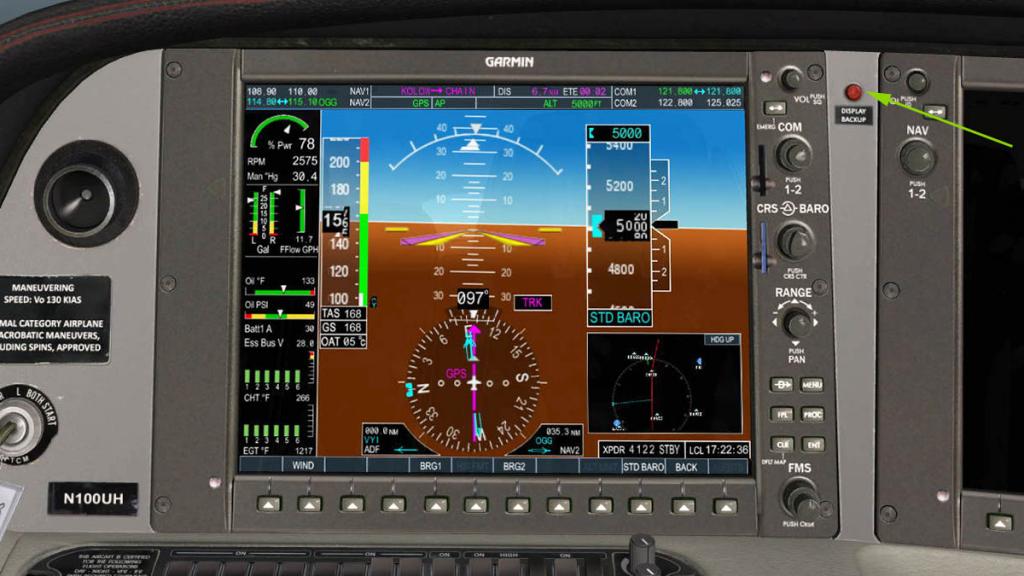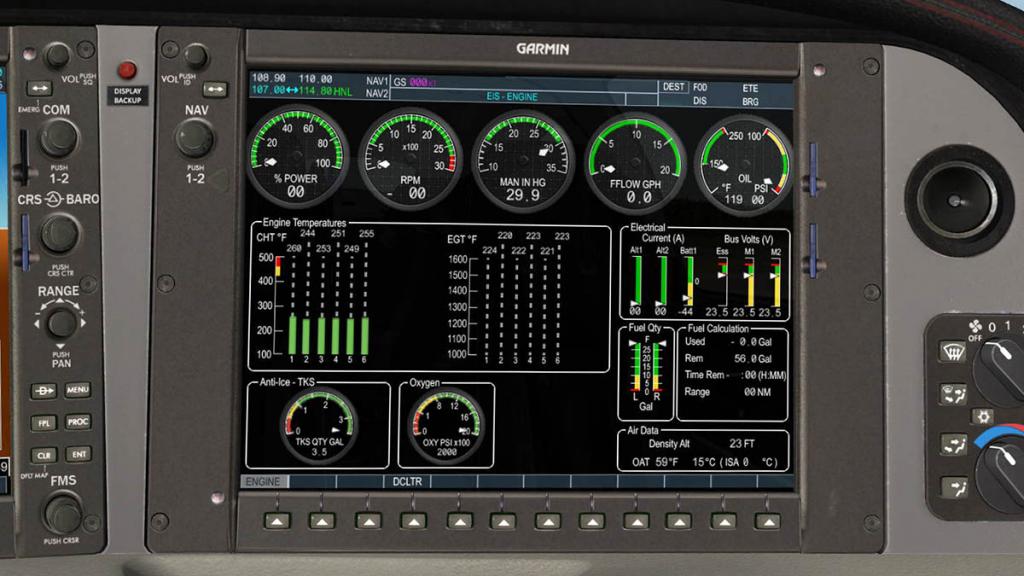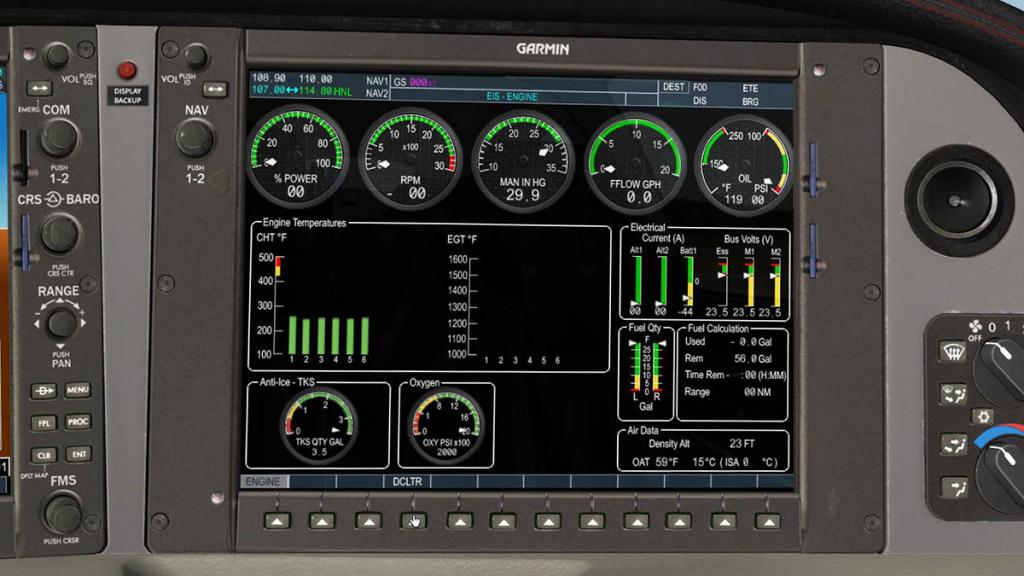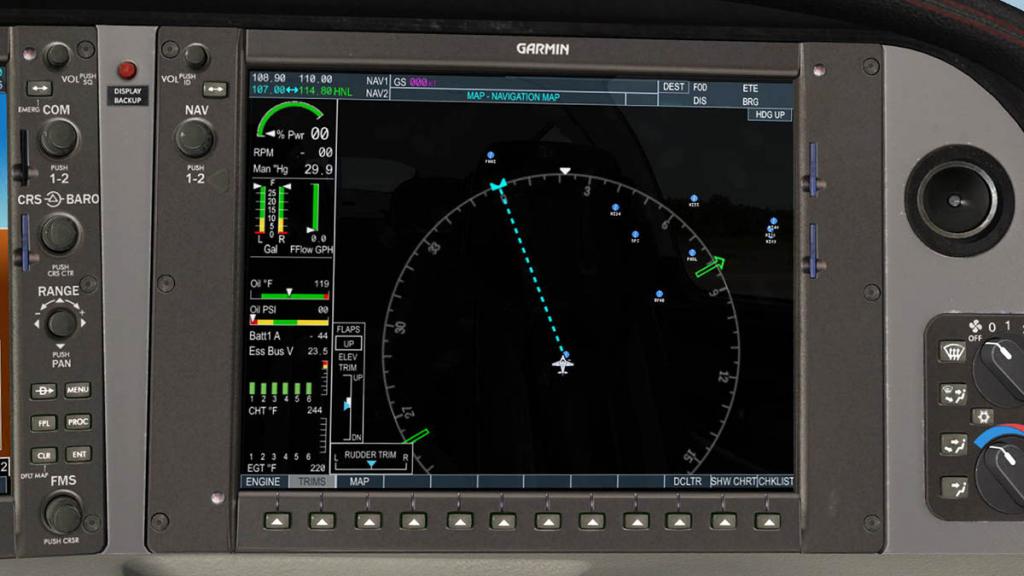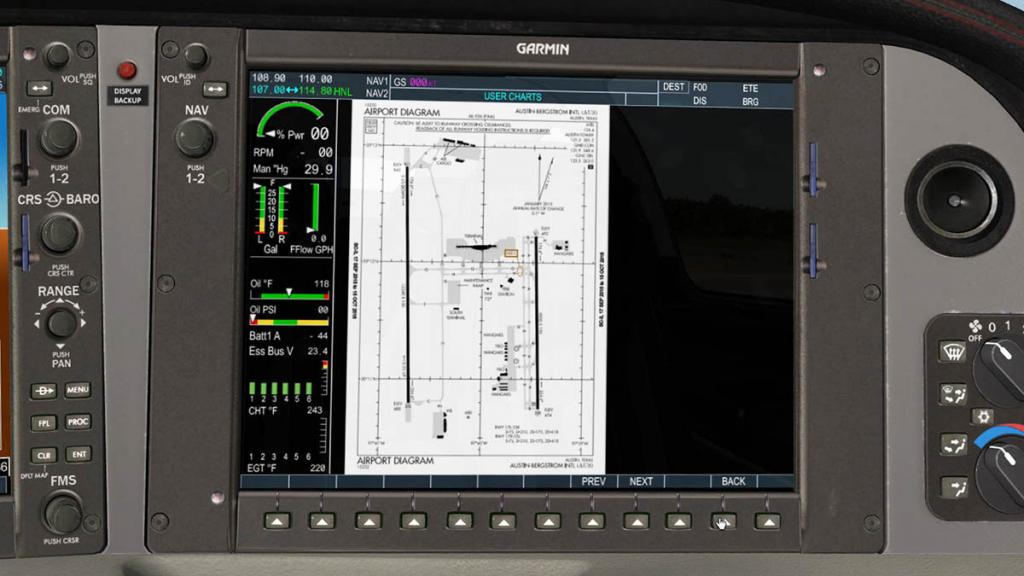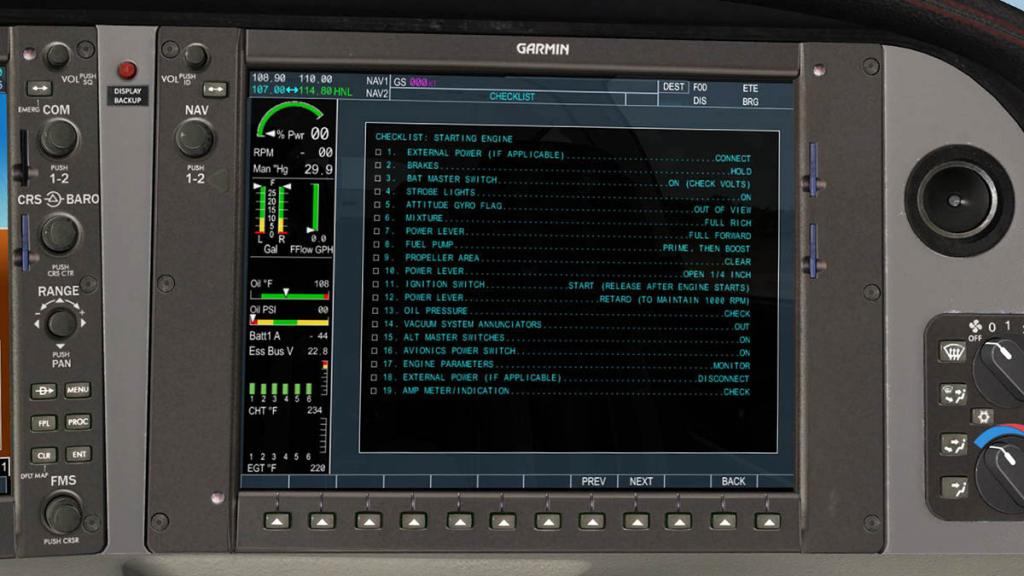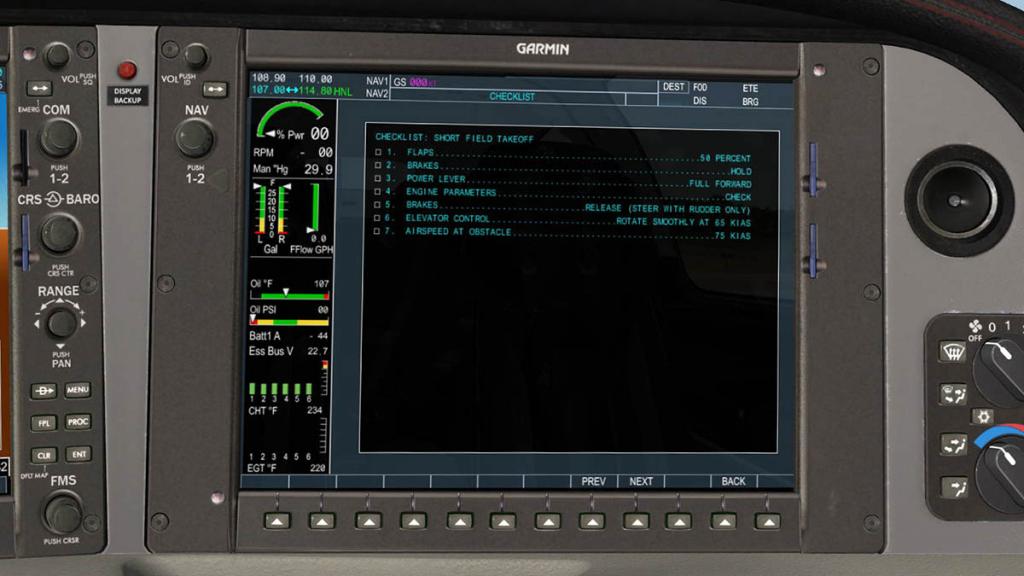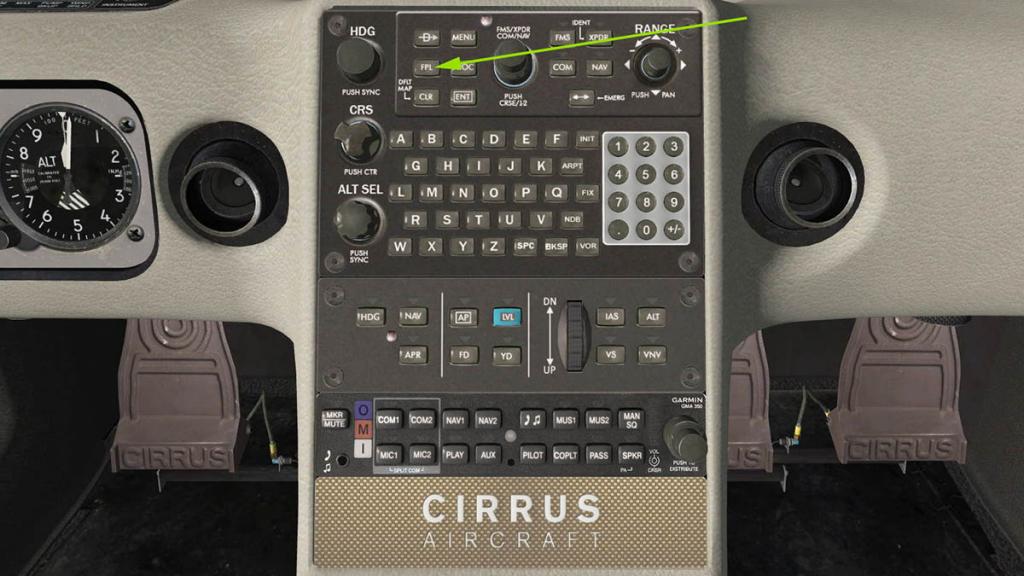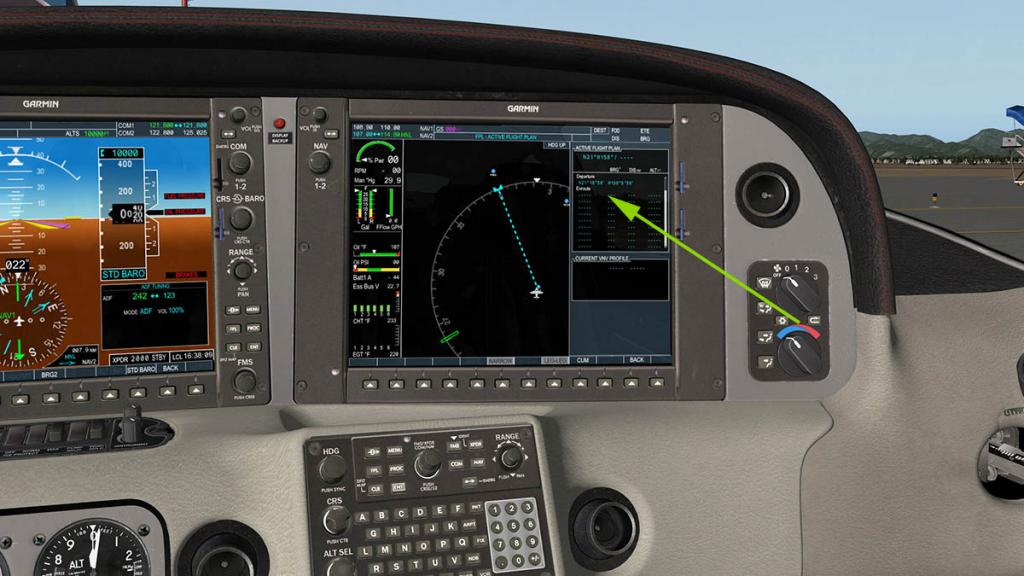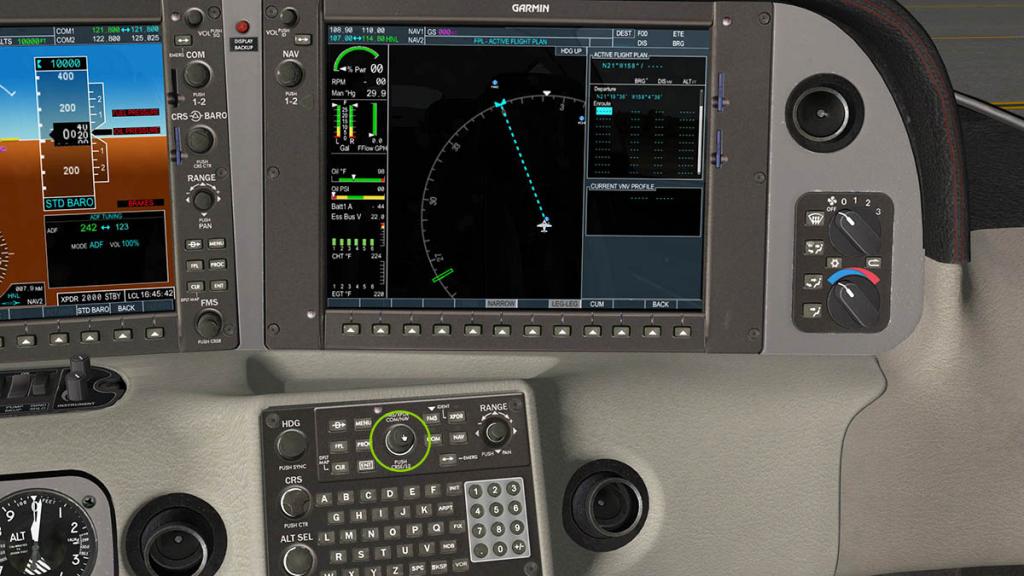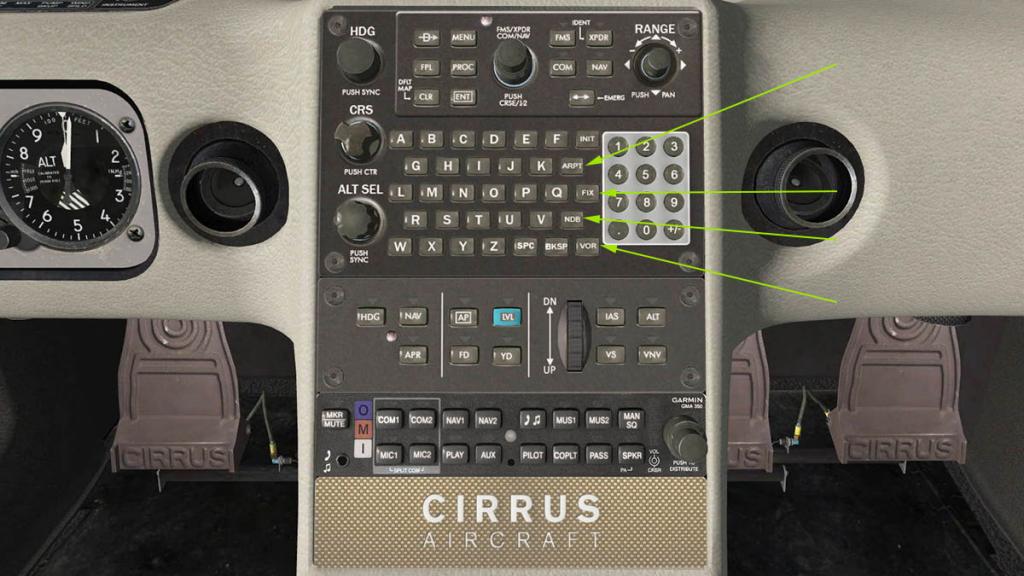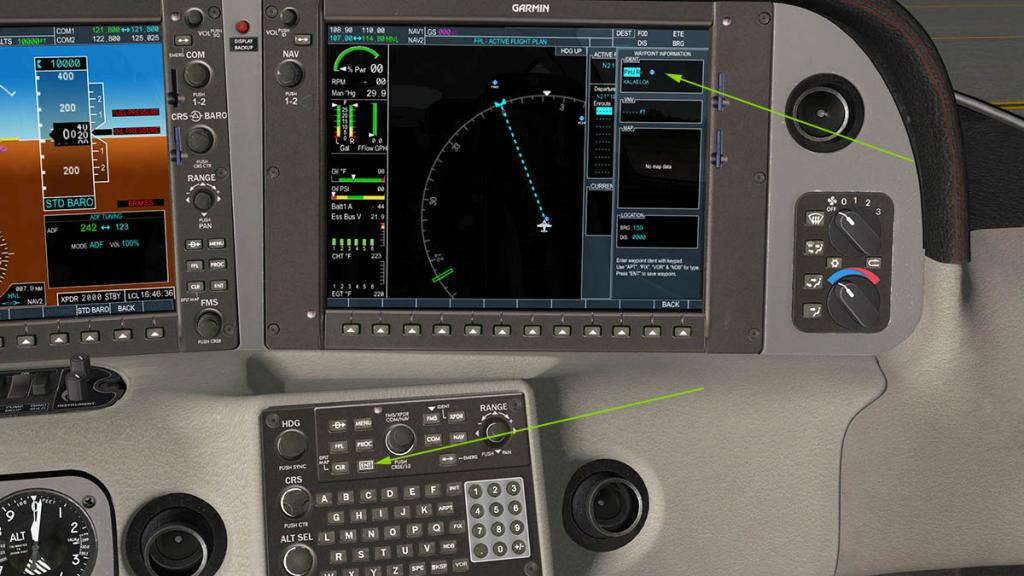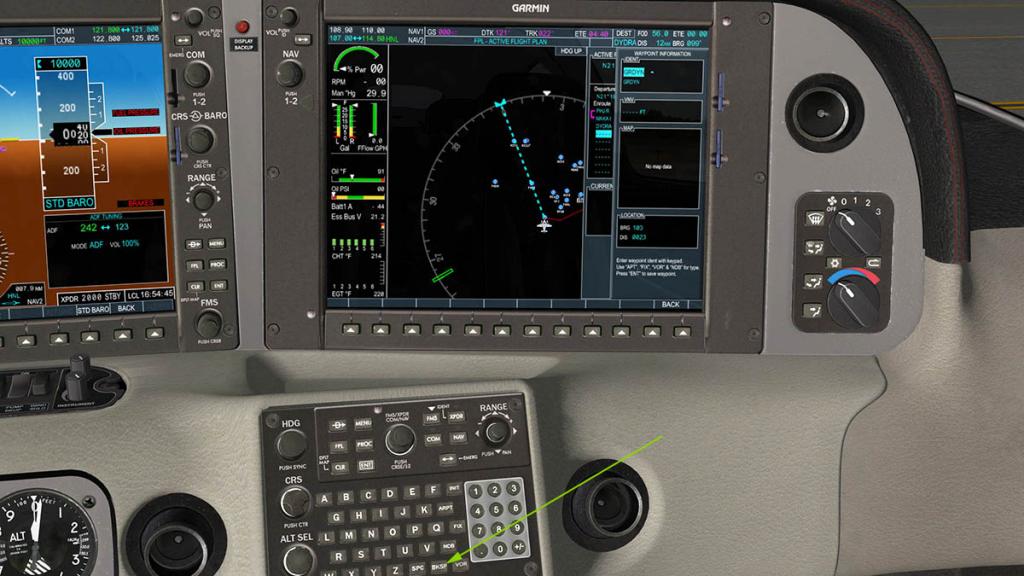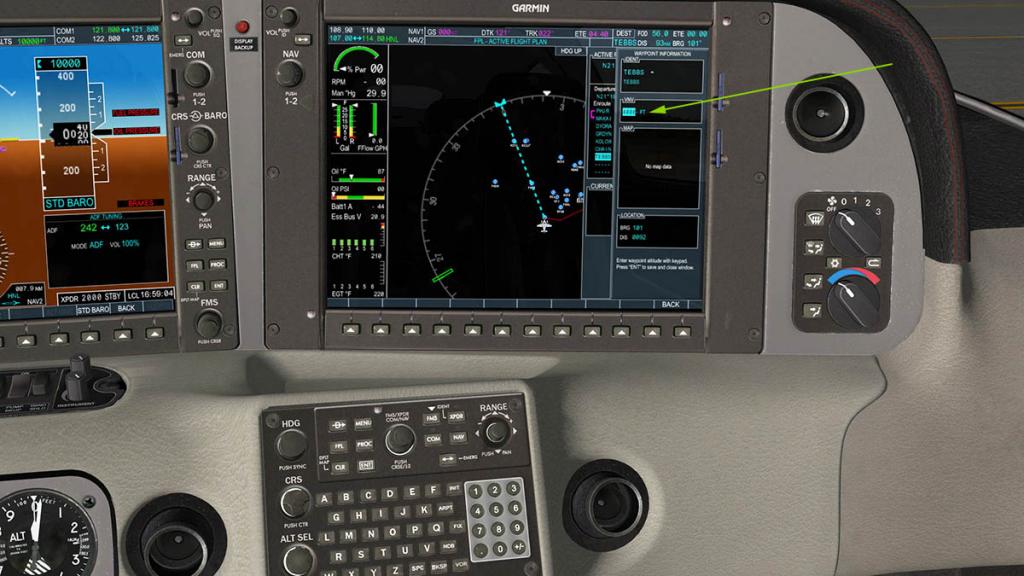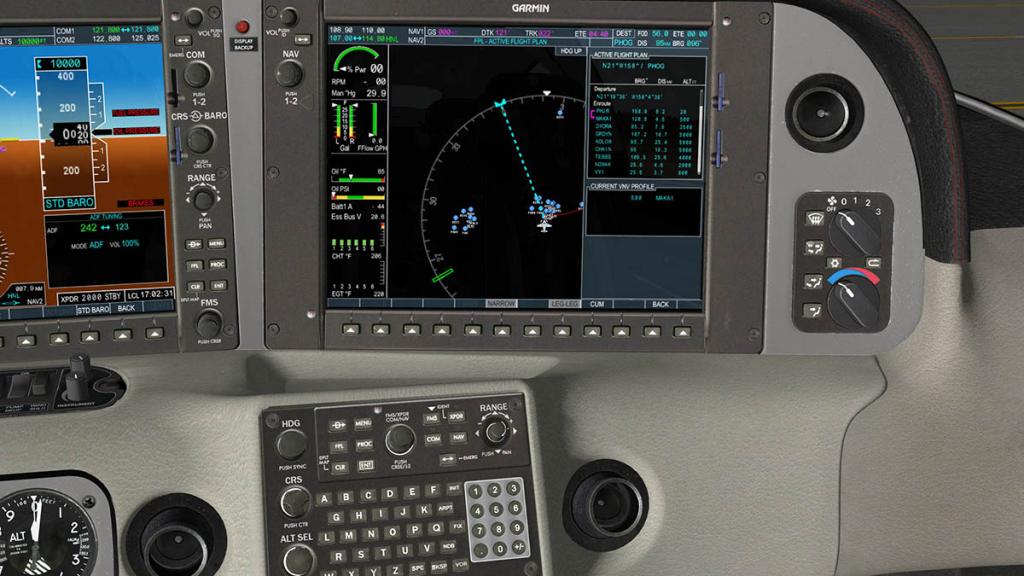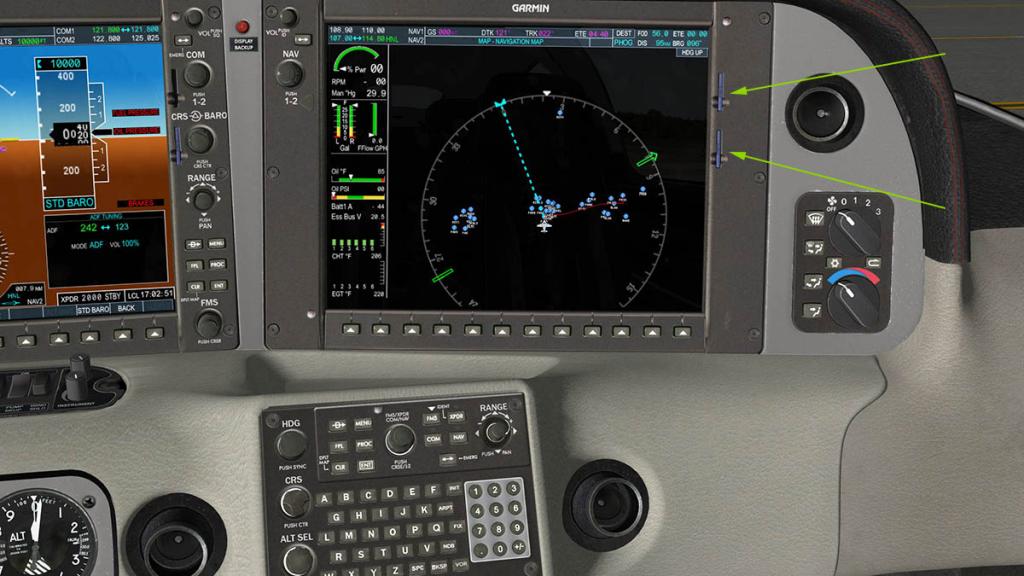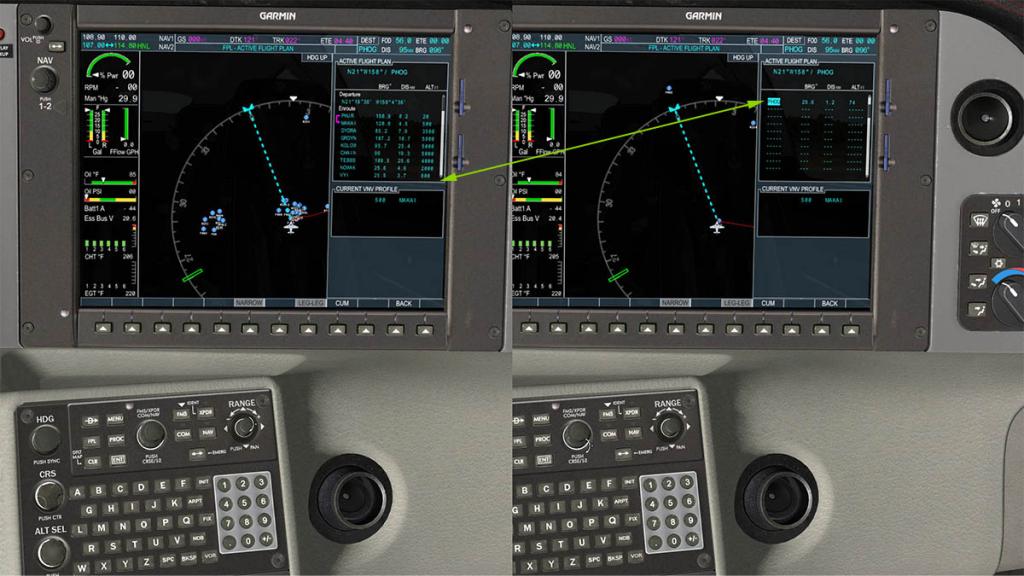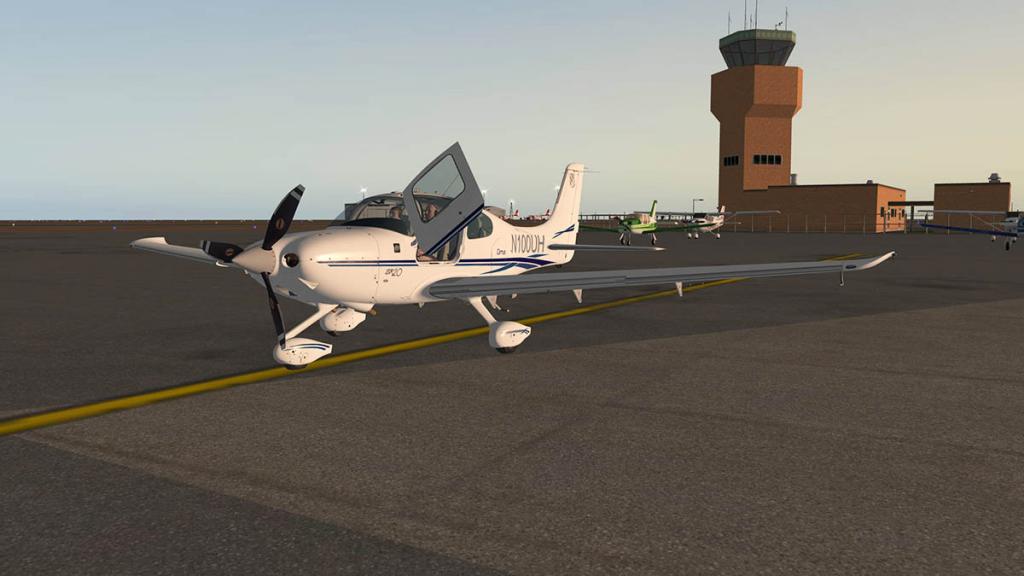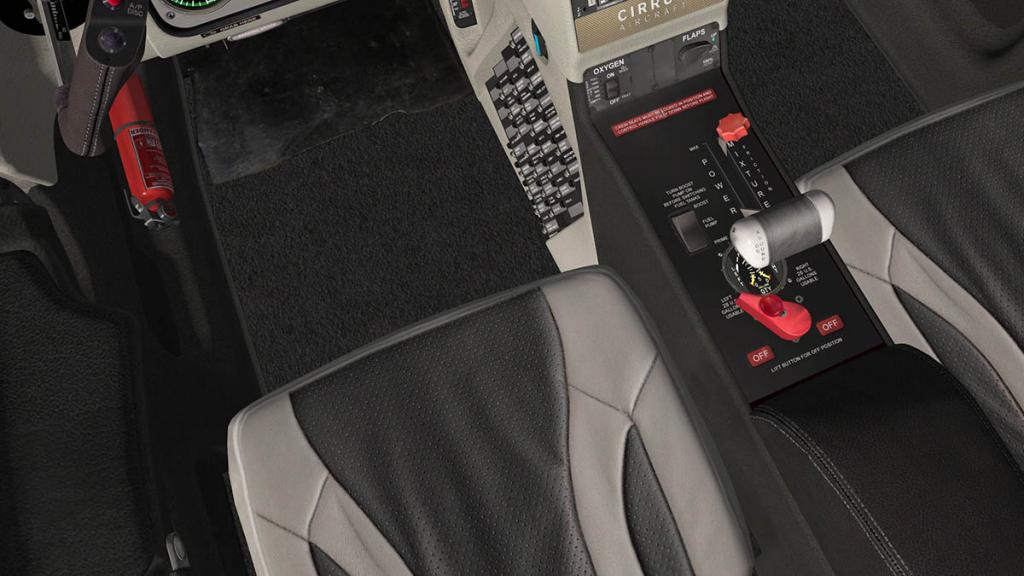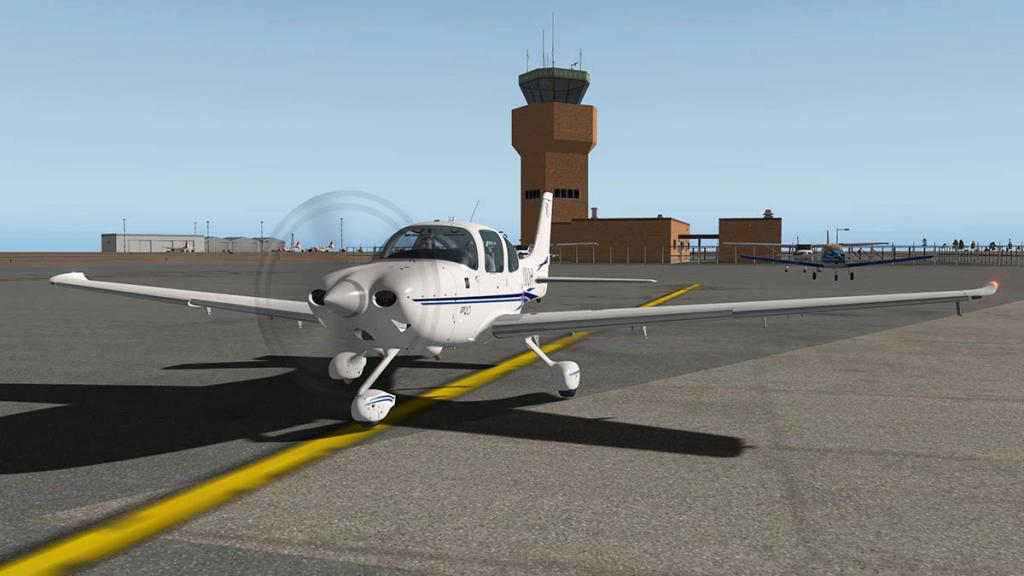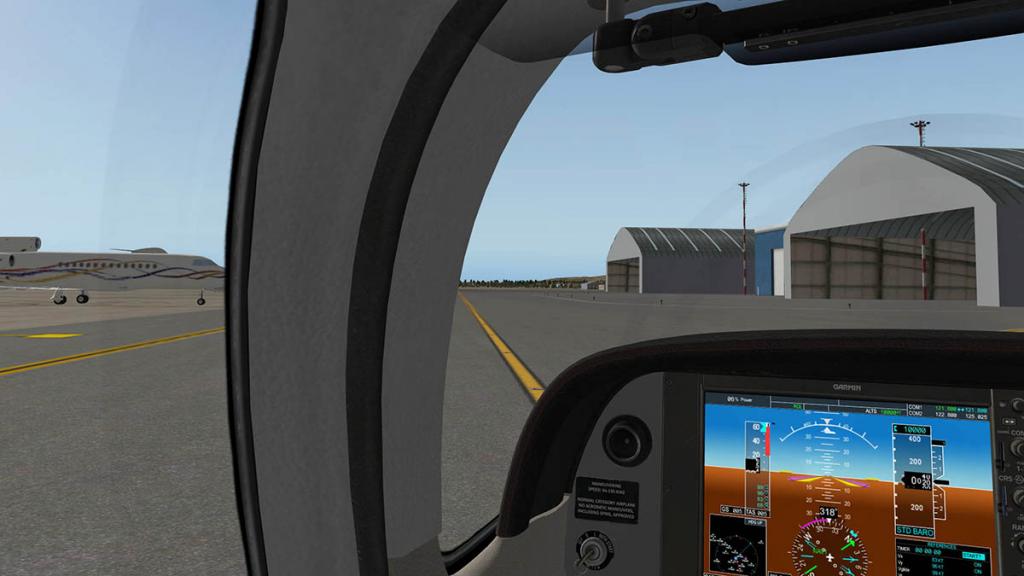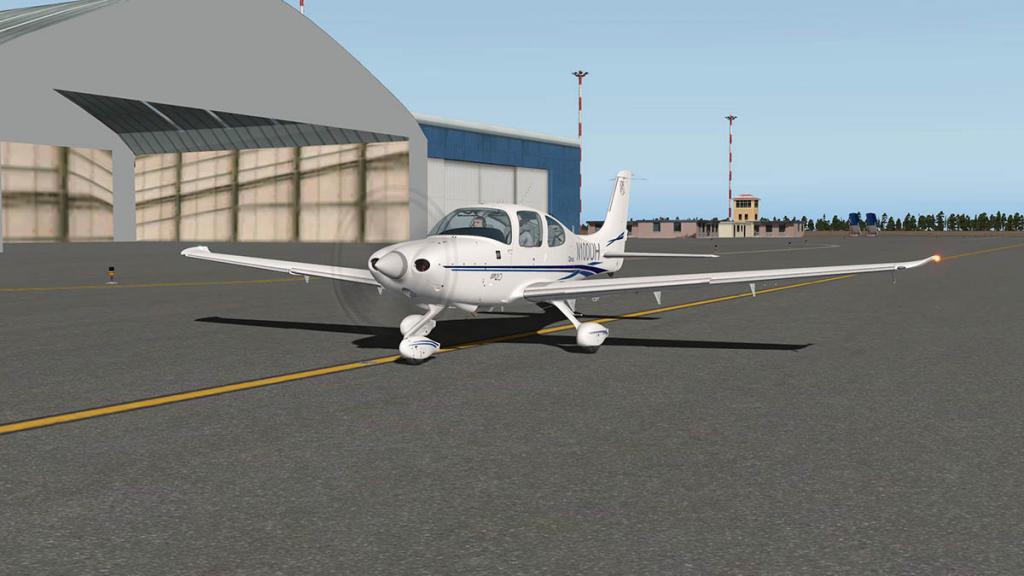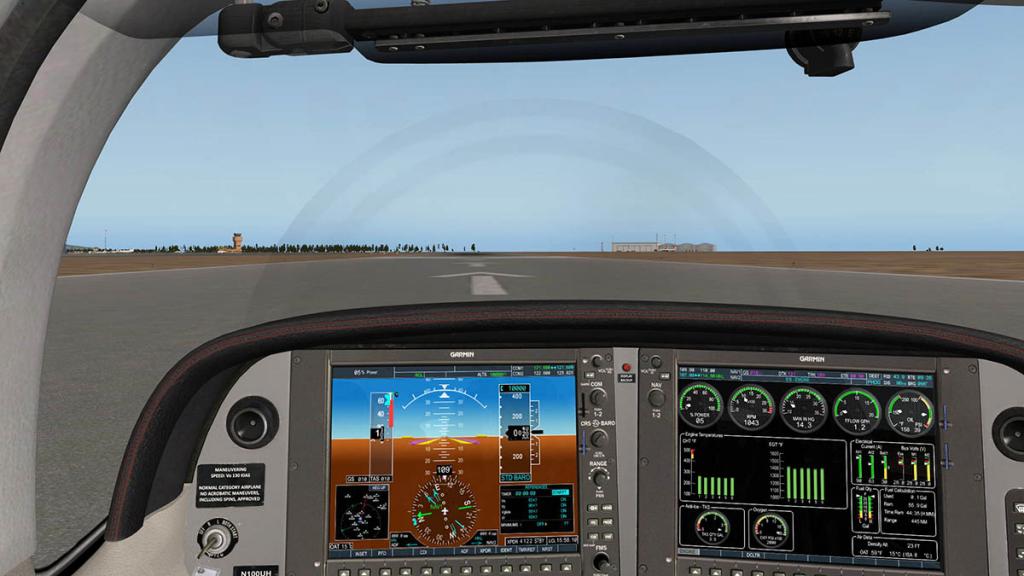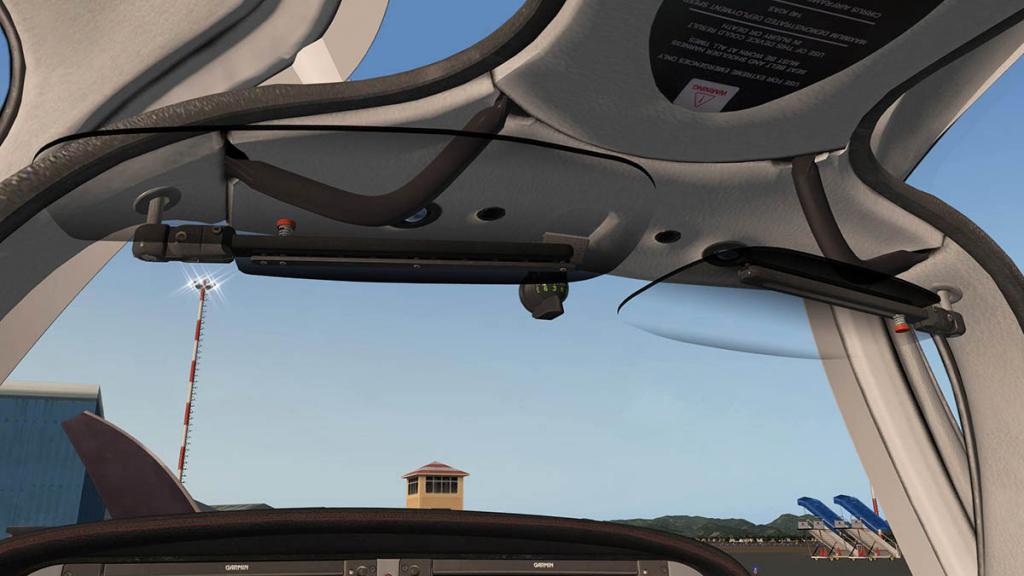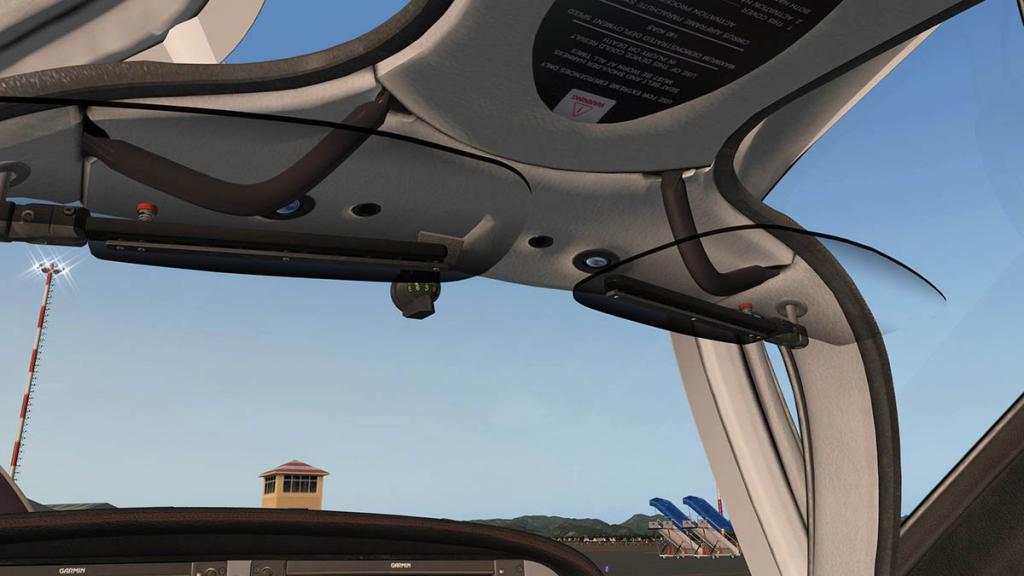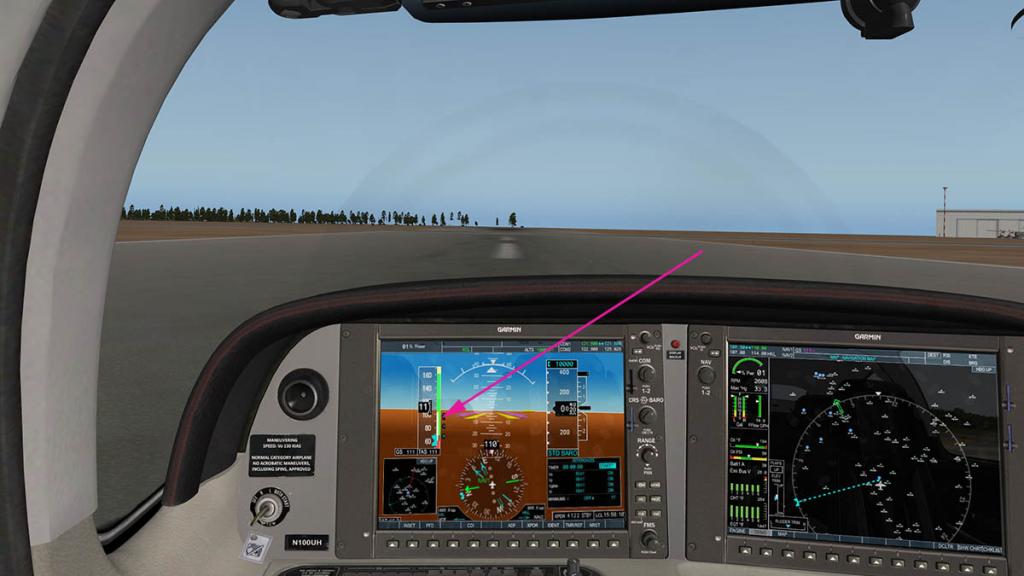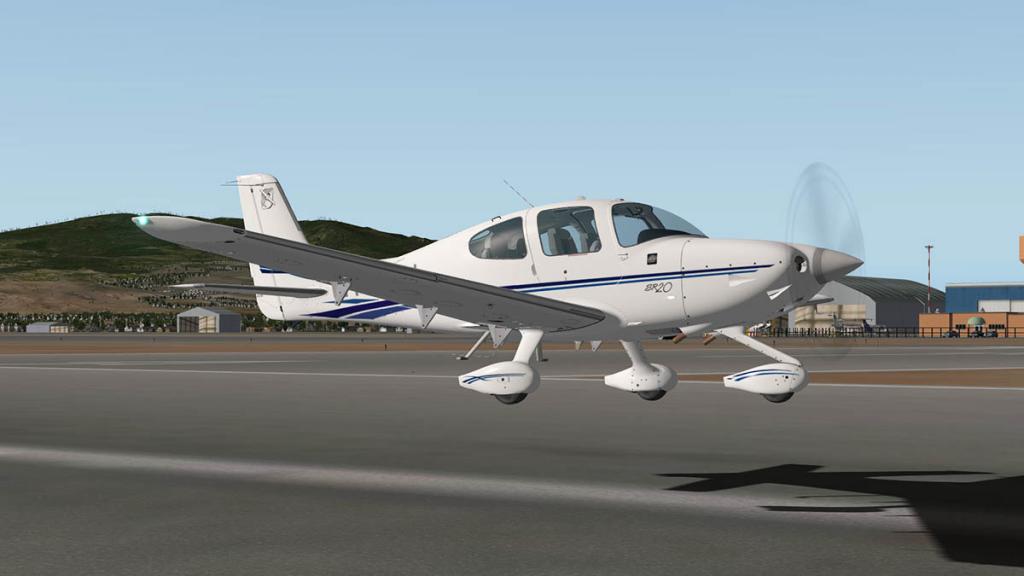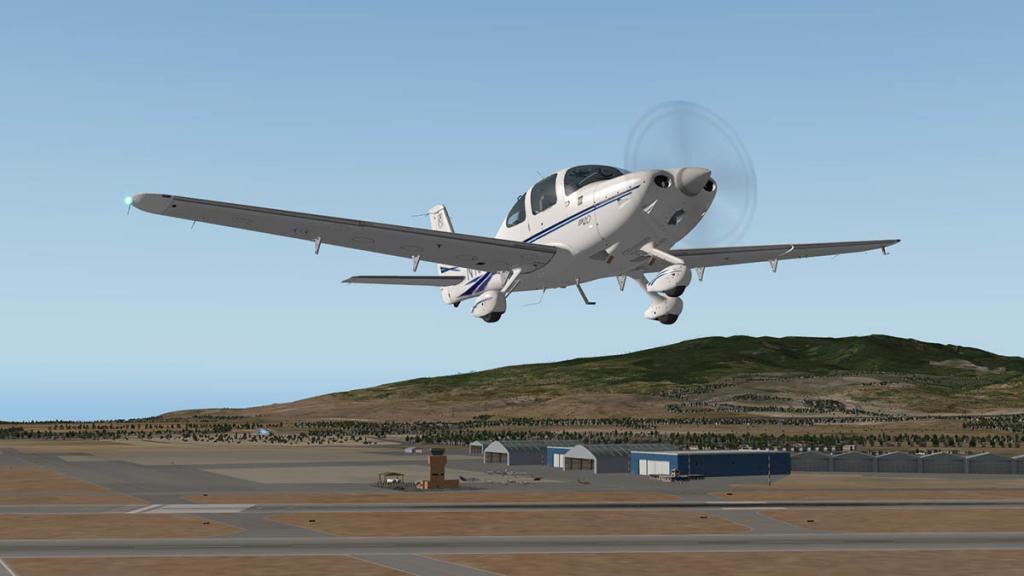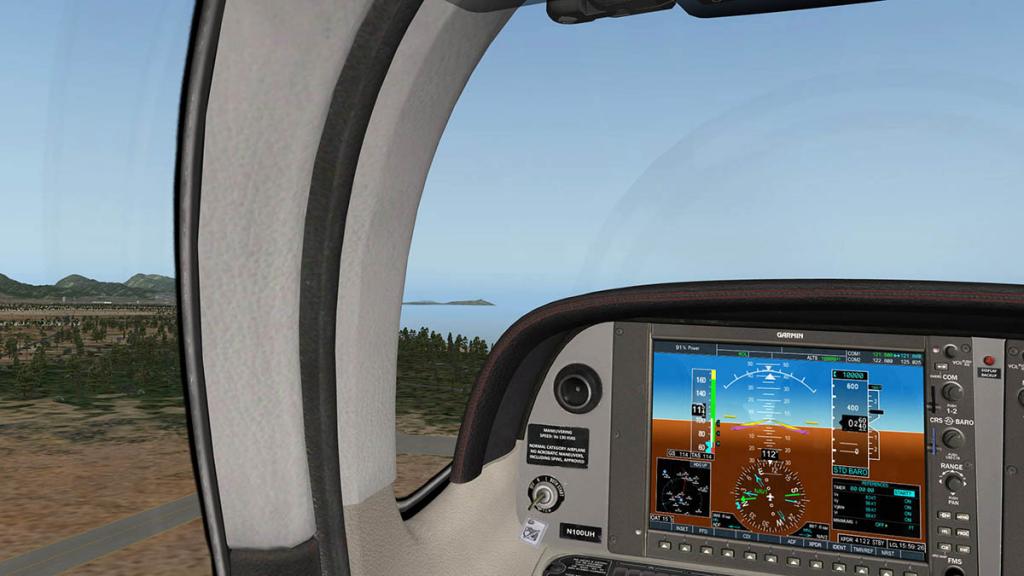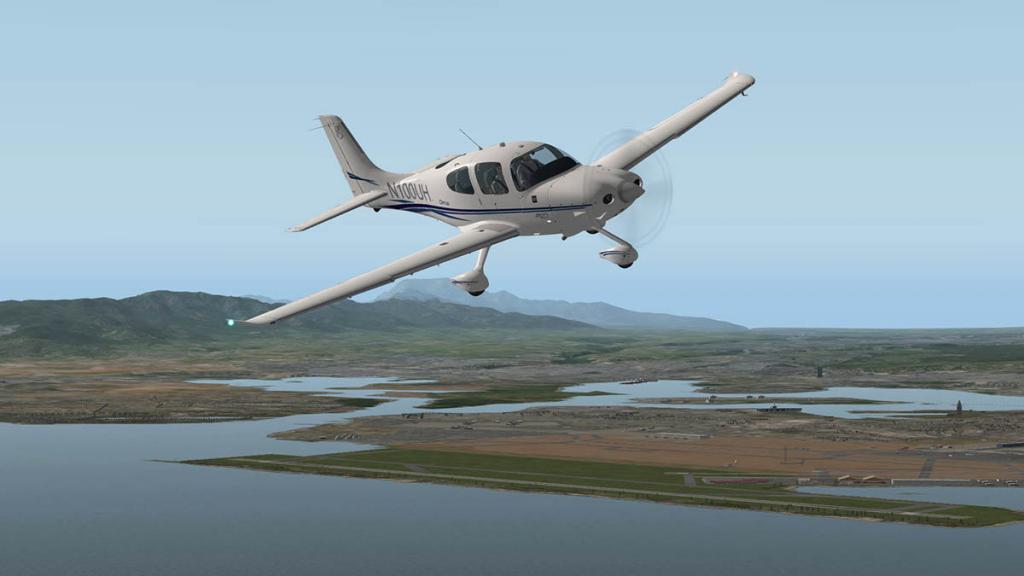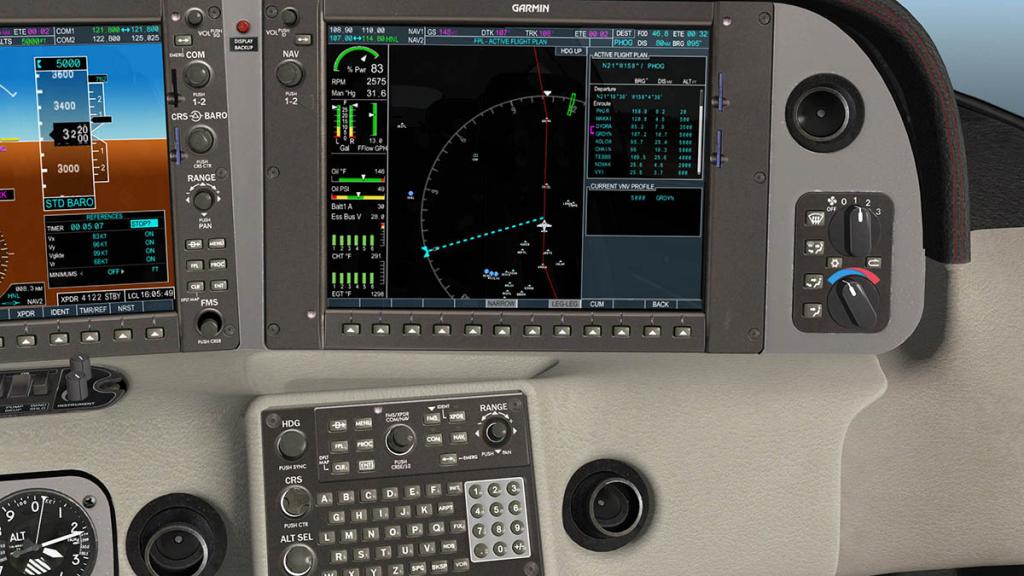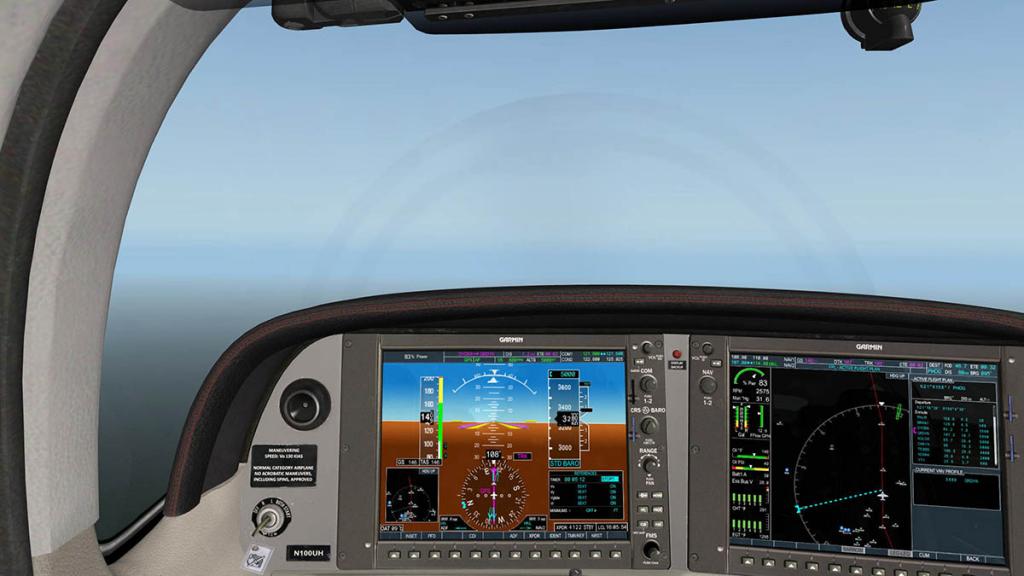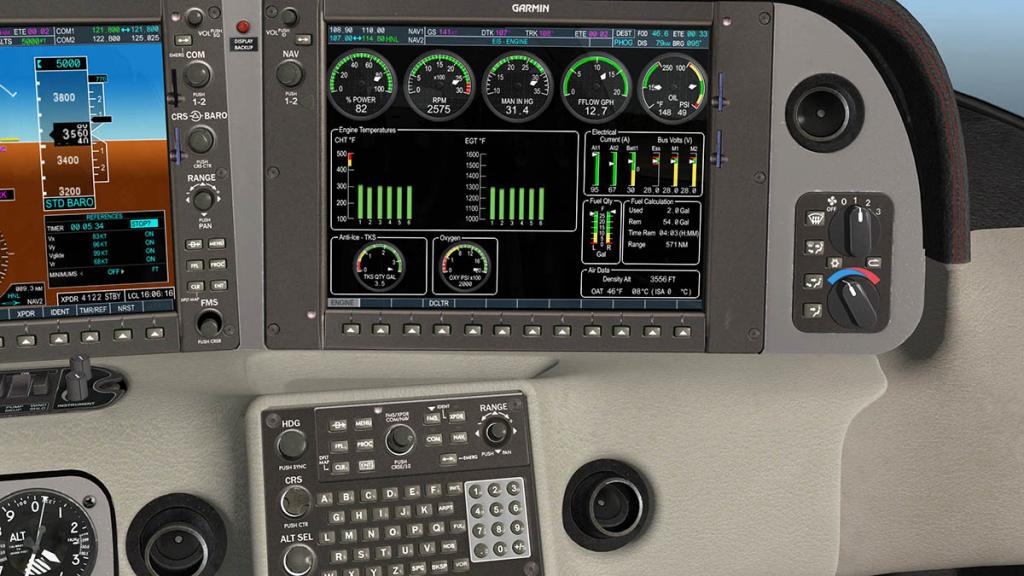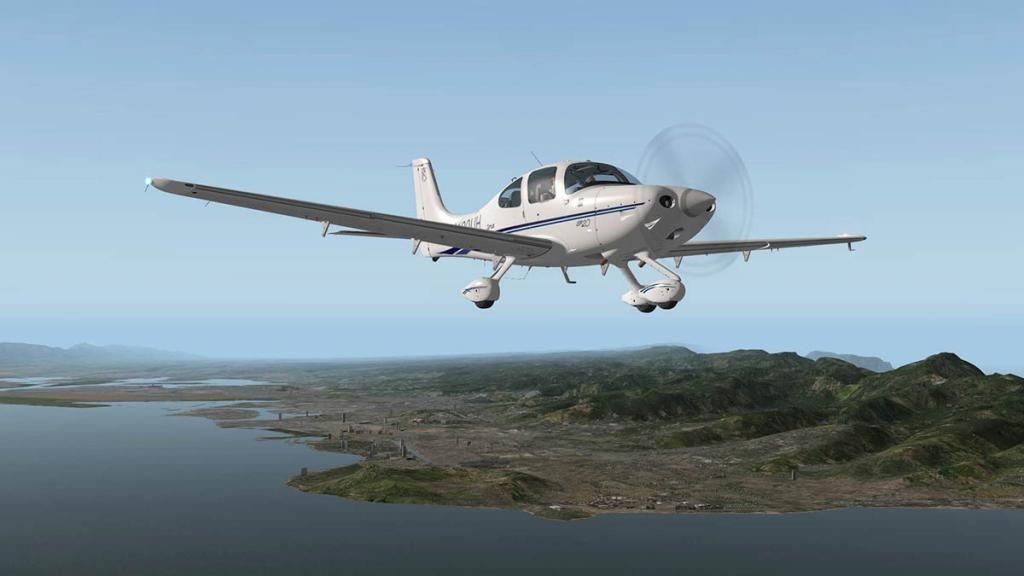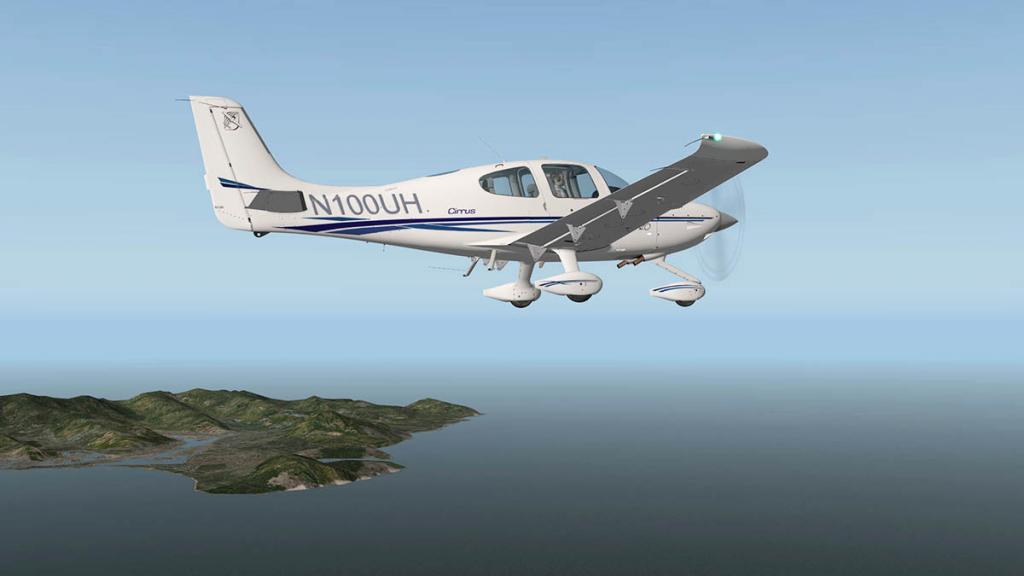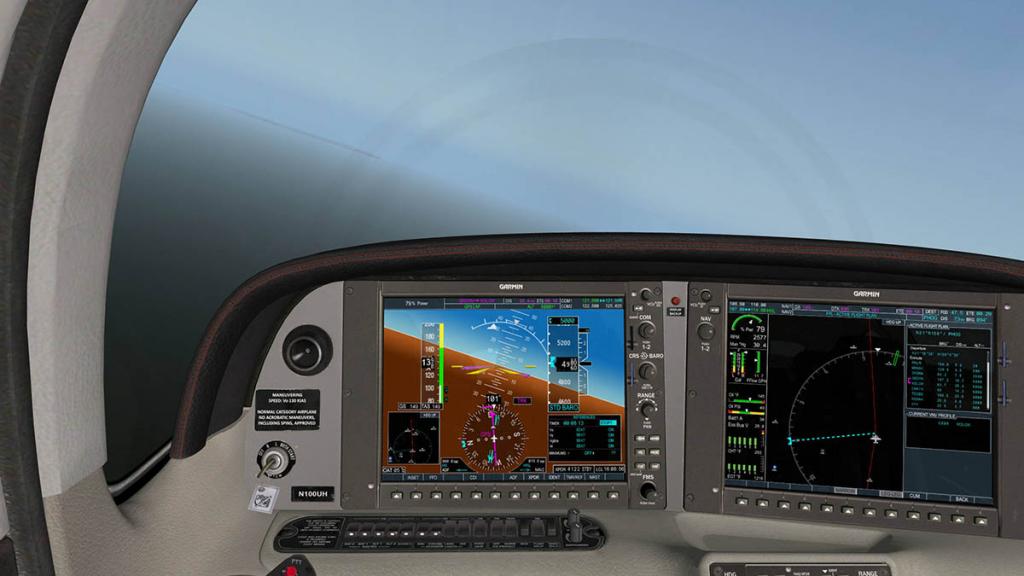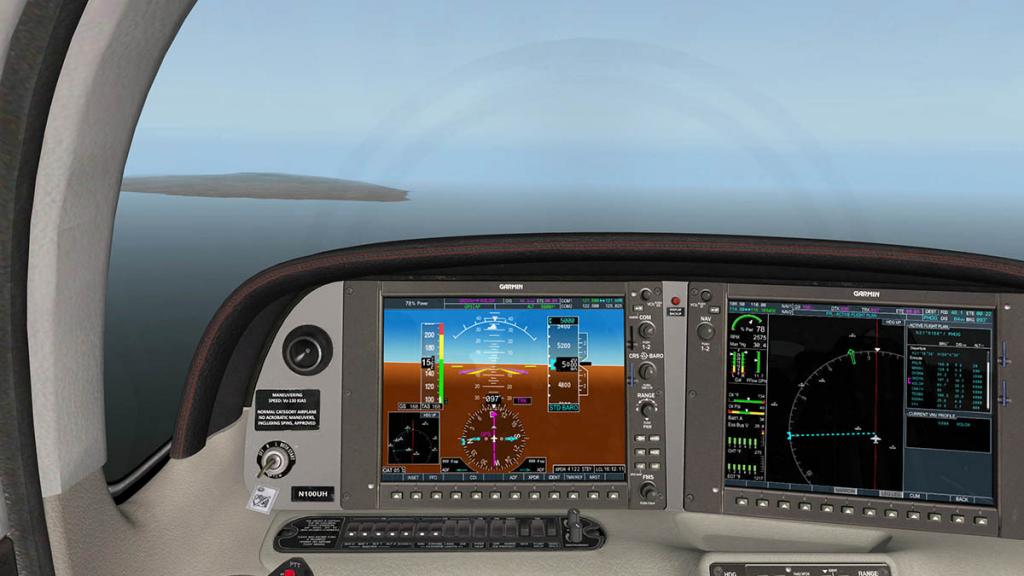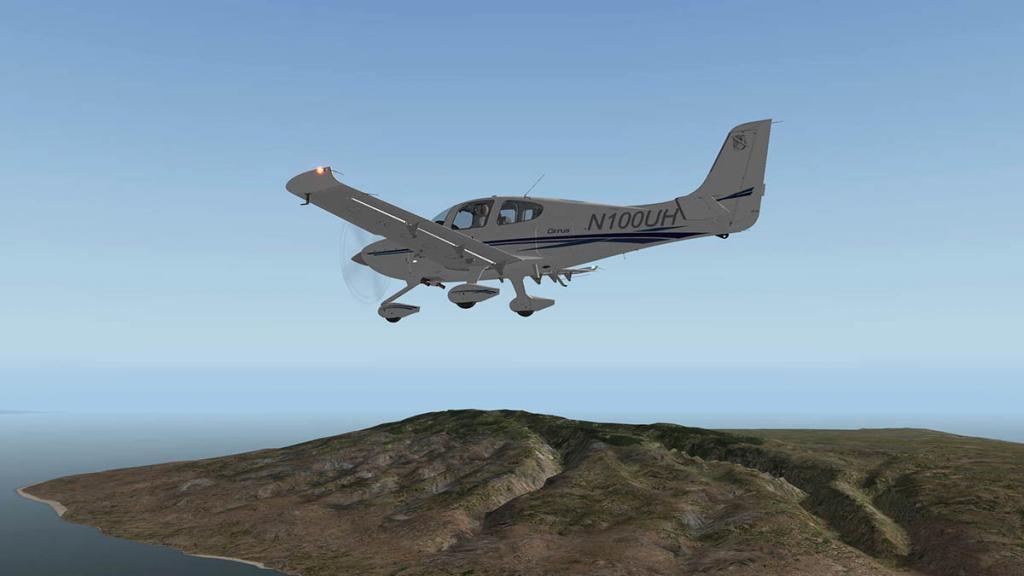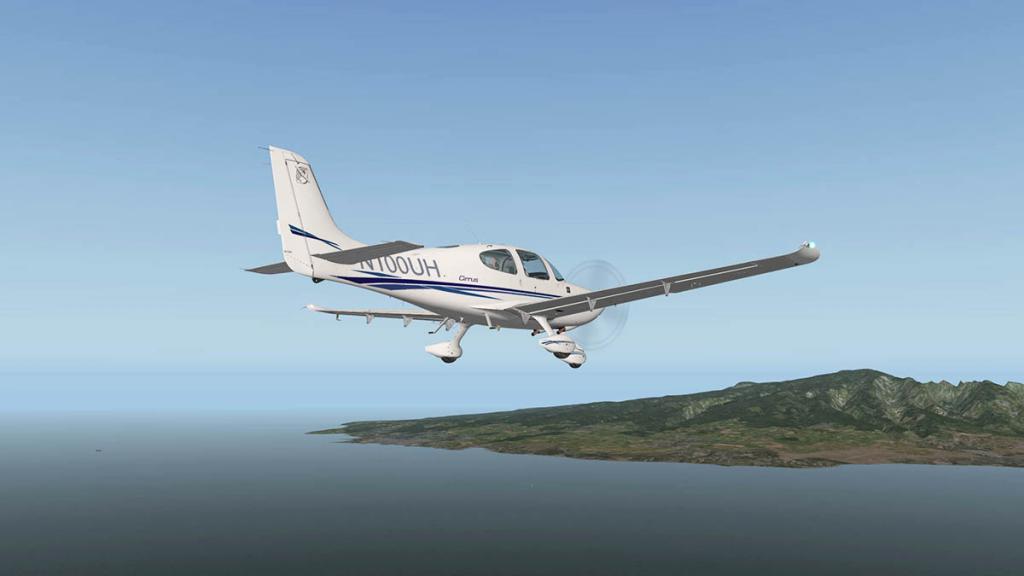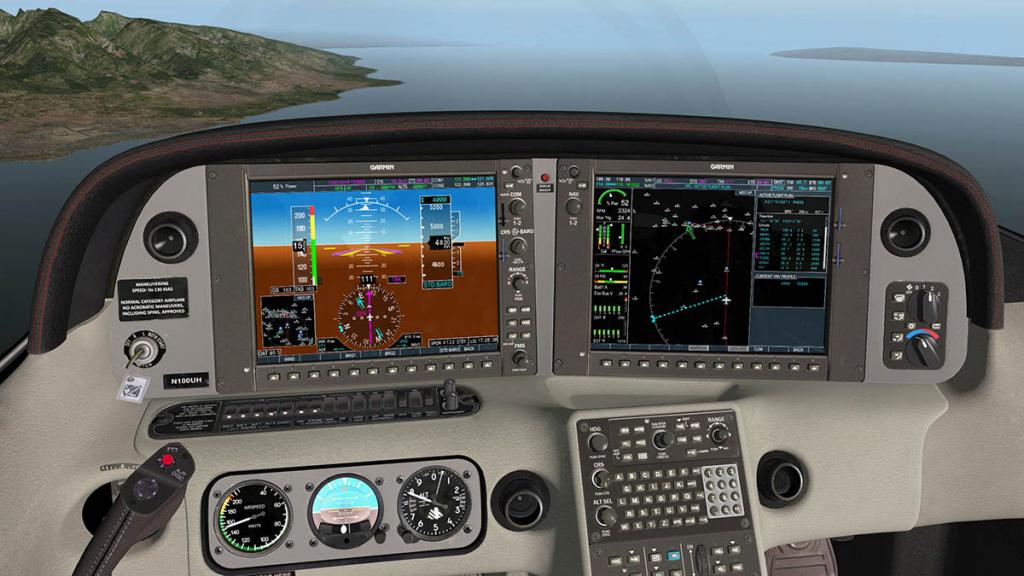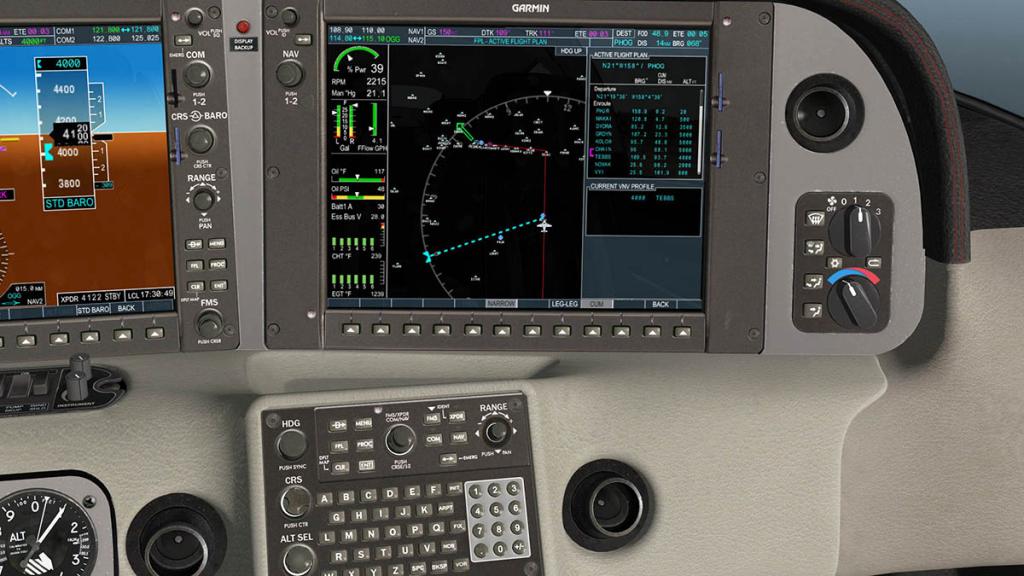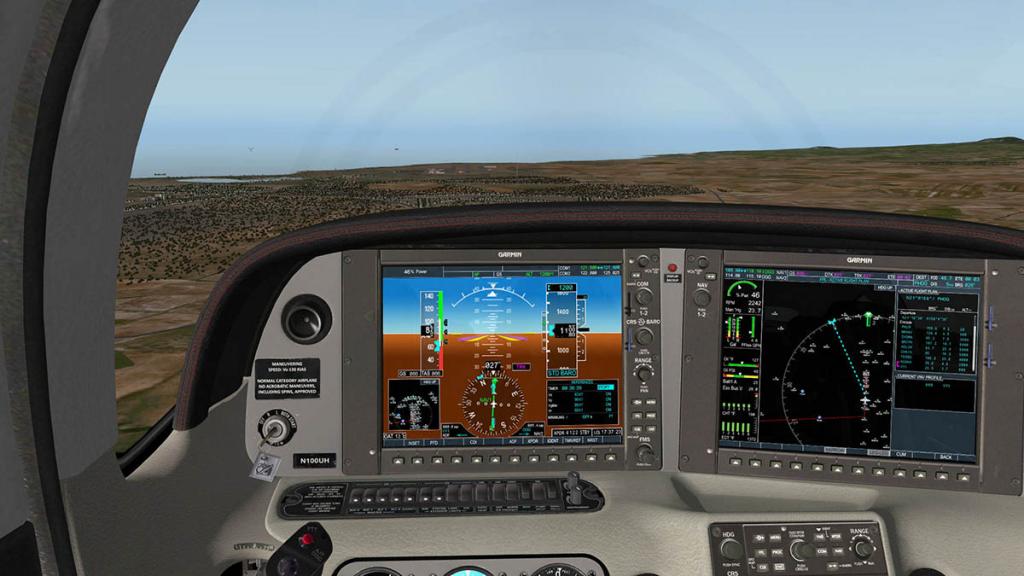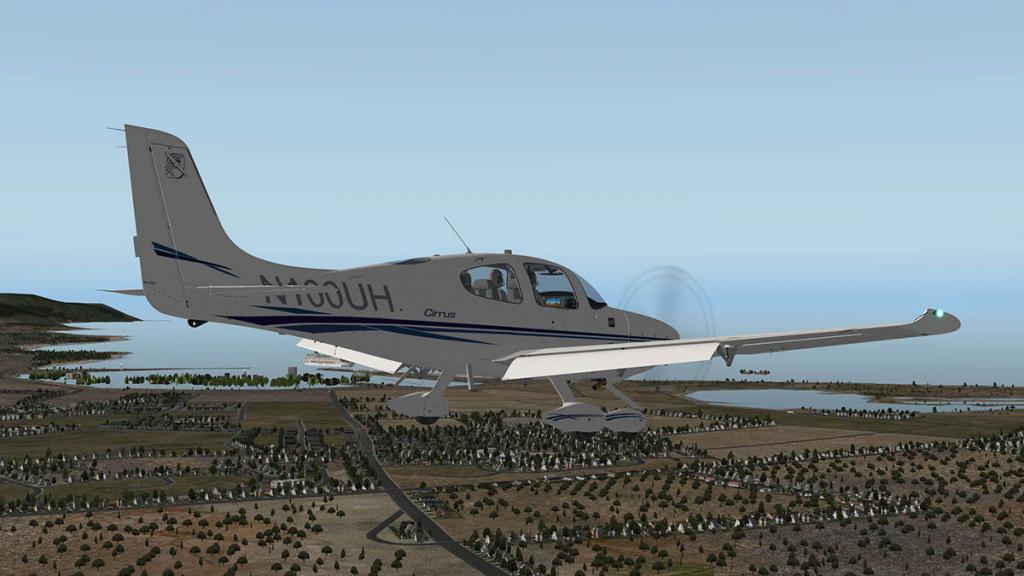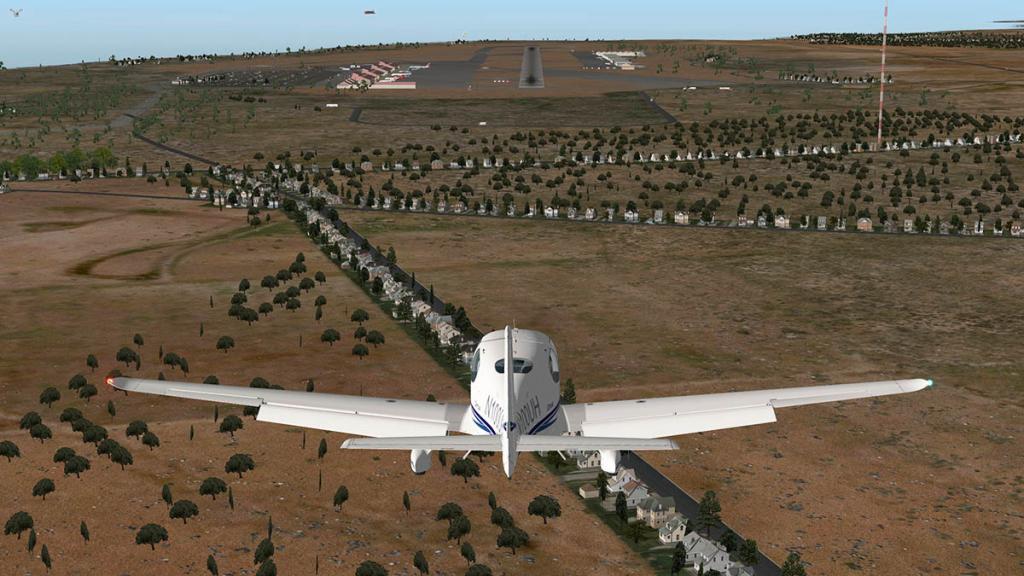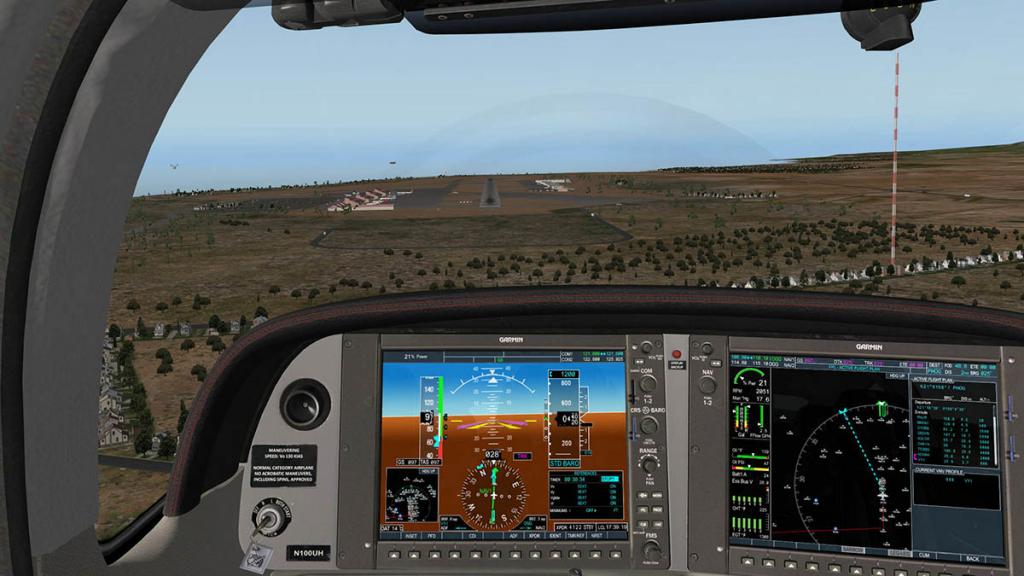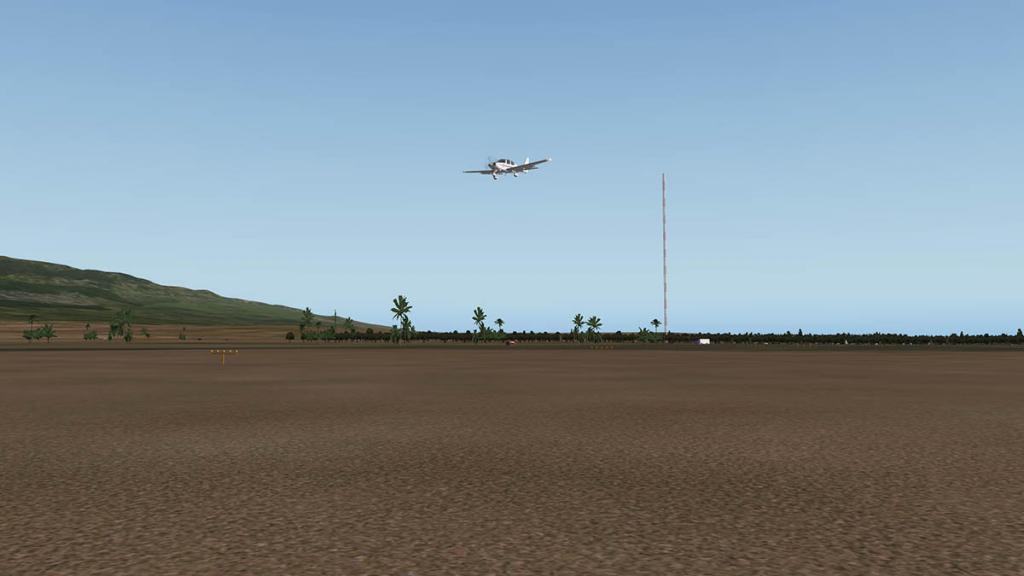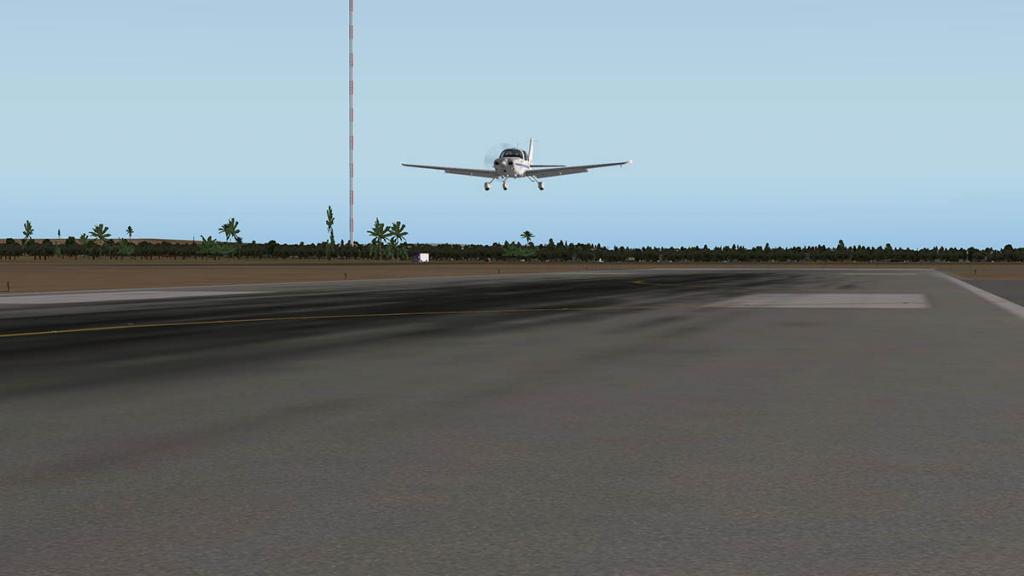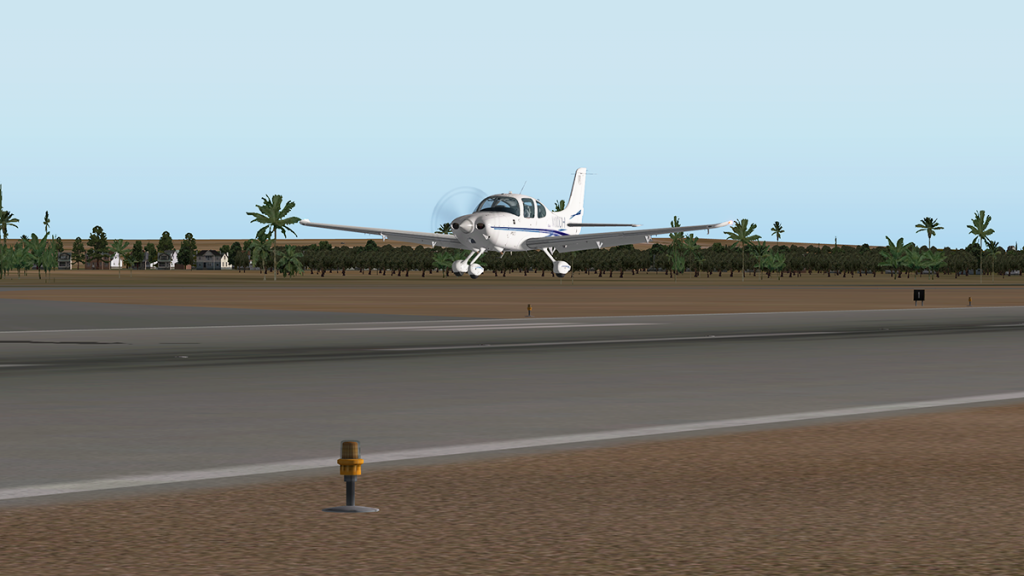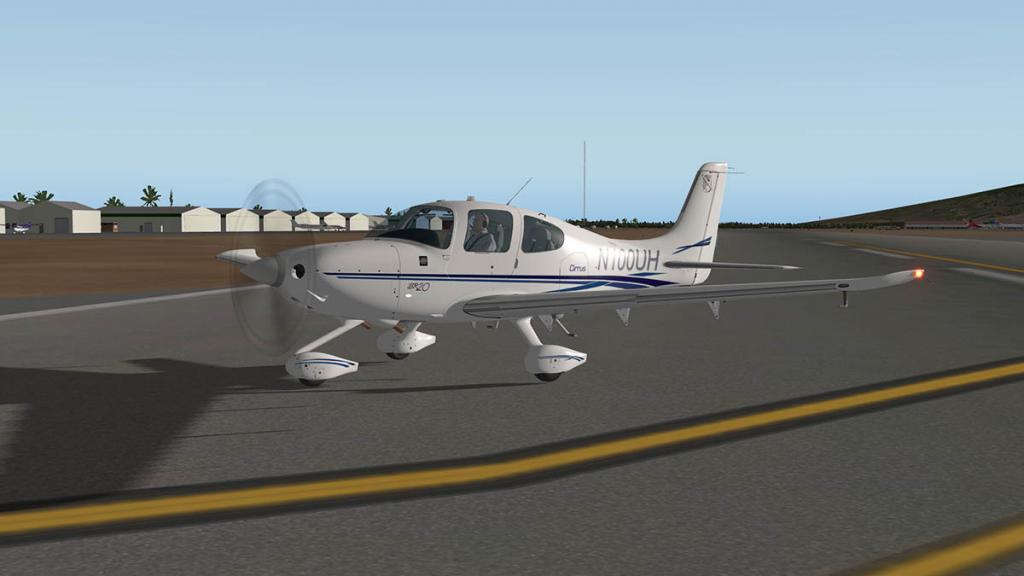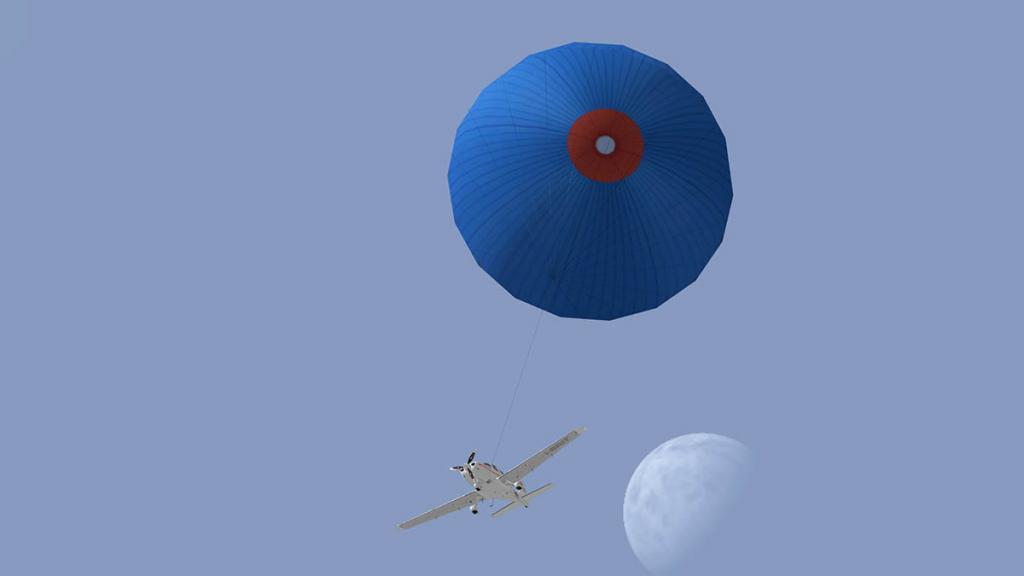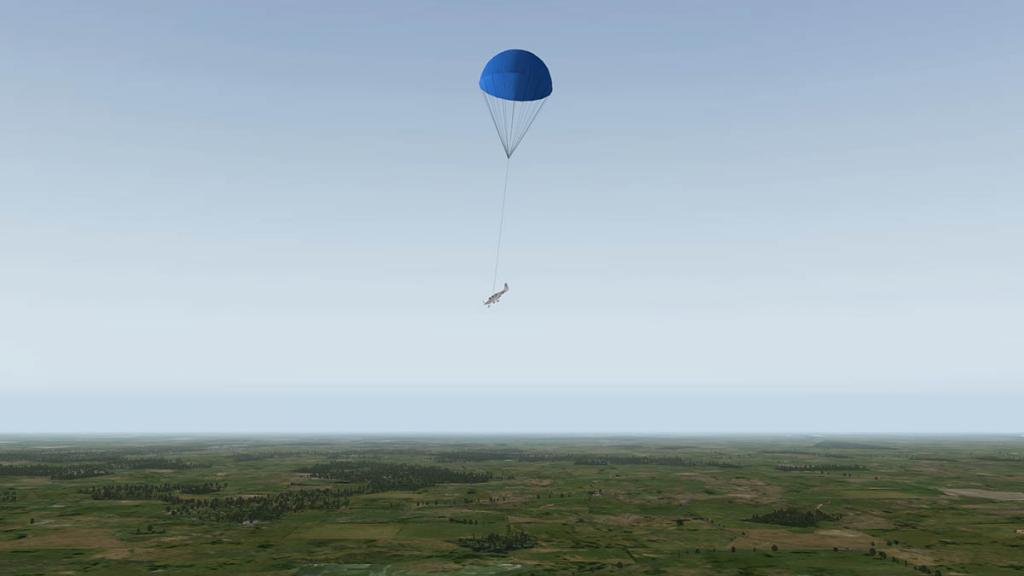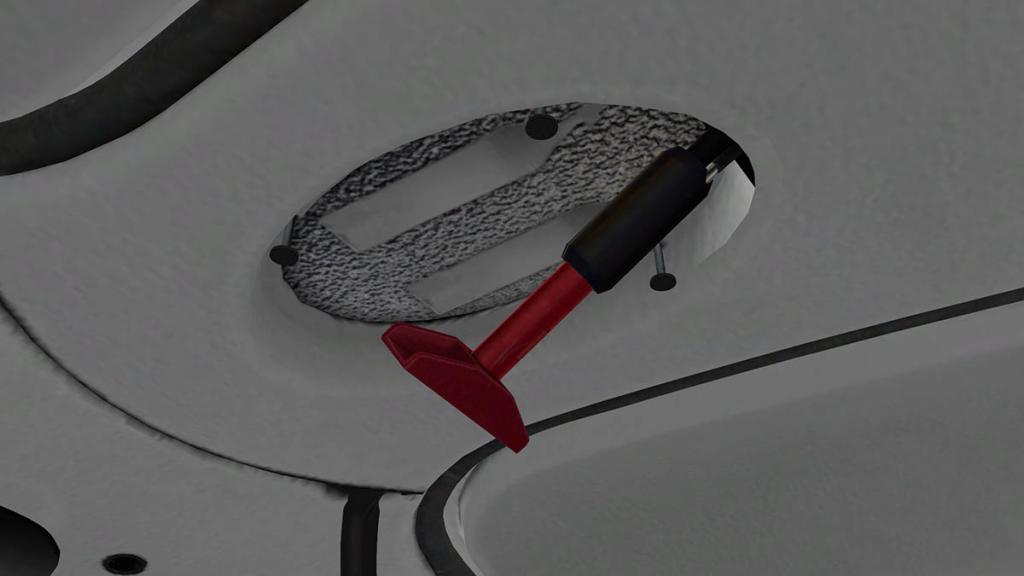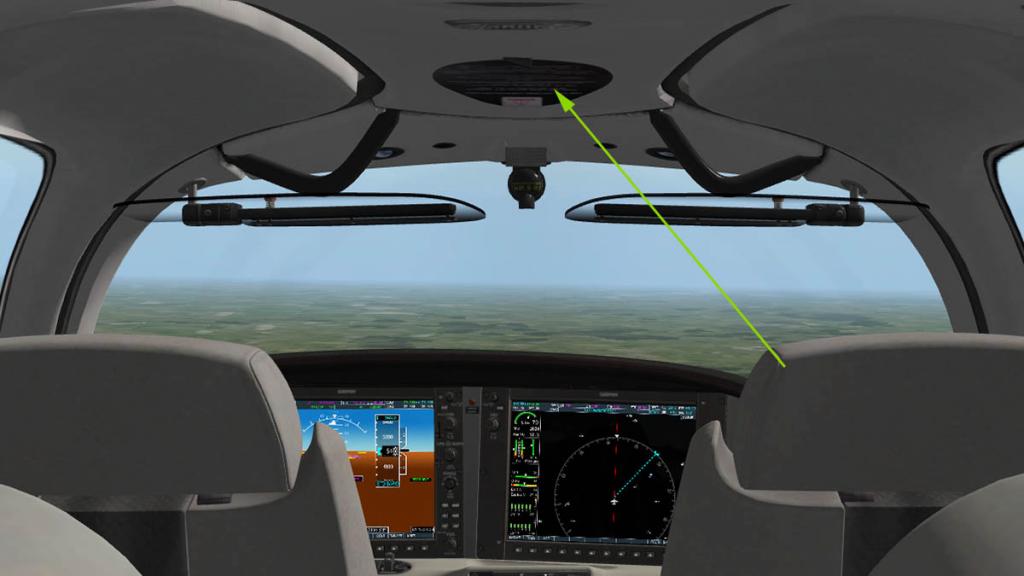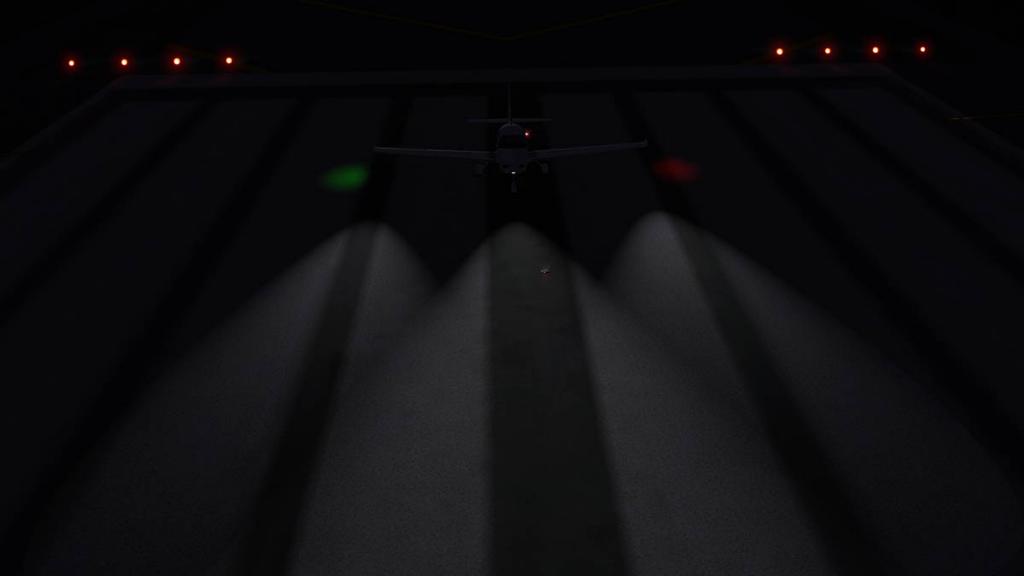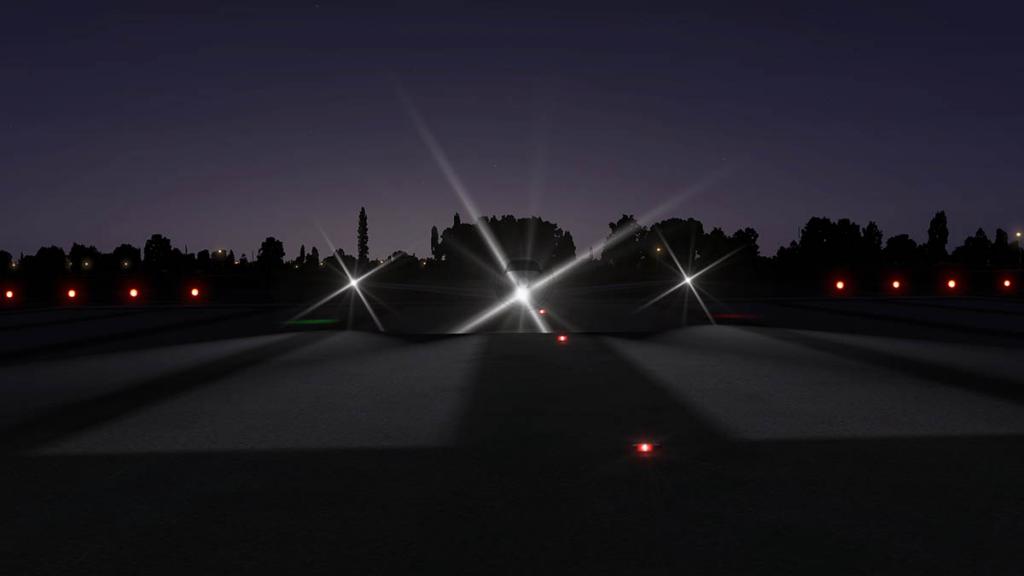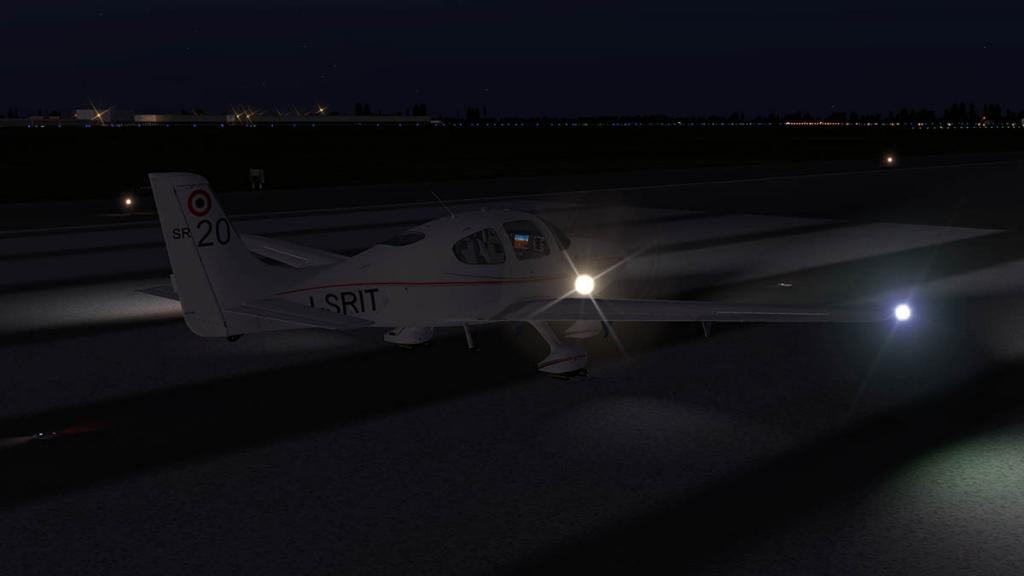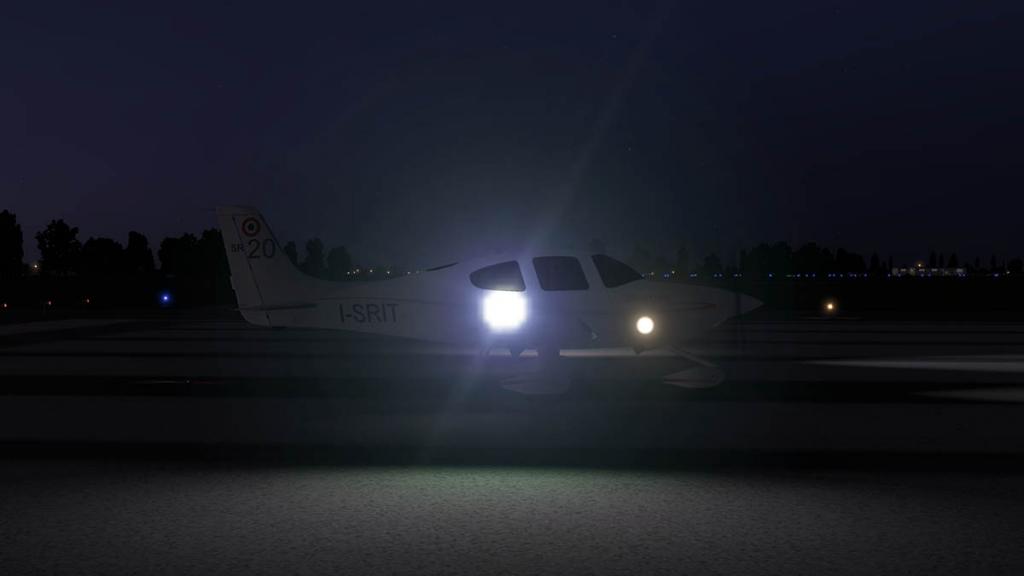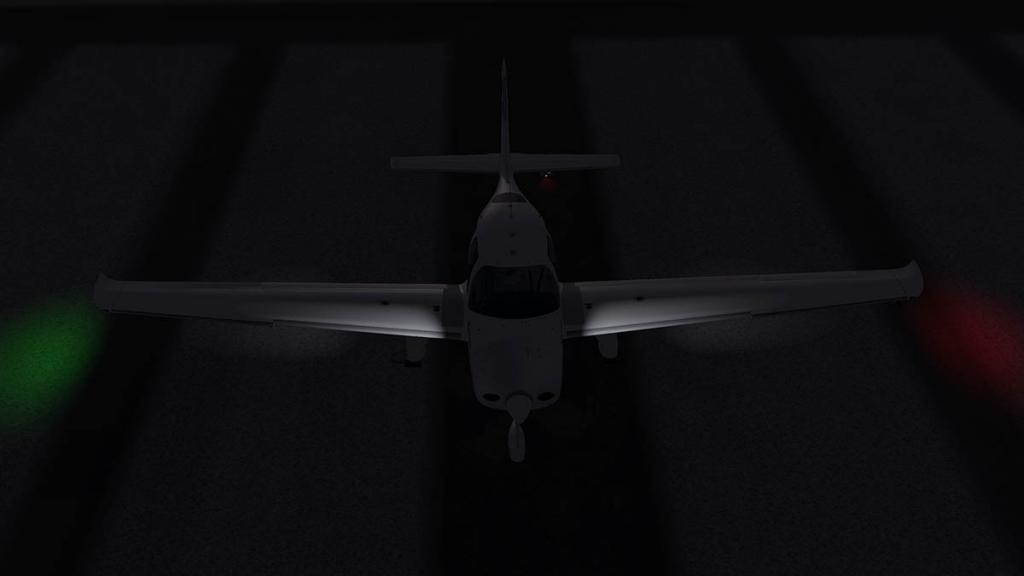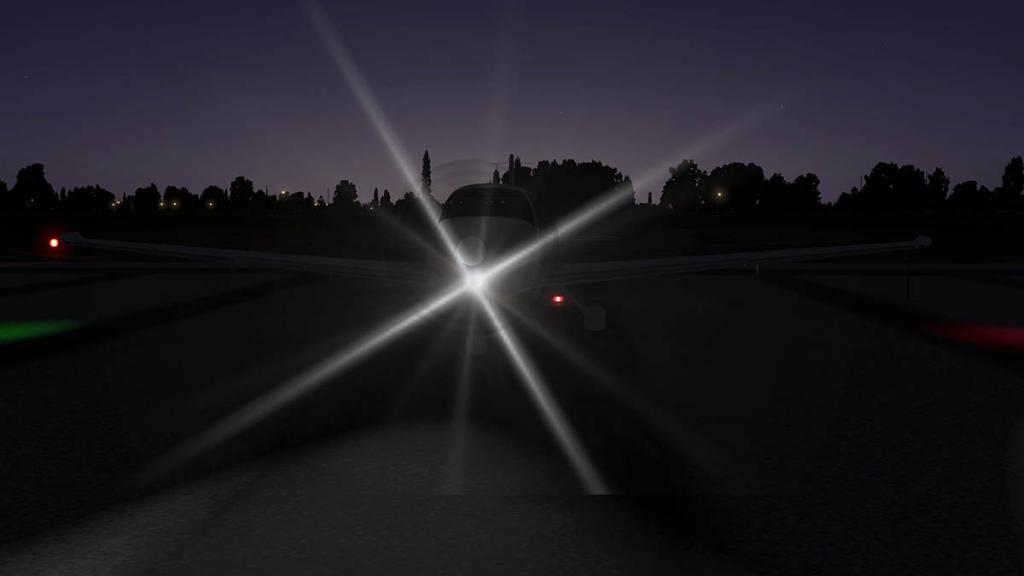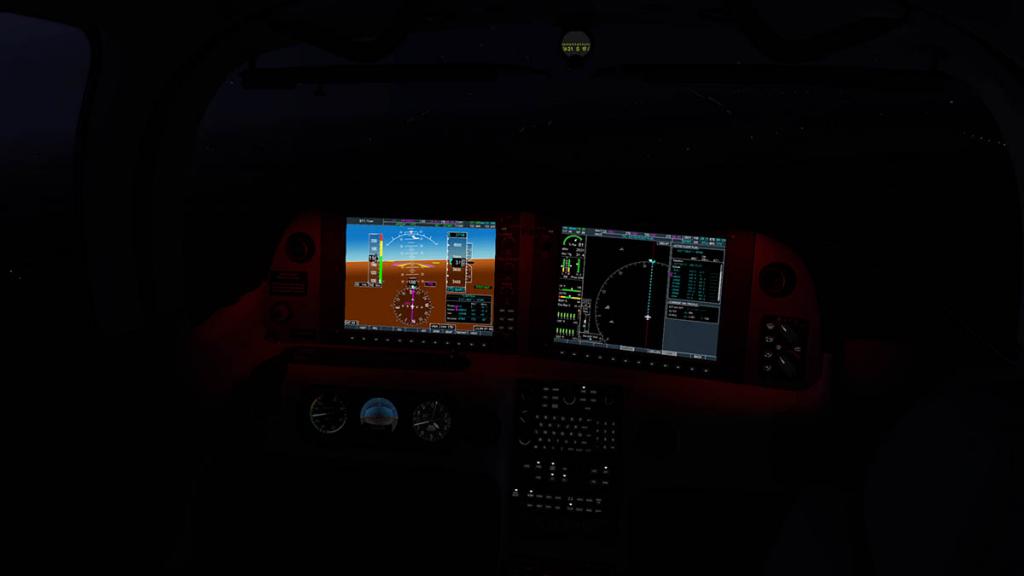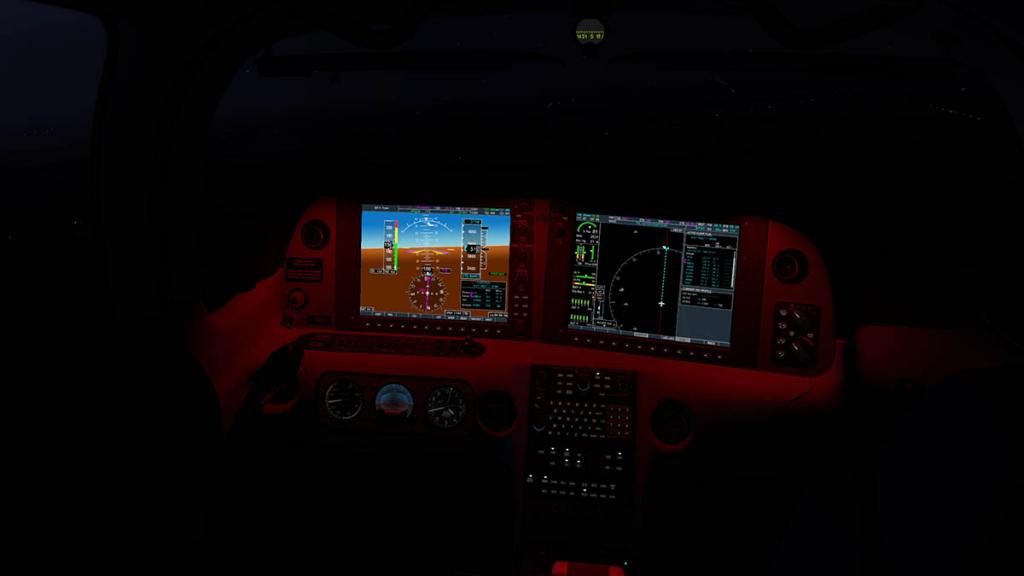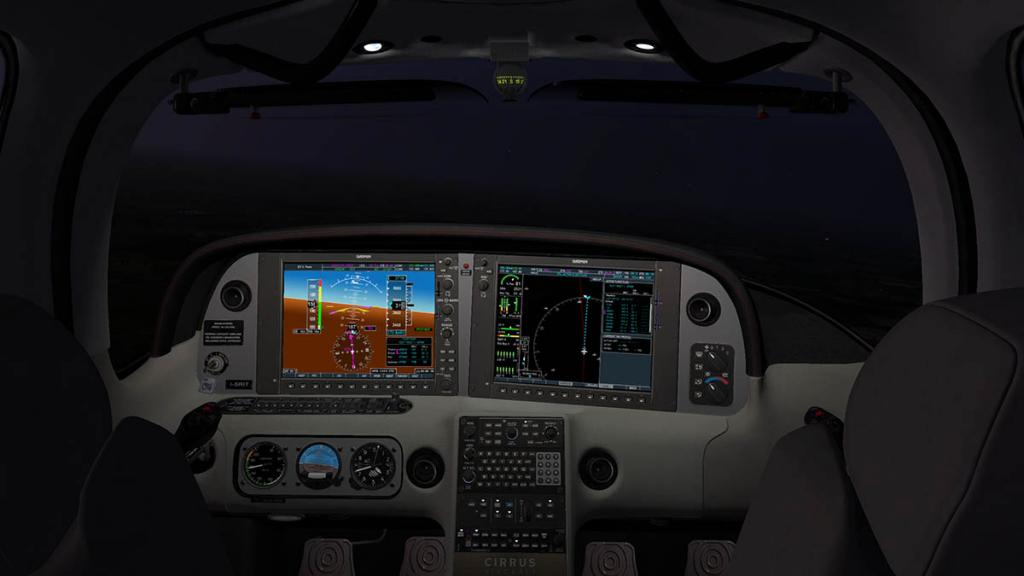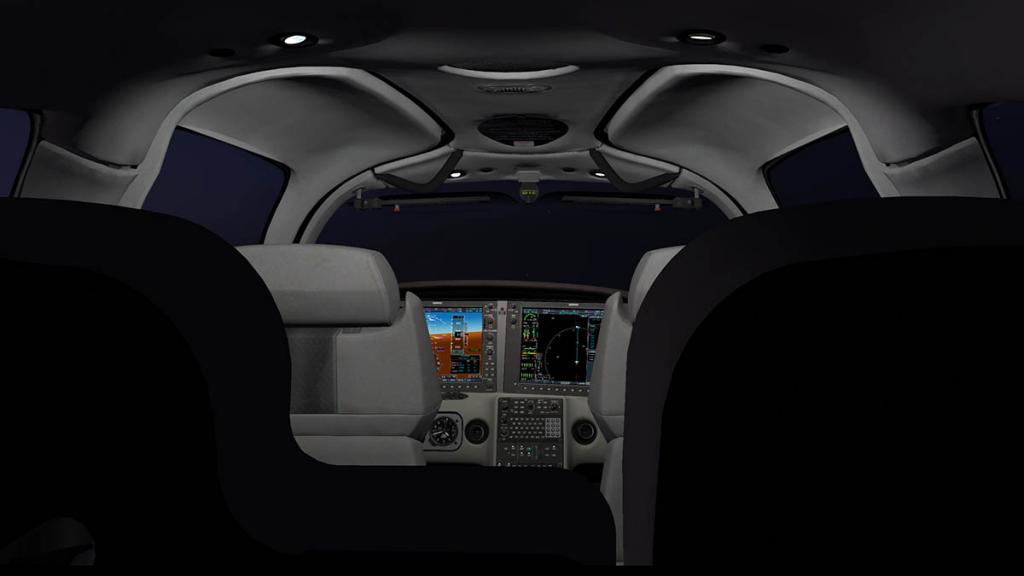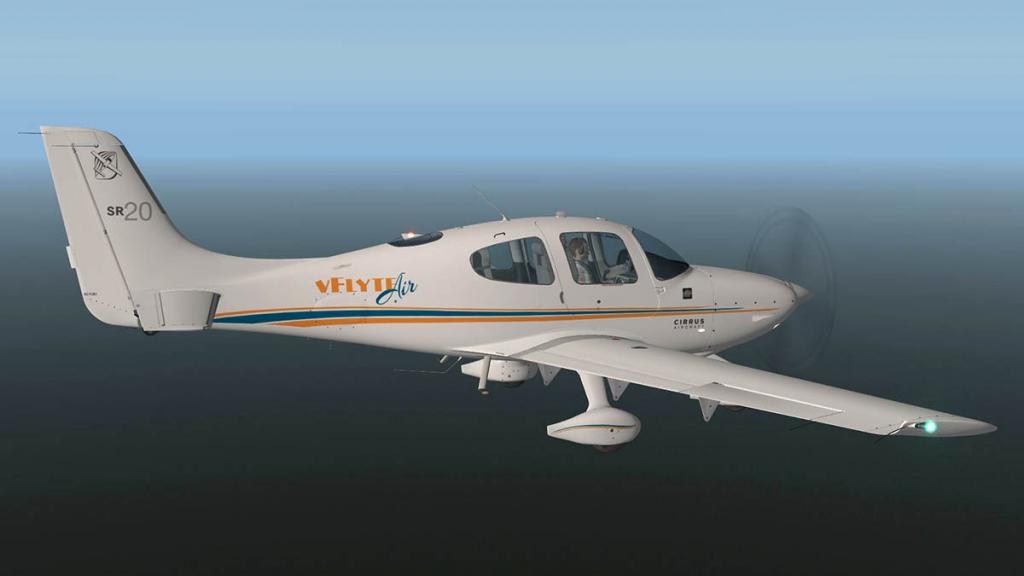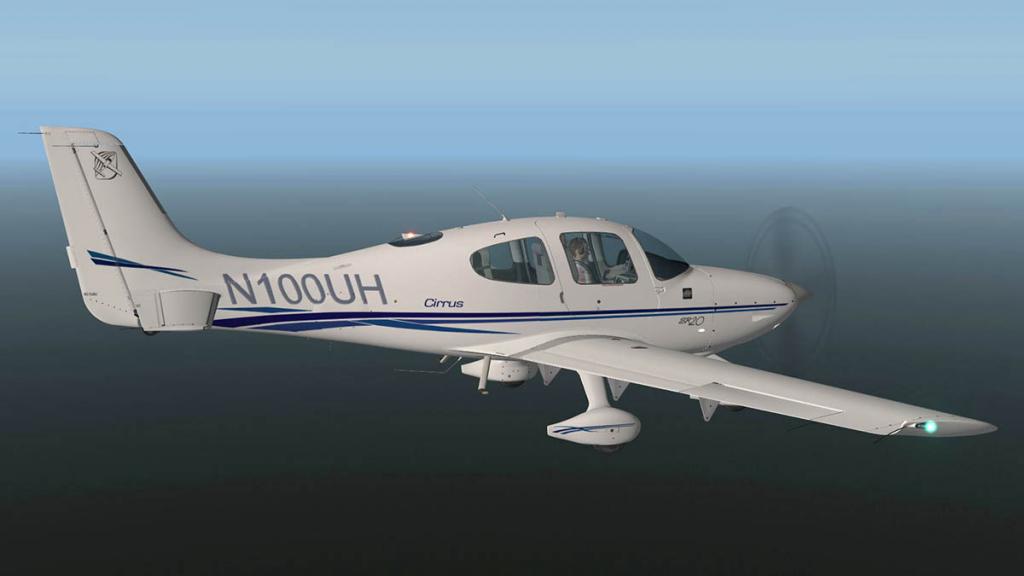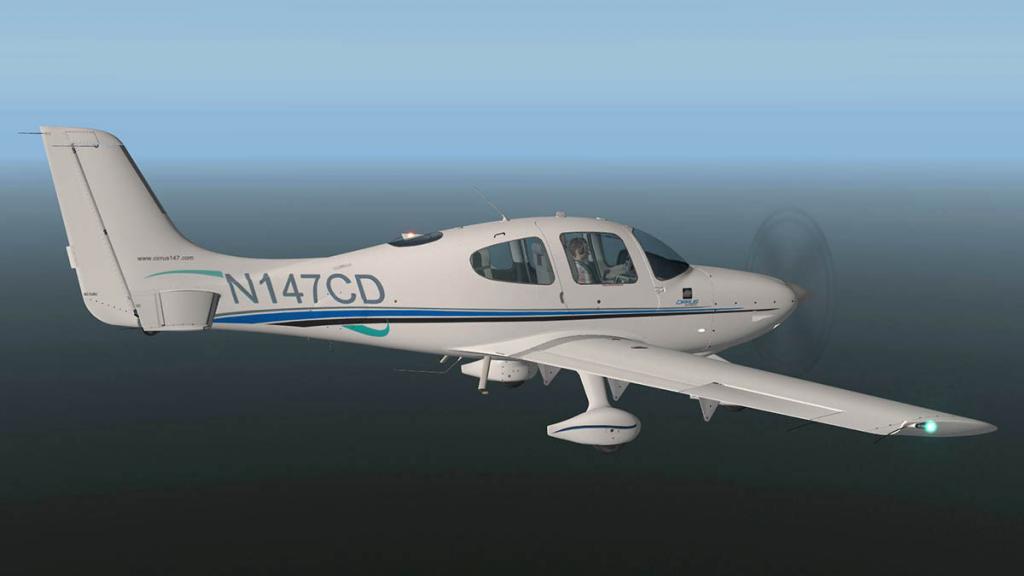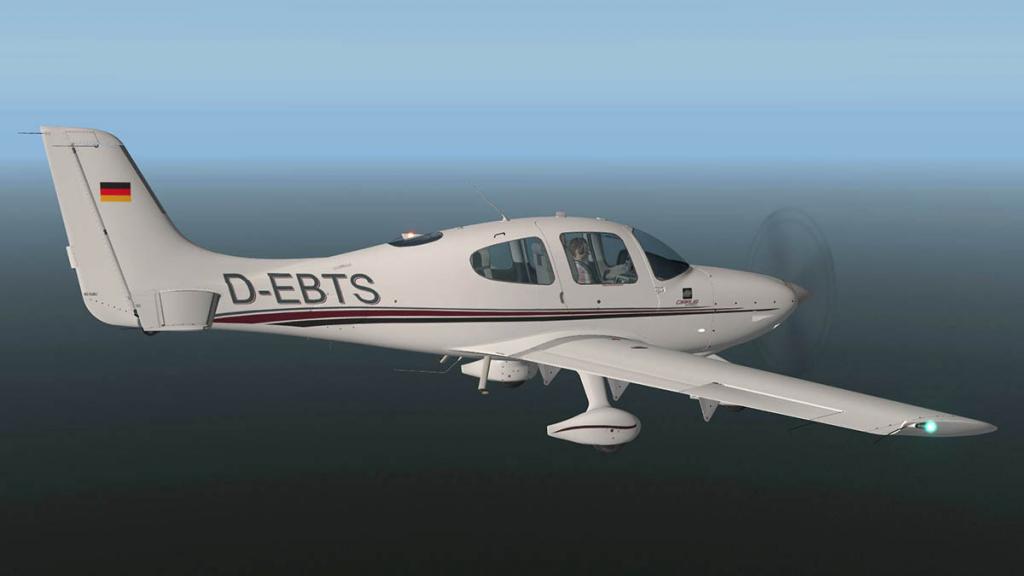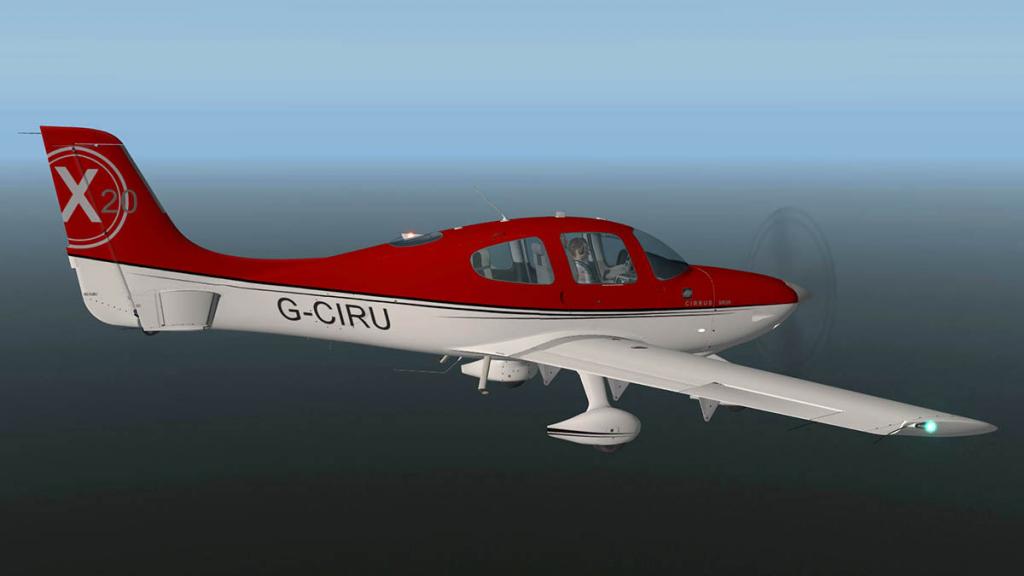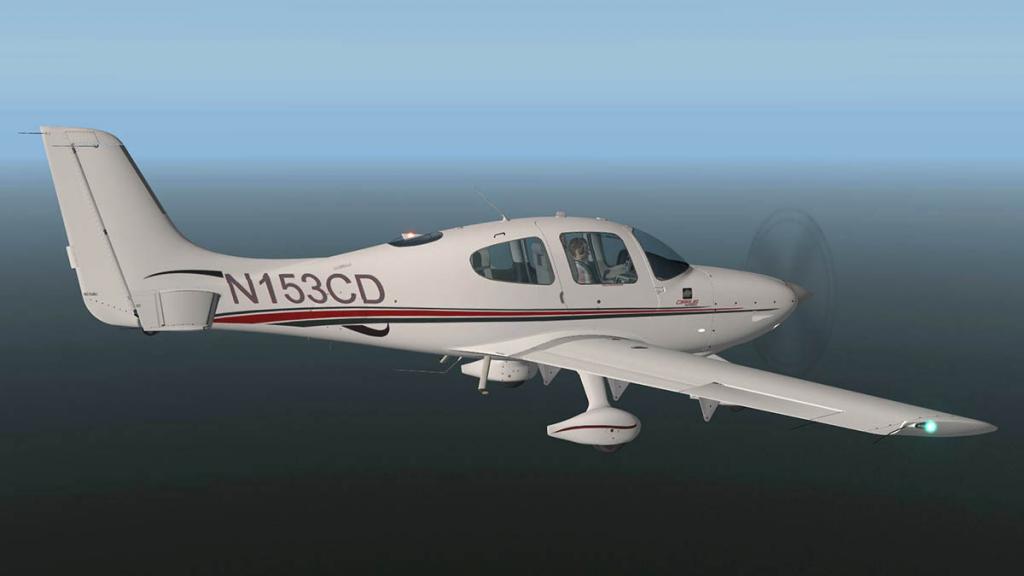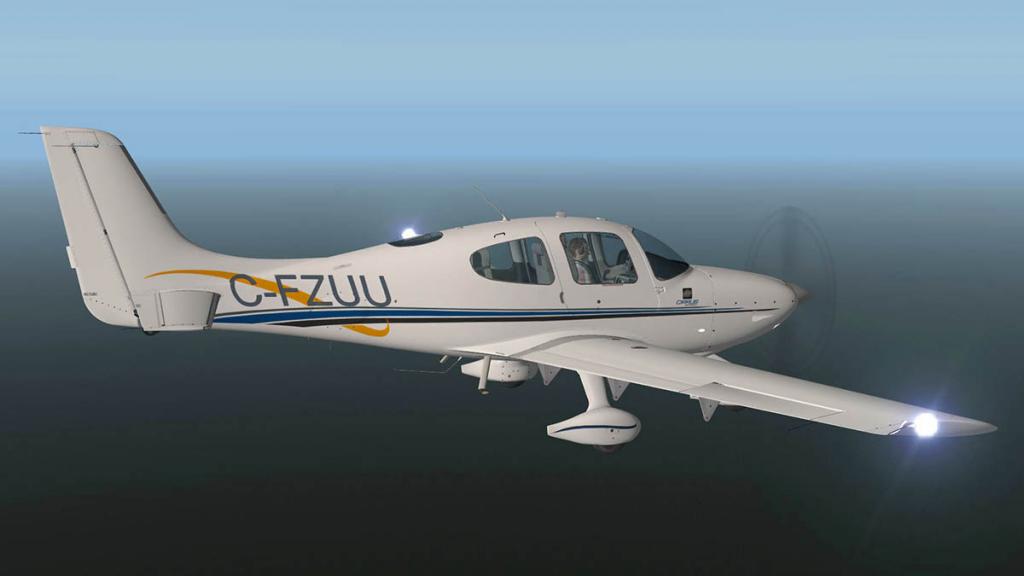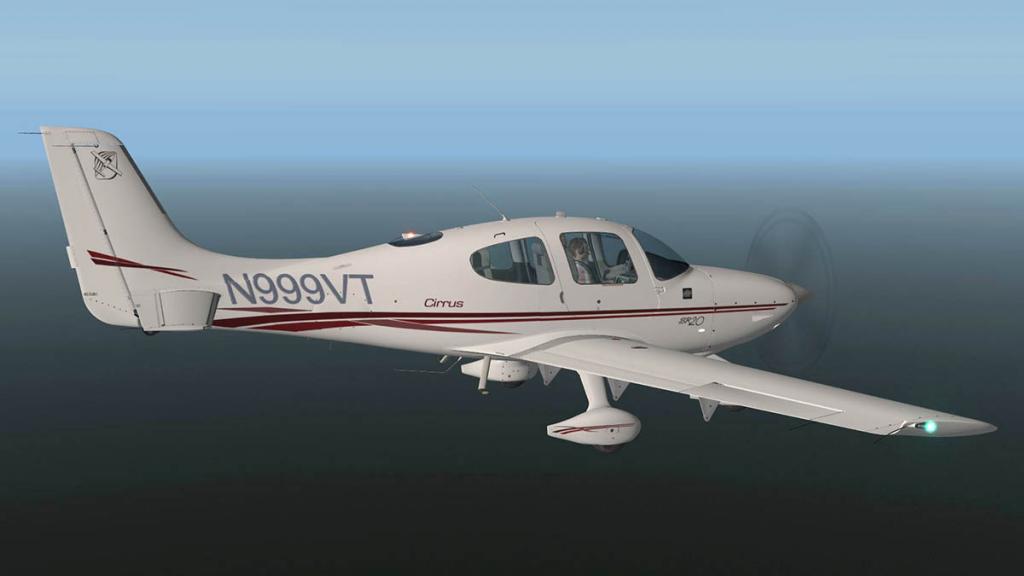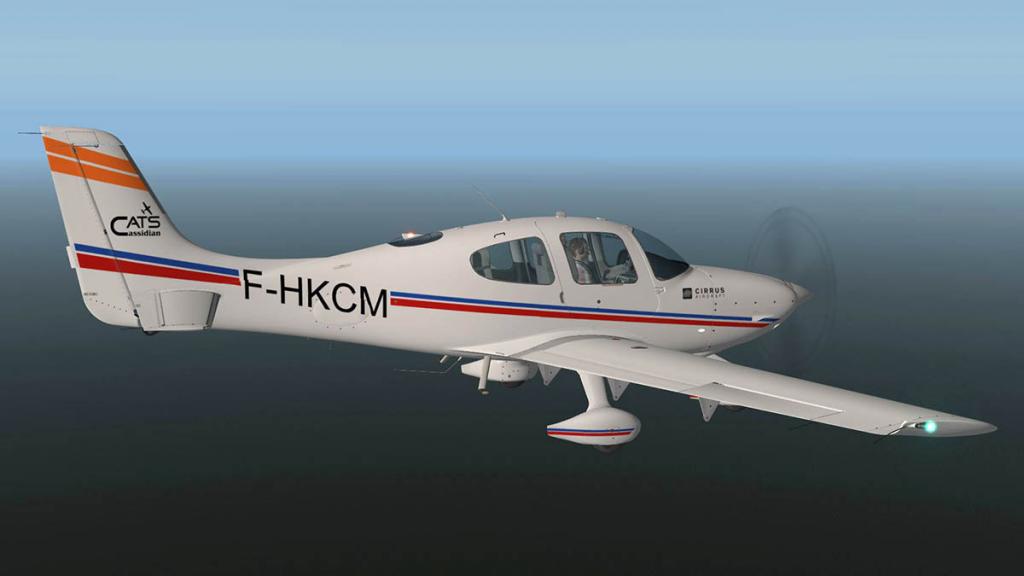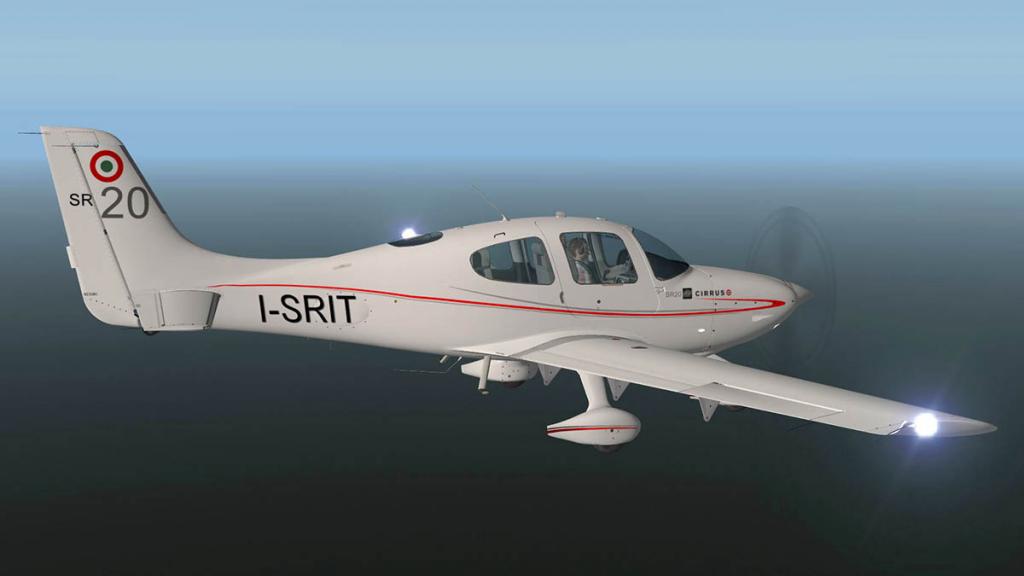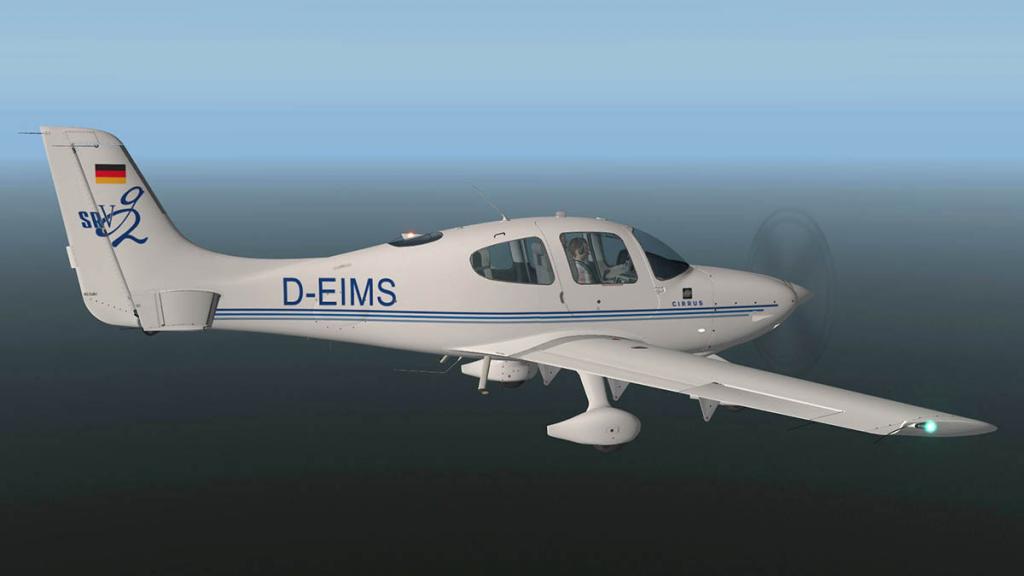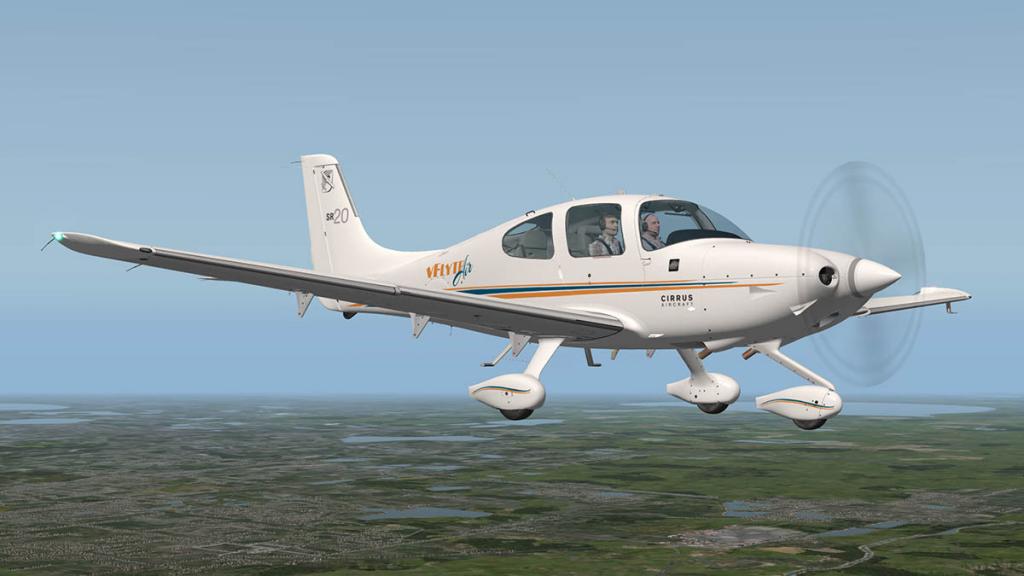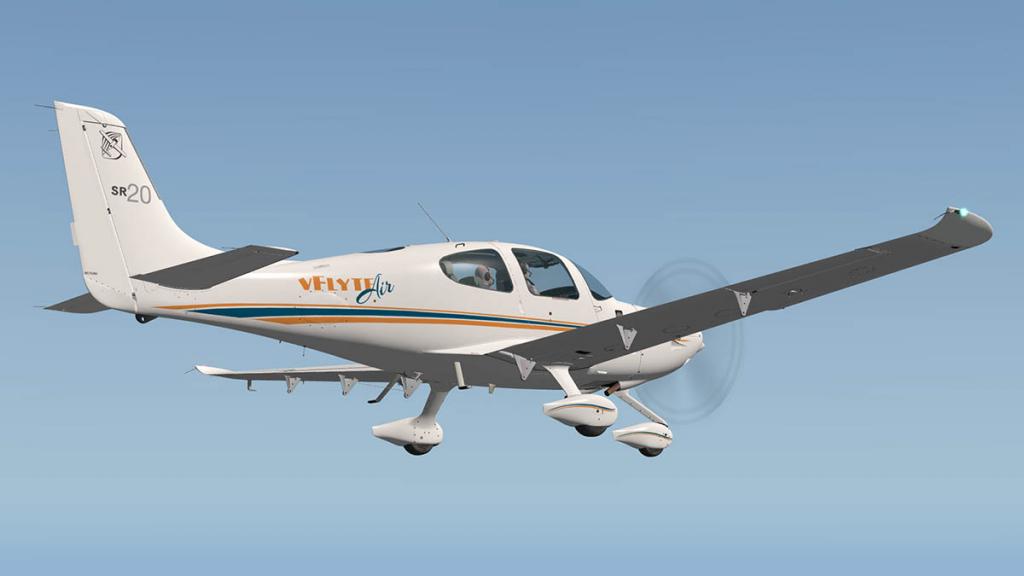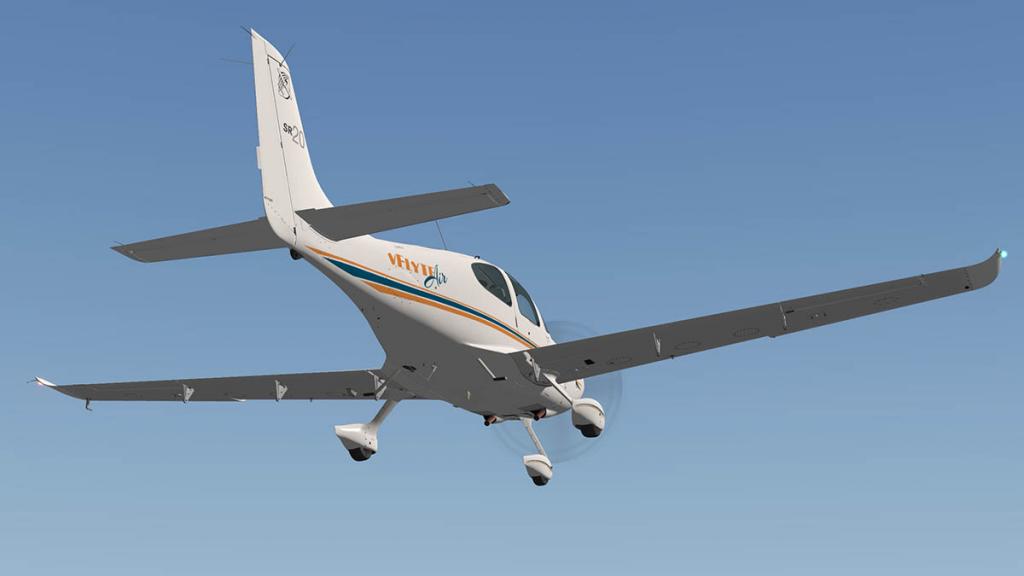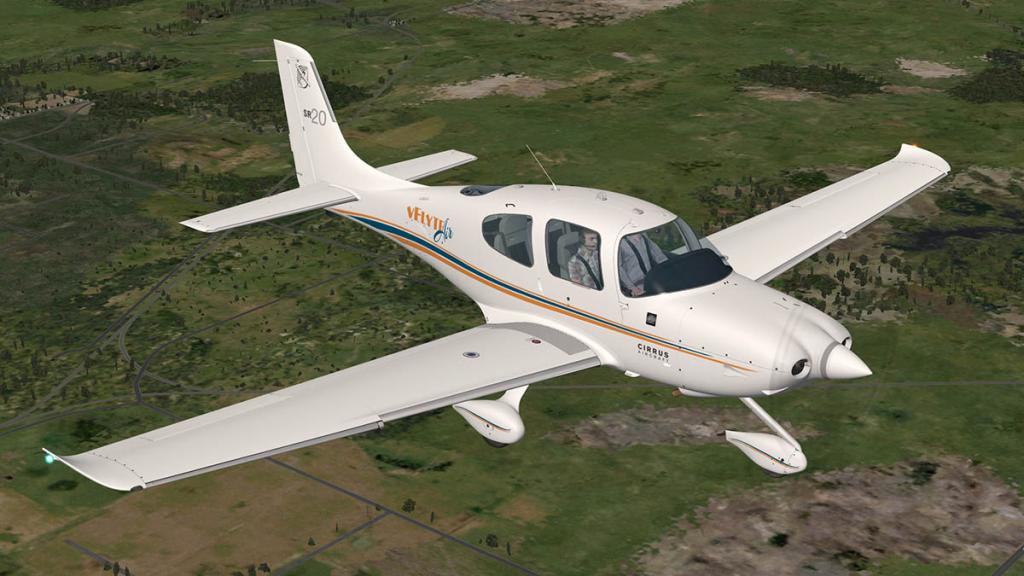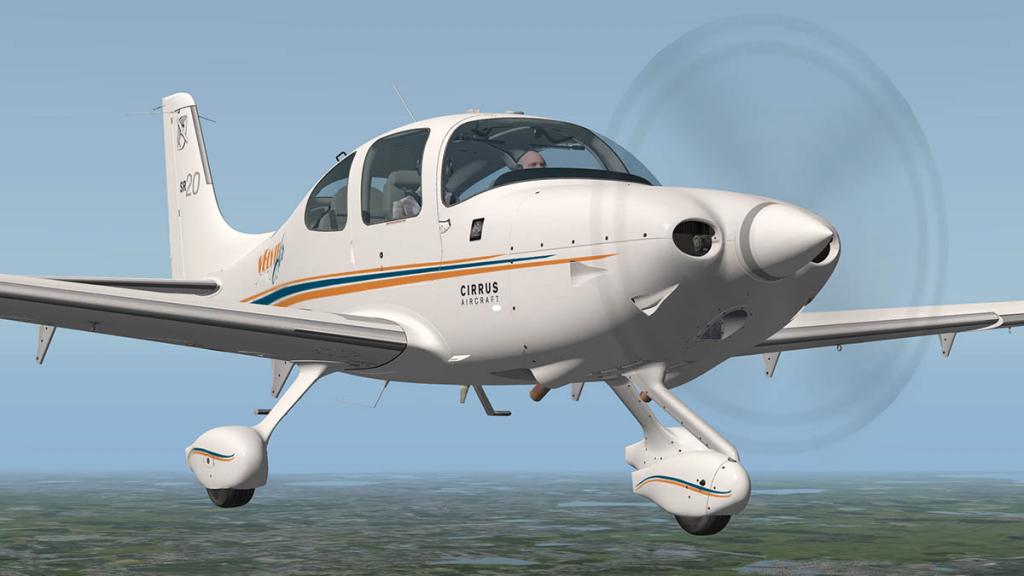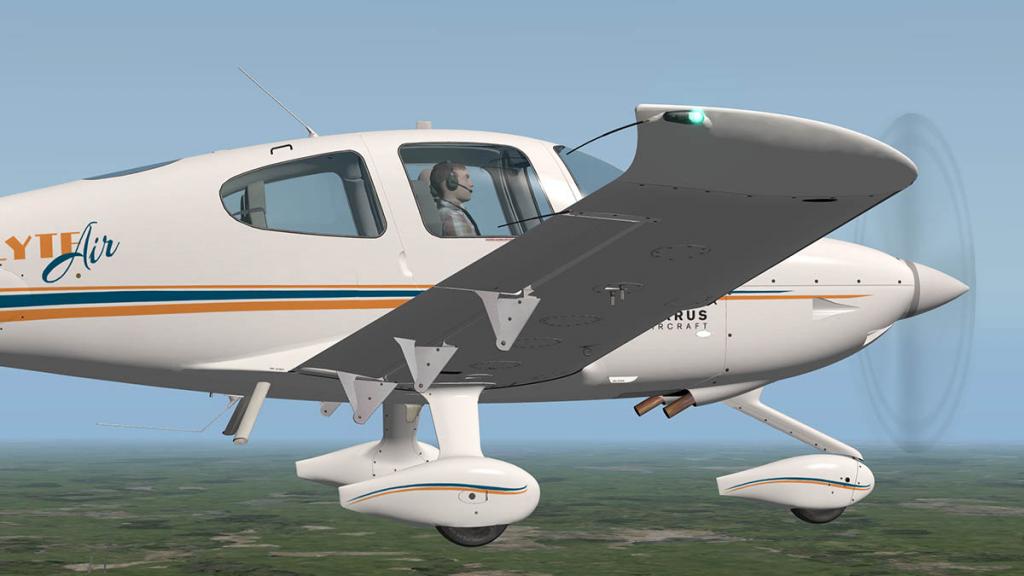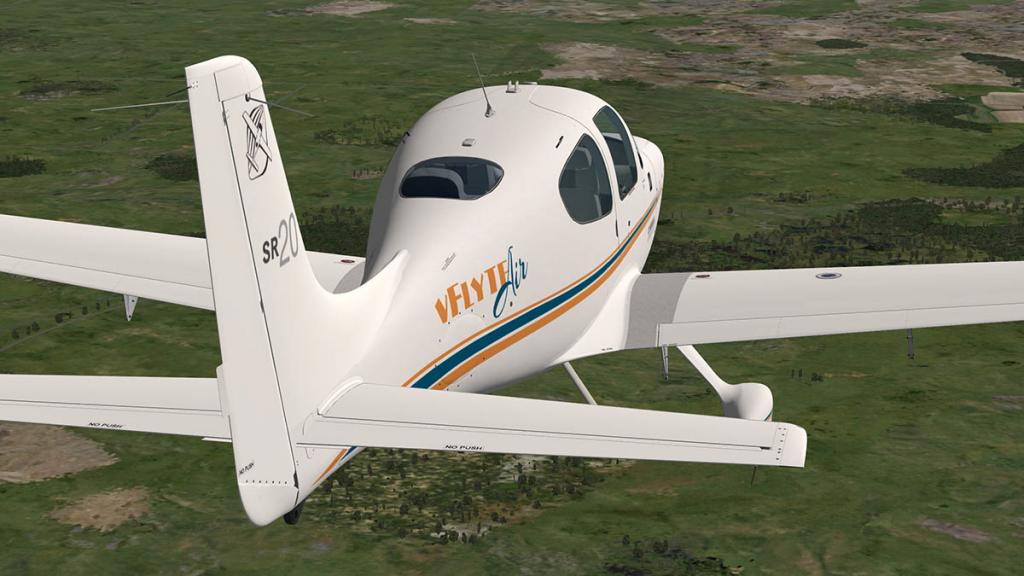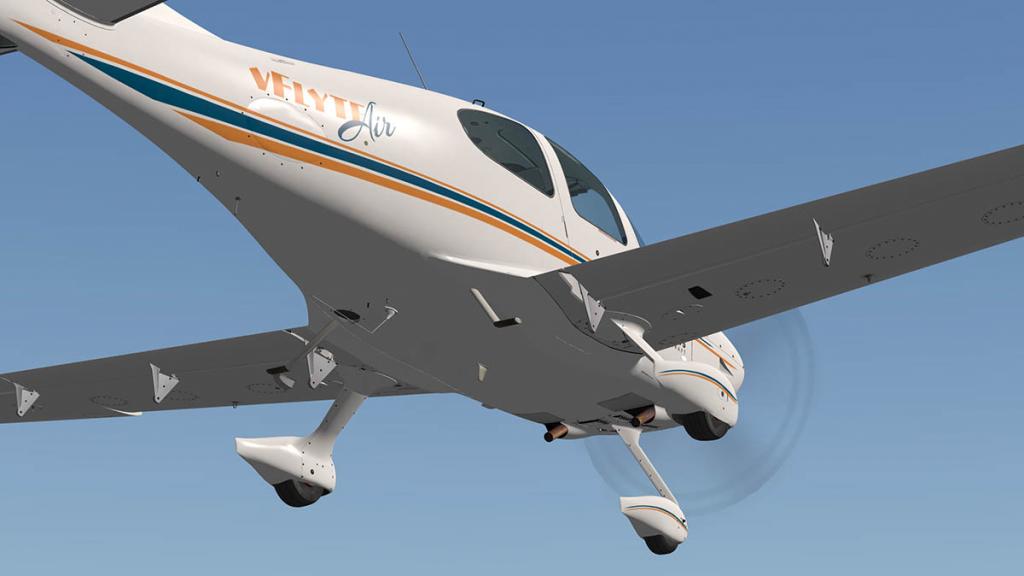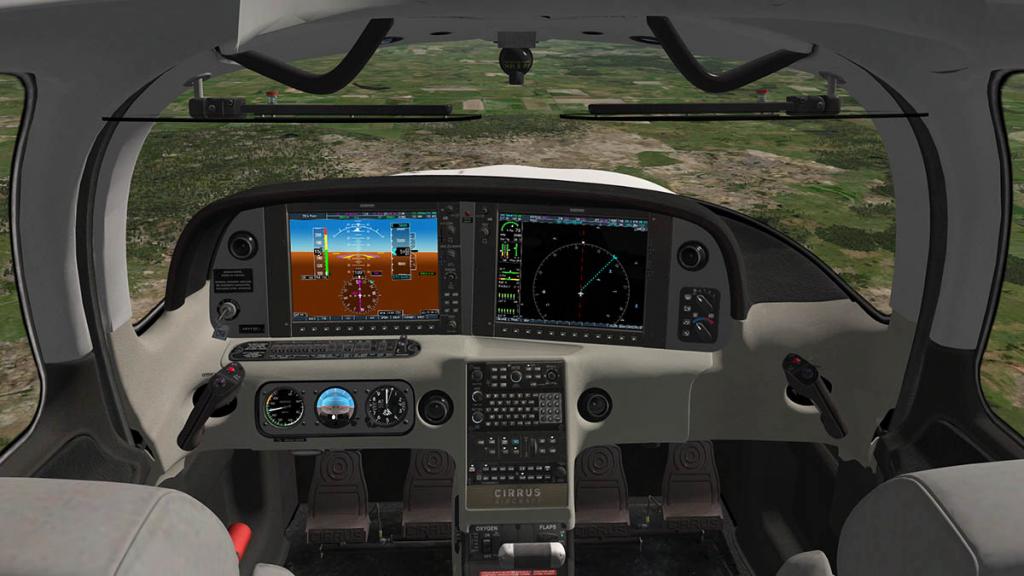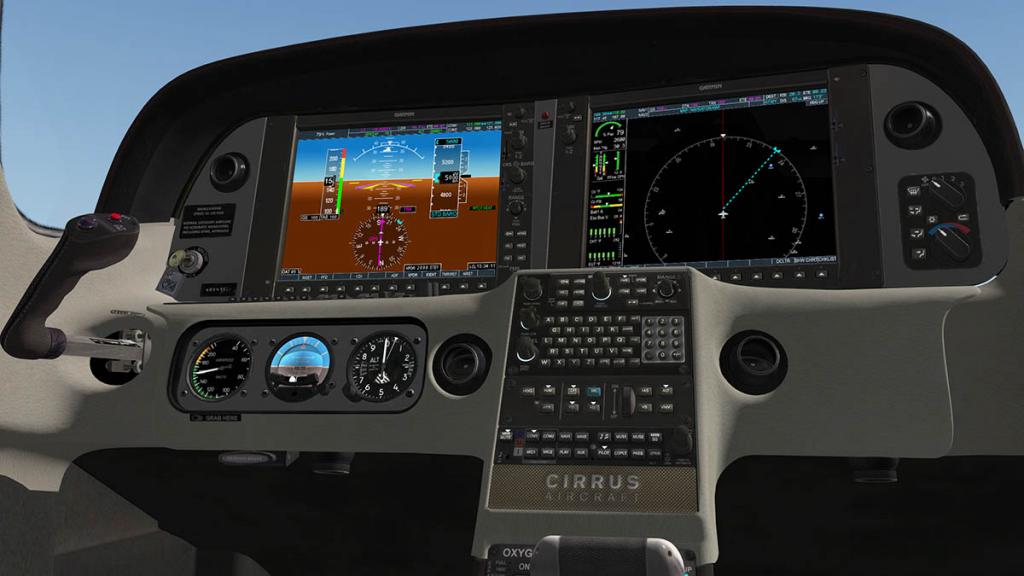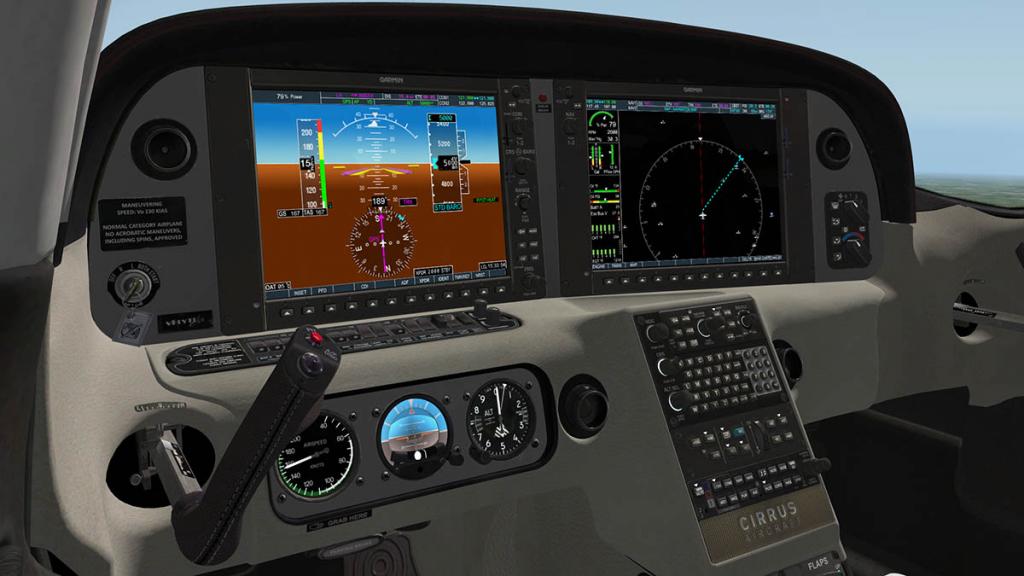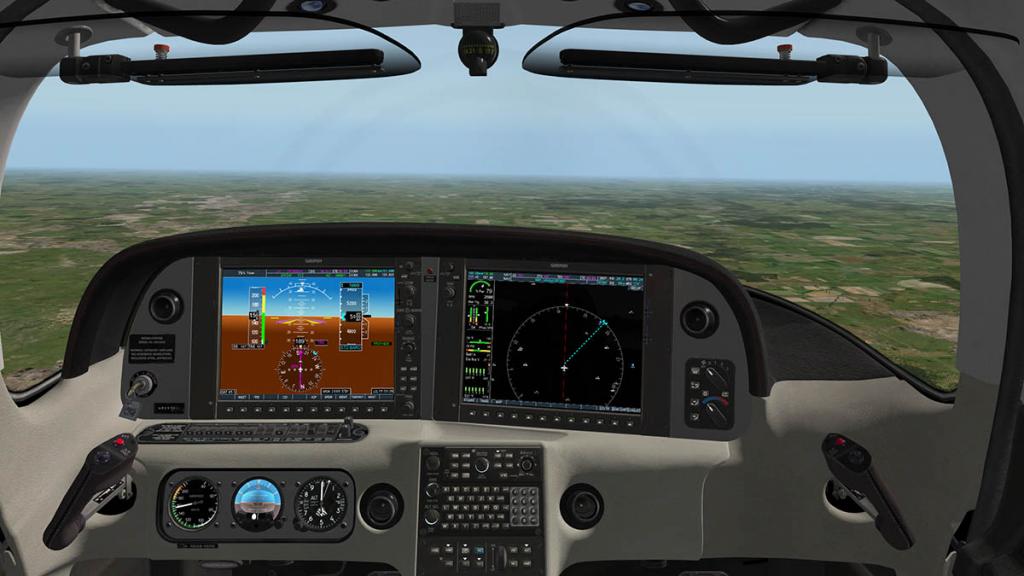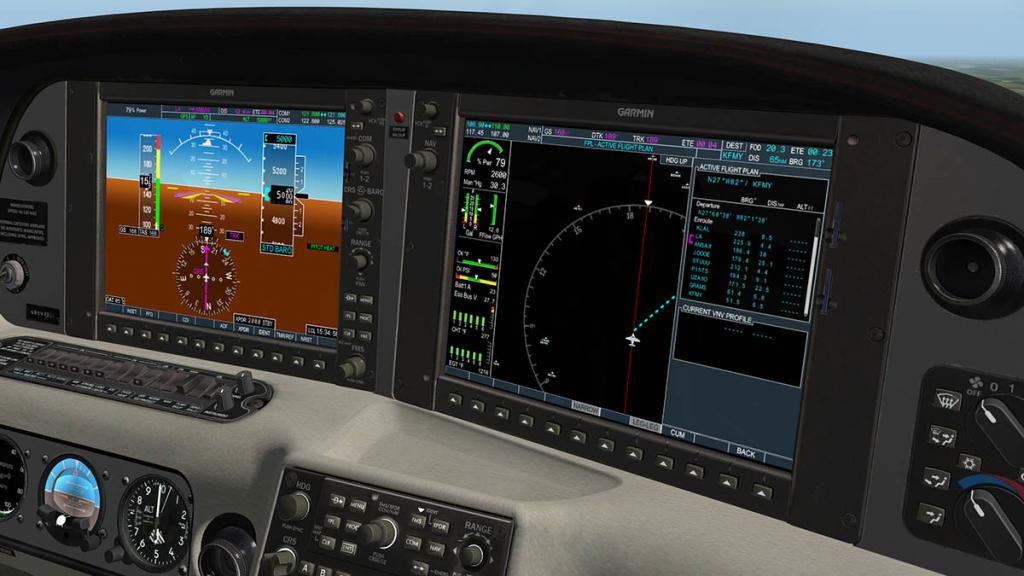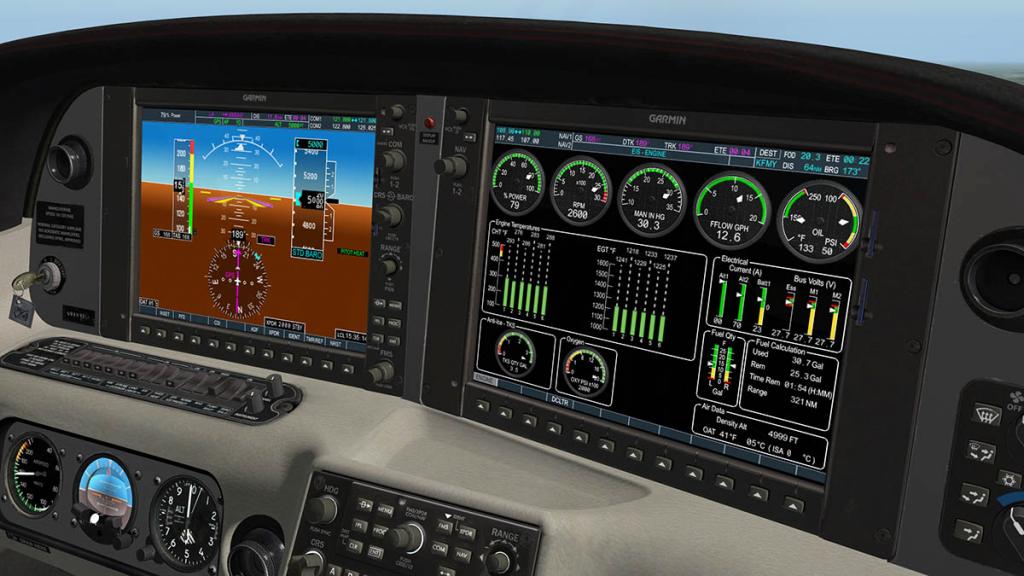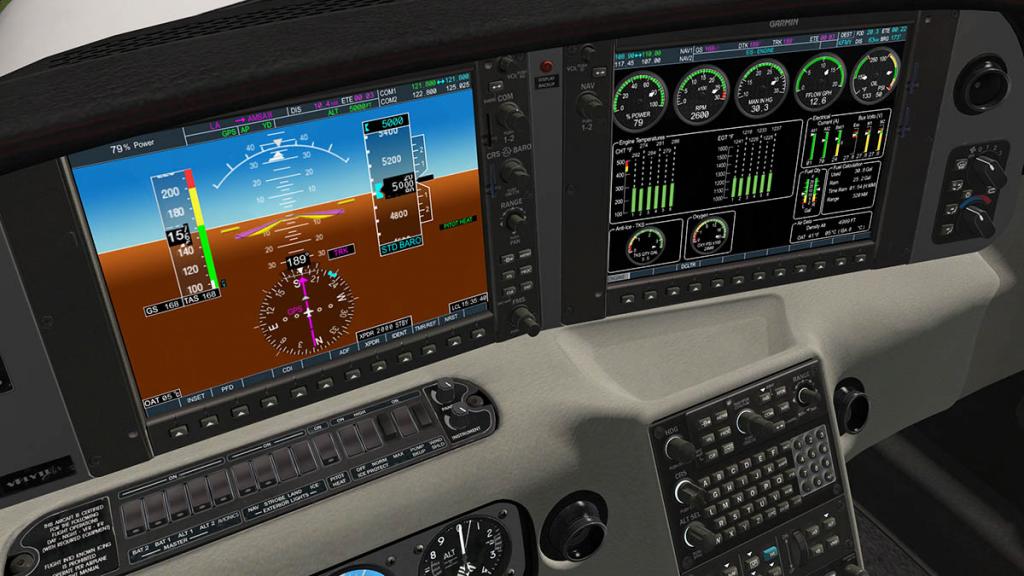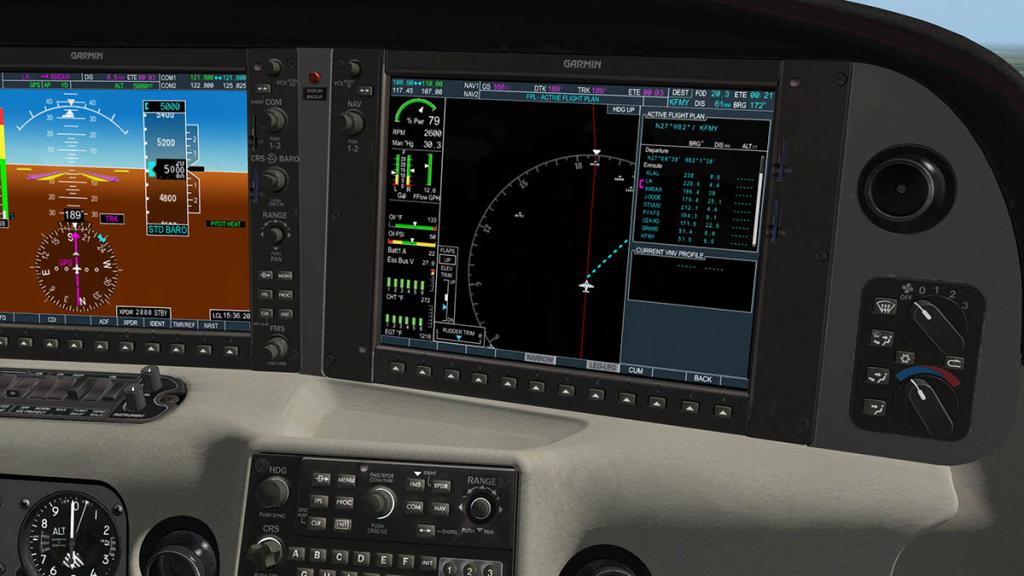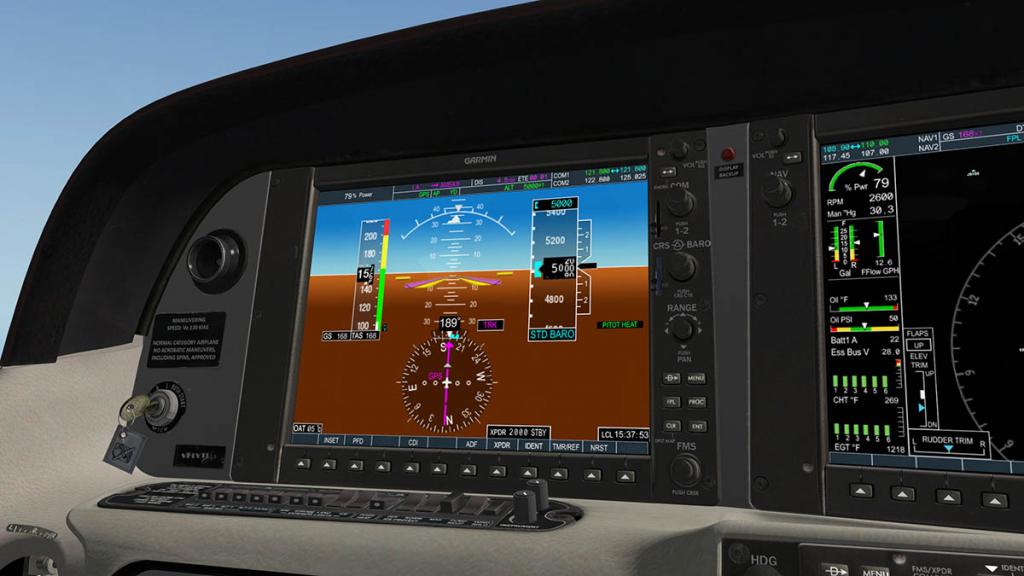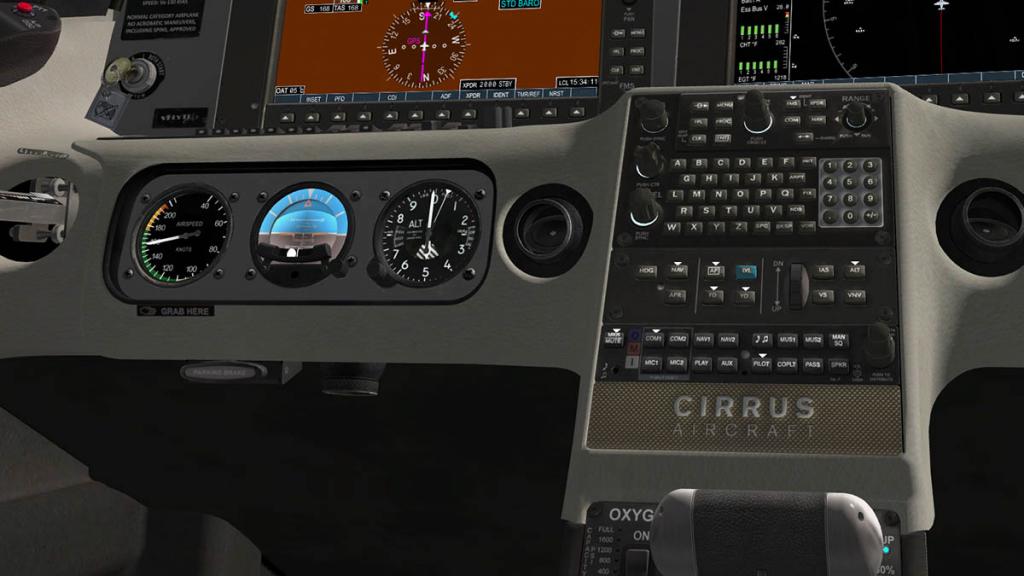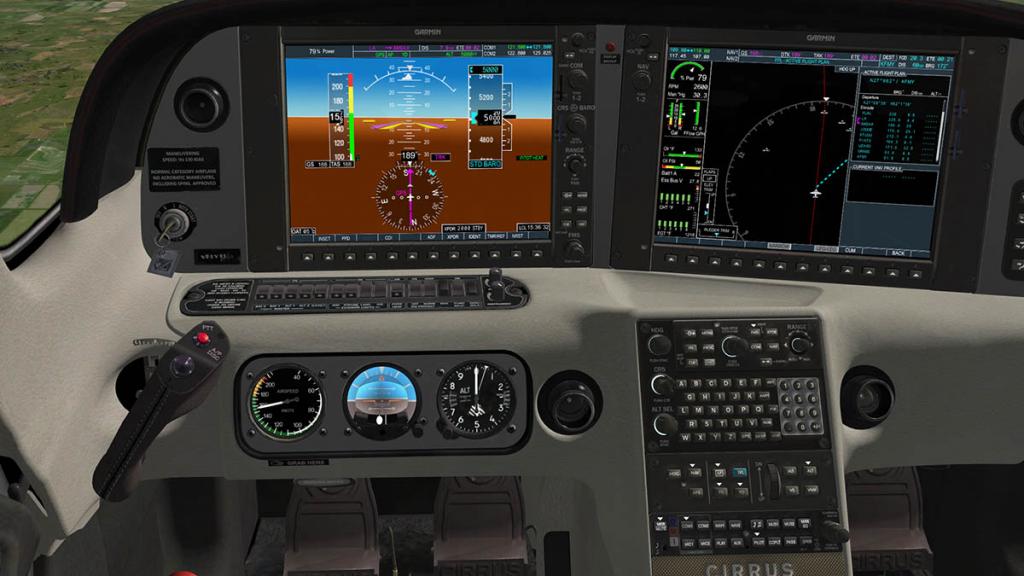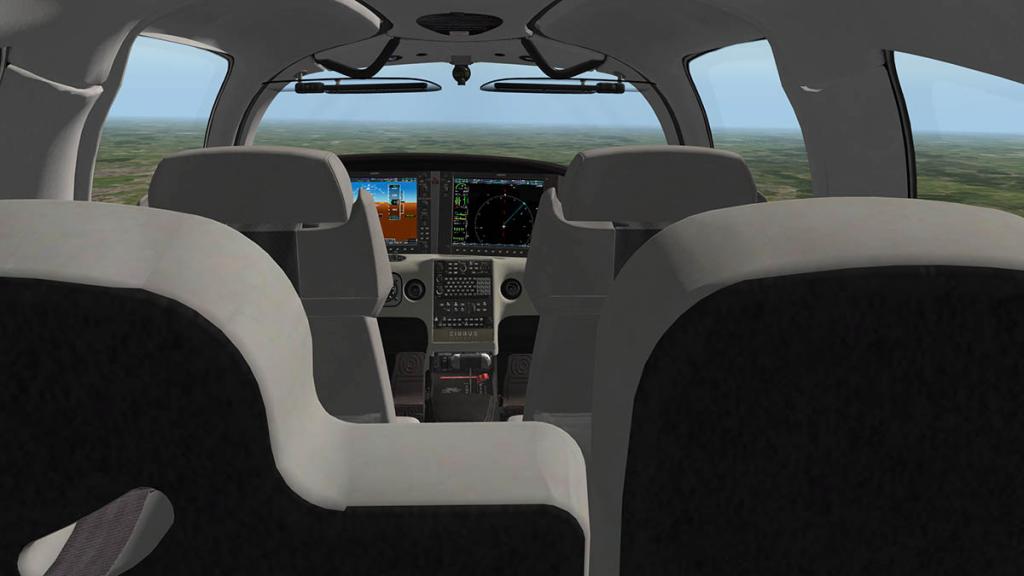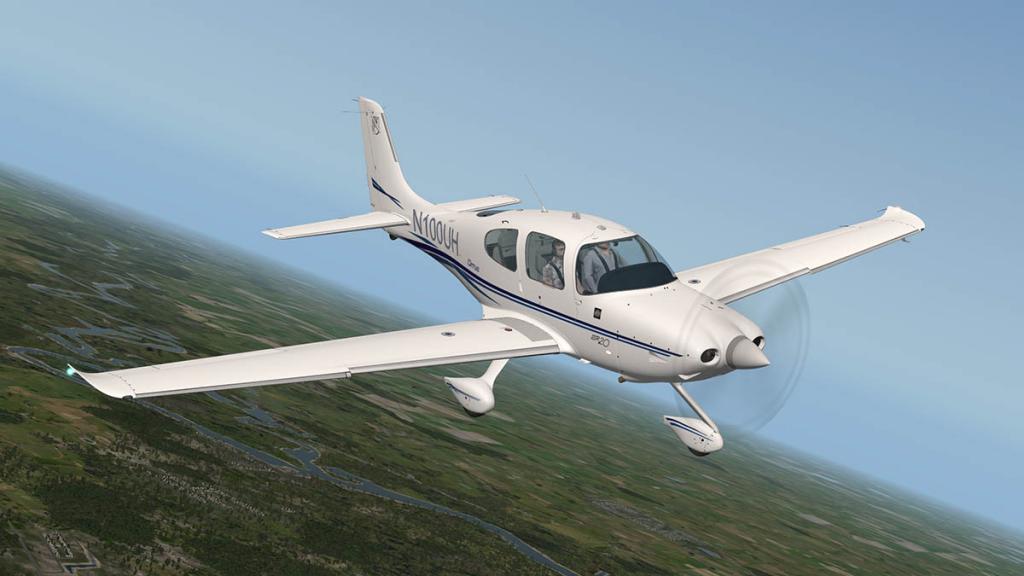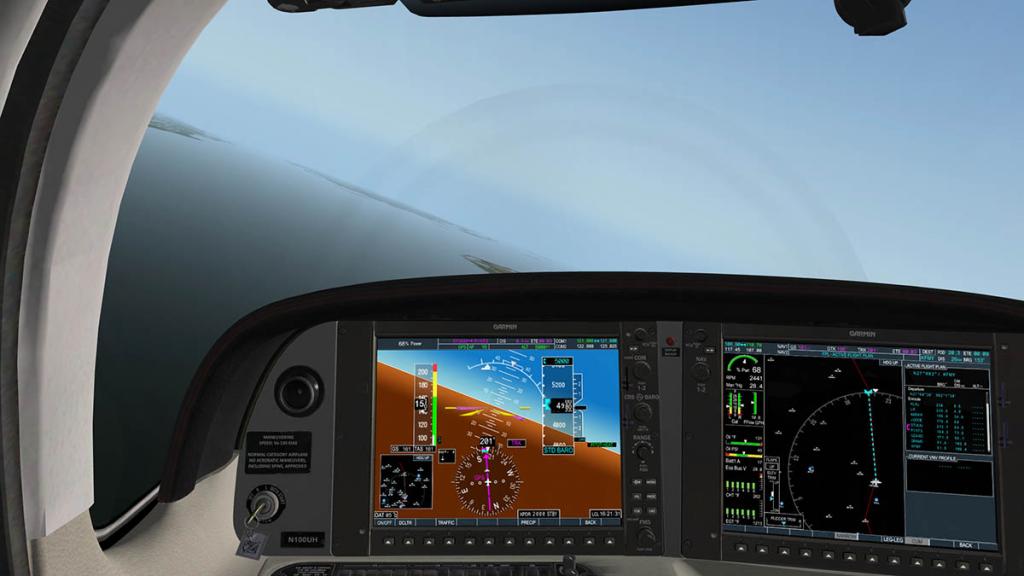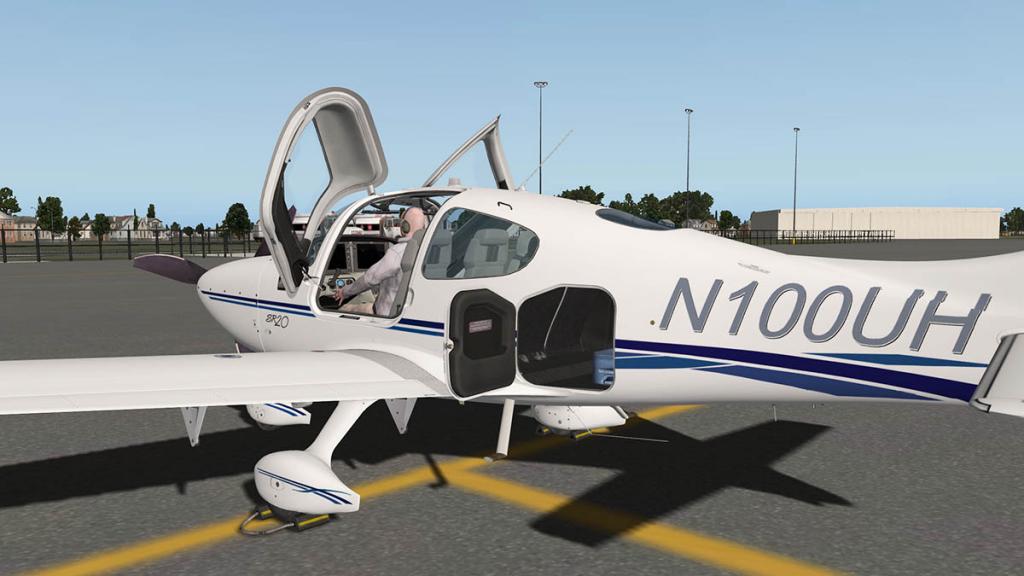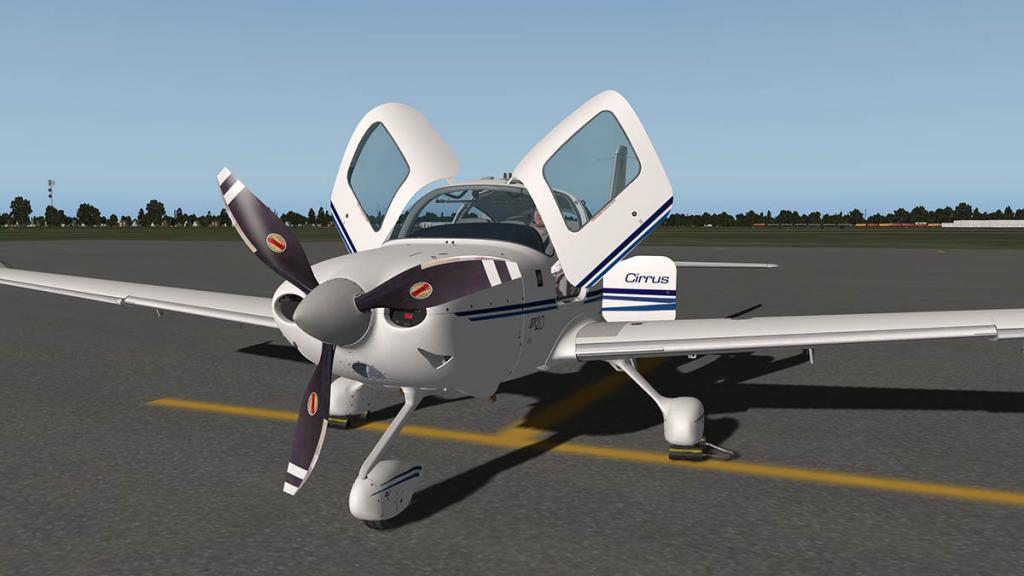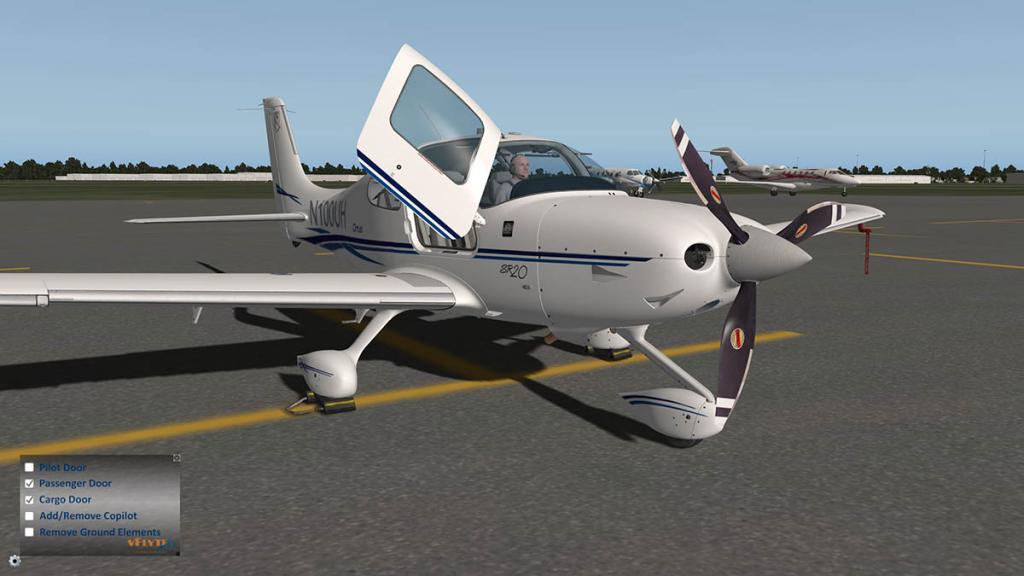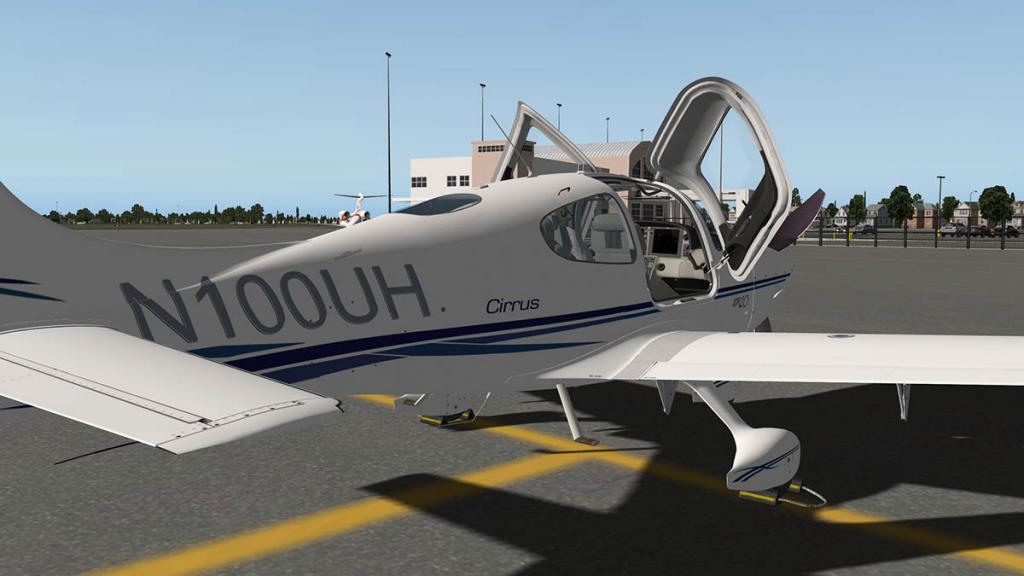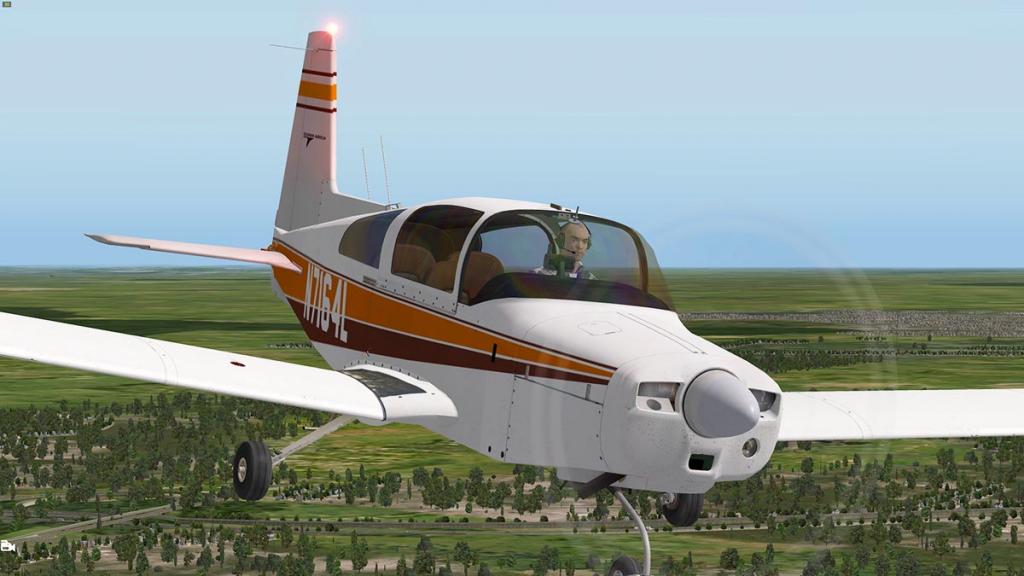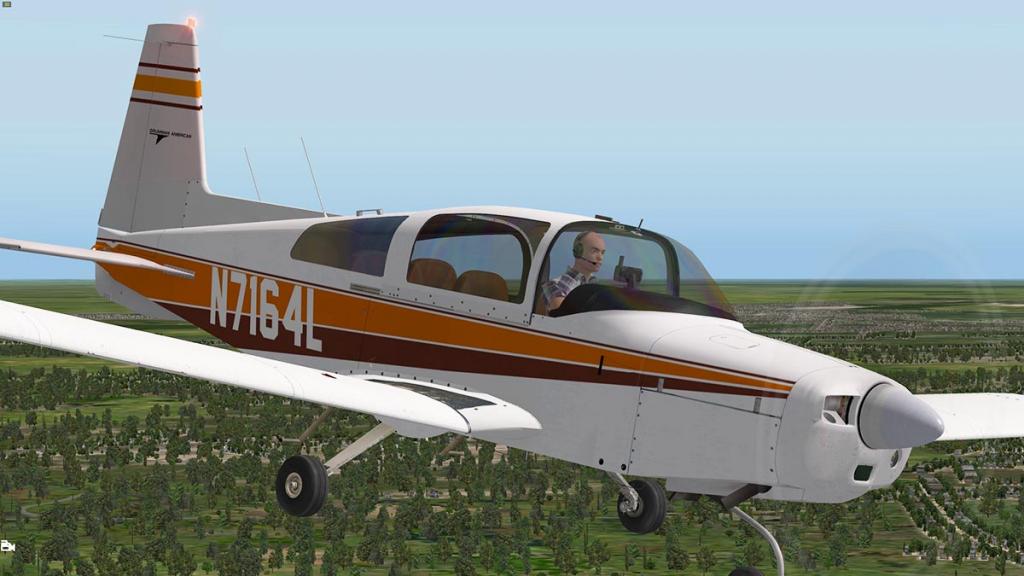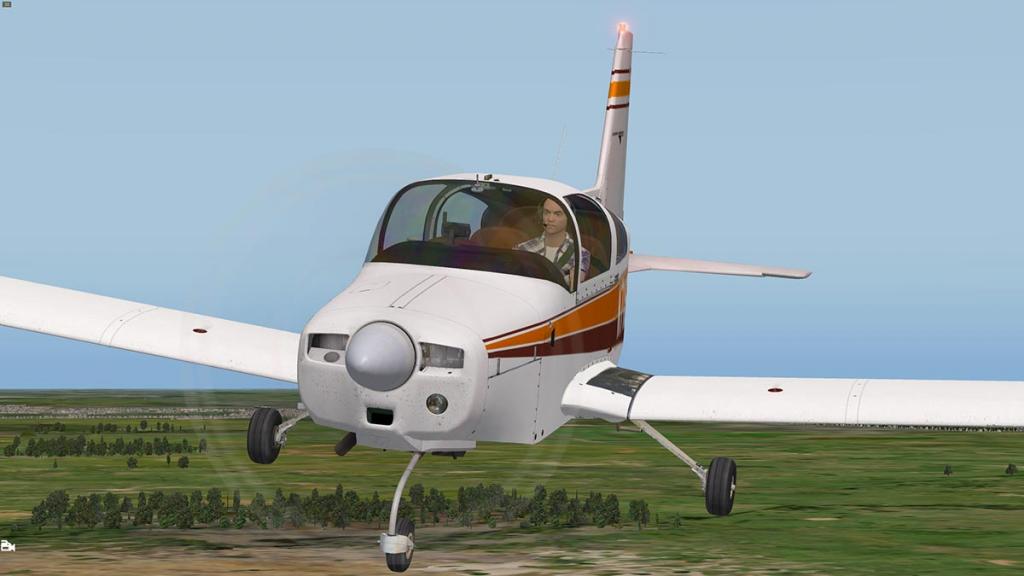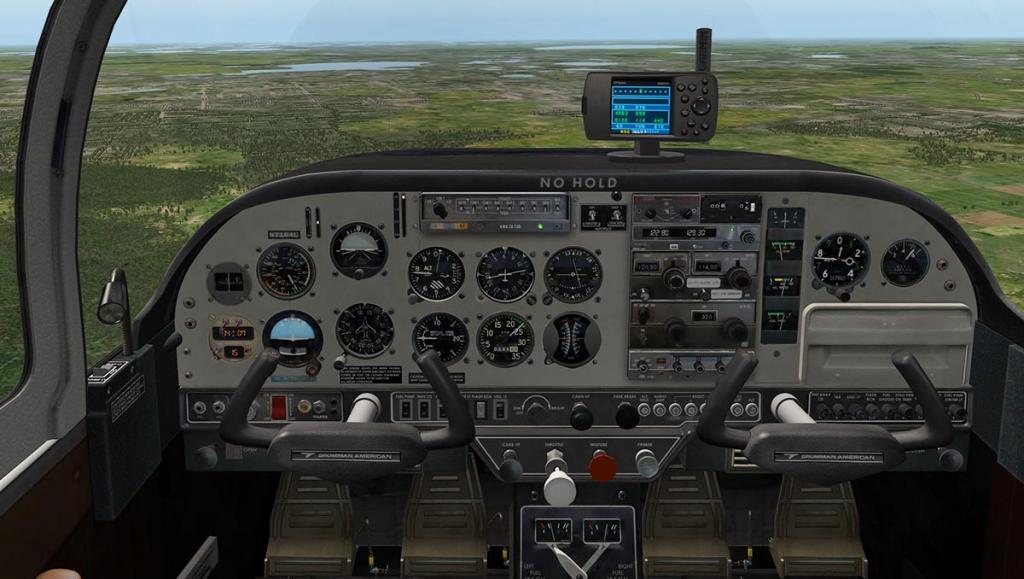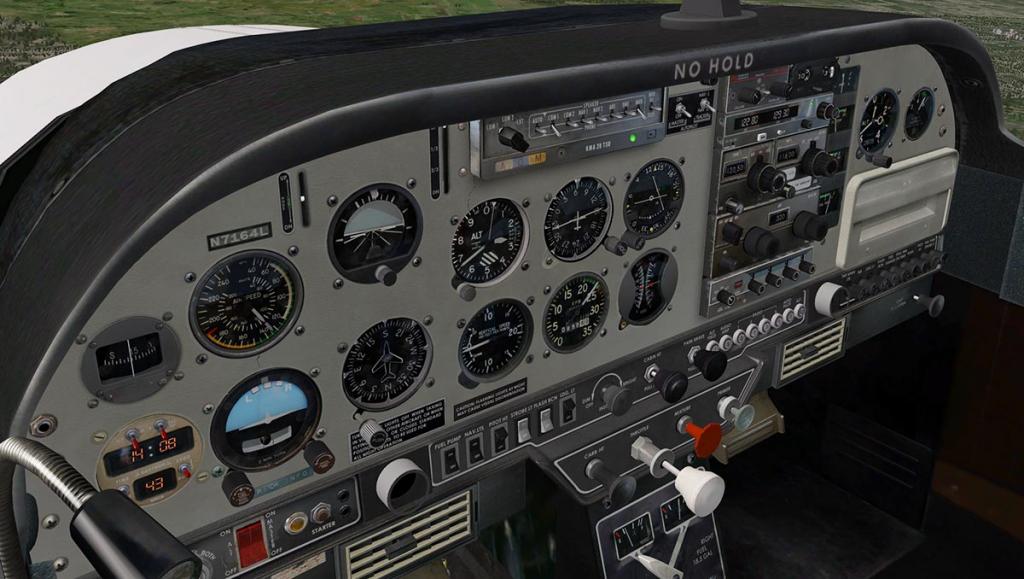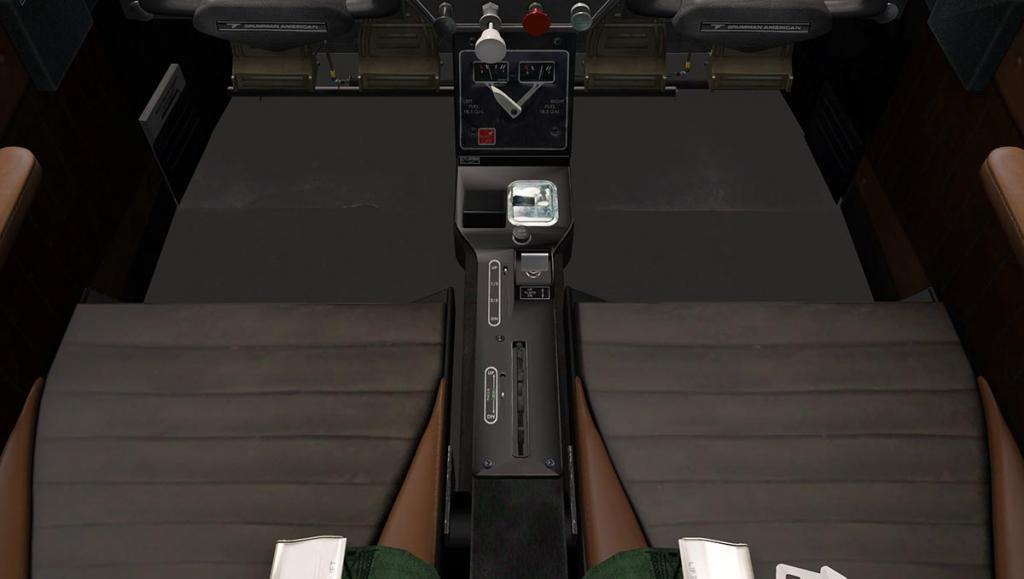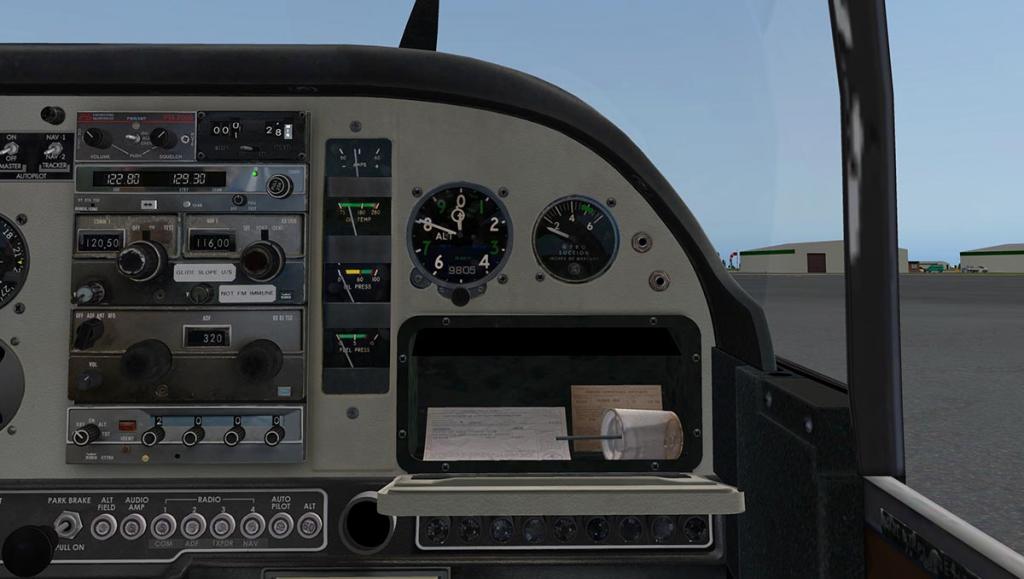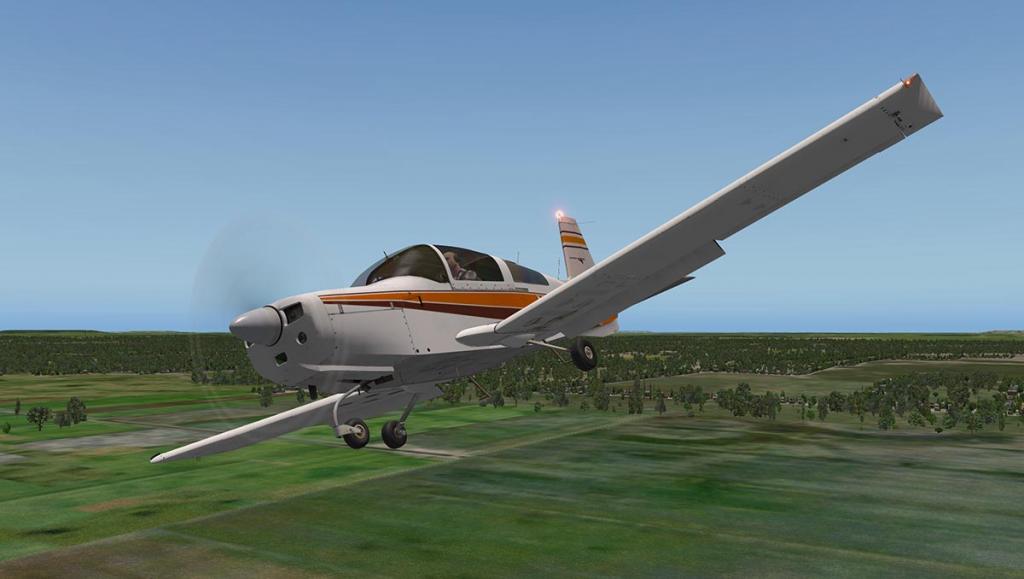Search the Community
Showing results for tags 'vflyteair'.
-
NEWS! - Aircraft Upgrade : vFlyteAir Cherokee 140 for X-Plane 12 vFlyteAir have upgraded their original Cherokee 140 to the X-Plane 12 Simulator. This is an upgrade, but earlier owners of Cherokee XP11 by vFlyteAir, can get this new model for 30% off the full upgrade price. The vFlyAir version of the Cherokee 140, is based on a real aircraft (like most vFlyteAir aircraft), so they all have a very authentic and quality aspects to the aircraft. Originally the vFlyteAir Cherokee 140 was split into three distinctive versions, Original (analog Instruments) and Modern (Glass Intruments) and a Trainer aircraft, these versions were later combined, but here for X-Plane 12 the "glass" panel, analog panel and traditional "trainer" panel) are all included in the same package. The Piper PA-28 Cherokee is a family of two-seat or four-seat light aircraft built by Piper Aircraft and designed for flight training, air taxi and personal use. The PA-28 family of aircraft comprises all-metal, unpressurised, single piston-engined airplanes with low-mounted wings and tricycle landing gear. They have a single door on the right side, which is entered by stepping on the wing. The PA-28 is the fourth most produced aircraft in history. The first PA-28 received its type certificate from the Federal Aviation Administration in 1960 and the series remains in production to this day. Current models are the Warrior, Arrow, and Archer TX and LX, and the Pilot 100 and 100i. The Archer was originally discontinued in 2009, but with investment from new company ownership, the model was put back into production in 2010. Features: Rebuilt and re-engineered for X-Plane 12 Pop-up interactive Options menu, dynamic Load Manager menu and Check Lists menu Three selectable instrument panel configurations ("glass" panel, analog panel and traditional "trainer" panel) Automatic integrated support for the optional RealityXP GTN 650 plugin or the RealityXP GNS430 plugin Guided, interactive pre-flight walk-around inspection with pop-up check lists. Visually check your fuel and oil levels! Remove wheel chocks and cowl plugs during the walk-around. Selectable pilot gender - copilot will be the opposite gender of the pilot Gauge glass and window glass can be hidden Custom shake and vibration effects - airfame and control surfaces shake when engine is running, when approaching a stall condition and upon touch-down Realistic engine start - if turned ON, requires pilot to follow the Cherokee 140 POH procedures for cold and hot engine startup Passengers can be hidden during flight if desired Automatic support for optional AviTab plugin Selectable wheel pants - if installed, the wheel pants reduce drag slightly Start From Cold & Dark option available on the Options menu Optional transparent yokes - if turned ON, the pilot and copilot yokes appear as see-through for a better view of the instrument panel Custom Tow Bar option - use the Tow Bar to push/pull and turn the airplane into your hanger! Quick Livery Change - quickly select a new livery from the Options menu Dynamic Load Manager menu allows the pilot to select pilot and passengers weights and add or remove fuel. A dynamic Center of Gravity chart shows your current loading. Optional Rear Seat - on the Load Manager menu, click on the rear bench seat to install it and to add a rear passenger Check Lists Menu allows the pilot to view the Piper PA28-140 check lists for all normal phases of flight Pop-up versions of the Aspen E5, Bendix/King KFC 230 autopilot and the AXP 340 transponder available by clicking on the instruments FMOD 2 Sound Effects - spatial 3D sounds and Doppler effects have been re-produced for compatibility with X-Plane 12 PBR textures - re-produced for X-Plane 12 compatibility Full high-resolution textures for all interior and exterior objects 3D Rain and Ice effects Full support for Virtual Reality 12 different liveries included - instrument panel tail number placard is updated with each livery change New updated Paint Kit available Updates are automated using the Skunkcrafts Auto-Updater Images are courtesy of vFlyteAir Designed by vFlyteAir Support forum for the Cherokee 140 _________________________ The Piper Cherokee PA140 for X-Plane 12 by VFlyteAir is NOW available! from the X-Plane.Org Store here : vFlyteAir Cherokee 140 X-Plane 12 Priced at US$29.95 If you already own the Original Cherokee PA140 XP11 then you can update to this X-Plane12 version for 30% of the cost price, just go to your X-Plane.OrgStore account for the voucher Requirements: X-Plane 12 (not for XP11) Windows, mac or Linux 8 GB+ VRAM Recommended Version 12.0 (February 9th 2024) ________________ NEWS! by Stephen Dutton 10th February 2024 Copyright©2024: X-Plane Reviews Disclaimer. All images and text in this review are the work and property of X-PlaneReviews, no sharing or copy of the content is allowed without consent from the author as per copyright conditions) All Right Reserved.
-
NEWS! - vFlyteAir updates Piper Arrow III, Piper Twin Comanche and Cessna 150 Commuter to X-Plane 12 Quality General Aviation aircraft for Simulators are important. Any learner pilot needs access to a quality model, they need perfect performance and exact handling to get the feel of the aircraft in the process of training to fly that aircraft. Thankfully X-Plane is known for it's supreme flight dynamics, so add in a quality and well developed aircraft, one that delivers the best Simulation you can have, and you create the perfect ultimate training tool. These important aspects are behind vFlyteAir Simulation's philosophy. All their aircraft have been designed around a real donor machine, so the results are perfect imitations of the real aircraft. vFlyteAir not only reproduce the aircraft, but perfect their performance and flying dynamics for Simulator flying and training. Here now vFlyteAir have updated three of their aircraft to X-Plane12, these are the Piper Arrow III (in both G5 and E1000 configurations), the Piper Twin Comanche and the Cessna 150 Commuter. All three aircraft are "Upgrades" to X-Plane 12, but current X-Plane 11 owners can upgrade to the X-Plane 12 version for 40% off the current price. Piper Arrow III Based on the PA-28 Cherokee, the Arrow III is a four-seater, retractable landing gear aircraft, powered by a Lycoming IO-360-C1C6 engine of 200 hp (149 kW). It was first certified on 2 November 1976. X-PlaneReviews did a full comprehensive review here of the vFlyteAir X-Plane 11 version; Aircraft Review : Piper PA28R Arrow III G5 - E1000 by vFlyteAir Here the aircraft comes in three configurations, the Garmin G5, Aspen EFDE1000 and the old style Analog gauges. RealityXP® Plugin Support is also available - Both Arrow III versions have integrated, automatic in-panel support for up to six different RXP plugin configurations, including RXP g430, RXP GTN650 and RXP GTN750 options. ____________ Piper Twin Comanche The Piper PA-30 Twin Comanche was designed as a twin-engined variant of the Piper PA-24 Comanche. A complex light twin, with retractable landing gear, seating 4 (in original models) to 6 (in later models), and cruise speeds ranging from 160-210 mph on twin 150-160 horsepower engines, it competed with the more-powerful Cessna 310 and Beech Baron, and later with Piper's other light twins. X-PlaneReview of the vFlyteAir Twin-Comanche is now a bit dated (2017), but worth a look; Aircraft Review - Piper PA-30 Twin Comanche by vFlyteAir Notable is the X-Plane 12 version of the Twin Comanche has been rebuilt from the ground up. Comes in two versions, Glass Cockpit (Garmin G5 PFD/HSI) and standard Steam Gauge analog version. There is also built-in support for RealityXP® GTN750, GTN650 and GNS530 plugins. Features Include; Rebuilt from the ground up for X-Plane 12! New instrument panel features vFlyteAir custom Garmin G5 PFD/HSI combination – no 3rd party purchases required Built-in support for RealityXP® GTN750, GTN650 and GNS530 plugins (must be purchased separately from RealityXP®) “Steam Gauges” panel version included if you prefer to fly using analog instruments Magneto switches and starter switches are now located on the lower left of the instrument panel Flight model optimized for X-Plane 12 Fuel tanks and fuel tank selectors work like the real Twin Comanche. For convenience, the fuel tank selectors can be operated from the Options Menu Functional, realistic emergency gear deployment FMOD 2.02 sounds for X-Plane 12 compatibility with Doppler effects and spatial effects New popup menu with Options, Load Manager and Checklists Highly detailed 3D model with realistic animations Shake/vibration effects based on engine speed, stalls, and touch-down events. Can be turned off in Options Menu Selectable male or female pilot (selectable in Options Menu) Gauge glass and window glass can be hidden (see Options Menu) for better clarity VR compatible Pilot headset provides sound attenuation Built-in support for AviTab plugin (available separately) Full interior and exterior PBR textures XP12 rain and ice effects XP12 exterior lights Automatically updated using the Skunkcrafts Updater plugin (separate download) ____________ Cessna 150 Commuter The Cessna 150 is the fifth most produced aircraft ever, with 23,839 produced. The Cessna 150 was offered for sale in named configurations that included the Standard basic model, the Trainer with dual controls, and the deluxe Commuter, along with special options for these known as Patroller options. American-made 150s were all produced with the Continental O-200-A engine of 100 horsepower (75 kW). A trainers... trainer aircraft, the Cessna 150 is the perfect start to any aviation career. X-PlaneReviews did a full comprehensive review here of the vFlyteAir X-Plane 11 version; Aircraft Review : Cessna 150 Commuter by vFlyteAir Fully rebuilt from the ground up for X-Plane 12, the Cessna 150 Commuter comes with four different instrument panel options... Trainer, Commuter, Commuter W/ADF and Commuter W/GPS. Features Original, authentic Cessna 150 sounds professionally recorded and engineered by Mike Maarse, SimAcoustics Four different panel options - the Basic Trainer panel is perfect for students or those who simply want to fly with basic navigation. The Commuter panel has three different selectable configurations depending on your needs Click on the pilot's headset (hanging from the window sill) to reduce exterior noise by approximately 12 dB Airspeed indicator can be changed from MPH-over-KTS to KTS-over-MPH Altimeter can be changed from in hg to hPa Optional Custom Engine Start feature - when ON, the Custom Engine Start logic requires the pilot to follow engine start procedures per the POH including throttle lever setting, mixture setting and priming Keep your Twin Comanche up to date with the SkunkCrafts Updater (separate download) Integrated support for the AviTab plugin Checklists provided for the XChecklist plugin (available here) Super hi-res textures PBR effects 14 different liveries including a blank white Paint kit available "Save States" preferences - more than 50 different settings, options and preferences are saved each time you fly. Your settings are restored the next time you fly. Dynamic, animated rain effects Design by vFlyteAir Support forum for the PA 30 Twin Comanche Images are courtesy vFlyteAir Simulations ________________ Yes! all thevFlyteAir Simulation aircraft in, Arrow III, Twin-Comanche and Cessna 150 Commuter are now Available from the X-Plane.Org Store here : Piper PA28R Arrow III G5 - E1000 XP12 Price Is: US$33.95 XP11 version (Arrow III XP11) owners can get the XP12 version for 40% off... US$20.07 Requirements X-Plane 12 (not for XP11) Windows, MAC, or Linux 4 GB VRAM Minimum - 8 GB+ VRAM recommended Download size: 468 MB Version 12 (June 15 2023) ________________ Piper Twin Comanche PA30 XP12 Price Is: US$34.95 XP11 version (Twin Comanche XP11) owners can get the XP12 version for 40% off... US$20.97 Requirements X-Plane 12 (not for XP11) Windows, Mac or Linux 4 GB VRAM Minimum. 8 GB+ VRAM Recommended Download Size: 515 MB Current version : 12 (June 15th 2023) ________________ Cessna 150 Commuter XP12 Price Is On sale: US$29.95 XP11 version (Cessna 150 Commuter XP11) owners can get the XP12 version for 40% off... US$17.97 Requirements X-Plane 12 (not for XP11) Windows, Mac or Linux 4 GB VRAM Minimum. 8 GB+ VRAM Recommended Download Size: 863 MB Version 12 (June 15th 2023) ________________ News by Stephen Dutton 16th June 2023 Copyright©2023: X-Plane Reviews (Disclaimer. All images and text in this review are the work and property of X-PlaneReviews, no sharing or copy of the content is allowed without consent from the author as per copyright conditions) All Rights Reserved
-
NEWS! - vFlyteAir updates Piper PA28R Arrow III G5 - E1000 v1.50 vFlyteAir has updated the Piper PA28R Arrow III G5-E1000 to v1.50. A cracker of an aircraft, that is one of the very best General Aviation aircraft currently available for the X-Plane Simulator, it is a must have if you want the perfect genuine GA aircraft to fly or learn on. Focus here in v1.50 is refining the G5 avionics, and added integrated support for RealSimGear G5 hardware units. Only flight dynamic changes are modified wing airfoils to improve landing behavior. Version 1.50 (June 16, 2022) - Added integrated support for RealSimGear G5 hardware units - Improved G5 screen graphics to be more realistic - Fixed: Press and hold G5 PFD knob was not synching ALT Preselect - Fixed: Press and hold G5 HSI knob was not synching OBS to current course - Improved frame rate when G5 popups are not active - Modified wing airfoils to improve landing behavior - Fixed: G5 Altimeter 100s digits now scroll up/down when approaching new Alt The Arrow lll comes highly recommended, and X-PlaneReviews did a full comprehensive review here; Aircraft Review : Piper PA28R Arrow III G5 - E1000 by vFlyteAir If you are a previous purchaser of the vFlyteAir Piper Arrow lll G5-E1000 then go to your X-Plane.OrgStore account and download v1.50, if not you can purchase this sensational aircraft below. ______________________________________ Yes! the Piper PA28R Arrow III G5 - E1000 by vFlyteAir GA is now available from the X-Plane.Org Store here : Piper PA28R Arrow III G5 - E1000 Price is US$33.95 Requirements X-Plane 11 Windows, MAC, or Linux 4 GB VRAM Minimum - 8 GB+ VRAM recommended Download size: 475 MB Version 1.5 (June 24th 2022) ___________________________ NEWS! by Stephen Dutton 25th June 2022 Copyright©2022: X-Plane Reviews (Disclaimer. All images and text in this review are the work and property of X-PlaneReviews, no sharing or copy of the content is allowed without consent from the author as per copyright conditions) All Rights Reserved
-
Aircraft Review : Piper PA28R Arrow III G5 - E1000 by vFlyteAir You are now requiring a spreadsheet to workout all the versions and the configurations of vFlyteAir's venerable Piper PA28R Arrow lll. And also not to be confused with the very similar vFlyteAir Piper Cherokee PA140 Original/Modern versions, the latter with the Aspen E1000 Evolution. There was three earlier versions of the Arrow lll, and this new version tends to bring everything together into one single package, but is this not an upgrade as in v4. But it looks like an extensive upgrade even though it is not listed as one, as the basic aircraft is still the same. Lost however now to the changes of time, is the original early version of the Archer lll. The first releases of the vFlyteAir Piper PA28R Arrow lll was a relic from the Piper's past with brown leather seats and woodgrain panels, and replicated on a real life aircraft in a 1977 PA28R-200 located in Texas, USA. You can check out the original 2014 release review here; Aircraft Review : Piper Arrow IIIv2 PA28R-200 by VflyteAir You can easily see that the external side of the aircraft has barely changed at all (except for better HD and PBR effects), but internally it is a very different world to this new release. Debatable is the fact if you wanted an olde world version of the Archer lll, then I doubt that original feel and look would now ever come back into our lives, but in a lot of ways I really liked the older deal of it all. That was then, and this is now. Notable is that this release of the Piper PA28R Arrow III is noted as an all new release, meaning it is a new aircraft and NOT a free update. But there is a release discount available (limited time) for previous owners of the earlier vFlyteAir Archer lll. Piper PA28R Arrow III G5 - E1000 by vFlyteAir As noted this release tends to bring together all the past different variants and elements into this one version... Basically there are three different configurations in the two aircraft selections. The two aircraft selections are the "Arrow lll E1000" and "Arrow lll G5" from your X-Plane "Flight Configuration" page... The "E1000" aircraft is the Aspen E1000 Evolution by Mario Donick. The "G5" is the Garmin G5 is also developed in house by vFlyteAir On either of the above configuration choices there is still the option of the use of the original traditional "steam gauge" analog panels. External Since the last HDR makeover not much has changed externally for the vFlyte Arrow lll, but that it needed any revision anyway. Brilliantly done, the Arrow lll is extremely well modeled. And it has some serious competition from JustFlight with their own extremely detailed PA28 Arrow lll. The external areas have been refined, but just enough to bring them up to date in the level of detail and the extreme quality that X-Plane in this category requires today. Internal Inside though the vFlyte Arrow lll is very different to the placid external changes. The cabin fit-out and the materials used inside are extremely different of the earlier brown leather and wood. It is bright in here, with the lux cream seating with grey inserts. Linings are also a modern cream and beige, so the whole cabin is very bright and airy. The detailing is of very high and lovely quality. It does feel lush in here... there is no exposed metal lower down, and the heavy grey carpet pile and rubber mats adds into the luxury feel... current X-Plane trend of Coffee (cups) in aircraft also continues. It is all very plush. Note the nice headphones on the seats. Unlike the older molded 70's style instrument panel, all three panels are now just a mottled sheet metal in dark grey for the G5 and Analog versions, and the light grey for the E1000 Aspen. Panel metal and texture feel is excellent, very realistic. Menu The menu system has sort of changed a little from previous vFlyteAir menus. You select the Menu via either the "Piper" tab lower left screen, or from the X-Plane Plugins Menu "Show/Hide Options Menu". Note the Piper Tab is fixed visible, one thing I don't like as I like a clear screen when flying. The menu can be moved around the screen, but also scaled from very large to very small... a nice change as early vFlyte Menus were over large and fixed. You can change the livery via the arrows (Previous and Next Livery). The main cabin door and behind right wing baggage door can also be opened as you can also add in "Ground Equipment" Chocks, Inlet covers and tags. Oddly there are two ground equipment options that do the same thing, actually there are three? "View Checklists" you can also pop-up the checklist panel that is also scalable, but under a certain size it is totally unreadable? There is a "Tow Tractor" that allow you to manoeuvre the aircraft on the ground. and a CG (Centre of Gravity) graph to find the best balance. Total Weight Lbs and Total Weight Kgs are also shown. Preferences cover; Hide/Show Interior Glass, Hide Passengers Interior View, Hide On-Screen Warnings, Hide Ground Equipment (that third choice?), Use Custom Engine Startup, Hide/Show Avitab (plugin required) and Use Shake Effects. The AviTab is positioned on the Left Yoke, which makes it very easy to use and view. Panels; Here you can select the Glass Panel or the older Analog Gauge Instruments Passengers & Fuel; There is always a Pilot, (you can actually hide the Pilot, but only by leaving the cabin door open? I mean leave the aircraft with an open door all the time when the aircraft is not being used? very odd, if even stupid idea... just have him disappear when the power is off) You can select the Pilot's weight, and then selecting the weights of the other three passengers will make them all appear in the aircraft... ... they are all very well modeled and lifelike, they are also all animated to the axis of the pitch, roll and yaw. Adding in the baggage weight will add in bags (in Lbs) into the rear baggage area. Fuel can be added into each tank via the sliders (38 Gals each) and everything is calculated on the CG Graph. Instrument Panel(s) First the twin-yokes are chunky and filthy dirty... fabulous. The A/P disconnect works as does the MIC (it brings up the X-Plane ATC panel). Both yokes can be hidden, but not individually. Oddly the yoke Electric Trim buttons don't work or move, usually de rigueur by now. Dial layouts are the same for the E1000 and G5 and the analog, however the G5 uses a different Garmin GFC 500/600 Autopilot Highly noticeable is the blackhole circle in the instrument panel? The glass seems to be not installed or it is non-reflective, it looks however very odd, and users have complained the instrument is missing? It isn't, it is just this blank dead hole in the instrument panel. Powering up the panel... and the dead instrument comes alive, it is the Garmin GI 275 EIS Engine Instrument System. It has two modes, first the Fuel Remaining, Flt Hours, HOBBs Hours and Tach Hours display, then press the "Continue" to go to the main EIS display. The engine instrument display can also be popped out and scaled. The EIS display covers; (top) Fuel GAL, RPM, MAN (Manifold Pressure) in, Oil Pressure and Oil Temperature, CHTº (Cyl Head Temp), EGTº (Exhaust Gas Temperature) FF GPH (Fuel Flow Gals per hour), Batt and Bus Volts and OATº (Outside Air Temperature). There are other EIS feature we will see in flight. Avionics As it is the main feature of this release we will start with the Garmin G5. Garmin G5 EFI Branded here as the vFlyte G5 EFI (nice Garmin touch on the logo), when you turn on the power you have to still manually activate the 3.5 inch colour displays G5s by turning on both units on via their retrospective power buttons. Then they both go through a short startup and alignment routine. The same start button activates a "Backlight" adjustment (hold down to turn off), or you can use the "Auto" lighting setting (far too low for me, as I found out over 200 nm!) Adjustment of the brightness is via the right knob. Both the upper ADI (Attitude Display Indicator) and the lower HSI (Horizontal Situation Indicator) displays pop-out for ease of use. And for a home cockpit installation both can also be set as a window and scaled to size. Another feature is that the G5 System has a battery backup, that can be used in time before the system shuts down (above). If you lose power, on the timer shutdown procedure you can press the adjustment knob to switch over to the backup battery that has a 4 Hour backup limit. The power or time remaining is shown on both displays upper left (arrowed). ADI (Attitude Display Indicator) Although only 3.5 inches in size the G5 displays cram in a lot of flight information. They look like a slightly larger central integrated standby instrument (ISFD). Speed and Altitude tapes dominate each side with V/S on the far right, with a Bearing Compass top. Banner top has Radio setting, and Autopilot functions. Centre is a large Artificial Horizon with Pitch and Flight Director Bars. Lower is a ball Rate of Turn Indicator. TAS, GS ALT and Baro are also displayed as are vRefs. Press the right button to bring up the G5 Menu, you can scroll through the menu via turning the rear knob... .... there are six menu selections; Back, Heading, Altitude, Baro, ESP and Setup. Heading and Altitude are basically the same as using the A/P panel... changes are again by using the rear knob. Baro adjustment is just the pressure adjustment.... ESP is interesting? Electronic Stability & Protection is a feature designed to keep a watchful eye on an aircraft’s flight condition. When it is selected on ESP shows the boundaries permitted before the aircraft will take action to protect itself, and bit like Lane Assist in a car. If you roll (or pitch) out of the aircraft safe parameters, then the system will correct the parameters to protect the aircraft. You can turn it off here, if you dare. But I think the feature is not yet active by vFlyte, it isn't mentioned in the Manual. Setup : selects a menu with three choices; Airspeed Units, Altimeter Units and BARO Units. Again it is a select and turn adjust system. When selected the option turns purple, then adjust the rear knob for the selection, here between Baro Millibars to hPa. Hold down the knob to hide the Menu. It is all quite simple to use. Airspeed Units are KNOTS-MPH-kM/h, and Altimeter Units are FEET and METERS. HSI (Horizontal Situation Indicator) The lower HSI (Horizontal Situation Indicator) is the rotating compass in a heading north orientation with 5º markings. Shown is anti-clockwise; Heading, Wind/Direction, Pointer (VOR1), CRS (Course), Heading Setting, Pointer (VOR2). Like the ADI the HSI has a Menu. This Menu has a few more the same selections on the ADI Menu, and some selections just for the HSI. HSI Menu : Back (ADI), Heading (ADI), Altitude (ADI). OBS Is the Course Pointer setting. Bearing Pointer : This selection will hide the Pointer tools and leave you with a plain compass ROSE. PFD : Changes the Lower HSI into the ADI or a secondary Primary Flight Display. Setup : selects options for the HSI. These include the Bearing Pointer options in Pointer 1; NONE - VLOC1 (VOR1), VLOC2 (VOR2), GPS1 (NAV).... Pointer 2; NONE - VLOC1 (VOR1), VLOC 2 (VOR2), GPS1 (NAV). The G5 here is a nice bit of kit. Extremely well done and very easy to use (once you work out the knob actions, as both knobs have double actions). I love it, and notable the screens are a little on the small side for the complex information they show, but there is always the pop-outs if you want to get closer. G5 Avioncs The G5 Avionics has the Garmin (sic vFlyte) GMA 340 Radio top, then two Garmin GNS340's below. There is also significant automatic in-panel support for up to six different RealisticXP RXP plugin configurations, including RXP GNS430W, RXP GTN650 and RXP GTN750 options. on both the E1000 and G5 versions. The G5 uses the Garmin GFC500-GMC507 attitude based Autopilot, it has all the built in Heading, Altitude and V/S adjustment knobs. Right are three avionics in top the Bendix/King KR 82 ADF Reciever, VDYNE AXP 340 ADS-B Transponder and a Bendix/King KN 62 DME Aspen E1000 Evolution Flight Display Another avionics ADI/HSI system is the Aspen E1000 Evolution by Mario Donick. The system in here is almost identical as the Aspen E1000 in the vFlyteAir Cherokee 140 C Modern. Like the G5, the Aspen has a nice startup sequence. Power is via the REV button top right. Here though (thankfully) the E1000 isn't on the 140 C rotating VR angle idea... but the more simple (and effective) Pop-out and Window arrangement for home cockpit builders. You can also move and scale the pop-out. The Aspen EFD1000 is far larger but still a very compact but highly functional pro display that is split into three sections. With at the very top section is your speed and height in the PFD (Primary Flight Display) or ADI with Artificial Horizon with a built in pitch and rate of turn indicator that also comes with both airspeed and altitude tapes (switchable on/off.) In the middle section is your TAS/GS speeds, OAI (Outside Air Pressure), Wind Direction/Speed and Baro. In the lower section is the Navigation Display HSI with 360°/ARC heading, but the third Map function on the 140C Modern is not separate here but part of the ARC option. Left tuning dial (SYNC /MODE) is for CRS (Course) and IAS (Speed). Right tuning dial (SYNC/MODE) is for HDG Heading, Target Altitude, Baro Pressure adjustment. Blue is currently set and Magenta is for adjusting, the selection is changed by pressing the centre of the tuning knobs. When set you just leave the knob alone and it will reset back to the blue (lock) setting. There is the right side button/menu options selections. REV on/off RNG (Range) adjusts the map range + or -, the range distance is shown lower left display. MENU (Preferences): There is a Menu button to access two more menu selections. One is GENERAL SETTINGS and the other is UNITS SETTINGS, selected by the right selection knob and shown lower left of the display. GENERAL SETTINGS; include... BARO (In or mB millibars), VSPEEDS on/off, AUTOCRS (Auto-Course), TPS (Tapes) on/off, DECLTR LVL (De-clutter Level). TPS (Tapes) allows you to hide the Speed and Altitude tapes in the ADI, giving you a cleaner Artificial Horizon. UNITS SETTINGS; include ASI (KTS or MPH) and ALT (Feet or Meters) HOT KEYS: There are five "HOT KEY" buttons to select in two page menus. (top HOT KEY button 1/2). Page one selections include MIN (Minimums), 380/ARC, GPSS (GPS Steering Mode) and Baro. Second Page selections covers NXRD (Weather), TFCU (Traffic) and again Baro. MIN (Minimums) is selected via the right SELECT/MODE... When you adjust your minimum landing altitude there is a slider on the altitude tape, go outside the slider boundaries and you will get a MIN warning. The centre three selection buttons select (right to left) Single-line Pointer (VOR1, VOR2, GPS1) – CDI source (BLANK, VLOC1, GPS1) – Double-line Pointer (VOR1, VOR2, GPS1). Data displayed is excellent, with all frequencies, distances and waypoint ICAO. Two last E1000 features include a "ON BATTERY" and a percentage of the power left in the battery available. Second is that the X-Plane weather works very well in the HSI. The EFD 1000 is excellent and thankfully bright, but it comes two oddities, one is the EFD brightness is adjusted by the RADIO brightness knob instead of a intergrated lighting action, and the REV as the Power switch? Bendix/King "Aerocruze" KFC 230A Autopilot On both the E1000 and Analog variants, is the Bendix/King "Aerocruze" KFC 230A Autopilot. This is a very nice "Touch" selection autopilot. Like with all the Avionics here there is a very good start up "Self Test" procedure... Upcomes up first the manufacturer's logo and model number. Then a "PreFlight Test" in 1-10 seconds, then a test "PASS" before starting the system, very good it is as well. Actions are "White" off, "Green" active and you press the symbol required for the action, AP (autopilot) YD (Yaw Damper), FD (Flight Director), LVL (Level) square the display, ALTS can be selected via the twin-knob right. Pitch can be held... the V/S (vertical Speed) is selected via the twin UP/DN (Down) buttons also right, ALT (Altitude) can be "ARMED as can the BC (Back Course)" Finally centre the HDG (Heading) shown can be held All in all a lovely system and so easy to use, it looks very up to date and modern on the panel... the display also pops out for ease of use and scalable, it comes with also a popout window option for home builders. Analog Instrument Panel All instruments on the Analog layout is the same instrument layout for both the G5 and E1000 panels, there are a few exceptions. Obviously the centre analog Artificial Horizon and lower HSI are replaced, as is the upper far right Manifold Pressure/Fuel Flow gauge from the GI 275 EIS. There are two rows of five main instruments. First upper far left is a VTRON M803 Chronometer (a full manual is provided). Notable only on the analog panel is the SA 200 Altitude Selector (GMC 507 Control Head). Two switches cover the AAS (Audio Advisory System) and the NAV/NAV2 selection. Panel and Radio dimmer knobs are here as well. Lower centre is the "Trim" electronic display. Airspeed, Artificial Horizon, Altimeter, Manifold Pressure/Fuel Flow gauge covers the top row. Course Deviation Indicator CDI (Nav2), Turn Coordinator, HSI, Vertical Speed Indicator and RPM, and far lower is the Exhaust Gas Temperature (EGTº) gauge. Right panel is top a ADF gauge, Suction gauge and backup Altimeter, far right is a HOBBS hour meter. In reality all the instruments not replaced with the avionic packs could be noted as "Backup Instruments" or "get you home" in case of the G5 or E1000 system failure, that is the way the panel has been set up. The same (as G5) GMA 340 Radio top, then two Garmin GNS340's below, then right Bendix/King KR 82 ADF Reciever, VDYNE AXP 340 ADS-B Transponder and a Bendix/King KN 62 DME are present right panel. Lower (knee) panel is the main starter switch far left, ALT AMPS, Fuel Pressure and below the Fuel Left/Right QTY (Quantity) 38 GAL per tank and Oil Pressure, Cylinder Temperature and Oil Temperature gauges. Gear Switch (UP/DOWN), Throttle, Propeller RPM and Mixture levers. Above are the Electical Power and Lighting rocker switches and far right is the active Circuit Breaker (Fuse) Panel... full details of the Arrows electrical system is provided. ______________________________________ Flying the Arrow lll (G5) In reviewing you fly everything. But there is always that aspect of how well the aircraft is refined. Starting out in some aircraft and the average handing and refinement is immediately noticeable and certainly in the General Aviation category, so the question arises are we, or myself is expecting too much on how the aircraft can perform on a desktop computer. Then an aircraft from a polished developer, and in this case vFlyteAir comes along and blows that whole theory completely out of the water. The startup procedure of a light single aircraft can give you nightmares. Get it right and it is easy. Get it wrong and you can sit there tearing your hair out and not loving this simulation gamey-thingy not very much at all. The procedure here for the Arrow lll is - throttle open 1/4", prop forward, mixture idle cutoff, master on, fuel pump on, mixture full rich until fuel flow indicates, mixture idle cutoff, fuel pump off, starter engage, mixture forward as engine cranks, ensure oil pressure within 30 seconds, RPM to 1000, mixture leaned for ground operations. Simple yes.... and it WORKS! Well it does work now, but not originally as the vFlyte start-up logic was not correct. If you can't start the Arrow lll then make sure you have the v1.1+ update installed. So lets do that again... 1/4 Throttle, Fuel Pump on, Full Mixture then watch for the Fuel Flow for pressure. Then the Mixture to cutoff and Fuel Pump off. Start by turning the key, then bring in the Mixture up until the Arrow lll fires, once running then you adjust the mixture, let the Lycoming IO-360-C1C6 settle and slightly warm up, then bring the throttle back down to idle... simple really when you know how to do it. Flight is taking two passengers from Berlin (EDDB) to Leipzig/Halle (EDDP) with a 1160 Lbs full up weight, fuel is set at 67 GAL. Up comes a warning? You get on-screen warnings (that you can turn off in the menu), but they are very handy... this one here is for the Baro. The Baro change also has a trick way of switching between hPa or inHg. This is done via pressing the centre dial of the barometer.... clever and easy to do. I was assigned Rwy 25L at EDDB... WHAT! that is halfway across Germany from my stand 73 position near the older Berlin gateway of Schönefeld Airport. One bonus is that it is always a good runway departure to go south, but getting there is a roadtrip in itself. Brakes off and the Arrow lll does not move... that is good not bad. There is nothing more worse than unlatching the brakes and heading straight off for the scenery! Here you need a little thrust to get the Arrow moving, in doing so you feel the weight of the aircraft and the throttle required to move the mass... a very nice start to the day. Another Warning. This time to set the Transponder to "ALT", a lot of popups, but I still don't turn the warning feature off, it is helpful. It is taxiways K to K4 to L7 to the long C taxiway towards the newer EDDB in Berlin Brandenburg terminal area, now this airport is finally open and usable in X-Plane. Taxiing is really, really nice. I hate fighting GA aircraft while they are taxiing, too much power and if the aircraft starts to weave badly, so all you do is drop the power and it then does the opposite and crawls to a stop... not very realistic. But with this vFlyte Arrow you can get that perfect power to weight feeling that is so nicely needed. So you simply adjust the throttle to the speed, a bit more on the straight, a bit less in the turns and if you lower the throttle the aircraft will slowly but perfectly slow down as it should with the weight and it's rolling mass. So you have less artificial simulation here and much more realism. Across the BER flightline Apron B to taxiway V2. The view of all the parked domestic aircraft is keeping the passengers busy, but the odd glance of concern is across their eyes in wondering "Where the bloody hell am I taking them". "Better than walking" I quip, but they don't seem that amused... through V2 to Taxiway A and finally down M8 and the hold-point for Rwy 25L. Thankful the Arrow lll is so good on the ground, I wouldn't have wanted to fight an aircraft for that long over such a distance, I would be swearing and cursing by now.... but not in this sweet Piper Arrow. Mixture to rich, and were rolling... takeoff on EDDB Rwy 25L. The Arrow (depending on the weight) with 200 hp (149 kW) at your disposal will gain speed quite quickly.... asymmetrical prop thrust is not a major issue here, small inputs (mostly to the left foot) will keep you directly on the centreline, as noted, you don't fight this Arrow, but to basically flow with it and it is a beautiful thing. Once the speed is around 75 knots (clean, as I have plenty of a long nice wide runway), you can lift the nose, up she will come nicely. Climb-out is around 400 fpm, 660 ft/min (3.4 m/s) is the official vertical speed, but say 400 fpm to even 500 fpm is perfect, Click up the gear and you get a hydraulic sound, but watch the gear go up and it is not clean, but authentically slightly jerky... I love it. There is a Yellow light high on the glareshield to note the "GEAR * TRANS", love that as well, because the three blue gear lights are buried very low down on the panel. The FMOD Sounds come with Spatial Effects, but they are far more than that... they are exceptional. You feel the levels of sound within sound, they sound but also feel totally and highly realistic, under load, and the release of load when you reach your altitude, or any of the changes to the mixture or throttle settings, they all felt here, but they can also be quite loud. That is good in one way, but after a while also slightly annoying, so you have to adjust the volumes to what is best.. or select the headphone jack on the panel to replicate wearing a headset (lowering the volume). But I don't doubt the sounds as they are as pure to the Arrow as you could get... they also do come from a real Arrow lll available to vFlyteAir. I manoeuvred the Piper easy, or expertly, because the aircraft allows you to do that. Trim is perfect in adjusting, you feel the changes with the adjustment, not in a "chunk, chunk" kind of way, butin a smooth liner adjustment, again very, very good... in fact all the rolls, turns and direction changes are sublime... old and tired of saying this, but you "really feel" this aircraft... the best yet in general aviation handling, it really has to right up there with being the exceptional. I could easily fly manually all the way to Leipzig/Halle (In fact I did earlier in the reverse first flight). But the G5 is really good with the intergrated GFC500-GMC507 attitude based Autopilot. Easy to use as well. The AP system selections is shown on the banner of the ADI. Vertical speed is noted, and a pink line of the V/S is shown far right in the ADI. At altitude the aircraft will automatically level off at the set altitude... So it is more a modern setup, than a simple set the altitude manually when reaching the your altitude (2 axis) for an aircraft of this age bracket. As is the distance to the next waypoint on the HSI is nicely displayed, but you still have to use the default GNS340 CDI (course deviation indicator) selection to select GPS on the flightplan set GNS... it is not set as you would expect on the G5 HSI? That could also cause confusion in finding the NAV setting. We covered the main display of the Garmin GI 275 EIS Engine Instrument System earlier, but there are three other modes you can select. First is "Fuel" in Fuel Est (Estimated) in GAL, Endurance and Range (NM) and Total (Fuel) Used (GAL). Second mode is the EGTº (Exhaust Gas Temperature) but per each cylinder, and CHTº (Cyl Head Temp). Last mode is the same but swapped around to show the CHTº (Cyl Head Temp) of each cylinder, and the EGTº total. Maximum speed of the Arrow lll is 123 kn (142 mph, 228 km/h) with a cruise speed around 108 kn (124 mph, 200 km/h). Both MPH and KNTS are both shown on the Airspeed indicator which is helpful. Range is 465 nmi (535 mi, 861 km and the service ceiling is 14,300 ft (4,400 m). Lighting The Arrow lll lighting is excellent. Two knobs upper panel adjust the instrument dials and the avionics, as noted the G5 has it's own adjustable brightness system, the E1000 as part of the avionics brightness. Looks brilliant at night. There is an adjustable overhaed forward red cockpit/panel light that is very effective, and one large cabin on/off light via the overhead button, or the far right panel rocker switch. External lighting is perfectly refined as well... In the nose there is a nice single landing light, and below a taxi light built into the front strut. Navigation lights are all nicely refined, strobes nicely timed, and so is the beacon tail top. Even though I am going to do a hand's on manual landing... the G5 HSI tools are very good to first find and then lineup the Arrow lll for EDDP's Rwy 26R. Modern tools on an old aircraft design. Gear down and the familiar "thump, thump, thump" is again brilliantly done. There is a bit of a trick or tricks to landing the Arrow lll. This is my fifth try! Flap extensions are very smooth if you get each speed zone correct, and you feel the buffet forces as they come in, but no ballooning. Flaps are beautifully done. The flap indicator on the floor is simply impossible to see... so you have to count; 1, 2... 3 and hope you are down at full flap, but you feel it anyway. You settle in around 86 knts at full flap on approach, which is quite fast... ... the trap is not strangely being totally in tune with the aircraft. As the Arrow will easily lead you into a false sense of security. This is not a vFlyte issue but an X-Plane issue. So you feel you are going in too fast, and probably you are, so your instincts are to slow down with less throttle... ... but if you reduce your power too low (which feels natural), then the X-Plane ground catcher will simply drag/pull/force you straight down to the ground, and you will have no power to overcome the quick fall... so you will do a very bouncy nasty fast landing. The trick is to actually put the power ON (slightly) to arrest the fall at the critical point in the descent, but then to also pitch the nose up slightly as well to drain off the speed... ... in keeping that nose slightly up, then both these actions should counter that dragging effect down, but then finally and slowly also then reduce your landing speed. Don't be afraid not to use most of the runway to perfect this approach, it will take a few goes to get it really right. Having a real T throttle handle and not a sliding push/pull knob, really helps in getting the right position of throttle power, in the real aircraft this would have been a worthwhile bonus in flying the PA28R. Finally you should touch around a slower 70 knts... and smoothly. Again get it wrong in landing too fast and you will lose the Arrow to the nasty in swerving all over that damn wrestling place, and trying then feverishly to control the aircraft... it is really a focus, skill set sort of stuff to getting it all right.... but it is very if extremely rewarding. Your stall speed is 47 kn (54 mph, 87 km/h), but unless you do something stupid, you would never or should go under 60 knts while landing. Welcome to Leipzig/Halle But landing on 26R means another long, long taxi around to the GA Stands by the terminal? So it is Taxiway A4 to Taxiway C, at the end of the long C, was another obstacle on Taxiway W1... a taxiway bridge over the A14 motorway? The Piper Arrow "Huffs and puffs" its way over the bridge, so you will need a fair bit of throttle to climb the slope... ... then you have to be careful in controlling the descent down the other side... it is all very tricky. Once back again on the flat it is another domestic flightline... I feel I have taxied around for most of this flight than actually flying it... Finally I am in EDDP's GA area.... and I find the parking stand. In most cases that flight would have been a quite an ordeal, but not with this aircraft... the vFlyteAir Arrow lll is just simply extraordinary! Liveries There are nine liveries, and all the same liveries as with the earlier Arrow lll versions. Still they are all very good and of very high quality. Default is the Grey, black stripe and white. ______________________ Summary This is the fourth generation of the Arrow lll from vFlyteAir. And in every reincarnation it has changed, mostly in the avionics or in the internal style. Gone now is the olde world earlier brown leather and wood of the original 1977 PA28R-200 located in Texas, USA, to be replaced by a lux White, grey insert and cream/beige cabin. Externally the aircraft is very much the same, and the same brilliant perfect modeling, except for the higher texture qualities to match today's modern requirements. Focus and the main features here in this package are of the avionics, not just in the small units, but in some of the big avionic options available today, and you don't get one choice here but three, and all in one exceptional package. First is a new avionics package and a built up custom unit of the Garmin G5 glass ADI/HSI avionics suite. Second choice is also a glass ADI/HSI avionics suite in the Aspen E1000 Evolution which is also a customised vFlyte unit. Finally there is the older choice of the Analog (steam-gauge) panel layout. More avionics features include two Autopilots, in a sensational Bendix/King "Aerocruze" KFC 230A Autopilot (E1000 and Analog), and a Garmin GFC500-GMC507 attitude based Autopilot in the G5 setup. A Custom GI 275 EIS Touch-Screen Engine Monitor, VTRON M803 Chronometer, GMC 507 Control Head and AAS (Audio Advisory System). There is also the significant automatic in-panel support for up to six different RealisticXP RXP plugin configurations, including RXP GNS430W, RXP GTN650 and RXP GTN750 options. on both the E1000 and G5 versions. It is a A LOT of avionics in choice and choices. Probably even the best glass/avionics set up for a general aviation aircraft in X-Plane. Menu is very good, with weights, CG Graph, pilot and passengers, basic static elements, checklists and Tow Tractor feature. The Menu can also be scaled and moved around the screen for convenience. Notable there are a few bugs, and mostly in the E1000 unit, the black hole for the GI 275 EIS in the panel is not that at all nice either. The Pilot won't disappear unless you have the door open? And I still hate the popping up STMA updater... the "Piper" menu tab can't be hidden either, which ruins a clean screen. The above extensive list of features in most cases would surely be enough. But the dynamics, lighting and the excellent sounds are just as brilliant, again the vFlyte Arrow lll is probably again the the very best flying and realistic general aviation aircraft today in X-Plane, the one that sets the high standards and the goal of any other developer to match. Price is an excellent low US$34... a bargain... Only the word "extraordinary" comes to mind. The full summary here is quite simple. The vFlyteAir Arrow lll G5-E1000 package sets the current highest standard in the X-Plane Simulator. The best in every respect, if you want the best and most versitile general aviation aircraft in X-Plane, then here it is... you won't be disappointed, but to just fly it always.... Absolutely Recommended. ______________________________________ Yes! the Piper PA28R Arrow III G5 - E1000 by vFlyteAir GA is now available from the X-Plane.Org Store here : Piper PA28R Arrow III G5 - E1000 Price is US$33.95 Requirements X-Plane 11 Windows, MAC, or Linux 4 GB VRAM Minimum - 8 GB+ VRAM recommended Download size: 475 MB Version 1.1 (January 28th 2022) For a very limited time, owners of the Arrow III by vFlyteAir can get a discount on this model. Please find your discount code in the original Arrow III invoice. Note: This is not an update, this is a brand new model. The discount code will only be active for a few weeks. ___________________________________ Installation and documents: download for the Arrow lll is 451 Mb and the aircraft is deposited in the "General Aviation" X-Plane folder. Full Installation is 1.26 Gb Documents supplied are: vFlyteAir_LimitedUseSoftwareAgreement.pdf vFlyteAir_KN62A_PilotsGuide.pdf vFlyteAir_GMA340_PilotsGuide.pdf vFlyteAir_KR82_PilotsGuide.pdf vFlyteAir_AXP340_PilotsGuide.pdf vFlyteAir_GI275EIS_PilotsGuide.pdf vFlyteAir_M803Chrono_PilotsGuide.pdf vFlyteAir_GFC500_GMC507_PilotsGuide.pdf vFlyteAir_E1000_PilotsGuide.pdf vFlyteAir_KFC230Autopilot_PilotsGuide.pdf vFlyteAir_G5_PilotsGuide.pdf vFlyteAir_ArrowIII_G5_and_E1000_PilotsGuide.pdf PA28R-201_POH_NotForRealFlight.pdf Extensive Avionic manuals covers all systems and POH Manual, original Arrow lll POH is also included, Impressive. vFlyteAir Support is here: Piper PA28 Arrow Use of font required an author credit link<a href="http://www.onlinewebfonts.com">oNline Web Fonts</a> _____________________ Aircraft Upgrade Review by Stephen Dutton 9th February 2022 Copyright©2022: X-Plane Reviews Review System Specifications: Computer System: Windows - Intel Core i7 6700K CPU 4.00GHz / 64bit -32 Gb single 1067 Mhz DDR4 2133 - ASUS GeForce GTX 1080 8Gb - Samsung Evo M2 2TB SSD - Sound : Yamaha Speakers YST-M200SP Software: - Windows 10 - X-Plane 11.55 Plugins: Global SFD plugin US$30.00 : Environment Engine by xEnviro US$69.90 : RK Apps XPRealistic v2 - US$34.99 Scenery or Aircraft - EDDB - Berlin-Brandenburg V2 XP by Aerosoft (X-Plane.OrgStore) - US$29.99 - EDDP - Leipzig/Halle International Airport by JustSim/Digital Design (X-Plane.OrgStore) - US$20.00 (Disclaimer. All images and text in this review are the work and property of X-PlaneReviews, no sharing or copy of the content is allowed without consent from the author as per copyright conditions) All Rights Reserved
-
NEWS! - Aircraft Released : Piper PA28R Arrow III G5 - E1000 by vFlyteAir It's weird sometimes. Only a few days ago I mentioned in a review that vFlyteAir have been very quiet for a while now, and you guessed it... out comes their latest release. This is the promised (a while ago) version of the Arrow lll with a custom Garmin G5 Avionics package, there is the E1000 setup in there as well. And you get an extensive if huge in-detailed feature list,as vFlyteAir are very good at those areas... Note; this Arrow lll G5 is not an update, this is a brand new model, but there is a discount code for previous purchasers... but be quick as it will only be available for a few weeks. Features for the Arrow III G5/E1000 include: G5 Version Our custom Garmin G5 simulation was developed by vFlyteAir with the assistance of real-world pilots who regularly fly the Garmin G5. With their help, we believe we have created a very plausible and realistic simulation of the G5 exclusively for use in our own fleet of aircraft. No 3rd party plugins required! The G5 version can also be switched to a traditional analog-gauge panel using the Options Menu. The G5 can be configured to use either Imperial or Metric units for altitude and airspeed. Your G5 settings are saved each time you fly, and are restored the next time you fly. We have even modeled Electronic Stability Protection which provides over-pitch and under-pitch, over-speed and under-speed and over-roll protections to keep the Arrow III within acceptable flight envelope parameters. G5 Version has Integrated GFC500 Autopilot with GMC 507 Control Head With the G5 glass panel option selected, the Arrow III is equipped with the GFCD 500 autopilot that uses a GMC 507 controller. The GFC 500 is tightly integrated with the G5 PFD, which displays autopilot states on-screen, The GMC 507 controller can be popped out to separate window for easier viewing and manipulation. E1000 Version For those who prefer the Aspen EFDE1000, we have updated our E1000 simulation to provide a more realistic and accurate experience. The E1000 version can also be switched to a traditional analog-gauge panel using the Options Menu. The E1000 can be configured to use either Imperial or Metric units for altitude and airspeed. Your E1000 settings are saved each time you fly, and are restored the next time you fly. E1000 with KFC 230 Touch-screen Autopilot The Arrow III E1000 version uses a touch-screen KFC 230 autopilot which can be popped out to a separate window for easier viewing and manipulation. Pop-Up Options Menu with Checklists Click the small Piper logo at bottom left of the screen to pop up the Options Menu, which allows you to select options and preferences, choose Glass Panel or Analog-Gauge instrument panel, summon a Tow Tractor, add fuel and passengers, open/close doors, remove wheel chocks and cowl plugs and display the Normal Procedures check lists. Tow Tractor Feature When you are on the ground with the engine off, you can summon a Tow Tractor to tow the Arrow III out of the hangar. A pop-up control panel allows you steer and control the forward and reverse speed of the Tow Tractor. Custom M803 Chronometer Our M803 chronometer simulation works like the real instrument. Functions include Universal Time Display, Local Time, automatic Flight Timer, Elapsed Timer (Count UP) and Elapsed Timer (Count DOWN). The upper part of the display shows the bus voltage being generated or outside air temperature in either Celsius or Fahrenheit. Custom GI 275 EIS Touch-Screen Engine Monitor The GI 275 EIS has four different pages of engine and flight information, and can be "popped out" as a separate window. Switchable Panels - Glass Panel or Analog Panel - Both the G5 and the E1000 versions can be switched "on the fly" to a traditional analog-gauge panel using the Options Menu. RealityXP® Plugin Support Both Arrow III versions have integrated, automatic in-panel support for up to six different RXP plugin configurations, including RXP g430, RXP GTN650 and RXP GTN750 options. Custom Engine Start Logic With the Custom Engine Start option enabled, engine starts are dependent on engine temperature and ambient temperature at your airplane’s location. Cold conditions require a longer starter crank time. Per the Arrow III POH, engine starts require full rich mixture and throttle open 1/2". In addition, the pilot must follow the Cold Start or Hot Start procedures described in the Arrow III POH to ensure a successful engine start without flooding the fuel injectors. This option can be turned off using the Options Menu. On-Screen Warnings and Notifications Warnings and notifications will appear on-screen under certain conditions such as forgetting to set the transponder to ALT mode, or leaving a door open dur-ing taxi. Can be turned off by the user. Save-States your preferences and settings are saved automatically each time you unload the Arrow III, and are restored the next time you load the Arrow III. Your settings for the G5 and the Aspen instruments are saved in separate files and restored when you fly again. Wheel Chocks and Cowl Plugs—Use the Options Menu to remove the wheel chocks and cowl plugs. If the wheel chocks are left in place, the airplane will not move. Realistic Airframe Vibration/Shake Effects The airframe and controls shake slightly when the engine is running. The shaking is more noticeable when the Arrow III begins to stall, on touch-down , and when the engine is shut down. You can turn off the Shake Effects using the Options Menu. Accurate Flight Model Our Arrow III model has been completely rebuilt in X-Plane Planemaker to provide accurate flight characteristics and ground handling. The Arrow III can be flown with X-Plane’s Experimental Flight Model feature turned ON or OFF. The new version corrects issues with ground handling experienced in the previous versions Detailed3D Model and Hi-Res Textures the Arrow III features highly detailed 3D modeling and super hi-res textures for the most realism possible in a flight simulator. PBR textures and 3D lights are used throughout to add to the realism. VR-Ready cockpit controls have been optimized for Virtual Reality Animated Pilot, Copilot and Passengers The pilot and passengers are animated with random movements, and they also respond to aircraft bank and pitch. Dynamically Calculated Weight and Balance—as you add fuel and passengers, the airplane weight and Center of Gravity are recalculated and adjusted in X-Plane. Use the Weight & Balance chart on the Options Menu to check your aircraft weight and center of gravity under the current loading. FMOD Sounds with Spatial Effects Support for AviTab Plugin If you have the AviTab plugin installed, an e-tablet will appear mounted to the pilot yoke. You can hide or show the AviTab tablet using the Options Menu. Support for libRain plugin—NOTE: We provide support for the libRain plugin with the Arrow III. However, at time of release, the libRain plugin does not work with X-Plane Vulcan. The libRain plugin is NOT included with the Arrow III and must be downloaded separately. vFlyteAir are now one of the premier General Aviation developers, so the Arrow lll is certainly a high-quality aircraft... did I mention feature rice, yeah that as well. Nice. Now available at the OrgStore! Images are courtesy of vFlyteAir ______________________________________ Yes! the Piper PA28R Arrow III G5 - E1000 by vFlyteAir GA is now available from the X-Plane.Org Store here : Piper PA28R Arrow III G5 - E1000 Price is US$33.95 Requirements X-Plane 11 Windows, MAC, or Linux 4 GB VRAM Minimum - 8 GB+ VRAM recommended Download size: 475 MB Version 1.0 (January 28th 2022) For a very limited time, owners of the Arrow III by vFlyteAir can get a discount on this model. Please find your discount code in the original Arrow III invoice. Note: This is not an update, this is a brand new model. The discount code will only be active for a few weeks ___________________________ News by Stephen Dutton 29th January 2022 Copyright©2022: X-Plane Reviews (Disclaimer. All images and text in this review are the work and property of X-PlaneReviews, no sharing or copy of the content is allowed without consent from the author as per copyright conditions) All Rights Reserved
-
Aircraft Review : Cherokee PA140C Modern by vFlyteAir When FlyteAir did an extremely heavy update to their Cherokee PA140C back in early March 2019, there was a some considerable discussion on the forums of a glass version or the Aspen E1000 Evolution avionics system for the Piper PA140C. VflyteAir at the time noted that they were indeed working on a glass version of the aircraft and this noted "Modern" release is that dual analog and glass EFD version. But the story has become a little confusing? The "Original" PA140C had the choice of two types of instrument panels with the very basic VFR avionics panel, or the IFR full avionics suite both supplied in analog form, the aircraft was also a free update. With this "Modern" release the analog basic VFR has been dropped with the choice now of only the Glass and IFR panel, plus this is also a paid upgrade of 50% off for previous purchasers of the original aircraft. The full review of the "Original" version is here: Aircraft Update : Cherokee PA140C Original v3 by vFlyteAir The review is mostly 90% of the same aircraft in details and design, so that review is still valid to the changes that will be noted here, so to read through that review would be a good idea before reading through this version, however (it is confusing) as the Original aircraft is now unavailable to purchase, which is a bit of a strange situation if you still wanted the VFR capabilities of that aircraft, and many of the original authentic panel changes here would also favour using the older machine, I hope both versions can be restored. In this review we will note the differences as well as the changes that have been instigated between the two versions. Cherokee PA140C Modern by vFlyteAir Externally the aircraft is exactly the same as it's predecessor, extreme hi-quality design and detailing, we noted that for VFlyteAir their original Cherokee 140C was a breakthrough aircraft and into that ultra quality design category, for that nothing has changed, this is an extremely well done machine. External choices are still the same with static elements of chocks, engine inlet and pitot covers and the choice of having the wheels exposed or covered, as the 150 horsepower (112 kW) Lycoming O-320-E2A engine (noted as 140) is not exactly the most powerful puller, so the wheel covers shown will give you a little drag. Fully animated pilot and optional female co-pilot replacing the original male are also visible, the choice to have the female visible in the cockpit is an option as well. Looking inside the Modern 140C and the new glass panel installation is now evident... ... and at first glance it is a clash between the vintage with the modern, the PA-28 Cherokee is an aircraft from the early sixties, the blank flat metal instrument panel and almost stick like yokes show the aircraft's build period, but the addition of the Aspen glass system changes the perception. First let us clarify the differences between the instrument panels, you can switch via the selections on the instrument panel on each side of the avionics stack, you can also switch them over in the menu as well. First change is that the analog panel has now gone back again to the old, old beige colour, were as the original VFR and IFR versions were both in dark colours. Gone also is the early seventies molded facia as it is now back to the flat plain metal. Biggest changes besides the obvious insert of the Aspen EFD are around the avionic stacks, I will show both below from the older VFR (left) and the IFR (right)... ... to the new glass (left below) and new IFR (right below). In the changes a lot of the original authentic radio sets have been tossed out and replaced mostly with default avionics. The loss of the VFR version means we lose both that lovely PS Engineering PAR200A radio with bluetooth, and below was an authentic TKM MX300 Com panel, although dated the RC RT-359A 300 XPDR Aircraft Transponder that was lovely to use is gone as well. In the Modern version you have the usual standard KMA 24 com panel, PS Engineering PAR200A radio with bluetooth, Garmin GNS 430 (the RealityXP GTN650 or G430 plugins (purchased separately) can also be inserted here). COM2/NAV2 radio is now a Narco Mk12D, but still original. The rest of the stack is the usual standard Garmin GTX 327 transponder, Fifty-Five S-TEC (noted as V-TEC) autopilot, ADF V-King (sic) KR 87 and bottom a V-King KN 62 DME unit. So you lose also on the IFR the Avidyne AXP 340 transponder which had six different functions and also the highly featured Bendix/King KAP 140 autopilot. The glass version has the less attractive but more functional PS Engineering PAR7000B radio with bluetooth, Garmin GNS 430, standard KX 165 COM2/NAV2 radio, same GTX 327 transponder, same Fifty-Five S-TEC and the same KR 87 ADF and KN 62 DME units. Instruments Like a magician with the ball under a cup trick, the instruments on the original (below left) have been moved around the panel to fit in the Aspen unit... On the right side the clock has been moved to be under the Gyro Suction dial, then below has been added in the Voltmeter. The Datcon Hobbs meter has also been replaced by the ADF pointer. The RPM gauge and the six engine gauges in a block cover left and right fuel tanks, amperage, oil pressure, temperature and fuel pressure are per PA-28 standard. Left pilot side panel... first the VFR, Standard-Six instruments are a more modern standard layout, with Airspeed Indicator, Attitude Indicator or Artificial Horizon, Altimeter, Turn Coordinator, Heading Dial (with course) and Vertical Speed Indicator are all correct and present, VOR OBS (Nav2) dial completes the setup. A flap position indicator is far left and the trim indicator is top right, the instrument and avionic brightness knobs are new on the top as well. The glass version has analog instruments in backup mode, with the Airspeed and Altimeter on the left, and the Artificial Horizon and same VOR OBS on the right of the Aspen display. As with all the 140C's the circuit breakers are all active and the power and external lighting switches are on the lower shelf. Aspen E1000 Evolution Flight Display But what we all came to this aircraft for is the electronic glass primary flight display, this is the Aspen E1000 Evolution by Mario Donick. The unit pops-out as well, and can be moved but only in a 3d context and not in a window scale or movement, so it sorts of bends around you on an axis. So you will need to get the best field of view degree to get the right access. But good and highly detailed the glass instrument is. I am a really big fan of the Apsen E1000 unit EFD, but this Donick version is the most detailed yet. So what is so special about the Aspen EFD1000? It is a very compact but highly functional pro display that is split into three sections with at the very top section is your speed and height in the PFD (Primary Flight Display) and Artificial Horizon with a built in pitch and rate of turn indicator that also comes with both airspeed and altitude tapes (switchable on/off.) In the middle section is your TAS/GS speeds, OAI (Outside Air Pressure), Wind direction/speed and Baro. In the lower section is the Navigation Display with 360°/ARC heading, and we are not finished there either as there is a Map function as well.. Left tuning dial (knob) is for CRS (Course) and IAS (Speed). Right tuning dial (knob) is for HDG Heading, Target Altitude, Baro Pressure adjustment Blue is set and Magenta is for adjusting, the selection is changed by pressing the in centre of the tuning knobs. Minimums (height) can be set also via the right knob and is displayed in the upper section, but like the Baro you have to select it from the side menu that has two 1/2 pages of selections. 1: Page Select, MIN, 360 and Baro. 2: has NXRD (Weather), TFCU (Traffic) and again Baro MENU (Preferences): There is a Menu button to access the menu selections, these include... TPS (Tapes) on/off, VSPEEDS on/off, Baro (in or mB), AUTOCRS (Auto-Course) DECLTR LVL (De-clutter Level). + RNG - (Range) : for the map display - When adjusting the range it is shown by green bars on the far lower left. The centre three selection buttons select (right to left) Single-line Pointer (VOR1, VOR2, GPS1) – CDI source (BLANK, VLOC1, GPS1) – Double-line Pointer (VOR1, VOR2, GPS1). Data displayed is excellent, with all frequencies, distances and waypoint ICAO. The EFD 1000 is excellent clear and thankfully bright, but it comes two oddities, one is the EFD brightness is adjusted by the RADIO brightness knob instead of the PANEL knob, and two the Baro selection only works when the panel is popped out? Flying the Piper Modern vFlyteAir's Piper 140C is one of the very best general aviation simulations you can get in X-Plane11, bar none. The feel, feedback and the sheer dynamics of the aircraft are about as good as you will ever get... ... in an aircraft and right down to its totally authentic real sounds are taken from a real PA-28 donor aircraft N3466K based at Bulverde Airpark, (1T8) San Antonio Texas with a build serial number of 28-209040. The donor aircraft is of course an analog machine, but the performance and dynamics are all the 66K. So what makes the perfect simulation. It is really in the fine details, the way the aircraft handles, the way you can realistically trim the aircraft, the way you interact with the controls, and for instance here is the different power settings and feedback you get from the adjustments of not only the engine's mixture (Rich to Lean) but the effects of those adjustments in power but for the throttle input as well, adjust the mixture and you have to then adjust the throttle to compensate for more or less power, you really have to fly very realistically in this 140C. This aircraft just wants to make you trim it, and that is just for the sheer realism of it all.... pitch adjustments on the panel are reflected on the roof, and the chrome the handle is your adjustment tool, but obviously it is too hard to turn that and fly the aircraft correctly. So trim key input are required. Ditto the rudder trim, which is hidden under the centre of the panel, not too bad to adjust, but very hard to see the washer sized adjustment indicator, but beautifully done it all is. Avitab is available and charts as well if you have a Navigraph account and again in 3d movement. Another feature is using the CWS on the Fifty-Five autopilot... called "Control Wheel Steering" and again a key input is required, it will disconnect the autopilot to allow you to adjust the heading and height, then just reset S-Tec to continue. Disconnecting the AP cannot be done on the unit, the only way to disconnect the servos are with the red button on the left hand yoke handle... ... and in some ways the S-Tec is a slight backward step from the use of the KAP 140, you can't for example disconnect the HDG or ALT (instead use the CWS), that was much easier on the KAP 140 because of its more versatile and accessible setup, the aircraft comes with the S-Tec Laminar manual to however get the best out of the new autopilot. Apsen EFD is however brilliant, with some very good built in features and details, two highlights are the excellent Vertical Speed strips, that display only in use, in either climbing or descending (shown below left), or the vSpeeds on the speed tape. It does wonder in the now restricted setup on the 3d pop-up ckecklist menu, as all the other vFlyteAir aircraft have excellent Weight & Balance sheets, and with the new EFD the 140C just begs for the same with the adjusted vSpeeds shown. EFD is highly intuitive for use, it easily becomes second nature to use all of its excellent tools in flight, and because I think it tries to find the balance between what you need and the excess of too many options like with the G1000 installations, and that smaller sometimes is better as everything is grouped and central focused unlike the analog and G1000 layouts as just one look gives you all the information you need. Flying is so natural, you are really in tune with the machine, with the excellent dynamics and now the EFD it is a great experience. Arrival at KHAF's runway 12, it was a slight bank into the line up with the centreline, working the throttle to maintain height... ... you have to be very aware of your landing speed, officially they note the landing speed around 65 knts and full flap and yes the 140C feels very comfortable there at that speed, stall is around 47 knts... ... but I found the stall higher at around 53 knts, but to land at 65 knts feels very fast, and if you don't get the flare right the PA-28 will easily bounce, and even at 60 knts you were losing height and moving too fast, they do note to however to land directly into the wind, which may help with the drag and the speed. Okay so I had another go, this time I got the speed down to 50 knts on final and as low as 47 knts on touchdown, but it felt far better and I didn't bounce, but that number is awfully close to the stall speed. Did I mention practise, then if not then you will need to refine the skills in the landings to get it perfect which is quite achievable with this aircraft. The 140C is simply awesome to fly, and the feedback in every area delivered is simply superb. Overall that EFD installation is a major plus. Liveries With this Modern version ALL the ten liveries except for the blank and vFlyteAir branded livery are new... the donor N3466K livery has been retired ____________________________________________ Summary The "Modern" Piper Cherokee 140C replaces the earlier "Original" version with the excellent Mario Donick Aspen E1000 Evolution EFD avionics suite, and an outstanding glass instrument it is, with deep features including vSpeeds and Vertical speeds, and all the required menus and flying tools are included. The transition from the Modern from the Original version you do however lose a bit of the "well original" layouts. The VFR version is gone, and the IFR version has also been changed to a flat panel facia and away from the lovely molded version and changed most of those lovely authentic custom avionics to more the default Laminar default versions, personally both versions can easily live side by side for your ultimate four layout choice, so why discard it? I am quite sure many who have already the Original version will quite if happily if vehemently will hang on to it, for the upgrade to this EFD version you will also have to pay 50% more in the swap. In dynamics this amazing Piper PA-28 is one of the very best simulations in X-Plane, if one of the best general aviation aircraft in the simulator, a yoke and throttle system (use the second throttle lever as the mixture lever) to get extreme engine feedback, FMOD sounds are total realism from a donor aircraft, detail and modeling is excellent, but the menu layout is now feeling quite restricted and missing a lot that could elevate the aircraft more, mainly the missing weight & balance sheet and better control of passengers and weights, the pilot still intrudes visually. Yes the vFlyteAir Cherokee 140C is certainly the best flying experience you can get, the added Aspen EFD just adds in far more now into the mix, and the aircraft certainly is well placed in that ultra general aviation category. This a huge favorite aircraft for me and now fitted with my favorite avionic suite I get both experiences in the one aircraft.... hugely recommended but I will keep the original for that odd day VFR flying as well. _____________________________________________________________________________________ The Piper Cherokee PA140C Modern by VFlyteAir is NOW available! from the X-Plane.Org Store here : vFlyteAir Cherokee 140 Modern Priced at US$27.95 If you already own the Original Cherokee PA140 then you can update to this Modern X-Plane11 version for 50% of the cost price, just go to your X-Plane.OrgStore account for the voucher Requirements: X-Plane 11 (XP 11.30+) Windows, Mac or Linux 4GB VRAM Minimum. 8GB+ VRAM Recommended Release and Review Version 1.0 (August 15th 2019) Download Size: 486MB Features - X-Plane 11 Optimized - Animated rain and ice effects courtesy of the librain plugin - Both panel options include audio panel, Garmin GPS, COM2/NAV2 radio, transponder, “VTEC 55” autopilot, DME and ADF - Pop-out kneeboard has Options and re-fueling functionality - Integrated support for RealityXP(tm) GTN650 or G430 plugins (purchased separately) - Integrated support for the AviTab plugin (download from X-Plane.org) - Aspen glass panel option has a pop-out Aspen E1000 for easier viewing in VR - Full support for VR flight - FMOD sounds - Ultra-res PBR textures - 12 liveries included - Fully animated 3D model - 3D volumetric prop effects - Animated copilot and pilot figures - Supports XChecklist - VR optimized Included with the Model: - Fully illustrated User Manual - librain plugin is included - no need to download - 12 liveries including a blank white - STEC 55 Autopilot Manual by Laminar Research Installation and documents: Download for the Piper Cherokee PA140C Modern is 486 mb and the unzipped file is deposited in the aircraft "General Aviation" X-Plane folder at 1.31 Gb. Documentation: Excellent manual including performance and detailed tutorial, S-Tec Laminar manual also included S-TEC Autopilot Manual.pdf vflyteair_cherokee140_modern_manual_v1.0.pdf vFlyteAir_LimitedUseSoftwareAgreement.pdf ______________________________________________________________________ Aircraft review by Stephen Dutton 20th August 2019 Copyright©2019 : X-Plane Reviews (Disclaimer. All images and text in this preview are the work and property of X-PlaneReviews, no sharing or copy of the content is allowed without consent from the author as per copyright conditions) Review System Specifications: Computer System: Windows - Intel Core i7 6700K CPU 4.00GHz / 64bit - 16 Gb single 1067 Mhz DDR4 2133 - ASUS GeForce GTX 1080 8Gb - Samsung Evo 1Tb SSD Software: - Windows 10 - X-Plane 11.35 (v11.30 is required for this aircraft) Addons: Saitek x56 Rhino Pro system Joystick and Throttle : Sound - Bose Soundlink Mini Plugins: Environment Engine by xEnviro US$69.90 : Avitab pdf viewer - Free : Navigraph - Subscription Scenery or Aircraft - KHAF - Half Moon Bay by Rising Dawn Studios (X-Plane.OrgStore) - US$19.00
-
Aircraft Review : Piper Cherokee PA 28 140 Classic/Original by VFlyteAir In the early sixties Piper Aircraft needed a competitor to the runaway success of the Cessna 172 Series. The company looked to their current but larger design in the Piper PA-24 Comanche and downsized the aircraft but also took away the retractable landing gear and its constant-speed propeller (These items would be later returned on future versions of the Cherokee). Overall Piper created a smaller, thriftier and cheaper version to bring the aircraft to the demanding market. Certainly 32,000 sales since the launch of the Cherokee in 1961 proves the wise decisions of the time. The original Cherokee was the 150/160 (PA-28-150 and PA-28-160) and the number denotes the horsepower rating. But very quickly into production Piper created the Cherokee 180 (PA-28-180) going higher in the market and then soon wanted even more flexibility in the lower end and the Cherokee 140 was created to fill that gap. The 140 actually has the PA-28-140 engine but was slightly modified shortly after its introduction to produce 150 horsepower (112 kW), but still kept the -140 name. Early versions were only two seaters but this version is the 140 variant called the Cherokee Cruiser 2+2 with four seats. So X-PlaneReviews headed out to Van Nuys, California to check out the latest release from VFlyteAir in their version of the Cherokee 140. There are actually two versions on offer here in the Classic (C) or the Original (O). The Original is VFR (Visual Flight Rules) rated only and the Classic is a IFR (Instrument Rated) aircraft. Externally both aircraft are exactly the same with only the panel and rating as the differences between the aircraft versions. So we will look at the Classic overall and then note the differences with the Original later. Their is a big correlation with VFlyteAir and the Cherokee 140 with the developer actually leasing the aircraft and flying the Cherokee regularly as do all the aircraft (beta) testers for this project. So there is an intimate connection with the design and its transfer to the X-Plane simulator. This is important to this review and this notable connection is certainly valid to the authenticity of the design. Having a donor aircraft available does certainly allow the designer more access to the modeling and dynamics of the design to be translated over to the simulator. No doubt many developers pore over an aircraft with their tape measures and cameras, but having an aircraft you use is like knowing that small scratch on the rear bumper of your car is there and the seat runners stick every time you move the seat, annoying but part of the heart of the machine. So this aircraft release is more than just another project for X-Plane for the team at VFlyteAir, it is their heart as well. First impressions are actually the opposite of the above. Yes the aircraft is minutely well modeled, great and even perfect design work, but... it feels a little bland. Is there anything missing here to make it better? The point is there isn't. So you need to get in closer or more intimate with the aircraft and then you can feel the detailing. If one designer house has created a quality feel over the last few years then none have advanced more that VFlyteAir. Left lower of the screen is the cog for the pop-up menu. Standard it covers removing the wheel covers, opens the right side passenger door, adds or removes the Co-Pilot (and adjusts his weight as well, which is well done), removes the ground elements which is quite odd with the tick on to remove and off to add and feels the wrong way round. Final selection is the choice to use the X-Plane steering or an add on steering (home cockpits). Also on the menu are seven views (four views are displayed below) with six external and one internal which are all very good. Internally your first impression is of that feeling again of the panel being a bit bland, but bear with me. On the surface you look around you and feel the baseness of the aircraft, but then you start to get closer to the aircraft, you look harder at the detailing and sheer depth of what you are feeling here. The deeper you go the more you realise this aircraft is very, very detailed, perfectly detailed and nothing is missing or looked over. Textures are excellent, you can almost feel the weave of the material on the seats that worn rip on the Co-Pilots fabric, the tired worn side panels and old leather inserts. Fuel tank switch is low down on the left panel and the air vents are perfectly recreated, and they rotate as well and does the small air adjuster knob. And this is where you are getting into the real feel of the aircraft because the longer you are in here, and the more you look... then you realise how very well it is all done and put together. The metal heel pans are perfectly damaged and worn with years of use, as are the rudder pedals, and all the intricate assemblies under the panel is perfectly created for authenticity. Roof mounted pitch trim handle is excellent but really hard to use in flight with no way to watch the instruments when adjusting the trim. Lovely worn metal yokes continue the vibe, but I really like the right side yoke in missing the centre plaque with age. Just like your real time used aircraft. Both yokes can be hidden for full panel viewing. First view of the panel felt underwhelming. But again the detailing and experience came out with closer observation and use, the more you use the aircraft and fly this machine then the more you feel a distinct part of it, there is some strange background business going on here. My feeling is that with the intimate use and a closeness to the real Cherokee 140 then this feeling as in no doubt was the total objective of this aircraft, and to transfer that consciousness to the user on that basis. I think VFlyteAir have succeeded in that process. The panel layout is basic in design. This aircraft was created initially for the flying school and weekend flyer markets, so it is not ever going to be a sophisticated machine. Standard six instruments (Airspeed Indicator, Attitude Indicator or Artificial Horizon, Altimeter, Turn Coordinator, Heading Dial and Vertical Speed Indicator are perfectly laid out, with directional CDI (course deviation indicator) for VOR OBS (Nav2) and ILS alignment Dial are all clear and nice to use. Lower panel are the lighting switches and pitot, fuel pump switches. Left side of the panel is quite bare but has the engine monitoring instruments in RPM (large), Gyro suction dial, Clock and voltage meter. Six engine gauges in a block cover left and right fuel tanks, amperage, oil pressure, temperature and fuel pressure. Centre equipment stack is excellent. Standard KMA 28 TSO Audio set is top with the Garmin GNS 430 below. Then you have a Narco MK 12D NAV/COMM (COMM2/VOR 2) that runs the Glideslope dial on the panel. Garmin GTX 327 transponder with built in distance indicator is above the unique S-TEC 55X autopilot. Another unique unit is the King KR86 ADF unit with built in direction pointer, which is amazingly easy to use. So the equipment stack does give you great functionality if you want to cruise somewhere beyond your immediate area and cover some distance. Cherokee 140 Original The VFR original version and panel is very different from the Classic version, It is the layout and replica of the donor aircraft N3466K. The Standard six instruments are all there but are laid out in very different places than the usual central grouping cluster. Top left is the Airspeed Indicator, with Heading Dial and Attitude Indicator or Artificial Horizon, The Altimeter is left under the Airspeed dial, Turn Coordinator is below that and the and Vertical Speed Indicator is far left... A compass left and a clock centre fills up the spaces. A large VOR OBS CDI (course deviation indicator) covers the instruments on the pilot's side. The Co-Pilot's facia is more the same as the Classic version with the RPM (large), Gyro suction dial and those six block gauges. The hobbs meter is the odd instrument. Central equipment stack in the original is basic. There is an interesting PS Engineering PAR200 Audio Panel top that looks like it was future fitted. It has a built in COMM 1 function. There is a "Bluetooth" function on the real PAR200 and this is simulated by an audio file that is already inserted or your own choice of music... Then below is a classic TKM MX300 Com panel with Comm 2 and VOR 1 frequency adjustment that is slaved for use with the OBS (usually VOR 2). You have finally on the bottom a lovely RC RT-359A 300 XPDR Aircraft Transponder, really old and authentic. All radio equipment looks great and aged and are all highly realistic. Two clever features on the Original version include first is that you can set your own text on a placard for either local Radio frequencies or vRef speeds on the lower panel (just make a .png image to replace). Second is the feature to put "INOP" stickers over instruments to allow training pilots to practice skills with “Partial Panel” flight . There is a trick you can do the Original aircraft as well. Real-world pilots of the Cherokee 140 jam a small object under the flaps lever during cruise flight? Why would they do this? Well -- this way the flaps deploy by about 1°. To compensate for the small extra lift generated by the flaps, the pilots trim down the aircraft a bit, and this results in a slightly increased cruise speed (2 to 4 knots). You can do the same as the aircraft offers you a pilot's log book in the cockpit which you can click to put it under the lever. Then trim down a bit and you are a little bit faster without touching the throttle. Just don't tell the NTSB. N3466K The donor aircraft is a Texan registered Cherokee 140 N3466K, built in 1963 and still flying and working as hard today as then. Based in Bulverde Airpark, (1T8) San Antonio Texas with a build serial number of 28-209040, and is powered by a Lycoming O-320-E2E engine with 150hp. The full history of N3466K is in the manual. Flying the Cherokee 140 Classic Smaller detailing is really good, note the worn fixed-pitch two-blade propeller. Power is a switch and the turn the key to start. Fuel pump on and a few pumps of the primer far left and press the starter... You will need to give the aircraft a little throttle to start then when it catches let it settle down to a rhythm before returning the throttle to the idle position. Starting from hot or cold is different as with the real aircraft and age, which is very authentic and it works and feels really clever, and thankfully not as mindnumbingly annoying as starting with the REP packs by SimCoders. Starting and running sounds are first rate, They are custom sourced from the donor aircraft N3466K and are perfectly captured internally and externally. Open the side window for the full 3d sonic experience, and I like great detailing like this to enjoy the moment. As mentioned adjust the air-vents for your best cooling effect (or a small fan on the desk!). Externally with the engine vibrating the exhaust, ailerons, rudder, and start key will move as well until you smooth out the engine with a bit more power... A push of power and undo the brakes and your moving. The 140 is great under taxiing with good steering and just the right place of power to keep up the right ground speed, no hunting the throttle is one moment going too fast then too slow, you can find that sweet spot but a little more rev in the turns helps the pace. The above window blind does intrude into the view a little, but you soon find that relaxing place to feel comfortable in the aircraft. Laminar Research have created a tutorial to create custom 3-D Effect Propeller Disc effects and this feature has been used to a great advantage here. Both from a forward view (look closely between each of the above images) and the added dimensional depth to the spinning propeller from the side. It really is very realistic as you add or decrease the power as the propeller shimmies with the forces of rotation. These same effects are also used on the wheels, that show blurred tyres at speed. Clearance acknowledged and you are ready to go. Speed set to 2500 rpm and into the green zone and let the 140 build to 95 knts then rotate smoothly. It is very apparent from the moment you lift off the runway that the aircraft has sublime flying qualities. One of the primary objectives of this project was to not only to replicate the performance and flying characteristics of the Cherokee 140, but to really get them almost perfect. One reason was personal for the developers themselves so they could fly the 140 without the real world costs involved, the benefits are that you get the same highly refined flight model to use. 500fpm is a nice rate of climb (631fpm is the max) and the aircraft feels so balanced and controlled via the yoke. Your confidence soars as you know the aircraft is so good under you, this is certainly a great handling machine and the perfect trainer. Inputs are small but responsive, roll is nice and curved climbing runway departures are nice and smooth and in this case a back turn and track over Van Nuys... smooth. There is a two way exactly replicated as the original switch (Off - Servos) to activate the S-TEC 55X autopilot and it comes in with a bit of a thud. Setting the V/S (vertical Speed) is easy, just a + or -, and I used 0 for level flight (No manual at this point so I am guessing that is how it is used) but that works fine. Adjusting the heading takes a little practice, it is smooth or slow smooth, but the trick is not to use the manipulator to scroll right across the panel, but to start moving the heading pointer but then hold down the mouse button and the heading will still keep moving in the direction you require. Awkward at first, but when you get the hang of it and it is suddenly very good and easy... There is also a CWS (Control Wheel Steering) manipulator on the right-side knob. You can click and hold the CWS manipulator and over-ride the autopilot servos, which allows you use the yoke to reposition the aircraft's heading and/or altitude. When released, the autopilot will capture and then hold the new heading and pitch. You will need to set up a keyboard sim/autopilot/control_wheel_steer command to use this function. Cruise sounds are excellent and not at all without that constant drone which many are lately and are boring. Top Speed is noted at 130knts and a cruise speed of 112-115knts which is sloooow, and if you are heading to Las Vegas then a packed lunch is a great idea. Range is 455nm with a fuel capacity of 36gal. Frameweight is good. I flew all around Los Angeles with huge autogen switched on and the frame-rate stayed above the mid-twenties, so in normal scenery you would be above average. Underside detailing is very good. Closeup on the gear and you can smell the grease and feel the worn aged brake piping, great hub and strut construction and all units are perfectly realised. Wing detailing is also spot on. The aircraft has tuned modified NACA 64(216)-415 laminar flow airfoils for perfect performance and airflow, and you feel the lift and control as you find the runway. I was very confident in finding the right rate of turn and the perfect bank into Van Nuys Runway 16R . Feel through the controls is just sooo good, you are as one with the machine and enjoying the intimate small control movement. Flaps are four position in "Up - 1/3 - 2/3 - DN" and highly effective, get the approach speed right and there is only a very, very slight lift as they extend... smooth. Still so much control and you can easily set up the slight bank approach with ease. Approach speed was 90knts, but that is too high, and on my second landing I revised it down to 80knts and that felt far better. You wind off the altitude with ease and throttle to control the descent to that lovely slight flare landing that makes you smile for a day after. But watch the brakes. Throttle at idle and the 140 still takes time to rub off the excess speed, it runs and runs, and you are very tempted to touch those brake pads, but don't until you are right down in speed unless you want to end up in the scenery. You think the Cherokee is never going to slow down, it does but not with giving you a little moment there. Transition from the runway back to taxi is very good, as noted the aircraft is very good on the ground as well. Nightlighting There is a large overhead light that can switched on or off (no adjustment) and the instruments have weak but authentic back lighting. There is a panel light adjustment and it is very good, from bright to dark. On the Original version it is as much the same, but the tone of the darker panel adjusts the mood of the aircraft to something completely different than the Classic grey version. I like the older worn lighting of the TKM MX300 Com panel as it just faintly glows in the dark. External lighting is good on both versions. Single landing light in the nose and a huge red beacon on the top of the tail. All lights are “parameterized” (spill lights, directional lights and spot lights) to provide more reality including the beacon with a custom flash sequence. The interior looks good from the external view when it is fully lit. Effects Great ice and rain effects when the weather gets cold and snowy. The view is well done, but there is no running up the window droplets animation and they just pop out of view and then pop back in again on landing. Liveries There are six liveries in the Classic package and all are nicely spread around for the various countries and all have very different flight themes from the business like to the outright garlish. VFlyteAir's livery is the default. All are 4K HD and high quality. The Original version comes with seven sets of liveries including a white blank and the N3466K livery as default. Classic Liveries Original Liveries Summary If your were looking through a catalogue and came across the VFlyteAir Piper Cherokee 140, and then loaded it in with the straight external or panel view you would probably quickly pass on to something else. That would be a grave mistake... I think it is that bland grey instrument panel that gives the aircraft a blank first look, certainly the Original version panel is more interesting. Once you get past that you start to understand that this aircraft is much more far interesting than it looks on the surface. In fact it reveals itself the more and more you experience depths of its character, and the more you go down the deeper levels of its intricate design and features. And that makes the Cherokee 140 a very interesting machine. Detailing externally and internally is extremely good once you really look closely at the design work, everything works in vents to lights to every switch and button... so much depth in design. A big feature list from vibrating and shaking items, propeller effects, customised start-up are almost mostly hidden but still also very clever and functional to add in on to the overall experience of using and flying the aircraft. Sounds are custom from the donor aircraft and very authentic and put all these ideas together and the aircraft comes really alive. There are also great training tools for learners as well. The flight model is extremely good, and a perfect tool for training and learning how to fly an aircraft well. So for new pilots wanting to get their wings this would be the perfect aircraft in which to start that journey. The choice between the VFR Original or the IFR Classic is really to taste and use. I like the functionality of the Garmin gps, autopilot and VOR direction instruments but find the grey panel bland. The Original has a great panel and is a good manual flying aircraft with those great authentic radio items and there are a few more added special features not on the classic, so it is a really hard choice. As I do fly a lot of VOR to VOR routes then the classic would be my pick, but I am really in love with the idea of just one example of a real world aircraft. I hear a glass instrument version may come later as well. So you start in one place and later find yourself putting this aircraft into the great list of X-Plane aircraft to use and fly everyday. It is not a flashy aircraft and it is slow, but it does have a huge amount of flash when you use and fly it regularly because it is so very authentic to the original donor aircraft, so for many users here it will quickly become a serious favorite to fly, practice or train on... in other words it is extremely good, if not a great general aviation aircraft. _____________________________________________________________________________________ The Piper Cherokee PA 28 140 Classic/Original by VFlyteAir is NOW available! from the X-Plane.Org Store here : Piper Cherokee PA 28 140 Classic Priced at US$22.95 Piper Cherokee PA 28 140 Original Priced at US$21.95 Both the Classic and Original versions are available for US$34.95 Requirements: Windows 7+ or MAC OS 10.6(or higher) or Linux. 64bit Operating System X-Plane 10.45+ (any edition) running in 64bit mode 1Gb VRAM Minimum. 2Gb+ VRAM Recommended Version 1 (last updated May 12 2016) Classic Features: Avionics KMA 24 audio panel with selectable COM1/COM2 transmission, and ILS markers X-Plane default g430 GPS NARCO MK12D COM2/NAV2 radio with simulated squelch defeat Garmin GTX 327 transponder with plug-in controlled functions including Pressure Altitude, automatic Flight Timer, Count Up Timer, and Count Down Timer King/Bendix ADF receiver with on-board directional indicator (2) Omni-Bearing Selectors (OBS) slaved to NAV1 and NAV2 radios, both with localizer and glideslope indicator needles Magnetic Compass Directional Gyro Compass Vertical Velocity Indicator (VVI) Altimeter/Barometer Airspeed Indicator with True Airspeed indicator Clock with Elapsed Timer Hour and Minutes hands and Time-of-Day adjustment feature Artificial Horizon Tachometer with Tach Hours Meter Engine Gauges (Left Fuel Qty, Right Fuel Qty, Ammeter, Oil Pressure, Fuel Pressure, Oil Temperature, Suction, and Volt Meter) Custom Engine Startup Procedures It was our goal to make the Cherokee 140 as real as we could within the limits of X-Plane. Therefore, we created a special plug-in controller engine startup procedure that we think adds greatly to the realism of the model. When is the last time you jumped into an older-model airplane on a cold day, and the engine started immediately? Let’s face it, most older airplanes are a bit hard to start, especially when the weather is cold. We’ve modeled the 140 so that when the engine oil temperature is cold, the engine is harder to start. Conversely, if the engine is already hot or warm, it will be much easier to start. When you first load the Cherokee 140, the ignition key will be located on top of the glareshield. You must click on the ignition key to place it into the ignition. The engine will not start without the magnetos being ON. You must open the throttle by at least ¼” before the engine will start. Mixture should be full rich before starting. If the engine is quite cold, it may take two tries on the starter to get the engine started. Custom Prop Disc Using the X-Plane Custom Prop Disc features along with plug-in programming, the Cherokee 140 has a 3D-effect spinning prop disc XChecklist-compatible checklists included We have included a “clist.txt” file that is compatible with Michal and Bill’s excellent XChecklist plugin available from X-Plane.org at this link Original Features: Avionics PS Engineering PAR200 combination audio panel/COM1 radio w simulated “Bluetooth” music feature and 8.33Khz tuning TKM MX300 COM2/NAV1 radio (25 Khz tuning) ARC RT-359A transponder Omni-Bearing Selector (OBS) slaved to NAV1 radio with localizer and glideslope indicator needles Magnetic Compass Directional Gyro Compass Vertical Velocity Indicator (VVI) Altimeter/Barometer Airspeed Indicator with True Airspeed indicator Clock with Elapsed Timer Hour and Minutes hands and Time-of-Day adjustment feature Artificial Horizon Tachometer with Tach Hours Meter Hobbs Meter Engine Gauges (Left Fuel Qty, Right Fuel Qty, Ammeter, Oil Pressure, Fuel Pressure, Oil Temperature, Suction) Installation and documents: Download for the Classic is 731.60meg and the unzipped file deposited in the "General Aviation" X-Plane folder at 731.60mb. Download for the Original is 314.10meg and the unzipped file deposited in the "General Aviation" X-Plane folder at 314.10mb. Documentation: ____________________________________________________________________________________ Review by Stephen Dutton 14th May 2016 Copyright©2016: X-PlaneReviews Review System Specifications: Computer System: Windows - Intel Core i7 6700K CPU 4.00GHz / 64bit - 8 Gb single 1067 Mhz DDR4 2133 - GeForce GTX 980/SSE2 - Samsung Evo 512gb SSD Software: - Windows 10 - X-Plane 10 Global ver 10.45 Addons: Saitek x52 Pro system Joystick and Throttle : Sound - Bose Soundlink Mini - small fan for cockpit air. Scenery or Aircraft KVNY - Van Nuys Airport 1.2 by kris28 (X-Plane.Org) - Free
-
Aircraft Review - Piper PA-30 Twin Comanche by vFlyteAir There is no better satisfaction in reviewing in than seeing developers transform into the time of greatness. They start mostly like the rest and with usually a few average aircraft or sceneries, but then progress, learn and refine. There is of course along the journey a few low points that would usually make you want to give it all away, but the secret to success is to learn and overcome the challenges and then you finally do see some rewards for all the toil, pain and hardship. Developing is not easy. What I usually review and you fly is the result of a lot of time and effort. And it is heartbreaking when you see someone's work and you know deep down it isn't up to the quality and refinement that X-Plane demands now, the cost of delivery is also high, extremely high as what was then good to even excellent and released as close as only a few years ago would sometimes not even cut the grade now. Harder is finding your own niche in the market. It is crowded, certainly not yet to the market standards of Flight Simulator, but X-Plane is now churning out a lot of aircraft and sceneries these days and it is going to get even more competitive as X-Plane11 grows to even more success and widens out its growing user base. vFlyteAir Simulations started developing aircraft about the same time I started reviewing. Their first aircraft were good, but not exceptional... they "just passed the grade" so to speak. But the talent and dedication was there like with their Piper Arrow III and they steadily improved. I actually liked vFlyteAir's interesting Ryan Navion B aircraft a lot, but a lot of users didn't take to it, but the breakthrough was the lovely Cirrus SR20-G1000 which was a huge jump in quality and with some great features for the developer. The next aircraft from vFlyteAir was their Piper Cherokee 140 and this machine was a very personal project as well as an aircraft developed for X-Plane. The Cherokee 140 was a replica of a real aircraft N3466K that was flown regularly by the developers. My first impressions were it was a little average, even boring. But by the time I finished the review I found myself having to reappraise my whole view of not only the excellent aircraft but vFlyteAir as well. It was (and still is) an outstanding design. It is not what you see, but you feel that vFlyteAir brings this aircraft to life like none other, it is a perfect recreation of a classic General Aviation aircraft. So here is the follow up to their classic Cherokee 140 in the Piper PA-30 Twin Comanche, so what to expect this time, more of the same? or another classic aircraft for X-Plane... it is an interesting aircraft and first a few details. The PA-30 was a twin-engined development of the PA-24 Comanche single-engined aircraft. A variant with counter-rotating propellers was later designated the Piper PA-39 Twin Comanche C/R. But our version here is the standard rotating propeller version. It is a complex light twin, with retractable landing gear, seating 4 (in original models) to 6 (in later models), and has cruising speeds ranging from 160-210 mph from two 4-cylinder 160 hp (120 kW) Lycoming IO-320-B1A fuel injected engines, but 200 hp (150 kW) engines were available as a modification by Miller Aviation. Twin Comanche is a low-wing cantilever monoplane with a retractable tricycle landing gear. It comes with tip tanks which allows the aircraft to hold 120 gallons (454 l) of fuel. Fuel burn at typical cruise settings is approximately 16 gph (58.7 lph) with a cruise speed of 165 kts. It easily climbs to 18,000 feet (5,500 m) when desired (24,000 feet (7,300 m) and if turbocharged). When compared with the Seminole, the Twin Comanche goes faster, carries more, burns less fuel, climbs more rapidly and ultimately higher, is quieter. With the tip tanks attached it has a range of Range of 1200 miles (1931 km). The Twin Comanche was produced from 1963 in the same Lock Haven, Pennsylvania production line as its single-engined cousin; production ceased when the factory was flooded in 1972. Piper chose at that time to focus on its equally popular Cherokee 140/180/235/Arrow line instead that was manufactured in Florida. Like their Cherokee 140 your first impressions are again deceiving of the Twin Comanche. Nothing wrong with the actual quality or build of the aircraft as that is not the area I am noting about in reference, as the aircraft is of the highest quality you can get lately in its X-Plane11 form. Detailing work is exceptional from vFlyteAir. Every panel, every rivet is noted and even the style and type of rivet as well. Modelling is nearly flawless, you would be hard really pressed to find any poor areas. All the smaller items in brackets, tiedowns, aerials and lighting is really well done, but not just in the actual design, but in the aging as well with the wornout rusty feel on used items. Note the open engine vents, which are animated can and be closed from the cockpit, but watch your engine temperatures as if you do close the vents then so as to not overheat the engines. To highlight the sheer detail we have on this Comanche then we will look at the undercarriage. All the gear is perfectly recreated, hard worked tyres, brake assemblies, hydraulic piping and fittings, and all worn and greased up so much you can easily smell it. Flap assemblies (constant movement) are perfect as well and right down to the manufacturers plate on the inside of the assembly. But still really look at the detail? and Internally inside the wheel housing is still more totally recreated fittings, cables, braces and main structure of the airframe... it is even for the most fussy expert really as good as you will get in design. Internally and Mr Fussy won't be disappointed in here either. The instrument panel is close to perfection, the detailing is overwhelming. Rearwards in the cabin and you get the full treatment of a well loved and slightly worn (if also slightly smelly) old aircraft, lovely detail is simply everywhere, pinches in the seats, cloth trim, worn roof lining, slightly rusted fuel tank switches between the seats, and the more you look the more you are astounded in the realism of it all. Even the areas you would never look at like under the seats or under the instrument panel and again the detail is totally complete, without doubt like with their Cherokee 140 then vFlyteAir has certainly spent a lot of time with tape measures and cameras looking under seats and poking in every area and every aspect in the aircraft to bring you a perfect reproduction of the Comanche or in this case their donor aircraft which is a 1964 Piper PA-30, serial number 30-459, tail number N92NE. You do get the total feeling though that this Comanche is an old aircraft (1964) and is one of the early production types. It feels old and looks old, but that ageing is really highlighted by the lovely venting on top of the metal instrument panel. It wouldn't be so noticeable but by the fact of how real and realistic the actual panel has been reproduced... it is so beautifully crafted. Instrument Panel You have no idea on how hard it is to recreate an instrument panel like the one in the Comanche. This all could have been easily a flat bland metal facia that looks X-Plane9 in design, but it isn't. The detailing is simply extravagant, but perfection is the only word on the tip of my tongue. The trick is the same as vFlyteAir did in the Cherokee 140 with the minute detail of all the required wording and warnings, I really don't think you would ever be bored in this aircraft as there is always something somewhere to read... and most of it telling you what not to do. The selection of instruments and switch gear is also very period original and authentic. Everything is replicated as per the original item, of course you do expect this sort of intimate design, but when you do actually get it, it is also very confronting as you feel that you have been missing out on something else before. Not that you are a stranger to great design if you fly Carenado aircraft or other highly quality aircraft, but it just lift's the full experience just that one notch higher again. Flying instruments are only on the pilot's side of the panel. Standard Six instruments that are off set of the flying pilot with the Airspeed Indicator, Artificial Horizon and the Attitude Indicator on the top row and the Turn Coordinator, Heading Dial and Vertical Speed Indicators set out directly below. Left of the six pack is a clock and air temp and on the right is a BendixKing OBS VOR indicator and Radar altitude (x100) meter. ADF In the period I did start the review vFlyteAir has put out an update (patch v1.1) This patch added in to the left lower panel a Bendix/King ADF unit and pointer. This is an original unit and is very authentic in its fitout in the aircraft, a very nice addition. Below the main instruments is a AutoFlite III autopilot. The system is very basic in hold ROLL, HDG (Heading), ALT (Atitude) and PITCH (with adjustment wheel). With the age of the system there is a gyro pressure gauge set below with a hidden amperage gauge to the right. Note center left panel are the Nav1 and Nav2 selection switches. Lower panel is the Instrument lighting knobs and external lighting switches. The equipment stack is great mixture. Radio is a PS Engineering PMA8000Ti, then the standard Garmin GNS530. Then a Bendix/King KX 155 COMM2/NAV2 radio (COMM1/NAV1 is part of the GNS530). The Avidyne AXP340 transponder is a nice bit of kit, it covers the transponder, with Pressure Alt, Flight Time, Stop Watch and Flight ID as part of the system. A very nice looking Voltmeter and fuses panel is below the transponder. Right panel are the engine gauges (both engines are in the same dials) for RPM and right is the CHT/EGT Gauge which has a rotary knob on the CHT/EGT gauge were you can select individual cylinders for display. selections 1 through to 4 are left engine cylinders, and 5 through to 8 are right engine cylinders... ... Manifold Pressure (both engines) and a very authentic fuel flow meter with "Time Remain" is below. Down the right side is a set of eight gauges that covers L&R Fuel quantities, L&R Oil Pressures, L&R Oil Temp, L&R Cylinder Head Temps. Lower right panel has the engine cowl flap knobs and a very nice Flap switch and indicator. Dobbs meter and heater switches. Far right are four sliders for Air Temp, Air Flow, OFR and Air Vents that do work. An empty (opening) glove box is above. The Reality XP GNS530 (sold separately by Reality- XP.com) can also be used with a provided “RealityXP.GNS.ini” file that makes the Twin Comanche ready for the RealityXP gns 530W plugin. A few Instruments do popup or out... but you can't move them around or resize them so they are in reality limited use. The central mini-pedestal is perfectly recreated, tired, worn but beautiful beyond words. Twin Levers cover Throttle, Propeller RPM and Mixture. Left side pilot's side is an electrical switch panel that covers left to right L-Fuel Pump, L-Magneto, L-Magneto, Engine start L/R, L-Magneto, R-Magneto, R-Magneto, L-Magneto, L-Fuel Pump. In between the front seats are two panels. The top one is a fuse box, the lower panel can removed to access the emergency gear mechanism... ... the idea is to disconnect the gear motor to allow you to manually lower the gear, once lowered you can't reset it until you are back on the ground. This is great to simulate emergency landing procedures. Menus For the eagled eyed of you all, did you actually notice the empty aircraft at the start of this review? And as I did my usual practise of jumping straight into the pilot's seat and wanting to do a few circuits of the airport to get a feel of the machine... a totally wrong idea was that one. Take a long look of my tailplane? That is not right now is it? I know it is a bit of dumb and dumber, but it does emphasise that you do need to set this aircraft up correctly before you do fly anywhere, it is a sensitive soul of a machine. The menu tabs are on the lower bottom left of your screen... ... this will bring up your menu selections of: Pre-Flight, Weight & Balance, Check Lists and Power Table. Pre-Flight The Pre-Flight menu covers all aspects of your options for the aircraft. These include On Screen Notifications, Hide/Show Glass Objects, Nose Gear Steers (for rudder pedals), Custom Engine Start which is that the engines will use X-Plane's default logic instead of the more realistic engine-temperature-based custom code start ( a cold engine takes longer to start). Final options include Checklist reset and the Co-Pilot can be also visible from the interior viewpoint. On the main diagram you can switch on and off options and ground elements that include: Co-Pilot's door, Baggage (cargo) door, wheel chocks and intake covers. A final selection is for the optional "Tip Tanks" for extra range. Weight&Balance The second menu option is the "Weight&Balance" panel. This is an import panel with this aircraft. You have to be very aware of the way you set the aircraft up as the aircraft is sensitive to the changes done here. You can set all the different amounts in all of the fuel tanks including the optional Tip Tanks and there is six in all. The fuel tankerage is also shown on the Pre-Flight panel as two fuel gauges on each side of the aircraft. Besides the fuel weights, you can also set the weights of each of the pilots and passengers on the aircraft, moving the sliders will set the weight and also make the people appear in the aircraft, this is great as you can have as few or as many passengers in the aircraft as you require. Highly realistic and fully animated (below) if not a little too realistic as the guy in the back feels like the ultimate backseat pilot! (sorry Walker, he just looks annoying in constantly telling you how to fly!) Last item you can adjust on the Weight&Balance panel is any baggage or cargo you are carrying in the back of the rear seat area. Note that put too much weight in cargo or baggage can easily push your aircraft balance way over the limits. Thankfully there is a very good adjusting CoG chart to get all the settings right and find the correct balance of the aircraft, as I noted the Comanche is very sensitive to the changes on this panel and the full gross weight of the aircraft is also noted in lbs and kgs. As I noted earlier to incorrectly set the aircraft up can cause you a bit of strife as in my case the aircraft was far too weighted too the rear. A final adjustment is via the beautifully crafted rotating trim handle on the roof with a trim indicator, there is another trim indicator on the instrument panel next to the left of the pilots yoke. Checklists and Power Setting Table There are two other menu panels that covers the aircraft's checklists in: Pre-Flight, Starting, Taxi and Ramp, Takeoff, Climb and Cruise and Descent and Landing. You tick off the boxes as you go through the lists and can then reset them on the options panel. vFlyteAir are very specific when flying their aircraft to fly them to exact power parameters and in this case the power out of the reference of the EGT gauge which is located on the co-pilot side instrument panel which is used for adjusting the mixture settings. So they provide a very comprehensive power setting chart between altitude, air temp and engine power for the correct settings for a certain situation. Flying the Twin Comanche After doing a comprehensive resetting of the aircraft via the Weight&Balance's panel it was time to see the difference between the first flight and the current changes. It was only a short hop between KAPF Naples and KRSW (Florida SouthWest) just to the north. You do have two options for taxiing with the standard X-Plane front wheel direction (with the rudder) or a separate front wheel action with rudder pedals or yaw joystick. I personally kept the action on the standard setting because I am used to that, but a rudder pedal control does make it more authentic. The Comanche is nice to taxi, speed is easily controlled. It is important to set the flaps correctly for takeoff. They are a variable type and not stepped in operation. The indicator is not in the best place to see from the pilot's position on the very right lower panel, but halfway is the correct setting, but you have to very quickly raise them once you are airborne if not you get a flaps warning. I am quite heavy at 1490lbs, so I need to be adjust to the weight... ... if you have a twin throttle system like I have with a Saitek x56 then you can get a lot more control over the takeoff by keeping the engines in powering the right side slightly faster than the left to counter balance the same propeller rotation direction. It is a huge help in keeping you straight as you power up the runway. Note here the hand of Walker doing a great job in controlling both throttle levers. Rotation is around 110knts, and climb out around a 1000ft per minute, the climb rate is noted as 1480fpm, but around 1200fpm gives you the best result from speed and a good climb rate. There is a real lovely and realistic feel to the aircraft, but I am as noted heavy so I can't throw the aircraft around as much as I would like to. As I climb out I acknowledge the huge difference between the not set up out of balance aircraft and the correctly set up Comanche, it is a far more stable and flyable machine. The AutoFlite III autopilot is an authentic bit of kit. All rocker button actions, and it is quite easy to use. I couldn't find an on/off switch, but a key autopilot disconnect will also work. The selection switch gives you the Nav (GNS530 flightplan), OMNI, HDG, LOC normal (ILS) and LOC reverse are really all standard X-Plane settings. If you select the heading (HDG) rocker switch the ROLL is activated the same time, if you want just the roll (turn) then turn off the HDG switch and the roll (turn) knob is quite hard to see but located below. The altitude switch works the same way. Select ALT to hold an altitude, but select PITCH to climb or descend via the scroll wheel, but you have to switch off the ALT switch BEFORE you can use adjust the PITCH control, if both ALT and PITCH switches are on it will just hold the altitude. Don't press the pitch scroll wheel too many times either as it jumps in 100ft increments, a few clicks to one click is all that is needed. In cruise the Comanche is a very nice place to be, as noted it does feel like an old 1964 vintage aircraft, but that is part of the charm. The vflyteAir Comanche is one of the first aircraft (payware) to feature the new FMOD sounds system. It delivers spatial 3D sound location, Doppler effects, custom interior and exterior engine sounds and a variety of different button, knob and switch clicks. And very impressive it is, I will note through that the FMOD system is only as good as its source sounds and is only available in X-Plane11, but I was impressed. The aircraft is very good to sensitive throttle response, again a twin-throttle addon gives you great control and feel. Adjust either throttle to feel the intimate effects of the different power thrust from either engine and you can use that feel to help in crosswinds or just getting the approach path correct. A few users noted the flaps tend to be a little too effective and create too much lift at the wrong low speed, personally it was not to bad for me, but then again I do keep the speed as low as possible before I dropped the flaps, they are as noted variable anyway and you can feed in as little or as much as you like, however vFlyteAir has done a few more adjustments anyway to give you more room on speeds to move them down. Approach is around 100knt-110knts to a flare around 90knts as the stall speed is a dirty (flaps down) 60knts... ... even at 80knts the aircraft tends to float, control is of course good, but twice in landing now I have gone further down the runway in what I would like to do, fine on a long runway like at KRSW, but on a small short strip it could get you into trouble. I found the Comanche very impressive, but setting it up correctly is crucial to the experience. A note is that if you want to use the Comanche in a saved replay, then you do have to set it up (fuel, passengers) and with the engines running to have them working or showing correctly in the replay, and the engines won't shutdown like they should do either in the replay. Lighting The lighting is excellent, almost perfect and you are perfectly set up for good night landings. Instrument panel is perfect... all the instruments are clear (for their age) and there is really lovely lighting over the lower panel switchgear. There is full cockpit/cabin illumination provided by two overhead lights, one for the front and one for the rear. External lighting is adjusted for X-Plane11 and is really good with the usual, Nav, strobe, beacon and landing lights. Like with the ADF pointer, in the v1.1 patch vFlyteAir have added in the taxi light on the front landing gear strut, it was not on (or working) with the donor aircraft but have added it in to the package as some users requested. Liveries There are thirteen excellent Hi-Res liveries from a lot of different regions and a paint kit is available for download, but no donor N92NE livery which is surprising? If you change the livery then the rego number is changed on the top of the instrument panel which is a nice touch... Summary I started this review in the mind of what is required to create a very high end in quality and performance aircraft. To what end is a developer a master of their craft and that when they do a release of a new aircraft then it is a must buy. It is a long and hard climb to that lofty position, but vFlyteAir are certainly one of the great's now with this their latest aircraft. Their Cherokee 140 was outstanding, but the Twin Comanche proves that the aircraft was not a fluke or simply a one off. Their trick if there is one is that they recreate aircraft they personally have access to, and that access is felt right through both of these aircraft in an intimate detailing in both design, detail and performance. vFlyteAir have real world yardstick to compare to and it shows and makes their aircraft even more fully deeper and a totally more complete experience. But even the availability a real machine is no good unless you have the skills to transfer that aircraft to the X-Plane simulator, but vFlyteAir have not only just done that but done it in a masterful way. Negatives, nothing really, and even nothing doesn't have to be a complete zero as anything can be improved or adjusted, but out of the package this is a very complete aircraft of quality and performance. It does require a careful setup with the weights and balances and to fly the aircraft to the required performance specifics to truly get the complete immersion here, but the rewards are certainly worth the effort of getting it right. There is an optional version coming soon as well for the Twin Comanche with an Aspen Avionics Evolution Flight Display system, it is noted as being released in a few months and that will be certainly an interesting variation of the aircraft to fly. vFlyteAir's Cherokee 140 won my best GA category award for 2016, and there is now a good chance they will take the same award away again for 2017 with this Twin Comanche, and that is still with the competition of Aerobask's brilliant releases earlier this year. So the quality and all round top level aircraft just keep on coming for X-Plane, but one of the most notable things now is that vFlyteAir are now one of the very best in their class with general aviation aircraft, this PA-30 Twin Comanche absolutely proves that in every area and context. _____________________________________________________________________________________ The Piper PA-30 Twin Comanche by vFlyteAir is NOW available! from the X-Plane.Org Store here : Piper Twin Commanche PA30 Priced at US$29.95 Features: FMOD Sounds: We built the sound system using FMOD Studio and XPlane 11's new sound engine. Enjoy effects such as spatial 3D sound location, Doppler effects, custom interior and exterior engine sounds and a variety of different button, knob and switch clicks. Physical Based Rendering (PBR) textures for exterior and interior objects, to provide appropriate surface reflections and specular high-lights. Interactive menu system with intelligent Check Lists, interactive Weight & Balance calculator, Pre- Flight Options menu and pop-up Power Settings table – our new graphical on-screen menu system features interactive user choices and selections in a graphical interface. Dynamic pilot and passengers – go to the Weight & Balance menu to add passengers and cargo for your flight. Your passengers will appear in the cockpit of the airplane as you increase their weights on the menu. Extra luggage will appear as you increase the luggage weight. The Total Weight and Center of Gravity dynamically change as you add weight to the aircraft. Accurate Avidyne AXP340 Transponder with power-on boot screen, Pressure Altimeter display, Flight ID display, Altitude Monitorfunction, simulated ADS-B OUT, Flight Timer, Stop Watch Timer, and power-off count-down timer. The AXP340 is the most realistic transponder simulation we've ever created. Accurate Fuel System: Optional tip tanks are selectable from the Pre- Flight menu. With the optional tip tanks turned ON, the Twin Comanche has six (6) separate fuel tanks. X-Plane does not support separately selectable fuel tanks, so we wrote custom code that simulates running out of fuel on the selected tank. But don't worry! If you get close running out, we'll (optionally) flash a message on the screen to change tanks before you run out of fuel! On-Screen Warnings and Notifications: 13 different warnings and notification messages will appear on the screen, depending on conditions and triggers. You can turn off the warnings and notifications from the Pre-Flight menu Options section. “Pop-Out” Instruments and Gauges: several key gauges and instruments can be “popped out” of the panel for easier viewing – VR friendly! Compatible with the RealityXP GNS530 (sold separately by Reality- XP.com) - we included a “RealityXP.GNS.ini” file that makes the Twin Comanche ready for the RealityXP gns 530W plugin. And: Custom HDR interior and exterior lights with custom strobe flash sequence; Custom 3-D Propeller Effects with Prop Feathering; 12 Extra Hi-Res Liveries Included – and a custom Paint Kit is available for dowload so you can create your own livery. Fuel truck locations are set for the Twin so that you can call for Ground Service in X-Plane 11. Requirements: X-Plane 11 (not compatible with X-Plane 10) Windows 7+ or MAC OS 10.6(or higher) or Linux. 2Gb VRAM Minimum. 4Gb+ VRAM Recommended Installation and Documents: Download for the Piper PA-30 Twin Comanche is 719.80mb and the file is deposited in the "General Aviation" X-Plane folder at the same size of 719.80mb Documents: One manual: Piper Twin Comanche User Manual (26 pages) _____________________________________________________________________________________ Review by Stephen Dutton 1st July 2017 Copyright©2017: X-PlaneReviews (Disclaimer. All images and text in this review are the work and property of X-PlaneReviews, no sharing or copy of the content is allowed without consent from the author as per copyright conditions) Review System Specifications: Computer System: Windows - Intel Core i7 6700K CPU 4.00GHz / 64bit - 16 Gb single 1067 Mhz DDR4 2133 - GeForce GTX 980/SSE2 - Samsung Evo 512gb SSD Software: - Windows 10 - X-Plane 11.02 Addons: Saitek x56 Rhino Pro system Joystick and Throttle : Sound - Bose Soundlink Mini Plugins: Environment Engine by xEnviro US$69.90 : XPRealistic Pro v1.0.9 effects US$19.95 Scenery or Aircraft - KAPF _ Naples Muni Scenery by Raligard (X-Plane Gateway) - Free - KRSW - Southwest Florida International Airport by Aerosoft (X-Plane.OrgStore) US$24.99
-
Aircraft Re-Release : DHC-3T Turbo Otter by VFlightAir If you think you are reading the same release review of the vFlyteAir DHC-3T Turbo Otter from a few months back then to a point you are. The reason is that the politics has made MilViz quit our simulation world to go back to the greener pastures of FlightSimulator, that is of course to our loss. But this DHC-3T was originally a collaboration anyway between MilViz as the aircraft's original FlightSim developer and a conversion to X-Plane that was done by vFlyteAir. Now vFlyteAir have brought out the total rights of the aircraft and it is now rebranded completely under the vFlyteAir banner for X-Plane11. In reality most of this aircraft was developed by vFlyteAir for X-Plane anyway, and so it is essentially a vFlyteAir production, so most of the original review stands but X-PlaneReviews have updated the details of the original review and of any changes and details that covers this vFlyteAir re-release and rebranding. First impressions are very impressive, this is a very nice bush style aircraft with a lot of power, so you have a foot in both camps with a rugged well developed aircraft and a modern turbine powerplant in the 750 HP PT6A-34 turbine and it is based on the typical Viking or Vazar conversion. Yes I was very impressed by the detailing externally, it is excellent work, the landing gear and strut work is first class, glass and chrome is also very good, so there is a lot to absorb and like here in the extensive details... Cabin however feels a bit dated, but you could say olde world authentic, more designed for FlightSim than X-Plane with those flat internal textures (note the flat seatbelts) and a few fuselage gaps, but overall it is a very accommodating cabin. all seats have animated passengers that vary from average to actually very, very nice, some again have light gaps (mostly in the eyes which is a bit unnerving). Baggage in the rear is provided as well. The cockpit is more of the same, but very well done... certainly there has been more attention paid to the details in the cockpit as noted by the 3d seatbelts that are not in the cabin and overall it is a higher graded and totally authentic cockpit. Details abound and all is beautifully reproduced as is the iconic DHC central throttle, propeller and mixture lever panel with it's metal facia plate, again perfect. Lower detail is again excellent with high detailing, trim wheels, oxygen bottle and (working) yoke lock are all highlights... ... lower panel switchgear is also very good, but the switches feel a bit overchromed, nice touch is the rubber band over the emergency power lever to stop it's movement in shaking loose. All the emergency power lever, power lever beta gate, safety guard on condition lever are active and usable. Classic swinging single bar DHC Yoke is highly authentic, and in this vFlyteAir re-released version the yoke can now be positioned on the left or the right... Panel layout is basic, with the standard flying instruments only for the left seat pilot, and the engine readout instruments mid-panel... ... and all the instruments are slightly on the small side that requires a low field of view, but otherwise it is all very well done. Electrical is lower left panel with nothing situated in front of the right seat passenger. One area I will note is that the DHC-3T is a taildragger, so in taxiing you have a limited view forward, so you tend to taxi visually panel low and to the side, with same view to the right, you get used to the unusual position quickly and it is actually fun to taxi this way. Menu, Features and Options Left lower screen is an authentic DHC logo pop-up menu tab, The vFlyteAir menu here is now completely new and has now also has more features built in as well. Top panel covers: Ground Elements, Covers, Ski's or Canoe, AviTab Tablet and Internal Glass (Glass Reflections). Left Panel covers GPS Option so can have the choice of three avionics options (four and five if you use the RealityXP GNS GTN750 and GTN650)... Two configurations and three choices covers Dual GPS (GNS 530/430) and this layout is installed flat against the panel... second is the Single GNS 530 and finally No GPS. Both the Single and No GPS stacks are set on a ‘kick-out’ panel for ease of use. Avionics Stacks (top to bottom) Dual GPS: KMA 30 Audio Audio, GNS 530, KT74 Transponder, KAP 140 Autopilot, KN 62A DME - KR87 ADF and GNS 430 Single GPS: Apollo (Garmin) SL15 Audio, GNS 530, KT74 Transponder, KY196A Com2/Nav2 Radio, KAP 140 Autopilot and KR87 ADF Radio No GPS: KMA 30 Audio, KX165A Com1/Nav1 Radio, KX165A Com2/Nav2 Radio, KT74 Transponder, KN62A DME, KAP 140 Autopilot and KR87 ADF Radio Options include Ski's (Floats are another aircraft selection) and the Avitab. The Avitab is small (thankfully) but has limited viewing angles, however it can be adjusted, but not by much. AviTab Plugin install is required. Load Manager: There is a load manager with a ten passenger selection and cargo (baggage) weight, or you can disable everything. But but unlike the older Weight&Balance Menu there is now a detailed loaded weight listed and CofG (Centre of Gravity) limits and current CofG position, also go above 100lbs in cargo weight and the rear five seats are replaced by a large crate and then small loaded cargo crates (over 180lbs) can be loaded to a maximum of 500lb of a full cargo load... excellent Ground Equipment is basic chocks, pitot covers and a very nice red window cover... .... all the five doors open but only directly or manually, but they are well done. Five liveries can be set from the menu. All are of high quality, Harbour Air is default, but added into the Re-Release version is an extra Harbour Air in the old style HA livery design (bottom) And the Fuel Quantity in forward (62 Gal) and centre tank (103 Gal) can be set, the aircraft has quite an interesting fuel system including fuel transfer that is well explained in the manual. Librain: The Turbo Otter comes with the Librain water effects, where they are really, really good here, in the air the water streams down and up the windows... .... cabin windows are water active as well, then add in the float water spray and it goes simply all sensational! Variants Besides the Wheel Ski variants there are two versions for water operations. One is the Amphibious version and the other is the pure Float version, the Canoe can be added or not shown via the menu. Both variants are excellent, and very realistic in the design of the floats, on water performance is really good and refined as well (Laminar Research has done a lot of updates relating to water born performance), but vFlyteAir has refined again above that. Notes include that wave height setting is crucial to get the right feel and a lot of flap helps balance. Lowering or raising the gear can be either just a standard X-Plane key setting or cockpit pumping action! To lower or raise the twin float rudders is done via a lever down by the right of the pilot's seat. Lighting The DHC - 3T's lighting is pretty basic... instrument lighting is adjustable and is very authentic in the glow of the dials. Two overhead lights provide cockpit (panel) lighting, but they are one fixed, and two not separate, so one on then all on... Cabin is dark as I couldn't find any lighting switches. External lighting is fine, but again basic... leading edge landing lights, Nav, high mounted beacon and strobes are all well done, but those two cockpit lights look like more external lights as they are quite bright? Sounds: There is a FMOD beta range set of sound effects created by specialist SimAcoustics that include propeller wash effects, squealing brakes, stall buffeting, full audible cockpit controls (switches, levers, etc.) sounds and custom weather sound effects and all are 3D sound positioned, that PT6 engine sounds pretty good as well with an authentic high turbine whine, so overall the sounds are excellent. Flight Model: This aircraft was developed by vFlyteAir Simulations an X-Plane general aviation specialist and it shows in every aspect of the flight model, the actual original flight dynamics are actually by Alan 'Rush' Shafto of AeroSim Gaming, but Walker Guthrie's hands are all over this aircraft. In the Re-Released version notably all the flight dynamics are again adjusted and re-refined with Take-offs at a fully loaded weight are now much closer to the POH published figures. Control response is excellent and remember this is a STOL aircraft, so slow or short take-off and landings are very easy and achievable. Flap position are different in the settings with - Cruise (zero) - Climb - Take Off and Landing and how all as easy as that can that be. A single flight and I had full confidence in the aircraft to do pretty any manoeuvre, balance or positioning I wanted to with the trimming very easy with the fine adjustment on the pitch wheel (rudder adjustment is on the roof), so there are no hidden quirks here except the powerful pull left of that heavy turbine and the awareness of the same forward engine weight on landing... hit the brakes early and the DHC-3T will tip nose first and break it's propeller, but otherwise this a really nicely balanced and lovely machine to fly and the words "like putty in my hands (and feet)" is very relatable to the flying experience, so even beginners or early flyers would find the aircraft a nice way to learn to fly in simulation, ditto the bushy pilot's who will really love the feel and touch of this modern version of the Otter. Prop reverse is available, but I rarely use it because of the low landing speeds. Negatives, well niggles more like it. Window reflections are very strong and over realistic, so you have to turn them off, but in time I have gotten used to them, cockpit curtain doesn't fold away but just disappears (weird), low fuel light is on all time, and even if the tanks are half full, cockpit and cabin lighting needs more creativity, it's okay but we have seen far better. Comments Overwhelmingly good. This a great and versatile aircraft that can be flown with both land and water operations. I loved the ease of which you could set up and fly the aircraft, in flight the aircraft is very, very good, so nicely balanced and a lovely machine to fly, and so it is also easy for the novice flyer. Obviously the aircraft originally came from the MilViz FSX/P3D stable but now the DHC-3T is since acquiring the full modeling rights the aircraft it is now a complete vFlyteAir aircraft. Sounds and flight model here is highly rated. Feature wise the Turbo Otter is very good as well, with passengers and cargo adjustable by weight and the redesigned menu is again excellent with more features that includes now a good Weights and Balance feature which is very welcome. The various choice of variants are also well done, and the water and water effects are sensational... manual (one) is excellent in providing aircraft information, details and performance charts. Avionic package choices are another highlight with RealityXP GNS availablity as well. I flew the DHC-3T for the Mont Blanc Group review, and the aircraft was sensational in this role, instantly loved this aircraft and under the new vFlyteAir banner nothing has changed but the update and better menu makes it all that totally better again. In the reorgiation of this aircraft from MilViz to vFlyteAir the price has been lowered to a sensational US$34.95 (milviz was $40), and earlier Milviz purchasers can upgrade this version for $7 which is an automatic discount at the X-Plane.OrgStore. So yes, totally brilliant all round and I love this excellent DHC-3T Turbo Otter and highly recommend the aircraft ______________________________________________________________________ Yes! DHC-3T Turbo Otter by vFlyteAir is now Available from the X-Plane.Org Store here : DHC-3T Turbo Otter Price is US$34.95 Features PT6-34: 'By the Book' performance Engine model = Pratt & Whitney PT6A-34 Engine Power = 750 SHP Flat Rated up to 4000 ft. ISA conditions Propeller = 3 bladed, constant speed. Propeller model = Hartzell HC-B3TN-3DY /T10282+4 Buttery-smooth engine starts Highly authentic beta range sound effects Propeller-wash sound effects Squealing brakes Stall buffeting Audible cockpit controls (switches, levers, etc.) 3D sound positioning Realistic distance attenuation Custom weather sound effects Rain & Ice effects Included is an implementation of Saso Kiselkov's rain & ice effects librain plugin. Special Features KAP 140 autopilot now provides accurate two-axis control - greatly improved in this release! Professionally created & tuned, high-fidelity flight model including accurate characteristics specific to the DHC-3T. This release features improved performance and landing characteristics. Body Configurations - Standard Wheels, Floats, Amphibious Floats, each with individually tuned flight models. Skis can also be added to the wheels version as a visual option. Multiple loadout configurations, with passengers and cargo. Selectable cargo includes an externally mounted canoe! Weight and Balance and Center of Gravity is calculated constantly as fuel is consumed and loads are adjusted. Unique flap operation which simulates the usage of the manually operated hydraulic pump and selector on the DHC-3T. (Flaps can also be operated as normal using keyboard or joystick assignments) Realistic locked / powered / free-castoring tailwheel simulation Portable oxygen system installed in the cockpit provides crew oxygen at high altitudes using X-Plane's new oxygen systems simulation Custom menu system by vFlyteAir Simulations Richly detailed cabin with beautiful high resolution textures and smoothly animated gauges. Realistic and fully adjustable cabin and instrument lighting. Ability to completely hide yoke and column for ease of access to important switches and controls. Yoke can be "thrown over" to the copilot side. Four liveries based on or inspired by real world aircraft included. Detailed & educational flight manual Yoke Lock feature Accurately modeled pump-operated flaps Pump-operated landing gear (amphib version) Power Lever with Beta Gate and Reverse selections Condition Lever with idle cutoff safety guard Accurately modeled Fuel Transfer Switch Animated crew and passengers ______________________________________________________________________ Requirements : Windows, Mac 4GB VRAM Minimum - 8GB+ VRAM Recommended Current and Review version : 1.0 PS: Customers who own the DHC-3 by Milviz can buy this new version for only $7 and get future updates. The discounted price will automatically show once logged in (if not contact the store at [email protected]) ______________________________________________________________________ Aircraft Re-Release Review by Stephen Dutton 6th February 2020 Copyright©2020: X-Plane Reviews Review System Specifications: Computer System: Windows - Intel Core i7 6700K CPU 4.00GHz / 64bit - 16 Gb single 1067 Mhz DDR4 2133 - GeForce GTX 980/SSE2 - Samsung Evo 1Tb SSD Software: - Windows 10 - X-Plane 10 Global ver 11.41 Addons: Saitek x52 Pro system Joystick and Throttle : Sound - Bose Soundlink Mini : Headshake by SimCoders : Avitab (required) Plugins: Environment Engine v1.13 by xEnviro US$69.90 : - KHAF - Half Moon Bay by Rising Dawn Studios (X-Plane.OrgStore) - US$19.00
-
First Impression Review : DHC-3T Turbo Otter by MilViz MilViz that stands for "Military Visualizations" and that denotes the core of MilViz aircraft are military focused on the FSX / P3D platform, but in releasing for X-Plane they have currently released only a general aviation aircraft in the Cessna T310R and now this lovely DHC-3T Turbo Otter. First impressions are very impressive, this is a very nice bush style aircraft with a lot of power, so you have a foot in both camps with a rugged well developed aircraft and a modern turbine powerplant in the 750 HP PT6A-34 turbine and it is based on the typical Viking or Vazar conversion. Yes I was very impressed by the detailing externally, it is excellent work, the landing gear and strut work is first class, glass and chrome is also very good, so there is a lot to absorb and like here in the extensive details... Cabin however feels a bit dated, but you could say olde world authentic, more FlightSim than X-Plane with flat internal textures (note the flat seatbelts) and a few gaps but overall it is a very accommodating cabin. all seats have animated passengers that vary from average to actually very nice, some again have light gaps (mostly in the eyes which is a bit unnerving). Baggage is provided as well. The cockpit is more of the same, but very well done... certainly there has been more attention paid to the details in the cockpit as noted by the 3d seatbelts that are not in the cabin and overall it is more and totally authentic. the single yoke and its thick central support column is always a highlight on these DHC aircraft and you are not disappointed here (it can be hidden) and it is beautifully reproduced, ditto is the iconic DHC central throttle, propeller and mixture lever panel with it's metal facia plate, again perfect. Lower detail is again excellent with high detailing, trim wheels, oxygen bottle and (working) yoke lock are all highlights... ... lower panel switchgear is very good, but the switches feel a bit overchromed, nice touch is the rubber band over the emergency power lever to stop it's use. All the emergency power lever, power lever beta gate, safety guard on condition lever are active and usable. Panel layout is basic, with the standard flying instruments only for the left seat pilot, and the engine readout instruments mid-panel... ... and all the instruments are slightly on the small side that requires a low field of view, but otherwise it is all very well done. Electrical is lower left panel with nothing situated in front of the right seat passenger. Menu, Features and Options Left lower screen is a pop-up menu tab, it shows you your current aircraft version and frame-rate. Top panel covers: Ground Equipment, Covers, Ski's, Tablet and Glass Objects. Left Panel covers GPS Option so can have the choice of three avionics options (four and five if you use the RealityXP GNS GTN750 and GTN650)... Two configurations and three choices covers Dual GPS (GNS 530/430) and this layout is flat against the panel... second is the Single GNS 530 and finally No GPS. Both the Single and No GPS stacks are set on a ‘kick-out’ panel for ease of use. Avionics Stacks (top to bottom) Dual GPS: KMA 30 Audio Audio, GNS 530, KT74 Transponder, KAP 140 Autopilot, KN 62A DME - KR87 ADF and GNS 430 Single GPS: Apollo (Garmin) SL15 Audio, GNS 530, KT74 Transponder, KY196A Com2/Nav2 Radio, KAP 140 Autopilot and KR87 ADF Radio No GPS: KMA 30 Audio, KX165A Com1/Nav1 Radio, KX165A Com2/Nav2 Radio, KT74 Transponder, KN62A DME, KAP 140 Autopilot and KR87 ADF Radio Four liveries can be set from the menu. All are of high quality, but you wish for far more of them... Harbour Air is default. Options include Ski's (Floats are another aircraft selection) and the Avitab. The Avitab is small (thankfully), and it can be adjusted, but not by much. Load Manager: There is a basic load manager with passenger selection, and cargo (baggage) weight, or you can disable everything. But there is no detailed set weights or a loading graph (CofG) listed? Ground Equipment is basic chocks, pitot covers and a very nice red window cover... .... all the doors open but only directly or manually, but they are well done. Librain: The Turbo Otter comes with the Librain water effects, where they are really, really good here, in the air the water streams down and up the windows... .... cabin windows are water active as well, then add in the float water spray and it goes simply all sensational! Variants Besides the Wheel Ski variants there are two versions for water operations. One is the Amphibious version and the other is the pure Float version. Both variants are excellent, and very realistic in the design of the floats, on water performance is really good and refined as well (Laminar Research has done a lot of updates relating to water born performance), but MilViz has refined again above that. Notes include that wave height setting is crucial to get the right feel and a lot of flap helps balance. Lowering or raising the gear can be either just a standard X-Plane key setting or cockpit pumping action! To lower or raise the twin float rudders is done via a lever down by the right of the pilot's seat. Lighting The DHC - 3T's lighting is pretty basic... instrument lighting is adjustable and is very authentic in the glow of the dials. Two overhead lights provide cockpit (panel) lighting, but they are one fixed, and two not separate, so one on then all on... Cabin is dark as I couldn't find any lighting switches. External lighting is fine, but again basic... leading edge landing lights, Nav, high mounted beacon and strobes are all well done, but those two cockpit lights look like more external lights as they are quite bright? Sounds: There is a FMOD beta range set of sound effects created by specialist SimAcoustics that include propeller wash effects, squealing brakes, stall buffeting, full audible cockpit controls (switches, levers, etc.) sounds and custom weather sound effects and all are 3D sound positioned, that PT6 engine sounds pretty good as well with an authentic high turbine whine, so overall the sounds are excellent. Flight Model: This aircraft was developed in conjunction with vFlyteAir Simulations an X-Plane general aviation specialist and it shows in every aspect of the flight model, the actual flight dynamics are actually by Alan 'Rush' Shafto of AeroSim Gaming, but Walker Guthrie's hands are all over this aircraft. Control response is excellent and remember this is a STOL aircraft, so slow or short take-off and landings are very easy and achievable. Flap position are different in the settings with - Cruise (zero) - Climb - Take Off and Landing and how easy can that be. A single flight and I had full confidence in the aircraft to do pretty any manoeuvre, balance or positioning I wanted to with the trimming very easy with the fine adjustment on the pitch wheel (rudder adjustment is on the roof), so there are no hidden quirks here except the powerful pull left of that heavy turbine and the awareness of the same forward engine weight on landing... hit the brakes early and the DHC-3T will tip nose first and break it's propeller, but otherwise this a really nicely balanced and lovely machine to fly and the words "like putty in my hands (and feet)" is very relatable to the flying experience, so even beginners or early flyers would find the aircraft a nice way to learn to fly in simulation, ditto the bushy pilot's who will really love the feel and touch of this modern version of the Otter. Negatives, well niggles more like it. Window reflections are very strong and over realistic, so you have to turn them off, cockpit curtain doesn't fold away but just disappears (weird), low fuel light is on all time, and even if the tanks are half full, cockpit and cabin lighting needs more creativity, it's okay but we have seen far better, more or required weight and C0fG detail on the so called "Load Manager". First Impressions Overwhelmingly good. This a great and versatile aircraft that can be flown with both land and water operations. I loved the ease of which you could set up and fly the aircraft, on flight the aircraft is very, very good, nicely balanced and a lovely machine to fly, and it is also easy for the novice flyer. Obviously the aircraft has come from the FSX/P3D stable and it shows in the aircraft's detailing and interior, but the conversion has been masterly done and via our own vFlyteAir, so no stone or performance was missed. Sounds and flight model here is highly rated. Feature wise the Turbo Otter is very good as well, but not over featured in menu choices and menu's (one), but the various choice of variants are well done, water and water effects are sensational... manual (one) is excellent in providing aircraft information, details and performance charts. Avionic package choices are another highlight with RealityXP GNS availablity as well So yes, I totally loved MilViz's DHC-3T Turbo Otter and highly recommend the aircraft ______________________________________________________________________ Yes! DHC-3T Turbo Otter by MilViz is now Available from the X-Plane.Org Store here : DHC-3T Turbo Otter Price is US$39.95 Features Buttery smooth engine starts Highly authentic beta range sound effects Propeller wash sound effects Squealing brakes Stall buffeting Audible cockpit controls (switches, levers, etc.) 3D sound positioning Realistic distance attenuation Custom weather sound effects Rain & Ice effects: Included is an implementation of Saso Kiselkov's rain & ice effects. Special Features Professionally created & tuned, high fidelity flight model including accurate characteristics specific to the DHC-3T. Body Configurations - Standard Wheels, Floats, Amphibious Floats, each with individually tuned flight models. Skis can also be added as a visual option. Multiple loadout configurations, with passengers and cargo. Selectable cargo includes an externally mounted canoe! Custom electrical system with display of electrical load and operable circuit breakers. Unique flap operation which simulates the usage of the manually operated hydraulic pump and selector on the DHC-3T. Realistic locked / powered / free-castoring tailwheel simulation Flight Dynamics by Alan 'Rush' Shafto of AeroSim Gaming Custom menu systems by Cooper LeComp AFM Advanced Flight Modeling Custom FMOD sound design by SimAcoustics Richly detailed cabin with beautiful high resolution textures and smoothly animated gauges. Realistic and fully adjustable cabin and instrument lighting. Ability to completely hide yoke and column for ease of access to important switches and controls. Professionally created liveries based on or inspired by real world aircraft. Available layer-based paintkit for creating your own liveries. Detailed & educational flight manual Yoke Lock Accurately modeled pump operated flaps Power Lever with Beta Gate Condition Lever with safety guard Fuel Transfer Switch ______________________________________________________________________ Requirements : X-Plane 11 Windows, Mac (Not compatible with Linux, sorry) 4GB VRAM Minimum - 8GB+ VRAM Recommended Download Size: 507 MB Current and Review version : 1.2 (November 11th 2019) ______________________________________________________________________ First Impression Review by Stephen Dutton 12th November 2019 Copyright©2019: X-Plane Reviews Review System Specifications: Computer System: Windows - Intel Core i7 6700K CPU 4.00GHz / 64bit - 16 Gb single 1067 Mhz DDR4 2133 - GeForce GTX 980/SSE2 - Samsung Evo 1Tb SSD Software: - Windows 10 - X-Plane 10 Global ver 11.40 Addons: Saitek x52 Pro system Joystick and Throttle : Sound - Bose Soundlink Mini : Headshake by SimCoders Plugins: Environment Engine v1.12 by xEnviro US$69.90 : - KHAF - Half Moon Bay by Rising Dawn Studios (X-Plane.OrgStore) - US$19.00
-
Aircraft Update : Cherokee PA140C Original v3 by vFlyteAir When we reviewed the release of vFlyteAir's Piper Cherokee 140 back in 2016, it was an unusual journey, not unusual in a negative sense but an odd sense of something very different. As noted in that review, is that at the first glance that this PA140 looked on the page just like every other general aviation aircraft we reviewed around that period, even vFlyteAir was as a developer still developing forward and were not yet at the level of a pure developer studio... and yet it was this same PA140 that was the start of the sort of excellence that we now expect vFlyteAir to deliver. From this position now looking back with the X-Plane11 or v3 of the Cherokee 140, it is easier to understand why this Cherokee was so significant, not only for vFlyteAir, but also for the X-Plane simulator itself. In reality the PA140 was the first real Uber general aviation X-Plane simulation design for the simulator. So how do you define "Uber". It is the level above or even several levels above the normal. Yes with this early release in X-Plane10, there was not the PBR effects, or the performance details we now have with X-Plane11.30, but there was still with this PA140 an extreme quality about it, not only in the design, but more so in the way you interacted with the aircraft and the fundamental way you had to fly it. Those aspects are certainly more the normal today as just think of any Carenado or Just Flight GA aircraft, but not back then three years ago. A big clue in why this little tiddler of an aircraft loomed so large at the time was that it's origins are pure. The aircraft was created around a real donor aircraft N3466K, and was actually flown by the team that make up vFlyteAir. Yes there has been personal aircraft developed before for X-Plane, but this Piper was just not a copy, but almost a pure complete replication of the real PA140, and right down to the last scratch and the wear and tear. Yes it was a labour of love, but it also is something else in that in the transition, vFlyteAir broke a lot of boundaries and fourth walls in creating such a pure simulation. Even in my first flight it was an astounding realistic handling aircraft (It still is), you feel the ownership and the wanting to actually own the aircraft rather than just fly it in a simulator.... and all because it was so personal and realistic. vFlyteAir Cherokee PA140C Original v3 For X-Plane11 then vFlyteAir have completely remodeled the same PA140. So your first reaction is going to be in "Why would they want to do that?" Well because the newer X-Plane11 requirements are far more extensive than the XP10 ones. For one you need high and better quality textures and of course the layering of the PBR (Physical Based Rendering) effects. All textures now have extremely high quality, but are also more efficient than the ones they replaced... they give the aircraft that "wow" factor as well as creating an even more realistic real world look and feel to the aircraft. So the first notes on the updated PA140 is that it does certainly look far more dynamic and realistic, but thankfully the aircraft still retains it's original feel, this factor is the same throughout the whole change process here, far better... but still retains the original character and feel that made the first vFlyAir PA140 so realistic and wanted. Yes I am not going to discount that this extensive detail was not on the original, as it all most certainly was but the aircraft looked dull and it was the period's simulator's dynamics that created that dullish feel and look, and not the developers... but the higher quality and far sharper detail now means all that time-consuming patient work was not wasted, and now also very highly enhanced here... this v3 version is now the aircraft we all deserved, it also shows the forward progression of detail and the dynamics of the improvement of the X-Plane simulator in the convening years. it is now at the full realism factor... now multiplied double or tripled, or about as real as it gets. You could say the PA140 now has the look and feel it always deserved to match it's original hands on performance. The glass before felt slightly dull, but no more... now all glass is perfect as well with PBR effects doing the magic. Every detail from the donor N3466K aircraft is replicated here... and I mean everything. So the aircraft is about as real as it gets to being a recreation of real flying aircraft, and there is documented proof in the manual of all the elements that were recreated in this X-Plane version Internally as this aircraft was built back in 1963, it is old, tired and even buggered. And the detailing reflects the aircraft's current state with worn ripped seating and faded materials... a nice touch is that at some stage the pilot's seat has been reupholstered as the material is slightly more new and brighter but still fairly used. A lot of the rest is cracked, rusted and even downright dirty... ... if you can revel in all this disgusting wear and tear you will absolutely love the realism of it all. The instrument panel is extremely authentic as well, or tired with years of use. Highlight is the falling apart but still working right yoke assembly.... it is so broken it is almost art. Custom switchgear that has been added over the years, or renamed with Dymo tape lettering makes for a chaotic but highly realistic instrument panel... the "INOP" tape feature is also still here, and with now added notes of which instrument to use when the noted one is not usable. You would not certainly fly a real aircraft in this situation, but it is there to allow training pilots to practice skills with a “Partial Panel” flight . Most internal fittings are animated, like the nice roof airvent, door airvents and airflow knobs. Internal lighting is authentic to the original. There are several changes to this "Original" version from the earlier one. In the past the original was only in the format of being exactly like N3466K. But in this new XP11 version you now also have the option of the (Original) VFR avionics panel, or the IFR full avionics suite... you can switch via the labels on the centre panel. The "Classic" IFR was in the past another separate version of the PA140, but now they are combined, gone with the transformation is also that ghastly grey instrument panel, now both avionics share the same darker layout. Both VFR and IFR avionic layouts are exceptional. In the VFR layout you have top a PS Engineering PAR200A radio with bluetooth, below is a TKM MX300 Com panel with Comm 2 and VOR/Nav 2 frequency adjustment that is slaved for use with the OBS (usually VOR 2). You have finally on the bottom a lovely RC RT-359A 300 XPDR Aircraft Transponder, and all perfectly antiquated and authentic. On the IFR panel top is a Bendix/King KMA 20 radio, Garmin GNS 430 is below... the RealityXP® GTN650 plugin can also be installed and configured as Unit #1, and then the GTN650 instrument will automatically appear. If you select or use the RealityXP GNS430 plugin and configure as Unit #1, then the RXP GNS430 will replace the default GNS430. The TKM MX300 Com panel is the same as the VFR version for Comm2/VOR/Nav2 functions. The Avidyne AXP 340 transponder which has six different functions; Pressure Altitude display, automatic flight timer, stop watch, Flight ID display (tail number), altitude monitor, and ADS-B OUT position display.... classy. Bottom is the highly featured Bendix/King KAP 140 autopilot with all the functioning functions as per the real unit. It is a very complex unit to use, and a study of the manual is required before takeoff, selections are multimode, but clever when you work it all out. Full instructions and diagrams are provided in the manual. The instrument panel is fully active, with that mentioned custom switchgear and all working circuit breakers and everything is totally interactive, including the ashtray. A note in using the controls... The really lovely roof mounted trim winder is also extremely hard to use in X-Plane, so there is a requirement to have your trim set on keyboard (note - use the "mechanical" setting and not the "servo" trim settings) to use and set the trim effectively... the trim setting is set top left instrument panel (arrowed). VR Menu Two new features in this XP11 PA140 are related to VR (Virtual Reality).... One is the menu is now a pop-up kneeboard set in the left door pocket, click to use. The 2D cog menu is gone. You can use the "Options" menu to select/de-select the co-pilot, add/remove fuel, change panel options, turn on/off ground elements (wheel chocks, cowl plugs and pitot tube cover), hide internal glass, hide the copilot in internal cockpit views, and turn on/off the nose gear steering. You can also select the amount of fuel (36 gal) to load into the aircraft via sliders for the left and right tanks, and choose if you want to use the streamlined wheel covers on the exposed wheels in then cutting drag and speed... ... there are no weight or balance numbers or CoG graph which is now common and odd since vFlyteAir was one of the pioneers of these features, and if you add in the optional co-pilot/passenger the aircraft adds in an extra 72 kgs to cover his weight. The pilot however just sits there and can't be hidden, which he can get annoyingly in the way sometimes if you move the wrong way in the pilot's seat... or around the cabin. AviTab There is also now the option and again for VR of using the Avitab pdf viewer plugin via a VR iPad. The iPad can be moved around, but your point of view aspect is important... a larger number like 95% is fine, but your usual 73% it can be a bit large in your face, but it can be put well to one side out of the way. The window AviTab viewer window version is now also available. The STMA plugin updater is now also supplied with the aircraft, great for a quick update, but seriously annoying on screen all the time if you like to move your cursor around... not a big fan. Flying the Cherokee PA140 I'm flying in the IFR role to use the extra gizmos that comes with the avionic stack. First difference starts right from the moment you turn the starter key. FMOD sounds and well done new dynamic sounds are a welcome feature. Yes they are brilliant and brings the sound package into the modern X-Plane age... I thought they were good before, but as they say "nothing stands still in X-Plan"e and so you easily notice the difference and the huge progress in sound. All aspects of the performance ranges of the tiddler PA140 have been updated to the latest X-Plane v11.30 dynamics, the developer notes however to leave the X-Plane 11.30 “experimental flight model” checkbox off and in that selection it does feel slightly different from the original, but now also feels and sounds even more realistic again, and more advanced from it's original great to now brilliant flying feel that was there in the first place. So here all the dynamics on the ground and in the air have been revised, but with that revision also comes a few variations from the original.... Original. Taxiing has turned into a bit of an art. Throttle up and pull away, but when you turn you will soon grind to a stop... There is a trick in using the power to move and turn the aircraft at the same time on the ground. And you will a need fair bit of power to do so, more harder is when you straighten up at almost full power and you have to quickly control the forward speed. You do adjust to this real world ground movement dynamic, but it does need a fair bit of practise to get it all right. Sitting In the pilot's seat it is realism 101, get feedback and huge clatter from the just above idle power of the noisy 150 horsepower (112 kW) Lycoming O-320-E2A engine (the 140 moniker does note a 140hp engine, but after the upgrade to150hp, they didn't change the model number). Runway tracking is now a far more a required skill, even difficult until you tune into the feel at a growing speed.... not only with the asymmetric blade effect which with only 150hp is feeble anyway, but the ground effect tracking... once the air starts to work around those “Hershey Bar Wings”, because they look a bit like an (American) Hershey chocolate bar. Then you have some to complete control. You pull back around 80 knts clean, 60 knts dirty... You are actually surprised by the power and quick climb speed, certainly this is no Aerostar, but the PA140 does move quite fast for it's performance specifics... official numbers are 85 mph (73 knts) 660 ft/minute (fpm), but you feel like you are going faster as I was touching 100 mph at the end of the runway... a 500 fpm climb is about perfect. And once you have fine tuned out the trim, you can pretty well stay up here all day with little effort. These early Cherokee's are mostly trainers by nature, so ease of use and an easy balance platform of the aircraft are essential. But so is aircraft feedback, and like the earlier PA140 Original the feel and control is excellent, it was the best in it's class three years ago, and still certainly easily still a leader with all the current crop, and some at double it's price. Top Speed is noted at around 130knts and the official cruise speed of 112-115knts which is sloooow but I cruised easily at around 120 knts (mixture leaned correctly), and the Range is 455nm with a full fuel capacity of 36gal. A note from the earlier PA140 review "There is a trick you can on do the Original aircraft as well. Real-world pilots of the Cherokee 140 jam a small object under the flaps lever during cruise flight? Why would they do this? Well -- this way the flaps deploy by about 1°. To compensate for the small extra lift generated by the flaps, the pilots trim down the aircraft a bit, and this results in a slightly increased cruise speed (2 to 4 knots). You can do the same as the aircraft offers you a pilot's log book in the cockpit which you can click to put it under the lever. Then trim down a bit and you are a little bit faster without touching the throttle. Just don't tell the NTSB". 11.30 Particle effects... well yes and they are very good. The little well worn Lycoming O-320 chunks out carbon dioxide that would put certainly not be in accordance of any Paris agreement, its dirty... dirty if you know what I mean. But very well done here. I loved the propeller effects as well, to show the moving aspect, and not just the usual looking like moving disk, the rain and ice effects are good as well, but they are not the new "Librain" rain effects but the original ones, still very good though. The KAP 140 autopilot is tricky to use with all the multi-functions, but also authentic and very realistic.... When you first activate the KAP 140 it goes into a "Roll"mode that sets up to central the aircraft in pitch and roll, then press the button twice to get access to the autopilot functions, so if prepared you soon get the hang of it and for such a small trainer of an aircraft it is a big avionic tool. It does not however pop-out for ease of use. The Cherokee is not an aircraft to throw around the sky, in fact there are restrictions on the types of manoeuvring or the types of turns you can do... but that does not stop you from doing lovely banks and control movements to satisfy your ego... this was and still a really lovely aircraft to fly. Because of the slow speeds then approach and landing are the time to show off your skills on how precise you can fly the aeroplane... it will respond nicely, but don't push the PA140's boundaries... thankfully this aspect has not changed either from the earlier original version. Flaps are four position in "Up - 1/3 - 2/3 - DN" and once fully down a 80 knt approach speed is ideal.... ... slightly reduce the speed and your altitude drops with the power output, all very controllable and you are also in control. 70 knts gives you the best descent rate, and you almost glide over the threshold.... A slight flair will do the final touchdown... but have to get it right as the PA140 will bounce if you land awkwardly... secondly the tracking like on takeoff can be severe, the Piper grips, almost too hard, so you have to skillfully control the rollout to a taxi speed, and then watch that turning aspect with the required power off the runway. For me it took a few practice landings to get it all right and understand the feel and control. If you remember I had to do the same few practice landings in the original review, this handing is sharp but highly authentic on the ground. A small note that is not noted anywhere is that when you shut down the PA140 the aircraft will stay (or save) itself in it's current situation, so when you reload the Cherokee it is in the same condition as you left it. Lighting Overall the lighting is pretty basic as this is a 1963 aircraft design... but that is not to say it is not great either. The instrument panel is a one switch affair for rear instrument lighting and another switch for the avionics, but it looks brilliant at night and far better than the quite dull original version... .... switch on the large single overhead light to illuminate the cockpit and cabin, again is very effective. External lighting is the basics, with a single landing light in the nose and a huge red beacon on the top of the tail. All lights are “parameterized” (spill lights, directional lights and spot lights) to provide more reality including the beacon with a custom flash sequence... Navigation are the red, green and white rear tail. Liveries There are eleven liveries and a blank white... all varied, but a few are a bit on the gaudy side... the donor PA140 N3466K is in there as well. __________________________________ Summary Even at the time of the original release of the vFlyteAir Cherokee PA140, you knew it was something very special, but not really how progressive and excellent it really was at that time. It did set the coming standard for handling and ultra realistic design that is quite the normal now. The very things that did made you go past or passover the aircraft as noted at the time is that even though it was very highly detailed, as it looked a drab or bland. Now with the 11.30 dynamics and PBR effects that aspect has been well and truly buried as the new PA140 is now all large glossy and full HD. So it was all there in the first place anyway, it was just the period it was set in. This is the X-Plane11.30 brand new version of the aircraft, so you do now have all the aspects of what the current X-Plane delivers and the aircraft is in many ways even far more enhanced with those new simulator features. So performance, full FMOD sound and the noted PBR effects are all present, including the new particle effects. VR in Virtual Reality is also now well catered for with 3D kneeboard menu, and AviTab intergration. On the performance front the Cherokee is about as good as it gets, but the ground effects maybe very authentic, but are also quite onerous and demanding more skill from the pilot. There are two avionics pack no included in this version, with the old original VFR minimum pack, and the very comprehensive IFR pack with some top notch fully featured units including the Avidyne AXP 340 transponder and the Bendix/King KAP 140... on both aircraft is the classic looking TKM MX300 Com panel... and either VFR or IFR package can be changed even in mid-flight. Features are very good, with a lot of ideas in here, but there are a few oddities. Missing aircraft weight and balance numbers are a head scratcher as vFlyteAir are usually very good at those areas. The set but animated pilot can keep getting in way if you move the wrong way, and the on screen STMA updater is just plain annoying. The original idea to replicate a real aircraft in X-Plane is even now more realised, and in that aspect it is as real as flying the 63 Cherokee in all its worn out glory as you could possibly get, it is a highly dynamic and a very involving aircraft and more a personal investment than just a flying machine... and once flown, the Cherokee becomes really part of the family and now in it's full X-Plane11 form, you can guarantee it will be in the family for a very long time to come, and finally at that price and almost half the price for the same dynamic involvement as other general aviation aircraft in the same level and category, it is an absolute bargain in the process as well... Highly Recommended. _____________________________________________________________________________________ The Piper Cherokee PA140C Original v3 by VFlyteAir is NOW available! from the X-Plane.Org Store here : Piper Cherokee PA140 Original Priced at US$24.95 If you already own the original Cherokee PA140 then you can update to this v3 X-Plane11 version for free, just go to your X-Plane.OrgStore account Requirements: X-Plane 11.30+ Windows, Mac or Linmux 4Gb VRAM Minimum. 8Gb+ VRAM Recommended Release and review version 3.0 (Feb 25th 2019) X-Plane11.32 is required to fly this aircraft. It will not certainly work in XP10 Features Virtual Reality ready FMOD sounds New pop-out Kneeboard with Options menu "Save State" Preferences, - switch settings, options and preferences are saved each time you fly, and are reloaded the next time you fly New interior PBR textures Improved animations using new X-Plane datarefs, including new push-button animations "INOP" placards now include hints for secondary gauges Automatic and integrated support for RealityXP(tm) GTN 650 and GNS 430 plugins (must be configured as Unit #1) Integrated support for AviTab plugin Flight model and ground handling improvements Now has the STMA Autoupdate plugin included - keeps your copy up to date automatically each time you load the airplane Avionics – Panel Option 1 – VFR Panel PS Engineering PAR200 combination audio panel/COM1 radio w simulated 'Bluetooth' music feature and 8.33Khz tuning TKM MX300 COM2/NAV1 radio (25 Khz tuning) ARC RT-359A transponder Omni-Bearing Selector (OBS) slaved to NAV2 radio with localizer and glideslope indicator needles Magnetic Compass Directional Gyro Compass Vertical Velocity Indicator (VVI) Altimeter/Barometer Airspeed Indicator with True Airspeed indicator Clock with Elapsed Timer Hour and Minutes hands and Time-of-Day adjustment feature Artificial Horizon Hobbs Meter Engine Gauges (Left Fuel Qty, Right Fuel Qty, Ammeter, Oil Pressure, Fuel Pressure, Oil Temperature, Suction) Avionics – Panel Option 2 – IFR Panel KMA20 Audio Panel G430 GPS (Laminar Research default) MX300 COM2/NAV2 Radio Avidyne AXP 340 Transponder with Pressure Altitude, Flight Timer, Stop Watch, Flight ID, Pressure Altitude Monitor, and ADS-B OUT functions KAP 140 dual-axis autopilot with Altitude Preselect function Other gauges and instruments same as the Panel Option 1 above Special Features Beta Tested by Three Real-World Cherokee 140 Pilots New FMOD Sounds Pop-out Kneeboard with Options Menu Click on the kneeboard stowed in the pocket near the pilot’s left knee to pop out the kneeboard. Select your preferences from the menu, add or remove ground elements, copilot and fuel Simulated Bluetooth Music The PS Engineering PAR 200 radio/audio instrument has Bluetooth features. We have simulated Bluetooth music in the model. Simulated Radio Squelch Noise If you turn OFF ASQ button on the PAR200 audio panel/radio, you will hear a simulated radio static noise over the normal radio audio. Fuses are Operational You can fail any of the fuses and/or circuit breakers on the panel to practice emergency procedures. Exterior HDR Custom Parameterized Lighting All exterior lights are created using X-Plane custom parameterized lighting system with plug-in control. To enjoy the lighting effects to their fullest, HDR Rendering must be ON in your settings. However, the lights will still work with HDR off, they just won't look as nice. Wheel Fairings can be Removed using Menu If you remove the wheel fairings, the drag co-efficient will be increased by approximately 3% Vibration Effects The exhaust pipe, ignition key, ailerons and stabilator are animated to appear to shake/vibrate when the engine is running. As you increase engine RPM, the shaking smooths out. Spinning Wheels Blur Effect When the wheels are spinning at faster than 20 KTS, the textures are replaced with a radial-blur effect to add more realism. Rain and Ice Texture for Windows When X-Plane indicates that there is precipitation on the windshield, or ice on the airframe, the window glass textures will be replaced with rain or ice effect textures. Original N3446K livery plus 11 more liveries provided (including a Plain White livery) Super Hi-resolution textures up to 4K textures Fully animated model. If it looks like it should move in real life, it is animated! Installation and documents: Download for the Piper Cherokee PA140C Original is 426.30mb and the unzipped file is deposited in the aircraft "General Aviation" X-Plane folder at 1.32 Gb. Documentation: Excellent vFlyteAir full manual and software agreement. Manual shows documentation and images of the real N3466K that was the basis of the X-Plane version. vFlyteAir_Cherokee140_Original_Manual_v3_0.pdf vFlyteAir_LimitedUseSoftwareAgreement.pdf ______________________________________________________________________ Aircraft review by Stephen Dutton 6th March 2019 Copyright©2019 : X-Plane Reviews (Disclaimer. All images and text in this preview are the work and property of X-PlaneReviews, no sharing or copy of the content is allowed without consent from the author as per copyright conditions) Review System Specifications: Computer System: Windows - Intel Core i7 6700K CPU 4.00GHz / 64bit - 16 Gb single 1067 Mhz DDR4 2133 - ASUS GeForce GTX 1080 8Gb - Samsung Evo 512gb SSD Software: - Windows 10 - X-Plane 11.31 (v11.30 is required for this aircraft) Addons: Saitek x56 Rhino Pro system Joystick and Throttle : Sound - Bose Soundlink Mini Plugins: Environment Engine by xEnviro US$69.90 : WorldTraffic 3.0 Plugin - US$29.95 : Avitab pdf viewer - Free Scenery or Aircraft - KHAF - Half Moon Bay by Rising Dawn Studios (X-Plane.OrgStore) - US$19.00
-
Aircraft Review : Comco - Ikarus C42 C by vFlyteAir It is an odd thing really. There is in X-Plane only a handful of aircraft in the very light category. Laminar Research provide their really quite excellent Aerolite 103 as part of the X-Plane default aircraft range, but as Ultralight aircraft go there isn't really that much to choose from... the really perplexing thing about that is usually it is that for most with the first time casual fliers, it is that they always take their first flights or personally own their aircraft in this wide if bottom rung category of aircraft. The Aerolite 103 is the basic frame design, but the slight category above is what I call the "Enclosed Frame" very light style of aircraft, as they are slightly bigger and the cockpit is enclosed and not open to the elements, and in world wide general aviation clubs there are very numerous and an extremely popular and a cheap way to enjoy aviation. The perfect representation of this micro aircraft is the Ikarus C42 which is a two-seat, fixed tricycle gear, general aviation microlight aircraft that is manufactured in Germany by Comco Ikarus. It is used primarily for flight training, touring and personal flying. It is positioned between being a mixed wing microlight and a Light-Sport aircraft and it fills out both roles. This brings us to the IkarusC42 C from vFlyteAir. As developers vFlyteAir have always delivered aircraft that they the developers themselves have access to or own. This has created an almost intimate feel with their aircraft that borders on you feel the ownership and the direct representation to that certain aircraft yourself. Here with this aircraft it is associated with long-termer X-Plane user Mario Donick who flies and has access to two aircraft D-MYSF and D-MNLN which both belong to the flying school Magdeburg (flugschule-md.de), at EDBM airport in the city of Magdeburg in central Germany. They are used by the school's team members for basic training and to acquire their sports pilots licenses (SPL) on these two actual C42 C's. As vFlyteAir has personal access to these C42's, then as you can expect the reproduction here is extremely detailed and an almost perfect replica of the real aircraft, and not only in design but in in the aircraft's flight performance and flying capabilities. The aircraft is powered by a Rotax 912ULS flat-4 engine, 100 hp (75 kW) three-blade, ground adjusted, carbon fibre, fixed-pitch propeller, has a range of 432 miles (375 nm, 695 km) and a rate of climb of around 1050 ft/min (320 m/min). A typical cruise speed is between 130 and 170 km/h or 70 to 91 kts. Construction of the aircraft is a basically a frame that has been really well developed here and right down to nuts and bolts connected to a central backbone of large diameter aluminium tube which runs the length of the aircraft that holds it all together. The fuselage or shell is made of a composite material which, being non-structural, and can be all removed for inspection and repair. One of the big features here is the design of the wings and the canvas material that covers the frame... ... the canvas is exceedingly well done, highly realistic and perfectly created with the harder composite elements. Both the ailerons and flaps are covered with the same canvas material and it is done to perfection. The rudder and rear control surfaces are covered in the same canvas material, and the rear control rods are perfectly recreated and animated. Engine cowling and beautifully shaped three-bladed fixed-pitch Neuform composite propellers highlight the nose. You can adjust the engines air-vent by a lever in the cockpit on the "Full" version only. The twin doors can be opened manually internally... I don't know if any C42's can be flown with the doors removed, but the notice inside says yes? The internal frame is very evident once inside... but the aircraft is very well fitted out for an Ultralight, with proper seats and even plush internal materials. The red gadget on the lovely joystick with electric trim buttons is the brake handle, with both regular and full brake settings. The Upper frame holds the manual flap trigger lever with three positions, and the pull handle for the "Ballistic Rescue System". You have to pull out the safety pin and it is stored in the right hand door pocket (arrowed above right). The aluminium frame is beautifully done and highly realistic including the welding and warning stickers. Animated control surface rods and cables are excellent and again highly realistic... note the movable see-through blinds. The throttle lever (or stick) sits upwards between your legs, but can be folded down flat on the floor, which is a very odd arrangement, note the fuel tank switch. Rudder pedals are basic, but well crafted. Instrument Panel There are two versions of the aircraft you can select, with the "Trainer" or "Full" avionic version. The basic trainer version is very, very basic with only Airspeed, Altimeter, Vertical Speed (VVI) and Rate of Turn instruments. lower panel is a LX Navigation digital Engine RPM display. Five engine dials and instruments are located right panel that cover: Oil Pressure, Oil Temperature, Cylinder Head Temperature (CHT), Fuel (65 liters) and Hobbs Meter (Hours) Eight fuse/breakers are active and there is an electric trim display left. Power and electrical switches are centre panel. A KRT2 Comm radio is on the lower panel with the choke, cabin and carb. heat knobs. The "Full" version adds in a "vfamap L" display, Rotax "Flydat" engine readout display, Traffic Warning System display (basic) and a transponder on the lower panel. The Full layout may not look much but it is quite powerful and in the "better than nothing" category. The vfamap L has a few useful tools. There are two menu option screens that cover first a very good Artificial Horizon... ... active zones (arrowed) will change your speed (knts-kh-mph), Vertical Speed VVI fpm to VVI m /s and BARO from mb to in hg Secondly you can input five waypoints into the GPS flightplanner, it is not active per se, but can used as a guide on the moving map, the waypoint data is also shown on the Artificial Horizon (yellow box) and the course needle points to the active waypoint. Input is quite easy, but all waypoints are inputted manually and can't be saved or recovered. The flightplanner is in German or English. The moving map display also show you your Track, Bearing (heading), Altitude, Airspeed and Distance (flightplan). A nice touch is that if you select one of the arrows each side of the panel registration number it will change the livery to the selected tail registration. As on other vFlyteAir aircraft you can make certain instruments non-working, click below the instrument to bring up a sticky-note saying it is inoperable. Press on any instrument to make them all pop-out on a panel, individually I think this would pop-out idea would work, but altogether in this small cockpit it sorts of defeat's the idea? Options and Menus There are three pop-up options panels on the C42 and all are set up for VR (Virtual Reality) use. Main pop-up options panel is a kneeboard inside the net on the left door. Two more options are a Chart Display and Checklist that can be opened via the points on the storage areas on the glareshield. Nine charts (.png) can be added to the Chart Display of your choosing. Floating menu options kneeboard are in English and German. You can set the units in Metric or Imperial. Use a basic "Weights and Balance" setup with Luggage and Pilots, Co-Pilot's weights and Fuel quality. Total weight is shown... there is the option to have a male or female co-pilot or none at all. Options include: Hide co-pilot internally, hide reflective glass, reset checklists, reset to "Cold, Dark & Healthy", remove pitot tube covers, remove wheel chocks, remove cowl (engine intake) covers and let the nose gear steer. Personally not being able to hide the doors is a strange overlook. Several notes in that every time you close X-Plane then vFlyteAir will save your current C42 C settings exactly as they are, so they are the same when you reload the aircraft, to clear these settings you tick the "Cold, Dark & Healthy" box to reset the settings. One small annoyance is that the selection ticks on the kneeboard are opposite of what you usually do, so a tick is actually off and no tick is on... it is confusing? Flying the Ikarus C42 C Starting the C42's Rotax is quite easy. fuel pump on, an inch of choke, the same with the throttle and hit the red starter button and the engine will burst into life, once started you can push in the choke and once the dials show a bit of heat, then reduce the throttle back to idle... Brakes off and your away... It is very, very easy. The Ikarus doesn't feel like a hang glider rackety frame sort of aircraft, in fact it feels like a very nice but very small GA, only the internal cage of tubing gives it's ultralight category away. The view out is excellent and you feel quite safe and not at all exposed in here. It is however very light... and will taxi quite fast even with the mixture set very low and the throttle at idle, so you are on the brakes a bit to calm the ground speed down. Trimming to neutral via the buttons on the joystick is important before taking off, but otherwise it is all quite normal and GA like. Performance is quite sparkly, the C42 will power away down the runway at a very brisk pace and it is quite easy to control. You feeeel the frame taking the load as the wings bite the now moving air, but you keep the stick forward as not to let the aircraft take control to early... ... with the light weight the aircraft will move around a lot, but nothing you can't control, like a hang glider in the wind the Ikarus want's to lift, but only at around 60 knts do you allow it to fly or soar as that is what it feels like... the aircraft has a huge rate of climb to size of the aircraft at 1000 fpm, and off you go... I have flown a lot of aircraft reviewing X-PlaneReviews, from the brilliant to the down right awful, but this C42 is a little gem, it is the most docile and easiest aircraft I have every flown, a perfect learner machine which is a straight duplicate of it's trainer real life design. The propeller animation internally is a little different from the usual blur of the prop, it goes into a more mottle effect than a hard one, and it is quite effective through the windscreen. Once you reach you altitude then quickly trim down the aircraft with the buttons on the joystick, note the pointer is very, very low at the right trim setting... ... but once the trim is set your movements on the stick are just really a slight touch in any direction to action what you want the aircraft to do... adjust a slight bank, touch the stick, need a little more height then touch the stick backwards... and so on, very, very easy and a lot of fun. Even a full bank only needs light pressure and control... brilliant. You get the sense you are more holding the aircraft back than wanting more power... 110 knts feels fast, and you can or could go faster (depends on your weight or load factor, right!) but the tiddler just powers along and quite easliy... sounds are of course excellent and from the real aircraft, so that only adds into the stimulation, I expected the C42 to be an overwhelming racket of noise, wind and vibration, but it is very far from that, you can adjust the internal volume by pulling out the headset plugs on the rear panel. Sounds are fully FMOD and 85 original sounds are dynamic as you move around the aircraft externally or internally. Small as the space is inside, you don't feel that way in the air, it is not the open in your face feel that you get with micro lights, but of a more of a secure but open environment that you quickly absorb and enjoy. A pass over KRSW - South Florida and a wave to the controllers and it was time to head back to Page Field. There is an awareness of the lightness of the aircraft when you start to descend and reduce your speed... .... the aircraft will descend and you can reduce your speed via raising the nose a little, but you still feel the light weight when doing both, it is a sort of canopy effect on the wings more than a wing with shape, but you soon adjust to it. Note to reset your trim to neutral for landing. The flap band is noted between 63 knts and stall at 38 knts, but you have to be well withing the (white) band before grabbing that lovely overhead trigger handle. Full flap will set your approach speed to around 46 knts to 48 knts, which is really slow, but the aircraft could be really difficult in windy conditions or a handful as it feels that way in slight 4 knt breezes. Again that canopy almost parachute effect comes back into play at the lower speed... ... but still one with that you have total control over, it is a bit like coming into a controlled landing with a powered parachute on your back. Throttle control is quite easy to lower or raise the nose, and overall the flying is very easy and can be finely controlled. When you are flying towards the runway at only 40 or so knots then you have a lot of precious time to make decisions. It is nice and slow and you are fully in control and you can see why learner pilots can easily get to grips with aviation at a basic level... ... but that does not say it come with no fun either, as even the most experienced flier can get a lot of joy out of the simplest elements, touch down is around 42 knts with a soft touch landing. One really annoying feature is the STMA updater on the left side of your screen (arrowed)... if you ever move your mouser over there it keeps on popping up and spoiling the simulation, the only way to stop it, is to switch it off in the plugin menu and every time you want to fly the C42. Lighting The C42 is not an aircraft to cross states or the continent at night, so the lighting is limited. But excellent it still is... All instruments are bright clear and concise, but there is no adjustment... but none is needed either. Externally there is only one landing light but it is a very good one. There are no beacons, just reflective navigation lights on each wingtip and good strobe lights. Liveries All the twelve liveries provided are all mostly a variation of a theme, but they are however in HD 4K High-Quality. D-MYSF is the default livery and the donor aircraft. Summary The Ikarus C42 C feels like the little aircraft that wants to be the bigger general aviation aircraft, problem is it actually does do that, and in some areas is even better than it's more mature grown up machines. It is still however a VLC or Ultralight aircraft and is constructed to those rules and in some areas of flight it behaves like one, but the best way to note it is that this C42 is certainly no rickety frame banging "hang on for your life, but fun" machine, as with it's enclosed cockpit and quality design it is a brilliant little aircraft with tons of performance and one of the best, or if the best handling aircraft I have yet come across in X-Plane, it is simply brilliant for learners of flight, but also huge fun for the experts. All vFlyteAir aircraft are crafted from real machines and it always shows, mostly in the perfect flight dynamics and little details that relate them to the real aircraft. But the quality and detail in this Ikarus is simply staggering, with it's transparent canvas wings to the perfect cage aluminium frame it is as real as it gets. The aircraft is certainly focused on VR (Virtual Reality) from it's design and the way the menus, documents and instruments are all set up for VR use, on the surface the C42 looks quite basic, but the detail and pure quality is deep seated in there with a long list of features. Negatives.. not many, the menu option ticks feel the wrong way around, no option to hide the doors and the annoying STMA auto-update fluttering are all minor if a flicker of nothing. So the Ikarus C42 C is brilliant, lots of fun and a gem of a small aircraft to fly and enjoy... it is the perfect machine to putter aloft around the landscape and just be free and enjoy the view, with not a care in the world... totally absolutely loved it! ____________________________________ The Comco - Ikarus C42 C by vFlyteAir is NOW available! from the X-Plane.Org Store here : Ikarus C42C Priced at US$27.95 Features: VR compatible Fully optimized for VR use Two different panels included The Basic Trainer has the essential gauges and instruments for VFR training flights (Altimeter, Airspeed, Vertical Speed (variometer), Slip Indicator, Magnetic Compass, COM radio (no NAV radio), and engine monitor gauges The Full Panel version adds a transponder and a “vfamap L” glass panel instrument loosely modeled from the flymap L® – includes a simple GPS Flight Planner, an Artifical Horizon with waypoint information, and a moving-map display with GPS flight plan overlay (used the X-Plane G1000 moving map). The Full Panel version also has a simulated FLARM traffic alert monitor that will track your AI aircraft Flight Dynamics Accurate flight characteristics based on input from our own in-house C42C student pilot Mario FMOD 3d sounds more than 85 original, actual sound recordings used for FMOD sounds, including engine running (forward, aft, left and right), flaps, switches, doors, ground roll, propeller turn-by-hand, sun visors, engine starter, engine shut-down and many more Fully animated hi-res model PBR effects inside and out, HDR lighting and very highly detailed modeling creates an immersive, realistic experience Interactive, animated virtual pre-flight inspection takes you on guided walk-around of the Ikarus (VR compatible using teleport hot-spots) using interactive check lists. If you conduct your pre-flight in early morning or late evening, spot lights are automatically provided at each of the six inspection stations. We even simulated the famous Rotax engine “burp”! User-customizable air charts feature allows you create a matrix of nine air charts that can be scrolled up/down and left/right and “stitched together” to form a large, virtual “paper” chart that can be popped up inside the cockpit Semi-transparent fabric-covered wings and empennage Pop-out gauges make it easier to see and operate the gauges and instruments (VR friendly) COM radio allows you to save up to (30) radio frequencies in memory and recall them for use anytime you fly. Store your most-used frequencies! Choice of female or male animated copilot Engine choke operation is functional (simulated) Realistic engine effects unique to the Rotax 912, such as slow idle after first starting the engine Realistic BRS parachute, including safety pin that must be removed prior to operating the BRS, and a blow-off parachute hatch with actual BRS rocket sound Choice of metric or imperial units for gauges and instruments (your choice is saved each time you quit X-Plane or unload the airplane) Choice of English or German language for instruments and menus (your choice is saved each time you quit X-Plane or unload the airplane) Kneeboard allows the pilot to choose Options and settings, remove ground elements, select nose gear steering, select a copilot (or none), add or reduce fuel payload, adjust pilot and copilot weights, select your language choice (English or German), and select your units preference (metric or imperial) 14 different liveries provided, including the two actual liveries flown by Mario (D-MYSF and D-MNLN) Over 75 different save-states are recorded each time you quit X-Plane or unload the Ikarus. Save-states are reloaded the next time you fly. Save-states include options choices, settings, switches, doors, vents, etc. Pop-out check list for quick reference Realistic vibrations on control surfaces due to prop wash and engine vibration Realistic vibration effects inside the cockpit due to engine vibration Requirements: X-Plane 11.20+ Windows, Mac or Linux 2Gb VRAM Minimum - 4Gb+ VRAM Rcommended Installation and documents: Download for the Ikarus C42 C is 575.80meg and the unzipped file deposited in the "General Aviation" X-Plane folder at 680.70mb. Documents: Extensive documentation with manual and POH in English and German POH_C42_Serie_DE_NOT_FOR_REAL_FLIGHT.pdf POH_C42_Series_EN_NOT_FOR_REAL_FLIGHT.pdf vFlyteAir_C42_manual_DE_v1.pdf vFlyteAir_C42_manual_EN_v1.pdf vFlyteAir_IkarusC42C_Features.pdf ______________________________________________________________________ Aircraft Review by Stephen Dutton 15th September 2018 Copyright©2018 : X-Plane Reviews (Disclaimer. All images and text in this preview are the work and property of X-PlaneReviews, no sharing or copy of the content is allowed without consent from the author as per copyright conditions) Review System Specifications: Computer System: Windows - Intel Core i7 6700K CPU 4.00GHz / 64bit - 16 Gb single 1067 Mhz DDR4 2133 - ASUS GeForce GTX 1080 8Gb - Samsung Evo 512gb SSD Software: - Windows 10 - X-Plane 11.25r2 Addons: Saitek x56 Rhino Pro system Joystick and Throttle : Sound - Bose Soundlink Mini Plugins: Environment Engine by xEnviro US$69.90 : WorldTraffic 3.0 Plugin - US$29.95 Scenery or Aircraft - KFMY - Page Field - Fort Myers, Florida 1.0 by timbenedict3 (X-Plane.Org) - Free - KRSW - Southwest Florida International Airport by Aerosoft (X-Plane.OrgStore) US$24.99
-
News! - Next Aircraft from vFlyteAir - Comco-Ikarus C42 C VFlyteAir have announced their next aircraft release as the Comco-Ikarus C42 C. Not sure what that is? Well it is the the bestselling ultra- light aircraft in Germany and over 1450 aircraft have been built since 1996. As with all vFlyteAir aircraft the simulation version aircraft are based on real machines in this case two C42Cs (D-MYSF and D-MNLN) based at Flugschule Magdeburg (flying school Magdeburg, at EDBM airport in Germany). This is a very basic aircraft as the Ikarus C42 is a single-engined high-wing monoplane with side-by-side seats for two in a 1.22 m (48 in) wide cabin. The C42 is manufactured with either an 80 hp (60 kW) Rotax 912 engine or a 100 hp (75 kW) Rotax 912s engine. The Rotax engine has a low fuel consumption and relatively low noise. The engine drives the propeller, which has ground-adjustable pitch, through a gearbox with a 2.273:1 reduction ratio. The aircraft uses very different materials on the exterior: Wings are made both of fabric and plastic material, and they are semi-transparent. All FMOD sounds are from the original host aircraft for realism. Release was noted as "Summer 2018", so expect it to be available before Spring! No price or feature list was announced. Images are courtesy of vFlyteAir ________________________________________ News by Stephen Dutton 29th June 2018 Copyright©2018: X-Plane Reviews
-
Aircraft Update : Piper Twin Comanche PA30 v1.3 by vFlyteAir VFlyteAir have done an update to their incredible Twin Comanche PA30 to version v1.30. The update covers like most in the latest changes in the areas of VR - Virtual Reality compatibility, FMOD sound with real Lycoming engine sounds, new scroll manipulators and X-Plane11 performance tuning. The aircraft was released late June 2017, but X-Plane11 updates have been in abundance since that time, so hence these comprehensive updates that are coming thick and fast lately. For the X-PlaneReviews release review then go here: Aircraft Review - Piper PA-30 Twin Comanche by vFlyteAir There has been a lot of focus in v1.3 in two areas. First are the menus, which were very good in the first place. The menu selector tab has been moved from the bottom of the screen to the lower left side... But this is irrelevant because you can now move the tab and menu selector anywhere you want to on your screen. The extensive menus are still really good, but the "Power Settings" panel has been greatly simplified. If you resize the panels or move them to certain positions around your screen, they will remember (memorize) their size and position the next time you use the same panel. A great feature because a lot of these panels when opened can block out your view and you then usually have to move (and need to resize) to keep on either setting up the aircraft or continue flying. Secondary focus is on the Century lll AutoFlite autopilot. It is still a very axis based system, but it has had a lot of refinements as the autopilot pitch wheel can now be adjusted with PITCH mode off, the UP/DOWN pitch wheel manipulators were backwards (up/down arrows) but are now hands, but you do have adjust it back to the central position yourself, but still handy to retain the same pitch you set if you want to continue your climb. And that nasty problem where the airplane would pitch up or down violently when dis-engaging the autopilot has also been eliminated. THe "NAV SELECT" toggle switch now correctly switches between pilot and copilot as autopilot source. The lua script has been re-wrote for the PA30autopilot. as the autopilot modes were not engaging as expected in previous version, and autopilot was not responding to set X-Plane commands. Autopilot is now more compatible with standard X-Plane datarefs, and keyboard/joystick-mapped X-Plane commands can be used. Compatible X-Plane commands now are: sim/autopilot/NAV sim/autopilot/heading sim/autopilot/approach sim/autopilot/back_course sim/autopilot/servos_toggle sim/autopilot/altitude_hold The Directional Gyro now shows either NAV1 or GPS course - does not show NAV2/OBS2 course (use OBS2 for NAV2 navigation) and the slip ball on the turn/slip indicator was using the wrong dataref with the "bank" indicator on the turn/slip indicator which should actually indicate the rate of turn, not the bank angle has been addressed. The PA30 now uses ShadeTree Micro Aviation (STMA) AutoUpdate plugin and the Twin Comanche will now auto-update when loaded into X-Plane. This shows on the top left of your screen and can be turned off. But I am not crazy about things that constantly keep popping up while you are flying, and this one is a bit of a nuisance, and in either to turn it completely off or to get rid of it would be more to my liking and just note there is a new update available. A "Storm Scope" has been added to the aircraft (arrowed)... ... the "VFR" button on transponder now toggles between 1200 and 7000 for European compatibility and there is new plugin code to set audio volumes of ADF, DME and Marker based on audio panel volume knob setting and you can also set the audio panel to monitor ADF1 if BFO mode (tone mode) selected on ADF receiver. To note the great animation of gear retraction... and the exposed retracted main gear. Summary The rapid changes within X-Plane11 is keeping developers on their toes, but the changes are very significant to the overall impressiveness of the simulator, there is a lot of catch-up to do, with VR, FMOD sound and the various performance models and all addressed here to keep this already brilliant Twin and the top of the pack. A really lovely aircraft to fly and comes with a virtual cascade of features, this v1.3 is a great update with menu and Autopilot areas addressed and improved and a load of bug and tuning to mature the aircraft. The best Twin in X-Plane at the moment? That question is always debatable, but this PA30 from vFlyteAir has to be up there amongst the best. _____________________________________________________________________________________ The Piper PA-30 Twin Comanche v1.3 by vFlyteAir is NOW available! from the X-Plane.Org Store here : Piper Twin Commanche PA30 Priced at US$29.95 Features: The Piper PA30 Twin Comanche is 100% X-Plane 11 compatible. We purpose-built this model from the ground up to take advantage of all the new features of XPlane 11: FMOD Sounds: We built the sound system using FMOD Studio and XPlane 11's new sound engine. Enjoy effects such as spatial 3D sound location, Doppler effects, custom interior and exterior engine sounds and a variety of different button, knob and switch clicks. VR-Ready model: Works great in VR mode Physical Based Rendering (PBR) textures for exterior and interior objects, to provide appropriate surface reflections and specular high-lights. Interactive menu system with intelligent Check Lists, interactive Weight & Balance calculator, Pre- Flight Options menu and pop-up Power Settings table – our new graphical on-screen menu system features interactive user choices and selections in a graphical interface. Dynamic pilot and passengers “ go to the Weight & Balance menu to add passengers and cargo for your flight. Your passengers will appear in the cockpit of the airplane as you increase their weights on the menu. Extra luggage will appear as you increase the luggage weight. The Total Weight and Center of Gravity dynamically change as you add weight to the aircraft. Accurate Avidyne AXP340 Transponder with power-on boot screen, Pressure Altimeter display, Flight ID display, Altitude Monitorfunction, simulated ADS-B OUT, Flight Timer, Stop Watch Timer, and power-off count-down timer. The AXP340 is the most realistic transponder simulation we've ever created. Accurate Fuel System: Optional tip tanks are selectable from the Pre- Flight menu. With the optional tip tanks turned ON, the Twin Comanche has six (6) separate fuel tanks. X-Plane does not support separately selectable fuel tanks, so we wrote custom code that simulates running out of fuel on the selected tank. But don't worry! If you get close running out, we'll (optionally) flash a message on the screen to change tanks before you run out of fuel! On-Screen Warnings and Notifications: 13 different warnings and notification messages will appear on the screen, depending on conditions and triggers. You can turn off the warnings and notifications from the Pre-Flight menu Options section. Pop-Out Instruments and Gauges: several key gauges and instruments can be 'Popped out' of the panel for easier viewing. VR friendly! Auto-Update: ShadeTree Micro Aviation (STMA) AutoUpdate plugin - your Twin Comanche will now auto-update when loaded in X-Plane Compatible with the RealityXP GNS530 (sold separately by Reality- XP.com) - we included a RealityXP.GNS.ini file that makes the Twin Comanche ready for the RealityXP gns 530W plugin. And: Custom HDR interior and exterior lights with custom strobe flash sequence; Custom 3-D Propeller Effects with Prop Feathering; 12 Extra Hi-Res Liveries Included – and a custom Paint Kit is available for dowload so you can create your own livery. Fuel truck locations are set for the Twin so that you can call for Ground Service in X-Plane 11. Requirements X-Plane 11 (not compatible with X-Plane 10) Windows 7+ or MAC OS 10.6(or higher) or Linux. 2Gb VRAM Minimum. 4Gb+ VRAM Recommended Current version: 1.30 (Last updated Feb 10th 2018) This v1.3 update is free if you have already purchased the PA30 Twin Comanche from vFlyteAir, just go your account on the X-Plane.OrgStore and download the new v1.3 version. ________________________________________ Update Review and analysis by Stephen Dutton 11th February 2018 Copyright©2018: X-Plane Reviews (Disclaimer. All images and text in this review are the work and property of X-PlaneReviews, no sharing or copy of the content is allowed without consent from the author as per copyright conditions) Full v1.30 changelog: New Features: Added ShadeTree Micro Aviation (STMA) AutoUpdate plugin - your Twin Comanche will now auto-update when loaded in X-Plane Virtual Reality Ready! Changed all cockpit manipulators to be compatible with X-Plane virtual reality preview version 11.20vr1. The Twin is fully functional in VR, but may require more modifications before the X-Plane VR version is released All new FMOD engine sounds created from actual Lycoming engine sound recordings Saved-state preferences - your options and settings are now saved each time you exit X-Plane, and they will be restored when you reload Added new storm scope instrument to panel (default X-Plane storm scope) New control menu icon can be repositioned on screen - its position will be saved when you exit, and restored when you reload Control menus can be resized and repositioned to your preferences - size and position will be saved when you exit and restored when you reload Fixes: Autopilot bug fixes: Re-wrote pa30autopilot.lua script - autopilot modes were not engaging as expected in previous version, and autopilot was not responding to X-Plane commands. Autopilot is now more compatible with standard X-Plane datarefs, and keyboard/joystick-mapped X-Plane commands can be used. Compatible X-Plane commands are: sim/autopilot/NAV sim/autopilot/heading sim/autopilot/approach sim/autopilot/back_course sim/autopilot/servos_toggle sim/autopilot/altitude_hold Autopilot pitch wheel can now be adjusted with PITCH mode off Autopilot UP/DOWN pitch wheel manipulators were backwards (up/down arrows) - fixed Fixed problem where the airplane would pitch up or down violently when dis-engaging the autopilot "NAV SELECT" toggle switch now correctly switches between pilot and copilot as autopilot source Directional Gyro now shows either NAV1 or GPS course - does not show NAV2/OBS2 course (use OBS2 for NAV2 navigation) The slip ball on the turn/slip indicator was using the wrong dataref - fixed The "bank" indicator on the turn/slip indicator should actually indicate the rate of turn, not the bank angle. Changed accordingly. Fixed problem with COM2/NAV2 LEDs fixed (were too dim) Ammeter was not indicating alternator bus load correctly - according to Piper owner's web site, the Piper ammeter should indicate the demand load on the alternator bus. Knobs and buttons on the COM2/NAV2 radio were mis-aligned COM2 inner knob not rotating when adjusted Fuel pump sounds continued playing after battery and engine shut down - fixed Wing objects were missing LIT textures Corrected LIT datarefs for wing tips strobe and nav lights Increased brightness of landing lights "VFR" button on transponder now toggles between 1200 and 7000 for European compatibility Added plugin code to set audio volumes of ADF, DME and Marker based on audio panel volume knob setting Added plugin code to set audio panel to monitor ADF1 if BFO mode (tone mode) selected on ADF receiver Added storm scope instrument to panel – customer request Adjusted fuel consumption - fuel flow rates are now per the POH Fixed a problem with the GNS530 right-side knobs - they sometimes would not allow user to scroll left or right enough to select characters Cylinder #4 CHT needle fixed - was not registering a temperature Adjusted nose wheel steering angles for low-speed and high-speed turning introduced in XP11.10
-
Aircraft Review Update to X-Plane11 : Cirrus SR20 G1000 v2.5 by VFlyteAir With the introduction of X-Plane11 there has been a huge amount of upgrades from developers in meeting the requirements of the new simulator version. That is to be expected as you will want, and sometimes quickly need to fly your favorite aircraft in X-Plane11. The amount of changes to meet the X-Plane11 requirement though has been a broad spectrum, from the very basic requirements to a full makeover of the aircraft. So here is the Cirrus SR20 from vFlyteAir getting its own makeover to meet the new X-Plane11 requirements, and it is quite a significant makeover at that. I really liked the vFlyteAir version of the Cirrus SR20 (Carenado has a SR22 GTSX version), and in my SR20 review I came away seriously impressed. vFlyteAir if you have been following my reviews has also under gone a serious change as developers over the last few years since that SR20 release, not only is there more developers now contributing internally to their aircraft, but their quality and features have been seriously upgraded into one of the now top level and these extremely talented X-Plane developers, So with that in mind then let us get straight into what this new version has to offer. The original modeling was fantastic anyway, but the X-Plane11 shine has added in another extra level of quality as soon as you look over the SR20. The wing surface areas and their sizes however are slightly adjusted to match the real world versions and the wing airfoils are custom created from Roncz Laminar Flow airfoils to give a more realistic feel and handling and remember that is matched up to the different X-Plane11 performance modeling, so the aircraft will and does have a more natural feel under your control. First noticeable difference is the old menus are gone and have been replaced with vFlyteAir's current new menu system of a "Pre-Flight" popup menu and a "Weight & Balance" popup menu. The menu tabs are bottom left of your screen. Beautiful and extensive, they are very different and far more functional than the originals. "Pre-Flight" Pre-Flight covers mostly your ground elements in both opening the forward up swinging doors and the baggage door with wheel chocks and pitot covers. Options include, On-Screen notifications, Glass Reflections (on/off), nose gear steers and hide passengers in interior view. There is also indicators of the fuel tank loads for the left and right tanks. "Weight & Balance" The second popup menu is the excellent visual Weight & Balance menu. Fuel weights in both tanks is to 28 Gal per tank, you can also set the weights of each of the pilots and passengers on the aircraft, moving the sliders will set the weights and also make the pilots and passengers appear in the aircraft, this is great as you can have as few or as many passengers in the aircraft as you require, and even the pilot disappears if you want an empty aircraft. Luggage weight is also available and the bags appear in the baggage compartment as you adjust the slider. There is a very good adjusting CoG chart to get all the settings right and find the correct balance of the aircraft or if it is out of its flying limits. The full gross weight of the aircraft is also noted in lbs and kgs. Cabin The cabin was nice and light before. But PBR and X-Plane11 now gives all the materials a nice quality lift. The darker shadows take away a lot of the flatness and gives the space more realistic look and the realism is highlighted even more. It is an unusual cabin that is dominated by those huge two panel displays and the different single-column yokes (handles?). It is exactly the same cabin, but you know you are sitting in something completely different. Note the lovely seat materials that highlights these PBR effects. Reflections are highlighted even more. There is great panel and window reflections for great realism and so "keep your dirty fingers off my clean screens!". Note the excellent molded facia. CirrusPerspective system vFlyteAir has done its own variation but not a completely authentic Garmin system but a variation in the aircraft and noted as a "Perspective System", It is close. but basically it still keeps the standard X-Plane MAP system in place PFD (Primary Flight Display): Improvements to the PFD: Both the attitude indicator the speed tape, the altitude tape and the VVI are now custom-made, for a more realistic look and better readability, plus there are Improvements to the electrical system with the electrical load of individual systems adjusted and the PFD and MFD which are now on separate electrical buses. I prefer the older original PFD artificial horizon with the faded lighter elements (below right) than the complete harder colours of the new version (below left). The faded older version is actually the correct one. But the newer PFD is far more cleaner and far sharper after a full quality redesign, and lots of popup insets that include (pilot's) MAP, ADF choices, TIMER, NEARST AIRPORTS and FLIGHTPLAN. It is still however a very good PFD, nice to use without being to over complicated with menu trees. MFD (Multi Functional Display): To a point the MAP display still does rely a lot still on X-Plane basics, so there is no terrain or coloured map that is the usual with a G1000 system, it will be interesting how the coming Laminar Research default G1000 system will affect aircraft and in my guess that is certainly going to be in here in the future. But what you lose in map complexity you gain in speed and efficiency. Most G1000's in X-Plane at the moment (except Aerobask's) are very slow and sluggish so it may be a better system at this point. Both the PFD and MFD will pop out, but it is a strange 3d system that you can only move the screens in the left-right movement and not around the screen or resize them, but it does make working on them easier, but you have to move to centre the screen than they move to you... Flightplanning I really did like the vFlyteAir flightplan system of this SR20. It did allow you to very easily create X-Plane fms flightplans very quickly and so quickly it was actually easier to load up this aircraft, do up a flightplan in moments to save and then use in another aircraft, it is that good. That aspect has not changed here. You can use either the main facia input panel or the pop-out panel and both work about the same. My route is from WADD (Bali) to WADE on the northern side of Java. Press FMS to select the flightplan mode. And to start a clean flightplan you INIT the system and then press the centre of the FMS knob to enter the first waypoint. Obviously you are going to start the flightplan at your current airport position, so you will select the ARPT key, for other entries you can select FIX, NDB and VOR depending on the nav-aid. Then just type in your waypoint in this case WADD. An airport and the start of the flightplan will give you an aircraft leaving logo and the same aircraft arriving logo to finish the plan. If you wish you can add in the altitude to fly at as well. In v2.5 you can now also use more deeper segments including SID, STAR and Transitions and Approach procedures. This is activated by pressing the PROC button on the facia. But to access these procedures you have to set up your X-Plane navigation data perfectly. You will need your X-Plane11 GNS430 data up to date with the latest AIRAC navigation data from either Navigraph or Aerosoft's NavDataPro, plus you have to make sure the navigation data is also stored or inserted by the above purchased suppliers as CIFP data (folder) and both are present in your X-Plane11 Custom Data folder. Another important point is that both AIRAC cycles are the same and match, I had a v1701 and a v1709 cycle and until they were both updated to v1709 cycle the system won't work, that data cycle match is noted on the procedure page at the bottom. In my case for this flightplan it was a case of over reach as my selected SID "RAB3A" (RABOL) put me somewhere way over East Java and far past my destination, but it does show that the SID - STAR feature does work very well. Another point to note here is you can also centre your map on the waypoint you have selected, so you can easily check your full flightplan waypoints and range, route and they are all correctly inserted. Inserting intermediate waypoints is simple and very easy as, "bam, bam" or FIX, NDB and VOR then insert code and press ENT (Enter), then altitude (ENT again) and you are on to the next waypoint... and so the route is built up very quickly. CLR (Clear) if you make a mistake. The choice of either facia or popup keyboard makes it very easy to input waypoints as well, it is all in all just brilliant. PAGE menu popup allows you to DELETE, DELETE to END and a great feature in being able to simply REVERSE the flightplan. One thing you expect but missing from the PAGE popup is the SAVE and OPEN of flightplans to your FMS flightplan folder (Output). They are actually on the on the side of the display as a SD card, and SAVE is lower SD and OPEN is the higher SD card, note they only work on the instrument panel version and not the popup version. Checklists and Charts can also be accessed via the MFD and the charts can be inserted manually and you can load up to 20 charts in png files. Both engine output panels are still there with the side panel version and the full MFD version which is very impressive. Trims (arrowed) are also switchable on screen as well. Flying the Cirrus SR20 X-Plane11 It may look the same but the Hartzell Scimitar composite three bladed propeller is all new with custom airfoils that are refined to recreate the correct propeller control at high and low altitude. The SR20 is different in that you don't have a "Propeller" lever or adjustment in the aircraft, it is an automatic combined throttle and propeller control that allows the aircraft to maintain a 2500RPM cruise regardless of the power setting from 50% power up to 85% (depending on density altitude). The aircraft is quite tricky to turn from a standstill, so you have to have space to build up a bit of forward momentum before being able to turn the aircraft and get it wrong and the aircraft will fight you and stall any forward movement. So you have to be careful where you park the aircraft so you don't box yourself in. I'm not comfortable with this aspect as it is creeping in more to X-Plane lately and it makes GA's harder to turn. You can turn off the nose wheel steering, but it just makes it worse. So only a lot of throttle and too much speed when you are pointing in the right direction doesn't feel right. No arguments with vFlyteAir here, I think this is a particular Laminar/X-Plane annoyance. Once you are moving then the taxiing is fine, but it is really small in here... ... you do feel you are in a very claustrophobic tight aircraft and the high instrument cowling and intruding low hanging shade doesn't help either. You need a firm hand on the tiller to keep the aircraft tight to the centre line and the usual slow revs to higher power is crucial in keeping it straight, it is your choice in using flaps, but a long, long run down the runway to build up speed is still preferable to the sudden loss of lift you get if you retract the flaps and the drag at not building up the speed quicker with them extended in the air. Unusually you can keep that throttle full up against the top of the guide as the system will protect you from any overspeeds. Climb rate is 880fpm, but heavy at 2916lbs (3050lbs Max) then that can only be done in short bursts, 300fpm is the best to 5000ft in not losing too much speed in the long climb. Max altitude is a credible 17,500ft and range is with full tanks 625 nautical miles (1454 km) 719 miles. Did I tell you it is tight in here... The Cirrus does also bounce around a lot... even in light winds you feel the fragile nature of this small aircraft. I do have XPRealisticPro movements running on low settings, but even if I turn it off then it still bounces and bobs around as you hold on. But I like the feel, as you feel you are actual going somewhere and in something more than just a desktop simulation. Sounds are all now FMOD, nice and every switch or click is now very noticeable. External and internal sounds are excellent, but these smaller aircraft can be sort of buzzboxes, this Cirrus is not that bad, but you get the idea... overall sounds are now great. vFlyteAir's external work is excellent, top notch. Great detailing and modeling to almost perfection. X-Plane11 does bring out that shape and shine to the uttermost degree as all reflective surfaces with the bodywork and glass is faultless. It is also easy to confuse the rate of climb indicator with the vertical speed (V/S). On many aircraft this indicator does note the V/S, but here it is just the change in altitude that sometimes can be as much as 500fpm, which is alarming, but you get used to it. So you make sure the V/S is correct (right below) and get that right and the rate of climb will follow you later, but confuse them and try to control or follow the rate of climb indicator and you will get into trouble. You also have to watch when changing altitude with the knob, if you are bouncing around it is very easy to hit the reset to your current height as you try to adjust for a low (or higher) altitude, I once did it infuriatingly three times in one go. I found that using the flaps as an airbrake is very useful, the limits are quite high at 150 knts at 50% flap and 110 knts at 100% flap (full) so you have plenty of space to get them down to reduce your speed, but you have to control your throttle (a lot) to counteract the high drag, but it does give you far more control on the approach. vFlyteAir has worked very hard on the SR20's performance to match the real aircraft and it does show in X-Plane11, you work hard in here with this slippery little lightweight aircraft and certainly on final approach. Around 80knts is your goal at first and then 65knts -70knts at full flap as stall is around 56knts, it is easier said than done... Placing the aircraft down can be slightly tricky and I have a full load in this configuration, in winds and just you flying then it can be quite a handful. Ditto holding that centreline as the speed runs off, tricky but still doable. The point is you become a little addicted to this SR20, you want to try that, or this and get the pleasure of the reward when you conquer or master the machine, real flying, real life. Lighting The lighting on the original release was very average so it has had a lot of attention in this upgrade. Externally you get a centre taxi light (slightly weak) and two wing end lights, the navigation and strobe are excellent. Tiny side fuselage ice wing lights are very effective looking from the outside or from within. Internal lighting is a mixed package. Nice overhead lighting with a red area over the throttle which is lovely. Displays are adjustable and again very good at night. There are four overhead switchable spotlights, but they are not very effective? Spots are supposed to highlight, but especially in the rear they are not very effective. Liveries There was ten excellent liveries in the original release plus the default vFlyteAir livery. Now you get an extra six new liveries to add into the package. Two are excellent, but four are very high visibility bright in colouring, it is too your own taste really. Summary This was not just an update package to X-Plane11 for the Cirrus SR20 from vFlyteAir. It is in reality a full extensive upgrade to the aircraft that has a long list of new features and quality. This upgrade has certainly brought this already nice little aircraft up to vFlyteAir's higher newer standards, including new menus, FMOD sounds, PBR quality textures and the excellent performance enhancements. There is a debate with this really good Perspective G1000 system. On the one hand it is an excellent, fast and easy system to use and smash out flightplans in minutes, very, very good. But the map interface is quite old, in fact not only to the X-Plane 10.50 new GNS430 level but the old red line level. Certainly there has been improvements to the display (in fact for both PFD and the MFD) but it still feels oldish. All G1000 panels are now full colour and have terrain features, so you can see and undrstand the emptiness here. Laminar Research are releasing a full default G1000 very soon, so I will go and note that there is a good chance that aspect will be very quickly remedied with in a short time of that features release and that should give you the very best of both worlds in this aircraft, but not to forget this navigation system already does use the AIRAC navigation data and that data can be updated if you have an AIRAC cycle account. The Cirrus SR20 is an interesting little aircraft to fly. You have to be impressed by the Weight & Balance setup and sheer flexibility on how you load the aircraft, I love that aspect. And that loading certainly affects the way you fly the aircraft and its speeds, altitudes and range as it should do. But it can be tricky to fly really well, that is the stimulation of the simulation and why we test ourselves to fly anything and master the machine, so pilot's will love it, but learner pilots will take a little longer to understand its flying complexities, overall it is addictive and challenging... did I say fun, yes fun as well. Another great bonus here is that the upgrade to X-Plane11 is free, yes it costs nothing to upgrade from X-Plane10 to the X-Plane11 version and you get all those enhancements as well in the deal... you can't top that, great deal and with a great little aircraft from one of the master developers of X-Plane... all round a winner deal. _____________________________________________________________________________________ The Cirrus SR20-G1000 XP11 by vFlyteAir is available from the X-Plane.Org Store here : Cirrus SR20 G1000 And is priced at only US$29.95 Features Superb Model by vFlyteAir Photo-realistic textures by Igor Kirilove – all textures are very hi-res (4K), providing a very realistic look Fully animated model – all the details are in this model. Check out the door hinge mechanisms when you open and close the doors! Super accurate 3D modeling – the model is extremely accurate in scale and dimensions Great flight model by Alan Shafto / AeroSimGaming The following features are available on the Primary Flight Display (PFD): Artificial Horizon with high-resolution attitude indicator, flight director and roll scale Speedtape with custom display of reference speeds Altitude tape with custom vertical velocity indicator and minimums display Enhanced HSI with turn indicator and three fully configurable bearing pointers for GPS, NAV1, NAV2 and ADF Switchable inset windows for timer/references, minimums, wind, ADF, map, nearest airports, and flight plan Cirrus-style top bar with power setting, frequencies and detailed GPS & autopilot information On the Multi Function Display (MFD), the following features are available: Engine information system with switchable trim status Detailed system page with engine parameters, declutter mode, used fuel, remaining fuel, remaining range, remaining time, anti-ice & oxygen gauges, density altitude, temperatures, ISA deviation Basic support for SIDs, STARs and Approaches Custom user interface for creating and editing flight plans (accessing X-Planes navdata and default FMC) “Nearest” page for airports, navaids and related frequencies Cirrus-style top bar with destination window, frequencies and GPS information X-Plane default map with weather radar and traffic warnings with custom icons Interactive checklists and user-definable charts Other Notable Features: Hypoxia is simulated at above 12,500’ cabin altitude. The screen will begin to dim if you are flying above 12,500’ MSL. Use the OXY switch on the lower center console to turn on oxygen supply and avoid hypoxia! Oxygen supply is simulated – you have approximately 3 ½ hours of usable oxygen on board. The oxygen supply will begin to deplete slowly when the OXY switch is ON Anti-Ice fluid is simulated – there are 3.5 gallons of anti-ice fluid available. The supply will deplete when anti-ice switch is ON ICE lights are modeled – use the ICE light switch to inspect the wing leading edges for ice build-up at night The Cirrus BRS® parachute recovery system is modeled – click on the BRS handle on the cabin ceiling to deploy the parachute in case of emergency. NOTE: Engine should be OFF, and airspeed should be below 120 KTS when deploying the parachute! Cirrus “Single Lever Throttle Control” is modeled – the SR20 automatically adjusts propeller speed through the use of the throttle lever. There is no separately-controlled propeller lever. Customized HDR night lights – there are four dome lights inside the cockpit that will provide white flood lighting with HDR on in your rendering settings Custom exterior lighting – all lights on the exterior (landing lights, strobe lights and navigation lights) are modeled using X-Plane parameterized lighting. 10 Factory liveries provided – because Cirrus uses a special heat-resistant paint for their airplanes, the 10 liveries provided are based on Cirrus originals. Custom sounds – try opening the passenger or pilot door while the engine is running! Requirements X-Plane 11 (not compatible with X-Plane 10) Windows, Mac or Linux 2Gb VRAM Minimum - 4GB+ VRAM Recommended SIDs, STARs, and approaches require installation of additional navigation data, see user manual for details Current version: 2.50 - Last updated July 2nd 2017 _____________________________________________________________________________________ Installation : Download file size is 953.90mb to your X-Plane - GA Aircraft Folder. Installed file size is 911.00mb Documents : There is excellent documentation with a full tutorial, a avionics tutorial and a third document that covers the features of G1000 avionics system. Developer Support Site : Support forum for the SR20 _____________________________________________________________________________________ Review by Stephen Dutton 24th August 2017 Copyright©2017: X-PlaneReviews (Disclaimer. All images and text in this review are the work and property of X-PlaneReviews, no sharing or copy of the content is allowed without consent from the author as per copyright conditions) Review System Specifications: Computer System: Windows - Intel Core i7 6700K CPU 4.00GHz / 64bit - 16 Gb single 1067 Mhz DDR4 2133 - GeForce GTX 980/SSE2 - Samsung Evo 512gb SSD Software: - Windows 10 - X-Plane 11.02 Addons: Saitek x56 Rhino Pro system Joystick and Throttle : Sound - Bose Soundlink Mini Plugins: Environment Engine by xEnviro US$69.90 : XPRealistic Pro v1.0.9 effects US$19.95 Scenery or Aircraft - WADD - Bali XP by Aerosoft (X-Plane.OrgStore) - US$24.95 - WADE - X-Plane Gateway (X-Plane) - Free
-
News! - Aircraft Update! : Piper Cherokee PA 28 140 Classic/Original by VFlyteAir We at X-PlaneReviews loved the excellent Piper Cherokee PA 28 140 by VFlyteAir (Full review here: Piper Cherokee PA 28 140 Classic/Original by VFlyteAir) and here is the quick follow up v1.2 upgrade and tuning list. Version 1.2 is a minor release that corrects several small bugs NEW FEATURES: - BOTH VERSIONS - Adjusting the radio volume knobs now reduces the volume on the NAV-aids morse code audio as well as the COM radios - ORIGINAL VERSION - The "ON" label on the PAR200 radio is LIT when the MUTE button is pressed - CLASSIC VERSION - You can now turn off the Garmin 430 power using the upper small knob marked "C" - the lower knob marked "V" controls the NAV1 Identification morse code volume BUG FIXES: - BOTH VERSIONS - User's menu settings for sound volumes will be restored when unloading the Cherokee and loading another aircraft - BOTH VERSIONS - The Starter Fuse no longer pops out during engine start - BOTH VERSIONS - The propeller will not turn when the engine starter fuse is pulled and the starter button is pressed - BOTH VERSIONS - The radio volume now properly controls the NAV audio volume - BOTH VERSIONS - The g430 GPS NAV frequencies are now controlled by the g430n1_frequency_xxx datarefs - BOTH VERSIONS - The ignition key receptacle texture was rotating when starter button pushed - now only rotates with magneto setting - BOTH VERSIONS - Roll and pitch rates dampened to provide more realistic flight - BOTH VERSIONS - Fixed the fuel tank indices so that left wing tank is [0] and right wing tank is [1]. This makes fuel tank selection compatible with other plugins. - ORIGINAL VERSION - Radio volume knob once again adjusts the radio squelch noise volume - ORIGINAL VERSION - PAR200 radio LED screen is now unLIT with radio power off - ORIGINAL VERSION - The PAR200 radio volume knob properly controls the radio squelch noise and the nav-aids morse code sounds - CLASSIC VERSION - The STEC55 autopilot now displays ALT and GS properly when intercepting and engaging an ILS Glide Slope Note there is a great deal on purchasing both these outstanding versions of the Piper Cherokee 140. _____________________________________________________________________________________ The Piper Cherokee PA 28 140 Classic/Original by VFlyteAir is NOW available! from the X-Plane.Org Store here : Piper Cherokee PA 28 140 Classic Priced at US$22.95 Piper Cherokee PA 28 140 Original Priced at US$21.95 Both the Classic and Original versions are available for US$34.95 If you have already purchased the PA 28 140 Classic/Original by VFlyteAir then go to your X-Plane.OrgStore account, log in and download the update v1.2 from your account. Requirements: Windows 7+ or MAC OS 10.6(or higher) or Linux. 64bit Operating System X-Plane 10.45+ (any edition) running in 64bit mode 1Gb VRAM Minimum. 2Gb+ VRAM Recommended Version 1.2 (last updated June 16 2016) Stephen Dutton 16th June 2016 Copyright©2016: X-PlaneReviews
-
Aircraft Review - Cirrus SR20-G1000 by vFlyteAir Would you fly right around the world in a small 200 hp (149 kW) engined aircraft? Well it can be done, and to be the youngest pilot at 19 years old to do so. Ryan Campbell an Australian did that record breaking attempt in an Cirrus SR22 in September 2013 called "Teen World Flight" (at the time, since beaten by Matt Guthmiller who is only 10 days younger). It took 10 weeks and flying 24,000 nautical miles to complete that journey, it is certainly long way to be cooped up alone in a small cockpit, but it also shows you can fly anywhere if you want to, but if you do get the urge then you would want to try then to keep clear Indonesian airspace... It was a great read of Ryan's book of his world navigation attempt (Born To Fly) and it gives you some background on long distance GA flying, It can be done, but don't kid yourself, it is still highly dangerous even today in our world of GPS flying as the weather is one variable we can never control. But the aircraft was fascinating as well, The Cirrus is a Continental IO-360-ES piston-engined, four-or-five-seat, composite monoplane built by Cirrus Aircraft from Duluth, Minnesota. With a composite airframe. Even though the first flight was in The SR20 was first flown on 21 March 1995 and FAA certification was achieved on 23 October 1998. At the time of the airplane's release, the general aviation industry was badly struggling, and the SR20 was only the first of its kind to earn FAA Part 23 certification in several years. As of June 2015, more than 6,000 Cirrus aircraft had been delivered and for a GA in this era that can be counted as an success story. There are a few reasons for its success, first are the operating costs which are reasonable, a base cost of US$359,900 helps as well, but it is the famous "Cirrus Airframe Parachute System" that can lower your aircraft to the ground that is safety system that has earned the aircraft its plaudits. Feeling the engine go then reduce your speed and pop the parachute and you may live to see another day. It is as clever as the airbags in your car, never needed until you need them. For the record the system has been used 53 times carrying 107 survivors to date. Another Cirrus feature is the Cirrus Perspective avionics suite (by Garmin) with dual 10-inch (250 mm) or 12-inch (300 mm) screens: one primary flight display (PFD) and one multi-function display (MFD). That makes this aircraft a great tourer and excellent for cross country/state flying or if you wish, fly round the world. Performance - Cruise speed: 155 knots (288 km/h) 178.4 mph - Stall speed: 56 knots flaps down (104 km/h) 64 mph - Range: 625 nautical miles (1454 km) 719 miles - Service ceiling: 17,500 ft (5334 m) - Rate of climb: 828 ft/min (4.2 m/s) - Wing loading: 21.0 lb/ft² (101 kg/m²) - Power/mass: 15.25 lb/hp (0.108 kW/kg) vFlyteAir Cirrus SR20 with the G-1000 avionics suite So I was very interested to see what the Cirrus would be like to fly after reading the book. To put myself in Ryan's position and feel that certain aircraft, it a great ride as we shall see but I have no current plans to round the world in it. The design of the Cirrus is a typical composite shape of a low frontal area, bulbous cabin and tapered tail, as per course the aircraft is made up of as few external components as possible with the only extra panels needed for external access to service items. The wings are a lighter wing of greater area than the original SR20, and incorporate a carbon-fiber spar for strength. As a design I like the profile and the vFlyteAir has done the aircraft proud with a seriously quality aircraft with great detailing. Composite aircraft can look bland compared to classic 1960's designs, but that is not the case here. it is excellent. A sprocket located on the lower left of your screen is the "Menu" tab. As menu's go it is quite light in features, but there is a lot to use on there, so you are not wanting. Three selections open doors in the Pilot Door, Passenger Door and side Cargo door. the lovely gull wing style doors are excellent in animation and look, you can open them from the inside as well. The behind the rear seats baggage compartment has a few nice bags in there. You can add a Passenger/Co-Pilot to the right seat and the aircraft's weight will adjust to the extra person for 70 kgs (175 lbs), the other pilot is not removable even when you close down the aircraft, which I always find odd... sitting there in the complete darkness. Final menu feature is wheel chocks and pitot covers and tags. There are no "Views" menu so you will have to use the default X-Plane version. The cabin design, quality is excellent, extremely good. All surfaces have great realistic textures that would want you to run your fingers along. Molded side and roof fittings are very real, highly realistic... so you a really lovely cabin with all the fittings. The focus on this aircraft is certainly going to be the G1000 Garmin Avionics suite as it is front and centre, and it does not disappoint. But the panel instrumentation and switch gear is sublime and very well represented. The layout is quite different from most panels as the G1000 screens are angled toward the main pilot and so is all the switchgear, the co-pilot if he is wanting to fly has only the single-column yoke (stick?) and rudder pedals, and all the instrumentation is on the left hand side, making it hard to fly and certainly on approaches. But I love the layout, it is a beautiful place to be. Incredible detail, highlights are the air-vents. Keystart is on the far left of the panel and Fan, Cool/Heat dials on the right. The centre raised panel is sheer craftmanship in detail. It hold three areas of switchgear and radio selections. The top section is the main programming area for the G1000 system in flightplanning, and HDG (Heading), CRS (Course) and ALT SEL (Altitude Selection) knobs. Middle section is the built in "Autopilot" and the lower section is the Garmin GMA 350 radio set. Set lower on the panel is the Oxygen selection and Flap selection in "up", "50%" and "100%" flap. Left of the centre panel in front of the pilot are lower three standby dial instruments in "Airspeed", "Artificial Horizon" and "Altitude". Above on a shelf are the main rocker switchgear for (L to R) Battery/power (Bat 1 & 2 - Alt 1 & 2 and Avionics), Exterior lighting (Nav - Strobe - Land and Ice), Pitot Heat, Ice Protection (On -Hign) , a MAX Ice setting, Pump and Wind shield heating. Two knobs on the far adjust the panel and interior lighting. You have to love the design of the single-column yoke, it is very well done with moving innards inside the panel. Most of the pop-fuses work, but not all of them. But still very well featured. Centre pedestal has a few items. There is a fuel pump three way switch for "Prime", "Normal" and "Boost" and the twin fuel tank gauge is set out below in "28 USGallons". The fuel tank switch is a red pointer below, with left - right tanks and push for off, and you have to watch the gauges through the flight and keep switching the tanks over to use the fuel up evenly. The throttle lever is lovely, in look and feel. The "Single Lever Throttle Control” automatically adjusts the propeller speed through the use of the throttle lever. There is no separately-controlled propeller lever on the aircraft. To the right is the red knobbed "Mixture" lever with "Rich" to "Lean" adjustment. Garmin G1000 Garmin G1000 avionics suites seem to be popping up everywhere today for X-Plane. This version is certainly very good, but not a completely Garmin system but a variation in the aircraft and noted as a "Perspective system", but close. basically it keeps the X-Plane MAP system in place, which unlike the Carenado 182 G1000 system it simulates which map as well. The X-Plane flightplan system is there as well, which saves time in saving and loading flightplans (fms). You press the "Avionic" rocker switch to power up the system, you first get splash info screens and then they come to life. Primary Flight Display (PFD) There is a huge amount of information on the main Primary Flight Display (PFD), you could note it as confusing at first glance. The G1000 PFD is dominated by the huge artificial horizon that covers the whole display. Built in pitch, Rate of Roll (very nice with built in indicators called "Trend Vectors"), speed and altitude tapes (built in Vertical Speed - or +) and lower Heading, with built in CRS (course) and selectable ADF, Nav 1 & 2 needles. The Course selector is also your Nav 1, Nav 2 and GPS selection and built in CDI (course deviation indicator) for runway ILS alignment. Most items on the screen are accessed by the buttons on the lower panel (Softkeys) that change to the selection required. It can get confusing with the amount of settings and items you can access. Items covered include in "Inset Windows" Map (A smaller version of the main map on the right display), ADF Frequency, Timer/Vr speed References, Nearest Airports, Flightplan and the ADF, NAV 1 and NAV2 settings are displayed on the bottom and left - right of the heading rose, all are switchable to the needles you require. Top of the PFD is an information strip that covers "Engine Power%", Autopilot status, Prev and Current waypoints when the flightplan is activated, Distance to the next waypoint, Est time to next waypoint, COMM 1&2 Frequencies. On the Altitude tape is also top; Altimeter and VVI and bottom Baro pressure. Lower screen information strips covers Outside Air Temperature, Transponder/XPDR, Clock. If you are familiar with the default X-Plane GNS 430/530 GPS system then the knobs and buttons down the right of the display will be a no brainer. Comm 1&2 selector, CRS/Baro adjustment, Map range, (buttons) Direct-to, FPL (flightplan), Clear and Enter (ENT). PFD/FMS inner/outer is at the bottom. If you press the red "Display Backup" button between the displays, it will aggregate the two displays in one left screen. This is called the "reversionary mode" It includes the engine information section (EIS) and activation softkey, the inset map is moved to the right side, the indicators for ground speed (GS) and outside air temperature (OAT) are moved below the speedtape and the “Power” section on the upper bar is replaced by the NAV1/2 frequencies from the MFD upper bar. Multi Function Display (MFD) There are two main modes for display on the right hand Multi Function Display (MFD), in ENG (Engine) and MAP modes. Engine Mode The ENG (Engine) selection is quite comprehensive, it looks absolutely brilliant as well. There are two modes here as with the "DCLTR" softkey allowing you to "declutter" the display by removing a lot of the digital linage. The EIS here is comprehensive, there are two modes for the EIS, the full page mode (above), and the side tab version. Engine parameters covered are "Engine Power%", "Engine RPM", "Man In HG" (Manifold Pressure), "FFlow" (Fuel Flow), "Oil" Pressure and Temp. "Engine Temperatures" are covered in CHT ºF and EGT ºF. Anti-Ice Amount (in GAL) and Oxygen Pressure. Electrical output section covers both Current (A) and Bus Volts (V). The Fuel section displays "Fuel Qty" (in GAL) for both tanks, and fuel calculation data in "Used" - "Rem" (remaining), "Time Rem" and "Range" on the remaining amount of fuel in both tanks. I found the fuel data really helpful in planning and in flight on managing your range and fuel tank selection. Map Mode In MAP mode the EIS moves to its left side tab to give you your main engine and fuel parameters. The rest of the display is the standard X-Plane moving map. A side note that in this display mode you can also activate the inner "Trims" display for Flaps, ELEV and RUDDER Trim. Nice visual pointers are the two large Nav1 & Nav2 arrows on the large rose, which are great for easy directional heading selection. Other display options include, charts (you can insert 20 of your own .png charts in the “Cockpit_3D/generic/Rotary/User” folder) and a comprehensive checklist. G1000 Flightplanning. This Cirrus G1000 system setup is one of the best for creating and entering flightplans. Ease of use is converted to speed in entering the data via buttons, and the flightplan is also saved as a standard .fms file and so can be used in other aircraft or you can insert an already completed flightplan. Pressing the "FFP" key on the centre console (also a softkey on the display), will bring up the flightplan screen on the right hand side of the MAP display. To start to create a new flightplan then press the centre of the "FMS Knob" in the centre of the top part of the main programming panel. This will give you the standard half-moon manipulators in large and small and also note your current GPS position on the display. The large manipulators are used to move down or up a line of your flightplan (segments), the same as your standard GNS GPS. The smaller higher manipulators will open another window to insert the Nav-Aid/Fix (these smaller manipulators have a different action than on the standard GNS GPS). This input is done via the alphabet/numeric keyboard. You have to select an input of ARPT (Airport), FIX, NDB and VOR to tell the flightplan which nav-aid you want to search for, you can do this before or after you input the nav-aid code. ARPT is default. If you make a mistake you can use the BKSP (backspace) to go back one digit, which is a real timesaver over the default GNS GPS in which you have to start again from the first digit. CLR will clear the Nav-Aid/Fix. When done just press ENT (Enter) to enter your Nav-Aid/Fix. Distances can be shown either leg by leg or by cumulative; use the “LEG-LEG” and “CUM” softkeys for changing this option. If the current waypoint has an altitude constraint, the constraint is also shown in the “CURRENT VNV PROFILE” section below the flight plan. Use the small manipulators to go back into the entered waypoint to set the Altitude that is changed by pressing the ENT button and then the curser moves to the VNV box and then you can input the altitude via the numeric keyboard, then press ENT again to enter the Nav-Aid/Fix/Altitude. Sometimes I found you have to go back up a segment with the larger manipulators to re-input the altitude? (but I think it is bug?) You then use the large manipulators to move down or up a line of your flightplan to input or to correct a Nav-Aid/Fix. The flightplan does not scroll up or down, so to see more of the flightplan you have to go to a new page and follow on from the bottom of the last page. Repress the "FMS Knob" to exit. Save the completed flightplan in a clever way as a standard .fms file by clicking on the lower SD card on the side of the display, to load a flightplan then press the upper SD card. It takes longer to explain this flightplan system than to use it. If you have your list of Nav-Aid/Fixes handy, then it takes no time to input the waypoints and quickly create a flightplan. The button input system is a real timesaver compared to the small manipulator input on the X-Plane default GNS/GPS, you will load this aircraft just to create flightplans quickly and then save them... Flying the Cirrus SR20 First thing you notice sitting in the pilot or front passenger seat is the blinds on the roof reduce your visual view forward. Not that bad but they do infringe down into the windscreen view, revolving them up the other way does help (a little). The one thing that you like about the Cirrus is that it is not a complicated aircraft, it is easy to do anything. Mixture up and select a fuel tank from the left or right tanks, boost fuel switch on, lighting on, and turn the key and the Continental IO-360-ES bursts into life. If the front view is slightly restricted by the high glareshield and the low blind then the side view is not, so that helps with turning and taxiing the aircraft. I like the sounds of the Cirrus. Sounds are custom, and they really give a great feel to the aircraft, smooth and not overbearing, so you can travel for a distance and you do not get that whining sound in your head that is tiring. The aircraft is nice to taxi, easy to trek out to a faraway runway. Your vSpeeds are right in front of you, setting you up for the right rotate speed. Yes there is a slight left pull when the power goes on, but that is easily corrected. The aircraft has plenty of power but requires a little longer run than you usually require to get to the Vr 83knt speed. The lower speed zone is marked on the PFD, and so are the vSpeeds, it really can't get easier than that, only a slight pitch is required to go flying. The aircraft does have a tendency to be very tight around the centre of gravity, so you can find yourself easily slightly banked either way, and you have show a lot of balance to keep the aircraft level, but that is not saying the aircraft is nervy, but it is quite the opposite in being a really nice aircraft to fly... you soon feel very comfortable in the design. There is no searching for the Autopilot controls which are grouped on the centre console, so activation and setting the heading is a another easy task, I also like the close by knobs for adjusting the HDG (Heading), CRS (Course) and ALT SEL (Altitude Selection) which saves so much time in quick adjustments because you don't have to travel all over the panel to do each. GPS selection on the CDI softkey, and NAV on the autopilot panel and your flightplan is locked in. You cruise just above the 150knts mark (153knts) and no doubt this is a nice cruiser of an aircraft. Engine performance is visually excellent and as noted the fuel outputs are great for flight management. Flying eastwards along the Hawaiian chain, you feel very confident... fly around the world?, yes you could. Yes there is a lot information on the PFD, but you can choose to declutter the the screen and fly on the basics. For myself, I like all the navigation aids working to my advantage, so the ADF and VOR2 needles give me my aim to the airport on PHOG - Kahului Airport, but to get there I have to do a sharp left turn and fly right down a valley right across the island of Maui. Selecting the altitude and adjusting my vertical speed to reach the correct point of approach to runway 02. A note the V/S adjustment arrows don't appear until you select the V/S button. The power output is also a great tool to select just the right amount of power for any climb, but more useful on descending. Two stage flaps ("50%" and "100%") are just right with nice drag to control your speed without making you climb when deployed, but you still have get the power right to keep the speed liner . Again the aircraft is nice in the final approach but watch the roll and keep it level. Touching down means getting your speed as low as you must. Stall speed is 56 knots, but you have to find anything around just over 60knt so you don't bounce on the runway, the Cirrus will easily skip and bounce if you are not aware of it. Run off the speed and your there. Cirrus Airframe Parachute System The safety parachute system is built into the roof just above the pilots and front seat passengers position. Push the panel to deploy the parachute... But make sure your airspeed is as low as possible, and if not it will... act like a parachute and drag the aircraft almost vertical on its tail. And if you think the aircraft is going to do a slight touch soft landing... then it isn't, it is a crash, so make sure your insurance is still paid up! Aircraft lighting vFlyteAir have modeled the lighting on the Cirrus using X-Plane's parameterized lighting. But externally its horrible. You get large blobs of light at a small distance and it varies from tight to huge at different angles, at night flying it looks like you have a flashing UFO on each wing. In the daytime it is not much better. Really close up it is not too bad and the spread from the landing lights is good, but otherwise I fly with as much external lighting off as I can. Internally in the cabin it is thankfully much better. One adjustment knob sets the instrument brightness although the standby instruments could be a little brighter, and the other knob adjusts a nice red glow. There also two switchable spot lights on the forward roof, the buttons are hard to see as the blinds cover them up, but they are are very effective. There are two more lights middle roof, again very good but the rear seats are in darkness? A slight change of the middle spot light throw rearwards would have done the trick and lit the rear as the front spots cover the front area well. Liveries. There is default vFlyteAir livery and nine authentic liveries based around a single theme, with only one (G-CIRU) a single red upper body colour. All liveries are 4K quality and as noted authentic of real aircraft as Cirrus has a special painting system that covers the painted aircraft for the best slipstream flow efficiency. Summary First impressions always count, some aircraft can deceive in that they can take time to show their excellence, but others have an instant effect and you love them immensely immediately. This vFlyteAir Cirrus SR20 fell easily into the latter category. The quality immediately hits you and you love it, and the cabin and that panel is simply overwhelmingly good. Beautiful textures abound, it is a very, very nice place to fly. The aircraft is nice fly as well, I was completely and easily at home very quickly and enjoying the performance and handling, all round here the Cirrus is a great aircraft. The Garmin G1000 is of course debatable. The purists will note that although 90% of the system is a great G1000 system, there is still that 10% of X-Plane map and flightplan background that is still in there. Without doubt the benefits certainly totally outweigh the negatives, but simulation is about authenticity, in replicating the real world systems. One huge bonus is that this system with the keyboard input is one of the best and certainly fastest way to create GNS GPS flightplans, overall the system is very good. For the quality and features this is a great price for this aircraft at well under US$30, so a great investment. Negatives and only the external lighting spoils what is an exceptional aircraft, otherwise I loved it immensely, a really nice aircraft to fly, be in and enjoy one of the best four seater propeller cruisers in X-Plane... would I fly the Cirrus around the world like Ryan Campbell in this aircraft, certainly that is possible with this avionics suite, and there would be very much worse ways to break flying records... Overall a really nice aircraft. _____________________________________________________________________________________ The Cirrus SR20-G1000 by vFlyteAir is available from the New X-Plane.Org Store here : Cirrus SR20 G1000 And is priced at only US$27.95 _____________________________________________________________________________________ Features Flight Display (PFD) Artificial Horizon with high-resolution attitude indicator, flight director and roll scale Speedtape with custom display of reference speeds Altitude tape with custom vertical velocity indicator and minimums display Enhanced HSI with turn indicator and three fully configurable bearing pointers for GPS, NAV1, NAV2 and ADF Switchable inset windows for timer/references, minimums, wind, ADF, map, nearest airports, and flight plan Cirrus-style top bar with power setting, frequencies and detailed GPS & autopilot information On the Multi Function Display (MFD) Engine information system with switchable trim status Detailed system page with engine parameters, declutter mode, used fuel, remaining fuel, remaining range, remaining time, anti-ice & oxygen gauges, density altitude, temperatures, ISA deviation Custom user interface for creating and editing flight plans (accessing X-Planes navdata and default FMC) “Nearest” page for airports, navaids and related frequencies Cirrus-style top bar with destination window, frequencies and GPS information X-Plane default map with weather radar and traffic warnings with custom icons Interactive checklists and user-definable charts System-wide specifics: X-Plane autopilot with ROL, HDG, NAV, APPR, ALT, V/S, IAS modes and detailed status information Custom calculations for ground speed, true airspeed, fuel & ranges, bearings and distances Reversionary mode with engine information system and system summary (reacts on fuse & MFD failure) Hypoxia is simulated at above 12,500’ cabin altitude. The screen will begin to dim if you are flying above 12,500’ MSL. Use the OXY switch on the lower center console to turn on oxygen supply and avoid hypoxia! Oxygen supply is simulated – you have approximately 3 ½ hours of usable oxygen on board. The oxygen supply will begin to deplete slowly when the OXY switch is ON Anti-Ice fluid is simulated – there are 3.5 gallons of anti-ice fluid available. The supply will deplete when anti-ice switch is ON ICE lights are modeled – use the ICE light switch to inspect the wing leading edges for ice build-up at night The Cirrus BRS® parachute recovery system is modeled – click on the BRS handle on the cabin ceiling to deploy the parachute in case of emergency. NOTE: Engine should be OFF, and airspeed should be below 120 KTS when deploying the parachute! Cirrus “Single Lever Throttle Control” is modeled – the SR20 automatically adjusts propeller speed through the use of the throttle lever. There is no separately-controlled propeller lever. Customized HDR night lights – there are four dome lights inside the cockpit that will provide white flood lighting with HDR on in your rendering settings Custom exterior lighting – all lights on the exterior (landing lights, strobe lights and navigation lights) are modeled using X-Plane parameterized lighting. 10 Factory liveries provided – because Cirrus uses a special heat-resistant paint for their airplanes, the 10 liveries provided are based on Cirrus originals. Custom sounds – try opening the passenger or pilot door while the engine is running! _____________________________________________________________________________________ Installation : Download file size is 420.60mb to your X-Plane - GA Aircraft Folder. Installed file size is 420.50mb Documents : There is excellent documentation with a full tutorial, a avionics tutorial and a third document that covers the features of G1000 avionics system. Requirements : X-Plane 10.40+ (any edition) - Windows, Mac or Linux - 64bit mode -1Gb+ Dedicated VRAM Video Card Current version: 1.0 - Last updated on October 12th 2015 Developer Support Site : Support forum for the SR20 _____________________________________________________________________________________ Review by Stephen Dutton 16th October 2015 Copyright©2015: X-Plane Reviews Review System Specifications: Computer System: - 2.66 Ghz Intel Core i5 iMac 27”- 9 Gb 1067 Mhz DDR3 - ATI Radeon HD 6970M 2048 mb- Seagate 512gb SSD Software: - Mac OS Yosemite 10.10.1 - X-Plane 10 Global ver 10.42 Addons - Saitek x52 Pro system Joystick and Throttle : Sound - Bose Soundlink Mini : WorldTraffic Plugin Music - Lots of Dire Straits - Chris Rea - Eric Clapton Scenery or Aircraft - PHJR - Barbers Point USCG, Hawaii by Fred De Pues (Fred-E-NETS sceneries are currently being updated to the X-Plane-Org) - PHOG - Maui, Hawaii by joyfulsongster (X-Plane.Org) - Free
-
News! - Now Available - Cirrus SR20 by vFlyteAir Now available at X-Plane.OrgStore from vFlyteAir is a very nice modern General Aviation success story in the Cirrus SR20. To date more than 6,000 Cirrus aircraft had been delivered of this excellent four-or-five-seat, composite monoplane built by Cirrus Aircraft of Duluth, Minnesota. The aircraft is powered by a Continental IO-360-ES engine that provides 200 hp (149 kW). X-PlaneReviews has exclusive images of this great new aircraft. Beautiful modeling is coupled with great quality design. The highlight is the inclusion of a full G1000 glass avionics suite. Although based on the X-Plane FMS system, it is very comprehensive and excellent to use and programme. Features Include: Primary Flight Display (PFD): Artificial Horizon with high-resolution attitude indicator, flight director and roll scaleSpeedtape with custom display of reference speedsAltitude tape with custom vertical velocity indicator and minimums displayEnhanced HSI with turn indicator and three fully configurable bearing pointers for GPS, NAV1, NAV2 and ADFSwitchable inset windows for timer/references, minimums, wind, ADF, map, nearest airports, and flight planCirrus-style top bar with power setting, frequencies and detailed GPS & autopilot informationMulti Function Display (MFD): Engine information system with switchable trim statusDetailed system page with engine parameters, declutter mode, used fuel, remaining fuel, remaining range, remaining time, anti-ice & oxygen gauges, density altitude, temperatures, ISA deviationCustom user interface for creating and editing flight plans (accessing X-Planes navdata and default FMC)“Nearest” page for airports, navaids and related frequenciesCirrus-style top bar with destination window, frequencies and GPS informationX-Plane default map with weather radar and traffic warnings with custom iconsInteractive checklists and user-definable charts System-wide PFD and MFD specific features: X-Plane autopilot with ROL, HDG, NAV, APPR, ALT, V/S, IAS modes and detailed status informationCustom calculations for ground speed, true airspeed, fuel & ranges, bearings and distancesReversionary mode with engine information system and system summary (aircraft reacts on fuse & MFD failure) Certainly one of the classiest and well laid out panels I have seen, beautiful place to fly. Package comes with 10 liveries, Tutorial, Avionics Manual and Avionics featuresSimulated CAP® Parachute systemCustom SoundsCustom 3d CockpitFully AnimatedSelectable animated co-pilotFunctional Fuse PanelHi-Resolution GraphicsOther Notable Features: Hypoxia is simulated at above 12,500’ cabin altitude. The screen will begin to dim if you are flying above 12,500’ MSL. Use the OXY switch on the lower center console to turn on oxygen supply and avoid hypoxia!Oxygen supply is simulated – you have approximately 3 ½ hours of usable oxygen on board. The oxygen supply will begin to deplete slowly when the OXY switch is ONAnti-Ice fluid is simulated – there are 3.5 gallons of anti-ice fluid available. The supply will deplete when anti-ice switch is ONICE lights are modeled – use the ICE light switch to inspect the wing leading edges for ice build-up at nightThe Cirrus BRS® parachute recovery system is modeled – click on the BRS handle on the cabin ceiling to deploy the parachute in case of emergency. NOTE: Engine should be OFF, and airspeed should be below 120 KTS when deploying the parachute!Cirrus “Single Lever Throttle Control” is modeled – the SR20 automatically adjusts propeller speed through the use of the throttle lever. There is no separately-controlled propeller lever.Customized HDR night lights – there are four dome lights inside the cockpit that will provide white flood lighting with HDR on in your rendering settingsCustom exterior lighting – all lights on the exterior (landing lights, strobe lights and navigation lights) are modeled using X-Plane parameterized lighting.10 Factory liveries provided – because Cirrus uses a special heat-resistant paint for their airplanes, the 10 liveries provided are based on Cirrus originals.Custom sounds – try opening the passenger or pilot door while the engine is running!Photo-realistic textures by Igor Kirilove – all textures are very hi-res (4K), providing a very realistic lookFully animated model – all the details are in this model. Check out the door hinge mechanisms when you open and close the doors!Super accurate 3D modeling – the model is extremely accurate in scale and dimensions.For more information then visit vFlyteAir Yes! the Cirrus SR20 by vFlyteAir is now available from the new X-Plane.Org Store here : Cirrus SR20 Perspective® G1000 - Price is US$27.95 Requirements X-Plane 10.36+ (any edition) - Windows, Mac or Linux - 64bit mode - 1Gb+ Dedicated VRAM Video Card Stephen Dutton Updated 12th October 2015 Copyright©2015: X-PlaneReviews
-
Developer Update : Grumman Traveler AA-5 v1.5 by vFlyteAir vFlyteAir has updated their Grumman Traveler AA-5 to version 1.5 The new features include: - brand new stereo-effect sounds! Recorded from an actual Grumman AA-5, the new sounds provide a stereoscopic dimension to the Traveler, providing a more immersive flying experience. Exterior sound effects are also improved with better distance-fading and Doppler effects. - New “master volume” knob has been added to allow you to adjust the engine/cockpit sounds volume. NOTE: The “master volume” knob is the COM1 Radio volume knob. Air Traffic Control, weather and other sounds are still controlled via the X-Plane Settings menu. - Two new liveries added! G-BBUE (Red/Blue scheme) and N356PV (Blue/Light Blue scheme). - SASL Plug-In has been updated to the newest version. - The Trim Indicator and Flaps Indicator labels on the panel surface are now illuminated so that the pilot can see the indicator positions at night The Traveler now defaults to the mixture being set at FULL LEAN on start-up. NOTE: Pilots must remember to set the mixture to RICH prior to starting the engine. - Increased brightness of the instrument gauges for better readability at night. (yeah that was very dull) - Flight controls (ailerons, elevator and rudder) adjusted to be less sensitive at higher speeds. There has been a few bug fixes on the AA-5 as well in : - Dome light now slaved to battery bus (was working with battery off) - Fuel gauges now slaved to electrical bus (were working with battery off) - Map Light lens no longer illuminates when map light is OFF - Wheel Braking improved to be more effective- - Fixed LIT textures on illuminated lights - some lights were "showing through" when instrument lights were turned off or when it was daylight - Moved IDENT button manipulator to the small push-button located directly below IDENT lamp (was incorrectly located on top of IDENT red lamp) - Starter sound fixed – was playing sound with battery OFF - Fuel Pump switch and Pitot Heat switch now work correctly (click upper part for ON, click lower part for OFF) - Thanks to "FloB" for the squawk - Cowl flaps settings are now automatically controlled by the ACF (X-Plane overrides keyboard control or joystick control of cowl flaps - the Traveler does not have cowl flaps X-Plane Reviews liked the Grumman Traveler AA-5 immensely as it is coming in to Carenado style of quality and features... Read our full review here (original release version) - Yes! the Grumman American AA-5 Traveler v1.5 is now Available from the X-Plane.OrgShop : Grumman American AA-5 Traveler Stephen Dutton 21st February 2014 copyright©2014 : X-Plane Reviews






























